
united states copyright office
section 512 of title 17
a report of the register of copyrights may 2020
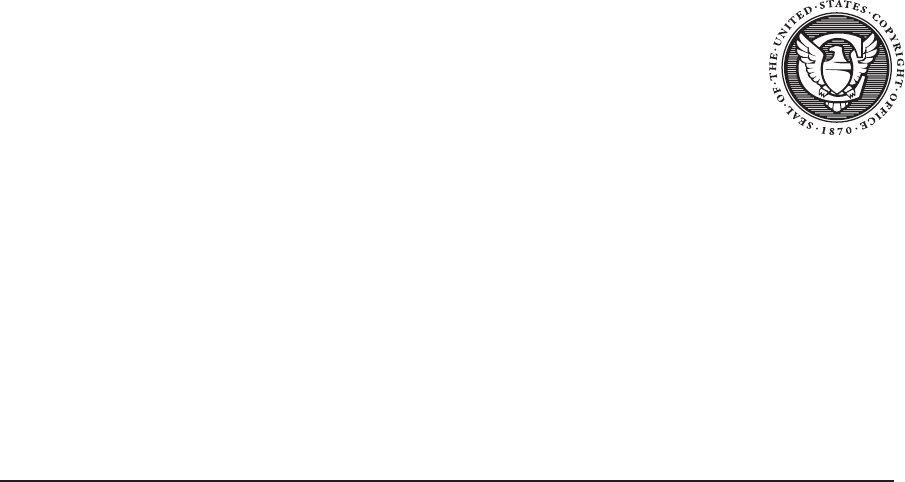
section 512 of title 17
a report of the register of copyrights may 2020
united states copyright office

U.S. Copyright Office Section 512 Report
ACKNOWLEDGEMENTS
The publication of this Report is the final output of several years of effort by the Copyright
Office to assist Congress with evaluating ways to update the Copyright Act for the 21st century.
The genesis of this Report occurred in the midst of the two years of copyright review hearings
held by the House Judiciary Committee that spanned the 113th and 114th Congresses. At the
twentieth and final hearing in April 2015, the Copyright Office proposed several policy studies to
aid Congress in its further review of the Copyright Act. Two studies already underway at the
time were completed after the hearings: Orphan Works and Mass Digitization (2015), which the
Office later supplemented with a letter to Congress on the “Mass Digitization Pilot Program”
(2017), and The Making Available Right in the United States (2016). Additional studies proposed
during the final hearing that were subsequently issued by the Office included: the discussion
document Section 108 of Title 17 (2017), Section 1201 of Title 17 (2017), and Authors, Attribution, and
Integrity: Examining Moral Rights in the United States (2019). The Office also evaluated how the
current copyright system works for visual artists, which resulted in the letter to Congress titled
“Copyright and Visual Works: The Legal Landscape of Opportunities and Challenges” (2019).
Shortly after the hearings ended, two Senators requested a review of the role of copyright law in
everyday consumer products and the Office subsequently published a report, Software-Enabled
Computer Products (2016). Finally, two of our prior studies that were highlighted at that April
2015 hearing, Copyright Small Claims (2013) and Copyright and the Music Marketplace (2015), turned
into legislative opportunities, with the 2018 passage of the Orrin G. Hatch-Bob Goodlatte Music
Modernization Act (MMA), and the 2019 passage by the House of Representatives of the
Copyright Alternative in Small-Claims Enforcement Act (CASE Act).
This Report on section 512 is the final study to emerge from that set of congressional
hearings. It is also the first comprehensive study issued by a U.S. government agency on the
operation of section 512. Complex issues are involved: the operation of copyright liability in the
online environment has tremendous legal, social, economic, and technological implications.
Courts have been issuing decisions on various elements of section 512 for two decades. Changes
in technology and business models used to create and disseminate copyrighted materials
continues to grow in ways that could not have been imagined in 1998 when the Digital
Millennium Copyright Act was passed. It should surprise no one that this issue and this docket
have generated considerable public interest. I would like to thank the many individuals and
organizations who participated in roundtables and provided comments and empirical studies to
aid the Office in this process. This Report is the culmination of years of work; we have looked at
the past, evaluated the present, and identified important issues, themes, and consideration for
next steps.
The laboring oar on this Report has been wielded by the legal staff of the Office of Policy
and International Affairs, who helped write the very first Federal Register notice, attended all of
the roundtables, reviewed the record, developed its structure, researched the issues and identified
paths forward, and wrote the bulk of this Report. This endeavor has involved many discussions
U.S. Copyright Office Section 512 Report
with, and has benefited greatly from, colleagues throughout the Office. The input and assistance
of the Office of General Counsel, in particular, helped to guide and structure this Study, including
through their participation in all of the roundtables and work on Federal Register notices and
early drafts of the Report. Indeed, this Report represents the contributions of numerous current
colleagues as well as those who have since left the office, including: senior leaders, staff
attorneys, Ringer Program Fellows, law clerks serving in both Policy and International Affairs
and the Office of General Counsel, as well as support assistants and production designers.
To be certain, this Report, like all of the reports, studies, and legal opinions issued by the
Copyright Office, is the work of the Copyright Office. For more than half of the time this docket
was open, the Copyright Office has been led by an Acting Register of Copyrights. That fact does
not change the nature of any document issued by the Office. We are driven by our commitment
to provide expert legal advice to Congress on domestic and international copyright matters. 17
U.S.C. § 701(b)(1).
It is an honor to work with our team of professionals dedicated to public service. Given
the current COVID-19 challenges, they have done a spectacular job to complete and produce this
Report. While we will not be able to distribute print versions to Congress at this time, this
Report, as with our prior reports, will be posted online at www.copyright.gov/policy/section512/.
Maria Strong
Acting Register of Copyrights and Director,
U.S. Copyright Office
May 21, 2020

U.S. Copyright Office Section 512 Report
EXECUTIVE SUMMARY ............................................................................................................................. 1
I. INTRODUCTION AND STUDY HISTORY ........................................................................................ 8
II. HISTORY AND DEVELOPMENT OF SECTION 512 ..................................................................... 13
A. Pre-DMCA Legal and Policy Landscape .................................................................................... 13
B. Congress Sought to Achieve a Balance with the DMCA .......................................................... 18
C. General Overview of Section 512 ................................................................................................. 21
1. Secondary Liability .................................................................................................................. 21
2. OSPs and Safe Harbors ........................................................................................................... 23
3. Limitations on Relief and Eligibility for Safe Harbors ....................................................... 24
4. Notice-and-Takedown Process .............................................................................................. 25
a) Takedown Notice .............................................................................................................. 25
b) Knowledge and Financial Benefit ................................................................................... 26
5. Counter-Notification ............................................................................................................... 27
III. POST-DMCA CHANGES TO THE ONLINE ECOSYSTEM .......................................................... 27
A. Technological Changes Since the 1990s Have Changed the Landscape
in which Section 512 Operates ...................................................................................................... 27
B. Past Efforts to Address Changes to the Online Landscape ...................................................... 35
1. Voluntary Agreements Adopted by the Marketplace ........................................................ 35
a) Examples of Best Practices ............................................................................................... 36
b) Examples of Formal Agreements .................................................................................... 39
2. Private Initiatives ..................................................................................................................... 42
a) Educational Outreach about Access to Legal Content ................................................. 42
b) Filtering ............................................................................................................................... 42
c) Trusted Notifier Programs ............................................................................................... 46
3. Government Inquiries and Reports....................................................................................... 47
a) Intellectual Property Enforcement Coordinator ........................................................... 47
b) Internet Policy Task Force ................................................................................................ 49
IV. HOW OTHER COUNTRIES HAVE TRIED TO STRIKE THE BALANCE................................... 50
A. Notice Systems ................................................................................................................................ 52
1. Notice-and-Notice.................................................................................................................... 52
2. Graduated Response ............................................................................................................... 53
3. Notice-and-Staydown ............................................................................................................. 54
B. Verified Systems ............................................................................................................................. 55
1. Third-Party................................................................................................................................ 55
2. Government Agency................................................................................................................ 56
3. Inter-Governmental Commission .......................................................................................... 57
C. Blocking .......................................................................................................................................... 58
1. Examples of Blocking Actions ................................................................................................ 59
a) UK’s 97A Actions .............................................................................................................. 60

U.S. Copyright Office Section 512 Report
b) Australia’s Court-Ordered Blocking ............................................................................... 60
c) India’s Site Blocking .......................................................................................................... 61
D. European Union Digital Single Market Copyright Directive .................................................. 61
V. HIGH-LEVEL FINDINGS AND GUIDING PRINCIPLES ............................................................. 64
A. Guiding Principles for the Study ................................................................................................. 64
1. Copyright Protection Online Must be Meaningful and Effective ..................................... 64
2. OSPs Operating in Good Faith Must be Afforded Legal Certainty
and Leeway to Innovate .......................................................................................................... 65
3. Congress Intended to Incentivize Cooperation Between OSPs
and Rightsholders, but Cooperation Cannot be the Only Answer .................................. 66
4. To the Extent Possible, Government Decision-Making Should be
Based on Evidence ................................................................................................................... 68
5. Internet Policy in the 21st Century Cannot be One-Size-Fits-All ..................................... 71
B. The Notice-and-Takedown System as Experienced by Parties Today
is Unbalanced .................................................................................................................................. 72
1. Many OSPs Report that Section 512 is a Success Story ...................................................... 73
2. Creators and Rightsowners Report that Section 512 Currently Fails
to Protect them from Online Infringement .......................................................................... 77
3. This Disconnect is Evidence that the Current System is not Working
Consistently for all Stakeholders ........................................................................................... 83
VI. SPECIFIC FINDINGS AND RECOMMENDATIONS ..................................................................... 83
A. Evaluation of the Existing Section 512 Statutory Scheme ........................................................ 83
1. Qualification for the Section 512 Safe Harbors .................................................................... 84
a) Eligible Categories of OSPs.............................................................................................. 86
i. Section 512(c) Safe Harbor ......................................................................................... 87
ii. Section 512(a) Safe Harbor......................................................................................... 90
iii. Section 512(b) and (d) Safe Harbors ......................................................................... 92
b) OSP Obligations: Repeat Infringer Policies .................................................................. 95
i. “Repeat Infringer” .................................................................................................... 100
ii. Adoption of a Policy Requiring Termination in
Appropriate Circumstances .................................................................................... 103
iii. Reasonable Implementation .................................................................................... 106
c) Safe Harbor Exclusions: Knowledge Requirements
and Financial Benefit ...................................................................................................... 110
i. Knowledge Requirements ....................................................................................... 111
(a) Actual Knowledge vs. Red Flag Knowledge ................................................. 113
(b) Willful Blindness ................................................................................................ 124
ii. Financial Benefit/Right and Ability to Control ..................................................... 128
2. Notice-and-Takedown Process ............................................................................................ 136
a) Notice Requirements ...................................................................................................... 138

U.S. Copyright Office Section 512 Report
b) Representative List and Identifiable Location ............................................................ 139
c) Knowing Misrepresentation .......................................................................................... 145
d) Fair Use ............................................................................................................................. 150
e) Extra-Section 512 Processes and Requirements .......................................................... 152
f) Timeframes in Notice-and-Takedown Process ........................................................... 159
3. Other Section 512 Statutory Provisions .............................................................................. 163
a) Subpoenas ........................................................................................................................ 163
b) Injunctions ........................................................................................................................ 167
B. Non-Statutory Approaches to Mitigating Section 512 Limitations ....................................... 171
1. Education ................................................................................................................................ 171
2. Voluntary Measures .............................................................................................................. 173
3. Standard Technical Measures .............................................................................................. 176
a) Fingerprinting and Filtering Technologies .................................................................. 177
b) Principles for Developing STMs ................................................................................... 178
c) Recommendations for STMs .......................................................................................... 179
C. Alternative Stakeholder Proposals ............................................................................................ 180
1. Creation of an Alternative Statutory Method for Adjudication
of Online Infringement Claims ............................................................................................ 181
2. Adoption of International Approaches .............................................................................. 182
a) Notice-and-Staydown ..................................................................................................... 186
b) Website Blocking ............................................................................................................. 193
3. Legislation Targeting Third-Party Providers ..................................................................... 196
VII. CONCLUSION .................................................................................................................................. 197

U.S. Copyright Office Section 512 Report
1
EXECUTIVE SUMMARY
Since its establishment in 1998, as part of the Digital Millennium Copyright Act
(“DMCA”), section 512 of title 17 has both provided critical guideposts for the expansion of the
internet and produced widespread disagreement over its operation. This Report is the first full
analysis of whether section 512 is working effectively in achieving its aim of balancing the needs
of online service providers (“OSPs”)
1
with those of creators.
In enacting section 512, Congress sought to create a balance between two goals. One is
providing important legal certainty for OSPs, so that the internet ecosystem can flourish without
the threat of the potentially devastating economic impact of liability for copyright infringement as
a result of their users’ activity. The other is protecting the legitimate interests of authors and
other rightsholders against the threat of rampant, low-barrier online infringement. Congress
balanced these interests through a system where OSPs can enjoy limitations on copyright
liability—known as “safe harbors”—in exchange for meeting certain conditions, while giving
rightsholders an expeditious and extra-judicial method for addressing infringement of their
works. Thus, for some types of OSPs, their safe harbors are conditioned on taking down
infringing content expeditiously upon notification by a rightsholder.
In the twenty-plus years since section 512 went into effect, the question has often been
asked whether the balance that Congress sought has been achieved, particularly in the light of the
enormous changes that the internet has undergone. Indeed, that is the question that motivated
the Study that led to the present Report. Pursuant to a request from the then-Ranking Member of
the House Committee on the Judiciary in 2015, the Copyright Office undertook a multi-year
Study resulting in two notices of inquiry, tens of thousands of written responses, nine empirical
studies, and public roundtables in New York, San Francisco, and Washington, DC.
Through these efforts, the Office received dramatically varied opinions on whether section
512’s intended balance has been achieved. Roughly speaking, many OSPs spoke of section 512 as
being a success, enabling them to grow exponentially and serve the public without facing
debilitating lawsuits. Rightsholders reported a markedly different perspective, noting grave
concerns with the ability of individual creators to meaningfully use the section 512 system to
address copyright infringement and the “whack-a-mole” problem of infringing content re-
appearing after being taken down. Based upon its own analysis of the present effectiveness of
section 512, the Office has concluded that Congress’ original intended balance has been tilted
askew.
1
While the Office is aware that many stakeholders and members of the public use the terms online service provider
(“OSP”) and internet service provider (“ISP”) interchangeably, given the statutory differences between how section 512
treats mere conduit service providers (those that fall under section 512(a)) and other types of online service providers,
the Office believes that there is a benefit to easily differentiating mere conduits from other types of online service
providers. For this reason, the Office uses “ISP” herein to refer solely to mere conduit service providers under section
512(a), and uses “OSP” to refer to all online service providers covered by section 512, including mere conduits.

U.S. Copyright Office Section 512 Report
2
One of the Office’s goals in conducting this Study was to make recommendations for how
Congress might amend the statute if the initial balance was no longer working for all concerned
parties.
2
A summary of the Office’s conclusions and recommendations appears below, but first
the guiding principles followed by the Office in conducting the Study and making its
recommendations bear mentioning. First, copyright protection online must be meaningful and
effective, so that rightsholders can appropriately enforce their rights when they are infringed.
Second, OSPs operating in good faith must be afforded legal certainty and leeway to innovate, for
the benefit of not only their shareholders, but the public and the content industry as well. Third,
while Congress intended to incentivize cooperation between OSPs and rightsholders, cooperation
cannot be the only answer; voluntary initiatives certainly have their place, but experience shows
that they are no substitute for balanced legislation. Fourth, whenever possible, government
decision-making should be based on facts. But because much of the data underlying the (largely
private) operation of the section 512 system remains inaccessible, this limits the ability of
policymakers to consider such data in order to inform and develop solutions. Fifth, and finally,
internet policy in the 21st century cannot be one-size-fits-all. Policymakers must address
differences within and among stakeholder classes.
With the above guiding principles in mind, the Copyright Office makes the following
conclusions and recommendations, in twelve areas:
• Eligible Types of OSPs. Congress intended the four categories of OSPs to be quite
broad, in order to accommodate new, unforeseen technologies. It appears that courts
have generally construed the categories of safe harbors in harmony with Congress’
original intent. The Office notes, however, that the current contours of the section
512(c) safe harbor are in tension with the original balance Congress sought to achieve.
Specifically, the section 512(c) safe harbor shields an OSP from liability for monetary
relief “for infringement of copyright by reason of the storage at the direction of a user
of material that resides on a system or network controlled or operated by or for the
service provider.”
3
As currently interpreted, “by reason of the storage” has been
expanded to cover many activities “related to” hosting in a manner that Congress did
not likely anticipate. Other eligibility questions have arisen that Congress may want
to clarify, including the amount of time that qualifies as “temporary” for the section
512(b) safe harbor, and whether technology services beyond providing internet
infrastructure—such and peer-to-peer (“P2P”) systems and payment processors—
should appropriately be included under section 512(a).
• Repeat Infringer Policies. While there is significant disagreement among stakeholders
regarding the meaning of “repeat infringer,” the Fourth Circuit has held that a “repeat
infringer” under section 512 means repeat alleged infringer, not repeat adjudicated
2
Note that in this Report the Office has limited itself to consideration of the existing section 512 system. The Office
does not address larger questions regarding the appropriate liability scheme for OSPs.
3
17 U.S.C. § 512(c)(1).

U.S. Copyright Office Section 512 Report
3
infringer. This Report identifies two other aspects of section 512’s repeat infringer
requirements for OSPs that Congress may want to monitor and potentially address.
First, in order to qualify for a safe harbor, an OSP must have “adopted and reasonably
implemented . . . a policy that provides for the termination in appropriate
circumstances of subscribers and account holders of the service provider’s system or
network who are repeat infringers.”
4
As currently interpreted, OSPs may be found in
compliance if they adopt and reasonably implement an unwritten policy, the specifics
of which are never shared with the OSP’s users. In the Office’s view, such unwritten
and uncommunicated policies are unlikely to have the deterrent effect on infringing
conduct that Congress initially intended. Given the broad scope of the safe harbors,
having a clear, documented, and publicly available repeat infringer policy seems like
the appropriate minimum requirement in order to comply with the statute, as well as
to act as a deterrent to infringement. Second, Congress may wish to consider whether
it is advisable to provide further legislative guidance on what constitutes “appropriate
circumstances” for termination of a user’s account based upon repeated acts of
infringement, and whether such circumstances can ever arise in the absence of a
formal takedown notice from a rightsholder.
• Knowledge Requirements for OSPs. This Report identifies three areas where current
interpretations of the section 512 knowledge requirements for OSPs may be narrower
than Congress initially intended.
o First is the question of “actual knowledge” vs. “red flag knowledge,” which drew a
notably large number of comments during the Study. The statute requires that, in
order to qualify for the section 512(c) or (d) safe harbors, an OSP must both lack
actual knowledge that material or activity on its service is infringing, and “not [be]
aware of facts or circumstances from which infringing activity is apparent,” which
is known as red flag knowledge.
5
The Office believes that this question, in
particular, could benefit from Congressional attention to reiterate or clarify the
distinction between actual and red flag knowledge. Relatedly, the Office notes that
courts have struggled to articulate the appropriate relationship between section
512(m)’s intent to avoid the imposition of a duty to monitor on OSPs, with section
512(c) and (d)’s knowledge requirements. A fuller articulation of the intended
balance between this provision and other provisions in section 512 would be
valuable for stakeholders and courts. The Office further notes that the knowledge
requirements could benefit from statutory language that incorporates a
reasonableness standard to explicitly take into account differences among OSPs.
4
17 U.S.C. § 512(i)(1)(A).
5
17 U.S.C. §§ 512(c), (d).

U.S. Copyright Office Section 512 Report
4
o The second knowledge requirement issue the Office considered is that of the
application of the “willful blindness standard.” This is a common law doctrine
that asks whether an OSP deliberately blinded itself to knowledge of infringing
activity by its users. If an OSP is found to have engaged in willful blindness, it will
be charged with the equivalent of actual knowledge and lose its safe harbor. The
Copyright Office notes that courts have adopted a standard for willful blindness
that is modified from the traditional common law standard and requires that the
willful blindness involve deliberate avoidance of specific incidences of
infringement, rather than avoidance of acts of infringement generally. While
courts have reached this conclusion in an effort to reconcile the doctrine with
section 512(m), the result may be in some tension with what appears to be
Congress’ original intent. The Office believes that section 512 could benefit from
Congressional action to further clarify the intended scope of willful blindness and
interaction between this doctrine and section 512(m).
o The third knowledge requirement issue the Office reviewed concerns the common
law vicarious liability standard, which was imported into the DMCA through
section 512(c)(1)(B)’s provision that hosting OSPs are not liable “for infringement
of copyright by reason of the storage at the direction of a user . . . if the service
provider . . . does not receive a financial benefit directly attributable to the
infringing activity, in a case in which the service provider has the right and ability
to control such activity.”
6
Currently, courts require a showing of “something more
than the ability to remove or block access to [infringing] materials.”
7
While the
Office does not favor a significant tightening of this standard, Congress may want
to evaluate if current interpretations are in line with the intended balance.
• Representative List and Identification of Location. In sending a compliant takedown
notice, a rightsholder must identify the work allegedly infringed, “or, if multiple
copyrighted works at a single online site are covered by a single notification, a
representative list of such works at that site.”
8
The rightsholder must also include
“information reasonably sufficient to permit the service provider to locate” the
infringing material.
9
This statutory language is ambiguous, with the result that it is
often difficult for courts to ascribe separate meaning to these two requirements. For
this reason, Congress may want to consider providing additional statutory clarity.
Similarly, the Office notes that there is a tension between Congress’ apparent intent
behind the “information reasonably sufficient . . . to locate” provision and the degree
6
17 U.S.C. § 512(c)(1)(B).
7
Viacom Int’l, Inc. v. YouTube, Inc., 676 F.3d 19, 38 (2d Cir. 2012).
8
17 U.S.C. § 512(c)(3)(A)(ii).
9
17 U.S.C. § 512(c)(3)(A)(iii).

U.S. Copyright Office Section 512 Report
5
of specificity that many OSPs and some courts require. The Office concludes that
Congress may wish to consider whether the “information reasonably sufficient . . . to
locate” provision is appropriately interpreted as requiring that a rightsholder must
submit a unique, file-specific URL for every instance of infringing material on an
OSP’s service.
• Knowing Misrepresentation and Abusive Notices or Counter-Notices. Senders of both
takedown notices and counter-notices are liable for damages if they make knowing
material misrepresentations regarding whether the material to be taken down is
infringing, or has been removed or disabled by mistake or misidentification.
10
Courts
have appropriately interpreted this provision by requiring actual knowledge or willful
blindness of falsity, not merely negligent or unreasonable misrepresentation. The
Office notes, however, that many stakeholders called for increased penalties for
misrepresentations to serve a deterrent effect.
• Knowing Misrepresentation and Fair Use. The Copyright Office questions the test for
knowing misrepresentation under section 512(f) adopted by the Lenz court, which had
the effect of imputing the good faith requirement in section 512(c)(3) for notice sending
into the analysis of section 512(f)’s knowing misrepresentation requirement.
11
Such an
analysis could result in placing potential liability on rightsholders who fail to
undertake a fair use inquiry before sending a takedown notes, without regard to
whether or not the material is actually infringing. The Office suggests that Congress
monitor the impact of Lenz, and consider any clarifying statutory language that may
be necessary.
• Standard & Non-standard Notice Requirements. Based on the information obtained
during the course of the Study, the Copyright Office notes that the mechanisms for
submission of takedown notices, adopted in recent years by many of the larger OSPs,
are no longer in sync with the notice requirements set forth in section 512(c). The
proliferation of new web-based submission forms and OSP-imposed requirements for
substantiation of takedown notices in order to ensure the efficiency of the process has
had the effect of increasing the time and effort that smaller rightsholders must expend
to send takedown notices. At the same time, some of the current notification standards
set forth in section 512(c) could be on their way to becoming obsolete. The Copyright
Office therefore recommends that Congress consider shifting the required minimum
notice standards for a takedown notice to a regulatory process, enabling the Copyright
Office to set more flexible rules and “future-proof” the statute against changing
communications methods.
10
17 U.S.C. § 512(f).
11
See Lenz v. Universal Music Corp., 801 F.3d 1126, 1154 (9th Cir. 2015).

U.S. Copyright Office Section 512 Report
6
• Time Frames Under Section 512. The statutory requirement that OSPs “expeditiously”
remove or disable access to infringing material upon becoming aware of it has been
interpreted by the courts using a flexible approach that takes into consideration the
varying circumstances of each case. The Copyright Office largely agrees that such
flexibility is needed. In contrast, the Office notes that the current statutory timeframes
to resume providing access to content following receipt of a counter-notice currently
ill serves both users and rightsholders given current business models and the realities
of federal litigation. Ten to fourteen days is both too long for legitimate speech to be
blocked, and too short for a rightsholder to realistically prepare and file a federal
lawsuit to prevent the return of infringing materials. For this reason, Congress may
want to look into an alternative dispute resolution model to address these questions
instead.
• Subpoenas. Section 512(h) permits a rightsholder to subpoena an OSP to identify an
alleged infringer. However, this provision has proven to be little-used by
rightsholders, in part because of how restrictively courts have interpreted it and in
part because the information gleaned from such subpoenas is often of little use.
Additionally, section 512(h) is ambiguous as to whether it applies to mere conduit
ISPs, who may be the only source of information regarding the identity of users
engaged in activities like P2P filesharing. Hence, the Office recommends that
Congress consider clarifying the language of section 512(h).
• Injunctions. Section 512, while it bars monetary relief against OSPs, does allow limited
forms of injunctive relief, specified under section 512(j). Courts, however, have largely
interpreted the section 512(j) forms of injunctive relief in a way that is largely co-
extensive with the notice-and-takedown system. While the Office believes such a
reading is narrower than Congress may have intended and that several forms of
section 512(j) injunctive relief remain available after a takedown, the Office does not
believe that the issue currently requires Congressional intervention. However, if
Congress believes that the range of injunctive relief available to rightsholders should
be broader than it currently is in practice, it may want clarify the distinction between
notice-and-takedown relief and section 512(j) injunctive relief.
• Non-statutory Approaches. In addition to the foregoing list of approaches that
Congress may wish to consider, the Copyright Office notes that there is untapped
potential for additional approaches that would not require congressional intervention.
Accordingly, the Office plans to prepare and launch educational materials to inform
all participants in the section 512 system of their rights and responsibilities, and
encourages stakeholders to participate. In addition, the Office will look into ways to
facilitate additional voluntary initiatives to address online infringement, as well as to
help identify standard technical measures that can be adopted in certain sectors.

U.S. Copyright Office Section 512 Report
7
• Alternative Stakeholder Proposals: This Report includes illustrative information on
developments involving online intermediary liability in other countries. It also
identifies several proposals submitted by commenters on new approaches that the
Office sees as going beyond the original construct of the DMCA. For those issues—
specifically notice-and-staydown and website blocking—the Office believes that
additional study, including of potential non-copyright implications, with public input,
would be needed in order to explore the possible contours of any such future
proposals.
The Office is not recommending any wholesale changes to section 512, instead electing to
point out where Congress may wish to fine-tune section 512’s current operation in order to better
balance the rights and responsibilities of OSPs and rightsholders in the creative industries.
Should Congress choose to continue to support the balance it devised the DMCA and move
forward on the issues identified in this Report, then the Office harbors some optimism that a path
toward rebuilding the section 512 balance could be found.
Finally, the Office is also mindful that the opportunities and challenges faced by everyone
in the online environment—creators (large, medium, and small), OSPs (large, medium, and
small), and users (of all sizes and in many sectors) —are very different today than in 1998.
Congress also could choose to reevaluate how it perceives any balancing factors in the current
environment, as well as other measures that would go beyond the current constructs of section
512. Those kinds of legislative decisions are in the hands of Congress and the Office makes no
recommendations with respect to such larger questions about possible future balancing
approaches. The Copyright Office stands ready to continue its work to provide additional advice
to Congress.

U.S. Copyright Office Section 512 Report
8
I. INTRODUCTION AND STUDY HISTORY
Enacted in 1998 as part of the Digital Millennium Copyright Act (“DMCA”),
12
section 512
of title 17 sought to address the increasing conflict between two economically important
industries precipitated by the growth of the commercial internet in the 1990s. Traditional content
industries faced what many came to view as an existential threat, from the convergence of newly
dominant and near-lossless digital media formats with a world-wide, interconnected network
that facilitated the distribution of digital files of any type.
13
At the same time, the nascent internet
service industry faced potentially crippling liability for acts of infringement committed by their
users as a result of the strict nature of copyright infringement liability.
14
Congress recognized that
such fears could dissuade investment in internet technologies and services just as the vast
potential of such innovations was becoming widely apparent.
15
Accordingly, Congress crafted
section 512 with a dual purpose: (1) to enable copyright owners to effectively address the
infringement of their works online and (2) to facilitate the development of internet-based
platforms by clarifying the obligations and limiting the liability of OSPs with respect to
infringement committed by third-party users of their systems.
16
In exchange for cooperating with
copyright owners to expeditiously remove infringing content, OSPs received a series of
limitations on copyright liability under section 512—referred to as “safe harbors”—so long as
they met certain conditions.
Section 512 contains four separate safe harbors, each of which has its own set of eligibility
requirements.
17
All OSPs must adopt and reasonably implement “a policy that provides for the
termination in appropriate circumstances of subscribers and account holders of the service
provider’s system or network who are repeat infringers,” and accommodate and not interfere
with the use of standard technical measures by copyright owners to identify or protect their
12
Pub. L. No. 105-304, 112 Stat. 2860 (1998).
13
See, e.g., John Naughton, Farewell Then, iTunes, and Thanks for Saving the Music Industry from Itself, GUARDIAN (Jun. 9,
2019), https://www.theguardian.com/commentisfree/2019/jun/09/farewell-itunes-thanks-for-saving-music-industry-
from-itself (after the shutdown of Napster in 2001, “[d]ozens of filesharing systems had come into being and the record
business found itself facing an existential threat”); Anne Eisenberg, What’s Next: Legal Squabbles in Path of Internet, N.Y.
TIMES (Dec. 9, 1999), https://www.nytimes.com/1999/12/09/technology/what-s-next-legal-squabbles-in-path-of-
internet.html; Jon Pareles, The Media Business: Industry Plan Is Aimed at Selling Music Over the Internet, N.Y. TIMES (Dec.
16, 1998), https://www.nytimes.com/1998/12/16/business/the-media-business-industry-plan-is-aimed-at-selling-music-
over-the-internet.html.
14
See, e.g., Religious Tech. Ctr. v. Netcom On-Line Commc’n Servs., Inc., 907 F. Supp. 1361 (N.D. Cal. 1995) (“Netcom”); Sega
Enters. Ltd. v. MAPHIA, 948 F. Supp. 923 (N.D. Cal. 1996); Playboy Enters., Inc. v. Frena, 839 F. Supp. 1552 (M.D. Fla. 1993)
(“Frena”).
15
See The Copyright Infringement Liability of Online and Internet Service Providers: Hearing Before the S. Comm. on the
Judiciary, 105th Cong. 2 (1997) (statement of Chairman Sen. Orrin G. Hatch) (“In the past few years alone, the Internet
has more than tripled in size . . . . Do we want this growth to be retarded by a series of adverse court rulings or because
content providers are reluctant to make full use of the Internet?”) (“Senate Copyright Infringement Liability Hearing”).
16
See S. REP. NO. 105-190, at 40 (1998); H.R. REP. NO. 105-551, pt. 2, at 49–50 (1998).
17
17 U.S.C. §§ 512(a)–(d).

U.S. Copyright Office Section 512 Report
9
works.
18
In addition, most OSPs must also maintain a “notice-and-takedown” process whereby
the OSP responds expeditiously to remove or disable access to material claimed to be infringing
upon receipt of a proper notice from a copyright owner.
19
An OSP that meets the eligibility
criteria under one of the safe harbors is not liable for monetary relief resulting from copyright
infringement committed by its users and is subject to only limited injunctive relief.
20
Through this
system, Congress aimed to create incentives for OSPs and copyright owners to address online
infringement cooperatively and efficiently, outside the context of costly and protracted federal
court litigation, while encouraging the further development of the internet.
21
Over the past two decades, as the internet has transformed virtually every facet of the
copyright ecosystem, section 512 of title 17 has provided the critically important legal rules that
govern the rights and responsibilities of stakeholders in the online environment. Partially as a
result of this, the internet of today looks dramatically different from that of 1998, when the
DMCA was enacted. With those changes has come widespread debate over section 512’s
continued effectiveness at meeting its underlying goals in the twenty-first century. On the one
hand, the explosive growth in the number and variety of online services, both within and outside
of traditional copyright industries, is powerful evidence that the statute has succeeded in creating
legal conditions under which an innovative digital marketplace can thrive. These developments
have done much to advance the goals of the copyright system: authors have new tools with
which to produce original works and to reach wide audiences; creative industries have built a
host of groundbreaking distribution and licensing models; and consumers, researchers,
educators, and others can access more copyrighted content, through a greater number of lawful
channels, than at any other time in history.
22
On the other hand, there are substantial questions over whether the current statutory
framework is adequate to address the sheer volume of copyrighted material online, some of it
unauthorized. Today, internet users post hundreds of millions of authorized and unauthorized
photos, videos, sound recordings, and other works on a daily basis. In 2015, YouTube alone had
18
17 U.S.C. § 512(i).
19
17 U.S.C. §§ 512(b)–(d).
20
17 U.S.C. §§ 512(b)–(d), (j).
21
See S. REP. NO. 105-190, at 20 (1998); H.R. REP. NO. 105-551, pt. 2 at 49–50 (1998).
22
See, e.g. Electronic Frontier Foundation (“EFF”), Comments Submitted in Response to U.S. Copyright Office’s Dec. 31,
2015, Notice of Inquiry at 4 (Apr. 1, 2016) (“EFF Initial Comments”) (“The Internet has become the most revolutionary
platform for the creation and dissemination of speech that the world has ever known. Interactive platforms like video
hosting services and social networking sites have become vital not only to democratic participation but also to the
ability of users to forge communicates, access information instantly, and discuss issues of public and private concern.”);
Organization for Transformative Works (“OTW”), Comments Submitted in Response to U.S. Copyright Office’s Dec.
31, 2015, Notice of Inquiry at 2 (Apr. 1, 2016) (“OTW Initial Comments”) (“There are many predicates for successful
markets, but § 512 is one of them because it has helped many new services thrive and compete, allowing both service
providers and copyright owners—large and small—to experiment with various ways of finding their audiences.”).

U.S. Copyright Office Section 512 Report
10
almost 400 hundred hours of video uploaded every minute,
23
and by May 2019, that figure was
up to 500 hours.
24
As online activity and third party uses of creators’ content have increased, so
too has the pressure on the notice-and-takedown system’s ability to serve the needs of all
stakeholders. Many of the larger rightsholders have come to rely on automated processes to
search for unauthorized material and generate takedown notices on a mass scale unimagined by
Congress in 1998, but these stakeholders still express continued concerns regarding the impact of
infringement on their bottom lines.
25
Similarly, while many of the larger internet platforms have
augmented or sidestepped use of traditional notice-and-takedown processes by either licensing
content or by building bespoke systems allowing large copyright owners to identify and manage
instances of their content on the platform’s system,
26
discussions of these efforts are often bundled
with discussions about the time and resources required to create and manage these
interventions.
27
In contrast, smaller creators report devoting significant time and resources to
23
See Industry Keynote with YouTube CEO Susan Wojcicki (VidCon 2015), YOUTUBE 10:48–57 (Sept. 29, 2015),
https://www.youtube.com/watch?v=O6JPxCBlBh8; see also Sirena Bergman, We Spend a Billion Hours a Day on YouTube,
More Than Netflix and Facebook Video Combined, FORBES, (Feb. 28, 2017),
https://www.forbes.com/sites/sirenabergman/2017/02/28/we-spend-a-billion-hours-a-day-on-youtube-more-than-
netflix-and-facebook-video-combined/.
24
J. Clement, Hours of Video Uploaded to YouTube Every Minute 2007–2019, STATISTA (Aug. 9, 2019),
https://www.statista.com/statistics/259477/hours-of-video-uploaded-to-youtube-every-minute/.
25
See, e.g., Association of American Publishers (“AAP”), Comments Submitted in Response to U.S. Copyright Office’s
Dec. 31, 2015, Notice of Inquiry at 6 (Apr. 1, 2016) (“AAP Initial Comments”) (“Rights holders send millions of
notifications, yet these collectively have had little impact toward reducing the volume of infringing material
available.”); Content Creators Coalition (“c3”), Comments Submitted in Response to U.S. Copyright Office’s Dec. 31,
2015, Notice of Inquiry at 4 (Apr. 1, 2016) (“c3 Initial Comments”) (“The notice and takedown system requires creators
and copyright holders to police millions of infringements. This year, Google believes they will receive over 1 billion
takedown notices. Notice and takedown today barely staunches illegal content, and music removed is uploaded again
immediately after it is taken down. This process foists huge costs on creators, yet with no effect in stopping
infringement.”); cf. Ernesto Van der Sar, Top 3 Copyright “Owners” Sent Google a Billion Takedown Requests, TORRENTFREAK
(Dec. 25, 2018), https://torrentfreak.com/top-3-copyright-owners-sent-google-a-billion-takedown-requests-181225/.
Google posts searchable statistics on takedown requests and removals, including the number of unique URLs to be
delisted, the number of copyright owners requesting removal, and the top requesting organizations. As of May 2020,
Google had received requests to remove over 4.6 trillion URLs. Three rights owners collectively requested over 1
billion removals, and the top ten rightsholders, out of over 206,000, collectively accounted for slightly over 2 billion
URL removal requests. Content Delistings Due to Copyright, GOOGLE: TRANSPARENCY REPORT,
http://transparencyreport.google.com/copyright/overview.
26
Development of these licensing and technological approaches to online infringement did not arise in a vacuum, or
even solely from the incentives built into section 512, however. Introduction of YouTube’s Content ID system in 2007
came amid a series of lawsuits brought against the video platform by the likes of Viacom, Mediaset, the Premier
League, and others, both in the United States and abroad. See, e.g., Viacom Int’l, Inc. v. YouTube, Inc., No. 07 Civ. 2103
(S.D.N.Y. 2007), consolidated with The Football Assoc. Premier League Ltd. et al. v. YouTube, Inc., No. 07 Civ. 3582 (S.D.N.Y.
2007); RTI Reti Televisive Italiane SpA vs. YouTube LLC, (Tribunale Ordinario di Roma, 16 dicembre 2009) (It.).
27
Copyright Alliance, Comments Submitted in Response to U.S. Copyright Office’s Dec. 31, 2015, Notice of Inquiry at 9
(Apr. 1, 2016) (“Copyright Alliance Initial Comments”) (“Individual creators who file notices lack the resources of
larger copyright owners to make a meaningful impact. Eighty-five percent of those we surveyed said they issue
takedown notices all by themselves, taking time away from their creative pursuits, which pushes many to give up

U.S. Copyright Office Section 512 Report
11
identifying instances of their content online and sending takedown notices, to little effect,
28
while
some smaller OSPs express concern about facing an increasing amount of takedown notices
without the benefit of the technological resources deployed by the largest incumbents.
29
Without
the technological or administrative support available to the larger rightsholders and OSPs, some
smaller creators and OSPs struggle to operate within the current section 512 framework, which,
coincidently or not, they did not have the opportunity to shape.
30
Meanwhile, some observers
worry that the system’s growth and increasing reliance on automation may render it more
susceptible to errors and abuses that chill lawful online speech.
31
In light of these and related concerns, the House Committee on the Judiciary held a
hearing on section 512 in March 2014, featuring stakeholders representing rightsholders, OSPs,
enforcement efforts all together.”); Warner Music Group (“WMG”), Comments Submitted in Response to U.S.
Copyright Office’s Dec. 31, 2015, Notice of Inquiry at 8 (Apr. 1, 2016) (“WMG Initial Comments”).
28
See, e.g., Maria Schneider, Comments Submitted in Response to U.S. Copyright Office’s Dec. 31, 2015, Notice of
Inquiry at 5 (Apr. 1, 2016) (“Schneider Initial Comments”) (“The current takedown scheme is a constant whack-a-mole
game.”); Tr. at 15:7–10 (May 2, 2016) (Lisa Hammer, independent film director) (“That’s taking up a lot of my time,
where I could be actually working on my art instead and it’s very time consuming to keep searching for all the torrents
that I now have to take down”). In particular, visual artists report that they are deeply concerned about online
infringement due to the widespread confusion among users concerning when to seek permission to use visual works
and the ease of perfectly copying and using a digital image without compensation to the owner. See Letter from Karyn
A. Temple, Acting Register of Copyrights & Dir., U.S. Copyright Office, to Lindsey Graham, Chairman, Comm. on the
Judiciary, U.S. Senate, and Dianne Feinstein, Ranking Member, Comm. on the Judiciary, U.S. Senate 15–17 (Jan. 18,
2019), https://www.copyright.gov/policy/visualworks/senate-letter.pdf; Letter from Karyn A. Temple, Acting Register
of Copyrights & Dir., U.S. Copyright Office, to Jerrold Nadler, Chairman, Comm. on the Judiciary, H.R., and Doug
Collins, Ranking Member, Comm. on the Judiciary, U.S. House of Representatives 15–17 (Jan. 18, 2019),
https://www.copyright.gov/policy/visualworks/house-letter.pdf (“Visual Works Letters”).
29
See, e.g., Engine Advocacy et al., Comments Submitted in Response to U.S. Copyright Office’s Dec. 31, 2015, Notice of
Inquiry at 6 (Apr. 1, 2016) (“Engine et al. Initial Comments”) (“[C]ompliance can be rather burdensome for startups
without vast resources given the obligations involved (e.g., expeditiously processing requests for removal of content,
establishing and implementing a reasonable repeat infringer policy, designating and registering an agent to receive
notices of infringement, etc.).”); The Internet Association, Comments Submitted in Response to U.S. Copyright Office’s
Dec. 31, 2015 Notice of Inquiry at 15 (Apr. 1, 2016) (“Internet Association Initial Comments”) (“[T]he problems of scale
are true for Internet platform creators: startups and small businesses lack the sophisticated resources of larger, more
established businesses in responding to takedown requests.”); OTW Initial Comments at 5 (“The OTW doesn’t have the
resources to double-check the work of thousands of copyright claimants if they send notices based on metadata such as
work titles.”).
30
See, e.g., Senate Copyright Infringement Liability Hearing, 105th Cong. 6 (statement of Chairman Sen. Orrin G. Hatch)
(noting that the day’s panelists “represent the major industries and interests affected by the issues we will be discussing
throughout the course of this debate”); WIPO Copyright Treaties Implementation Act; and Online Copyright Liability
Limitation Act: Before the Subcomm. on Courts & Intellectual Prop. of the H. Comm. on the Judiciary, 105th Cong. III-IV (1997)
(list of witnesses and letters/statements for the record) (“House WCT Implementation Act Hearing”).
31
See, e.g., EFF Initial Comments at 15 (“[W]e agree with many service providers that filtering technologies are an
expensive approach to policing infringement, and one that is likely to lead to collateral damage to free speech and
innovation.”); Public Knowledge, Comments Submitted in Response to U.S. Copyright Office’s Dec. 31, 2015, Notice of
Inquiry at 3 (Apr. 1, 2016) (“PK Initial Comments”) (“[T]he rise of automation on both the copyright owner and online
service provider sides of the equation raise a number of questions and concerns.”).

U.S. Copyright Office Section 512 Report
12
and the legal community.
32
The Register of Copyrights later advised the Committee in April 2015,
as part of the Committee’s comprehensive review of U.S. copyright law, that a formal study of
section 512 would be advisable to consider the statute’s current impact and effectiveness, along
with potential improvements.
33
In response, the Ranking Member of the Committee requested
that the Office undertake such a study and provide a report to the Committee.
34
The Office began this process by publishing a notice of inquiry in the Federal Register on
December 31, 2015 (“First Notice”), requesting public comment on thirty questions relating to the
general effectiveness of the safe harbors, the notice-and-takedown process, counter notifications,
legal standards, repeat infringers, standard technical measures, and remedies.
35
The Office
received more than 92,000 written responses from a wide range of parties, including rightsholders
OSPs, technology companies, libraries, legal scholars, public interest groups, and individual
members of the public.
36
The Office then held two initial public roundtables over four days in
May 2016, in New York and San Francisco, to seek further input on the topics raised in the First
Notice, as well as on other relevant issues.
37
32
Section 512 of Title 17: Hearing Before the Subcomm. on Courts, Intellectual Prop. & the Internet of the H. Comm. on the
Judiciary, 113th Cong. (2014).
33
Register’s Perspective on Copyright Review: Hearing Before the H. Comm. on the Judiciary, 114th Cong. 30 (2015) (written
statement of Maria A. Pallante, Register of Copyrights and Dir., U.S. Copyright Office) (“House Register’s Perspective
Hearing”).
34
House Register’s Perspective Hearing, 114th Cong. 49 (statement of Rep. John Conyers, Jr., Ranking Member, H. Comm.
on the Judiciary).
35
Section 512 Study: Notice and Request for Public Comment, 80 Fed. Reg. 81,862 (Dec. 31, 2015). This notice is
attached in Appendix A. The same month it launched the present Study, the Office issued Notices of Inquiry for three
additional studies: U.S. COPYRIGHT OFFICE, SOFTWARE ENABLED CONSUMER PRODUCTS (2016),
https://www.copyright.gov/policy/software/software-full-report.pdf; U.S. COPYRIGHT OFFICE, SECTION 1201 OF TITLE 17
(2017), https://www.copyright.gov/policy/1201/section-1201-full-report.pdf; mass digitization; and U.S. COPYRIGHT
OFFICE, AUTHORS, ATTRIBUTION, AND INTEGRITY: EXAMINING MORAL RIGHTS IN THE UNITED STATES (2019),
https://www.copyright.gov/policy/moralrights/.
36
The Office received over 92,000 comments in response to the first NOI. Many of these were submitted by individual
users via a comment form and template text provided by a third party. For ease of review, the Office sorted all
comments into three categories: (i) Long Form [LF], comments that were submitted as attachments and contained
unique content (less than 0.2% of comments), (ii) Short Form [SF], comments typed directly into the Regulations.gov
form that provided short statements on section 512 that were comprised of either unique content, or content where at
least 40% of the text differed from the text in the third party’s template (slightly more than 5.3% of comments), and (iii)
Template Form [TF], comments typed directly into the Regulations.gov form that largely tracked the third party
template, with less than 40% original text (more than 94.3% of comments). The comments received in response to the
First Notice are available online at https://www.regulations.gov/docketBrowser?rpp=25&so=ASC&sb=title&
po=0&dct=PS&pd=ALL-07%7C01%7C16&D=COLC-2015-0013. References to these comments are by party name
(abbreviated where appropriate) followed by “Initial Comments.”
37
Section 512 Study: Announcement of Public Roundtables, 81 Fed. Reg. 14,896 (March 18, 2016). The Federal Register
notice announcing the roundtables is attached in Appendix A. The agendas for each of the roundtables are attached in
Appendix B. Transcripts of the New York roundtables are available at https://www.copyright.gov/policy/
section512/public-roundtable/transcript_05-02-2016.pdf and https://www.copyright.gov/policy/section512/public-

U.S. Copyright Office Section 512 Report
13
On November 8, 2016, the Office published a second notice of inquiry (“Second Notice”)
requesting additional public input on sixteen questions relating to issues raised in the written
comments and during the roundtables.
38
Noting that commenters had expressed a desire for
more comprehensive empirical data in this area, the Second Notice also invited parties to submit
empirical research studies assessing the operation of the safe harbor provisions on a quantitative
or qualitative basis.
39
The Office received seventy-nine written comments and nine empirical
studies in response to the Second Notice.
40
The Copyright Office held its final roundtable meeting for the Section 512 Study on April
8, 2019, in Washington, D.C.
41
Over fifty individuals representing a variety of companies and
organizations participated in the discussion on domestic case law and international legal and
policy developments since 2017.
II. HISTORY AND DEVELOPMENT OF SECTION 512
A. Pre-DMCA Legal and Policy Landscape
In the 1990s, the rapid growth of the internet gave rise to a host of new concerns for
parties throughout the copyright system. Stakeholders recognized that the internet not only
posed unprecedented risks for the protection of creative works,
42
but also raised complex legal
questions about liability, damages, and the responsibility of third-party intermediaries.
43
Prior to
roundtable/transcript_05-03-2016.pdf. Transcripts of the San Francisco roundtables are available at
https://www.copyright.gov/policy/section512/public-roundtable/transcript_05-12-2016.pdf and
https://www.copyright.gov/policy/section512/public-roundtable/transcript_05-13-2016.pdf.
38
Section 512 Study: Request for Additional Comments, 81 Fed. Reg. 78,636 (Nov. 8, 2016).
39
Section 512 Study: Request for Additional Comments, 81 Fed. Reg. 78,636, 78,642 (Nov. 8, 2016).
40
The comments received in response to the Second Notice are available online at https://www.regulations.gov/
docketBrowser?rpp=25&so=ASC&sb=title&po=0&s=Additional%2BComments&pd=02%7C01%7C17-
03%7C17%7C17&D=COLC-2015-0013. References to these comments are by party name (abbreviated where
appropriate) followed by “Additional Comments.” The empirical studies received in response to the Second Notice are
available online at https://www.regulations.gov/docketBrowser?rpp=25&so=ASC&sb=title&po=0&s=%5BES%5D
&dct=PS&pd=03%7C23%7C17-03%7C23%7C17&D=COLC-2015-0013. References to these studies are by party name
(abbreviated where appropriate) followed by “Empirical Study.”
41
Section 512 Study: Announcement of Public Roundtable, 84 Fed. Reg. 1233 (Feb. 1, 2019). The Federal Register notice
announcing the roundtable is attached in Appendix A. Transcripts of the Washington, D.C. roundtable are available at
https://www.copyright.gov/policy/section512/public-roundtable/transcript_04-08-2019.pdf. A Glossary of acronyms
and terms used in this Report is attached in Appendix C.
42
See, e.g., Senate Copyright Infringement Liability Hearing, 105th Cong. 1–2 (statement of Chairman Sen. Orrin G. Hatch)
(stating that the internet had the potential to “recklessly facilitate infringement” and that Congress aimed to “best
combat the risk of copyright infringement facing content providers on the Internet”); Marybeth Peters, Lecture,
Copyright Enters the Public Domain, 51 J. COPYRIGHT SOC’Y. 701, 705–717 (2004) (address by Register of Copyrights); Tim
Wu, When Code Isn't Law, 89 VA. L. REV. 679, 724–726 (2003).
43
See Eric Schlachter, Cyberspace, The Free Market and the Free Marketplace of Ideas: Recognizing Legal Differences in
Computer Bulletin Board Functions, 16 HASTINGS COMM./ENT. L.J. 87, 95 (1993) (“The power of this new technology has

U.S. Copyright Office Section 512 Report
14
the internet, music infringement primarily occurred in the form of the distribution of physical
media which, when committed on a commercial scale, could be prosecuted as criminal
infringement.
44
The average consumer’s ability to reproduce music directly was limited to
recording songs from the radio or making small numbers of copies of works, as the limits of
technology at that time restricted the scale and quality of both reproduction and distribution.
45
Copyright owners were concerned, however, that the internet, combined with the smaller file
sizes enabled by the newly rediscovered MP3 format, would enable ordinary users to easily
spread unauthorized near-perfect digital copies of copyrighted works to other users across the
globe, at a pace limited only by download speeds, creating new opportunities for infringement
that were not available before the digital age.
46
At the same time, OSPs had difficulty addressing the growing issue of digital piracy,
especially with balancing the appropriate degree of oversight and control over their users’
caused some private and state actors to respond aggressively, overreacting to weak threats and inhibiting legitimate
conduct. Ambiguities arise as old law is applied to new technologies. With the inherent ambiguities of cyberspace, the
need to define its boundaries for legal purposes becomes even more critical.”).
44
See 17 U.S.C. § 506(a), as amended by No Electronic Theft Act of 1997, Pub. L. No. 105-147, 111 Stat. 2678 (1997).
45
See Robert T. Baker, Finding a Winning Strategy Against the MP3 Invasion: Supplemental Measures the Recording Industry
Must Take to Curb Online Piracy, 8 U.C.L.A. ENT. L. REV. 1, 3–4 (2000). Congress sought to address any economic threat
posed by such low-level consumer copying by levying a tax on blank media in order to compensate rightsowners for
the lost sales resulting from these reproductions, but the levy did not apply to hard drives or other digital storage
devices. See Audio Home Recording Act, Pub. L. No. 102-563, 106 Stat. 4237 (1992).
46
See NICHOLAS NEGROPONTE, BEING DIGITAL 58 (1995) (“In the digital world, not only is the ease [of copying] at issue,
but also the fact that the digital copy is as perfect as the original and, with some fancy computing, even better.”); see also
Authors Guild, Inc., Comments Submitted in Response to the U.S. Copyright Office’s Dec. 31, 2015, Notice of Inquiry at
3 (Apr. 1, 2016) (“Authors Guild Initial Comments”) (“Congress acknowledged the need for protection against digital
piracy in the Internet age, due to the ease of copying and distributing perfect copies.”); Independent Film & Television
Alliance (“IFTA”), Comments Submitted in Response to the U.S. Copyright Office’s Dec. 31, 2015, Notice of Inquiry at 2
(Apr. 1, 2016) (“IFTA Initial Comments”) (“Congress[] recogni[zed] that the same innovative advances in technology
that would expand opportunities to reproduce and disseminate content could also facilitate exponential growth in
copyright infringement.”); Senate Copyright Infringement Liability Hearing, 105th Cong. 17 (testimony of Cary H.
Sherman, Senior Executive Vice President and General Counsel of the Recording Industry Association of America
(“RIAA”)) (“Songs by artists such as Mariah Carey, the Rolling Stones, the Police, Sheryl Crow—they are all available
for download in near CD quality and they are all unauthorized.”); Michael J. Meurer, Price Discrimination, Personal Use
and Piracy: Copyright Protection of Digital Works, 45 BUFF. L. REV. 845, 846 (1997) (“Publishers prefer that each user of a
digital work purchase an original. Users often find it is convenient and economical to purchase a single original and
share it within their social group . . . . All publishers worry about pirates making cheap and precise digital copies and
easily transmitting the copies throughout the world via the Internet.”).

U.S. Copyright Office Section 512 Report
15
activities
47
with the need to minimize their own liability for copyright infringement.
48
The OSPs’
concerns stemmed in part from several cases in the early- to mid- 1990s in which courts
concluded that OSPs could, in at least some circumstances, be liable for infringing activity by
their users.
49
One of the earliest of these cases, Playboy Enterprises, Inc. v. Frena, involved an
operator of a computer bulletin board service to which a subscriber uploaded the plaintiff’s
copyrighted photographs.
50
Although the operator stated that he removed the photographs as
soon has he became aware of the matter, and subsequently monitored the service to prevent
further uploads, the court found him directly liable for infringing the plaintiff’s rights to publicly
distribute and display copies of its works.
51
The court held that “[i]t does not matter that [the
operator] may have been unaware of the copyright infringement,” as “[i]ntent to infringe is not
needed to find copyright infringement.”
52
Two years later in Religious Technology Center v. Netcom On-line Communication Services,
Inc., copyright holders sued both the operator of an online bulletin board service and the service’s
47
A similar tension, between balancing the ability to restrict access to certain content without making the OSP legally
liable as a publisher for a user’s content, led to the passage, a few years before the DMCA, of section 230 of the
Communication Decency Act. See 47 U.S.C. § 230; S. REP. NO. 104-230, at 194 (1996) (“One of the specific purposes of
this section is to overrule Stratton-Oakmont v. Prodigy and any other similar decisions which have treated such providers
and users as publishers or speakers of content that is not their own because they have restricted access to objectionable
material.”).
48
See CTIA, Comments Submitted in Response to the U.S. Copyright Office’s Dec. 31, 2015, Notice of Inquiry at 4 (Apr.
1, 2016) (“CTIA Initial Comments”) (“Congress recognized that the very nature of a service provider’s day-to-day
activities (e.g., transmitting, hosting, storing, caching, an directing) could subject it to potential copyright infringement
liability for the acts of its users and other third parties.”); EFF Initial Comments at 2 (“Congress correctly understood
that the application of ambiguous copyright doctrines to new Internet technologies would put service providers in an
impossible position.”).
49
While copyright is generally a strict liability statute, OSPs were particularly concerned that they could be subject to
direct, in addition to indirect or secondary, forms of copyright infringement liability. Secondary liability doctrines
enable copyright owners to bring claims against third parties that have some relationship to persons who themselves
commit acts of infringement (i.e., “direct” infringers). The “dance hall” cases provide commonly cited examples of
vicarious liability in the pre-internet context. The cases “are legion which hold the dance hall proprietor liable for the
infringement of copyright resulting from the performance of a music composition by a band or orchestra whose
activities provide the proprietor with a source of customers and enhanced income. He is liable whether the bandleader
is considered, as a technical matter, an employee or an independent contractor, and whether or not the proprietor has
knowledge of the compositions to be played or any control over their selection.” Shapiro, Bernstein & Co. v. H.L. Green
Co., 316 F.2d 304, 307 (2d Cir. 1963) (holding that a store owner that leased floor space to a phonograph record
concessionaire was liable for the concessionaire’s sales of “bootleg” records due to the store owner’s receipt of a portion
of the sales despite the absence of actual knowledge of infringement); see also, e.g., Famous Music Corp. v. Bay State
Harness Horse Racing & Breeding Ass’n, Inc., 554 F.2d 1213 (1st Cir. 1977); Dreamland Ball Room, Inc. v. Shapiro, Bernstein &
Co., 36 F.2d 354 (7th Cir. 1929); KECA Music, Inc. v. Dingus McGee’s Co., 432 F. Supp. 72 (W.D. Mo. 1977).
50
Frena, 839 F. Supp. at 1554.
51
Id. at 1559.
52
Id. The Frena decision has been criticized on the ground that the court failed to consider whether the operator was the
party who should be deemed to have engaged in the unauthorized distribution and display—a required showing for
direct liability. See 4 MELVILLE B. NIMMER & DAVID NIMMER, NIMMER ON COPYRIGHT § 12B.01[A][1] (2017).

U.S. Copyright Office Section 512 Report
16
internet access provider, Netcom, based on a subscriber’s posting of allegedly infringing content
to the bulletin board.
53
The court found that neither the bulletin board service nor Netcom could
be directly or vicariously liable for the infringement, but allowed claims for contributory
infringement against both defendants to move forward. As for Netcom, the court found that it
may have had sufficient knowledge of the user’s infringing postings and sufficient ability to
prevent further damage to the plaintiffs’ copyrighted works to satisfy the requirements for
contributory liability.
54
A year after the Netcom decision, the court in Sega Enterprises Ltd. v. MAPHIA found the
operator of a bulletin board service liable for contributory infringement where it facilitated and
solicited the uploading and downloading of infringing copies of the plaintiff’s video games.
55
The
court concluded that the operator’s participation in his users’ activities—including “actively
solicit[ing] users to upload unauthorized games, . . . provid[ing] a road map . . . for easy
identification” of games available for download, and “offer[ing] copiers for sale to facilitate
playing the downloaded games”—established a prima facie case of contributory copyright
infringement.
56
These case law developments raised significant questions as to the scope of OSPs’
potential liability for infringement committed by users of their systems, with some OSPs fearing
the prospect of being “sued out of existence for involvement in purportedly aiding copyright
infringement.”
57
In response to these concerns by OSPs, as well as broader concerns over the integration of
developing computer technologies into the existing information infrastructure, the United States
began to consider possible updates to the copyright laws to address infringement over the
internet in 1993, when the Clinton Administration established the Information Infrastructure Task
Force (“IITF”).
58
In 1995, the IITF’s Working Group on Intellectual Property Rights issued the
report Intellectual Property and the National Information Infrastructure, which examined the
application of existing copyright law in the online context and recommended a number of
legislative changes. Many of the changes proposed by the IITF were less favorable for OSPs than
53
Netcom, 907 F. Supp. at 1365–66.
54
Id. at 1374–75.
55
Sega Enters., Ltd. v. MAPHIA, 948 F. Supp. 923, 927 (N.D. Cal. 1996).
56
Id. at 933.
57
4 NIMMER ON COPYRIGHT, § 12B.01[C][1]. See also S. REP. NO. 105-190, at 8 (1998) (“At the same time, without
clarification of their liability, service providers may hesitate to make the necessary investment in the expansion of the
speed and capacity of the Internet.”); H.R. REP. NO. 105-551, pt. 1, at 11 (1998) (“While several judicially created
doctrines currently address the question of when liability is appropriate, providers have sought greater certainty
through legislation as to how these doctrines will apply in the digital environment.”).
58
S. REP. NO. 105-190, at 2 (1998).

U.S. Copyright Office Section 512 Report
17
the provisions that would later be enacted as part of the DMCA.
59
Commonly known as the
“White Paper,” the report concluded that “the best policy is to hold the service provider liable”
for infringing activity facilitated by its services.
60
It argued that the market should be allowed to
freely regulate such behavior, which would create incentives for online services providers to
“make their subscribers more of aware of copyright law” through the implementation of
preventative measures against infringement.
61
That same year, legislation to implement these
proposals was introduced in Congress, but it ultimately stalled in part due to a failure to reach
stakeholder agreement on “the contentious issue of the scope of liability of service providers for
the infringing acts of their users.”
62
During the same period, similar efforts took place at the international level under the
auspices of the World Intellectual Property Organization (“WIPO”). In the early 1990s, WIPO
member countries, including the United States, began formal consideration of possible changes to
the international copyright treaty framework to respond to emerging digital technologies.
63
That
work led to the December 1996 adoption of two new treaties, collectively known as the “WIPO
Internet Treaties.” The WIPO Copyright Treaty (“WCT”)
64
updated the protections for authors
established by the Berne Convention for the Protection of Literary and Artistic Works to reflect
the needs of the digital age,
65
while the WIPO Performances and Phonograms Treaty (“WPPT”)
66
established new protections for performers and producers of phonograms (i.e., sound recordings).
Both treaties provided protections for new anti-circumvention technologies
67
and rights
management information,
68
but neither included specific obligations concerning service provider
59
INFO. INFRASTRUCTURE TASK FORCE, INTELLECTUAL PROPERTY AND THE NATIONAL INFORMATION INFRASTRUCTURE: THE
REPORT OF THE WORKING GROUP ON INTELLECTUAL PROPERTY RIGHTS (1995), https://files.eric.ed.gov/fulltext/ED387135.pdf
(the “White Paper”).
60
White Paper at 117.
61
White Paper at 124.
62
S. REP. NO. 105-190, at 4 (1998); see also NII Copyright Protection Act of 1995, H.R. 2441, 104th Cong. (1995); NII
Copyright Protection Act of 1995, S. 1284, 104th Cong. (1995).
63
See SAM RICKETSON & JANE C. GINSBURG, INTERNATIONAL COPYRIGHT AND NEIGHBORING RIGHTS: THE BERNE CONVENTION
AND BEYOND ¶¶ 4.15–19, at 143-49 (2d ed. 2006).
64
WIPO Copyright Treaty, Dec. 20, 1996, S. TREATY DOC. NO. 105-17, 2186 U.N.T.S. 121 (“WCT”).
65
Berne Convention for the Protection of Literary and Artistic Works, Sept. 9, 1886, as revised July 24, 1971, and as
amended Sept. 28, 1979, S. TREATY DOC. NO. 99-27, 1161 U.N.T.S. 3 (1986) (“Berne Convention”).
66
WIPO Performances and Phonograms Treaty, Dec. 20, 1996, S. TREATY DOC. NO. 105-17, 2186 U.N.T.S. 203 (“WPPT”).
67
The U.S. Copyright Office completed the Section 1201 Study in 2017 to assess the operation of section 1201 of title 17,
which addresses these technologies. Enacted as part of the DMCA, section 1201 prohibits the circumvention of
technological measures employed by or on behalf of copyright owners to protect access to their works (also known as
“access controls”), as well as the trafficking in technology or services that facilitate such circumvention. It also
prohibits trafficking in technologies or services that facilitate circumvention of technological measures that protect the
exclusive rights granted to copyright owners under title 17. See generally SECTION 1201 OF TITLE 17.
68
In 2019, the U.S. Copyright Office published its report on moral rights, which included an analysis of the rights
management information provisions of section 1202. See U.S. COPYRIGHT OFFICE, AUTHORS, ATTRIBUTION, & INTEGRITY:

U.S. Copyright Office Section 512 Report
18
liability. During the diplomatic conference for the WIPO Internet Treaties, the issue of service
provider liability was raised but not considered ripe for adoption of a normative rule in a treaty.
69
B. Congress Sought to Achieve a Balance with the DMCA
After the President forwarded the WIPO Internet Treaties to the Senate for advice and
consent to ratification, Congress introduced several bills to implement the Treaties’ provisions
regarding anti-circumvention technologies and protection of rights management information.
70
This legislation was premised on the assumption that existing U.S. copyright law was largely
consistent with the treaties’ other obligations.
71
Contemporaneous with the WIPO Internet
Treaties bills, Congress also introduced legislation addressing the potential liability of OSPs.
72
Many stakeholders, including those representing creators, the technological and
telecommunications industries, and educational institutions, argued that uncertainty resulting in
protracted litigation to determine who is liable for online infringement by users was not a
sustainable business practice, and should be resolved by legislation.
73
Under the oversight of the
Senate Judiciary Committee and the Subcommittee on Courts and Intellectual Property of the
EXAMINING MORAL RIGHTS IN THE UNITED STATES 83–99 (2019), https://www.copyright.gov/policy/moralrights/full-
report.pdf. Rights management information includes information conveyed in connection with a work, such as the title
or other information identifying the work, the name of or other identifying information of the author of the work, the
name of or other identifying information of the copyright owner of the work, and terms and conditions for use of the
work. Enacted as part of the DMCA, section 1202 of title 17 prohibits the intentional removal or alteration of
“copyright management information.” See 17 U.S.C. § 1202(b).
69
The issue was addressed only in an agreed statement accompanying the WCT, which provided that “the mere
provision of physical facilities for enabling or making a communication does not in itself amount to a communication
within the meaning of this Treaty or the Berne Convention.” WCT, S. TREATY DOC. NO. 105-17, 2186 U.N.T.S. 121 (1996),
Agreed Statement Concerning Art. 8, at 9 n.8. This agreed statement was included as the result of lobbying by
organizations representing OSPs and telecommunication companies who wanted to include in the text of the WIPO
Internet Treaties some guarantees concerning the limitation of liability for infringement committed by their users. See
MIHÁLY FICSOR, THE LAW OF COPYRIGHT AND THE INTERNET: THE 1996 WIPO TREATIES, THEIR INTERPRETATION AND
IMPLEMENTATION, § C8.24, at 509 (2002).
70
WIPO Copyright and Performances and Phonograms Treaty Implementation Act of 1997, S. 1121, 105th Cong. (1st
Sess. 1997); Digital Millennium Copyright Act, H.R. 2281, 105th Cong. (1st Sess. 1997); Digital Copyright Clarification
and Technology Education Act of 1997, S. 1146, 105th Cong. (1st Sess. 1997); Digital Era Copyright Enhancement Act,
H.R. 3048, 105th Cong. (1st Sess. 1997).
71
S. REP. NO. 105-190, at 65 (1998); see also H.R. REP. NO. 105-551, pt. 1, at 9–10 (1998) (“The treaties do not require any
change in the substance of copyright rights or exceptions in U.S. law. They do, however, require two technological
adjuncts to the copyright law, intended to ensure a thriving electronic marketplace for copyrighted works on the
Internet.”).
72
On-Line Copyright Liability Limitation Act, H.R. 2180, 105th Cong. (1st Sess. 1997); On-Line Copyright Infringement
Liability Limitation Act, H.R. 3209, 105th Cong. (2nd Sess. 1998).
73
See Senate Copyright Infringement Liability Hearing, 105th Cong. 98 (responses of George Vradenburg III to questions for
the record from Sen. Leahy); House WCT Implementation Act Hearing, 105th Cong. 87 (written statement of Roy Neel,
U.S. Telephone Association).

U.S. Copyright Office Section 512 Report
19
House Judiciary Committee, these stakeholders led the negotiations for provisions addressing
service provider liability and the use of copyrighted works on the internet.
74
In 1998, Congress passed, and the President signed, the DMCA, which included
provisions to implement the WIPO Internet Treaties and to clarify service provider liability in the
context of the internet and infringing works.
75
Title II of the DMCA, separately titled the “On-
Line Copyright Infringement Liability Limitation Act,” added section 512 to title 17. The Senate
Judiciary Committee Report on the legislation notes that although the latter issue “is not
expressly addressed in the actual provisions of the WIPO treaties, the Committee is sympathetic
to the desire of . . . service providers to see the law clarified in this area.”
76
As detailed below, the
new section created a “safe harbor” framework under which OSPs can obtain a limitation on
liability for infringement occurring on their systems by satisfying certain statutory conditions,
generally consisting of implementing measures to expeditiously address infringing activity.
77
While encouraging OSPs to continue the growth and development of internet services, Congress
simultaneously intended these provisions to encourage creators “to make their works available to
legitimate consumers in the digital environment” by “protecting intellectual property rights.”
78
With these copyright law amendments, Congress “believe[d] [that] it [had] appropriately
balanced the interests of content owners, on-line and other service providers, and information
users in a way that will foster the continued development of electronic commerce and the growth
of the Internet.”
79
74
See Senate Copyright Infringement Liability Hearing, 105th Cong. 3 (statement of Chairman Sen. Orrin G. Hatch) (“It is
my hope that at the very least we can begin a productive dialog wherein innovative solutions are considered and
agreed to so that an appropriate balance can be struck among the property interests of content providers, the desire for
a predictable and fair liability scheme for service providers, and the public’s desire and need to access information.”).
75
Pub. L. No. 105-304, 112 Stat. 2860 (1998). Title I of the DMCA, entitled the WIPO Copyright and Performances and
Phonograms Treaties Implementation Act of 1998, added a new Chapter 12 to Title 17, which provides copyright
owners with protections against the circumvention of technological protection measures used to control access to or use
of their works, as well as instituting protections for copyright management information. 112 Stat. at 2863–77 (codified
at 17 U.S.C. §§ 1201–1205); see generally SECTION 1201 OF TITLE 17. Title III, the Computer Maintenance Competition
Assurance Act, amended section 117 to clarify that it is not infringement for the owner or lessee of a machine to make
or authorize the making of a copy of a computer program if the copy is made solely by virtue of activating the machine
for purposes of maintenance and repair, and certain additional requirements are met. 112 Stat. at 2886–87 (codified at
17 U.S.C. § 117(c)). Title IV contained miscellaneous provisions relating to the duties and functions of the Register of
Copyrights, ephemeral recordings of digital broadcasts, exemptions for the preservation activities of libraries and
archives in the digital environment, statutory licenses for making ephemeral recordings and transmissions of digital
sound recordings, and the assumption of contractual obligations relating to motion picture collective bargaining
agreements. 112 Stat. at 2887–2905 (codified in scattered sections of 17 U.S.C.). Title V, the Vessel Hull Design
Protection Act, added a new Chapter 13 to Title 17, which provides a sui generis form of protection for boat hull designs.
112 Stat. at 2905–18 (codified at 17 U.S.C. §§ 1301–1332).
76
S. REP. NO. 105-190, at 19 (1998).
77
Pub. L. No. 105-304, 112 Stat. 2877–86 (1998).
78
H.R. REP. NO. 105-551, pt. 2 at 23 (1998).
79
H.R. REP. NO. 105-551, pt. 2 at 21 (1998).

U.S. Copyright Office Section 512 Report
20
Congress opted for this approach in lieu of “embarking upon a wholesale clarification of
[secondary liability] doctrines,” believing it preferable to leave the law in that area “in its
evolving state.”
80
As the House Commerce Committee explained:
[N]ew Section 512 does not define what is actionable copyright infringement in the on-line
environment, and does not create any new exceptions to the exclusive rights under
copyright law . . . . Even if a service provider’s activities fall outside the limitations on
liability specified in the bill, the service provider is not necessarily an infringer; liability in
these circumstances would be adjudicated based on the doctrines of direct, vicarious or
contributory liability for infringement as they are articulated in the Copyright Act and in
the court decisions interpreting and applying that statute, which are unchanged by new
Section 512 . . . . New Section 512 simply defines the circumstances under which a service
provider, as defined in this new Section, may enjoy a limitation on liability for copyright
infringement.
81
The Senate Report notes that “[i]n the ordinary course of their operations service providers must
engage in all kinds of acts that expose them to potential copyright infringement liability.”
82
Thus,
“without clarification of their liability, service providers may hesitate to make the necessary
investment in the expansion of the speed and capacity of the Internet.”
83
By providing OSPs with
greater certainty regarding their copyright infringement liability, Congress intended section 512
to “ensure[] that the efficiency of the Internet will continue to improve and that the variety and
quality of services on the Internet will expand” from the purview of a limited number of
hobbyists to a “thriving electronic marketplace.”
84
Section 512 accordingly was aimed at
“attract[ing] the substantial investments necessary to continue the expansion and upgrading of
the Internet.”
85
At the same time, Congress intended section 512 to serve the needs of copyright owners
by protecting their legitimate interests against the threat of rampant, lower-barrier infringement
by the users of good-faith OSPs. Congress specifically excluded from the new safe harbor
framework “pirate directories” or other piracy-focused websites where unauthorized works are
downloaded or transmitted.
86
Section 512, coupled with the technical protection measures
provisions of section 1201, sought to provide protection, and thereby encouragement, for
copyright owners to create and share their works in the digital environment. In an effort to
80
S. REP. NO. 105-190, at 19 (1998).
81
H.R. REP. NO. 105-551, pt. 2 at 64 (1998).
82
S. REP. NO. 105-190, at 8 (1998).
83
S. REP. NO. 105-190, at 8 (1998).
84
S. REP. NO. 105-190, at 2 (1998); H.R. REP. NO. 105-551, pt. 2 at 23 (1998).
85
144 CONG. REC. 24,466 (1998) (statement of Sen. Orrin G. Hatch).
86
See S. REP. NO. 105-190, at 48 (1998) (internal quotations omitted); H.R. REP. NO. 105-551, pt. 2 at 58 (1998).

U.S. Copyright Office Section 512 Report
21
mediate among various stakeholders’ concerns, Congress also acknowledged the need to include
certain provisions to protect consumer privacy and free speech interests: a provision stating that
ISPs are not obligated to monitor their systems, and a counter-notice process for restoring access
to erroneously removed context.
87
The legislative history of section 512 thus acknowledges two key components of the
balance that Congress sought to achieve:
88
the assurance that good faith actions to address
internet piracy by OSPs would qualify for safe harbors, providing “greater certainty” regarding
their liability,
89
and the preservation of “strong incentives for service providers and copyright
owners to cooperate to detect and deal with copyright infringements that take place in the digital
networked environment,” providing creators with viable remedies against online infringement.
90
C. General Overview of Section 512
Section 512 provides safe harbors from infringement liability for OSPs that are engaged in
qualifying activities and meet certain eligibility requirements. The following section provides an
overview of the particular safe harbors and their requirements, beginning with a brief discussion
about the various secondary liability doctrines that underpin an OSP’s potential liability for
allegedly infringing content.
1. Secondary Liability
Because OSPs generally provide the means for their users to upload and distribute
content, rather than provide the content themselves, content owners are more likely to claim that
the OSP is secondarily liable, instead of directly liable, for copyright infringement.
91
Secondary
87
See H.R. REP. NO. 105-551, pt. 1 at 12 (1998). See also PK Initial Comments at 2.
88
See, e.g., Google Inc., Comments Submitted in Response to U.S. Copyright Office’s Dec. 31, 2015, Notice of Inquiry at 1
(Apr. 1, 2016) (“Google Initial Comments“) (“Congress intended that the DMCA safe harbors serve two objectives: (1)
to stimulate investment in an Internet economy that would otherwise be discouraged by overbroad copyright
infringement liability; and (2) to provide remedies against online infringement while facilitating collaboration between
online service providers (‘OSPs’) and rightsholders.”); Kernochan Center for Law, Media and the Arts Columbia Law
School, Comments Submitted in Response to the U.S. Copyright Office’s Dec. 31, 2015, Notice of Inquiry at 2 (Apr. 1,
2016) (“Kernochan Initial Comments”) (“Congress hoped that section 512 would strike a balance between copyright
owners and ISPs, allowing for the detection and removal of copyrighted works posted online without the copyright
holder’s permission, while also providing ISPs greater certainty regarding their exposure to copyright infringement
lawsuits.”).
89
H.R. REP. NO. 105-551, pt. 2 at 49–50 (1998).
90
H.R. REP. NO. 105-796, at 72 (1998) (Conf. Rep.); see also Universal Music Group (“UMG”), Comments Submitted in
Response to U.S. Copyright Office’s Dec. 31, 2015, Notice of Inquiry at 3 (Apr. 1, 2016) (“UMG Initial Comments”)
(“Congress also expected that copyright owners and service providers would work together to share the burden of
identifying and preventing infringement.”).
91
But see Goldman v. Breitbart News Network, LLC, 302 F. Supp. 3d 585, 595 (S.D.N.Y. 2018) (holding that a website may
face direct liability under particular circumstances for embedding a copyrighted work in a website; declining to apply
the “server test” (described infra n.492)).

U.S. Copyright Office Section 512 Report
22
liability doctrines enable copyright owners to bring claims against third parties that have some
relationship to persons who themselves commit infringement (i.e., “direct” infringers). As the
Supreme Court has noted, “[a]lthough ‘the Copyright Act does not expressly render anyone liable
for infringement committed by another,’ these doctrines of secondary liability emerged from
common law principles and are well established in the law.”
92
Generally, courts have relied upon
three forms of secondary liability: contributory infringement, vicarious liability, and inducement
of infringement. A person may be liable for contributory infringement if he or she has
“knowledge of the infringing activity, [and] induces, causes or materially contributes to the
infringing conduct of another.”
93
A court may find a person vicariously liable if he or she
“profit[s] from direct infringement while declining to exercise a right to stop or limit it.”
94
In
Metro-Goldwyn-Mayer Studios, Inc. v. Grokster, Ltd., the Supreme Court imported the doctrine of
inducement of infringement from patent law, holding that “one who distributes a device with the
object of promoting its use to infringe copyright, as shown by clear expression or other
affirmative steps taken to foster infringement, is liable for the resulting acts of infringement by
third parties.”
95
As noted above, prior to passage of the DMCA, courts had found OSPs
potentially liable under either direct or contributory infringement theories; however, as website
management became increasingly automated, it became more difficult to apply the knowledge
92
Metro-Goldwyn-Mayer Studios Inc. v. Grokster, Ltd., 545 U.S. 913, 930 (2005) (“Grokster”) (internal citation omitted)
(quoting Sony Corp. of Am. v. Universal City Studios, 464 U.S. 417, 434 (1984) (“Betamax”)).
93
A&M Records, Inc. v. Napster, 239 F.3d 1004, 1019 (9th Cir. 2001) (quoting Gershwin Publ’g Corp. v. Columbia Artists
Mgmt., Inc., 443 F.2d 1159, 1162 (2d Cir. 1971)).
94
Grokster, 545 U.S. at 930.
95
Grokster, 545 U.S. 913, 936–37 (2005). Courts have divided over whether the inducement doctrine articulated in
Grokster is properly understood as a standalone theory of secondary liability or as merely a subcategory of contributory
infringement. Compare, e.g., UMG Recordings, Inc. v. Shelter Capital Partners LLC, 718 F.3d 1006, 1031–33 (9th Cir. 2013)
(“Veoh IV”) (inducement analyzed as a separate claim from contributory infringement), and Abbey House Media, Inc. v.
Apple Inc., 66 F. Supp. 3d 413, 419–22 (S.D.N.Y. 2014) (same), and Sarvis v. Polyvore, Inc., No. Civ. A. 12-12233, 2015 U.S.
Dist. LEXIS 39448, at *23–*28 (D. Mass. Mar. 2, 2015) (same), with, e.g., Columbia Pictures Indus., Inc. v. Fung, 710 F.3d
1020, 1029–31 (9th Cir. 2013), cert. denied sub nom., Fung v. Colombia Pictures Indus., Inc., 571 U.S. 1007 (2013) (“Fung”)
(treating inducement as a subcategory of contributory infringement), and Io Grp., Inc. v. Jordon, 708 F. Supp. 2d 989, 999
(N.D. Cal. 2010) (“[T]he Court finds that [inducement] is not a separate cause of action but is more properly considered
a species of contributory infringement.”), and KBL Corp. v. Arnouts, 646 F. Supp. 2d 335, 345–46 (S.D.N.Y. 2009) (“The
plaintiff has not identified any legal authority indicating that the Copyright Act provides for an inducement to infringe
claim that is distinct from contributory infringement. Indeed, the case law supports the opposite conclusion.”), and Roof
& Rack Prod., Inc. v. GYB Inv'rs, LLC, No. 13-80575-CV, 2014 WL 3183278, at *5 (S.D. Fla. July 8, 2014) (“[I]nducement is
but a subset of contributory copyright infringement.”). The Nimmer on Copyright treatise argues that the former reading
is preferable:
[I]nsofar as inducement plays a role in contributory infringement, a plaintiff who would hold a defendant culpable
must show that the latter’s conduct actually induced infringement. By contrast, it suffices for a plaintiff invoking
Grokster’s innovation to demonstrate through objective evidence that the defendant harbored a subjective intent to
induce infringement, even if no such inducement actually occurred—albeit there still must be direct infringement for
liability to arise.
3 NIMMER ON COPYRIGHT § 12.04[A][4][b].

U.S. Copyright Office Section 512 Report
23
requirements for the contributory and inducement theories to a system where the interface
between OSPs and users was increasingly mediated by technology.
2. OSPs and Safe Harbors
There are four distinct safe harbors, detailed in sections 512(a), (b), (c), and (d). These safe
harbors are available when a “service provider”
96
engages in one or more of the following
corresponding activities: (a) serving as a conduit for the automatic online transmission of
material as directed by third parties (“mere conduit”);
97
(b) temporarily storing material that is
being transmitted automatically over the internet from one third party to another (“caching”); (c)
storing material at the direction of a user on an OSP’s system or network (“hosting”); or (d)
referring or linking users to online sites using information location tools, such as a search engine
(“linking”).
98
An OSP’s eligibility for a given safe harbor depends on the activity. For example, a
mere conduit ISP may be eligible for the section 512(a) safe harbor for its conduit activities and
may separately be eligible for the section 512(c) safe harbor for hosting websites, but those
limitations on liability would be distinct and carry with them separate statutory requirements.
99
The legislative history provides some insight into the specific types of OSPs that Congress
believed at the time would qualify for each respective safe harbor. Congress intended to exclude
from the mere conduit safe harbor services that exercise “the editorial function of determining
what material to send, or the specific sources of material to place on-line” or those that go beyond
making “transient copies that occur en route.”
100
For caching OSPs, Congress intended to cover
technology that serves “as an intermediary between the originating site and the ultimate user” for
the “caching” or temporary storage of material, in order to “increase network performance and to
96
Section 512(k) separately provides two definitions for “service provider.” An “entity offering the transmission,
routing, or providing of connections for digital online communications, between or among points specified by a user, of
material of the user’s choosing, without modification to the content of the material as sent or received” applies to
service providers that qualify as section 512(a) mere conduits. 17 U.S.C. § 512(k)(1)(A). The second definition more
broadly applies to other service providers as well as mere conduits: “a provider of online services or network access, or
the operator of facilities therefor.” 17 U.S.C. § 512(k)(1)(B).
97
Mere conduit service providers will be referred to herein as “ISPs.”
98
Mere conduit, caching, hosting, and linking OSPs will be collectively referred to herein as “OSPs.” These categories
are not mutually exclusive; it is possible for an OSP to offer products that fall into more than one category. For
example, Alphabet offers Google search services (accompanied by web cashing of some indexed websites) and Blogger
and YouTube hosting services, along with other services like advertising networks that do not easily fall into any of the
section 512 categories. Similarly, some current web service models blur the lines between hosting and mere conduit
services.
99
Congress also carved out a separate limitation on liability for nonprofit and educational institutions acting as OSPs,
providing that knowledge of infringing activity by faculty members and graduate students will not be imputed to the
institution under certain circumstances. See 17 U.S.C. § 512(e). For a discussion of the importance of this carve out, see
supra nn.581–83 and accompanying text.
100
H.R. REP. NO. 105-551, pt. 2, at 51 (1998).

U.S. Copyright Office Section 512 Report
24
reduce network congestion generally.”
101
Congress mentioned examples of storage OSPs under
section 512(c) as those that “provid[e] server space for a user’s web site, for a chatroom, or other
forum in which material may be posted at the direction of users.”
102
Congress also cited specific
examples of service providers that provide “information location tools” under section 512(d),
including directories, search engines, “list[s] of recommended sites,” “pointer[s] that stand[] for
an Internet location or address,” and “hypertext link[s] which allow users to access material
without entering its address.”
103
3. Limitations on Relief and Eligibility for Safe Harbors
An OSP that meets the relevant eligibility requirements for one or more of the safe harbors
is not liable for monetary relief and is subject only to limited injunctive relief for infringing
activities conducted on or through its system or network within the scope of the applicable safe
harbor(s).
104
In the case of an OSP that qualifies for a safe harbor under sections 512(b), (c), or (d),
this injunctive relief is limited to: (1) disabling access to infringing material; (2) terminating the
infringer’s account(s); and (3) providing such other relief as may be necessary to address
infringement at a particular online location; provided, however, that the relief is “the least
burdensome [form of relief] to the service provider.”
105
For an ISP that qualifies for the section
512(a) safe harbor, the court may order only the termination of an infringer’s account(s) or the
blocking of access to a “specific, identified, online location outside the United States.”
106
In order to qualify for the limitation on liability provided under sections 512(a), (b), (c), or
(d), the OSP must comply with certain threshold requirements. Two of these requirements apply
to all four safe harbors: (1) the adoption and reasonable implementation of a policy to terminate
“repeat infringers;”
107
and (2) the accommodation of and non-interference with “standard
technical measures’’ that identify or protect copyrighted works and have been developed
according to broad consensus between copyright owners and OSPs, to the extent any such
measures exist.
108
An ISP that acts as a mere conduit for online transmissions qualifies for the
limitation on liability provided by section 512(a) if the provider satisfies these two threshold
101
H.R. REP. NO. 105-551, pt. 2, at 52 (1998).
102
H.R. REP. NO. 105-551, pt. 2, at 53 (1998).
103
H.R. REP. NO. 105-551, pt. 2, at 56–57 (1998).
104
17 U.S.C. §§ 512(a)–(d).
105
17 U.S.C. § 512(j)(1)(A).
106
17 U.S.C. § 512(j)(1)(B).
107
An OSP must adopt, “reasonably implement[],” and inform subscribers and account holders of a policy “that
provides for the termination in appropriate circumstances of . . . repeat infringers.” 17 U.S.C. § 512(i)(1)(A).
108
17 U.S.C. §§ 512(i)(1)(B), (i)(2).

U.S. Copyright Office Section 512 Report
25
requirements, without having to participate in a notice-and-takedown process, as described
below.
4. Notice-and-Takedown Process
OSPs seeking protection under the safe harbors in sections 512(b), (c), or (d), must, in
addition to the section 512(i) requirements, maintain a compliant notice-and-takedown process by
responding expeditiously to remove or disable access to material claimed to be infringing upon
receipt of proper notice from a copyright owner or the owner’s authorized agent.
109
The OSP
must in good faith remove, or disable access to, the allegedly infringing content and take
reasonable steps to promptly notify the user.
110
An OSP seeking to avail itself of the section 512(c)
safe harbor for user-posted content, section 512(b) for caching activities, or section 512(d) for
search activities is further required to designate an agent to receive notifications of claimed
infringement and provide contact information for the agent on its website and to the Copyright
Office, which, in turn, is to maintain a public directory of such agents. Although sections 512(b)
and (d) do not themselves expressly require OSPs to designate an agent to receive notifications of
infringement, they both incorporate the notice provisions of section 512(c)(3), which require that
notices be sent to ‘‘the designated agent of the service provider.’’ The statutory scheme thus
indicates that OSPs operating under section 512(b) and/or (d) would also have to designate agents
to receive takedown notices.
111
a) Takedown Notice
The statute mandates that a copyright owner’s takedown notice must include
“substantially the following”: (i) the signature of the copyright owner or an authorized agent (i.e.,
the “complaining party”); (ii) identification of the copyrighted work claimed to have been
infringed, or, if multiple works are on a single site, “a representative list of such works”; (iii)
identification of the infringing material or activity (or the reference or link to such material) and
“information reasonably sufficient” to permit the OSP to locate the material (or the reference or
link); (iv) contact information for the complaining party; (v) a statement that the complaining
party has “a good faith belief that use of the material in the manner complained of is not
authorized by the copyright owner, its agent, or the law”; and (vi) a statement that the
information in the notice is accurate and, under penalty of perjury, that the complaining party is
109
17 U.S.C. §§ 512(b)(2)(E), (c)(1)(C), (d)(3). The process for notification under the section 512(c) and (d) safe harbors is
set out in section 512(c)(3); the process differs somewhat under the section 512(b) safe harbor in that, in addition to
following the requirements of section 512(c)(3), the complaining party must also confirm that the content or link has
been removed or disabled by the originating site or that a court has ordered that it be removed or disabled. Id. §
512(b)(2)(E).
110
Id. §§ 512(g)(1)–(2). If the OSP does so, it will not be held liable for removal, even if the content is later found to be
non-infringing. Id.
111
See 17 U.S.C. §§ 512(b)(2)(E), (d)(3).

U.S. Copyright Office Section 512 Report
26
authorized to act on behalf of the copyright owner.
112
Under section 512(f), “[a]ny person who
knowingly materially misrepresents . . . that material or activity is infringing” in a takedown
notice can be held liable for any damages, including costs and attorneys’ fees, incurred by an
alleged infringer who is injured by the misrepresentation.
113
b) Knowledge and Financial Benefit
In addition to responding to takedown notices, OSPs that seek protection under the
section 512(c) and (d) safe harbors must also act expeditiously to remove or disable access to
material when they have “actual knowledge” of infringement or, in the absence of such actual
knowledge, when they have “aware[ness] of facts or circumstances from which infringing activity
is apparent”—the “awareness” standard often referred to as “red flag” knowledge.
114
But, while
OSPs are not free to ignore infringement of which they have actual or red flag knowledge, section
512 at the same time provides that an online entity has no duty to “monitor[] its service or
affirmatively seek[] facts indicating infringing activity, except to the extent consistent with a
standard technical measure.”
115
Finally, to qualify for the section 512(c) and (d) safe harbors, an OSP must not “receive a
financial benefit directly attributable to the infringing activity, in a case in which the OSP has the
right and ability to control such activity.”
116
The statutory financial benefit/right to control test
does not incorporate a knowledge element.
117
In addition to the general limitations on infringement liability, the statute outlines specific
protections for OSPs that remove material in response to takedown notices. Under section 512, an
OSP is not liable for “any claim based on the service provider’s good faith disabling of access to,
or removal of material claimed to be infringing or based on facts or circumstances from which
infringing activity is apparent”—even material not ultimately found to be infringing.
118
This
protection from liability does not apply to material removed pursuant to a takedown notice
unless the provider (i) takes reasonable steps to promptly notify the user who posted the material
that it has been removed and (ii) complies, as applicable, with the statutory counter-notification
process.
119
112
17 U.S.C. § 512(c)(3)(A)(i)–(vi).
113
17 U.S.C. § 512(f).
114
See 17 U.S.C. §§ 512(c), (d); see also, Capitol Records, LLC v. Vimeo LLC, 826 F.3d 78 (2d Cir. 2016); Viacom Int’l v.
YouTube, Inc., 676 F.3d 19 (2d Cir. 2012).
115
17 U.S.C. § 512(m)(1).
116
17 U.S.C. §§ 512(c)(1)(B), (d)(2).
117
See 17 U.S.C. §§ 512(c)(1)(B), (d)(2).
118
17 U.S.C. § 512(g)(1).
119
17 U.S.C. § 512(g)(2).

U.S. Copyright Office Section 512 Report
27
5. Counter-Notification
Section 512(g) allows a user whose content has been removed in response to a takedown
notice to submit a counter-notification to an OSP’s designated agent requesting that the content
be reposted, if the user believes that the content was improperly removed, such as due to the
OSP’s error or content posted pursuant to a valid license or another copyright exception or
limitation. The counter notice, like the initial notice, must be in writing and must include: (i) the
signature of the subscriber (i.e., the counter-notifying party); (ii) identification of the material that
was removed or to which access was disabled, as well as the location where it previously
appeared; (iii) a statement under penalty of perjury that the subscriber has a “good faith belief
that the material was removed or disabled as a result of mistake or misidentification of the
material to be removed or disabled”; and (iv) the subscriber’s contact information, as well as a
statement that the subscriber consents to the jurisdiction of the federal district court for the
relevant judicial district and agrees to accept service of process from the party who provided the
takedown notice (or that party’s agent).
120
Section 512(f) also applies to counter-notifications, providing that any person who
“knowingly materially misrepresents” that “material or activity was removed or disabled by
mistake or misidentification” may be held liable for monetary damages, including costs and
attorneys’ fees.
121
To preserve its safe harbor immunity, an OSP that receives a counter-notice
must then repost the content in question no fewer than 10 but no more than 14 business days after
receiving the counter notification, unless the OSP first receives notice from the party who
provided the takedown notice that a judicial action has been filed “seeking . . . to restrain the
subscriber from engaging in infringing activity relating to the material on the service provider’s
system or network.”
122
An OSP is not liable for reposting infringing content upon receipt of a
valid counter notification, in the absence of such a notice.
123
If the rightsholder files a lawsuit, the
content is not replaced and the user must mount a legal defense for their use.
124
III. POST-DMCA CHANGES TO THE ONLINE ECOSYSTEM
A. Technological Changes Since the 1990s Have Changed the Landscape in which
Section 512 Operates
Congress enacted the DMCA with a contemporary understanding of internet technology,
but the internet ecosystem has grown significantly in the past two decades. These technological
120
17 U.S.C. § 512(g)(3).
121
17 U.S.C. § 512(f).
122
17 U.S.C. § 512(g)(2)(C). This amount of time is presumably intended to provide enough time for the party alleging
infringement to file an infringement action in a federal court before the allegedly infringing material is put back online.
123
Id. §§ 512(g)(2)(C), (g)(4).
124
Id. § 512(g)(2)(C).

U.S. Copyright Office Section 512 Report
28
changes have altered the effectiveness of the DMCA statutory scheme, and were a major
motivator of the public Study that led to this Report. As the Office heard throughout this Report,
the internet of today is not the internet of 1998. That change is due, in part, to the DMCA, which
helped foster the growth of the internet.
125
But the internet’s maturity and evolution also have put
new stresses on the regime that Congress created.
At the time the DMCA was crafted and then enacted, the internet had only recently
evolved beyond the “walled gardens” of AOL and CompuServe.
126
Yahoo!, Amazon, and eBay
were each a few years old, and “social media,” to the extent it existed was mainly instant
messaging services, on-line dating sites, and Classmates.com.
127
There was no Facebook or
YouTube or Twitter; the first MP3 player had just been launched, and Napster, which popularized
peer-to-peer (“P2P”) file-sharing, would not exist until the following year.
128
Today, the internet
is a rich tapestry of social media sites and niche networked communities,
129
online retail giants
125
See, e.g., Amazon.com, Comments Submitted in Response to U.S. Copyright Office’s Dec. 31, 2015, Notice of Inquiry
at 3 (Apr. 1, 2016) (“Amazon Initial Comments”) (“A key principle of both federal Internet policy and the DMCA is that
online service providers should not be required to police the activities of their users or make difficult legal
determinations about the nature of any particular content on the service provider’s system. Lawful services like
Amazon and other U.S. Internet companies could not have flourished without such a policy. This principle is crucial to
the growth of the Internet where today, a single service can facilitate real-time discourse among over three billion
worldwide users.”); BSA | The Software Alliance (“BSA”), Comments Submitted in Response to U.S. Copyright Office’s
Dec. 31, 2015, Notice of Inquiry, at 3 (Apr. 1, 2016) (“BSA Initial Comments”) (“The DMCA’s balanced framework has
played a key role in catalyzing the explosive growth of the Internet as a medium for free expression and digital
commerce.”).
126
See Martin Hughes, Walled Gardens: The Past, Present & Future of How We Use the Internet, MEDIUM (May 3, 2016),
https://medium.com/@universityboy/the-return-of-walled-gardens-on-paywalls-the-public-and-the-publishers-
282e08e54669; AOL’s ‘Walled Garden,’ WALL ST. J. (Sept. 4, 2000, 11:57 PM),
https://www.wsj.com/articles/SB968104011203980910.
127
Jerry Yang and David Filo started what was to become Yahoo! in 1994. Dan Tynan, The Glory that Was Yahoo,
FASTCOMPANY (Mar. 21, 2018), https://www.fastcompany.com/40544277/the-glory-that-was-yahoo. Amazon.com
opened for business in 1995. Amazon Opens for Business, HISTORY.COM: THIS DAY IN HISTORY (July 27, 2019),
https://www.history.com/this-day-in-history/amazon-opens-for-business. Pierre Omidyar launched the site that would
later be rebranded as eBay in 1995; the millionth item was sold on eBay in 1997. Our History, EBAY ,
https://www.ebayinc.com/company/our-history; danah m. boyd & Nicole B. Ellison, Social Network Sites: Definition,
History, and Scholarship, 13 J. COMPUTER-MEDIATED COMM. 210, 214–15 (2007).
128
See, e.g., Richard Nieva, Ashes to Ashes, Peer to Peer: An Oral History of Napster, FORTUNE (Sept. 5, 2013),
https://fortune.com/2013/09/05/ashes-to-ashes-peer-to-peer-an-oral-history-of-napster/; David Kravets, 10 Years Later,
Misunderstood DMCA is the Law That Saved the Web, WIRED (Oct. 27, 2008), https://www.wired.com/2008/10/ten-years-
later/ (“Blogs, search engines, e-commerce sites, video and social-networking portals are thriving today thanks in large
part to the notice-and-takedown regime ushered in by the much-maligned copyright overhaul. A decade ago, when the
DMCA was enacted, these innovations were unheard of, embryonic or not yet conceived.”); Eliot Van Buskirk, Bragging
Rights to the World’s First MP3 Player, CNET (Jan. 25, 2005, 3:20 PM), https://www.cnet.com/news/bragging-rights-to-
the-worlds-first-mp3-player/ (discussing the MPMan’s launch in spring 1998); see generally REBECCA GIBLIN, CODE WARS:
10 YEARS OF P2P SOFTWARE LITIGATION (2011).
129
See Cal Newport, Thinkspot and the Rise of Long Tail Social Media (July 15, 2019), http://www.calnewport.com/blog/
2019/07/15/thinkspot-and-the-rise-of-long-tail-social-media/; Callum Booth, The Most Popular Social Media Networks Each
Year, Gloriously Animated, NEXT WEB (June 11, 2019), https://thenextweb.com/tech/2019/06/11/most-popular-social-

U.S. Copyright Office Section 512 Report
29
and e-commerce side businesses,
130
as well as an almost endless amount of music and audiovisual
entertainment from major studios and publishers, indie artists, and future stars.
131
Every day
countless new internet services join the mix. And new artists continue to find an audience
without having to first convince a third party that there is a demand for what they do.
132
The technological landscape also has shifted dramatically since the DMCA’s passage—
from dial-up, to fiber and WiFi, to the early stages of 5G.
133
Download times today are but a
fraction of what they were in 1998. A thirty-second movie clip would have taken thirty minutes
to download in 1998; today users with a the lowest tier of broadband connection (defined as a
minimum download speed of 25 Mbps) can download a 4 GB movie file in approximately twenty
minutes.
134
A four-minute song would have taken eighty minutes to download; today, it needs
about one second. Consumers have become accustomed to webpages loading near
media-networks-year-animated/ (charting the usage of the most popular social media sites from 2003 through 2018);
Andrew Perrin & Monica Anderson, Share of U.S. Adults Using Social Media, Including Facebook, Is Mostly Unchanged Since
2018, PEW RESEARCH CTR.: FACTTANK (Apr. 10, 2019), https://www.pewresearch.org/fact-tank/
2019/04/10/share-of-u-s-adults-using-social-media-including-facebook-is-mostly-unchanged-since-2018/ (reporting on
U.S. social media usage).
130
See, e.g., Adam Levy, The 7 Largest E-Commerce Companies in the World, THE MOTLEY FOOL (Aug. 23, 2019, 5:13 PM),
https://www.fool.com/investing/the-7-largest-e-commerce-companies-in-the-world.aspx; William Harris, Step-by-Step
You Can Turn Your Ecommerce Side Hustle Into a Real Company, ENTREPRENEUR (June 23, 2017),
https://www.entrepreneur.com/article/294919.
131
See, e.g., Rob Arcand, Streaming Now Accounts for 80 Percent of the Music Industry’s Overall Revenue, SPIN (Sept. 6, 2019),
https://www.spin.com/2019/09/music-streaming-80-percent-of-music-industry-overall-revenue/; Judy Berman, There's
Officially Too Much Netflix. What Happens Next?, TIME (Dec. 21, 2018, 9:29 AM), https://time.com/5484106/too-much-
netflix-content/; David Pierce, We’re Drowning in Content; Recommendations Are What We Need, WIRED (April 26, 2016, 1:00
PM), https://www.wired.com/2016/04/youtube-app-redesign-recommendations/.
132
Examples include Queen Naija, who hit No. 45 of the Billboard Hot 100 after she self-released the song “Medicine”
while an unsigned social media star, and E.L. James’s Fifty Shades of Grey series of best-selling books, which began as a
fan fiction ebook. See Tatiana Cirisano, How YouTube Vlogger Queen Naija's Viral Breakup Inspired Her Hot 100
Breakthrough, BILLBOARD (Apr. 18, 2018), https://www.billboard.com/articles/columns/hip-hop/8344128/queen-naija-
medicine-hot-100-youtube-breakup-interview; Hannah Ellis-Petersen, Fifty Shades of Grey: The Series That Tied
Publishing Up in Knots, THE GUARDIAN (June 18, 2015, 1:00 PM), https://www.theguardian.com/books/2015/jun/18/fifty-
shades-of-grey-the-series-that-tied-publishing-up-in-knots; Bethany Sales, Fifty Shades of Grey: The New Publishing
Paradigm, HUFFPOST (Apr. 18, 2013), https://www.huffpost.com/entry/fifty-shades-of-grey-publishing_b_3109547.
133
For a window into what it would be like to use 1997 internet technology twenty years later, see Brad Jones, What’s It
Like to Use AOL Dial-up Internet in 2017?, DIGITAL TRENDS (Apr. 1, 2017), https://www.digitaltrends.com/cool-tech/aol-
dial-up-a-relic-of-the-past/. See also Mike Murphy, You Can Now Browse the Web Like It’s 1999 Again, QUARTZ (Dec. 14,
2015), https://qz.com/572992/you-can-now-browse-the-web-like-its-1999-again/.
134
See Roger Bambino, How Long Does It Take to Download a Movie? Well, We Did Some Tests, TECHJAJA (Aug. 1, 2019),
https://techjaja.com/how-long-does-it-take-to-download-a-movie-well-we-did-some-tests/; David Anders, Internet Speed
Classifications: What’s Fast, What’s Slow and What is a Good Internet Speed?, ALLCONNECT (July 18, 2019),
https://www.allconnect.com/blog/internet-speed-classifications-what-is-fast-internet. The most recent 2018 data from
Ookla’s Speedtest.net shows that the average broadband user’s download speed was almost four times the minimum,
at 96.25 Mbps. Ookla, Fixed Broadband Speedtest Data: Q2–Q3 2018 United States, SPEEDTEST: REPORTS (Dec. 12, 2018),
https://www.speedtest.net/reports/united-states/2018/#fixed.

U.S. Copyright Office Section 512 Report
30
instantaneously and box office films streaming seamlessly; delays like buffering have become an
infrequent annoyance to most consumers, not a daily fact of life online.
135
Faster internet speeds
have made possible the dissemination of vast amounts of content via streaming—that in turn has
given a rise to new types of film and television studios and new means of consuming content.
Cloud computing, which allows software, services, and data storage to be accessed remotely, also
plays a critical role in today’s internet but was almost nonexistent for the general public in 1998.
136
At the same time that broadband has become much more accessible throughout the world,
internet use also has grown exponentially. In 1998, many Americans were still waking up to the
internet, entering the online world through the gateway of a free AOL trial compact disc arriving
in their physical mailbox.
137
Thirty-five percent of Americans adults had email, and 24% checked
it daily;
138
surfing the web was something many did in libraries and internet cafes.
139
Now, 81% of
Americans have internet on their phone (which more than half look at least several times an
hour), and 34% check their email “throughout the day”;
140
28% of Americans report being “almost
135
See Andrew Spaulding, I Used a 56K Modem for a Week and It Was Hell on Earth, GIZMODO (Mar. 23, 2015, 2:06 PM),
http://gizmodo.com/i-used-a-56k-modem-for-a-week-and-it-was-hell-on-earth-1693124620.
136
See Hannah Williams, The History of Cloud Computing: A Timeline of Key Moments from the 1960s to Now,
COMPUTERWORLD (Mar. 13, 2018, 2:00 AM), https://www.computerworld.com/article/3412271/the-history-of-cloud-
computing--a-timeline-of-key-moments-from-the-1960s-to-now.html; Keith D. Foote, A Brief History of Cloud Computing,
DATAVERSITY (June 22, 2017), https://www.dataversity.net/brief-history-cloud-computing/. One area, software as a
service (“SaaS”), has seen substantial growth in recent years. Worldwide public cloud service revenue is forecast to
growth from 145.3 billion dollars in 2017 to 278.3 billion dollars in 2021. See Natalie Gagliordi, Gartner Predicts SaaS
Revenues to Reach $85 Billion in 2019, ZDNET (Sept. 12, 2018, 2:46 PM), https://www.zdnet.com/article/gartner-predicts-
saas-revenues-to-reach-85-billion-in-2019/. The first SaaS company went public in 1998. See A SaaS History Lesson—The
First SaaS Company’s Exceptional Journey, TOMASZ TUNGUZ (Apr. 28, 2015), https://tomtunguz.com/the-first-saas-
company/.
137
See Jay Serafino, You’ve Got Mail: A History of AOL’s Free Trial CDs, MENTAL FLOSS (Oct. 14, 2016),
http://mentalfloss.com/article/87291/youve-got-mail-history-aols-free-trial-cds.
138
See PEW RESEARCH CNTR., THE INTERNET NEWS AUDIENCE GOES ORDINARY (1999), http://www.people-
press.org/1999/01/14/the-internet-news-audience-goes-ordinary/.
139
See Bryan Lufkin, The Weird, Sketchy History of Internet Cafes, GIZMODO (Nov. 20, 2015, 4:50 PM),
http://gizmodo.com/the-weird-sketchy-history-of-internet-cafes-1741978937; JOHN CARLO BERTOT & CHARLES R.
MCCLURE, THE 1998 NATIONAL SURVEY OF U.S. PUBLIC LIBRARY OUTLET INTERNET CONNECTIVITY: FINAL REPORT (1998),
http://surface.syr.edu/cgi/viewcontent.cgi?article=1123&context=istpub.
140
Matt Rosoff, People Either Check Email All the Time, or Barely at All, BUS. INSIDER (Aug. 17, 2015, 1:26 PM),
http://www.businessinsider.com/how-often-do-people-check-their-email-2015-8 (reporting that more than a third of
Americans check email more than 10 times a day); see also MONICA ANDERSON, MOBILE TECHNOLOGY AND HOME
BROADBAND 2019, PEW RESEARCH CTR. (2019), https://www.pewresearch.org/internet/2019/06/13/mobile-technology-and-
home-broadband-2019/ (reporting that 81 percent of American adults owned a smart phone in 2016, up from 35 percent
in 2011); Frank Newport, Most U.S. Smartphone Owners Check Phone at Least Hourly, GALLUP (July 9, 2015),
http://www.gallup.com/poll/184046/smartphone-owners-check-phone-least-hourly.aspx (“About half of U.S.
smartphone owners check their devices several times an hour or more frequently, including 11% who say they check it
every few minutes.”).

U.S. Copyright Office Section 512 Report
31
constantly” online.
141
Globally, internet access has grown from about 3.14% of the world in 1998
to over 50% today.
142
Internet piracy has evolved alongside these substantial gains in internet services, speed,
and access. The technology that allows copyright owners to distribute content directly to
consumers’ living rooms via streaming services also enables new forms of piracy: streaming of
unlicensed content and stream-ripping—that is, using software to make an unlicensed copy of
streamed content that would otherwise be licensed.
143
The cloud also presents new challenges for
combating piracy. Cyberlockers, for instance, enable a user to upload content—with or without
the copyright owner’s permission—that they can then access remotely or share with others;
cyberlockers, because they are not routinely indexed by search crawlers, can be much more
difficult for copyright owners to monitor for infringing activity than publicly searchable P2P
networks.
144
With the growth of internet use, some argue that the backbone of the section 512 safe
141
See Andrew Perrin & Madhu Kumar, About Three-in-Ten U.S. Adults Say They Are “Almost Constantly” Online, PEW
RESEARCH CTR.: FACTTANK (July 25, 2019), https://www.pewresearch.org/fact-tank/2019/07/25/americans-going-online-
almost-constantly/.
142
See ITU TELECOMM. DEV. BUREAU, MEASURING DIGITAL DEVELOPMENT FACTS AND FIGURES 2019, 1 (2019),
https://www.itu.int/en/ITU-D/Statistics/Documents/facts/FactsFigures2019.pdf; Internet Usage Statistics: World Internet
Users and 2020 Population Stats, INTERNET WORLD STATS, http://www.internetworldstats.com/stats.htm (last visited May
1, 2020); Internet Growth Statistics, INTERNET WORLD STATS, https://www.internetworldstats.com/emarketing.htm (last
visited May 1, 2020).
143
Stream-ripping in particular has been a growing problem for the music industry. See, e.g., Joan E. Solsman, YouTube
Cracks Down on Stream-Ripping Sites that Pirate Music, CNET (July 18, 2019, 6:00 AM), https://www.cnet.com/news/
google-youtube-crack-down-on-stream-ripping-mp3-sites-pirating-music-songs/; Ernesto Van der Sar, YouTube “Blocks”
Popular MP3 Stream-Ripping Sites, TORRENTFREAK (July 10, 2019), https://torrentfreak.com/youtube-blocks-popular-mp3-
stream-ripping-sites-190710/ (“While YouTube’s efforts, intentional or not, are effective, they will likely trigger a cat-
and-mouse game. The operator of a popular stream-ripper, who prefers to remain anonymous, managed to get around
the blockade by deploying several proxy servers.”); Chris Eggertsen, Stream-Ripping Music Piracy Up 13% Annually, Says
MusicWatch Report, BILLBOARD (May 30, 2019), https://www.billboard.com/articles/business/8513646/stream-ripping-
music-piracy-13-percent-increase-musicwatch-report.
144
See, e.g., American Association of Independent Music (“A2IM”) et al., Comments Submitted in Response to U.S.
Copyright Office’s Dec. 31, 2015, Notice of Inquiry at 16 (Apr. 1, 2016) (“A2IM Music Community Initial Comments”)
(“In 2014, RIAA noticed over 278,000 instances of music infringement to just one site that claims to comply with the
DMCA Section 512(c) safe harbors, 4shared.com, a cyberlocker and file sharing hub. Of those, 97% were for repeat
infringements of a previously noticed sound recording. In the five months prior to Grooveshark being shut down for
willful copyright infringement, RIAA sent the service nearly 300,000 infringement notices; 94% were for repeat
infringements of a previously noticed track.”); Tr. at 313:21–314:7 (May 2, 2016) (Troy Dow, Disney) (“Now, we have
sites like Hotfile that caused significant trouble for us. We sent 35,000 notices over the course of three months on The
Avengers, one single movie to one single cyberlocker site. That did not remove that movie from the site. It was a
consistent effort that we had to undertake. And that was a site that was designed to ensure the persistent availability of
that content. That persistent availability of the content impacts how much people are willing to pay, whether you’re a
consumer or whether you’re a retailer, for that content and it impacts licensing discussions.”); see also Ross Drath,
Comment, Hotfile, Megaupload, and the Future of Copyright on the Internet: What Can Cyberlockers Tell Us About DMCA
Reform?, 12 J. MARSHALL REV. INTELL. PROP. L. 205, 216–17 (2012) (“Many cyberlockers allow users with no connection to
a file’s uploader to download that file. Though many of them disaggregate search functionality, copyright owners
argue that this tactic has little practical effect on the user who is looking to find a specific file. That is, instead of using a
search tool on the website itself, a user can just search on a regular search engine for the name of a work along with the

U.S. Copyright Office Section 512 Report
32
harbors—the notice-and-takedown system—has been overwhelmed by the sheer scale of notices
of infringement being sent.
145
For example, between 1998 and 2010, Google received notices for
less than three million URLs containing content that allegedly infringed a copyrighted work.
146
The scale of notices grew with time, and in 2013, Google received notices for approximately three
million URLs—more than the total received by Google during the previous twelve years.
147
Since
then, the volume of infringement notices has rocketed up. In 2017, Google received notices
identifying about 882 million URLs,
148
and has processed requests to delist more than 4.6 billion
URLs for copyright violations to date.
149
The increased volume of notices put additional burdens
on the rightsholders who sent them and on the OSPs who must respond to them under their safe
harbor requirements.
name of a cyberlocker (e.g. ‘hunger games mediafire’) and out will pop a series of links, both to download pages
themselves and to third-party sites that aggregate download links to files hosted by cyberlockers.”).
145
See, e.g., Computer & Communications Industry Association (“CCIA”), Comments Submitted in Response to U.S.
Copyright Office’s Dec. 31, 2015, Notice of Inquiry at 11 (Apr. 1, 2016) (“CCIA Initial Comments”); Microsoft
Corporation, Comments Submitted in Response to U.S. Copyright Office’s Dec. 31, 2015, Notice of Inquiry at 9 (Mar. 31,
2016) (“Microsoft Initial Comments”) (“In 2012, Microsoft received notices targeting under 1.8 million links to alleged
infringing works appearing in Bing’s search results. In 2015, that number grew to over 82 million alleged links to
infringing works appearing in Bing’s search results, with more than 99% of such notices sent using Microsoft’s online
forms. Processing this volume of notices without the benefit of automated tools and processes, using human review,
would not be viable.”); Motion Picture Association of America, Inc. (“MPAA”), Comments Submitted in Response to
U.S. Copyright Office’s Dec. 31, 2015, Notice of Inquiry at 18 (Apr. 1, 2016) (“MPAA Initial Comments”) (“For smaller
owners, the phenomenon may well make the notice-and-takedown exercise cost prohibitive. One independent film
maker, for example, had to send 56,000 takedown notices regarding her film, and that volume of notices did not result
in the film’s permanent removal.”); Tr. at 194:21–195:2 (Apr. 8, 2019) (Richard James Burgess, A2IM) (“Notice and
takedown hasn’t helped much with staydown. We still have repeat infringers, and we will have to send amazing
amounts of notices to get anything done.”); Tr. at 110:5–7 (Apr. 8, 2019) (Caleb Donaldson, Google) (“We’ve processed
693 million requests from URLs from search results last year.”); Tr. at 66:6–12 (Apr. 8, 2019) (Mike Lemon, Internet
Association) (“For example, Reddit, between 2016 and 2018, had a 725 percent increase in the number of notices that it
received. They went from 610 takedowns in 2016 to 26,234 takedowns, content removals.”); Tr. at 116:11–19 (Apr. 8,
2019) (Peter Midgley, Brigham Young University) (“[W]e are also service providers and we manage a very large
network to support our students, our faculty, staff and even visitors to our campus. In that context, we’ve received
numerous [section] 512(c) notices and the imposition that it presents for us, the administrative burden in processing
those notices and the uncertainty associated . . . are somewhat problematic for us as universities.”).
146
See GOOGLE, HOW GOOGLE FIGHTS PIRACY 15 (2013), https://docs.google.com/file/d/
0BwxyRPFduTN2dVFqYml5UENUeUE/edit.
147
See GOOGLE, HOW GOOGLE FIGHTS PIRACY 15 (2014),
https://drive.google.com/file/d/0BwxyRPFduTN2NmdYdGdJQnFTeTA/view.
148
See GOOGLE, HOW GOOGLE FIGHTS PIRACY 14 (2018), https://www.blog.google/documents/27/How_Google_
Fights_Piracy_2018.pdf. As of May 2020, Google had not yet published an update of this report reflecting data from
2018 or later.
149
Content Delistings Due to Copyright, GOOGLE: TRANSPARENCY REPORT, https://transparencyreport.google.com/
copyright/overview (last visited May 11, 2020). The last announced update to the Google Transparency Report is dated
Dec. 13, 2018. The Latest News, Updates, and Data from Google’s Transparency Report, GOOGLE: TRANSPARENCY REPORT,
https://transparencyreport.google.com/about (last visited May 11, 2020).

U.S. Copyright Office Section 512 Report
33
Additionally, many rightsholders argue that the scale of notices sent makes section
512(g)’s requirement of court action to contest a counter-notice infeasible, especially coupled with
the ten-day deadline to file suit following a counter-notice.
150
Moreover, the volume of notices
demonstrates that the notice-and-takedown system does not effectively remove infringing content
from the internet; it is, at best, a game of whack-a-mole.
151
Further, the use of automated notice-
generating technologies, which ease copyright owners’ monitoring for infringing content and
facilitate more rapid response, raise concerns related to speech.
152
As does the length of time
mandated for “put back”—with both politically sensitive and timely content, the delay can leave
a user in a position where their counter-notice prevails and the content is put back up, but the
audience for that content has moved on.
153
And the increased access to broadband around the
world raises new enforcement challenges that Congress could not have anticipated in 1998.
154
150
See, e.g., A2IM Music Community Initial Comments at 44 (“Based on that study on one month of data, even though
the number of counter-notices received was tiny compared to the number of notices sent, the percentage of those
counter-notices that appeared erroneous was over 80%. In that study, under Section 512(g)(2)(C), the rights holder
would be obligated to bring over 500 lawsuits in order to protect its intellectual property . . . . Most artists simply do not
have the resources to engage in such a costly, and time compressed litigation.”).
151
This phrase—a reference to the classic arcade game in which the player holds a padded mallet and attempts to bop
mechanical moles as they pop out of their holes—has been used for years by copyright owners to describe the notice-
and-takedown process. See, e.g., Tr. at 28:19–23 (May 2, 2016) (Richard Burgess, A2IM) (“We have labels with 250 staff
and we have labels with five staff who are clearly at the lower end, who simply do not have the resources to be able to
send these notices and to be able to police those. But even if you do, it is the whack-a-mole game that you talk about.
You just simply cannot win.”); Tr. at 108:13–16 (Apr. 8, 2019) (Stephen Carlisle, Nova Southeastern University) (“The
whack-a-mole problem on its own makes it simply unaffordable from a time standpoint and a financial standpoint, to
send out the number of notices required.”); Tr. at 397:2–5 (Apr. 8, 2019) (Keith Kupferschmid, Copyright Alliance)
(“Because the notices they send basically have very little effect. The material goes back up on line . . . and it’s sort of
this game of whack-a-mole.”); Ernesto Van der Sar, Google Asked to Remove 100,000 ‘Pirate Links’ Every Hour,
TORRENTFREAK (Mar. 6, 2016), https://torrentfreak.com/google-asked-to-remove-100000-pirate-links-every-hour-160306/.
152
See, e.g., Floor64, Inc. d/b/a/ The Copia Institute, Comments Submitted in Response to U.S. Copyright Office’s Dec.
31, 2015, Notice of Inquiry at 4 (Apr. 1, 2016) (“Copia Institute Initial Comments”) (“The irony is that while the DMCA
makes it possible for service providers to exist to facilitate online speech, it does so at the expense of the very speech
they exist to facilitate due to the notice and takedown system.”); Tr. at 34:17–35:15 (May 12, 2016) (Jennifer Urban,
University of California-Berkeley School of Law) (noting that automated detection and notice-sending systems are
essential for copyright owners dealing with a large volume of infringement but stating that it should not “operate in
isolation without some kind of human review”).
153
See, e.g., Tr. at 150:10–16 (May 12, 2016) (Cathy Gellis, Digital Age Defense) (“We’ve seen evidence in political
situations of people who don’t like content and just sent a takedown notice to have the political content they don’t like
deleted. And even if it is restored, it’s restored after a delay, and that delay might be significant if there’s something
newsworthy or timely about that particular content.”); Tr. at 153:3–154:20 (May 2, 2016) (Rebecca Prince, Becky Boop).
154
See, e.g., c3 Initial Comments at 15 (“[G]iven the increased availability of higher broadband speeds and low-cost
server space, coupled with the continued misinterpretation of the DMCA by the courts and those that want to take
advantage of its safe harbors, the DMCA regime fails to accomplish the balance sought by Congress.”); Digimarc
Corporation, Comments Submitted in Response to U.S. Copyright Office’s Dec. 31, 2015, Notice of Inquiry at 1 (Apr. 1,
2016) (“Digimarc Initial Comments”) (“But the advent and growth of consumer broadband internet and the increased
adoption of digital media have rendered the notice-and-takedown process anachronistic and incapable of dealing with
the amount of online infringement occurring today.”).

U.S. Copyright Office Section 512 Report
34
Finally, rightsholders say that other developments that obscure the identity of internet
users have further complicated the notice-and-takedown process and, more generally, copyright
enforcement online.
155
These take two forms. The first is technologies that anonymize user data
or mask the location of hosting services. These include reverse proxy services that sit between the
internet and the web servers that make up the internet, forwarding requests from internet users to
web servers and collecting responses from those web servers so that web servers never
communicate directly with internet users.
156
The second development comes from new foreign
laws that limit how OSPs may use and share user information.
157
Though there may be
technological reasons for anonymizing data or masking location or important policy
considerations that support increasing internet user privacy, these business and policy decisions
tip the balance away from copyright owners by making it more difficult for them to identify
infringers.
158
155
See, e.g., Arts and Entertainment Advocacy Clinic at George Mason University School of Law (“Mason Clinic”),
Comments Submitted in Response to U.S. Copyright Office’s Dec. 31, 2015, Notice of Inquiry at 10 (Apr. 1, 2016)
(“Mason Clinic Initial Comments”) (“After the notice is submitted, platforms, including YouTube, send an email to the
user who posted the work stating that the material has been taken down upon the request of the artist. The email
includes the artist’s name and address. The artist, however, is not informed about the real identity of the user who
posted her copyrighted work, and such users also often hide behind made up usernames.”); Digimarc Initial Comments
at 8 (“Online Service Providers can avoid accountability by not requiring the creation of a public-facing account to use
their services. Thus, [OSPs] have little incentive to aggressively police their user bases . . . . [to say] nothing of the ease
with which individuals can obscure their digital identity to avoid existing repeat infringer policies.”); Elnar
Mukhamediarov, Comments Submitted in Response to U.S. Copyright Office’s Dec. 31, 2015, Notice of Inquiry at 2
(Apr. 1, 2016) (“There is no identity verification in the case of DMCA counter-notifications, which means that users can
submit fake information and get away with it.”); Schneider Initial Comments at 19; Tr. at 314:2–3 (May 13, 2016) (Ira
Siegel, Copyright Enforcement Group (“CEG”)).
156
See Finding the IP Address of a Website Behind Cloudflare, SECURITYTRAILS (Feb. 21, 2018),
https://securitytrails.com/blog/ip-address-behind-cloudflare (“By using a reverse proxy service, it can be very difficult
or even impossible for someone on the outside to figure out who the hosting provider is that’s originating the
website.”). Reverse proxy services like Cloudflare claim that they “increase security, performance, and reliability.”
What Is a Reverse Proxy? Reverse Proxies Explained, CLOUDFLARE, https://www.cloudflare.com/learning/cdn/
glossary/reverse-proxy/ (last visited May 8, 2020).
157
In 2018, for example, the European Union brought into force the General Data Protection Regulation (“GDRP”),
which requires controllers and processors of personal data to, among other things, obtain the consent of subjects for
data processing, to anonymize collected data and to provide data breach notifications. See generally EU Data Protection
Rules, EUROPEAN COMMISSION, https://ec.europa.eu/info/priorities/justice-and-fundamental-rights/data-protection/2018-
reform-eu-data-protection-rules/eu-data-protection-rules_en (last visited May 5, 2020); see also Ivana Kottasová, What Is
GDPR? Everything You Need to Know About Europe’s New Data Law, CNN BUSINESS (May 21, 2018),
https://money.cnn.com/2018/05/21/technology/gdpr-explained-europe-privacy/index.html.
158
See Tr. at 299:9–16 (Apr. 8, 2019) (Steve Rosenthal, McGraw-Hill Education) (“We have seen a number of instances
where identifying data previously available on a WHOIS or similar search result was suddenly redacted and hidden
from public view. At the same time, we have seen a proliferation of content delivery networks such as Cloudflare
providing services that anonymize the identity of online service providers in the pretext of furthering security interests.
This impacts the rights owners’ ability to enforce against the bad actors.”).

U.S. Copyright Office Section 512 Report
35
B. Past Efforts to Address Changes to the Online Landscape
In response to the above concerns about the strains on the section 512 regime that have
begun to show as the internet has grown, stakeholders have engaged in various efforts to address
such landscape changes while retaining the notice-and-takedown system. These initiatives reflect
the challenges both of achieving successful collaboration among the various stakeholders within
the copyright ecosystem and, implicitly, reaching consensus on legislative changes to section 512.
Many stakeholders have pursued voluntary agreements
159
and other private initiatives to improve
the functioning of the notice-and-takedown system.
160
Government actors, too, have made efforts
to address these issues both through greater coordination of enforcement activities and through
facilitation of stakeholder dialogues. While the life cycles of some of these efforts have already
ended, many of these approaches will continue to support the evolution of efforts to address
online infringement.
1. Voluntary Agreements Adopted by the Marketplace
Since the enactment of section 512, stakeholders have acknowledged perceived gaps in the
enforcement framework for online infringement that cannot be addressed by legislative action.
161
Stakeholders have thus developed a range of voluntary initiatives to address online infringement,
from best practices to formal, binding agreements. These initiatives can be unilateral or can
involve a collaborative effort among several parties across industries.
159
See Role of Voluntary Agreements in the U.S. Intellectual Property System: Hearing Before the Subcomm. on Courts,
Intellectual Prop., & the Internet of the H. Comm. on the Judiciary, 113th Cong. (2013) (“House Role of Voluntary Agreements
Hearing”); Konstantinos Komaitis, Voluntary Initiatives as a Source of Policy-Making on the Internet, INTERNET SOCIETY (July
29, 2013), https://www.internetsociety.org/blog/2013/07/voluntary-initiatives-as-a-source-of-policy-making-on-the-
internet/ (noting that “self-regulation is more prompt, flexible and effective than government regulation”).
160
See Pinterest, Comments Submitted in Response to U.S. Copyright Office’s Dec. 31, 2015, Notice of Inquiry at 2–3
(Apr. 1, 2016) (“Pinterest Initial Comments”) (“Because Section 512 enabled content owners to request the removal of
their content from our platform at any time, we found that we had to provide value to our partners to keep their
content on our platform. As a result, Section 512 encouraged us to form creative partnerships with content creators and
publishers. It incentivized voluntary cooperation and respect, which led to better business outcomes for us and our
partners.”); House Role of Voluntary Agreements Hearing, 113th Cong. 12 (statement of Cary H. Sherman, Chairman and
CEO, RIAA) (“For the digital marketplace to truly work, we must ensure that . . . vibrant new services are not
undermined by illegal activity. Voluntary initiatives with Internet businesses are a key component of that objective.”).
161
See, e.g., CCIA Initial Comments at 3 (“Congress recognized that cooperation would lead to the most beneficial,
effective enforcement of the law.”); Google Initial Comments at 8 (“[T]he notice-and-takedown framework has not been
a silver bullet solution to online infringement; it was always meant to be one part of a larger collaborative strategy, led
by rightsholders and buttressed by other efforts. The safe harbors have been supplemented by additional voluntary
efforts, including supply-based initiatives (making lawful content available to users online) and ‘follow the money’
measures (drying up the financial incentives for rogue sites). These voluntary efforts are exactly what Congress
envisioned the DMCA safe harbors would encourage.”).

U.S. Copyright Office Section 512 Report
36
Congress has acknowledged the important role that voluntary initiatives and agreements
can play in the online environment.
162
Stakeholders likewise note that such agreements offer the
advantage of allowing parties “to learn from the marketplace what is working and what is not . . .
[, to] modify the agreement [that resulted in the drafting of section 512] . . . [and] learn from
experience.”
163
a) Examples of Best Practices
Several stakeholder groups have developed and implemented industry best practices for
addressing online infringement. Payment processors and advertising networks, in particular,
have utilized best practices in an effort to cut off payments and advertising revenues for web
services offering infringing material, by using “follow the money” strategies that are “aimed at
cutting off the supply of revenue flowing to rogue sites.”
164
These initiatives generally began as
best practice statements that provided guidelines for conducting business and have evolved into
more robust programs. While some stakeholders acknowledge the benefits of best practices
guidelines, they also commente on the limitations, including the limited scope of influence and
the lack of any force of law.
165
The creative industries and OSPs, including CBS, Disney, Fox, Microsoft, MySpace, NBC
Universal, Sony Pictures, Veoh, and Viacom, have worked together to establish best practices
related to user generated content (“UGC”) websites.
166
In 2007, these internet and media
companies created the Principles for User Generated Content Services (“UGC Principles”), a set of
162
See Section 512 of Title 17: Hearing Before the Subcomm. on Courts, Intellectual Prop., & the Internet of the H. Comm. on the
Judiciary, 113th Cong. 6 (2014) (“House Section 512 Hearing”) (statement of Rep. John Conyers, Jr., Ranking Member, H.
Comm. on the Judiciary) (stating that rightsholders, OSPs, and users “are in the best position to assess practices with
respect to online copyright material”); House Role of Voluntary Agreements Hearing, 113th Cong. 2 (statement of Rep.
Howard Coble, H. Comm. on the Judiciary) (stating that voluntary measures may be “more efficient and effective than
some regulation handed down by the Federal Government”).
163
House Role of Voluntary Agreements Hearing, 113th Cong. 58 (statement of Cary H. Sherman, Chairman and CEO,
RIAA); see also Internet Commerce Coalition (“ICC”), Additional Comments Submitted in Response to U.S. Copyright
Office’s Nov. 8, 2016, Notice of Inquiry at 5 (Feb. 21, 2017) (“ICC Additional Comments”) (stating that that “voluntary
measures . . . are far more likely to achieve the goals of all stakeholders”); House Role of Voluntary Agreements Hearing,
113th Cong. 59 (statement of Randall Rothenberg, President and CEO, International Advertising Bureau) (“[T]he
voluntary agreement, self-regulation by industry has the benefit of being able to be more flexible in the pursuit of its
objectives. Legislation and regulation have a tendency to fix in stone certain methods by which infringements have to
be identified and punished. And technology, especially the infringers and especially those infringers outside our
borders, will find new ways to evade them.”).
164
Google Initial Comments at 4, 8. See also Microsoft Initial Comments at 10 (“[V]oluntary measures demonstrate how
copyright owners and online service providers can effectively team up to help curb online piracy. These include
‘follow the money’ approaches designed to impact both advertising revenues and payments received by sites that are
dedicated to online piracy.”).
165
See infra section VI.B.2. (discussing limitations of best practices).
166
Press Release, The Walt Disney Co. et al., Internet and Media Industry Leaders Unveil Principles to Foster Online
Innovation While Protecting Copyrights (Oct. 18, 2007), http://www.ugcprinciples.com/press_release.html.

U.S. Copyright Office Section 512 Report
37
guidelines designed to address “the proliferation of uploaded content that infringes copyrighted
works.”
167
The principles call for UGC websites to implement filtering technology that can
recognize copyrighted works and notify rightsholders of any matches; rightsholders may then
determine how the match should be treated.
168
The principles state that the technology must be
used in a way that effectively balances rightsholders’ legitimate interest in blocking infringing
content with the interests of OSPs and users in allowing lawful uploads and accommodating fair
use.
169
The companies driving these principles intended that cooperation across industries would
“address the challenge of developing new modes of distribution while protecting intellectual
property.”
170
Soon after the UGC Principles were released, the Electronic Frontier Foundation (“EFF”)
171
published Fair Use Principles for User Generated Video Content (“Fair Use Principles”), a set of
guidelines “meant to provide concrete steps” to be taken to “minimize the unnecessary, collateral
damage to fair use” in light of the techniques advocated in the UGC Principles.
172
The Fair Use
Principles urge companies to (1) allow “a wide berth for transformative, creative uses”; (2)
incorporate protections for fair use into any content filtering system (such as human review); (3)
require a DMCA notice before removing any content; (4) give notice to the user when an OSP
receives a takedown notice concerning the user’s content; (5) “create a mechanism by which the
user . . . can easily and informally request reconsideration of the content owner’s decision to issue
a . . . takedown notice”; and (6) provide a streamlined mechanism to repost content when a
takedown notice is retracted.
173
According to the EFF, these “parameters are intended to help
ameliorate the harms of over-filtering.”
174
It is unclear to what extent OSPs have adopted either
the UGC Principles or the Fair Use Principles.
Advertising companies have also developed best practices to combat piracy by working to
prevent their advertisements from appearing on websites dedicated to distributing infringing
content. In 2012, advertising networks
175
issued a series of best practice statements pledging to
167
Id.
168
See Principles for User Generated Content Services, UGC PRINCIPLES, http://www.ugcprinciples.com/.
169
See id.
170
Press Release, The Walt Disney Co. et al., Internet and Media Industry Leaders Unveil Principles to Foster Online
Innovation While Protecting Copyrights (Oct. 18, 2007), https://ugcprinciples.com/press_release.html.
171
EFF was later joined by the Center for Social Media, School of Communications, American University; the Program
on Information Justice and Intellectual Property, Washington College of Law, American University; Public Knowledge;
the ACLU of Northern California’ and the Berkman Center for Internet and Society, Harvard Law School. See Fair Use
Principles for User Generated Video Content, EFF, https://www.eff.org/pages/fair-use-principles-user-generated-video-
content.
172
See id.
173
See id.
174
EFF Initial Comments at 15.
175
Companies that connect advertisers to websites that want to host ads.

U.S. Copyright Office Section 512 Report
38
take affirmative steps to avoid placing advertisements on sites dedicated to online
infringement.
176
Going a step further, the Interactive Advertising Bureau (“IAB”) released Quality
Assurance Guidelines (“QAG”),
177
which created a certification process for advertisers. Under the
QAG, certified advertisers must make disclosures to ad buyers concerning their relationship to
the inventory, content categories, and content ratings of websites, as well as agree not to sell any
inventory within categories of illegal content like drugs, bombs, spyware, and copyright
infringement.
178
The QAG also provide for a formal, peer-enforced complaint process that
permits non-compliance and intellectual property complaints to be lodged against certified
companies.
179
The Trustworthy Accountability Group (“TAG”)
180
launched its Brand Integrity Program
Against Piracy in 2015 to address similar issues related to online piracy and the lack of
transparency that digital advertisers encounter.
181
The program “helps advertisers and their ad
agencies avoid damage to their brands from ad placement on websites and other media
properties that facilitate the distribution of pirated content and/or illegal dissemination of
counterfeit goods.”
182
Companies voluntarily participate in the program by using certain
validated tools and services to identify and prevent ads from running on infringing sites.
183
In its
Study comments, Google reported that it has “worked closely with TAG’s cross-industry
accountability working group to ensure that the . . . audit program upholds the highest standards
of transparent and responsive investigation of anti-piracy complaints.”
184
CreativeFuture, a
partner with TAG in these “follow the money” strategies, has reported that such outreach to
176
The Association of National Advertisers and the American Association of Advertising Agencies issued a joint
Statement of Best Practices in 2012. See Statement of Best Practices to Address Online Piracy and Counterfeiting, ASSOC. OF
NAT’L ADVERTS., http://www.ana.net/content/show/id/bestpractices-piracy. In 2013, the Intellectual Property
Enforcement Coordinator (“IPEC”) supported the creation of best practices between 24/7 Media, Adtegrity, AOL,
Condé Nast, Google, Microsoft, SpotXchange, and Yahoo!, with the support of the IAB. See Victoria Espinel, Coming
Together to Combat Online Piracy and Counterfeiting, WHITE HOUSE BLOG (July 15, 2013, 8:33 AM),
https://obamawhitehouse.archives.gov/blog/2013/07/15/coming-together-combat-online-piracy-and-counterfeiting.
177
See INTERACTIVE ADVERT. BUREAU, TAG QUALITY ASSURANCE GUIDELINE (QAG): VERSION 2.0 (2013),
https://www.iab.com/wp-content/uploads/2015/08/SimplifiedInventoryQualityGuidelines.pdf.
178
See id.
179
See id.; see also House Role of Voluntary Agreements Hearing, 113th Cong. 31–32 (statement of Randall Rothenberg,
President and CEO, IAB).
180
TAG was founded by IAB and other advertising associations. Representatives of OSPs, rightsholders, and the
telecommunications industry serve on the TAG Leadership Council. About Us, TRUSTWORTHY ACCOUNTABILITY GRP.,
https://www.tagtoday.net/aboutus/.
181
Press Release, Trustworthy Accountability Grp., Advertising Industry Launches Initiative to Protect Brands Against
Piracy Websites, (Feb. 10, 2015), https://tagtoday.net/advertising-industry-launches-initiative-to-protect-brands-against-
piracy-websites/.
182
Id.
183
See id.
184
Google Initial Comments at 4.

U.S. Copyright Office Section 512 Report
39
advertisers has resulted in a 90% reduction in impressions of advertisements on pirate sites over
two years, with no premium advertisers identified on high volume pirate sites in 2018.
185
b) Examples of Formal Agreements
Formal agreements between various parties generally develop out of the best practices
described in the previous section. While these agreements do not have the force of law, they do
further emphasize the commitment to a shared goal in facilitating the operations within the
notice-and-takedown framework. The Copyright Office has found during the Study, however,
that these formal agreements traditionally have not included small creators and individual users
in their creation and implementation, limiting the success of these agreements in some cases.
186
In 2012, the International AntiCounterfeiting Coalition (“IACC”) launched its RogueBlock
program, a “collaborative effort of the IACC and the payment industry to create a streamlined,
simplified procedure for members to report online sellers of counterfeit or pirated goods directly
to credit card and financial services companies.”
187
At least ten major financial institutions
participate in RogueBlock.
188
Rightsholder representatives can submit report forms identifying
unauthorized sellers through a RogueBlock portal; the IACC reviews and forwards the reports to
payment processors (i.e., credit card and/or financial services companies) for remedial action.
189
Since its launch, the program “has terminated over 5,000 individual counterfeiters’ merchant
accounts, which has impacted over 200,000 websites.”
190
One commenter, however, notes that the
costs of participating in the program may exclude smaller rightsholders from taking advantage of
the benefits.
191
In 2019, several stakeholders from the larger IP community praised the recent
185
Follow the Money Update, CREATIVEFUTURE (Jan. 24, 2019), https://creativefuture.org/follow-the-money-update/.
186
See infra section VI.B.2.
187
IACC RogueBlock, INT’L ANTICOUNTERFEITING COAL., https://www.iacc.org/online-initiatives/rogueblock.
188
MasterCard, Visa International, Visa Europe, Paypal, MoneyGram, American Express, Discover, PULSE, Diners
Club, and Western Union all participate. See id.
189
See id.; House Role of Voluntary Agreements Hearing, 113th Cong. 55 (written statement of Robert C. Barchiesi,
President, IACC).
190
IACC RogueBlock, IACC, http://www.iacc.org/online-initiatives/rogueblock. The program launched in 2012 after the
IPEC facilitated the establishment of a set of best practices among payment processors. See House Role of Voluntary
Agreements Hearing, 113th Cong. 50 (statement of Robert C. Barchiesi, President, IACC). In April 2017, IACC
announced that it was expanding its RogueBlock program to target .uk domain names. See Press Release, Int’l
AntiCounterfeiting Coal., The International AntiCounterfeiting Coalition and City of London Police Partner to Protect
Consumers from Online Counterfeits (Apr. 3, 2017), http://www.iacc.org/media/the-international-anticounterfeiting-
coalition-and-city-of-london-police-partner-to-protect-consumer.
191
See AAP Initial Comments at 17 (“Like the Copyright Alert System, this voluntary regime [IACC] requires
participants to ’pay to play.’ For many smaller rights holders, the price of admission (or participation) is simply too
high.”).

U.S. Copyright Office Section 512 Report
40
work of the IACC in disrupting online payment processing to online sites that list counterfeit
goods.
192
Formal agreements between rightsholders and OSPs have taken the form of graduated
response systems. Used most frequently for P2P networks, graduated response systems address
online infringement by requiring an OSP to take a series of steps with respect to a user when it
detects that that user has engaged in infringing activity. Such protocols generally involve “a
system of educational notifications and warnings, culminating in deterrent sanctions for those
who refuse to stop infringing.”
193
In July 2011, the Recording Industry Association of America
(“RIAA”), the Motion Picture Association of America (“MPAA”), and several ISPs signed a
voluntary memorandum of understanding creating a graduated response system known as the
Copyright Alert System (“CAS”), which was administered by a new entity called the Center for
Copyright Information (“CCI”).
194
Under the CAS, a participating ISP that received notice from a copyright owner of alleged
infringement occurring on its service would send a copyright alert to the subscriber associated
with that activity.
195
A maximum of six alerts would be sent to each subscriber, and each alert’s
severity increased as the unlawful conduct continued.
196
The first alerts were meant to be
educational and to inform the subscriber of the unlawful activity, give instructions on how to
prevent the activity, and provide information on how to access content legally.
197
If unlawful
activity continued on the subscriber’s account, then the ISP would send additional alerts and
impose mitigation measures such as a temporary reduction in internet speed, a temporary
downgrade in internet service tier, or suspension of service.
198
Once the ISP imposed these
mitigation measures, the customer would be given the chance to undergo an independent review
if he or she believed the alerts were sent in error or that allegations were untrue.
199
192
See Carrie Hansen, Everything about the IOffer Shutdown and Counterfeiting, VIZACA, (June 8, 2019),
https://www.vizaca.com/ioffer-shutdown-counterfeiting/.
193
INTERNATIONAL FEDERATION OF THE PHONOGRAPHIC INDUSTRY, DIGITAL MUSIC REPORT 2011: MUSIC AT THE TOUCH OF A
BUTTON 18 (2011), https://www.musikindustrie.de/fileadmin/bvmi/upload/06_Publikationen/DMR/ifpi_digital-music-
report-2011.pdf.
194
See CNTR. FOR COPYRIGHT INFO., Memorandum of Understanding (2011) (“CCI Memorandum of Understanding”),
reposted at https://www.musikindustrie.de/fileadmin/bvmi/upload/06_Publikationen/DMR/ifpi_digital-music-report-
2011.pdf. Participants in the system were AT&T, Comcast, Cablevision, Verizon, Time Warner Cable, RIAA, A2IM,
MPAA, and IFTA. Id. at 21–23
195
See id. at § 4(G).
196
See id.
197
See id. at § 4(G)(i).
198
See id. at § 4(G)(iii).
199
See id. at § 4(H).

U.S. Copyright Office Section 512 Report
41
The CAS generated mixed reactions among stakeholders. Some criticize the program for
involving only larger players in the negotiations and for failing to involve representatives of user
interests.
200
One commenter notes that the system’s reliance on automated measures was
“beyond the technical and financial capability of many smaller and mid-sized providers.”
201
Some rightsholders lament that the CAS was “nothing more than a[n] educational effort, with no
real consequences suffered by any of [the ISP’s] infringing customers.”
202
Overall, while several
commenters commend the CAS as being “effective at educating subscribers and incentivizing
them to cease infringing behavior,”
203
others argue that it made little impact, particularly with
respect to repeat infringers outside the P2P context.
204
The CAS was first implemented in February in 2013
205
and remained in effect for
approximately four years. In January 2017, the CCI announced that the program was being
200
See, e.g., Ernesto Van der Sar, Has Your ISP Joined the US “Six Strikes” Anti-Piracy Scheme?, TORRENTFREAK (Aug. 3,
2012), https://torrentfreak.com/isp-six-strikes-anti-piracy-scheme-120803/; Corynne McSherry & Eric Goldman, The
“Graduated Response” Deal: What if Users Had Been At the Table?, ELEC. FRONTIER FOUND. (July 18, 2011),
https://www.eff.org/deeplinks/2011/07/graduated-response-deal-what-if-users-had-been. See also American Cable
Association (“ACA”), Comments Submitted in Response to U.S. Copyright Office’s Dec. 31, 2015, Notice of Inquiry at 11
(Apr. 1, 2016) (“ACA Initial Comments”) (recognizing that the CAS was established by “a handful of the larger
stakeholders” to “deal with alleged instances of repeat infringement”); Copyright Alliance Initial Comments at 26
(“[E]fforts [such as CAS] should be expanded to include other stakeholders and additional categories of creative
works.”).
201
ACA Initial Comments at 11.
202
CEG, Comments Submitted in Response to U.S. Copyright Office’s Dec. 31, 2015, Notice of Inquiry at 9–10 (Apr. 1,
2016); see also IFTA Initial Comments at 10 (“Existing voluntary initiatives such as the Copyright Alert System to
address peer-to-peer piracy . . . are useful to set the table for an improved digital environment in which copyright is
respected. However, in practice, such voluntary measures do not mitigate the damage from specific illegal acts or offer
any immediate mechanism to stop the instant proliferation of infringing material online.”) (emphasis omitted).
203
ICC, Comments Submitted in Response to U.S. Copyright Office’s Dec. 31, 2015, Notice of Inquiry at 6 (Apr. 1, 2016)
(“ICC Initial Comments”); see also Copyright Alliance Initial Comments at 16 (“[A] CCI study found that 57% of users
would stop infringing immediately if they received an alert.”); Microsoft Initial Comments at 10–11; MPAA Initial
Comments at 5 (Apr. 1, 2016) (“Now in its fourth year, the Copyright Alert System has sent out millions of ‘alerts,’ and
the CCI continues to work to improve it. Unfortunately, these cooperative activities, which are outside the section 512
system, remain the exception rather than the rule.”).
204
AAP Initial Comments at 16 (“While the system appears to have some utility, it is designed to address only
infringing activity occurring on P2P platforms.”) (citation omitted); Tr. at 111:6–14 (May 3, 2016) (Mary Rasenberger,
Authors Guild) (“The Copyright Alert System—we haven’t seen that it works. Six strikes seems to be too far, too
much.”); see also Ted Johnson, Internet Service Providers, Studios and Record Labels Call It Quits on Copyright Alert System,
VARIETY (Jan. 27, 2017, 2:44 PM), https://variety.com/2017/digital/news/copyright-alerts-piracy-mpaa-comcast-att-
1201971756/ (quoting MPAA executive vice president Steven Fabrizio as saying, “These repeat infringers are the ones
who drive ongoing and problematic P2P piracy . . . . [The CAS] was simply not set up to deal with the hard-core repeat
infringer problem.”).
205
See Ian Paul, ISPs Roll out Six Strikes Program this Week, PCWORLD (Feb. 25, 2013, 10:45 AM),
https://www.pcworld.com/article/2029336/isps-roll-out-six-strikes-program-this-week.html.
U.S. Copyright Office Section 512 Report
42
discontinued.
206
The CCI notes, however, that “[w]hile this particular program is ending, the
parties remain committed to voluntary and cooperative efforts to address these issues.”
207
2. Private Initiatives
In addition to cooperative agreements, some rightsholders and OSPs have embarked on
private initiatives, in the form of educational outreach or technological tools, to address the use
and dissemination of pirated content.
a) Educational Outreach about Access to Legal Content
Developed by the RIAA and the Music Business Association, ”Whymusicmatters.com,”
serves as a resources for users to learn about the various authorized digital music services
available in the marketplace.
208
Services are listed on the site if they have an agreement with at
least one of the three major record companies in the United States.
209
”Just Watch” offers a similar
service for television and film by allowing users to search various streaming platforms to watch
certain content legally.
210
These websites offer users helpful information to navigate the various
options in today’s marketplaces while emphasizing the importance of proper compensation for
rightsholders.
b) Filtering
Some larger OSPs have implemented voluntary filtering systems to identify potentially
infringing material uploaded to their platforms. YouTube’s Content ID program is one of the
more robust filtering systems on the internet.
211
The system scans videos that are uploaded to
YouTube against a database of files that have been submitted by content owners participating in
the program. When a match is made, the owner is notified and has the option to block the entire
video from being viewed, monetize the video by running advertisements against it, or solely track
the video’s viewership statistics.
212
Users who believe a claim against an uploaded file is invalid
206
Jeff Baumgartner, Copyright Alert System Comes to an End, MULTICHANNEL NEWS (Jan. 27, 2017),
https://www.multichannel.com/news/copyright-alert-system-comes-end-410471 (quoting Statement on the Copyright
Alert System, CNTR. FOR COPYRIGHT INFO. (Jan. 27, 2017)).
207
Id.
208
See About Us, MUSIC MATTERS, https://whymusicmatters.com/about-us/.
209
See FAQ, MUSIC MATTERS, https://whymusicmatters.com/faq/.
210
See What We Do, JUSTWATCH, https://www.justwatch.com/us/about.
211
Other platforms have developed content matching technology similar to YouTube’s. Scribd, a service that provides
access to literary works and allows users to self-publish, established BookID to filter uploaded works. The program
compares reference samples of works in their database with uploaded materials, and a matched upload is blocked. See
BookID, SCRIBD, https://www.scribd.com/copyright/bookid.
212
See How Content ID Works, YOUTUBE HELP, https://support.google.com/youtube/answer/2797370. These options can
be country-specific, giving the copyright owner the ability to block a file in one country and monetize it in another. Id.

U.S. Copyright Office Section 512 Report
43
or believe their video was misidentified can dispute the claim, at which time the video will be
temporarily available on YouTube until the owner responds.
213
If the owner chooses to uphold his
claim, the user can appeal once more.
214
At any point, the owner can bypass this process and issue
a section 512 takedown notice.
215
As of 2020, over 9,000 rightsholders were participating in Content ID, claiming over 800
million videos.
216
Over the past five years, YouTube had paid $2 billion to participants who chose
to monetize files using Content ID.
217
Some stakeholders praise Content ID for automating rights
management, and for “creat[ing] an entirely new revenue stream for the music industry by
allowing rightsholders, if they wish, to leave fan videos up and earn revenue from them.”
218
Participation in the Content ID program is limited to rightsholders who “own exclusive
rights to a substantial body of original material that is frequently uploaded by the YouTube
creator community.”
219
Some commenters complain that this policy unfairly excludes smaller
copyright owners; in their view, “every artist should be entitled to this service, to register their
music once and for all.”
220
Similarly, a number of rightsholders urge Google to permit other OSPs
213
See Dispute a Content ID Claim, YOUTUBE HELP, https://support.google.com/youtube/answer/2797454.
214
See id.
215
See id.
216
See YouTube for Press, YOUTUBE, https://www.youtube.com/yt/about/press/ (click “View all YouTube statistics”) (last
visited May 1, 2020).
217
See id.; see also Google Initial Comments at 3 (“To date, Content ID has generated more than $1 billion in revenue for
the content industry.”); House Section 512 Hearing, 113th Cong. 75 (statement of Katherine Oyama, Senior Copyright
Policy Counsel, Google Inc.) (stating that the majority of rightsholders chose to leave the matched file on YouTube and
monetize it instead of having it blocked).
218
Tr. at 34:3–13 (May 3, 2016) (Michael Petricone, Consumer Technology Association (“CTA”)), see also, c3 Initial
Comments at 13 (“It is important that online intermediaries, not just right holders, fully engage in the fight against
digital theft . . . . For example, YouTube’s Content ID system now enables rights holders to limit infringing files, which
are technologically matched via fingerprint-based content recognition technology, from being made available via
YouTube.”); Intellectual Property Owners Association (“IPO”), Comments Submitted in Response to U.S. Copyright
Office’s Dec. 31, 2015, Notice of Inquiry at 4 (Apr. 1, 2016) (“IPO Initial Comments”) (“YouTube’s Content ID filtering
system illustrates that commercially reasonable upload filtering can complement the growth of legitimate content-
driven websites. YouTube has become enormously successful with legitimate user generated content videos and
revenue models with rights holders.”).
219
How Content ID Works, YOUTUBE HELP, https://support.google.com/youtube/answer/2797370; see also Qualifying for
Content ID, YOUTUBE HELP, https://support.google.com/youtube/answer/1311402.
220
House Section 512 Hearing, 113th Cong. 54 (statement of Maria Schneider, Grammy Award Winning
Composer/Conductor/Producer, Member of the Board of Governors, New York Chapter of the Recording Academy); see
also Directors Guild of America (“DGA”), Comments Submitted in Response to U.S. Copyright Office’s Dec. 31, 2015,
Notice of Inquiry at 8 (Apr. 1, 2016) (“DGA Initial Comments”) (“[I]ndividual creators usually do . . . not have any
access to, or in many cases awareness of . . . [content-filtering technologies]. That . . . needs to be rectified.”); Future of
Music Coalition (“FMC”), Initial Comments Submitted in Response to U.S. Copyright Office’s Dec. 31, 2015, Notice of
Inquiry at 17 (Apr. 1, 2016) (“FMC Initial Comments”) (“[M]any of these technologies are frequently inaccessible or
unaffordable to both small content creators and tech developers. A small independent record label may only be able to

U.S. Copyright Office Section 512 Report
44
to use its Content ID technology for purposes such as image recognition.
221
One creative industry
group also notes that, given YouTube’s market strength, it can force participants to “accept[]
licensing terms that some rightsholders find objectionable or that provide compensation at levels
far below market rates on competing services.”
222
Commenters also raise substantive complaints about Content ID.
223
Some rightsholders
argue that it fails to capture a significant percentage of unauthorized uploads, forcing content
owners to independently search YouTube for infringements.
224
On the other hand, user advocacy
groups expresse concern that the system is “prone to false positives and cannot properly take fair
use considerations into account.”
225
afford a third-party service for its most high-profile anticipated releases, and then only for a short window before and
after its release.”); IFTA Initial Comments at 7 (“Use of updated technology should not be optional for online service
providers and they should not be allowed to continue to offer new solutions only to large or preferred rights holders.”);
Schneider Initial Comments at 3 (“Basically, that means the little guy need not apply. That’s wrong.”). Google has
since launched a Content Verification Program, which offers a more limited feature set. Content Verification Program,
YOUTUBE HELP, https://support.google.com/youtube/answer/2797370.
221
Getty Images, Comments Submitted in Response to U.S. Copyright Office’s Dec. 31, 2015, Notice of Inquiry at 6
(Mar. 31, 2016) (“Getty Initial Comments”) (“It is also worth noting that despite repeated requests by the photography
community and the availability of image-recognition technology, Google has refused to make Content ID available for
photographs and still images.”); The National Academy of Recording Arts & Sciences (“Recording Academy”),
Comments Submitted in Response to U.S. Copyright Office’s Dec. 31, 2015, Notice of Inquiry at 6 (Apr. 1, 2016)
(“Recording Academy Initial Comments”) (“Google’s Content ID system for YouTube shows that it’s possible to protect
against online infringement and block unauthorized works. But this protection is only available on one platform,
YouTube, and only if you meet Google’s criteria.”).
222
FMC, Additional Comments Submitted in Response to U.S. Copyright Office’s Nov. 8, 2016, Notice of Inquiry at 6
(Feb. 21, 2017) (“FMC Additional Comments”).
223
See, e.g., Tr. at 63:10–13 (May 3, 2016) (Victoria Sheckler, RIAA) (“Content ID is a helpful tool. It is not a silver bullet,
and there are a variety of problems with Content ID that could be addressed, in our view.”); Tr. at 262:19–20 (May 3,
2016) (Rebecca Tushnet, OTW) (“The biggest users of Content ID can’t say a good word about it.”).
224
See, e.g., Sony Music Entertainment, Comments Submitted in Response to U.S. Copyright Office’s Dec. 31, 2015,
Notice of Inquiry at 3 (Apr. 1, 2016) (“Sony Initial Comments”) (“Sony is essentially forced to pay a third party
contractor to search for and claim or block otherwise infringing videos on YouTube that are not caught by YouTube’s
Content ID system. Since December 2012 this contractor has identified and claimed or blocked 1,488,035 infringing
copies of Sony Recordings not identified by Content ID. The failure of Content ID to identify the videos that Sony
identified and claimed through its contractor’s work would have cost Sony and its artists $7.7 million dollars in revenue
from approximately 10 billion plays were it not for Sony’s contractor’s independent efforts.”); WMG Initial Comments
at 5 (“Content ID would not identify live versions of performances by WMG artists, even if WMG had exclusive rights
to recordings of those performances under its recording contracts with the artists. Accordingly, WMG also deployed
substantial and costly human resources to manually identify and request takedown of recordings that slipped by
Content ID, as a copyright owner would need to do in a pure Section 512 context without Content ID.”).
225
Wikimedia Foundation, Additional Comments Submitted in Response to U.S. Copyright Office’s, Nov. 8, 2016,
Notice of Inquiry at 11 (Feb. 21, 2017) (“Wikimedia Additional Comments”); see also EFF Initial Comments at 13
(“Equally problematic are ‘filters’ that some service providers employ to help prevent copyrighted content from being
uploaded at all (and/or to monetize that content). The most well-known example of this is YouTube’s Content ID
system. The system has been plagued with problems from the beginning.”).

U.S. Copyright Office Section 512 Report
45
Founded in 1999, Audible Magic has also created filtering technology that is licensed to
social media platforms. Using Automatic Content Recognition (“ACR”), Audible Magic matches
audio and video files uploaded to the platform against files registered with Audible Magic’s
database.
226
If there is a match, the database relays to the platform ownership information and
rules specifying how the owner wants the file to be used. The service is used by SoundCloud,
Facebook, Vimeo, Twitch, and Dailymotion, among others, and may lead to direct licensing
agreements between copyright owners and platforms.
227
In its Study comments, Audible Magic
states that both small and large scale entities can take advantage of its technological services as
they “are quick, simple and inexpensive to install” and “require very little in the way of
maintenance.”
228
One commentator, however, notes that smaller, individual creators may not
have access to or even be aware of services like Audible Magic.
229
In 2016, Facebook developed its own tool called Rights Manager, a video-matching
technology intended “to further help rights owners protect the content they own.”
230
Rights
Manager allows approved publishers to upload and maintain a reference library of videos; create
rules about how videos are used based on, e.g., how much content has been reused or how many
views the video has received; identify new matches; and “whitelist” specific Facebook pages or
profiles on which their videos are allowed to be used.
231
When originally launched, Rights
Manager was predominantly manual: once Rights Manager located matches, the system itself
could not send automated notices.
232
In October 2017, Facebook started directly integrating
226
See Technology, AUDIBLE MAGIC, https://www.audiblemagic.com/technology/.
227
See Solutions, AUDIBLE MAGIC, http://www.audiblemagic.com/solutions.
228
Audible Magic Corporation, Comments Submitted in Response to U.S. Copyright Office’s Dec. 31, 2015, Notice of
Inquiry at 2 (Mar. 21, 2016) (“Audible Magic Initial Comments”).
229
See DGA Initial Comments at 8.
230
Analisa Tamaya Keef & Lior Ben-Kereth, Introducing Rights Manager, FACEBOOK FOR MEDIA (Apr. 12, 2016),
https://www.facebook.com/facebookmedia/blog/introducing-rights-manager; see also Facebook, Inc. (“Facebook”),
Comments Submitted in Response to U.S. Copyright Office’s Dec. 31, 2015, Notice of Inquiry at 6 (Apr. 1, 2016)
(“Facebook Initial Comments”) (“[T]he tool flags uploaded videos that match the rights owners’ content and allows
those rights owners to quickly and efficiently report the videos to Facebook for removal.”).
231
See Analisa Tamaya Keef & Lior Ben-Kereth, Introducing Rights Manager, FACEBOOK FOR MEDIA (Apr. 12, 2016),
https://www.facebook.com/facebookmedia/blog/introducing-rights-manager.
232
See, e.g., Sony Music Entertainment, Additional Comments Submitted in Response to U.S. Copyright Office’s Nov. 8,
2016, Notice of Inquiry at 3–4 (Feb. 21, 2017) (“Sony Additional Comments”) (“Facebook has implemented a content
identification and management technology it calls ‘Rights Manager.’ However, while copyright owners can use Rights
Manager to identify and track usage of their content, they cannot automatically block infringing uses. That requires a
manual review and takedown process.”); Todd Spangler, Facebook Connects Video Copyright-Flagging System to Third
Party Tools, VARIETY (Oct. 3, 2017, 7:00 AM), http://variety.com/2017/digital/news/facebook-rights-manager-copyright-
videos-third-party-1202578122/.

U.S. Copyright Office Section 512 Report
46
Rights Manager with services from third-party providers to allow for increased automation,
233
and in February 2018 it expanded Rights Manager to cover video content posted to Instagram.
234
Taking a different approach with filtering technology, the cloud storage platform Dropbox
uses hash-matching technology to prevent materials already subject to DMCA takedown notices
from being shared on its system. Upon receiving a takedown notice and disabling access to the
file, Dropbox adds the file’s unique identifier, or hash, to a blacklist. If a user attempts to share a
file with the same hash, it is blocked from being shared.
235
This does not remove the file from the
user’s account, but only prevents him from sharing it.
236
Although hash-matching stops some
infringement, it can be circumvented by making a minor alteration to the file or by sharing a
different file with the same material.
237
Given the efficacy of these filtering technologies in removing at least a portion of user-
posted infringing material, many copyright owners have advocated amending section 512 to
make the use of such systems a condition of safe harbor eligibility. These proposals are discussed
in section VI.B.3.a., below.
c) Trusted Notifier Programs
Strategic partnerships between stakeholders in different industries have provided
opportunities to address large-scale copyright infringement online outside of the notice-and-
takedown process. In 2016, the MPAA and the domain name registry Donuts Inc. announced a
partnership culminating in the Trusted Notifier program. Under this agreement, MPAA, as a
”trusted notifier,” can report large-scale pirate websites registered in Donuts-operated domains,
which Donuts then investigates and determines any warranted actions.
238
A subsequent
partnership between the MPAA and Radix, a registry based outside the United States, has since
233
See Spangler, Facebook Connects Video Copyright-Flagging System to Third Party Tools, VARIETY (Oct. 3, 2017, 7:00 AM),
http://variety.com/2017/digital/news/facebook-rights-manager-copyright-videos-third-party-1202578122/.
234
See Fred Beteille, Facebook’s Rights Manager Now Protects Your Video on Instagram, FACEBOOK FOR MEDIA (Feb. 8, 2018),
https://www.facebook.com/facebookmedia/blog/facebooks-rights-manager-now-protects-your-video-on-instagram.
235
See Greg Kumparak, How Dropbox Knows When You’re Sharing Copyrighted Stuff (Without Actually Looking at Your Stuff),
TECHCRUNCH (Mar. 30, 2014, 4:38 PM), https://techcrunch.com/2014/03/30/how-dropbox-knows-when-youre-sharing-
copyrighted-stuff-without-actually-looking-at-your-stuff/.
236
See Kyle Orland, Dropbox Clarifies Its Policy on Reviewing Shared Files for DMCA Issues, ARS TECHNICA (Mar. 30, 2014,
6:00 PM), https://arstechnica.com/tech-policy/2014/03/dropbox-clarifies-its-policy-on-reviewing-shared-files-for-dmca-
issues/.
237
See Information Technology & Innovation Foundation (“ITIF”), Comments Submitted in Response to U.S. Copyright
Office’s Dec. 31, 2015, Notice of Inquiry at 5 (Mar. 21, 2016) (“ITIF Initial Comments”).
238
Press Release, MPAA, Initial Results Demonstrate Effectiveness of Partnership with Donuts on “Trusted Notifier”
Program (June 22, 2016), https://www.motionpictures.org/press/initial-results-demonstrate-effectiveness-of-
partnership-with-donuts-on-trusted-notifier-program/.

U.S. Copyright Office Section 512 Report
47
been announced.
239
Similar to the trusted notifier partnership with Donuts, MPAA must follow a
set of standards when it notifies Radix of a domain name engaged in large-scale piracy before
Radix conducts an official investigation and takes the appropriate action.
240
While one
commentator argues that these partnerships only serve as “large-scale program[s] of private-
ordered online content regulation”
241
another commentator states that such a perspective is
misleading as there is no evidence of broader “DNS-based enforcement.”
242
3. Government Inquiries and Reports
Several U.S. government initiatives overseen by various agencies have attempted to
identify and improve the tools available to creators and users within the DMCA landscape to
address allegedly infringing content available on the internet. Consultation with many
stakeholders across industries has shaped the direction of these initiatives and policies.
a) Intellectual Property Enforcement Coordinator
In 2008, Congress passed the Prioritizing Resources and Organization of Intellectual
Property Act of 2008 (“PRO IP Act”)
243
for the “critical” purpose of “improv[ing] [IP enforcement]
both domestically and internationally.”
244
Among other changes, the PRO IP Act created the
position of Intellectual Property Enforcement Coordinator (“IPEC”) within the Executive Office of
the President.
245
The IPEC is directed to coordinate enforcement efforts with an advisory
committee made up of delegates from different federal agencies
246
and to act as a principal
advisor to the President on IP enforcement issues.
247
Each year, IPEC issues an annual intellectual
239
Press Release, MPAA, MPAA/Radix Partnership Highlights Momentum behind Voluntary Initiatives (May 13, 2016),
https://www.motionpictures.org/press/mpaa-radix-partnership-highlights-momentum-behind-voluntary-initiatives/.
240
Id.
241
Annemarie Bridy, Notice and Takedown in the Domain Name System: ICANN’s Ambivalent Drift into Online Content
Regulation, 74 WASH. & LEE L. REV. 1345, 1347–48 (2017).
242
Paul Vixie, Notice, Takedown, Borders, and Scale, CIRCLEID, (Mar. 1, 2017) http://www.circleid.com/posts/print/
20170301_notice_takedown_borders_and_scale/ (quoting Bridy, Notice and Takedown in the Domain Name System).
243
Pub. L. No. 110-403, 122 Stat. 4256.
244
H.R. REP. NO. 110-617, at 22 (2008).
245
Prioritizing Resources and Organization for Intellectual Property Act of 2008, Pub. L. No. 110-403, § 301 et seq., 122
Stat. 4256, 4264–65. In addition to establishing the Intellectual Property Enforcement Coordinator, the PRO IP Act also
made several legislative changes that strengthened civil and criminal IP laws and provided more resources for IP
enforcement efforts. See H.R. REP. NO. 110-617, at 23 (2008).
246
The advisory committee consists of representatives from federal agencies who have a hand in intellectual property,
including the Department of Justice, the United States Patent and Trademark Office, the Office of the United States
Trade Representative, the Department of State, and the United States Copyright Office. See Pub. L. No. 110-403, §
301(b)(3)(A), 122 Stat. 4256, 4265.
247
See H.R. REP. NO. 110-617, at 28 (2008). Congress identified “the lack of permanent and effective leadership in
coordinating [enforcement] efforts” as “[o]ne of the most significant deficiencies” in the pre-IPEC ecosystem. Id. at 26.

U.S. Copyright Office Section 512 Report
48
property report to Congress detailing the activities of the advisory committee during the
preceding fiscal year.
248
Its most recent annual report noted the prominent issue of online piracy,
stating that “[m]any stakeholders, including online sales platforms, payment processing
companies and advertising networks, have formed collaborative partnerships to address these
concerns[,]” but mentioned that new issues are still arising due to “rapid advances in internet-
enabled commerce” and assured that “[t]he Administration continues to seek the input of key
stakeholders to help develop new partnerships and creative solutions for addressing outstanding
IPR-related issues in the e-commerce and social media space, and will continue expanding its
efforts in the future.”
249
In addition to submission of an annual report to Congress, the IPEC is tasked with
coordinating with the advisory committee the development and implementation of a Joint
Strategic Plan (“JSP”) against counterfeiting and infringement.
250
Envisioned as the “framework
for coordinating and assessing Federal efforts to combat piracy,”
251
the JSP is released every three
years.
252
The JSP’s objectives include reducing the number of infringing goods, identifying and
addressing weaknesses in IP enforcement, ensuring that relevant information is shared among
government agencies, disrupting and eliminating infringement networks, and protecting IP rights
overseas through information sharing and enforcement coordination with other countries.
253
Related to the JSP’s objectives, the IPEC has encouraged various “cooperative efforts
within the business community to reduce Internet piracy,” and to “address repeated acts of
infringement.”
254
The IPEC’s most recent JSP, Creativity & Enterprise, Charting a Path Ahead: U.S.
Joint Strategic Plan on Intellectual Property Enforcement, FY 2017-2019, applauds the existing
voluntary measures involving payment processors and advertisers, but notes that there is
opportunity “for expanded collaboration between all stakeholders to augment” the initiatives and
248
See 15 U.S.C. § 8114
249
IPEC, ANNUAL INTELLECTUAL PROPERTY REPORT TO CONGRESS 29 (2020), https://www.whitehouse.gov/wp-
content/uploads/2020/04/IPEC-2019-Annual-Intellectual-Property-Report.pdf.
250
See Prioritizing Resources and Organization for Intellectual Property Act of 2008, Pub. L. No. 110-403, § 301(b)(1), 122
Stat. 4256, 4265.
251
H.R. REP. NO. 110-617, at 28 (2008).
252
Prioritizing Resources and Organization for Intellectual Property Act of 2008, Pub. L. No. 110-403, § 303(b), 122 Stat.
4256, 4267.
253
Id. at 4266–67.
254
IPEC, 2010 JOINT STRATEGIC PLAN ON INTELLECTUAL PROPERTY ENFORCEMENT 17 (2010), https://www.whitehouse.gov/
sites/whitehouse.gov/files/omb/assets/intellectualproperty/intellectualproperty_strategic_plan.pdf. See also IPEC,
SUPPORTING INNOVATION, CREATIVITY & ENTERPRISE, CHARTING A PATH AHEAD: U.S. JOINT STRATEGIC PLAN ON
INTELLECTUAL PROPERTY ENFORCEMENT, FY 2017–2019, 61–79 (2016), https://www.whitehouse.gov/sites/
whitehouse.gov/files/omb/IPEC/ 2016jointstrategicplan.pdf; IPEC, 2013 JOINT STRATEGIC PLAN ON INTELLECTUAL
PROPERTY ENFORCEMENT 35–37 (2013), https://www.whitehouse.gov/sites/whitehouse.gov/files/omb/IPEC/ 2013-us-ipec-
joint-strategic-plan.pdf.

U.S. Copyright Office Section 512 Report
49
“stay ahead of rapidly changing tactics” of illicit operators.
255
Accordingly, the JSP directs federal
agencies to conduct benchmark studies on initiatives currently in place and to consider future
multistakeholder engagement.
256
The JSP also addresses measures that search engines, social
media sites, and mobile applications can take, and recommends the use of multistakeholder
processes to develop industry standards and best practices in each area.
257
Comments submitted
in response to the development of the next JSP have addressed similar topics, including the use of
technology to address online piracy
258
and the challenges faced by creators to license content to
large internet platforms.
259
b) Internet Policy Task Force
The Department of Commerce launched the Internet Policy Task Force (“IPTF”) in 2010 to
identify public policy and operational challenges impacting the digital economy.
260
In 2013,
following a public process involving a series of stakeholder listening sessions and the receipt of
written comments, the IPTF published Copyright Policy, Creativity, and Innovation in the Digital
Economy (“Green Paper”).
261
Discussing challenges with online copyright enforcement, the Green
Paper concluded that some gaps and shortcomings in existing legal tools “may require legislative
solutions,” but that “voluntary initiatives are an important component.”
262
The Green Paper
identified the notice-and-takedown system as an issue that warranted further IPTF study and
called for a multi-stakeholder forum to identify best practices for improving its operation.
263
255
IPEC, SUPPORTING INNOVATION, CREATIVITY & ENTERPRISE at 62–64.
256
See id. at 63, 65–66.
257
See id. at 69–74.
258
IFTA, Comments Submitted in Response to IPEC’s Sept. 13, 2018, Notice of Inquiry at 4–6 (Nov. 13, 2018),
https://www.regulations.gov/document?D=OMB-2018-0009-0016. The IPEC solicited comments for the next JSP in
September 2018. As of the date of this Report, the JSP for FY 2020–2022 has not yet been released. See Request of the
U.S. Intellectual Property Enforcement Coordinator for Public Comments: Development of the Joint Strategic Plan on
Intellectual Property Enforcement, 83 Fed. Reg. 46,522 (Sept. 13, 2018).
259
RIAA & National Music Publishers Ass’n (“NMPA”), Comments Submitted in Response to IPEC’s Sept. 13, 2018,
Notice of Inquiry at 4–6 (Nov. 13, 2018), https://www.regulations.gov/document?D=OMB-2018-0009-0018.
260
The IPTF’s work on copyright policy is led by the U.S. Patent and Trademark Office and the National
Telecommunications and Information Administration. See Internet Policy Task Force, UNITED STATES PATENT &
TRADEMARK OFFICE, https://www.uspto.gov/learning-and-resources/ip-policy/copyright/internet-policy-task-force.
261
See IPTF, COPYRIGHT POLICY, CREATIVITY, AND INNOVATION IN THE DIGITAL ECONOMY (2013) (“Green Paper”),
https://www.uspto.gov/sites/default/files/news/publications/copyrightgreenpaper.pdf.
262
See id. at 61.
263
See id. at 102.

U.S. Copyright Office Section 512 Report
50
The IPTF’s multistakeholder forum took place in 2014 and consisted of a series of
meetings throughout the country, as well as smaller working and drafting groups.
264
In April
2015, the IPTF issued a document developed by forum participants entitled DMCA Notice-and-
Takedown Processes: List of Good, Bad and Situational Practices.
265
It provides a “set of agreed upon
practices” aimed at “improv[ing] the efficiency of the handling and processing of DMCA notices
by both senders and recipients.”
266
These practices consist of common-sense guidelines aimed at
both OSPs and rightsholders, such as OSPs making notice and counter-notice instructions easily
located and understandable, and rightsholders establishing automated search parameters so that
flagging non-infringing content is minimized.
267
IV. HOW OTHER COUNTRIES HAVE TRIED TO STRIKE THE BALANCE
The inherently international nature of the internet has rendered online infringement a
global issue. Each country, however, has approached this issue differently. Despite the variations
among legal frameworks, the influence of the U.S. section 512 notice-and-takedown process is
worldwide. As the United States was the first country to adopt safe harbors for service provider
infringement liability, other countries have had the benefit of reviewing the U.S. system when
seeking to adopt their own safe harbors and processes for addressing copyright infringement on
the internet. Additionally, the U.S. government has negotiated the inclusion of provisions
modeled on section 512 and its service provider safe harbors in the intellectual property rights
chapters of many of its Free Trade Agreements (“FTAs”).
268
The FTA provisions on service
provider safe harbors require parties to provide legal incentives for service providers to cooperate
with copyright owners to deter the unauthorized storage and transmission of copyrighted
materials and to provide limitations in their law that have the effect of precluding monetary relief
against service providers for copyright infringements that they do not control, initiate, or direct,
264
See Multistakeholder Forum on the DMCA Notice and Takedown System, U.S. PATENT & TRADEMARK OFFICE,
https://www.uspto.gov/learning-and-resources/ip-policy/copyright/multistakeholder-forum-dmca-notice-and-
takedown-system.
265
DEP’T OF COMM. DMCA MULTISTAKEHOLDER FORUM, DMCA NOTICE-AND-TAKEDOWN PROCESSES: LIST OF GOOD, BAD, &
SITUATIONAL PRACTICES (2015), https://www.uspto.gov/sites/default/files/documents/
DMCA_Good_Bad_and_Situational_Practices_Document-FINAL.pdf.
266
Press Release, U.S. Patent & Trademark Office, U.S. Commerce Department Announces Digital Millennium
Copyright Act Multistakeholder Forum Results (Apr. 7, 2015), https://www.uspto.gov/about-us/news-updates/us-
commerce-department-announces-digital-millennium-copyright-act.
267
See DMCA MULTISTAKEHOLDER FORUM, DMCA NOTICE-AND-TAKEDOWN PROCESSES 1, 3.
268
But see 166 Cong. Rec. S239–S240 (Jan. 15, 2020) (statement of Sen. Thom Tillis that future free trade agreements
should reflect an updated DMCA); Letter from Congressman Jerrold Nadler, Chairman of Comm. on the Judiciary of
House of Representatives and Congressman Doug Collins, Ranking Member of Comm. on the Judiciary of the House of
Representatives to Hon. Robert E. Lighthizer, United States Trade Rep. (Sept. 17, 2019),
https://judiciary.house.gov/sites/democrats.judiciary.house.gov/files/documents/Ambassador%20Lighthizer%20USMC
A%20letter%209.17.19.pdf) (stating that “we do not believe a provision requiring parties to adopt a Section 512-style
safe harbor system of the type mandated by [the United States-Mexico-Canada Agreement] should continue to be
included in future trade agreements . . . while ‘serious policy discussions are ongoing’”).

U.S. Copyright Office Section 512 Report
51
and that take place through systems or networks controlled or operated by them or on their
behalf. While varying in complexity, the FTAs include notice-and-takedown approaches similar
to section 512.
269
In an effort to evaluate the balance of interests between content owners and service
providers struck by different legal systems and their implication for the internet ecosystem, the
Copyright Office has reviewed a variety of different legal regimes adopted by foreign countries in
response to these shared concerns. Whether the responsibility of identifying and removing
unauthorized content is placed upon the rightsholder or the service provider varies among these
different systems. The degree of government involvement, likewise, differs.
The analysis below does not seek to examine all of the removal frameworks for online
infringing content across the globe, but to consider representative examples of different
approaches. This overview will provide some context for the later discussion in this Report
concerning potential recommendations for the current U.S. system.
269
See United States-Korea Free Trade Agreement, S. Kor-U.S., art. 18.10.30, June 30, 2007, 46 I.L.M. 642,
https://ustr.gov/trade-agreements/free-trade-agreements/korus-fta/final-text; United States-Panama Trade Promotion
Agreement, Pan.-U.S., art. 15.11.27, June 28, 2007, https://ustr.gov/trade-agreements/free-trade-agreements/panama-
tpa/final-text; United States-Colombia Trade Promotion Agreement, Colom.-U.S., art. 16.11.29, Nov. 22, 2006,
[https://web.archive.org/web/20190111223030/https://ustr.gov/trade-agreements/free-trade-agreements/colombia-
fta/final-text]; United States-Peru Trade Promotion Agreement, Peru-U.S., art. 16.11.29, Apr. 12, 2006,
https://ustr.gov/trade-agreements/free-trade-agreements/peru-tpa/final-text; United States-Oman Free Trade
Agreement, Oman-U.S., art. 15.10.29, Jan. 19, 2006, http://www.ustr.gov/trade-agreements/free-trade-agreements/oman-
fta/final-text; United States-Bahrain Free Trade Agreement, Bahr.-U.S., art. 14.10.29, Sept. 14, 2004, 44 I.L.M. 544,
http://www.ustr.gov/trade-agreements/free-trade-agreements/bahrain-fta/final-text; Dominican Republic-Central
America-United States Free Trade Agreement, Costa Rica-Dom. Rep.-El Sal.-Guat.-Hond.-Nicar.-U.S., art. 15.11.27, Aug.
5, 2004, 43 I.L.M. 514, https://ustr.gov/trade-agreements/free-trade-agreements/cafta-dr-dominican-republic-central-
america-fta/final-text; United States-Morocco Free Trade Agreement, Morocco-U.S., art. 15.11.28, June 15, 2004, 44 I.L.M.
544, http://www.ustr.gov/trade-agreements/free-trade-agreements/morocco-fta/final-text; United States-Australia Free
Trade Agreement, Austl.-U.S., art. 17.11.29, May 18, 2004, 43 I.L.M. 1248, http://www.ustr.gov/trade-agreements/free-
trade-agreements/australian-fta/final-text; United States-Chile Free Trade Agreement, Chile-U.S., art. 17.11.23, June 6,
2003, 42 I.L.M. 1026, http://www.ustr.gov/trade-agreements/free-trade-agreements/chile-fta/final-text; United States-
Singapore Free Trade Agreement, Sing.-U.S., art. 16.9.22, May 6, 2003, 42 I.L.M. 1026, https://ustr.gov/trade-
agreements/free-trade-agreements/singapore-fta/final-text. The United States was also part of the Trans-Pacific
Partnership (“TPP”) negotiations and that intellectual property chapter contained a distinct approach to OSP liability,
given the multi-party nature of those negotiations. Trans-Pacific Partnership, Feb. 4, 2016, art. 18.81-82,
https://ustr.gov/sites/default/files/TPP-Final-Text-Intellectual-Property.pdf. The United States withdrew from the TPP
in January 2017, and the remaining TPP members negotiated a separate agreement, the Comprehensive and Progressive
Agreement for Trans-Pacific Partnership. See Colin Dwyer, The TPP Is Dead. Long Live the Trans-Pacific Trade Deal, NPR
(Mar. 8, 2018, 8:01 AM), https://www.npr.org/sections/thetwo-way/2018/03/08/591549744/the-tpp-is-dead-long-live-the-
trans-pacific-trade-deal. Given that Canada and Mexico were also part of the TPP negotiations, the OSP liability articles
in the United States-Mexico-Canada Agreement (USMCA) chapter on intellectual property contains elements from both
the TPP as well as the prior FTA approaches. See United States-Mexico-Canada Agreement, Can.-Mex.-U.S., art. 20.87-
88, Nov. 30, 2018, https://ustr.gov/sites/default/files/files/agreements/FTA/USMCA/Text/20-Intellectual-Property-
Rights.pdf.

U.S. Copyright Office Section 512 Report
52
The Office has identified several different systems that other countries have implemented
to address online infringing content that broadly sort into three groups: (A) notice systems, (B)
verified systems, and (C) blocking. While many of the countries discussed below may utilize a
combination of two or more of the systems examined below, the particular countries discussed
are considered illustrative of that particular approach. This section concludes with a discussion
on the recent EU Digital Single Market Copyright Directive.
A. Notice Systems
Notice systems fundamentally involve a copyright owner notifying a service provider of
unauthorized content available on its system. The subsequent actions after this initial step vary
among the different notice systems. Each variation in these actions results in a different balance
of interests and responsibilities between creators and service providers in responding to
unauthorized online content.
1. Notice-and-Notice
With a notice-and-notice regime, the service provider forwards notices from copyright
owners to users, alerting them that their accounts have been linked to alleged copyright
infringement. A notice-and-notice regime generally does not impose any obligations on the user
who receives the notice, nor is there any obligation on the service provider to remove the
unauthorized content or to cancel the user’s service.
270
Notices may contain a request for
payment, in the form of a license for example, in relation to the claimed infringement.
Canada has such a notice-and-notice regime; it entered into force in January 2015.
271
Under this system, a copyright owner may send a notice of claimed infringement to a service
provider.
272
When a service provider receives such a notice, the service provider shall, “as soon as
feasible,” forward the notice to the person to whom the specified site belongs and inform the
rightsholder of its forwarding or a reason why it was impossible to do so.
273
Canada’s notice-and-
notice regime does not require that either the service provider or the user disable access to the
content. The system operates as more of an educational system rather than a legal process,
formalizing a “voluntary industry-based practice that had been in place for several years.”
274
One
270
After this process, the copyright owner may pursue litigation, with its associated costs, to have the allegedly
infringing content removed.
271
Copyright Act, R.S.C. 1985, c. C-42, s 41.25 et seq. (Can.).
272
Id. s 41.25(1). Under this provision, a service provider is defined as a conduit, information location tool, or the
provider of “the digital memory that is used for the electronic location to which the claim of infringement relates.” Id.
273
Id. s 41.26(1).
274
Notice and Notice Regime, GOV’T OF CAN. OFFICE OF CONSUMER AFFAIRS, https://www.ic.gc.ca/eic/site/oca-
bc.nsf/eng/ca02920.html (last updated Apr. 1, 2019). See also Tr. at 358:17–22 (Apr. 8, 2019) (Matthew Schruers, CCIA)
(“[F]or a long time before the Canadian system was implemented some years ago, there was an informal inter-industry
agreement that enabled notice forwarding primarily, which is what rightsholders in that marketplace wanted.”).

U.S. Copyright Office Section 512 Report
53
stakeholder during the Washington, D.C. roundtable questioned the efficacy of the notice-and-
notice process in addressing infringing content online, comparing them unfavorably to some
private agreements.
275
2. Graduated Response
Graduated response systems generally involve a service provider undertaking an
escalating series of actions after an initial warning to a user regarding alleged infringing activities.
The number of warnings issued by the service provider varies across different graduated
response systems. After the user has received a warning, subsequent actions by the service
provider may include suspension and termination of the user’s service. The graduated response
system rests on two different principles: that service providers have an obligation to participate
in the scheme because they otherwise would receive an unfair benefit from infringement
connected to their service, and that the system provides an allegedly cheaper enforcement
mechanism than seeking enforcement against individual users.
276
In 2009, France established the High Authority for the Diffusion of Works and the
Protection of Rights on the Internet (“Hadopi”), an administrative agency to oversee its graduated
response system.
277
Under this graduated response framework, a rightsholder may inform
Hadopi of unauthorized downloads on or via certain websites. The Commission for Protection of
Rights, a unit of Hadopi, reviews any evidence of infringement and then sends a warning to the
user informing them of the following: any facts alleged against them, the user’s obligation to
monitor access to the internet using their service,
278
the existence of security measures, and the
legal remedies available to the copyright owner.
279
If the user is found to have continued
275
Tr. at 362:17–22 (Lui Simpson, AAP) (“In the past, there were some . . . private cooperation agreements that were
favorable to rightsholders in the sense that something was being done. But on the notion that notice and notice alone
will accomplish anything, I think we’ve seen frankly that it doesn’t.”). The notice-and-notice system isn’t the only
measure Canada has to address online infringement: the Federal Court of Canada issued its first site blocking order in
November 2019, against pirate subscription streaming sites. See Bell Media Inc. et al. v. GOLDTV.BIZ, 2019 FC 1432
(Can.) (stopping the infringement of the plaintiffs’/rightsholders’ works on particular streaming sites); see also Barry
Sookman, Site Blocking Orders come to Canada: GoldTV.biz (Nov. 18, 2019),
http://www.barrysookman.com/2019/11/18/site-blocking-orders-come-to-canada-bell-media-v-goldtv-biz/.
276
See Nicholars Suzor & Brian Fitzgerald, The Legitimacy of Graduated Response Schemes in Copyright Law, 34 UNSW L.J.
1, 3–4 (2011).
277
Code de la Properiété Intellectuelle [CPI] [Intellectual Property Code], art. L. 331-12–45 (Fr.). The French
Constitutional Council struck down the first iteration of Hadopi as an unconstitutional grant of authority to a non-
judicial body. Specifically, the court found that the authority to terminate an individual’s access to the internet should
be made by a court after a careful balancing of interests and not by an agency, as internet access affects an individual’s
right to free expression. See Conseil Constitutionnel [CC] [Constitutional Court] decision No. 2009-580, June 10, 2009,
J.O. 9675 (Fr.), https://www.conseil-constitutionnel.fr/sites/default/files/2018-10/2009_580dc.pdf.
278
Under French Law, a person with access to internet services has an obligation to ensure that his connection is not
used for infringing reproductions or communications to the public. Code de la Properiété Intellectuelle [CPI]
[Intellectual Property Code], art. L. 336-3 (Fr.).
279
Id. art. L. 331-25.

U.S. Copyright Office Section 512 Report
54
engaging in unlawful activities after six months, the Commission for Protection of Rights may
initiate the second stage of the graduated response system by sending another warning by email
and registered letter. If infringement is still occurring after one year from the second warning, the
Commission for the Protection of Rights will inform the copyright owner that prosecution is
likely and subsequently may send the file to the public prosecutor’s office.
280
As of the date of this
Report, Hadopi still operates as France’s “anti-piracy agency” but not necessarily with the same
authority as originally enacted. However, its structure and position with the French government
are likely to change with a potential merger among different agencies.
281
3. Notice-and-Staydown
A notice-and-staydown system essentially collapses the steps discussed above under the
other notice systems into a single responsibility of the service provider to prevent the
reappearance of the same or similar
282
infringing content. Under a notice-and-staydown
framework, a takedown notice from a rightsholder generally triggers a duty for the service
provider to proactively identify and remove all instances of the infringing content and prevent
future uploads. Service providers have depended on technology, such as various filtering
systems, in order to meet the obligations under this duty.
283
Germany’s notice-and-staydown framework, for example, is predicated on the secondary
liability theory of Störerhaftung, under which an intermediary who knowingly and causally
facilitates a third party’s conduct that directly infringes copyright may incur liability, but only for
280
Response Graduee [Graduated Response], HADOPI
[http://web.archive.org/web/20170702013530/https://www.hadopi.fr/usages-responsables/nouvelles-libertes-nouvelles-
responsabilites/reponse-graduee]; see also Nathan Lovejoy, Note, Procedural Concerns with the HADOPI Graduated
Response Model, HARV. J.L. & TECH. DIG. (Jan. 13, 2011), https://jolt.law.harvard.edu/digest/procedural-concerns-with-
the-hadopi-graduated-response-model.
281
Project de Loi 2488 du 5 décembre 2019 Relatif à la Communication Audiovisuelle et à la Souveraineté Culturelle à
l’ère Numérique [Bill no. 2488 of December 5, 2019, on the Audiovisual Communication and Cultural Sovereignty in the
Digital Age] (Fr.), http://www.assemblee-nationale.fr/dyn/15/textes/l15b2488_projet-loi. As of the time of this Report,
the bill was still pending. Hadopi released a report in December 2019, finding that legal consumption is increasing and
illicit consumption of digital material is decreasing. HADOPI, BAROMÈTRE DE LA CONSOMMATION DE BIENS CULTURELS
DÉMATÉRIALISÉS 2019: UNE CONSOMMATION LÉGALE PAYANTE EN HAUSSE ET DES PRATIQUES ILLICITES EN RECUL
[BAROMETER OF THE CONSUMPTION OF DEMATERIALIZED CULTURAL GOODS 2019: PAYING LEGAL CONSUMPTION IS INCREASING
AND ILLICIT PRACTICES ARE DECREASING] (Dec. 5, 2019) (Fr.), https://www.hadopi.fr/actualites/barometre-de-la-
consommation-de-biens-culturels-dematerialises-2019-une-consommation.
282
Some frameworks only provide a duty to prevent the re-upload of the identical infringement of the identical work
while other systems provide for duties to prevent upload of similar infringements of the identical work, as long as the
infringement is as obvious as the first infringement.
283
Content recognition technology relies on algorithms that can filter and categorize various types of content, reducing
the use and dependence on human reviewers. For example, German company ivitec has developed market-ready
video fingerprinting and automatic content recognition software solutions. About Us, IVITEC,
https://ivitec.com/about.html.

U.S. Copyright Office Section 512 Report
55
injunctive relief.
284
The intermediary is liable only to the extent that it violates certain standards
of conduct relating to the duty of care, including the duty to investigate infringing content.
285
When notified of a single instance of clearly infringing content, a service provider under the
German notice-and-staydown framework, therefore, must take some type of action, such as using
filtering technology, to ensure (1) takedown and staydown of the infringing material and (2)
prevention of similar infringements of the same kind.
286
German service providers have
employed various different approaches in filtering content in order to meet the duty of care.
Hash value filters help identify identical files to ensure that the files named in a notice are
removed or blocked.
287
Keyword filters and other text-based measures vary in efficiency
depending on the context; while keyword filters do not capture file names that do not use the title
of the work, these types of filters are efficient in the user-generated content sites and search
engines in which search terms must refer to the title of the work in order to be found by users.
288
B. Verified Systems
Due to a large volume of notices sent to service providers, some countries have designated
a third-party organization or a governmental agency to review and verify the validity of each
notice of alleged copyright infringement before further action is taken. This process initially shifts
the responsibility to review every notice to another entity other than the service provider.
1. Third-Party
With a third-party verified system, a third-party organization, generally a stakeholder
organization that is familiar with copyright and rightsholders, reviews notices to verify the
identity of the sender and the copyright owner as well as the claim of infringement. The third-
284
See Michael Gruenberger & Adolf Dietz, Germany, in, INTERNATIONAL COPYRIGHT LAW & PRACTICE GER-170, §
8[1][c][i] (Lionel Bently ed., 2019).
285
The scope of the duty to investigate depends on whether the party can reasonably carry out an investigation. See id.
286
The German Federal Court of Justice held in Atari Europe v. Rapidshare that the service provider, after being notified
that a user shared an unauthorized version of a video game using its services, should have checked whether
unauthorized copies of a video game were stored on its servers by other users. See Bundesgerichtshof [Federal Court of
Justice of Germany], Atari Europe v. Rapidshare, I ZR 18/11, WORLD INTERMEDIARY LIABILITY MAP: COURT DECISION:
GERMANY (July 12, 2012) (summarizing the case in English), https://wilmap.law.stanford.edu/entries/
bundesgerichtshof-federal-court-justice-germany-atari-europe-v-rapidshare-i-zr-1811; see also AAP Initial Comments at
26 n.67 (“This ‘proportionality test’ under Germany law requires that the ISP take measures that are proportionate to
the likelihood of infringement by or through the ISP, taking into consideration the cost and effectiveness of the
measures.”); JAN BERND NORDEMANN, LIABILITY OF ONLINE SERVICE PROVIDERS FOR COPYRIGHTED CONTENT—REGULATORY
ACTION NEEDED? IN-DEPTH ANALYSIS FOR THE IMCO COMMITTEE OF THE EUROPEAN PARLIAMENT, at 20 (2018)
IP/A/IMCO/2017-08-PE 614.207, https://www.europarl.europa.eu/RegData/etudes/IDAN/2017/614207/
IPOL_IDA(2017)614207_EN.pdf.
287
See Jan Bernd Nordemann, Liability for Copyright Infringements on the Internet; Host Providers (Content Providers)—The
German Approach, 2 J. INTELL. PROP., TECH. & ELEC. COMM. L. 37, 44 (2001).
288
See id. at 45.

U.S. Copyright Office Section 512 Report
56
party organization then forwards the notice to the relevant service provider, who must then
remove the content. This type of system facilitates cooperation between rightsholders and service
providers by placing the majority of the burden to review and process notices on a third party.
Part of Japan’s approach to liability in the online environment includes a component that
allows for third-party verification of notices. Japan’s Provider Liability Limitation Act
289
provides
for a takedown process that relies on third-party organizations, generally referred to as a
“Reliability Verification Organization” (“RVO”).
290
The RVO, which must have expert knowledge
in copyright, verifies the identity of the person who has sent the takedown notice, that the sender
is the copyright owner, and that the content infringes a copyright.
291
Upon verification, the
service provider must remove the allegedly infringing content, otherwise the service provider
may be liable for the alleged infringement.
292
2. Government Agency
Under other verified systems, a government agency may play a role in reviewing the
copyright owner’s notification of infringement and taking the appropriate subsequent action. The
specific purview and the scope of the reviewing agency’s authority depend on the particular
country’s legal framework. Similarly, the involvement of the government agency in pursuing
other enforcement responsibilities varies among countries as well.
The Italian independent regulatory authority, Autorità per la Garanzie nelle
Comunicazioni (“AGCOM”), oversees various aspects of communications in the country and has
289
Kono tokutei denki tsūshin ekimu teikyō-sha no songai baishō sekinin no seigen oyobi hasshinsha jōhō no kaiji ni
kan [Act on the Limitation of Liability for Damages of Specified Telecommunications Service Providers and the Right to
Demand Disclosure of Identification Information of the Senders], Act No. 137 of 2001 (Japan), translated in UNESCO,
WORLD ANTIPIRACY OBSERVATORY 4 (2009), http://www.unesco.org/culture/pdf/antipiracy/Japan/
Jp_%20LimitLiability_Telecom_en.
290
Purobaida sekinin seigen-hō gaidorain-tō kentō kyōgi-kai [Provider Liability Limitation Act Guidelines Review
Council], Purobaida sekinin seigen-hō chosakken kankei gaidorain [Provider Liability Limitation Act Guidelines
Relating to Copyright] V.1. (Nov. 2003) (Japan), translated in TELESA, PROVIDER LIABILITY LIMITATION ACT GUIDELINES
RELATING TO COPYRIGHT 14 (2002) https://www.telesa.or.jp/wpcontent/uploads/consortium/provider/pdf/
guidelines_copyright.pdf.
291
Kono tokutei denki tsūshin ekimu teikyō-sha no songai baishō sekinin no seigen oyobi hasshinsha jōhō no kaiji ni
kan [Law Concerning the Limits of Liability for Damages of Specified Telecommunications Service Providers and the
Right to Request Disclosure of Identification Information of the Senders], Law No. 137 of 2001, art 4, art. 5 guidelines
(Japan), translated in UNESCO, WORLD ANTIPIRACY OBSERVATORY 4 (2009), http://www.unesco.org/culture/pdf/anti-
piracy/Japan/Jp_%20LimitLiability_Telecom_en; see also Purobaida sekinin seigen-hō gaidorain-tō kentō kyōgi-kai
[Provider Liability Limitation Act Guidelines Review Council], Purobaida sekinin seigen-hō chosakken kankei
gaidorain [Provider Liability Limitation Act Guidelines Relating to Copyright] Nov. 2003 (Japan), translated in TELESA,
PROVIDER LIABILITY LIMITATION ACT GUIDELINES RELATING TO COPYRIGHT 14 (2002) https://www.telesa.or.jp/wp-
content/uploads/consortium/provider/pdf/guidelines_copyright.pdf.
292
See Tatsuhiro Ueno & Teruo Doi, Japan, in, INTERNATIONAL COPYRIGHT LAW AND PRACTICE JAP-93, § 8[4][c][ii] (Lionel
Bently ed., 2019).

U.S. Copyright Office Section 512 Report
57
administrative copyright enforcement authority, including the removal of unauthorized
content.
293
Under the Italian framework, the rightsholder, upon finding infringing content,
initiates the proceedings by filing a complaint with AGCOM via a form available on the agency’s
website.
294
Upon review of the formal and substantive requirements for a complaint, AGCOM
will decide whether to dismiss or continue the enforcement process. If the rightsholder’s
complaint meets the requirements, AGCOM will then send a communication to the service
provider and user, detailing the works involved and AGCOM’s preliminary findings.
295
Service
providers and users can either file a counter-claim or voluntarily remove the content and
communicate this removal to AGCOM.
296
If the server on which the infringing works are found is
in Italy, then AGCOM can order the hosting service provider to remove the works or disable
access to them.
297
If the server is located abroad, AGCOM may order ISPs to disable access to the
infringing website for users located in Italy.
298
Expedited proceedings are available to respond to
a massive violation or a serious economic exploitation of the work.
299
3. Inter-Governmental Commission
In some countries, many different government agencies participate in the review and
investigation of claims of online infringement by copyright owners. This framework generally
involves the collaboration of an administrative entity that reviews evidence of online
infringement, with a judicial body enforcing an order to remove that infringing content.
293
See Regolamento In Materia di Tutela del Diritto d’Autore Sulle Reti di Comunicazione Elettronica E Procedure
Attuative ai Sensi del Decreto Legislativo 9 Aprile 2003, N. 70 [Regulation on the Protection of Copyright on Electronic
Communication Networks and Implementation Procedures in Accordance with Legislative Decree 9 April 2003, No.
70], arts. 2, 8 (It.), https://www.agcom.it/documents/10179/0/Documento/b0410f3a-0586-449a-aa99-09ac8824c945; see also
Gianluca Campus, Italian Public Enforcement of Online Copyright Infringement: New Powers and Procedures for AGCOM,
KLUWER COPYRIGHT BLOG (Dec. 14, 2018), http://copyrightblog.kluweriplaw.com/2018/12/14/italian-public-enforcement-
of-online-copyright-infringement-new-powers-and-procedures-for-agcom/.
294
See Regolamento In Materia di Tutela del Diritto d’Autore Sulle Reti di Comunicazione Elettronica E Procedure
Attuative ai Sensi del Decreto Legislativo 9 Aprile 2003, N. 70 [Regulation on the Protection of Copyright on Electronic
Communication Networks and Implementation Procedures in Accordance with Legislative Decree 9 April 2003, No.
70], art. 6 (It.).
295
Id. art. 7.
296
Id. art. 7.
297
Id. art. 8.
298
Id. art. 8. AGCOM has ordered the blocking of several torrent sites that were popular in Italy. See Andy, Italy Orders
Blockade of Three More Torrent Sites, TORRENTFREAK (June 12, 2014), https://torrentfreak.com/italy-orders-blockade-of-
three-more-torrent-sites-140612/.
299
Regolamento In Materia di Tutela del Diritto d’Autore Sulle Reti di Comunicazione Elettronica E Procedure Attuative
ai Sensi del Decreto Legislativo 9 Aprile 2003, N. 70 [Regulation on the Protection of Copyright on Electronic
Communication Networks and Implementation Procedures in Accordance with Legislative Decree 9 April 2003, No.
70], art. 9 (It.).

U.S. Copyright Office Section 512 Report
58
Spain’s Second Section for the Commission for Intellectual Property,
300
for example,
reviews notices of allegedly unauthorized content and then may work with the courts to seek
judicial action to remove the unauthorized works. A rightsholder may apply to the Second
Section to take action against a service provider for hosting allegedly infringing content.
301
The
application must identify the relevant content and provide evidence of infringement of that
content and of a previous, unsuccessful takedown request, such as an email request sent to the
service provider.
302
After receiving the application, the Second Section requires the service
provider to remove the infringing content within 48 hours or explain its reason for not doing so.
303
If the service provider does not adequately respond, then the Second Section may take
appropriate measures to interrupt the infringing service by passing the case to the court to rule on
whether the site should be shut down.
304
C. Blocking
A number of countries rely on website blocking as an enforcement method that can target
specific digital piracy sites.
305
Europe in particular has a long history with website blocking: the
European Union first adopted a provision requiring member states to provide for website
blocking in 2001,
306
and some of the earliest DNS blocking injunctions were issued in Denmark
beginning in 2006.
307
Recent studies have shown that website blocking has operated as an
effective tool in addressing digital piracy, despite the familiar misperceptions about its efficacy
and alleged potential for abuse.
308
Currently, more than 40 countries have either enacted or are
300
Part of the Ministry of Education, Culture and Sport. Intellectual Property Law art. 158(2)(b) (R.D.L. 1996, 1,
amended 2014) (Spain).
301
Intellectual Property Law art. 158ter(3).
302
Id.
303
Id.
304
Id.
305
See Tr. at 302:1–6 (Apr. 8, 2019) (Lui Simpson, AAP) (“AAP encourages the U.S. Copyright Office to take account of
the disruptive effect website blocking has on blatantly pirate sites. There are now some 40 countries with a website
blocking statute or are considering its adoption.”).
306
Directive 2001/29 of the European Parliament and of the Council of 22 May 2001 on the Harmonisation of Certain
Aspects of Copyright and Related Rights in the Information Society, art. 8(3), 2001 O.J. (L 167) (EC) (“InfoSoc
Directive”).
307
Ellen Marja Wesselingh, Website Blocking: Evolution or Revolution? 10 Years of Copyright Enforcement by Private Third
Parties, REVISTA D'INTERNET, DRET I POLÍTICA 38–39 (Oct. 2014), https://idp.uoc.edu/articles/10.7238/idp.v0i19.2422/
galley/2482/download/. The first website blocking order in the United Kingdom was issued in 2011. Twentieth
Century Fox Film Corp & Ors v British Telecomms. Plc [2011] EWHC 1981 (Ch) 2714 (Eng.).
308
See Brett Danaher et al., Website Blocking Revisited: The Effect of the UK November 2014 Blocks on Consumer Behavior at 17
(Apr. 18, 2016) (unpublished article), https://papers.ssrn.com/sol3/papers.cfm?abstract_id=2766795; see also
RETTIGHEDSALLIANCEN, ANNUAL REPORT 2017, 5 (Mar. 2018), https://rettighedsalliancen.dk/wpcontent/uploads/
2018/08/ENGB_RettighedsAlliancen2018.pdf (noting average 75% decrease in Danish IP traffic to piracy sites in the
wake of DNS blocking orders).

U.S. Copyright Office Section 512 Report
59
under an obligation to enact some form of no-fault injunctive relief to block access to piracy
sites.
309
According to an Information Technology and Innovation Foundation (“ITIF”) 2016 study,
at least twenty-five countries have used website blocking as a policy and legal measure against
copyright infringing content.
310
The application of website blocking and its relationship to other
measures varies across among different countries, with some using the judicial system,
311
regulatory structure,
312
or voluntary agreements between service providers and rightsholders
313
to
block websites.
1. Examples of Blocking Actions
While many countries have utilized website blocking to address digital piracy, the legal
basis for these actions, the jurisdictional scope, and the requirements and knowledge standards
applicable to the service provider all vary across the different regimes. For example, some
blocking orders apply only to the particular piracy site and any mirror sites, while more flexible
dynamic blocking orders reflect the practices of certain piracy websites to quickly shift domain
names or even infringing content from one website to another.
314
309
This includes the countries of the European Union as well as Argentina, Australia, Iceland, India, Israel, Indonesia,
Malaysia, Mexico, Norway, Russia, Singapore, South Korea, and Thailand. See In the Matter of an Application Pursuant to
Sections 24, 24.1, 36, and 701(a) of the Telecommunications Act, 1993 to Disable On-line Access to Piracy Sites, Application
Before the Canadian Radio-television and Telecommunications Commission 4–6 (Mar. 29, 2018) (written intervention of
the Motion Picture Association–Can.), reposted at TORRENTFREAK, https://torrentfreak.com/images/mpa-can.pdf. In
January 2018, the FairPlay Coalition submitted an application to the Canadian Radio-television and
Telecommunications Commission, requesting that the Commission create a regime to identify and require ISPs to block
“websites and online services that are blatantly, overwhelmingly, or structurally engaged in copyright piracy”; the
Commission denied the application in October 2018 on the grounds that it lacked jurisdiction under the
Telecommunications Act to implement such a regime. See Canadian Radio-television and Telecommunications
Commission, Telecom Decision CRTC 2018-384 (Oct. 2, 2018), https://crtc.gc.ca/eng/archive/2018/2018-384.htm.
310
NIGEL CORY, ITIF, HOW WEBSITE BLOCKING IS CURBING DIGITAL PIRACY WITHOUT “BREAKING THE INTERNET” 12–13
(2016), http://www2.itif.org/2016-website-blocking.pdf. These countries include Argentina, Australia, Austria, Belgium,
Chile, Denmark, Finland, France, Germany, Greece, Iceland, India, Indonesia, Ireland, Italy, Malaysia, Norway,
Portugal, Russia, Saudi Arabia, Singapore, South Korea, Spain, Turkey, and the United Kingdom. See also Nigel Cory,
The Normalization of Website Blocking Around the World in the Fight Against Piracy Online, ITIF (June 12, 2018),
https://itif.org/publications/2018/06/12/normalization-website-blocking-around-world-fight-against-piracy-online;
Barry Sookman, Site Blocking Orders Come to Canada: GoldTV.biz (Nov. 18, 2019), http://www.barrysookman.com/
2019/11/18/site-blocking-orders-come-to-canada-bell-media-v-goldtv-biz/.
311
See infra discussions of United Kingdom, Australia, and India regimes.
312
In 2017, the Russian telecoms regulator ordered local service providers to block 8,000 pirate websites. See Cory, The
Normalization of Website Blocking Around the Worl.
313
See Bill Toulas, Portugal is Extending Their Voluntary Piracy Blocking to Live Sports Streams, TECHNADU (Jan. 21, 2019),
https://www.technadu.com/portugal-extending-piracy-blocking-to-live-sports/55280/.
314
See Cory, The Normalization of Website Blocking.

U.S. Copyright Office Section 512 Report
60
a) UK’s 97A Actions
The United Kingdom has relied upon the civil enforcement mechanisms available under
section 97A of the Copyright, Designs and Patents Act of 1988 to prevent consumers from
accessing infringing content on websites. Under this provision, the High Court has the power to
grant an injunction against a service provider when the service provider has actual knowledge of
another person using their service to infringe copyright.
315
When determining whether a service
provider has actual knowledge, the statute states that the court shall consider whether the service
provider has received notice of the infringement in question.
316
Twentieth Century Fox v. BT was
the first case in which the High Court issued an injunction resulting in blocking UK internet
users’ access to the infringing website, setting legal precedent for rightsholders in the UK to force
service providers to block websites that facilitate copyright infringement.
317
Similar blocking
injunctions were issued in subsequent cases, clarifying the steps required to block websites in this
context.
318
Both the courts and stakeholders have acknowledged that the process is expensive
319
and of limited application outside the UK.
320
The UK case law has also specifically addressed the
practical issues of blocking illegal like streams by IP blocks, referred to as “super injunctions.”
321
b) Australia’s Court-Ordered Blocking
Under Australia’s copyright law, a copyright owner may apply to the Federal Court of
Australia to grant an injunction that requires a carriage ISP to take such steps as the Court
considers “reasonable” to disable access to a foreign online location whose primary purpose or
315
Copyright, Designs and Patents Act 1988, c. 48, § 97A(1) (Eng.).
316
Id.
317
Twentieth Century Fox et al. v. British Telecoms. Plc [2011] EWHC 1981 (Ch) (Eng.).
318
See, e.g., Dramatico Entertainment Ltd v. British Sky Broadcasting Ltd [2012] EWHC (Ch) 268 (Eng.); EMI Records
Ltd v. British Sky Broadcasting Ltd [2013] EWHC (Ch) 379 (Eng.); Football Association Premier League Ltd v. British
Sky Broadcasting Ltd [2013] EWHC (Ch) 2058 (Eng.). These cases discussed issues relevant in the process of issuing a
court-ordered injunction including what is satisfactory evidence and who should be party to the action as the
procedure in making an application for a blocking injunction is not clear in the law. See Althaf Marsoof, The Blocking
Injunction—A Critical Review of its Implementation in the United Kingdom Within the Legal Framework of the European Union,
46 INT’L REV. INTELL. PROP. & COMPETITION L. 632, 647–648 (Sept. 1, 2015).
319
See Twentieth Century Fox et al. v. British Telecoms. Plc [2011] EWHC 1981 (Ch), [189] (Eng.).
320
The website in Twentieth Century Fox case was moved to an offshore location outside the EU; the blocking order
blocked only UK internet user access, mitigating the impact of copyright infringement within the UK only. See
Twentieth Century Fox et al. v. British Telecoms. Plc [2011] EWHC 1981(Ch), [2] (Eng.).
321
See The Football Association Premier League Ltd v. British Telecommunications PLC et al. [2017] EWHC 480 (Ch); see
also Gianluca Campus, “Super Injunctions” and “Fast Injunctions”: Enforcement Against the Illicit Distribution of Sport
Events, KLUWER COPYRIGHT BLOG (Dec. 30, 2019), http://copyrightblog.kluweriplaw.com/2019/12/30/super-injunctions-
and-fast-injunctions-enforcement-against-the-illicit-distribution-of-sport-events/; Theo Savvides & Sean Ibbetson, The
UK’s First “Live” Blocking Order Prevents Users Accessing Premier League Football Streams, KLUWER COPYRIGHT BLOG (Apr.
18, 2017), http://copyrightblog.kluweriplaw.com/2017/04/18/the-uks-first-live-blocking-order-prevents-users-accessing-
premier-league-football-streams/.
U.S. Copyright Office Section 512 Report
61
primary effect is the infringing or facilitation of infringement of copyright and is infringing or
facilitating infringement of copyright.
322
“Reasonable steps” may include the carriage ISP
blocking domain names, URLs, and IP addresses that provide access to the online location
specified in the injunction.
323
The recent amendment to Australia’s copyright law, which added
“primary effect” of infringing or facilitating the infringement of copyright to the injunction
standard, means that it is no longer necessary to establish the intent of the site operator when
seeking an injunction; the Federal Court merely has to look at the evidence of the effect of the
site.
324
Rightsholders have used this framework successfully to block piracy-linked online
services. In Roadshow Films Pty Limited v Telstra Corporation Limited, the Federal Court of Australia
issued an order to block access to several overseas file-sharing sites including The Pirate Bay and
Torrentz.
325
c) India’s Site Blocking
India has recently applied blocking orders seeking to address infringement beyond a
single site. The Delhi High Court, in the 2019 case UTV v. 1337x.to, recently established a
judicially-based process for rightsholders to seek approval for “dynamic injunctions” directed
against mirror/redirect piracy websites, avoiding the efforts of getting judicial orders for each
mirror site.
326
This remedy attempts to address the “whack-a-mole” effect of mirror websites by
permitting a plaintiff to implead additional mirror websites (including URL, domain name, and
IP address changes) to the same injunction order, as long as they all provide access to the same
main website. India’s Civil Procedure Code permits the Delhi High Court to issue dynamic
injunctions as “necessary for the ends of justice,” per its own discretion.
327
D. European Union Digital Single Market Copyright Directive
In 2019, the European Union addressed the balance between content holders and service
providers in the context of digital piracy with the Digital Single Market Copyright Directive
(“DSM Copyright Directive”).
328
Article 17 of the DSM Copyright Directive addresses the “value
322
Copyright Act 1968, s 115A(1) (Austl.) (amended by Copyright Amendment (Online Infringement) Bill 2018).
323
Id. s 115A(2B).
324
Id. s 115A(1)(b).
325
Roadshow Films Pty Ltd. v. Telstra Corp. Ltd. [2016] FCA 1503 (15 Dec. 2016) (Austl.).
326
UTV Software Comms. Ltd. & Ors. v. 1337x.to & Ors. [2019] CS(COMM) 724/2017 (Del. 10 Apr. 2019)) (India); see also
Nigel Cory, India and Website Blocking: Courts Allow Dynamic Injunctions to Fight Digital Piracy, ITIF: INNOVATION FILES
(May 29, 2019), https://itif.org/publications/2019/05/29/india-and-website-blocking-courts-allow-dynamic-injunctions-
fight-digital.
327
CODE CIV. PROC. 1908, § 151 (India).
328
Directive 2019/790 of the European Parliament and of the Council of 17 April 2019 on Copyright and Related Rights
in the Digital Single Market and Amending Council Directives 96/9/EC and 2001/29/EC, 2019 O.J. (L. 130) (“DSM
Copyright Directive”). The DSM Copyright Directive was adopted by the EU Parliament on March 26, 2019, approved
by the Council on April 15, 2019, and published in the Official Journal of the European Union on May 17, 2019. See The

U.S. Copyright Office Section 512 Report
62
gap” concept that online content sharing platforms obtain unreasonable value from enabling their
users to make available copyrighted content, without guaranteeing that rightsholders receive
their share of the value or remuneration from such exploitation of their works. In order to
“bridge the gap,” the DSM Copyright Directive seeks to ensure that rightsholders receive
appropriate remuneration for the use of their works online by promoting a “licensing market
between rightsholders and online content-sharing service providers” which preserves a
“reasonable balance between both parties.”
329
These provisions, however, do not affect the
contractual freedom of rightsholders who are not obliged to give an authorization or to enter into
licensing agreements.
330
The DSM Copyright Directive targets “online content sharing service providers”
331
whose
main purpose is to store and enable users to upload and share a large amount of content.
332
A
provider will only qualify as an “online content sharing service provider” if it organizes the
content and promotes it for profit-making purposes.
333
According to the DSM Copyright
Directive, providing public access to copyright-protected works uploaded by its users qualifies as
an act of communication to the public or an act of making available to the public and therefore the
online content-sharing service provider must obtain authorization, including via a licensing
agreement, from the rightsholder.
334
If no authorization is granted, the content sharing service
provider is thus liable for unauthorized acts of communication to the public unless it can
demonstrate that it has made best efforts to obtain authorization; made best efforts to ensure the
EU Copyright Directive Passes—But Member States Remain Split on Upload Filters, LEXOLOGY (May 13, 2019),
https://www.lexology.com/library/detail.aspx?g=ca0b067c-5061-4cf7-9a15-ed7f38aef601. Member States have two years
to amend, if necessary, their respective domestic laws to reflect the DSM Copyright Directive’s provisions. See DSM
Copyright Directive, art. 29(1). Following its exit from the EU, the United Kingdom will not implement the DSM
Copyright Directive. See Article 13: UK Will not Implement EU Copyright Law, BBC NEWS (Jan. 4, 2020),
https://www.bbc.com/news/technology-51240785.
329
DSM Copyright Directive, recital 61. See also Tr. at 286:2–7 (Apr. 8, 2019) (Eric Cady, IFTA) (“In terms of
developments, we are encouraged by the European Parliament’s recent approval of the Copyright Directive, to the
extent that it recognizes the serious need to rebalance the notice and takedown framework with respect to online
content sharing service providers.”).
330
DSM Copyright Directive, recital 61.
331
See DSM Copyright Directive, recital 66.
332
EU law generally applies a different liability doctrine to active hosting service providers as opposed to passive or
“neutral” service providers. See generally, JAN BERND NORDEMANN, LIABILITY OF ONLINE SERVICE PROVIDERS FOR
COPYRIGHTED CONTENT—REGULATORY ACTION NEEDED? IN-DEPTH ANALYSIS FOR THE IMCO COMMITTEE OF THE EUROPEAN
PARLIAMENT, at 20 (2018) IP/A/IMCO/2017-08-PE 614.207, https://www.europarl.europa.eu/RegData/etudes/IDAN/2017/
614207/IPOL_IDA(2017)614207_EN.pdf.
333
DSM Copyright Directive, art. 2(6), recital 62. These particular service providers do not include providers of services
such as not-for-profit online encyclopedias, not-for-profit educational and scientific repositories, open source software
developing and sharing platforms, providers of electronic communications services as defined in Directive EU
2018/1972, online marketplaces, business-to-business cloud services and cloud services that allow users to upload
content for their own use. Id.
334
DSM Copyright Directive, art. 17(1).

U.S. Copyright Office Section 512 Report
63
unavailability of specific works in accordance with high industry standards; and has acted
expeditiously, upon receiving a sufficiently substantiated notice from the rightsholder, to disable
access to or to remove from its website the notified works, and made best efforts to prevent future
uploads of these works.
335
The DSM Copyright Directive explains that these obligations “should
not lead to Member States imposing a general monitoring obligation.”
336
Several provisions of the DSM Copyright Directive, particularly Article 17, have generated
significant controversy. Platforms such as Wikimedia and Reddit have claimed that the new
requirements will make “all platforms hosting user-generated content . . . legally responsible for
users uploading copyrighted content . . . leading to the creation of filters that will likely be error-
prone and abused by copyright trolls.”
337
Supporters of Article 17, such as the Independent Music
Companies Association, PRS for Music, and other rightsholder groups, have stated that the
provision will rebalance the online creative platforms and create a “fair and functioning market
for creative works of all kinds on the Internet.”
338
Additionally, reports indicate that challenges
with the national transposition of the Directive, including potential errors in certain translations,
have appeared.
339
The European Commission has organized a stakeholder dialogue to discuss
best practices to ensure the cooperation between content-sharing service provider s and
rightsholders for Article 17, and to identify the necessary actions that content-sharing service
providers need to take in implementing the provision.
340
Implementation of the Directive
continues at the national level.
335
DSM Copyright Directive, art. 17(4).
336
DSM Copyright Directive, recital 66, art. 17(8).
337
James Vincent, European Wikipedias have been Turned Off for the Day to Protest Dangerous Copyright Laws, THE VERGE
(Mar. 21, 2019, 6:30 AM), https://www.theverge.com/2019/3/21/18275462/eu-copyright-directive-protest-wikipedia-
twitch-pornhub-final-vote. See also Tr. at 301:16–18 (Apr. 8, 2019) (Matthew Schruers, CCIA) (“This is a source of
business investment deterrents and potential risk to free speech and consumer expression interests.”); Tr. at 311:11–13
(Apr. 8, 2019) (Abby Volmer, GitHub) (“[W]hether or not the . . . Directive actually says the word ‘filtering,’ the reality
is the requirements are going to incentivize a lot of platforms to filter.”).
338
Daniel Sanchez, Critics Decry “A Dark Day for Internet Freedom” as European Parliament Approves the Copyright Directive,
DIGITAL MUSIC NEWS (Mar. 26, 2019), https://www.digitalmusicnews.com/2019/03/26/copyright-directive-approved/
(quoting Robert Ashcroft, Chief Executive of PRS for Music, “This is about creating a fair and functioning market for
creative works of all kinds on the Internet.”); see also Copyright: Say No to Scaremongering and Yes to Creators Getting Paid,
INDEP. MUSIC COS. ASS’N (June 28, 2018), https://impalamusic.org/content/copyright-say-no-scaremongering-and-yes-
creators-getting-paid.
339
See Eleonora Rosati, DSM Directive Series #5: Does the DSM Directive Mean the Same Thing in all Language Versions? The
Case of “Best Efforts” in Article 17(4)(a), THE IPKAT (May 22, 2019), http://ipkitten.blogspot.com/2019/05/dsm-directive-
series-5-does-dsm.html; see also Paul Keller, A Better Way to Implement Article 17? New German Proposal to Avoid
Overblocking, COMMUNIA (Apr. 15, 2020), https://www.communia-association.org/2020/04/15/better-way-implement-
article-17-new-german-proposal-avoid-overblocking/.
340
Stakeholder Dialogue on the Application of Article 17 of Directive on Copyright in the Digital Single Market, EUR. COMM.
(Feb. 10, 2020), https://ec.europa.eu/digital-single-market/en/stakeholder-dialogue-application-article-17-directive-
copyright-digital-single-market.

U.S. Copyright Office Section 512 Report
64
V. HIGH-LEVEL FINDINGS AND GUIDING PRINCIPLES
A. Guiding Principles for the Study
Perhaps more so than any recent study it has undertaken, the Copyright Office’s Section
512 Study has benefited from an extensive public record: the Office held five days of public
roundtables in three cities, featuring over 150 participants; over 92,000 comments were received
across three separate rounds of public comments; and literal volumes have been written by
academics, think tanks, interest groups, and others on the topics under consideration. The proper
balance of intermediary safe harbors and liability online is a topic on which few stakeholders
have no opinion, and passions (as well as rhetoric) run high on all sides.
One thing that has become abundantly clear is that no potential solution(s) will please
everybody. Despite this fact, the Copyright Office has taken seriously Congress’ request to
evaluate the present-day effectiveness of section 512 in a fair, neutral manner and provide a set of
recommendations for ways to improve the system while continuing to secure the benefits of these
powerful technologies for creators, OSPs, and users. In weighing the implications of the
contrasting world-views displayed by participants on various sides of the issue, it became
necessary for the Office to outline a set of guideposts to follow in conducting its review and
making its recommendations.
1. Copyright Protection Online Must be Meaningful and Effective
The framers of the Constitution recognized the importance of providing limited
protections for writings and discoveries to “promote the Progress of Science and useful Arts,”
341
and Congress has repeatedly reaffirmed this importance by adopting various iterations of the
copyright laws over the years.
342
The resulting U.S. copyright framework provides “a balanced
set of protections and exceptions to facilitate the country’s economic and cultural growth.”
343
This
balance underpins the development not only of an extremely rich and diverse cultural heritage,
but also the economic viability of the creative and technology sectors.
For the law’s protections to be meaningful, however, copyright owners must have a
mechanism for vindication of their rights when their works are infringed. In passing section 512
and the broader DMCA, Congress recognized that the internet posed a unique challenge to
copyright owners’ ability to protect their rights and sought to build a mechanism for the efficient
341
U.S. CONST., art. 1, § 8, cl. 8.
342
Copyright Act of 1976, Pub. L. No. 94-553, 90 Stat. 2541 (1976); Copyright Act of 1909, Pub. L. No. 60-349, 35 Stat.
1075 (1909); Copyright Act of 1831, 4 Stat. 436 (1831); Copyright Act of 1790, 1 Stat. 124 (1790).
343
Legislative Branch Appropriations for 2020 (Part 2): Hearing Before the Subcomm. on Legislative Branch of the H. Comm. on
Appropriations, 116th Cong. 262 (2019) (written statement of Karyn Temple, Acting Register of Copyrights) reproduced at
Statement of Karyn Temple, Acting Register of Copyrights, Before the Subcomm. on the Legislative Branch of the
Comm. on the Appropriations at 1 (Feb. 13, 2019), https://www.copyright.gov/about/budget/2020/house-budget-
testimony-fy20.pdf.

U.S. Copyright Office Section 512 Report
65
and effective removal of infringing content online.
344
As Congress acknowledged, such a
mechanism would have the dual benefit of not only ensuring the continued economic health of
the cultural industries, but also the growth and development of the then new intermediary sector,
enabling legitimate services to profit from developing new ways to meet customers’ demands for
access to legitimate content.
345
A system that fails to provide adequate protection of creators’ rights in the online
ecosystem thus not only fails in upholding the congressional intent behind section 512, but also
undermines the animating purpose behind the copyright laws. For this reason, the entirety of the
answer to the problem of piracy on the internet cannot be, as some have implied, simply
developing more legitimate services to distribute content.
346
While an increase in legitimate
services and distribution channels does have an important role to play, such distribution channels
will not long be able to operate in an environment where easy, widespread access to “free”
infringing content is the norm.
347
2. OSPs Operating in Good Faith Must be Afforded Legal Certainty and Leeway to
Innovate
In order to fully respect the original congressional intent behind section 512, we cannot
simply stop at ensuring effective copyright protections in the online environment. The other half
of the bargain that Congress struck in 1998 was the creation of legal certainty and leeway to
innovate for emerging OSPs in order to “foster the continued development of electronic
commerce and the growth of the Internet.”
348
A vibrant and innovative technology sector offers
benefits for many parts of society: for the technology companies and their shareholders, who
344
H.R. REP. NO. 105-551, pt. 2, at 25 (1998) (“[T]he Committee also recognizes that the digital environment poses a
unique threat to the rights of copyright owners, and as such, necessitates protection against devices that undermine
copyright interests. In contrast to the analog experience, digital technology enables pirates to reproduce and distribute
perfect copies of works—at virtually no cost at all to pirate. As technology advances, so must our laws.”).
345
H.R. REP. NO. 105-551, pt. 2, at 23 (1998) (“The debate on this legislation highlighted two important priorities:
promoting the continued growth and development of electronic commerce; and protecting intellectual property rights.
These goals are mutually supportive. A thriving electronic marketplace provides new and powerful ways for the
creators of intellectual property to make their works available to legitimate consumers in the digital environment. And
a plentiful supply of intellectual property—whether in the form of software, music, movies, literature, or other works—
drives the demand for a more flexible and efficient electronic marketplace.”).
346
See, e.g., Tr. at 49:15–18 (May 12, 2016) (Corynne McSherry, EFF); Tr. at 98:9–14 (May 3, 2016) (Michael Petricone,
CTA).
347
The Office is aware that a debate exists within the literature as to whether the availability of legitimate content
services is the chicken or the egg with respect to declining piracy rates. Compare Brett Danaher et al., The Effect of Piracy
Website Blocking on Consumer Behavior at 5 (Aug. 13, 2019) (unpublished article), https://papers.ssrn.com/sol3/
papers.cfm?abstract_id=2612063 (positing that website blocking enforcement activities drove an increased usage of
legal subscription sites) with João Pedro Quintais & Joost Poort, The Decline of Online Piracy: How Markets—Not
Enforcement—Drive Down Copyright Infringement, 34 AM. U. INT’L L. REV. 807, 811 (2019) (positing that the increasing
availability of legitimate distribution services is the primary driver of a decrease in piracy).
348
H.R. REP. NO. 105-551, pt. 2, at 21 (1998).

U.S. Copyright Office Section 512 Report
66
receive the economic benefit of their investment in innovation; for the general public, which now
has, in the words of one comic panel, access to the “entire contents of Library of Congress on your
cell phone”;
349
and for the creative industry and authors, who now have additional outlets to
provide access to, and earn money from, their creative works.
350
3. Congress Intended to Incentivize Cooperation Between OSPs and
Rightsholders, but Cooperation Cannot be the Only Answer
One of the key features of the notice-and-takedown system devised by Congress was an
attempt to provide “strong incentives for service providers and copyright owners to cooperate to
detect and deal with copyright infringements that take place in the digital networked
environment.”
351
Congress envisioned a system where content owners and ISPs would continue
to work together to develop new technologies and best practices for addressing infringement on
the internet, rather than creating a static system that locked in place the anti-piracy toolkit of the
1990s.
352
As a number of Study participants note, the ideal approach to addressing the limitations
of the current notice-and-takedown system would be the development of new approaches
pursuant to this same type of broad-based, multi-stakeholder consensus.
353
349
Dan Piraro, BIZARRO (Aug. 9, 2006).
350
Tr. at 152:12–15 (May 2, 2016) (Rebecca Prince, Becky Boop) (“Now, I create video content on YouTube, which is one
of the few platforms where you get AdSense revenue specifically for your content and mostly within the first few days
of publishing your content.”); Tr. at 290:17–21 (May 12, 2016) (Cathy Gellis, Digital Age Defense) (“We’re not in 1998
anymore. We are now deep into the 21st century where the internet and various platforms on the internet are major
venues where information and knowledge is exchanged and how people interrelate with each other.”). In fact, 2019
revenues from streaming music accounted for nearly eighty percent of the total U.S. music industry revenues, which
saw double-digit growth overall for the fourth straight year. See RIAA, YEAR-END 2019 RIAA MUSIC REVENUES REPORT
at 1 (Feb. 2020), https://www.riaa.com/wp-content/uploads/2020/02/RIAA-2019-Year-End-Music-Industry-Revenue-
Report.pdf.
351
H.R. REP. NO. 105-796, at 72 (1998) (Conf. Rep.).
352
See, e.g., 17 U.S.C. § 512(i)(2). Of course, as multiple study participants point out, Congress’ vision of broad, open,
cross-industry standards-setting for the creation of standard technical measures has not come to pass. See e.g., Authors
Guild Initial Comments at 27 (“[T]he statute foresaw an environment of cooperation and collaboration between
copyright holders and service providers [with the development of standard technical measures]. But, as we have seen
in many areas of section 512, its implementation has not played out as intended.”); c3 Initial Comments at 36 (“The fact
that hosting platforms are reaping huge profits from the sale of ads placed on infringing works while insulated from
liability for such activities by safe harbor protections has provided a strong financial disincentive for these service
providers to participate in the ’open, fair, voluntary, multi-industry standards process’ called for in section DMCA
512(i)(2)(A).”); Tr. at 12:7–11 (April 8, 2019) (Ken Hatfield, American Federation of Musicians Local 802) (“Over 20 years
after President Clinton . . . signed the DMCA, neither the active cooperation between the platforms and the creators nor
the standard technical measures envisioned by Congress have materialized.”); Tr. at 68:18–23 (May 3, 2016) (Lisa
Willmer, Getty Images) (“[A]s much as we’ve heard about the value of Content ID, there is not Content ID for images,
and that’s not because the technology doesn’t exist; because Google has chosen not to implement it. So it’s clear that
leaving it to voluntary action is not enough.”).
353
See Tr. at 226:19–227:5 (May 13, 2016) (Joseph Gratz, Durie Tangri LLP) (“And I think one of the things that may need
to happen is the first set of voluntary agreements may need to be about how you study the question . . . and what the
measure, how to measure it and how to interpret those results. I think those are things on which reasonable people can

U.S. Copyright Office Section 512 Report
67
As with copyright policymaking in general, internet policy created without the input and
buy-in of important stakeholders is unlikely to be successful and is more likely to suffer from
unforeseen and unintended consequences. Particularly in an area with so many different
stakeholders with widely divergent social, economic, and technological interests at stake, any
changes imposed without sufficient consultation risk upending markets that represent significant
portions of the U.S. economy. While difficult, such consensus-building is most likely to result in
sensible, workable public policy.
While consensus-based fixes would be the ideal approach to improving the U.S. notice-
and-takedown system, it has become clear that this is one instance where the perfect should not
become the enemy of the good. Throughout the Study, the Office heard from participants that
Congress’ intent to have multi-stakeholder consensus drive improvements to the system has not
been borne out in practice.
354
By way of example, more than twenty years after passage of the
DMCA, although some individual OSPs have deployed DMCA+ systems that are primarily open
to larger content owners, not a single technology has been designated a “standard technical
measure” under section 512(i).
355
While numerous potential reasons were cited for this failure—
from a lack of incentives for ISPs to participate in standards setting
356
to the inappropriateness of
one-size-fits-all technologies
357
—the end result is that few widely-available tools have been
created and consistently implemented across the internet ecosystem. Similarly, while various
differ. But I think they are things on which reasonable people are likely ultimately to reach consensus or at least to
reach multiple consensuses that can all be reported out.”); Tr. at 134:20–135:1 (May 13, 2016) (Fred von Lohmann,
Google) (“And so, we were able to make a lot of progress by working together on the ad network side on figuring out
what was working, what challenges we face and what was working.”). See also infra section VI.B.2.
354
See Tr. at 127:14–128:1 (May 3, 2016) (Kerry Sheehan, PK) (“I think historically, we haven’t seen significant public
interest participation in these agreements . . . . But I think it’s pretty clear on the language that Congress included in the
statute that the standard technical measures need to be developed pursuant to a broad consensus in an open, fair,
voluntary and multi-industry standards process.”); Tr. at 87:11–15 (May 3, 2016) (Victoria Sheckler, RIAA) (“The DMCA
standard technical measures doesn’t say it’s one-size-fits-all. It doesn’t say that there can’t be flexibility. It does say
people need to come together in a multi-stakeholder process to come up with those. And they’re not coming to the
table.”).
355
DMCA+ systems allow rightsholders to identify and potentially remove infringing content without going through
the notice-and-takedown process. Examples include YouTube’s Content ID and Facebook’s Rights Manager, both of
which are monetization systems.
356
See Tr. at 126:2–12 (May 3, 2016) (Thomas Kennedy, American Society of Media Photographers (“ASMP”) (“My
concern is basically that there are organizations that absolutely need to be talking with individual creator groups in
order to facilitate solutions and yet those conversations are not happening, primarily, because I don’t think . . . there are
either sufficient incentives or a willingness to really engage in the conversations. And until and unless that’s
acknowledged and addressed, I’m not sure that voluntary measures can really totally satisfy the needs of the different
creator communities.”); Tr. at 20:9–11 (May 13, 2016) (Keith Kupferschmid, Copyright Alliance) (“I think there’s no
incentive for the OSP community to sort of come to the table under that specific provision.”); Tr. at 116:6–8 (May 3,
2016) (Victoria Sheckler, RIAA) (describing what accounts for successful voluntary initiatives as “building trust[,]
having skin in the game, having a regular line of communication are the main points”).
357
See Tr. at 34:24–35:2 (May 3, 2016) (Michael Petricone, CTA) (“[I]t is not a one size fits all solution. It costs YouTube
tens of millions of dollars and takes hundred [sic] of lawyers, which is obviously out of reach for a small start-up.”).

U.S. Copyright Office Section 512 Report
68
voluntary initiatives have been undertaken by different market participants to address the
volume of true piracy within the system, these initiatives, although initially promising, likewise
have suffered from various shortcomings, from limited participation to ultimate ineffectiveness.
358
Thus, while the Office continues to encourage stakeholders to work together and come up
with solutions and voluntary initiatives to address current and future limitations of the notice-
and-takedown system, in this Report the Office has not limited itself to recommendations that are
the subject of existing industry consensus. It is clear that any changes to the system are likely to
encounter opposition from one or several groups of stakeholders. The Office has, however,
endeavored to limit any such recommendations to those we have concluded would have the
greatest impact on restoring the balance Congress sought to achieve with passage of section 512.
Importantly, it is worth noting that the Office has limited itself to consideration of
improvements of the existing notice-and-takedown system. Without clear political guidance from
Congress to the contrary, the Office does not view its role as reconfiguring the entire copyright
liability regime relating to infringing material online, but instead to make recommendations on
how to best improve the existing system put in place by Congress. The choice to redefine the
existing balance or establish a new balance lies within the purview of Congress.
359
4. To the Extent Possible, Government Decision-Making Should be
Based on Evidence
Internet policy tends to spark heated rhetoric.
360
While this is unsurprising for a topic that
touches so many and has such far-reaching economic implications, there is relatively little
available evidence upon which to craft governance decisions. For this reason, the Copyright
Office has, throughout the Study, sought to separate the qualitative and quantitative evidence
from the rhetoric on all sides of the issue. The Office recognizes that any changes to (or even a
decision not to make any changes to) the current section 512 system will have far-reaching
358
See infra section VI.B.2.
359
The Office is mindful that questions of the proper scope of intermediary liability online, and the broader role of the
larger platforms in society, are the subject of ongoing debate in Congress and elsewhere. Compare Press Release, Sen.
Ted Cruz, Sen. Cruz Calls on USTR to Eliminate Inclusion of Special Protections for Big Tech in U.S. Trade Deals (Nov.
1, 2019), https://www.cruz.senate.gov/?p=press_release&id=4743, with Emily Stewart, Ron Wyden Wrote the Law that
Built the Internet. He Still Stands By it—and Everything It’s Brought With It, VOX: RECODE (May 16, 2019),
https://www.vox.com/recode/2019/5/16/18626779/ron-wyden-section-230-facebook-regulations-neutrality.
360
For every assertion that the internet will be killed by net neutrality, one can find an assertion that the internet is
destroying the music industry, or journalism, or even democracy itself. See, e.g., JAMIE BARTLETT, THE PEOPLE VS. TECH:
HOW THE INTERNET IS KILLING DEMOCRACY (AND HOW WE SAVE IT) (2018); Gray Reed & McGraw, P.C., Will Net Neutrality
Kill the Internet 3.0?, J.D. SUPRA (Feb. 26, 2015), https://www.jdsupra.com/legalnews/will-net-neutrality-kill-the-internet-
3-55812/; Ian Morris, Technology is Destroying the Music Industry, Which is Great for the Next Taylor Swift, FORBES (Nov. 17,
2014), https://www.forbes.com/sites/ianmorris/2014/11/17/technology-is-destroying-the-music-industry-which-is-great-
for-the-next-taylor-swift/; J.M. Porup, The Printing Press Created Journalism. The Internet Will Destroy It, MEDIUM (Mar.
28, 2014), https://medium.com/@toholdaquill/the-printing-press-created-journalism-the-internet-will-destroy-it-
9cafc89b40e3.

U.S. Copyright Office Section 512 Report
69
implications, and there are serious policy and economic concerns underlying the positions of all
parties.
361
The facts—of how the internet has evolved, of how participants in the notice-and-
takedown system experience section 512 today, and of how courts have interpreted it—are what
the Office looked to gather in the Study in order to inform our recommendations. Towards this
end, the Office sought, as part of its Second Notice, “empirical research on any of the topics
discussed in this Notice, or other topics that are likely to provide useful data to assess and/or
improve the operation of section 512.”
362
In response, the Office received nine empirical studies.
Responses received by the Office covered:
• an updated report on the “Notice and Takedown in Everyday Practice” study;
363
• an analysis of Automattic Inc.’s transparency reports from 2015‒2016 documenting
notices of claimed infringement that it receives;
364
• a report that examines the functionality and limitations of filtering technologies;
365
• a notice-and-takedown evaluation survey conducted by the National Music
Publishers’ Association that consisted of 64 member music publisher participants;
366
361
See Adam Holland & Christopher T. Bavitz, Comments Submitted in Response to U.S. Copyright Office’s Dec. 31,
2015, Notice of Inquiry at 3 (Apr. 1, 2016) (“Berkman Cyberlaw Clinic Initial Comments”) (“As Internet scholars John
Palfrey and Jonathan Zittrain noted in an article in Science magazine, decisions regarding Internet regulation have
particularly far-reaching implications given such decisions’ ‘profound societal impact’ and connections to ‘economics,
free expression and privacy.’”) (quoting John Palfrey & Jonathan Zittrain, Better Data for a Better Internet, SCIENCE, Dec.
2, 2011, at 1210–11, http://science.sciencemag.org/content/334/6060/1210.full).
362
Section 512 Study: Request for Additional Comments, 81 Fed. Reg. 78,636, 78,642 (Nov. 8, 2016).
363
Jennifer Urban et al., “Notice and Takedown in Everyday Practice, Updated March, 2017,” Empirical Study
Submitted in Response to U.S. Copyright Office’s Nov. 8, 2016, Notice of Inquiry (Mar. 22, 2017) (“Urban et al.
Empirical Study”).
364
Automattic Inc., “Comments of Automattic Inc.,” Empirical Study Submitted in Response to U.S. Copyright Office’s
Nov. 8, 2016, Notice of Inquiry (Mar. 22, 2017).
365
Evan Engstrom & Nick Feamster, “The Limits of Filtering: A Look at the Functionality & Shortcomings of Content
Detection Tools,” Empirical Study Submitted in Response to U.S. Copyright Office’s Nov. 8, 2016, Notice of Inquiry
(Mar. 22, 2017).
366
NMPA, “Empirical Research Submission of The National Music Publishers’ Association,” Empirical Study Submitted
in Response to U.S. Copyright Office’s Nov. 8, 2016, Notice of Inquiry (Mar. 22, 2017).

U.S. Copyright Office Section 512 Report
70
• a notice-and-takedown survey focused on unlicensed uses of copyrighted sound
recordings conducted by American Association of Independent Music and Future of
Music Coalition that consisted of 73 independent record label participants;
367
• a notice-and-takedown survey conducted by the Copyright Alliance that consisted of
1,362 small creator participants;
368
• a notice-and-takedown survey conducted by the Digital Media Licensing Association
with over 1,200 creator responses;
369
• a study examining the chilling effect of DMCA notices that request takedown of legal
material conducted by Jon Penney and that consisted of 1,212 internet user
participants;
370
and
• a critique of the “Notice and Takedown in Everyday Practice” study.
371
While each of these responses provided some useful context for the Study, taken as a
whole and looked at in conjunction with other publicly available reports,
372
they illustrate a key
obstacle facing policy makers looking to create evidence-based policy with respect to the notice-
and-takedown regime. Namely, one of the key features of the system—the privatized, extra-
judicial nature of takedown notices and counter-notices under section 512—has resulted in much
of the information about how the system is being utilized in practice being inaccessible to
researchers and policy makers alike. Although some individual participants in the system have
sought to provide greater transparency by making certain datasets—such as the Lumen
database—publicly available, any insights that emerge from a review of such datasets are by
367
A2IM & FMC, “Joint Supplemental Comments of the American Association of Independent Music and Future of
Music Coalition in Response to Request for Empirical Research,” Empirical Study Submitted in Response to U.S.
Copyright Office’s Nov. 8, 2016, Notice of Inquiry (Mar. 22, 2017).
368
Copyright Alliance, “512 Study—Empirical Research,” Empirical Study Submitted in Response to U.S. Copyright
Office’s Nov. 8, 2016, Notice of Inquiry (Mar. 22, 2017).
369
Digital Media Licensing Association (“DMLA”), “DMLA Empirical Research Study for Section 512 Study,” Empirical
Study Submitted in Response to U.S. Copyright Office’s Nov. 8, 2016, Notice of Inquiry (Mar. 21, 2017) (“DMLA
Empirical Study”).
370
Jon Penney, “Comments of Jon Penney,” Empirical Study Submitted in Response to U.S. Copyright Office’s Nov. 8,
2016, Notice of Inquiry (Mar. 22, 2017).
371
George S. Ford, “Notice and Takedown in Everyday Practice: A Review,” Empirical Study Submitted in Response to
U.S. Copyright Office’s Nov. 8, 2016, Notice of Inquiry (Mar. 22, 2017).
372
See Michael Masnick & Leigh Beadon, THE SKY IS RISING, 2019 EDITION: A DETAILED LOOK AT THE STATE OF THE
ENTERTAINMENT INDUSTRY (2019), https://skyisrising.com/TheSkyIsRising2019.pdf (finding that the internet has not
decreased content creation or the size of any aspect of the creative industry); ORG. FOR ECON. CO-OPERATION & DEV.,
Chapter 5: Copyright in the Digital Era: Country Studies, in ENQUIRIES INTO INTELLECTUAL PROPERTY’S ECONOMIC IMPACT
209 (2015), https://www.oecd.org/sti/ieconomy/KBC2-IP.Final.pdf.

U.S. Copyright Office Section 512 Report
71
definition representative of only a subset of the transactions involving some of the larger OSPs in
the ecosystem.
373
For this reason, it has been difficult to quantify the extent to which many of the concerns
expressed about the current U.S. notice-and-takedown system by various participants in the
Study represent significant limitations in need of remedy. While increased transparency by all
participants in the notice-and-takedown system could thus hold the promise of improving
internet policymaking, in the absence of readily verifiable evidence on how the system is
currently working, the Office’s recommendations are based upon the limited publicly-available
information it has been able to gather as part of the Study process. Where possible, we note those
conclusions (or lack of conclusions) that could benefit from further study and fact-gathering.
5. Internet Policy in the 21st Century Cannot be One-Size-Fits-All
While participants in the Study disagree about many topics related to the notice-and-
takedown system, one point of agreement has become apparent: to be effective, any changes to
the current system must take into account differences within and among stakeholder classes.
374
An expectation that all OSPs develop and deploy expensive, Content ID-like systems would
simply be overkill for what the Urban study terms “DMCA Classic” OSPs that receive a small
volume of takedown notices, while making it economically difficult for any new players to enter
the market.
375
Likewise, an approach to online infringement that requires all content owners to
have enforcement teams on retainer is guaranteed to leave many small, individual creators
373
For example, while Google sends copies of many of the DMCA notices it receives to the Lumen database, actions
taken by content owners against infringing content on YouTube utilizing the Content ID system do not appear to be
included in these reports. See Urban et al. Empirical Study at 49.
374
Tr. at 141:20–142:2 (April 8, 2019) (Caleb Donaldson, Google) (“Even putting aside [section] 512(a) providers, the
number of different kinds of [section] 512(c) platforms and the different resources available to them dictates that repeat
infringer policies will be, will have some variation.”); Tr. at 147:18–21 (April 8, 2019) (Keith Kupferschmid, Copyright
Alliance) (“One size fits all for the DMCA doesn’t work for the notice system either, for the little guy, the small
businesses, the individual creators. It just—it just doesn’t work.”); Tr. at 371:15–19 (April 8, 2019) (Lui Simpson, AAP);
Tr. at 156:4–6 (May 13, 2016) (Dave Green, Microsoft) (“So not only does one size not fit all for ISPs, one size does not fit
all for the various rightsholder constituencies.”); Tr. at 147:8–13 (May 13, 2016) (Dean Marks, MPAA).
375
See Tr. at 74:9–13 (May 12, 2016) (Alex Feerst, Medium) (discussing “DMCA Classic” OSPs); Tr. at 107:9–18 (May 2,
2016) (Brianna Schofield, University of California-Berkeley School of Law). The Office recognizes that the availability of
third-party services like Audible Magic, which offer digital fingerprinting solutions as a service for OSPs, could help
obviate the need for new entrants to develop their own in-house equivalent of Content ID. The Office notes, however,
that digital fingerprinting technology is not equally advanced across all media types, and further would question the
economic advisability of requiring even the smallest OSP to engage such services. See Kernochan Center for Law,
Media and the Arts Columbia Law School, Additional Comments Submitted in Response to U.S. Copyright Office’s
Nov. 8, 2016, Notice of Inquiry at 8 (Feb. 21, 2017) (“Kernochan Additional Comments”) (discussing the prospect of
“automated fair use”); Tr. at 35:17–37:4 (May 3, 2016) (Eugene Mopsik, American Photographic Artists (“APA”))
(discussing machine recognition of licensed images).
U.S. Copyright Office Section 512 Report
72
without an effective mechanism for vindicating their rights.
376
Similarly, any system premised on
the assumption of good faith cooperation cannot fully address bad faith actors like true pirate
sites or sites designed to perpetuate the whack-a-mole problem through the use of Pez linking.
377
Such activities need to be recognized—by parties and the courts—as simply outside the purview
of the notice-and-takedown system, necessitating different enforcement mechanisms.
B. The Notice-and-Takedown System as Experienced by Parties Today is Unbalanced
With the enactment of the DMCA, Congress sought to “balance[] the interests of content
owners, on-line and other service providers, and information users in a way that [would] foster
the continued development of electronic commerce and the growth of the Internet.”
378
To achieve
that balance, Congress believed it was essential to afford OSPs “greater certainty . . . concerning
their legal exposure”
379
and to provide copyright owners with “reasonable assurance that they
[would] be protected against massive piracy” online.
380
Section 512 was designed to advance both
of those goals by providing “strong incentives for service providers and copyright owners to
cooperate to detect and deal with copyright infringements that take place in the digital networked
environment.”
381
The structure of the notice-and-takedown system reflects this desire for cooperation.
Section 512 encourages copyright owners to notify OSPs of allegedly infringing material as
described in section 512(c)(3). By doing so, copyright owners can obtain the benefit of having the
material removed expeditiously without the time or cost of resorting to litigation.
382
As the
legislative history explains, “copyright owners are not obligated to give notification of claimed
infringement in order to enforce their rights,” but they have incentive to do so because “neither
actual knowledge nor awareness of a red flag may be imputed to a service provider based on
information from a copyright owner or its agent that does not comply with the notification
provisions of subsection [512](c)(3).”
383
Similarly, OSPs have the incentive to act expeditiously to
remove or disable access to the material upon receiving a notice from the copyright owner in
376
See, e.g., Tr. at 55:13–56:17 (May 12, 2016) (Brian McNelis, Lakeshore Records); Tr. at 26:22–27: 11 (May 2, 2016) (Alisa
Coleman, ABKCO Music & Records); Tr. at 128:2–5 (May 2, 2016) (Damon DiMarco, author).
377
See Capitol Records, LLC v. Escape Media Grp., Inc., No. 12-CV-6646, 2015 WL 1402049, at *8 (S.D.N.Y. Mar. 25, 2015)
(“Escape Media Grp.”) (“[T]he system acts as a technological Pez dispenser: Each time a Primary File for a song is
removed due to a DMCA takedown notice, a Non-Primary File is slotted in to take its place, with the process
continuing until there are no remaining Non-Primary Files for that particular song, and there is nothing to keep the
Non–Primary Files from replenishing.”); see also A2IM Music Community Initial Comments at 10–11.
378
H.R. REP. NO. 105-551, pt. 2, at 21 (1998).
379
H.R. REP. NO. 105-551, pt. 2, at 49–50 (1998).
380
S. REP. NO. 105-190, at 8 (1998).
381
H.R. REP. NO. 105-551, pt. 2, at 49 (1998).
382
See supra section II.C.4.
383
S. REP. NO. 105-190, at 45 (1998).

U.S. Copyright Office Section 512 Report
73
order to qualify for section 512’s limitation on liability.
384
While an OSP “is free to refuse to ‘take
down’ the material or site, even after receiving a notification of claimed infringement from the
copyright owner,” it would then forfeit the benefit of the safe harbor if found liable for
infringement.
385
Thus, Congress envisioned the notice-and-takedown system as “a formalization
and refinement of a cooperative process that ha[d] been employed to deal efficiently with
network-based copyright infringement.”
386
Despite Congress’ intentions, the record in the Study reveals a stark division of opinion
between rightsholders and OSPs over how effectively section 512 balances their respective
interests in practice. Representatives of these groups reported strikingly different experiences
with the notice-and-takedown process and offered widely divergent perspectives on its benefits
and burdens.
1. Many OSPs Report that Section 512 is a Success Story
OSPs and other stakeholders in the technology industries generally express the view that
section 512 has succeeded in achieving Congress’ goals as described above. They argue that the
cooperation and balance of interests fostered by the statute have facilitated the development of an
innovative, diverse technological sector and the widespread dissemination of creative works
through legitimate channels witnessed over the past two decades.
387
Several commenters
highlight the rapid advancement of online services and digital products that have transformed
the economy and the technological landscape
388
—developments that they attribute in large part to
384
See supra section II.C.4.
385
S. REP. NO. 105-190, at 45 (1998).
386
S. REP. NO. 105-190, at 45 (1998); see also Veoh IV, 718 F.3d at 1021 (stating that “Congress enacted [the DMCA] to
foster cooperation among copyright holders and service providers in dealing with infringement on the Internet”); UMG
Recordings, Inc. v. Veoh Networks, Inc., 620 F. Supp. 2d 1081, 1089 (C.D. Cal. 2008) (“Veoh I”) (“Section 512(c) codifies the
‘notice and takedown’ procedure Congress instituted so that the service providers and copyright holders could
cooperate to protect copyrights.”). Cf. Capitol Records, Inc. v. MP3tunes, LLC, 821 F. Supp. 2d 627, 636 (S.D.N.Y. 2011)
(“The DMCA seeks to balance the interests of copyright owners and online service providers by promoting
cooperation, minimizing copyright infringement, and providing a higher degree of certainty to service providers on the
question of copyright infringement.”).
387
See Amazon Initial Comments at 3 (Apr. 1, 2016) (“This careful balancing among stakeholders’ interests has proven
to be a durable, and workable framework that has facilitated the unprecedented dissemination and availability of
creative works, increased innovation and content creation, and dramatic economic growth.”); Re:Create, Comments
Submitted in Response to U.S. Copyright Office’s Dec. 31, 2015, Notice of Inquiry at 2 (Apr. 1, 2016) (“Re:Create Initial
Comments”) (“Section 512 of the DMCA has provided the foundation for the success of the Internet and is a
cornerstone of the overall U.S. economy. Today the Internet enables over $8 trillion in e-commerce each year and in
2014, was responsible for 6% of real GDP in the US . . . . Its growth has benefited both creators and consumers, who
have made it their preferred platform for the distribution and consumption of media . . . . More people are creating
more things on more mediums than ever before.”).
388
See, e.g., Copia Institute Initial Comments at 3–4 (“In these nearly twenty years we have seen countless businesses
and jobs be added to the economy, innumerable examples of pioneering technology be innovated, myriad new markets
previously unimaginable be created (including many for those in the arts and sciences to economically exploit), and
enormous value returned to the economy.”); CTIA Initial Comments at 5 (“While the growth of internet generally has

U.S. Copyright Office Section 512 Report
74
the ability of companies to build internet-based businesses without facing uncertain exposure to
secondary liability.
389
In the words of one advocacy organization, “[o]nline platforms ranging
from YouTube, to Facebook, to Tumblr, to Twitter, to Wikipedia, to innumerable subject matter
specific discussion forums, have arisen thanks to the legal certainties provided by Section 512.”
390
These stakeholders emphasize that this type of innovation is exactly what Congress sought to
achieve in adopting the safe harbor framework.
391
Many of these commenters further argue that the growth of the technological sector
supported by section 512 has benefited both consumers and creators. They observe that
consumers can now choose among numerous authorized platforms to stream music and video,
been staggering, the explosion of wireless internet services, such as those provided by CTIA’s members, has been
particularly noteworthy. Growing from the initial digital networks deployed in the early 1990s (with 500,000 digital
subscribers in 1995), the U.S. wireless industry now serves more than 355 million active digital devices.”); IFTA Initial
Comments at 3 (“Technology and Internet bandwidth have increased exponentially since [1998] with the rise of
decentralized file sharing systems becoming a common online activity, along with the ability for Internet users to
immediately stream programming.”).
389
See Application Developers Alliance, Comments Submitted in Response to U.S. Copyright Office’s Dec. 31, 2015,
Notice of Inquiry at 4 (Mar. 30, 2016) (“Application Developers Alliance Initial Comments”) (“The creative and Internet
industries are thriving, notwithstanding extraordinary challenges and fears associated with piracy risk, content filtering
and policing, and building administrative, legal, and technological infrastructure to manage notice-and-takedown
processes. Netflix, Pandora, Etsy, and Amazon are only a few examples of creative and technology visionaries
collaborating to create new business models, new opportunity, and new revenue that supports more creativity, more
creators, and more consumers.”); CTA, Comments Submitted in Response to U.S. Copyright Office’s Dec. 31, 2015,
Notice of Inquiry at 2 (Apr. 1, 2016) (“CTA Initial Comments”) (“In evaluating the impact of Section 512, it should be
remembered that Section 512 has sheltered the birth or remaking of now-mainstream businesses such as Amazon, eBay,
Kodak, and YouTube.”); Facebook Initial Comments at 3 (“While many factors surely have played a part in Facebook’s
growth over the years, the predictability afforded by section 512’s limitations on liability have provided important
assurance that Facebook could expand its business around user-generated content so long as it complied with section
512. The same appears to have held true for the many other U.S. online service providers that have thrived since the
enactment of section 512.”); Verizon Communications, Comments Submitted in Response to U.S. Copyright Office’s
Dec. 31, 2015, Notice of Inquiry at 6 (Apr. 1, 2016) (“Verizon Initial Comments”) (“The overwhelming success of the
DMCA and its safe harbor provisions in promoting the growth of the Internet cannot be seriously disputed . . . . Now,
the Internet is widespread, by any conceivable measure. This is due in large part to a virtuous cycle of investment—as
more American individuals and businesses became connected to and reliant upon the Internet, companies like Verizon
invest in larger, faster, and more capable Internet infrastructure and services, both wired and wireless.”).
390
PK Initial Comments at 2.
391
See Amazon Initial Comments at 3 (“In 1998, Congress understood that the Copyright Act needed to be updated to
apply that balanced framework to online activity, without impairing the extraordinary innovation and economic
development of commercial Internet services. This resulted in the adoption of the Digital Millennium Copyright Act.”);
Application Developers Alliance Initial Comments at 1–2 (“The entire app industry benefits greatly by today’s
interconnected and interdependent [section] 512 system because the shared burdens of the [section] 512 system
manifest a nearly perfect balance between content-owner protection, technological innovation, and business model
transformation that Congress envisioned when it created the system nearly 20 years ago.”); CTIA Initial Comments at 1
(“The section 512 safe harbors have been successful in achieving the purpose that Congress intended of ensuring that
copyright claims did not stifle the growth of the internet and innovative technology.”).

U.S. Copyright Office Section 512 Report
75
facilitating access to a vast number of legitimate content offerings.
392
They note that these
platforms have allowed creators to distribute their works to new audiences and markets around
the world more easily, offering additional revenue streams to copyright owners.
393
Moreover,
these commenters argue, such benefits are not limited to large content producers: platforms such
as YouTube, Flickr, Instagram, and SoundCloud have allowed creators of all sizes and means to
interact with consumers directly and build a following that can enable them to make a living from
their creative endeavors.
394
As the Internet Association observes, “[t]he Internet offers lower
barriers to entry for smaller and independent artists to access larger, more diverse sets of
consumers. This in turn has fueled a virtuous cycle of expressive and creative works, and it has
democratized access and reach at scale.”
395
Other stakeholders argue that, in addition to
facilitating lawful dissemination, the technological innovation spurred by section 512 has aided
the creation of works by providing authors with a variety of new tools to produce creative
content.
396
392
See Digital Media Association (“DiMA”), Comments Submitted in Response to U.S. Copyright Office’s Dec. 31, 2015,
Notice of Inquiry at 3 (Apr. 1, 2016) (“DiMA Initial Comments”) (“[C]onsumers now have the ability to purchase music
from their favorite online music store, tune in to Internet radio or subscribe to an on-demand music streaming service
to satisfy their individual listening habits.”); United States Telecom Association (“USTelecom”), Comments Submitted
in Response to U.S. Copyright Office’s Dec. 31, 2015, Notice of Inquiry at 3 (Apr. 1, 2016) (“USTelecom Initial
Comments”) (“Consumers today have an increasing number of options from which they can legally access the audio
and video content of their choosing.”).
393
See CCIA Initial Comments at 5–6 (Mar. 31, 2016) (“Section 512 has dramatically increased the ease by which content
creators can reach new audiences and markets. The economy-transforming platforms made possible by Section 512
have created extensive new markets for creators that would not have existed otherwise. From software app stores to
short- and long-form video platforms, to self-publishing ebook marketplaces, numerous platforms utilizing Section 512
have disintermediated gatekeepers and dramatically lowered barriers to entry in the content creation sector.”).
394
See EFF Initial Comments at 4 (“Thanks to the safe harbors, new services and businesses have emerged, from
YouTube to eBay, Etsy and so on, which in turn have become platforms for individuals and small businesses to reach
customers. Artists—from musicians to filmmakers to comedians—can reach fans directly, and many have become
wealthy in the process.”); Pinterest Initial Comments at 1 (“The DMCA safe harbor has played a vital role in enabling
Pinterest to grow from a nascent technology into a platform that over 100 million people use to discover new ideas and
inspiration. Pinterest also creates value for businesses and publishers, connecting them with a set of engaged and
passionate users looking to make their ideas a reality, which in turn leads to more traffic to their websites, distribution
of their content, ad revenue, and retail sales. Without Section 512, this ecosystem might never have existed.”).
395
Internet Association Initial Comments at 10. See also Mozilla, Comments Submitted in Response to U.S. Copyright
Office’s Dec. 31, 2015, Notice of Inquiry at 2–3 (Apr. 1, 2016) (“Mozilla Initial Comments”) (“Section 512’s liability
limitations . . . . have permitted the growth of online services which, in turn, have become conduits for the marketing
and licensing of copyrighted works to far more people than might have had access to them if such services had not
existed. They have brought into existence a market for smaller and amateur content creators who are able to easily
generate revenue from their content for the first time.”).
396
See Amazon Initial Comments at 4–5 (“The U.S. copyright regime has in large part enabled the innovative
development of distribution models beyond distributing fixed format media . . . . Digitization has also promoted
growth in content creation . . . . A significant part of this growth was driven by the proliferation of lawful online
services.”); Internet Association Initial Comments at 10 (“Section 512 benefits creators and right holders by . . .
providing unprecedented ways for content creation and consumption, which is particularly beneficial for small and
independent creators.”).
U.S. Copyright Office Section 512 Report
76
With respect to the system’s allocation of burdens, OSPs generally describe the balance as
equitable, though several do discuss the costs they face in responding to large volumes of
takedown notices submitted by rightsholders.
397
Other stakeholders point to the problem of
abusive or otherwise invalid notices targeting non-infringing content.
398
One commenter states
that abusive takedown notices generate “real cost[s] [for the OSP] . . . and divert[] resources from
more productive uses.”
399
These concerns will be discussed in detail in later sections of this
Report.
Overall, however, this group of stakeholders characterize the current framework as
providing the “optimal balancing of responsibilities for addressing online infringement.”
400
Amazon argues that “[b]y establishing a system of shared responsibility for preventing or
addressing infringing activity, [section 512] strikes the right balance for rightsholders and service
providers alike.”
401
Similarly, Microsoft remarks that “[w]hile the online ecosystem has
undergone significant changes since enactment of the DMCA, Section 512 has demonstrated its
flexibility and capability at addressing the scale of these concerns” by balancing “the roles,
responsibilities, liabilities and immunities of all impacted stakeholders.”
402
397
See BSA Initial Comments at 2 (“BSA members invest significant resources into developing state of the art systems
for processing high volumes of takedown notices.”).
398
See Re:Create Initial Comments at 3 (“Unfortunately, there is growing abuse and mistakes by copyright holders, who
are sending notices of infringement in many cases where the use is not a copyright infringement or is a clear fair use. In
many cases, the notices are being sent for reasons other than copyright infringement. This includes anti-competitive
purposes, to harass a platform or consumer, or to try and chill speech that the rightsholder does not like.”); USTelecom
Initial Comments at 4 (“[T]he sending of millions of invalid notices, purportedly under Section 512(c) but relating to
ISPs provision of conduit services under [section] 512(a), is disruptive to the proper functioning of the Internet
ecosphere.”); Tr. at 158:12–19 (May 12, 2016) (Joseph Gratz, Durie Tangri LLP) (noting that “about 10 percent of the
valid takedown notices” sent to Automattic are directed at “clear fair uses, clearly uncopyrightable content or
containing clear material misreprsentations”); Tr. at 65:17–21 (May 2, 2016) (Patrick Flaherty, Verizon) (“Our biggest
concern relates to just the over-volume of conduit invalid notices that we receive related to peer-to-peer file sharing and
the many millions and millions and millions we receive from companies like Rights[c]orp.”).
399
Automattic Inc., Comments Submitted in Response to U.S. Copyright Office’s Dec. 31, 2015, Notice of Inquiry at 2
(Mar. 31, 2016) (“Automattic Initial Comments”) (“For example, we spend significant effort reviewing and trying to
weed out overbroad and abusive DMCA takedown notices, so that our users’ speech isn’t needlessly censored. This is
a real cost to us, and diverts resources from more productive uses, like improving the products and services we offer
our customers.”).
400
Facebook Initial Comments at 12.
401
Amazon Initial Comments at 4.
402
Microsoft Initial Comments at 12–13.

U.S. Copyright Office Section 512 Report
77
2. Creators and Rightsowners Report that Section 512 Currently Fails to Protect
them from Online Infringement
While OSPs generally declare section 512 a success story, rightsholders report that it has
largely failed to protect them from online infringement as promised by Congress.
403
In their view,
when Congress created the safe harbor framework, it “did not anticipate certain aspects of the
current Internet ecosystem that have evolved to facilitate the proliferation of large-scale
infringement.”
404
They note that, while technological advancements have created easier, faster,
and more diverse ways to share authorized content, the same technologies have enabled piracy to
grow to a level far beyond what could have been contemplated in 1998.
405
Copyright owners from a range of creative industry sectors offer evidence indicating that
online piracy remains pervasive despite section 512. The MPAA cites a 2013 study that found that
“432 million unique users worldwide explicitly sought infringing content during one month
alone.”
406
MPAA also cites 2015 data showing that cyberlockers and websites, well known to be
sources of infringing content, receive millions of unique visitors per month.
407
In the publishing
403
See, e.g., Copyright Alliance Initial Comments at 2 (“Eighteen years have now passed since the DMCA was enacted,
and the interconnectivity provided by the Internet has fundamentally changed commerce, communication, and the way
the public experiences copyrighted works. Consumers can access and enjoy all sorts of copyrighted works where and
when they want, and creators benefit from new platforms that reach new audiences. But at the same time, online
infringement is now rampant, causing widespread harm to the economic and creative vibrancy of the copyright
community.”); Council of Music Creators, Comments Submitted in Response to U.S. Copyright Office’s Dec. 31, 2015,
Notice of Inquiry at 1 (“Council of Music Creators Initial Comments”) ([T]he intent of Congress in enacting the DMCA
was to strike a balance between protecting composers, songwriters, producers, and performers on the one hand, and
shielding business interests from unreasonable liability for copyright infringement on the other. Unfortunately, that is
not how it has worked out in practice.”).
404
AAP Initial Comments at 26; Songwriters of North America (“SONA”), Comments Submitted in Response to U.S.
Copyright Office’s Dec. 31, 2015, Notice of Inquiry at 2 (Apr. 1, 2016) (“SONA Initial Comments”) (“The Safe Harbor
Provisions were enacted because Congress was concerned about the liability imposed on ISPs from the infringing
activities of third parties on their services. Congress never anticipated the creation of online services which were
created solely or primarily for the distribution of infringing content.”).
405
See c3 Initial Comments at 7–8 (“These circumstances led Congress to underestimate how rapidly the internet would
spread; how dramatically access speeds would increase and the costs of electronic storage would decrease; how
difficult it would be for copyright owners to monitor for infringement; how easy it would become to earn revenue from
advertising (which is often served to websites by third-party providers), as opposed to subscription or use-based fees;
how often technologies would be designed to exploit legal loopholes; and how much money could be earned from
inducing or turning a blind eye to infringement.”); DGA Initial Comments at 5 (“The authors of the DMCA could not
have foreseen the magnitude of today’s search engines and the sophisticated means that copyright infringers have at
their disposal to distribute and profit from copyrighted materials.”).
406
MPAA Initial Comments at 11 (citing DAVID PRICE, NETNAMES, SIZING THE PIRACY UNIVERSE 3 (2013), reposted at
ILLUSION OF MORE, https://illusionofmore.com/wp-content/uploads/2013/09/NetNames-Sizing_Piracy_Universe-Report-
2.5.pdf); see also IFTA Initial Comments at 3 (reporting that in 2009 there were 5.4 billion instances of pirated content
online with that number increasing to more than 14 billion in 2010).
407
MPAA Initial Comments at 11 (citing MPAA, Comments to USTR in Response to Request for Public Comment on the
2015 Special 301 Out of Cycle Review of Notorious Markets, Docket No. USTR-2015-0016 (Oct. 5, 2015),

U.S. Copyright Office Section 512 Report
78
context, the Authors Guild reports that “[f]rom 2009 to 2013, the number of Internet piracy alerts
we received increased over 300%. In the next year alone, from 2013 to 2014, that number
doubled.”
408
Similarly, a group of twenty organizations representing rightsholder interests in the
music industry state that “since 2012, RIAA alone has noticed over 175 million infringements of
music.”
409
Other copyright owners point to the substantial numbers of takedown requests received
by Google as evidence that section 512 has done little to stem the volume of online infringement.
For example, at least two commenters cite data from Google’s Transparency Report
410
indicating
that the company received more than 80 million notices in February 2016 alone.
411
Rightsholders
state that the exponential growth in the volume of notifications is not “an indication that the
system is working as intended”; rather, “if infringing content continues to be rampant despite the
volume of notifications being sent, this can only indicate that the system is not working.”
412
The
Association of American Publishers (“AAP”) maintains that “an increase in the volume does not
speak to the effectiveness of the notice-and-takedown process,” given evidence that “the very same
infringing content is easily and quickly re-uploaded to the same site after removals pursuant to
previous notifications.”
413
Rightsholders report that this rise in piracy has led to significant declines in revenue.
414
Several note that they must devote extensive financial resources to combatting online
https://www.regulations.gov/contentStreamer?documentId=USTR-2015-0016-0007&attachmentNumber=1
&contentType=pdf).
408
Authors Guild Initial Comments at 2.
409
A2IM Music Community Initial Comments at 14.
410
Content Delistings Due to Copyright, GOOGLE: TRANSPARENCY REPORT, http://www.google.com/transparencyreport/
removals/copyright/.
411
See FMC Initial Comments at 3; Getty Initial Comments at 3; see also DotMusic, Comments Submitted in Response to
U.S. Copyright Office’s Dec. 31, 2015, Notice of Inquiry at 2 (Apr. 1, 2016) (“DotMusic Initial Comments”) (“During the
week of February 29, 2016 there were 21,064,571 URL takedown requests for copyright infringement removal (i.e.
125,384 takedowns per hour).”).
412
AAP Initial Comments at 6.
413
AAP Initial Comments at 6–7; see also FarePlay, Comments Submitted in Response to U.S. Copyright Office’s Dec. 31,
2015, Notice of Inquiry at 1 (Apr. 1, 2016) (“FarePlay Initial Comments”) (“One need look no further than the hundreds
of millions of legitimate takedown notifications filed each year that are rendered useless by a loophole in Section 512,
that allows offenders to simply repost the same work, indefinitely.”).
414
See c3 Initial Comments at 16 (“Despite music being more popular than ever today, music industry revenues have
been nearly flat since 2010, and are less than half what they were in 2000 (adjusted for inflation).”); MPAA Initial
Comments at 12 (“The widespread availability of infringing content online for free undercuts the distribution of such
content through legitimate channels, making it difficult for content owners to recover the substantial cost of creating
creative content or generating money to invest in the creation of new content or content delivery systems.”); Music
Managers, Comments Submitted in Response to U.S. Copyright Office’s Dec. 31, 2015, Notice of Inquiry at 2 (Apr. 1,
2016) (“Music Managers Initial Comments”) (“Already, thousands of artists, songwriters, musicians, and others in the
music industry are no longer able to make an adequate living while remaining fully committed to their creative work.

U.S. Copyright Office Section 512 Report
79
infringement.
415
For example, Universal Music Group (“UMG”) states that it has had to “shift
significant resources that could otherwise be used to invest in the creation of new content
(including the discovery and development of artists) toward the protection of existing content.”
416
Commenters argue that these losses tend to fall most heavily on producers of smaller-budget
works. One independent filmmaker at the roundtable expressed frustration in seeing her film
uploaded on torrent sites before it was even released.
417
And, according to the Copyright
Alliance, this same filmmaker “made only about $100 off of her latest feature film, because free
illegal copies of the work are so widely available on the Internet.”
418
Other commenters note
additional economic consequences of piracy, including job losses, diminished investment in
legitimate distribution models, and higher prices for consumers.
419
Most copyright owners contend that section 512 does not provide an effective means of
stemming this infringing activity, citing several reasons. First, commenters note the substantial
burdens and inefficiencies resulting from the need to generate and send massive numbers of
takedown notices to OSPs. MPAA, for example, notes that “[i]n calendar year 2015, [its] members
sent notices with respect to more than 104.2 million infringing URLs.”
420
The Copyright Alliance
describes the number of takedown notices as “staggering, and . . . steadily increasing,” as
stakeholders are “grappling with tens of millions of notices a year.”
421
Sony Music reports that its
Many have quit making music altogether.”); Recording Artists & Songwriters, Comments Submitted in Response to
U.S. Copyright Office’s Dec. 31, 2015 Notice of Inquiry at 2 (Apr. 1, 2016) (“Recording Artists & Songwriters Initial
Comments”) (“Music consumption has skyrocketed, but the monies generated by individual writers and artists for that
consumption has plummeted.”).
415
See Authors Guild Initial Comments at 6 (“Piracy makes authors spend more time policing, and thus less time
writing or exploiting their works. And the prevalence of free and low-cost online books forecloses authors from
legitimate licensing markets.”); MPAA Initial Comments at 2 (“Copyright owners spend millions of dollars annually
combatting online piracy. This siphons resources away from investments in new content and new forms of distribution
and delivery.”); Tr. at 15:7–10 (May 2, 2016) (Lisa Hammer, independent film director).
416
UMG Initial Comments at 13.
417
Tr. at 15:14–16:16 (May 2, 2016) (Lisa Hammer, independent film director).
418
Copyright Alliance Initial Comments at 2.
419
See DGA Initial Comments at 4 (“Given this importance of downstream revenue to financial success, if there is a
decrease in this revenue (a decrease significantly spurred on by online theft), financiers will be more reluctant to invest
in new work, and the result will be less work and fewer jobs. This is not a prediction for the future; this is the reality of
today.”); ITIF Initial Comments at 3 (“Widespread piracy has a negative economic impact, seriously harming the artists
who create content and the technicians who produce it. Piracy limits the ability of content producers to create
legitimate business models for selling digital content. It hurts U.S. competitiveness as the U.S. economy has a
competitive advantage in content industries. And it hurts law-abiding consumers who must pay higher prices for
content (or have access to less content or lower-quality content in the marketplace) to compensate for the costs of
piracy.”).
420
MPAA Initial Comments at 2; see also Tr. at 39:12 (May 2, 2016) (David Kaplan, Warner Brothers Entertainment Inc.)
(“Last year, we sent about 25 million [notices].”).
421
Copyright Alliance Initial Comments at 4, 6.

U.S. Copyright Office Section 512 Report
80
recordings were the subject of over 5.7 million takedown notices in 2015.
422
Similarly, the
Songwriters of North America (“SONA”) cites a 2013 report indicating that copyright holders
were sending takedown notices every month “for over 6.5 million infringing files, which were
available on more than 30,000 websites.”
423
These stakeholders note that sending such a large number of notices imposes significant
time and financial costs on the authors and artists, which smaller entities often cannot afford.
424
Even Warner Music Group (“WMG”), a large entity, estimates that “it would take at least 20-30
people, at a fully-loaded cost in excess of $2 million per year, and probably the use of an outside
content monitoring contractor at additional expense, to meaningfully affect (but not entirely
block) just WMG’s top 25 album releases on YouTube.”
425
With the significant volume of
notices,
426
many content owners note the need to rely on automation of the notice-and-takedown
process to accommodate this volume.
427
However, one commenter points out that this approach
is not appropriate or available for every rightsholder.
428
422
Sony Initial Comments at 1–2 (noting that the notices were sent “pursuant to 17 U.S.C. § 512 . . . or pursuant to
substantially similar instructions required by various digital services”).
423
SONA Initial Comments at 3.
424
See, e.g., Artists Rights Society (“ARS”), Comments Submitted in Response to U.S. Copyright Office’s Dec. 31, 2015,
Notice of Inquiry at 3 (Mar. 31, 2016) (“ARS Initial Comments”) (pointing out that notices are “time-consuming and
costly hurdles,” and stating that “ARS . . . has spent time resubmitting notices and explaining to websites why they are
obliged to take down the infringing uses at issues to qualify for a safe harbor”); AAP Initial Comments at 7 (“The
notification process requires significant investments by the rights holder. For large publishing houses, an online
monitoring service is usually employed to carry out the function of scouring the Internet for materials that infringe its
copyrights. Unfortunately, most publishers in the U.S. are small businesses or non-profits for whom the costs of such
programs are beyond their financial reach.”); c3 Initial Comments at 4; FMC Initial Comments at 3 (“[S]maller
rightsholders . . . lack the financial and human resources to respond to infringement at this scale and volume.”); Tr. at
17:10–22 (May 2, 2016) (Natalie Madaj, NMPA).
425
WMG Initial Comments at 8.
426
It is unclear whether the counter-notification process and put-back procedures add to the volume, time, or effort
exercised by stakeholders to address online infringement. Compare MPAA Initial Comments at 29 (“The number of
counter-notifications sent is extremely small in absolute terms and particularly when compared with the number of
takedown notices sent.”), with Sony Additional Comments at 22 (“Given service providers’ poor and unbalanced
messaging about counter-notices, and an abundance of online resources to help users get their infringing uploads
reinstated, [Sony’s] investigators see a very large number of improper put-backs.”), and WMG Initial Comments at 5
(“First WMG’s efforts [to remove all WMG recordings from YouTube] were thwarted by user requests to put back
blocked videos.”).
427
See Getty Initial Comments at 4–5; MPAA Initial Comments at 16–17. But many stakeholders claim a significant
error rate in the automated notices. See Library Copyright Alliance (“LCA”), Comments Submitted in Response to U.S.
Copyright Office’s Dec. 31, 2015 Notice of Inquiry at 9 (Apr. 1, 2016) (“LCA Initial Comments”); Jonathan Bailey,
Comments Submitted in Response to U.S. Copyright Office’s Dec. 31, 2015 Notice of Inquiry at 2 (Feb. 16, 2016).
428
See AAP Initial Comments at 7 (“[T]he average smaller publishing house [with limited resources] . . . [is] without the
automation afforded through online monitoring services” and thus “infringing activity often goes unaddressed.”).

U.S. Copyright Office Section 512 Report
81
These inefficiencies are compounded, rightsholders argue, by what is often referred to as
the “whack-a-mole” problem. As discussed herein, courts have interpreted section 512 to require
specific and individualized information from notice senders.
429
Recent court decisions, moreover,
have interpreted the OSP’s lack of duty to monitor under section 512(m) in a manner that
effectively limits the usefulness or applicability of the representative list provision.
430
As a result,
the copyright holder may succeed in having the infringing content removed from a website, only
to have it reposted almost immediately on the same site by a different or even the same user,
requiring the rightsholder to start the process over again.
431
Commenters argue that this scenario
eviscerates the notice-and-takedown process’s effectiveness,
432
contending that the millions of
takedown notices sent by copyright owners have seemingly “had little impact toward reducing
the volume of infringing material available.”
433
Second, copyright owners argue that section 512 incentivizes the growth of business
models that profit from the dissemination of infringing content. Specifically, they contend that
section 512 facilitates piracy sites hosting unauthorized user-uploaded content, as the safe harbor
means that the OSPs have little incentive to negotiate licenses with rightsholders.
434
AAP argues
that the business models of certain sites, developed in response to section 512, “invite users to
continually upload infringing works that attract traffic to the site and provide opportunities for
429
See, e.g., Perfect 10, Inc. v. Giganews, Inc., 993 F. Supp. 2d 1192, 1198–1202 (C.D. Cal. 2014), aff'd, 847 F.3d 657 (9th Cir.
2017); Capitol Records, Inc. v. MP3tunes, LLC, 821 F. Supp. 2d 627, 643 (S.D.N.Y. 2011), rev’d in part on other grounds Capitol
Records, Inc. v. MP3tunes, LLC, No. 07 Civ. 9931, 2013 WL 1987225, at *10 (S.D.N.Y. May 14, 2013); Arista Records LLC v.
Myxer Inc., No. CV 08-03935, 2011 WL 11660773, at *23 (C.D. Cal. Apr. 1, 2011) (“Nonetheless, the burden is born by the
copyright owner, and that burden requires the owner to provide sufficiently detailed information to the service
provider to identify the infringed work.”).
430
See infra section VI.A.2.b.
431
House Section 512 Hearing, 113th Cong. 3 (statement of Rep. Jerrold Nadler, Ranking Member).
432
See A2IM Music Community Initial Comments at 4–5 (“[T]he DMCA makes it my responsibility to police the entire
Internet on a daily basis. As fast as I take my music down, it reappears again on the same site—an endless whack-a-
mole game.”) (quoting Maria Schneider); Authors Guild Initial Comments at 2 (“Unless an author’s pirated book is
published by one of the few publishers that have the means to actively address piracy, the only recourse an author has
is to send fruitless DMCA notices in a never-ending game of Whac-a-Mole. This is hardly a good use of an author’s or
anyone’s resources.”).
433
AAP Initial Comments at 6; Tr. at 54:11–15 (May 2, 2016) (Victoria Sheckler, RIAA) (“We have sent over 175 million
notices in the past three years to a variety of entities that claim DMCA status, or DMCA safe harbor status. And yet, we
continue to see our members’ works show up again and again and again on these sites.”).
434
See Authors Guild Initial Comments at 2 (“Not only have the section 512 safe harbors been ineffective at curtailing
Internet piracy; they have also incentivized the growth of numerous businesses designed to distribute a continuous
flow of infringing books, music, and films. The safe harbors are allowing service providers who traffic in pirated
content to evade financial liability while simultaneously profiting from widespread copyright infringement of creative
works of authorship.”); c3 Initial Comments at 11 (“In the transformed Internet environment of today, as online speeds
have dramatically increased while the cost of storage space has dramatically decreased, the DMCA’s failure to scale has
rendered it increasingly obsolete and futile from an enforcement standpoint. Large, sophisticated entertainment-
oriented websites have developed, and they premise their business models on being shielded from responsibility by the
safe harbors.”).

U.S. Copyright Office Section 512 Report
82
the operators to earn revenue through the sale of advertising or subscriptions relating to the
presence of such content.”
435
Sony Music Entertainment argues that “Section 512 effectively
grants . . . a constructive royalty-free license, under which companies can confidently profit from
the massive copyright infringement occurring on their platforms without any fear of liability. The
process of relying on users to acquire popular copyrighted content without authorization is so
reliable that seeking a license from Sony for the exploitation of Sony Recordings is
unnecessary.”
436
Third, rightsholders contend that hosting services utilizing licensed content also derive an
unfair competitive advantage from section 512, fostering a “value gap” where online content
sharing platforms obtain value from enabling their users to share copyright content, without
guaranteeing that the rightsholders receive their share of the value from their content. They
argue that such services have undue bargaining power in negotiating licensing fees with
copyright owners because the copyrighted material will be uploaded by users regardless of
whether the rightsholders agree to license it. As WMG explained:
Section 512 has an economic dampening effect on many (if not all) of WMG’s digital
license negotiations. In some cases, that is because WMG’s counterparties that do not rely
on Section 512 are constrained in the price they can pay because of the need to compete
with services that rely on Section 512 . . . . In other cases, WMG finds itself in an unfair
negotiating situation, because services that rely on Section 512 clearly expect that royalty
rates must be discounted because of the possibility of that service’s relying on Section 512
for its content acquisition as an alternative to a license. In both of these ways, Section 512
distorts the marketplace for digital music streaming services, and creates a “value gap”
between the income generated by the services from the use of music and the revenues that
are being returned to record companies, music publishers, recording artists and
songwriters.
437
435
AAP Initial Comments at 3; see also ARS Initial Comments at 2 (“Regretfully, ARS’ ability to protect both the
exclusive rights of its members and to provide users with the assurance that their uses of works will be lawful has been
severely challenged by the immunity provisions of section 512 which allow willful copyright infringers to exploit works
of art repeatedly, for commercial purposes, while hiding behind internet service providers.”); T Bone Burnett et al.,
Comments Submitted in Response to U.S. Copyright Office’s Dec. 31, 2015, Notice of Inquiry at 2 (Apr. 1, 2016) (“T
Bone Burnett Initial Comments”) (“The DMCA leaves creators at the mercy of rogue websites that operate at the
farthest reaches of US law—and beyond—and offers no meaningful way to hold repeat offenders to account. And
forces us to stand by helpless as billions of dollars in advertising is sold around illegal copies of our work.”); Getty
Initial Comments at 2 (“There is no incentive for cooperation. The safe harbors are instead used by service providers as
a shield and an excuse for doing nothing to detect or prevent copyright infringement.”).
436
Sony Initial Comments at 4.
437
WMG Initial Comments at 9–10; see also A2IM Music Community Initial Comments at 9 (“Here, unfair competition
comes in two forms: completely unlicensed services; and services that negotiate ‘in the shadow of the law’ to obtain
below market rates.”); FMC Initial Comments at 13 (“[T]o the extent that safe harbors currently result in the
widespread availability of unlicensed copies of creative works, this dynamic can create new imperatives to license
entire catalogs under one-size-fits-all terms.”); Schneider Initial Comments at 2 (“[C]ompanies like YouTube have taken

U.S. Copyright Office Section 512 Report
83
3. This Disconnect is Evidence that the Current System is not Working
Consistently for all Stakeholders
The sharp divergence in the assessments of section 512 by OSPs and copyright owners
indicates that the statute in practice is not achieving the balance Congress originally intended.
While this divided opinion by itself is not conclusive, the fact that one of the two principal groups
whose interests Congress sought to balance is virtually uniform in its dissatisfaction with the
current system suggests that at least some of the statute’s objectives are not being met. More
acutely, smaller creators and OSPs have voiced in Study comments and roundtable participation
increasing frustration not only with the notice-and-takedown framework not meeting their needs
to protect their works or to serve their customers but also the absence of any satisfactory
opportunities to shape policies and practices that fuel the process. This evidence seems especially
relevant given that the notice-and-takedown system was premised on the idea that copyright
owners and OSPs would find cooperation mutually beneficial.
As stated in the previous section, a system that fails to provide adequate protection of
creators’ rights of all sizes ultimately fails to carry out congressional intent regarding section 512
as well as the overall purpose of copyright law. Any recalibration of this balance, however,
should acknowledge the continuing need for cooperation and compromise among the various
stakeholders. No system, however devised, will be able to prevent false positives or completely
end digital piracy. While consensus-based fixes may be the ideal but not the most realistic
approach to address this balance, cooperation and compromise among all stakeholders, large and
small creators, OSPs, and users, would ensure that everyone has a role and responsibility in
addressing online infringement in a manner suitable to their objectives and resources. This
cooperation should occur at all steps of the notice-and-takedown process. Furthermore, due to
the evolving challenges related to online infringement, any method going forward to effectively
address this issue depends upon accurate and precise data shared through these cooperative
channels.
438
VI. SPECIFIC FINDINGS AND RECOMMENDATIONS
A. Evaluation of the Existing Section 512 Statutory Scheme
More than twenty years have passed since Congress enacted section 512, and, as the
chairman of the Senate Judiciary Committee’s Intellectual Property Subcommittee recently noted,
advantage of the provisions of section 512 to generate billions of dollars of revenue, directly on the backs of copyright
owners.”); UMG Initial Comments at 12 (“In negotiations with copyright owners, YouTube (like other online music
services) is able to point to the vast quantity of unlicensed music that remains available for free online—and which
copyright owners have been powerless to stop given the application of the DMCA—as justification for ever-lower
compensation rates to copyright owners.”).
438
See section V.A.4. (discussion on the need for better facts on which to frame internet policy).

U.S. Copyright Office Section 512 Report
84
“the wear and tear is showing.”
439
Indeed, the effect of societal and technological change on
section 512 has long been evident. With the Study’s guiding principles in mind, the Office has
formulated several recommendations for legislative action, with some offering greater potential
improvements for the functioning of the section 512 system than others. In crafting these
recommendations, the Office hewed closely to Congress’ stated intentions in drafting section 512.
Hence, these recommendations are based on the Office’s evaluation of how well the balance that
Congress sought to strike with section 512 has been maintained in practice, as shown through an
evaluation of how each building block of the existing section 512 statutory scheme is currently
functioning. This included looking at developments related to how OSPs qualify for the section
512 safe harbors, various aspects of the notice-and-takedown process itself, and related provisions
of section 512.
Over the decades, the shift in the balance of the benefits and obligations for copyright
owners and OSPs under section 512 has resulted in an increasing burden on rightsholders to
adequately monitor and enforce their rights online, while providing enhanced protections for
OSPs in circumstances beyond those originally anticipated by Congress. The shift can be
explained by the confluence of different factors. As discussed above, there have been significant
changes to the technical landscape since the DMCA passed that have increased the potential
economic impact of online infringements. These changes have been compounded by
developments with respect to judicial interpretations of existing provisions. Much of the story of
how section 512 works today is a story of how relatively broad provisions have been interpreted
and applied in a manner that broadens the protections for some stakeholders, while narrowing
the benefits of the system for others.
As discussed further below, the scope and coverage of the safe harbors have expanded in
a way that may not be in accordance with congressional intent, while the provisions intended to
relieve some of the administrative burden of the notice-and-takedown process on copyright
owners have been interpreted narrowly. In this section, we look at the existing provisions of
section 512 and how they have been interpreted by the courts, in order to determine how well
they are (or are not) working. Later sections will look at approaches to the problem of online
copyright infringement that go beyond legislative changes to section 512.
1. Qualification for the Section 512 Safe Harbors
In crafting section 512, Congress enumerated four broadly-worded safe harbors tied to
specific types of online activities, in order to enable the system to adapt to future technological
developments. It is undisputed, however, that by electing to enumerate certain activities that
benefit from the safe harbors, Congress determined that not all online activities were intended to
439
Sen. Thom Tillis, Getting Back to Basics on the Digital Millennium Copyright Act, THE HILL (Dec. 17, 2019, 2:30 PM),
https://thehill.com/blogs/congress-blog/technology/474918-getting-back-to-basics-on-the-digital-millennium-copyright-
act.

U.S. Copyright Office Section 512 Report
85
fall within the purview of section 512.
440
Instead, as drafted, section 512 creates safe harbors for
four different types of online activities, and imposes conditions and obligations that OSPs must
meet in order to invoke the protections of these safe harbors. There are two obligations that all
OSPs must meet to be eligible for safe harbor protections;
441
the remaining limitations and
obligations depend upon the type of online activity in which the OSP is engaged.
442
Thus, to determine that an OSP is entitled to the benefit of a section 512 safe harbor, a
court must conclude that: (1) the OSP meets the definition of “service provider” set forth in
section 512(k) and the potentially-infringing activity falls within one of the four enumerated safe
harbors in sections 512(a)–(d); (2) the OSP complies with all applicable obligations, such as the
adoption and reasonable implementation of a repeat infringer policy and the accommodation of
standard technical measures; and (3) with respect to OSPs engaged in hosting and providing
online information location tools, the knowledge and financial benefit limitations set forth in
sections 512(c)(1) and (d)(1) do not apply.
443
As discussed further in this section, while courts
have expansively read the enumerated safe harbors, they have interpreted the obligations and
440
Compare S. REP. NO. 105-190, at 19 (1998) (“[T]he Committee decided . . . to create a series of ‘safe harbors’ for certain
common activities of service providers.”) (emphasis added), with 47 U.S.C. § 230 (providing a broader definition of
“interactive computer service,” combined with a complete shield against liability except for certain types of claims).
441
These two obligations are: (i) they must adopt, reasonably implement, and inform subscribers and account holders
of a repeat infringer policy and (ii) they must accommodate and not interfere with standard technical measures. See 17
U.S.C. § 512(i)(1).
442
OSPs engaged in system caching activities must: (i) register a DMCA agent with the U.S. Copyright Office and (ii)
follow the limited notice-and-takedown process set forth in section 512(b)(2)(E). See 17 U.S.C. § 512(b). OSPs engaged
in either hosting activities or providing online information location tools must also register a DMCA agent with the
U.S. Copyright Office and follow the notice-and-takedown process set forth in in section 512(c)(3). See 17 U.S.C. §§
512(c), (d). However, there is an additional limitation on application of the section 512(c) and (d) safe harbors—the OSP
must not: (i) have actual knowledge of the infringement (the “actual knowledge” standard), (ii) be aware of facts or
circumstances from which infringing activity is apparent (the “red flag knowledge” standard), or (iii) receive a financial
benefit directly attributable to the infringing activity while also having the right and ability to control the infringing
activity (the “financial benefit/right and ability to control” standard). See 17 U.S.C. §§ 512(c)(1), (d)(1).
443
Very few courts actually address which party has the burden of proof with respect to the safe harbors, often
requiring rightsholders to “prove” whether an OSP qualifies for the safe harbor. The safe harbors are affirmative
defenses, for which the initial burden of proof would typically fall on OSPs. See Fung, 710 F.3d at 1039; ALS Scan, Inc. v.
RemarQ Cmtys., Inc., 239 F.3d 619, 625 (4th Cir. 2001); cf. Disney Enters., Inc. v. Hotfile Corp., No. 11-20427-CIV, 2013 WL
6336286, at *19 (S.D. Fla. Sept. 20, 2013) (noting that “[a]lthough an affirmative defense, the DMCA has often been
construed in favor of service providers, requiring relatively little effort by their operations to maintain immunity”).
Some courts have found the burden of proof to be split between the OSP and rightsholder, requiring the OSP to prove
that it (1) meets the definition of “service provider” in section 512(k) and the potentially-infringing activity falls within
one of the four enumerated safe harbors in sections 512(a)–(d), and (2) complies with all applicable obligations, while
rightsholders bear the burden of proof with respect to (3) whether the limitations set forth in sections 512(c)(1) and
(d)(1) apply. See, e.g., Perfect 10, Inc. v. CCBill LLC, 488 F.3d 1102, 1114 (9th Cir. 2007), cert. denied, 552 U.S. 1062 (2007)
(citing Napster, 239 F.3d at 1013 n.2); Capitol Records, LLC v. Vimeo, LLC, 826 F.3d 78, 94–95 (2d Cir. 2016). Notably, the
Ninth Circuit in CCBill cites a passage from Napster (discussing the burden of proof for proving direct infringement) for
the proposition that plaintiffs have the burden of proof with respect to section 512’s knowledge requirements. Some
courts likewise appear to require plaintiffs to bear the burden of proof with certain eligibility exclusions like section
512(i). See infra n.568.

U.S. Copyright Office Section 512 Report
86
limitations in (2) and (3) quite narrowly, resulting in broader application of the safe harbors than
Congress likely anticipated.
a) Eligible Categories of OSPs
Over the past twenty years, the courts have broadly applied the four categories of safe
harbors under section 512,
444
covering OSPs engaged in a wide range of activities, such as
providing a marketplace for the sale of hard goods, modification by the OSP of user-uploaded
content, and financial services offered by payment processers.
445
Today, section 512 is regularly
interpreted by the courts to cover many technologies that Congress could not have envisioned
when it enacted the DMCA. In part, this has been due to the substantial evolution of digital
technology since 1998. As new online services and technologies have developed, courts have
been asked to determine whether such new services and technologies meet the threshold
requirements for section 512’s safe harbors. At times, activities that lie outside the four corners of
the text have been found to be sufficiently “related” or ancillary to one or more of the core section
512 activities to enjoy the protections of the safe harbors.
446
During the public roundtables and in public comments submitted for the Study,
stakeholders did not fundamentally disagree with the proposition that courts have interpreted
the four safe harbor categories broadly—they disagree instead over whether courts should have.
Rightsholders generally express concern that the safe harbors have been construed beyond
congressional intent.
447
With respect to application of the section 512(a) safe harbor, some
rightsholders’ comments reflect a feeling that courts have interpreted it over broadly,
448
though
others assert that the statutory definition was too broad in the first place.
449
On section 512(b),
444
As discussed below, while courts have found as an initial matter that one or more of the four safe harbors applies to
a particular type of conduct, courts have sometimes relied on other provisions of section 512 to exclude a particular
OSP from the protections of the safe harbors.
445
See Viacom Int’l, Inc. v. YouTube, Inc., 676 F.3d 19, 38–39 (2d Cir. 2012) (finding that video hosting site that reproduced,
transcoded, played back, and displayed content related to user-uploaded material met the qualifications for the section
512(c) safe harbor); CCBill, 488 F.3d at 1116 (remanding to the district court the question of whether a payment
processor qualified for the section 512(a) safe harbor); Corbis Corp. v. Amazon.com, Inc., 351 F. Supp. 2d 1090, 1110 (W.D.
Wash. 2004) (finding that Amazon’s zShops third party vendor platform and associated payment processing activities
met all of the requirements of the section 512(c) safe harbor). Cf. In re Aimster Copyright Litig., 334 F.3d 643, 655 (7th Cir.
2003) (finding that a P2P file-sharing service qualifies as a “service provider” under section 512(k), though it does not
qualify for protection under any of the safe harbors).
446
See Viacom, 676 F.3d at 39–40.
447
See Tr. at 347:13–22 (May 12, 2016) (Elizabeth Valentina, Fox Entertainment Group); see also UMG Initial Comments at
9–10 (“The courts have also construed the activities covered by the Section 512 safe harbors beyond what is
appropriate.”).
448
See MPAA Initial Comments at 7 (stating that “courts have erroneously expanded the scope of what constitutes
‘intermediate and transient storage’ for purposes of section 512(a)”).
449
See AAP Initial Comments at 2–3 (stating that the section 512 safe harbors are overbroad because the section
512(k)(1)(B) definition is overbroad).
U.S. Copyright Office Section 512 Report
87
only a few rightsholders offer input on how courts have defined the system caching safe harbor,
though the MPAA claimes that one court “ignored . . . critical limitations” in the statute by
holding that “intermediate” or “temporary” can be 20 days.
450
Rightsholders are more universally
critical of the section 512(c) safe harbor for storage and hosting services, saying that courts have
stretched it far beyond the storage function of such services to “all the functions that they
provide,”
451
including streaming and downloading, and that courts have incorrectly deemed
eligible storage services that modify user content or use algorithms to recommend content to
other users.
452
Rightsholders, as well as OSPs and users, generally have little to say about how
courts have construed the entities covered by section 512(d).
453
OSPs, on the other hand, say that courts have been correct to broadly interpret eligibility
for the safe harbors. Moreover, many technology companies credited this broad application of
the safe harbors with nurturing the amazing growth of the internet and undergirding the United
States’ position as the global leader in the internet’s continued development.
454
Their comments
were less focused on the individual safe harbors and more generally praising of how the overall
system of safe harbors has worked. The one safe harbor that many OSPs do, in fact, focus on is
the safe harbor for hosting and storage. OSPs argue that courts have correctly interpreted the
scope of section 512(c) to include related activities, such as “photo and video hosting, image
search, real estate listings, and virtual marketplaces.”
455
Moreover, they state that such
interpretations reflect section 512’s adaptability to new technologies, which “has also fostered the
development of many of today’s most successful cutting-edge online services, including social
networking, instant messaging, and live video streaming.”
456
i. Section 512(c) Safe Harbor
The biggest source of conflict between stakeholders on the scope of the safe harbors is
whether courts’ application of the section 512(c) safe harbor for “storage at the direction of a user
of material that resides on a system or network controlled or operated by or for the service
provider”
457
has swept in services that go beyond serving up content “at the direction of a user.”
450
MPAA Initial Comments at 7–8. See also A2IM Music Community Initial Comments at 7 n.23 (claiming that the court
in Field v. Google “expand[ed] the safe harbor[] beyond the four corners of the statute”).
451
Tr. at 347:13–22 (May 12, 2016) (Elizabeth Valentina, Fox Entertainment Group). See also UMG Initial Comments at 9–
10.
452
See, e.g., c3 Initial Comments at 12–14; MPAA Initial Comments at 6–7.
453
But see Google Initial Comments at 5 (specifically mentioning search engines in stating that courts have gotten the
categories correct).
454
See USTelecom Initial Comments at 4 (“The safe harbor provisions contained in the DMCA have clearly played an
important role in helping to create a legal environment through which the Internet’s growth has flourished.”).
455
CCIA Initial Comments at 4.
456
Google Initial Comments at 5.
457
17 U.S.C. § 512(c)(1).

U.S. Copyright Office Section 512 Report
88
Courts have held that section 512(c) includes video-hosting sites that make copies of videos in
different encoding schemes (transcoding), deliver videos to a user’s browser cache at the user’s
request (playback), use algorithms to identify and display related videos, and syndicate content
to a third party;
458
online storage lockers that are used to display or disseminate copyright-
protected content;
459
and e-commerce sites that provide a platform for users to market and sell
their products.
460
Courts have reasoned that these services qualify for the section 512(c) safe harbor because
their activities are “related” to the activity of storing user-uploaded content. For example, in
Viacom International, Inc. v. YouTube, Inc., owners of copyrighted videos sued YouTube for
operating a website that allowed users to upload videos, alleging direct and secondary copyright
infringements.
461
YouTube sought protection under section 512(c), claiming that three challenged
software functions—transcoding, playback, and related videos—were offered “by reason of the
storage” and thus were entitled to the safe harbor.
462
The Second Circuit agreed.
463
The Second
Circuit reasoned that transcoding and playback were automated functions, and that “to exclude
these automated functions from the safe harbor would eviscerate the protection afforded to
service providers by § 512(c).”
464
For the related videos feature, “by which a YouTube computer
algorithm identifies and displays ‘thumbnails’ of clips that are ‘related’ to the video selected by
the user,” the court said a similar analysis applied.
465
In short, the Second Circuit held that the
related videos feature falls under the section 512(c) safe harbor because it is automated,
responsive to user inputs, and helps users locate and access user-stored videos; thus, it “‘is closely
related to, and follows from, the storage itself,’ and is ‘narrowly directed toward providing access
to material stored at the direction of users.’”
466
On remand for further fact-finding, the district
court also held that a fourth software function—syndicating videos to a third party—“make[s]
458
See Viacom, 676 F.3d at 39–40. See also Veoh IV, 718 F.3d at 1015–16 (holding that section 512(c) is not limited to
services that merely host user-generated content and that it also covers the access-facilitating processes that
automatically occur when a user uploads a video to a host site).
459
Hotfile, 2013 WL 6336286, at *19 (“The term ‘storage’ has also been broadly interpreted to include displaying or
disseminating content that is uploaded to the system’s servers at the direction of users, which covers Hotfile’s
operations.”). However, Hotfile lost the protection of the section 512(c) safe harbor because (i) it did not reasonably
implement a repeat infringer policy and (ii) it did not substantially comply with section 512(c)(2) since it delayed
registering a DMCA agent with the Copyright Office. See id. at *20–*26.
460
See, e.g., Corbis Corp., 351 F. Supp. 2d at 1110.
461
Viacom, 676 F.3d at 25–26.
462
Viacom Int’l, Inc. v. YouTube, Inc., 718 F. Supp. 2d 514 (S.D.N.Y. 2010), aff’d in part, rev’d in part, and vacated, Viacom Int’l,
Inc. v. YouTube, Inc., 676 F.3d 19 (2d Cir 2012).
463
Viacom, 676 F.3d at 39–40.
464
Id. at 39.
465
Id.
466
Id. at 40 (quotation marks omitted) (quoting Veoh I, 620 F. Supp. 2d at 1092).

U.S. Copyright Office Section 512 Report
89
user-stored videos more readily accessible (without manual intervention)” and thus is also done
“by reason of the storage” and qualifies for the safe harbor.
467
The Viacom district court and Second Circuit thus relied heavily on the “automated”
nature of YouTube’s processes in determining whether to apply the safe harbors, rather than
focusing on whether the particular processes themselves fell within one of the enumerated safe
harbors. Viacom built on a related-services doctrine developed by a district court in UMG
Recordings, Inc. v. Veoh Networks, Inc. (“Veoh I”).
468
The Veoh I district court said the plaintiff was
wrong to assume “that section 512(c) requires . . . that the infringing conduct be storage” and that
instead “the statute extends to functions other than mere storage; it applies to ‘infringement of
copyright by reason of the storage at the direction of a user.’”
469
Subsequently, the Ninth Circuit
built on this and said that section 512(c) puts “no limitation on the service provider’s ability to
modify user-submitted material to facilitate storage and access.”
470
The Ninth Circuit expressly
stated that Congress created the hosting safe harbor to cover activities beyond mere hosting: “the
language of the statute recognizes that one is unlikely to infringe a copyright by merely storing
material that no one could access, and so includes activities that go beyond storage.”
471
The Second and Ninth Circuits, along with their lower courts, have thus broadened the
protections of the safe harbors to include services being done “by reason of” storage of the
copyrighted material at the direction of a user. Such a broad interpretation of the activities
covered by the section 512(c) safe harbors may result in protecting activities beyond what
Congress initially anticipated, and perhaps beyond what Congress intends to protect. For
example, the algorithm used by YouTube to identify “related” clips has the ultimate effect of
promoting specific content to a given user. By mechanizing a function that in the early days of the
internet would have been done by the OSP’s employees (much as early search engines were
created by hand, rather than the use of web crawlers), YouTube’s software—and similar content-
curating and promoting software on other platforms—may go beyond what Congress intended
when it sought to protect an OSP from liability for “storage at the direction of a user of
[potentially infringing] material.”
472
The Office is unconvinced that Congress, in 1998, intended to protect any additional
services related to the storage of content, beyond the act of storage or providing access to the
content. For the section 512(c) safe harbor, Congress excluded material that an OSP stores on its
network through its own actions and not at the direction of a user, and the example Congress
467
Viacom Int’l, Inc. v. YouTube, Inc., 940 F. Supp. 2d 110, 123 (S.D.N.Y. 2013).
468
Veoh I, 620 F. Supp. 2d 1081.
469
Id. at 1088–89 (quoting 17 U.S.C. § 512(c)).
470
Veoh IV, 718 F.3d at 1019.
471
Id.
472
17 U.S.C. § 512(c)(1).

U.S. Copyright Office Section 512 Report
90
gave of a section 512(c)-eligible OSP was one providing server space for a website, chatroom, or
other forum for user posts.
473
The statute makes no mention of related services or of user
experience. It expressly states that an OSP that meets other requirements will not be liable for
monetary relief “for infringement of copyright by reason of the storage at the direction of a user
of material that resides on a system or network.”
474
The legislative history—which gave as
examples of services covered by section 512(c) those “providing server space for a user’s web
site”
475
—is no more useful for OSPs claiming that services that modify content they host fit within
the bounds of section 512(c).
It is not clear that “by reason of the storage” means “services related to the storage”—
rather, Congress may have intended “by reason of” to refer to the various exclusive rights that
can be infringed through the act of content hosting and providing access thereto (e.g.,
reproduction with a server copy and public performance or display when a third party accesses
the user-uploaded content). If Congress in fact intended section 512(c) to cover some related
services, additional clarity to assist courts with the determination of where to draw such a line
may be advisable. For example, if section 512(c) can reasonably be interpreted as providing a safe
harbor for services and activities related to providing access to content (such as automatically
optimizing playback definition depending on the bandwidth available through the user’s internet
service), it does not necessarily follow that services that promote consumption of specific user-
uploaded content are likewise insulated from liability. It is not clear what limiting factors from
the statute a court could rely upon to reasonably draw the line on such services—is it only
permissible to serve up content automatically when an algorithm determines that it is related to
content in which the user had previously indicated an interest, or could the selection be made for
economic or other reasons?
ii. Section 512(a) Safe Harbor
The section 512(a) safe harbor protects OSPs from liability for copyright infringement that
occurs “by reason of the provider’s transmitting, routing, or providing connections for, material
through a system or network controlled or operated by or for the service provider, or by reason of
the intermediate and transient storage of that material in the course of such transmitting, routing,
or providing connections.”
476
The prototypical example of a conduit service provider, as detailed
in the legislative history, is an ISP that literally provides a user with an internet connection.
477
Nonetheless, courts have on occasion applied the section 512(a) safe harbor in an
expansive manner, at times in ways likely not within the scope of what Congress intended. For
473
H.R. REP. NO. 105-551, pt. 2, at 53 (1998).
474
17 U.S.C. § 512(c)(1).
475
H.R. REP. NO. 105-551, pt. 2, at 53 (1998).
476
17 U.S.C. § 512(a) (emphasis added).
477
See H.R. REP. NO. 105-551, pt. 2, at 50-51 (1998).

U.S. Copyright Office Section 512 Report
91
example, in In re Aimster Copyright Litigation, the Seventh Circuit addressed whether the P2P
developer Aimster, whose software lived on top of instant-messaging services like AOL’s AIM
messenger, should be held liable “for copyright infringement as a result of file swapping among
their subscribers.”
478
The court concluded that “[a]lthough the Act was not passed with [P2P]
services in mind, the definition of Internet service provider is broad,”
479
and, as the district court
judge had ruled, “Aimster fits it.”
480
In another case, the Ninth Circuit reasoned that section
512(a) does not require that the service provider “itself transmit the infringing material” and,
thus, a qualifying service provider can be one that provides services to OSPs—even if the services
are being provided to an OSP that itself would not qualify for a safe harbor—such as an online
payment processor for websites that carry infringing material.
481
As discussed above, for the definition of conduits eligible for the section 512(a) safe
harbor, Congress started with telecommunications law and adapted it “to make it appropriate for
the Internet and online media.”
482
Congress envisioned the mere conduit safe harbor to protect
backend, internet infrastructure services like “providing connectivity for a world wide web
site.”
483
Its stated intent was to limit liability for those providing pipes and facilities and
hardware that infringing material may incidentally travel across or utilize as it goes from user to
user. It is understandable how the Aimster court looked at the definition of “service provider” in
section 512(k) and concluded that P2P file-sharing networks fit, though it raises a question about
whether it is a good policy outcome to have liability or safe harbor protections for a file-sharing
service turn on whether users pull from a central server managed by the service provider or, as in
Aimster, pull directly from other users with the service provider just providing the connections.
Of course, as discussed below, other provisions in section 512 may (and have) nonetheless
prevented P2P services from benefitting from the section 512 safe harbors, and as a result the
broad interpretation of section 512(a) may have little real-world impact. Any re-evaluation of the
contours of covered section 512(a) activity, though, will need to be kept somewhat broad so as to
future-proof the statute for tomorrow’s new technologies.
Similarly, the Office questions whether a third party that does not directly transmit or
store user traffic or content, like payment processors, should be considered conduits entitled to
protection under section 512(a). While there has been no final ruling on this issue, the Ninth
478
In re Aimster, 334 F.3d at 655. Though the court held that a service like Aimster could qualify for a section 512 safe
harbor, Aimster, in fact, lost the safe harbor because it had no repeat infringer policy. See id. at 655.
479
Id. at 655 (quotation marks omitted) (quoting 17 U.S.C. § 512(k)(1)(B)).
480
Id. at 655. See also In re Aimster Copyright Litig., 252 F. Supp. 2d 634, 658 (N.D. Ill. 2002) (“A plain reading of both
definitions [in section 512(k)] reveals that ‘service provider’ is defined so broadly that we have trouble imagining the
existence of an online service that would not fall under the definitions, particularly the second. In any event, Aimster
certainly qualifies under the first version (and, by extension, the second).”).
481
CCBill, 488 F.3d at 1116.
482
S. REP. NO. 105-190, at 54 (1998). See also H.R. REP. NO. 105-551, pt. 2, at 63 (1998).
483
S. REP. NO. 105-190, at 54 (1998).

U.S. Copyright Office Section 512 Report
92
Circuit in Perfect 10, Inc. v. CCBill LLC appeared to be open to the argument that a payment
processor could qualify under section 512(a).
484
Specifically, the Circuit Court stated that, on the
facts before it, “[i]t is unclear whether such payment is a digital communication, transmitted
without modification to the content of the material, or transmitted often enough that CCBill is
only a transient holder.”
485
This evaluation is in some tension with the wording of section 512(a),
which states that an OSP that meets the conditions of the section 512(a) safe harbor shall not be
liable for monetary damages “by reason of the provider’s transmitting, routing, or providing
connections for, material through a system or network controlled or operated by or for the service
provider, or by reason of the intermediate and transient storage of that material in the course of
such transmitting, routing, or providing connections.”
486
This language would seem to imply
that, in order to qualify under section 512(a), the OSP’s liability should arise as a result of the
original user’s material itself being infringing, rather than as a result of an act of exchanging
payment in return for a (different) user to obtain the infringing material. The case settled before
any final determination was made, and no cases since have helped articulate whether third
parties like payment processors should qualify for section 512(a). The answer has significant
economic consequences, because payment processors are essential for infringers to be able to
profit from their activities.
487
iii. Section 512(b) and (d) Safe Harbors
The section 512(b) and (d) safe harbors for system caching and linking, respectively, do
not appear to raise the same issues as the other two safe harbors. The system caching safe harbor
has not received much judicial attention, but in Field v. Google, Inc., the court deemed storage of 14
to 20 days as “temporary,” and thus covered by section 512(b).
488
The court also ruled that a
copyright owner directed their content to another person (the search engine) when the copyright
owner posted content online without using the robots.txt script, which tells search engines not to
crawl the content.
489
In other words, the court said that unless a copyright owner took an action
484
See CCBill, 488 F.3d at 1116 (finding that a payment processor for online services fit within the section 512(k)(1)(A)
definition for “service provider,” rejecting the plaintiff’s argument that the payment processor “is not eligible for
immunity under § 512(a) because it does not itself transmit the infringing material,” but remanding to the district court
to determine whether the payment processor met the eligibility requirements of section 512(a)).
485
CCBill, 488 F.3d at 1116.
486
17 U.S.C. § 512(a) (emphasis added).
487
See MPAA Initial Comments at 26–27 (describing the role payment processors can play in both enabling and
preventing infringers from profiting). Payment processors have been involved in some section 512-related voluntary
initiatives, such as “follow the money” and other best practices. See IPEC, SUPPORTING INNOVATION, CREATIVITY &
ENTERPRISE, CHARTING A PATH AHEAD: U.S. JOINT STRATEGIC PLAN ON INTELLECTUAL PROPERTY ENFORCEMENT, FY 2017–
2019, 61–63 (2016), https://www.whitehouse.gov/sites/whitehouse.gov/files/omb/IPEC/ 2016jointstrategicplan.pdf.
488
412 F. Supp. 2d 1106, 1124 (D. Nev. 2006).
489
Id. at 1113–16. The court treated this as the author “transmit[ing] the material in question, the pages of his Web site,
to Google’s Googlebot at Google’s request,” which satisfies the section 512(b)(1)(B) requirement that “the material is
transmitted from [Person 1] through the system or network to [Person 2] at the direction of [Person 2].” Id. at 1124.
U.S. Copyright Office Section 512 Report
93
to prevent a search engine from crawling, the copyright owner had consented to caching
activities.
Section 512(d), for its part, has been interpreted to include traditional web services such as
search and linking,
490
as well as a social bookmarking service that “enable[d] individuals who
have similar tastes to point one another (and actually provide one another access) to online
materials that cater to those tastes, by bookmarking materials on the social-bookmarking service’s
website.”
491
Websites that traffic in providing connections to copyright-protected content, such as
torrent websites, also have been found to fit within the threshold requirement for information
location tools, but some such OSPs have lost the section 512(d) safe harbor because they violated
other criteria, particularly red flag knowledge of infringing activities.
492
* * *
While Congress surely intended for the section 512 safe harbors to be interpreted broadly,
they are not (and should not be) limitless.
493
Though the definitions of “service provider” in
490
See, e.g., Perfect 10, Inc. v. Google, Inc., No. CV 04–9484, 2010 WL 9479059 (C.D. Cal. July 26, 2010) (finding that Google
was entitled to the section 512(d) safe harbor for its web and image search tools).
491
Flava Works, Inc. v. Gunter, 689 F.3d 754, 756 (7th Cir. 2012).
492
See, e.g., Fung, 710 F.3d at 1046–47. A related issue is the so-called “server test,” which says that if the owner of a
computer does not store and serve content to a user, it “is not displaying that information, even if such owner in-line
links to or frames the electronic information.” Perfect 10, Inc. v. Amazon.com, Inc., 508 F.3d 1146, 1159 (9th Cir. 2007).
Applying the server test, courts have said that OSPs are not liable for direct infringement of the Copyright Act’s
exclusive right of display, so long as the content they are providing to users without a license does not reside on the
OSP’s server. See, e.g., Leveyfilm, Inc. v. Fox Sports Interactive Media, LLC, No. 13 C 4664, 2014 WL 3368893, at *5 (N.D. Ill.
July 8, 2014) (“Furthermore, Leveyfilm has not submitted any evidence that Wysocki’s article or the DVD cover photo
were ever saved on Yardbarker’s servers. Without such evidence, Leveyfilm cannot show that there is a genuine
question of fact regarding whether Yardbarker—and by extension, Fox—copied or displayed the photo.”). The viability
of the server test was recently called into question by the Southern District of New York, which found in 2018 that a
news website that displayed an “embedded” photo that resided on another server was still liable for copyright
infringement. Goldman v. Breitbart News Network, LLC, 302 F. Supp. 3d 585, 593 (S.D.N.Y. 2018) (“The plain language of
the Copyright Act, the legislative history undergirding its enactment, and subsequent Supreme Court jurisprudence
provide no basis for a rule that allows the physical location or possession of an image to determine who may or may
not have ‘displayed’ a work within the meaning of the Copyright Act.”). The defendant submitted an interlocutory
appeal to the Second Circuit on this issue, which was denied. See Adam R. Bialek, SCOTUS Showdown Will Have to Wait
as Second Circuit Denies Petition to Review SDNY Rejection of Server Test for Copyright Infringement, NAT’L L. REV. (Jul. 19,
2018), https://www.natlawreview.com/article/scotus-showdown-will-have-to-wait-second-circuit-denies-petition-to-
review-sdny. The remaining defendants in the case were voluntarily dismissed over the course of the next 16 months,
and the case was terminated on May 28, 2019, without further rulings regarding defendants’ liability. See Docket
Report, No. 1:17-cv-03144 (S.D.N.Y. May 28, 2019).
493
Some courts have recognized these limits when considering issues such as whether and when users act as agents of
the OSP, or whether creating and selling physical products at the direction of users was the type of online service
Congress sought to protect from liability. See, e.g., Mavrix Photographs, LLC v. LiveJournal, Inc., 873 F.3d 1045, 1054 (9th
Cir. 2017) (holding “that common law agency principles apply to the analysis of whether a service provider
. . . is liable for the acts of the . . . moderators”); Greg Young Publ’g, Inc. v. Zazzle, Inc., No. 2:16–CV–04587, 2017 WL
2729584, at *6–*8 (C.D. Cal. May 1, 2017) (holding that an e-commerce site was entitled to the section 512(c) safe harbor
for hosting the images that users uploaded, but that creating and selling physical products, even though at the direction

U.S. Copyright Office Section 512 Report
94
subsection (k) are exceptionally broad—so much so that one district court said “that we have
trouble imagining the existence of an online service that would not fall under the definitions”
494
—
these definitions mark only the initial threshold to determining whether a service provider
qualifies for one of the safe harbors. The next question is whether a service provider, as defined
by subsection (k), fits into one of the four safe harbor categories, each with their own limiting
language that, though broad, is narrower than the definitions in section 512(k).
Congress’ intent that some activities be excluded from these safe harbors is clear from the
language of the statute as well as from explicit references in the legislative history.
495
Though
Congress intended for flexible application that would enable the safe harbors to cover yet-
unknown technologies and types of online services,
496
the legislative history reflects a scope that,
though flexible and forward-looking, may have been intended to be more narrowly crafted than
courts have recognized.
497
Based on the Office’s review of the case law related to the eligibility
requirements for the section 512(a), (b), (c), and (d) safe harbors, there is a risk that they, as
currently interpreted, may encompass activities and service providers that Congress did not
intend to protect under the safe harbors.
Notably, stretching section 512(c) to cover any activities remotely related to “storage” of
the content, no matter how attenuated, has affected the balance of section 512 against copyright
owners in a way that it does not appear Congress intended. The Office believes that even if
section 512(c) was meant to include some “related services,” Congress did not intend to include
related services that modify the content or that promote consumption of specific content, rather
than just increasing access to the content. If Congress determines that this change to the original
balance of section 512 is, as a policy matter, undesirable, then Congress may wish to step in with
clear statutory language.
Another area that may benefit from additional clarity is the phenomenon of legal and
judicial resources being called upon to interpret vague statutory language, especially in cases
where technological changes have arguably overtaken the original meaning. In particular,
of users, was not entitled to the hosting safe harbor); accord Gardner v. CaféPress Inc., No. 3:13–cv–1108, 2014 WL 794216,
at *5 (S.D. Cal. Feb. 26, 2014) (“[A]n online service that directly sells, rather than facilitates the sale of, products likely
falls outside the definition of a ‘service provider.’”).
494
In re Aimster Copyright Litig., 252 F. Supp. 2d 634, 658 (N.D. Ill. 2002).
495
For example, as noted above, Congress excluded from the mere conduit safe harbor those services that exercise
editorial discretion in determining what material to put online.
496
See CCIA Initial Comments at 3 (stating that Congress “inten[ded] that Section 512 be a forward-looking statute, so
as to encourage investment in innovative services that did not yet exist in 1998”).
497
Courts have construed the safe harbors broadly, and in doing so have extended protection to some services that
Congress may not have intended to include in section 512’s limitation on liability. This alone would likely not result in
a significant shift in the balance Congress originally intended. Current interpretations of other provisions in section 512
intended to limit the availability of the safe harbors, however, have resulted in parties placing unanticipated pressure
on the categorical thresholds for the safe harbors, which is a task they were not designed for.
U.S. Copyright Office Section 512 Report
95
questions like the amount of time that qualifies as “temporary” for the section 512(b) safe harbor
may benefit from regular review and updating. One court said that 14 to 20 days qualified as
temporary for caching,
498
but “temporary” has a technological component—and what may have
been temporary per the technological capabilities and needs of 1998 may no longer be temporary.
Similarly, temporary for an online service run by a part-time hobbyist may not be temporary for
an online service run by a large, billion-dollar company. It seems that this provision is likely to be
explicitly context dependent, but may benefit from an articulation of the factors to be considered,
including factors related to the type of content at issue (such as pre-release leaks) or the nature of
the service.
Congress also may want to address some of the questions that have not yet been resolved
by the courts, including rearticulating the proper breadth of the section 512(a) safe harbor and
offering more contemporary examples of the types of services that should qualify as conduits. In
particular, does Congress intend for the section 512(a) safe harbor to be available to a broad array
of technology services beyond internet infrastructure—including software that connects users
over P2P networks and services such as payment processors that provide support for conduits?
A final question for Congress to consider is the continued reliance on section 512’s four
function-based safe harbors, especially now that many OSPs offer numerous services and thereby
may fall under multiple safe harbors.
499
Retaining the current structure would continue to defer
to courts the ability to expand (or narrow) the scope of section 512’s safe harbors; the current
system also can force rightsholders and OSPs to invest significant time and money in litigation for
uses that may not be clearly covered by one of the section 512 safe harbor categories, and it can
result in inconsistencies across different courts.
500
b) OSP Obligations: Repeat Infringer Policies
501
A threshold requirement for safe harbor eligibility is section 512(i), which states that any
OSP seeking the benefit of one of the section 512 safe harbors must have “adopted and reasonably
498
Field v. Google, Inc., 412 F. Supp. 2d 1106, 1124 (D. Nev. 2006).
499
For example, should social bookmarking sites that reproduce an image or snippet of text from the bookmarked site
be considered an information location tool under section 512(d), or a content host under section 512(c)? Does it matter
whether the service automatically selects the image or snippet, or if it is designated by the user? Similarly, should
content delivery networks be treated as caching services under section 512(b), or as something more akin to conduits
under section 512(a)? Does it matter to the answer who the customer for these services is—the content owner
/distributer themselves or a third party OSP?
500
One could imaging different systems of safe harbors, such as tying the safe harbors to the type of content being
shared or the commercial/noncommercial nature of the OSP’s activities.
501
Although section 512(i) premises eligibility for the safe harbors on two different OSP obligations—the obligation to
adopt and implement a repeat infringer policy, and the obligation to allow and not interfere with standard technical
measures—the second of these two has had little real-world impact on the availability of the section 512 safe harbors.
This is because, as a number of stakeholders note, to date no technologies have been designated as standard technical
measures. See infra section VI.B.3.

U.S. Copyright Office Section 512 Report
96
implemented . . . a policy that provides for the termination in appropriate circumstances of
subscribers and account holders of the service provider’s system or network who are repeat
infringers.”
502
Congress included this provision to aid copyright owners in addressing
individuals engaged in ongoing online infringement.
503
While Congress, in order to protect users’
privacy interests, explicitly did not condition the safe harbors on “a service provider monitoring
its service or affirmatively seeking facts indicating infringing activity,”
504
Congress nonetheless
obligated OSPs to implement policies so that “those who repeatedly or flagrantly abuse their
access to the Internet through disrespect for the intellectual property rights of others should know
that there is a realistic threat of losing that access.”
505
Section 512’s repeat infringer provision is one area where the Copyright Office saw some
shift in stakeholder views across the span of the Study, resulting from court decisions handed
down between the initial roundtables and the final roundtable. Early in the Study, rightsholders
criticized the courts’ approach as holding OSPs to a lax standard. Specifically, rightsholders said
that courts had shifted the burden to the rightsholder to establish that an OSP had failed to
comply with the requirements of section 512(i)(1)(A) in adopting or reasonably implementing a
repeat infringer policy, and adopting too lenient of a standard for what qualifies under this
section.
506
The most pressing issue, according to rightsholders, was that courts had left too much
discretion to OSPs in determining who is a repeat infringer.
507
Rightsholders were concerned
502
17 U.S.C. § 512(i)(1)(A).
503
See S. REP. NO. 105-190, at 52 (1998) (“First, the service provider is expected to adopt and reasonably implement a
policy for the termination . . . of the accounts of subscribers . . . who are repeat infringers of copyright . . . . [T]hose who
repeatedly or flagrantly abuse their access to the Internet through disrespect for the intellectual property rights of
others should know that there is a realistic threat of losing that access.”).
504
17 U.S.C. § 512(m)(1). See also S. REP. NO. 105-190, at 52 (1998) (stating that in following its own repeat infringer
policy, an OSP is not required to “investigate possible infringements, monitor its service, or make difficult judgments as
to whether conduct is or is not infringing”).
505
S. REP. NO. 105-190, at 52 (1998).
506
See, e.g., A2IM Music Community Initial Comments at 3 (stating that courts’ interpretations of section 512(i)(1)(A)
have enabled OSPs “to stick their heads in the sand rather than do their fair share”); Authors Guild Initial Comments at
2 (stating that courts have placed minimal requirements upon OSPs and that under current law even a “bare-bones
repeat infringer policy” likely protects an OSP from liability “even if it is profiting from the piracy and does absolutely
nothing to discourage it”). The Authors Guild observed that “there are no set rules on the number of notifications that
need be sent before terminating a user engaging in infringing activity.” Authors Guild Initial Comments at 26 (citing
Capitol Records, LLC v. Vimeo, LLC, 972 F. Supp. 2d 500, 511–17 (S.D.N.Y. 2013) (approving a policy that based
termination on receipt of three notifications)); UMG Recordings, Inc. v. Veoh Networks Inc., 665 F. Supp. 2d 1099, 1118
(C.D. Cal. 2009) (“Veoh II”), aff’d sub nom., UMG Recordings, Inc. v. Shelter Capital Partners LLC, 667 F.3d 1022 (9th Cir.
2011) (“Veoh III”), opinion withdrawn and superseded on reh'g, 718 F.3d 1006 (9th Cir. 2013) (“Veoh IV”) (two notifications);
Io Grp., Inc. v. Veoh Networks, Inc., 586 F. Supp. 2d 1132 (N.D. Cal. 2008) (two notifications)).
507
See AAP Initial Comments at 23–24 (calling for more effective systems for identifying suspected persons and
connecting their activity to infringement notifications); Authors Guild Initial Comments at 26 (“Courts have also
struggled with when and how an OSP should determine who the repeat infringers are in order to terminate them.”);
Copyright Alliance Initial Comments at 25 (“The problem is not in the legal framework drafted by Congress, but
instead in how OSPs choose to implement policies.”).

U.S. Copyright Office Section 512 Report
97
particularly with users “creating a new account under a new name and thus escaping the
repercussions of whatever the policy would be.”
508
And despite recent court decisions more
favorable to copyright owners,
509
rightsholders still ask for legislation or regulations that better
define terms in section 512(i) and put clearer obligations on OSPs.
510
Rightsholders also urge
greater transparency from OSPs with respect to repeat infringer policies and procedures.
511
OSPs generally agree with rightsholders that the requirements imposed by section
512(i)(1)(A) are not explicit and in some cases are undefined,
512
but some OSPs state that case law
has provided sufficient guidance;
513
moreover OSPs say that the flexibility allowed by case law
508
Getty Initial Comments at 7. Courts typically have not required OSPs to affirmatively police users or to “track users
in a particular way.” Io Grp., 586 F. Supp. 2d at 1145.
509
See, e.g., BMG Rights Mgmt. (US) LLC v. Cox Commc’ns, Inc., 881 F.3d 293 (4th Cir. 2018); UMG Recordings, Inc. v.
Grande Commc’ns Networks, Inc., 384 F. Supp. 3d 743 (W.D. Tex. 2019).
510
See, e.g., Tr. at 9:6–15 (Apr. 8, 2019) (Erich Carey, NMPA) (“[T]he BMG v. Cox case highlights an important
development from our perspective, namely the opportunity for the successful enforcement of the plain language of the
DMCA, where a service has enabled repeat infringers in massive scale on its own network. But for present purposes,
this has not changed the music community’s perspective on the DMCA. Enforcement in the BMG litigation involved
the most extreme of circumstances.”). For examples of requests that pre-dated the recent case law developments, see,
e.g., AAP Initial Comments at 22–24; c3 Initial Comments at 35; Digimarc Initial Comments at 8 (urging that Congress
amend the statute to eliminate “appropriate circumstances” and define termination more seriously); Getty Initial
Comments at 8 (urging that a third strike of infringement qualify as “appropriate circumstances”); IPO Initial
Comments at 6 (seeking “[g]reater clarity . . . concerning the contours and requirements for the repeat infringer
policies”); Ringtone Intellectual Property Group (“RIPG”), Comments Submitted in Response to U.S. Copyright Office’s
Dec. 31, 2015, Notice of Inquiry at 5 (Apr. 1, 2016) (“RIPG Initial Comments”).
511
See, e.g., Carlisle Initial Comments at 9 (proposing a requirement that companies publish transparency reports of
repeat offenders as well as how the policy was applied to them); Dina LaPolt, Comments Submitted in Response to U.S.
Copyright Office’s Dec. 31, 2015, Notice of Inquiry at 9–10 (Apr. 1, 2016) (“LaPolt Initial Comments”). Most
rightsholders argue that even where repeat infringer policies do exist, their construction and implementation are
opaque and transparency can be obtained “only through burdensome litigation.” A2IM Music Community Initial
Comments at 40; see also AAP Initial Comments at 23; c3 Initial Comments at 34; Digimarc Initial Comments at 8.
512
See ACA Initial Comments at 4 (“[T]he language of Section 512(i) itself is inherently ambiguous. For example,
nothing in the provision’s statutory language nor its legislative history offer any clarifying guidance with regard to the
elements of the repeat infringer termination condition.”); Engine et al. Initial Comments at 14–16; see also Annemarie
Bridy & Daphne Keller, Comments Submitted in Response to U.S. Copyright Office’s Dec. 31, 2015, Notice of Inquiry at
41 (Mar. 30, 2016) (“Bridy & Keller Initial Comments”) (“[T]he statute provides no definition of ‘repeat infringer’ and is
silent as to what ‘appropriate circumstances’ for termination of access might be.”); Matthew Neco, Comments
Submitted in Response to U.S. Copyright Office’s Dec. 31, 2015, Notice of Inquiry at 9–10 (Apr. 1, 2016) (“Neco Initial
Comments”).
513
See, e.g., DiMA Initial Comments at 8 (stating that “courts have provided considerable insight into the specific
contours of the law’s requirements”); Google Initial Comments at 15–16; see also Bridy & Keller Initial Comments at 41–
42 (arguing that court decisions “set reasonably clear parameters for OSPs to follow as they exercise the discretion
Congress gave them to define and implement compliant repeat infringer policies”). But see ACA Initial Comments at 5
(“Relying on litigation to provide the necessary clarification is inefficient, has resulted in decisions that offer conflicting
guidance, and leaves online service providers . . . exposed to the risk of crushing liability.”); Engine et al. Initial
Comments at 15; OTW Initial Comments at 20 (stating that though “[t]he law on this issue isn’t particularly well-
developed[,] . . . [a]ny legislative attempt to define a repeat infringer policy would be unlikely to give clarity”).

U.S. Copyright Office Section 512 Report
98
has been essential to effective implementation of a repeat infringer policy.
514
While some OSPs
and user advocacy groups request clarification of what constitutes “repeat” infringement, as well
as circumstances requiring termination,
515
most argue that courts’ interpretations have been
sufficient so far, and further clarification would unduly restrict the flexibility that OSPs require.
516
That said, OSPs are critical of two recent decisions applying section 512(i). In particular,
they argue that the courts in those cases—BMG Rights Management (US) LLC v. Cox
Communications, Inc.
517
and UMG Recordings, Inc. v. Grande Communications Networks, Inc.
518
—
misconstrued the definition of “repeat infringer” to include alleged infringements, which OSPs say
burdens them in a way Congress did not intend.
519
OSPs and user advocacy groups continue to
argue that only an infringer who had repeatedly been adjudged as an infringer—likely by a
court—could meet the statutory standard for “repeat infringer.”
520
OSPs also say that, given the
role that internet access plays in modern life, terminating account access to conduit ISPs (if not,
perhaps, to OSPs like Facebook and Google) is excessively punitive, to a degree not anticipated in
1998.
521
514
See Facebook Initial Comments at 10; Google Initial Comments at 15.
515
See ACA Initial Comments Initial Comments at 11; Engine et al. Initial Comments at 15–16.
516
See DiMA Initial Comments at 8; Google Initial Comments at 15–16; Internet Association Initial Comments at 20
(arguing that “a statutory scheme mandating more specific, inflexible action” would simply lead to litigation, rather
than allowing for the development of “more effective technology and systems of combating repeat infringers”); see also
Bridy & Keller Initial Comments at 43 (stating that the body of case law “is now sufficiently large and sufficiently
consistent that there is no need for Congress to add specificity to the current language”); CCIA Initial Comments at 23–
24 (observing that the flexibility in section 512(i) is necessary to account for the variety of services addressed by 512(a)–
(d), from comment sections through to essential email systems and self-employment platforms).
517
BMG Rights Mgmt. (US) LLC v. Cox Commc’ns, Inc., 881 F.3d 293 (4th Cir. 2018) (“Cox”).
518
UMG Recordings Inc. v. Grande Commc’ns Networks, Inc., 384 F. Supp. 3d 743 (W.D. Tex. 2019) (“Grande Commc’ns”).
519
See, e.g., CCIA Initial Comments at 23 (“Indeed, many service providers and a handful of courts that have considered
this question have construed § 512 to refer to repeat alleged infringers, instead of repeat infringers, the plain language of
§ 512(i) notwithstanding.”); Engine et al. Initial Comments at 15.
520
See, e.g., Tr. at 132:10–13 (Apr. 8, 2019) (Jonathan Band, LCA); Tr. at 266:10–15 (Apr. 8, 2019) (Catherine Gellis, The
Copia Institute); Tr. at 375:12–16 (Apr. 8, 2019) (Matthew Schruers, CCIA) (“[T]he statute says, repeat infringer. It
doesn’t say repeat alleged infringer. I’m aware that some courts have interpreted that differently. But the language of
the section is the language of the section.”). But see Tr. at 302:8–20 (May 12, 2016) (George Borkowski, RIAA) (“And if
you wait for an adjudicated infringer, you would read this part of the statute out of the statute because it takes years to
have an actual adjudication.”); Tr. at 282:11–16 (May 12, 2016) (Ben Sheffner, MPAA) (noting that “courts have
appropriately said” adjudication of infringement is not the standard for section 512(i)); Tr. at 373:15–374:12 (Apr. 8,
2019) (Lui Simpson, AAP) (noting that a requirement to have repeat infringers adjudicated as such would result in the
material being available for longer periods of time, and that such a rule “will strip out, frankly, what even makes a
notice-and-takedown system workable”).
521
See, e.g., ACA Initial Comments at 10; CTIA Initial Comments at 12 (“[T]ermination of access is no longer a
reasonable requirement for a service provider relying on the liability limitations of section [512]. If the repeat infringer
policy is to remain in the statute, the law should not allow mere allegations of copyright infringement by interested

U.S. Copyright Office Section 512 Report
99
The Copyright Office recognizes that the statute is not explicit about all aspects of a
reasonably implemented repeat infringer policy and leaves significant discretion to OSPs. The
full text of section 512(i)’s repeat infringer provision states that a section 512 safe harbor will be
available to an eligible OSP only if it “has adopted and reasonably implemented, and informs
subscribers and account holders of the service provider’s system or network of, a policy that
provides for the termination in appropriate circumstances of subscribers and account holders of
the service provider’s system or network who are repeat infringers.”
522
The statute does not
define “adopted” or “reasonably implemented,” nor does it give examples of circumstances that
would warrant terminating an account. The statute also does not quantify “repeat”—two or
twenty or somewhere in between?—or specify whether an “infringer” is only someone whom a
court has adjudged as such.
523
Similarly, the legislative history does not define these aspects of
the repeat infringer provision and, rather, introduces more ambiguity by noting “that there are
different degrees of online copyright infringement, from the inadvertent to the noncommercial, to
the willful and commercial.”
524
Courts have not provided clarity on these issues, articulating different tests to identify
what is required to comply with section 512(i)(1)(A). One test, as articulated by the Ninth Circuit
in CCBill, holds that “a service provider ‘implements’ a policy if it has [1] a working notification
system, [2] a procedure for dealing with DMCA-compliant notifications, and [3] if it does not
actively prevent copyright owners from collecting information needed to issue such
notifications.”
525
A second formulation, also out of the Ninth Circuit, asks whether the OSP “(1)
adopt[ed] a policy that provides for the termination of service access for repeat copyright
parties to trigger such termination.”); see also Copia Institute Initial Comments at 13; EFF Initial Comments at 17; ICC
Initial Comments at 6.
522
17 U.S.C. § 512(i)(1)(A).
523
For a discussion of the difficulty in determining the precise meaning of “infringer,” see generally 4 NIMMER ON
COPYRIGHT § 12B.10 (2019). While Prof. Nimmer ultimately concludes that the term “repeat infringer” means only an
adjudicated infringer or a user for whom the service provider has actual knowledge of infringement, the Office does
not reach the same conclusion. Adding the adjective “repeat” to infringer implies that, under Prof. Nimmer’s theory, a
rightsholder must go to court multiple times and obtain multiple judgments of infringement against a particular user
before they could be considered a repeat infringer whose account should be terminated, absent actual knowledge by
the OSP (in which case, failure to act would displace them from the safe harbor regardless of the details of their repeat
infringer policy). Such a requirement seems wholly out of step with a system explicitly premised on a non-judicial
resolution of infringement claims. And, as the Fourth Circuit noted in Cox, nowhere else in the Copyright Act is
“infringer” used to refer only to adjudicated infringers. Cox, 881 F.3d at 301. For example, section 411 states that a
copyright owner may “institute an action for infringement under section 501” if the copyright owner first “serves notice
upon the infringer.” 17 U.S.C. § 411(c). Cf. 4 NIMMER ON COPYRIGHT § 12B.09[A][1] (2019) (discussing section 512(h),
stating that “[t]o facilitate the search for the infringer, Section 512 empowers copyright owners” to request their identity)
(emphasis added); 3 NIMMER ON COPYRIGHT § 12.04[A][3][a] (2019) (discussing third party liability for actions that “aid
the primary infringer,” and noting that courts allow liability in such cases because of “the difficulty then faced . . . in
bringing to account fly-by-night record pirates” and the desire to hold liable those “persons upon whom service might
be obtained and judgments collected.”) (emphasis added).
524
S. REP. NO. 105-190, at 52 (1998).
525
CCBill, 488 F.3d at 1109.

U.S. Copyright Office Section 512 Report
100
infringers in appropriate circumstances; (2) implement[ed] that policy in a reasonable manner;
and (3) inform[ed] its subscribers of the policy.”
526
It is rare for a court to separately address what
constitutes “reasonable circumstances” for termination of a user’s account, instead tending to
collapse its analysis of this element with either the “adopted a policy” requirement or the
“reasonably implemented” requirement.
While there is much confusion surrounding the requirements under section 512(i)(1)(A),
the statute and legislative history are far from silent and may provide some guidelines for
interpretation. The statute sets out some clear high-level criteria, and the legislative history
provides important context that helps interpret the repeat infringer provision. In this section, we
address the three most contentious aspects of the provision: (1) defining what Congress meant by
“repeat infringer,” (2) addressing the question of what it means to adopt a repeat infringer policy
that requires termination in appropriate circumstances (“adoption”), and (3) establishing the
minimum requirements for “reasonable implementation” (“implementation”).
527
i. “Repeat Infringer”
Courts interpreting the meaning of “repeat infringer” within section 512(i)(1)(A) largely
have given OSPs discretion to define the term themselves. For example, in Corbis Corp. v.
Amazon.com, Inc., the court found that the OSP need not publicly specify what constitutes a repeat
infringer because section 512(i) uses “open-ended” language that evinced Congress’ intent to
“leave the policy requirements, and the subsequent obligations of the service providers, loosely
defined.”
528
As a result, OSPs have not been obligated to decide “ex ante[] the specific types of
conduct that will merit restricting access to its services.”
529
Furthermore, in Veoh II, the district
court found that an OSP did not violate section 512(i) by declining to terminate users’ accounts
after receiving a single takedown notice detailing multiple infringements, instead only
526
Ellison v. Robertson, 357 F.3d 1072, 1080 (9th Cir. 2004). These requirements, when mentioned in case law of various
circuits, have been referred to as the “Ellison prongs” and are subject to relatively little variation. See, e.g., Wolk v. Kodak
Imaging Network, Inc., 840 F. Supp. 2d 724, 744 (S.D.N.Y. 2012), aff'd sub nom., Wolk v. Photobucket.com, Inc., 569 F. App’x
51 (2d Cir. 2014); Corbis Corp., 351 F. Supp. 2d at 1100; Hempton v. Pond5, Inc., No. 3:15-CV-05696, 2016 WL 6217113, at *4
(W.D. Wash. Oct. 25, 2016). Of the two tests, the Office finds the Ellison prongs to be closer to what is needed to fully
evaluate compliance with the repeat infringer policy requirement.
527
Study participants do not separately address the requirement to “inform[] subscribers and account holders of the
service provider’s system or network” of the repeat infringer policy, instead addressing it as part of a larger discussion
of “adopts” and “reasonably implements.” Specifically, participants frequently refer to Ventura Content, Ltd. v.
Motherless, Inc., in which the court (again, the Ninth Circuit) found that it is not necessary for an OSP to inform users of
the contents of such a policy, so long as they inform users that such a policy exists. See infra section VI.A.1.b.ii.
528
Corbis Corp., 351 F. Supp. 2d. at 1100–01.
529
Corbis Corp., 351 F. Supp. 2d at 1101. See also Hempton v. Pond5, Inc., No. 3:15-CV-05696, 2016 WL 6217113, at *6–*7
(W.D. Wash. Oct. 25, 2016) (finding that, despite the OSP’s lack of a specific repeat infringer policy, it was sufficient that
“[Defendant’s] agreements repeatedly exhort against uploading infringing material and warn that a user’s access to the
website may be terminated at [Defendant’s] sole prerogative,” stating that the open-ended language of section 512 and
legislative history allow for less specificity) (additions in the original) (citing Corbis Corp., 351 F. Supp. 2d at 1100–01).

U.S. Copyright Office Section 512 Report
101
terminating those accounts after receipt of a second notice.
530
The court cited Corbis Corp. for the
proposition that OSPs have discretion to define “repeat infringer.”
531
The court further limited
what constituted “infringement” to actions detailed in notices received from rightsholders, while
allowing the OSP to ignore any infringement flags that resulted from the OSP’s own filtering
system.
532
More recently, the district court in Cox gave slightly more specific guidance to OSPs by
holding that the infringement must happen “repeatedly and flagrantly” or in a “blatant”
manner.
533
In reviewing the district court’s decision in Cox, the Fourth Circuit did not question
whether OSPs had discretion to define “repeat infringer,” though it appeared to drop “flagrantly”
and “blatant” from the district court’s standard.
534
The Second Circuit, in EMI Christian Music
Group, Inc. v. MP3tunes, LLC, provided a more specific, although still somewhat ambiguous,
definition for “repeat infringer.” Citing the Oxford English Dictionary and Black’s Law
Dictionary, the court held that “repeat” meant “a person who does something . . . again or
repeatedly,” while an infringer signified “[s]omeone who interferes with one of the exclusive
rights of a . . . copyright.”
535
The court concluded that, for the purposes of that case, “all it took to
be a ‘repeat infringer’ was to repeatedly sideload copyrighted material for personal use.”
536
No
further specification was given. While the Second Circuit specifically stressed that the user need
not be aware that its activities constitute infringement to be considered an infringer,
537
potentially
broadening the definition of repeat infringer in the copyright owner’s favor, the court’s definition
failed to clarify a standard for rightsholders and OSPs for the boundaries of an acceptable repeat
infringer policy.
Leaving such discretion to OSPs has resulted in a malleable definition of repeat infringer
that not only has allowed each OSP to narrow or broaden its application, but also has made it
harder for copyright owners to determine ex ante who will qualify as a repeat infringer, as the
530
See Veoh II, 665 F. Supp. 2d at 1118.
531
See id. at 1118 (citing Corbis Corp., 351 F. Supp. 2d at 1100–01).
532
Veoh II, 665 F. Supp. 2d at 1118.
533
See BMG Rights Mgmt. (US) LLC v. Cox Commc’ns, Inc., 149 F. Supp. 3d 634, 654–55 (E.D. Va. 2015), aff’d in part, rev’d in
part, 881 F.3d 293 (4th Cir. 2018).
534
See Cox, 881 F.3d at 302–03.
535
EMI Christian Music Grp., Inc. v. MP3tunes, LLC, 844 F.3d 79, 89 (2d Cir. 2016), cert. denied sub nom., Robertson v. EMI
Christian Music Grp., Inc., 138 S. Ct. 43 (2017).
536
Id. at 89. “Sideloading” involves using a free plug-in provided by defendants that enabled users to download free
songs they found on the internet directly to their MP3tunes lockers. Id. at 86.
537
See id. at 90 (“In other words, the legislative history of the DMCA indicates that a ‘repeat infringer’ does not need to
know of the infringing nature of its online activities. Finally, none of our sister circuits has adopted the District Court’s
definition of ‘repeat infringer’ to include only those who willfully infringe copyrights. To the contrary, the Seventh
Circuit has suggested that the term covers users of file-sharing services who are ‘ignorant or more commonly
disdainful of copyright.’”) (citations omitted).

U.S. Copyright Office Section 512 Report
102
standard varies from OSP to OSP. Such discretion, however, appears to track congressional
intent. The legislative history regarding the repeat infringer provision is not extensive. But in
explaining the purpose behind the provision, the Senate Report mentions that “there are different
degrees of on-line copyright infringement, from the inadvertent to the noncommercial, to the
willful and commercial,” without going into detail about what level of infringement OSPs should
be concerned with under section 512(i).
538
This suggests that an OSP must apply its policy on a
case-by-case basis, and that the standard for a repeat infringer policy might depend on the type of
infringement that occurs and, by extension, the type of OSP (big or small, commercial or non-
commercial, etc.). Moreover, such discretion serves the purpose of supporting the diversity of the
online ecosystem. As will be discussed in more depth in sub-parts (ii) and (iii), section 512(i) does
not dictate that all OSPs adopt a uniform approach; the nature of the OSP can be a key component
of the context that influences an OSP’s repeat infringer policy.
Another aspect of the “repeat infringer” definition upon which stakeholders disagree is
whether the term “repeat infringers” in section 512(i) is limited to adjudicated infringers. In Cox,
the Fourth Circuit rejected a definition that relied upon an adjudication of infringement.
539
Specifically, the court noted that another provision, section 512(g), refers to activity “ultimately
determined to be infringing,” and concluded from that language that “Congress knew how to
expressly refer to adjudicated infringement, but did not do so in the repeat infringer provision.”
540
The court reasoned that the use of broader language in section 512(i) indicated that Congress did
not intend for the term “infringer” to refer only to adjudicated repeat infringers. The court found
that this was further supported by the legislative history:
Both the House Commerce and Senate Judiciary Committee Reports explained that “those
who repeatedly or flagrantly abuse their access to the Internet through disrespect for the
intellectual property rights of others should know that there is a realistic threat of losing
that access.” H.R. Rep. No. 105-551, pt. 2, at 61 (1998); S. Rep. No. 105-190, at 52 (1998).
This passage makes clear that if persons “abuse their access to the Internet through
disrespect for the intellectual property rights of others”—that is, if they infringe
copyrights—they should face a “realistic threat of losing” their internet access. The
passage does not suggest that they should risk losing internet access only once they have
been sued in court and found liable for multiple instances of infringement. Indeed, the
risk of losing one’s internet access would hardly constitute a “realistic threat” capable of
deterring infringement if that punishment applied only to those already subject to civil
penalties and legal fees as adjudicated infringers.
541
538
S. REP. NO. 105-190, at 52 (1998); see also H.R. REP. NO. 105-551, pt. 2, at 61 (1998).
539
Cox, 881 F.3d at 302–03.
540
Id. at 302.
541
Id.

U.S. Copyright Office Section 512 Report
103
The court went on to discuss how other courts have interpreted “repeat infringer,” noting that
only one circuit had articulated a definition.
542
The court then quoted the Second Circuit’s
definition of a repeat infringer as “someone who interferes with one of the exclusive rights of a
copyright . . . again or repeatedly.”
543
The Fourth Circuit also noted that both the Seventh Circuit
and the Ninth Circuit had discussed evidence of whether an OSP had responded appropriately to
“repeat infringers” without any mention of “adjudicated infringers.”
544
The court thus found no
support in the case law for the proposition that a repeat infringer must be an adjudicated repeat
infringer, noting that “Cox does not cite a single case adopting its contrary view that only
adjudicated infringers can be ‘repeat infringers’ for purposes of the DMCA.”
545
Since then, no
courts have adopted an adjudication requirement.
On this point, the Office reads the statute and the legislative history to support a finding
that Congress did not intend for “repeat infringer” to mean “repeat adjudicated infringer,” in
alignment with Congress’ desire for section 512(i) to serve as a deterrent.
546
If only those
infringers who had repeatedly been adjudged by a court to be liable for copyright infringement—
and thereby were already potentially liable for monetary damages—had to worry about having
their access to an OSPs’ facilities terminated, it is unlikely that such a threat would serve as a
deterrent where monetary damages already had not. Further, a requirement that a rightsholder
seek (multiple) court judgments against a particular user appears to be at odds with a system
designed to be extra-judicial and expeditious. While any interpretation of section 512(i) must give
OSPs some discretion to define “repeat infringer” in a manner that makes sense given their
service and user base, any definition must be consistent with the statutory criteria that repeat
infringer means repeat alleged infringer, not repeat adjudicated infringer.
ii. Adoption of a Policy Requiring Termination in Appropriate Circumstances
To understand the difference between the requirement to adopt a policy and the
requirement to reasonably implement it, it helps to think of them as the difference between what
OSPs say they’re going to do, and what OSPs actually do. Thus, to determine that an OSP has
adopted a policy that complies with the requirements of section 512(i)(1)(A), one needs to ask two
questions: (i) did it actually adopt a policy, and (2) does the policy require termination of users’
accounts under reasonable circumstances? The first question is largely one of fact—does a policy
542
Id. (citing EMI Christian Music, 844 F.3d at 89).
543
Cox, 881 F.3d at 302.
544
See id. at 302–03 (citing Ellison, 357 F.3d at 1080; In re Aimster, 334 F.3d at 655).
545
Cox, 881 F.3d at 302–03.
546
See id.; S. REP. NO. 105-190, at 52 (1998).

U.S. Copyright Office Section 512 Report
104
exist?
547
The second question looks to the contents of the policy—does it require termination of
users’ accounts, and does it do so under appropriate circumstances?
The standard for when “appropriate circumstances” exist for termination of subscribers or
account holders remains unclear. As noted above, courts have not articulated a separate standard
for “appropriate circumstances,” instead collapsing it with the analysis of either adoption of a
policy or implementation of it.
548
Further, courts emphasize different factors to evaluate what the
statute means by “appropriate circumstances.” The district court in Perfect 10, Inc. v. Cybernet
Ventures, Inc. came close to articulating a standard by stating that “appropriate circumstances” for
termination are “at a minimum, instances where a service provider is given sufficient evidence to
create actual knowledge of blatant, repeat infringement by particular users, particularly
infringement of a willful and commercial nature.”
549
The absence of a uniform standard has allowed the courts freedom to focus on what they
consider to be the unique facts of the case, generally finding that “appropriate circumstances”
only exist when a user or the OSP engages in rather egregious practices. The court in Capitol
Records, LLC v. Escape Media Group, Inc., for example, interpreted “appropriate circumstances” in
the particular context of the defendant’s practices in addressing the number of repeat
infringers.
550
Specifically, the court pointed to “hundreds or thousands” of infringers who had
been the subject of infringement notices without subsequent account termination, as well as the
OSP’s “DMCA Lite” procedure that institutionalized ignoring a notice if it was deemed defective
in some way.
551
(On the latter point, the court found the procedure to be insincerely applied
because, of the notifications the OSP received during a two-year period, it classified more than 90
percent as defective.) Similarly, the Fourth Circuit found that a “thirteen strikes” policy, along
with the automatic reactivation of the accounts of terminated users, did not constitute termination
in appropriate circumstances.
552
Recently, in Ventura Content, Ltd. v. Motherless, Inc., the Ninth Circuit took a similar
approach, but ended up at the opposite conclusion, stating that an OSP may consider a number of
factors when determining the existence of appropriate circumstances, “including the number of
complaints arising from the user’s uploads, the amount of infringing content in the complaint [the
OSP] received, and whether [the OSP] thinks the user had maliciously or intentionally uploaded
547
As discussed below, this is sometimes more difficult to determine than one would expect. When the details of a
policy exist solely in the head of the OSP’s operator, it becomes difficult to objectively determine both that a policy
exists and that the policy provides for termination in reasonable circumstances.
548
See, e.g., Cox, 881 F.3d at 303.
549
Perfect 10, Inc. v. Cybernet Ventures, Inc., 213 F. Supp. 2d 1146, 1177 (C.D. Cal. 2002) (“Cybernet”).
550
Escape Media Grp., No. 12-CV-6646, 2015 WL 1402049, at *12–*13 (S.D.N.Y. Mar. 25, 2015).
551
Id.
552
Cox, 881 F.3d at 303–04.

U.S. Copyright Office Section 512 Report
105
infringing content.”
553
In Veoh II, the district court came to a similar conclusion, finding that
termination of a user’s account only after continued infringements following a warning letter was
sufficient, stating that it “achieve[d] the provision’s purpose of deterring infringement.”
554
The
court likewise found that the OSP did not need to terminate users after multiple infringements
were brought to its attention by its digital filtering technology (Audible Magic) because
“[defendant] has no way of verifying the accuracy of Audible Magic’s database, and even if it did,
it would be unreasonable to place that burden on [defendant].”
555
The courts have interpreted section 512(i)(1)(A) as allowing OSPs to adopt a somewhat
casual approach to “inform[ing] subscribers and account holders . . . of[] a [repeat infringer
policy].”
556
In Motherless, the Ninth Circuit found that the defendant had adopted and informed
its users of a repeat infringement policy by including in its Terms of Use a “‘partial list of content
that is illegal or prohibited,’ such as child pornography, bestiality, and copyright-infringing
material” and “prohibit[ing] posting copyrighted material without the prior written consent of
the copyright owner,” even though the details of the what activities would result in termination
were not posted on the site, and in fact were not written down anywhere.
557
The courts have generally reached a conclusion regarding what constitutes reasonable
circumstances for termination based not on what the users do, but on whether the court believes
that the OSP was reasonable in adopting its standard. Thus, failure to terminate an account after
receipt of a single notice can constitute both failure to terminate in appropriate circumstances,
558
and an acceptable decision that does not violate the OSP’s obligation to terminate in appropriate
circumstances.
559
The Office agrees that OSPs need some level of discretion for determining what
constitutes appropriate circumstances for termination of their users; an educational board whose
young users sometimes inadvertently upload infringing content does not warrant adoption of a
strict “two strikes and you’re out” policy in the way that a website that is geared to distributing
audio files might. Similarly, the requirement that a user be a “repeat infringer” certainly cannot
mean that an OSP must terminate a user after receipt of a single notice that identifies only a single
instance of infringement. However, the net result of these opinions has been that OSPs have
gained so much leeway identifying what circumstances might be reasonable that some OSPs have
chosen to adopt policies that have very little deterrent effect.
553
Ventura Content, Ltd. v. Motherless, Inc., 885 F.3d 597, 617–18 (9th Cir. 2018), cert. denied, 139 S. Ct. 419 (2018)
(“Motherless”).
554
Veoh II, 665 F. Supp. 2d at 1116.
555
Id. at 1118.
556
17 U.S.C. § 512(i)(1)(A).
557
Motherless, 885 F.3d at 601, 615–16.
558
See Escape Media Grp., 2015 WL 1402049, at *12–*13.
559
See Veoh II, 665 F. Supp. 2d at 1116.

U.S. Copyright Office Section 512 Report
106
In addition, the Office takes issue with some of the particulars of the decisions that courts
have issued in such cases. For example, by ignoring internal infringement flags and only acting
upon formal notices from rightsholders, the OSP in Veoh II allowed a significant amount of
activity to continue that would rightly support account termination.
560
The Office further
questions an outcome that allows an OSP to “adopt” an unwritten policy, requiring only that the
OSP communicate to its users that such a repeat infringer policy exists, but not the terms of the
repeat infringer policy. Such a reading is difficult to reconcile when viewed in a larger context,
and does not align with Congress’ intent for the repeat infringer provision to serve as a deterrent
to online infringement. What benefit is it to users if they know only that a policy exists, but are
not informed of the code of conduct by which they are expected to govern themselves? If
subscribers do not know the circumstances under which their account access will be terminated,
from their point of view the operation of that policy becomes a black box, with only a vague
connection between their conduct and termination of their service. Without a clear statement
from the OSP that X conduct will result in Y action, users are thus left to guess as to what conduct
the OSP is seeking to discourage, which undermines any deterrent effect. Similarly, what sense
would it make for Congress to condition eligibility for the safe harbors on adoption of a policy,
the existence of which, because it is only in the mind of the OSP, can neither be proved nor
disproved?
iii. Reasonable Implementation
There have been several cases in which courts have evaluated what qualifies as a
“reasonably implemented” repeat infringer policy. Until recently, most such policies, no matter
how loosely applied, have qualified. For example, in Corbis Corp., Amazon allowed a user selling
goods through the Amazon marketplace to repeatedly create new accounts after termination for
infringement.
561
To determine whether Amazon’s repeat infringer policy was reasonably
implemented, the district court asked “whether the service provider adopted a procedure for
receiving complaints and conveying those complaints to users,” and, if so, “whether the service
provider nonetheless still tolerates flagrant or blatant copyright infringement by its users.”
562
The
court held that an infringer reappearing “under a different user name and identity” did not, on its
own, “create a legitimate question of fact” as to whether Amazon had reasonably implemented its
repeat infringer policy.
563
The court concluded that Amazon had reasonably implemented its
560
At a minimum, when an OSP’s filtering technology repeatedly flags the same user for infringement, those users
could (and likely should) be referred for human review. That would be consistent with section 512(m), which only says
only that OSPs do not have an affirmative duty to “monitor[] its service or affirmatively seek[] facts indicating
infringing activity” or to access material when to do so would violate another law, such as the Electronic
Communications Privacy Act, but does not say that OSPs may simply ignore information of potential repeated
infringement on their system once obtained.
561
See Corbis Corp., 351 F. Supp. 2d at 1103–04.
562
Id. at 1102.
563
Id. at 1104.

U.S. Copyright Office Section 512 Report
107
policy and granted Amazon’s motion for summary judgment.
564
The court in Corbis Corp. set a
high bar for copyright owners to clear in challenging OSP implementation of a repeat infringer
policy: it is not enough to show that the OSP allowed a repeat infringer to repeatedly open new
accounts; rather, the copyright owner needs to demonstrate that the OSP “could have used
another, more effective and reasonable, method for preventing disingenuous users from re-
accessing” their service.
565
Courts have repeatedly held that reasonable implementation does not require perfect
implementation.
566
In other words, mistakes may be made, but such mistakes are not necessarily
fatal to the OSP’s safe harbor eligibility. For example, the Ninth Circuit in Motherless, while
acknowledging that a repeat infringer policy must actually result in the termination of the
accounts of repeat infringers, nonetheless allowed the OSP significant discretion in implementing
it. The Motherless court allowed the OSP to claim reasonable implementation of an unwritten
repeat infringer policy that was followed in an “unsystematic and casual” manner by the OSP’s
sole operator.
567
The court acknowledged that an unwritten policy that is unsystematically
applied may generate doubt about whether it has been reasonably implemented, “[b]ut,” the
court said, “doubt is not evidence.”
568
The court then pointed to the fact that between 1,320 and
1,980 accounts had been terminated as evidence that the policy had been reasonably
implemented.
569
A dissenting opinion, on the other hand, criticized the majority for “rel[ying] on
‘the paucity of proven failures to terminate’ as evidence” when “[t]he missing link is how many
repeat infringers slipped through the massive cracks in the Motherless/Lange casual monitoring
system. And, as the majority concedes, there is evidence in the record that repeat infringers
slipped through these cracks.”
570
The dissent concluded that, at a minimum, it could not be
564
Id. at 1103–04.
565
Id. at 1103–04.
566
See Motherless, 885 F.3d at 618 (“Eligibility for the safe harbor is not lost just because some repeat infringers may have
slipped through the provider’s net for screening them out and terminating their access.”); accord CCBill, 488 F.3d at 1110
(holding that an OSP’s repeat infringer policy was reasonably implemented even though its DMCA log of infringers
was missing “a single page from [plaintiffs’] ‘DMCA Log’ . . . with some empty fields in the spreadsheet column
labeled ‘Webmasters [sic] Name’”); Corbis Corp., 351 F. Supp. 2d at 1103 (“An infringement policy need not be perfect; it
need only be reasonably implemented.”).
567
Motherless, 885 F.3d at 619.
568
Id. The Ninth Circuit in Motherless appears to place the burden of proof regarding reasonable implementation of a
repeat infringer policy on the plaintiff, despite having previously found that the burden of proof for asserting the
section 512 safe harbors lies with the OSP. See Fung, 710 F.3d at 1039. Placing this burden of proof on the rightsholder
is inconsistent with the wording of the statute, which makes clear that the safe harbors are an affirmative defense and
that adoption and reasonable implementation of a repeat infringer policy is a “[c]ondition[] for eligibility.” 17 U.S.C. §
512(i). Cf. Cox, 881 F.3d at 305 (noting that “[defendant] bears the burden of proof on the DMCA safe harbor defense;
thus, [defendant] had to point to evidence showing that it reasonably implemented a repeat infringer policy”); Grande
Commc'ns, 384 F. Supp. 3d and 754. See also supra n.443.
569
Motherless, 885 F.3d at 618.
570
Id. at 621–22 (Rawlinson, J., dissenting).

U.S. Copyright Office Section 512 Report
108
accepted that “a ‘policy’ that is unwrittten, uncommunicated, and often unimplemented” is
reasonably implemented as a matter of law.
571
Generally, to find that a policy has not been reasonably implemented, courts have
required a copyright owner to demonstrate (i) that the OSP encouraged infringement or that the
OSP’s executives engaged in infringement that the OSP ignored;
572
(ii) that the OSP failed to
maintain a system for receiving and responding to infringement notices, letting them “fall into a
vacuum and to go unheeded”;
573
or (iii) that the OSP did not implement a repeat infringer policy
at all.
574
For example, in Cox, the Fourth Circuit found that an OSP has not reasonably
implemented a repeat infringer policy when it “fails to enforce the terms of its policy in any
meaningful fashion.”
575
In another case, Grande Communications, music companies sued a mere
conduit ISP for not terminating the accounts of users whose activity had been the subject of
multiple notices.
576
The court concluded that the ISP’s “utter failure to terminate any customers at
all over a six-and-a-half-year period despite receiving over a million infringement notices and
tracking thousands of customers as repeat infringers demonstrates that Grande
[Communications] ‘made every effort to avoid reasonably implementing [its] policy’ and ‘very
clearly determined not to terminate subscribers who in fact repeatedly violated the policy.’”
577
571
Id. at 622 (Rawlinson, J. dissenting).
572
The Seventh Circuit in In re Aimster Copyright Litigation affirmed the district court’s determination that Aimster did
not “reasonably implement[]” its repeat infringer policy because, despite having such a policy, Aimster “invited”
infringement. 334 F.3d 643, 655 (7th Cir. 2003); see also In re Aimster Copyright Litig., 252 F. Supp. 2d 634, 659 (N.D. Ill.
2002) (“Adopting a repeat infringer policy and then purposely eviscerating any hope that such a policy could ever be
carried out is not an ‘implementation’ as required by § 512(i).”). In EMI Christian Music, the Second Circuit found that a
reasonable jury might find that MP3tunes did not reasonably implement its repeat infringer policy because, in part,
MP3tunes executives were encouraged to, and, in fact, did, engage in illegal downloading about which MP3tunes
presumably knew but ignored. See EMI Christian Music, 844 F.3d at 88–90 (2d Cir. 2016).
573
Ellison v. Robertson, 357 F.3d 1072, 1080 (9th Cir. 2004). In Ellison, the Ninth Circuit determined that AOL’s
implementation of its repeat infringer policy was lacking because AOL changed its infringement notification email
address in the fall of 1999, but waited until April 2000 before updating its DMCA takedown contact info with the
Copyright Office. Moreover, AOL failed to employ a forwarding system for old notifications once it corrected the
address. Id.; see also Disney Enters., Inc. v. Hotfile Corp., No. 11-20427-CIV, 2013 WL 6336286, at *21–*22 (S.D. Fla. Sept.
20, 2013) (holding that the OSP did not reasonably implement a repeat infringer policy because, while it did create a
policy communicated to users, it ignored any notices of infringement).
574
See Escape Media Grp., 2015 WL 1402049, at *5–*13 (holding that threatening to terminate access is not sufficient and
that the OSP’s decision to deprive infringers of uploading privileges after a single strike, instead of terminating their
accounts after multiple strikes, demonstrated that the OSP’s repeat infringer policy was not reasonably implemented);
see also EMI Christian Music, 844 F.3d at 90–91 (holding that a reasonable jury might find MP3tunes’ repeat infringer
policy to be unreasonably implemented in part because MP3tunes failed to keep track of repeat infringers because it
“did not even try to connect known infringing activity of which it became aware through takedown notices to users
who repeatedly [uploaded] files and created links,” despite the ability to do so).
575
Cox, 881 F.3d at 303.
576
Grande Commc’ns, 384 F. Supp. 3d at 751–52.
577
Id. at 755 (quoting Cox, 881 F.3d at 303).

U.S. Copyright Office Section 512 Report
109
The Office agrees that OSPs need latitude to adopt and implement repeat infringer
policies that will serve their users; however, we note that Congress intended for OSP’s repeat
infringer policies to serve as an important deterrent for infringing activity, by ultimately
terminating the accounts or access of repeat infringers.
578
The Office is of the opinion that such
deterrence has been hampered by the courts’ overly lenient application of section 512(i)(1)(A). To
inhibit the types of activities that Congress sought to place outside of the section 512 safe harbors,
enforcement of the repeat infringer requirement cannot be limited only to the most extreme
failures.
579
To be clear, the Office agrees that “reasonable” does not (and should not) mean “perfect.”
But the Office believes that, as currently interpreted, the repeat infringer requirement fails to
address OSP actions that do not comport with the obligations that Congress intended to impose
in exchange for the benefit of the safe harbors. By excusing even significant shortcomings in the
implementation of a repeat infringer policy, the deterrent value of section 512(i) has been
diminished. Further, allowing an OSP to claim reasonable implementation based on the
“unsystematic and casual” administration of an unwritten repeat infringer policy creates an
unworkable situation for rightsholders. If evaluating whether an OSP follows its own policy is
critical to a court determining whether implementation was reasonable, and the OSP records
neither the terms of its policy nor the claims of infringement made against users, by what metric
can the court accurately evaluate whether the OSP reasonably implemented the policy?
580
For this
reason, additional congressional clarity may be necessary.
* * *
Overall, the bar for demonstrating reasonable implementation and appropriate
circumstances has been set so low for OSPs as to be largely impractical. Only recently have
rulings started to raise the bar a little, but the overall situation is troubling. For this reason, the
Office recommends that Congress closely monitor how courts interpret the entire repeat infringer
provision going forward, and notes that Congress may wish to consider legislation if the case law
continues to place a high burden on rightsholders.
The Office wishes to raise one note of caution, however. Study participants point out,
rightly, that colleges and universities which provide internet access and network services to the
campus community may require a different approach.
581
The network access that universities
578
See S. REP. NO. 105-190, at 52 (1998); H.R. REP. NO. 105-551, pt. 2, at 61 (1998).
579
See, e.g., Cox, 881 F.3d 293; Ellison, 357 F.3d 1072; Grande Commc’ns, 384 F. Supp. 3d 743.
580
This was a core concern of the dissent in Motherless. 885 F.3d at 621–22 (Rawlinson, J., dissenting).
581
This proposal is consistent with the legislative history of section 512. See S. REP. NO. 105-190, at 20 (1998) (“What is
more, nothing in this Act should be read to preclude a Federal court from taking into account the special circumstances
of a non-profit educational institution in applying agency law to determine whether knowledge should be imputed to
such an institution in its capacity as an online service provider.”).

U.S. Copyright Office Section 512 Report
110
provide for college students is used for academic work, career searching and networking, and
personal purposes, such as watching television or listening to music. For those students living in
university-owned housing, it will often be difficult for the student to switch to another network
ISP. Thus, one Study participant describes terminating a student’s access to the university
network as “tantamount to expelling them from the university.”
582
For this reason, a number of
Study participants argue that the standard for adoption of a repeat infringer policy should be
different (and less stringent than that set forth by the Fourth Circuit in Cox) for university ISPs
than for other OSPs, and in particular that colleges and universities should be afforded the
discretion to define “repeat infringer” and determine what qualifies as “appropriate
circumstances” with an eye towards their unique circumstances.
583
Unlike other ISPs, Congress has required higher education institutions to develop written
plans to effectively combat copyright infringement by network users, “including through the use
of a variety of technology-based deterrents” and offering alternatives to P2P distribution of
copyrighted material.
584
In adopting the Higher Education Opportunity Act, Congress noted the
tension between two important facts: one, that college students with access to free, fast
broadband represent a significant percentage of copyright infringers on the internet, and two,
that internet access is particularly important to this class of users.
585
For this reason, the Office
recommends that Congress monitor the effect of Cox on universities providing network access,
particularly in communities where the university may be the only practical broadband provider
for students.
586
c) Safe Harbor Exclusions: Knowledge Requirements and Financial Benefit
In addition to the obligations that OSPs must meet to be eligible for one of the section 512
safe harbors, section 512 also includes limitations that may prevent web hosting and information
location tool OSPs from taking advantage of the safe harbors.
587
First is the requirement that an
OSP must lack both actual knowledge of infringement on its system, and “not be aware of facts or
circumstances from which infringing activity is apparent.” Second is the non-statutory rule that
an OSP may not willfully blind itself to infringement occurring on its system. In the analyses
582
Tr. at 287:9–11 (May 12, 2016) (Peter Midgley, Brigham Young University). See also Tr. at 134:6–9 (Apr. 8, 2019)
(Jonathan Band, LCA) (“[I]f you’re a university student and you don’t have access to the network, you can’t get your
homework. You can’t get your assignments. You can’t take your exam.”).
583
See Tr. at 133:18–134:5 (Apr. 8, 2019) (Jonathan Band, LCA); Tr. at 116:8–19 (Apr. 8, 2019) (Peter Midgley, Brigham
Young University).
584
Higher Education Opportunity Act § 493, 20 U.S.C. § 1094(a)(29) (2008).
585
See H.R. REP. NO. 110-500, pt. 1, at 270–71 (2007).
586
One Study participant argues that Cox was too high of a standard for most mere conduit ISPs, noting that in many
communities there may be only one or two broadband ISPs available. See ACA, Additional Comments Submitted in
Response to U.S. Copyright Office’s Nov. 8, 2016, Notice of Inquiry at 11–13 (Feb. 21, 2017).
587
17 U.S.C. §§ 512(c)(1)(A), (d)(1).

U.S. Copyright Office Section 512 Report
111
below, the Office finds that these provisions, as currently interpreted, have contributed to
unbalancing the overall section 512 system.
i. Knowledge Requirements
To qualify for the section 512 safe harbors, web hosts (section 512(c)) and information
location tools (section 512(d)) must both lack “actual knowledge” that material or activity on their
service is infringing and “not [be] aware of facts or circumstances from which infringing activity
is apparent.”
588
If these types of OSPs obtain either actual or red flag knowledge, they must act
“expeditiously” to remove or disable access to infringing material or else risk liability.
589
The
statute sets out specific rules, and the legislative history evinces congressional concern with OSPs
ignoring infringing material or activity.
590
While Congress did not impose an obligation for OSPs
to actively monitor for infringement, the Office believes that Congress’ intent was to set up a
system whereby an OSP must act upon any red flag knowledge or actual knowledge that it
obtains.
591
588
17 U.S.C. §§ 512(c)(1)(A), (d)(1). This second standard is known as having “red flag knowledge.”
589
17 U.S.C. §§ 512(c)(1)(A)(iii), (d)(1)(C).
590
See NII Copyright Protection Act of 1995 (Part 2): Hearings on H.R. 2441 Before the Subcomm. on Courts & Intellectual Prop.
of the H. Comm. on the Judiciary, 104th Cong. 15 (1996) (statement of Rep. Patricia Schroeder, Ranking Member, H.
Subcomm. on Courts & Intellectual Prop.) (“I must also say that I would have to be persuaded of the merits of any
liability changes that would have the effect of providing an incentive for ignorance. I have never been one to provide
incentives for ignorance, so you are going to have to have a real hard sell if you want to incentivize ignorance and say
we are going to reward the failure of a service provider to take reasonable, responsible steps to ensure that subscribers
adhere to copyright law in the use of that service.”).
591
17 U.S.C. §§ 512(c)(1)(A)(iii), (m). Many of the OSPs and user advocacy groups that participated in the Study appear
to interpret section 512(m) as a shield that not only protects OSPs from being subject to an affirmative monitoring
obligation, but also protects them from having any duty to act upon evidence of infringement of which they become
aware, absent receipt of a takedown notice that complies with the requirements of section 512(c)(3) and identifies the
specific location of the specific infringing material. Some courts, including the circuit court in Veoh IV, appear to be
sympathetic to such a reading. See supra section VI.A.1.b.iii. Viewing section 512(m) in the context of the rest of section
512 does not support such a reading, however. Of note, section 512(m) is intended not as a protection for OSPs, but to
protect the privacy of an OSP’s users—the section is entitled “Protection of Privacy,” and section 512(m)(2) states that an
OSP will not have an obligation to access user communications in instances when it has a legal duty not to do so. But
absent such a legal prohibition, section 512(m) does not prohibit an OSP from either monitoring its system or acting
upon evidence of infringement that it gains on its own; instead, it simply provides that an OSP cannot lose its safe
harbor for failing to engage in such monitoring “except to the extent consistent with a standard technical measure
complying with the provisions of subsection (i).” 17 U.S.C. § 512(m) (emphasis added). The existence of some
obligation to take action to investigate further upon obtaining evidence of infringement is entirely consistent with
legislative history. See H.R. REP. NO. 105-551, pt. 1, at 26 (1998) (“[The knowledge standard] shall not be construed to
condition the limitation [on liability] on monitoring a network for infringement or searching out suspicious
information. Once one becomes aware of such information, however, one may have an obligation to check further.”)
(emphasis added).
This is consistent with the rest of section 512, including section 512(c)(1)(A), in which Congress imposed a duty on
hosting providers to “act expeditiously to remove, or disable access to” material if it either has “actual knowledge that
the material or an activity using the material on the system or network is infringing” or becomes “aware of facts or

U.S. Copyright Office Section 512 Report
112
Section 512’s knowledge requirements were a critical part of the balance that Congress
developed between rightsholders and OSPs. The requirements were intended to play a
significant role in whether courts determine that an eligible type of OSP may actually claim the
benefit of a safe harbor for a given alleged infringement. Thus, the way courts interpret the
knowledge requirements has the potential to dramatically shape the availability of the safe
harbors for hosting and information location tool OSPs. And, indeed, a significant amount of
litigation during the past 20-plus years has focused on determining the degree of knowledge or
awareness at which OSPs are obligated to act or else lose their safe harbor.
592
We turn now to
three different issues within the knowledge requirements: the difference between actual
knowledge and red flag knowledge; the willful blindness standard; and the extent to which two
standards specific to section 512(c)-types of OSPs track the common law vicarious liability
standard.
593
circumstances from which infringing activity is apparent.” 17 U.S.C. § 512(c)(1)(A). Notably, the language of section
512(c)(1)(A) is not limited to knowledge or awareness of facts obtained via a takedown notice from a rightsholder or
other third party. Section 512(c)(1)(C) states that an OSP has an obligation to remove infringing content expeditiously
in the event it receives a compliant notice under section 512(c)(3). Sections 512(c)(1)(A) (“knowledge”), (c)(1)(B) (“right
and ability to control”), and (c)(1)(C) (receipt of a compliant takedown notice) are fashioned to be separate analyses, the
occurrence of which will place an OSP outside of the safe harbors. This interpretation is supported by the language of
section 512(c)(3)(B)(i), which provides that a notice that fails to comply with the requirements of section 512(c)(3)(A)
“shall not be considered under paragraph (1)(A) in determining whether a service provider has actual knowledge or is
aware of facts or circumstances from which infringing activity is apparent.” This language anticipates that an OSP
could have either actual or red flag knowledge in the absence of a compliant notice, leading to the conclusion there are
other ways for an OSP to gain knowledge that it is then obligated to act upon. 17 U.S.C. § 512(c)(3)(B)(i) (emphasis
added). These provisions, taken together, support an interpretation that Congress intended OSPs to have an obligation
act upon information regarding infringing activity even in the absence of a takedown notice under some circumstances.
This interpretation is supported by the legislative history of the DMCA. See S. REP. NO. 105-190, at 45 (1998) (“A service
provider wishing to benefit from the limitation on liability under subsection (c) must ‘take down’ or disable access to
infringing material residing on its system or network of which it has actual knowledge or that meets the ‘red flag’ test,
even if the copyright owner or its agent does not notify it of a claimed infringement.”). Thus, reading section 512(m) to
shield OSPs from having any duty to act upon evidence of infringement that they uncover, absent a takedown notice,
would be in tension with the rest of section 512 and the clearly articulated intent of Congress.
592
Indeed, judicial application of section 512’s knowledge standards was a primary focus for rightsholders’ criticism
during the Study. See, e.g., A2IM Music Community Initial Comments at 37 (“As a consequence of [court decisions
interpreting willful blindness under section 512], rather than providing incentives for cooperation, the DMCA has
provided incentives for Internet businesses to turn a blind eye to infringement, or even to build willful blindness into
their business models”); MPAA Initial Comments at 31 (“The currently prevailing Circuit Court interpretations of
‘actual’ and ‘red flag’ knowledge misread the statutory provisions, undermine Congress’s objective for a system of
shared responsibility, encourage willful blindness, and are primarily responsible for the ineffectiveness of the section
512 system today.”).
593
While we note significant issues with courts’ interpretation of the actual knowledge, red flag, and willful blindness
standards below, we caution Congress against ratcheting up the standards too high, to the point that they sweep in
generally conscientious OSPs. To guard against this, Congress may want to consider adding additional factors for
consideration by the courts in making a determination on whether a particular OSP qualifies for one or more of the
section 512 safe harbors, such as an evaluation of the OSP’s intent or the frequency and severity with which the OSP
ignores red flag knowledge in particular. It is important that any obligation is tailored to the intent and activities of the
particular OSP. A personal blog to which users occasionally paste the contents of a newspaper article in the comment

U.S. Copyright Office Section 512 Report
113
(a) Actual Knowledge vs. Red Flag Knowledge
Congress did not define “actual knowledge” in section 512, nor did it discuss its scope in
either the House or Senate Reports. But the concept of actual knowledge is well understood to
mean actual—as distinct from red flag or constructive—knowledge. Though OSPs may obtain
actual knowledge via receipt of a takedown notice that substantially complies with statutory
requirements,
594
the legislative history explicitly states that a takedown notice is not a prerequisite
for an OSP to obtain either actual or red flag knowledge—indeed, the House Committee Report
“emphasizes” this point.
595
As Congress recognized, OSPs can obtain actual knowledge in a
number of different ways: by personally using the service and uncovering infringing material or
activity, having a monetizing system repeatedly identify a content match, or receiving an email
that points out infringement of an unreleased work on the site, in the absence of undertaking to
affirmatively monitor the service for infringements.
In the absence of actual knowledge, section 512 holds OSPs to a “red flag” knowledge
standard.
596
The phrase “red flag” does not appear in the statute, but Congress used that phrase
to refer to “facts or circumstances from which infringing activity is apparent.”
597
Congress
intended for this red flag standard to obligate OSPs to remove or disable access to infringing
content for which they learned enough information to indicate a likelihood of infringement—but
short of obtaining actual knowledge.
The House and Senate Reports describe red flag knowledge as knowledge that would
make “infringing activity . . . apparent to a reasonable person operating under the same or similar
circumstances.”
598
The legislative history indicates that red flag knowledge entails an objective,
reasonable-person standard for determining whether the facts or circumstances are enough to
trigger a response, and it uses a subjective standard for determining whether the OSP was aware
of those red flag facts or circumstances.
599
Congress intended for red flag knowledge to carefully
balance the stated policy objective of not placing a burden on OSPs to “monitor its service or
section is not, and should not be treated, the same as a website whose business model is premised on distributing
primarily infringing content.
594
See 17 U.S.C. §§ 512(c)(1)(A)(iii), (c)(1)(C).
595
H.R. REP. NO. 105-551, pt. 2, at 54 (1998); see also S. REP. NO. 105-190, at 45 (1998).
596
17 U.S.C. §§ 512(c)(1)(A)(ii), (d)(1)(B).
597
S. REP. NO. 105-190, at 44 (1998) (“Subsection (c)(1)(A)(ii) can be described as a ‘red flag’ test.”); see also H.R. REP. NO.
105-551, pt. 2, at 53 (1998).
598
S. REP. NO. 105-190, at 44 (1998); see also H.R. REP. NO. 105-551, pt. 2, at 53 (1998).
599
See S. REP. NO. 105-190, at 44 (1998); see also H.R. REP. NO. 105-551, pt. 2, at 53 (1998).

U.S. Copyright Office Section 512 Report
114
affirmatively seek facts indicating infringing activity” with a requirement that an OSP take action
if it “becomes aware of a ‘red flag’ from which infringing activity is apparent.”
600
Congress expressly stated that actual knowledge or red flag knowledge could be obtained
without receiving a takedown notice.
601
OSPs could obtain red flag knowledge from merely
recognizing infringing content on a site. The Senate and House Reports, in the parlance of late-
‘90s technology, talked specifically about internet directories,
602
saying that a directory provider
would obtain red flag knowledge from viewing a “pirate” site and would then lose its safe harbor
if the directory still linked to that site.
603
Congress said the goal was to exclude from the safe
harbor directories that “refer Internet users to other selected Internet sites where pirate software,
books, movies, and music can be downloaded or transmitted” when infringement “would be
apparent from even a brief and casual viewing.”
604
Congress noted that such sites may signal
their infringing activity with “words such as ‘pirate,’ ‘bootleg,’ or slang terms in their uniform
resource locator (URL) and header information.”
605
The internet directory example is illustrative, and it is applicable to both section 512(c) and
(d) OSPs. If viewing a linked site and finding that it is dedicated to piracy would be red flag
knowledge for a directory provider, it is logical that Congress intended similar indicia to be red
flag knowledge for section 512(c) OSPs regarding their own sites as well. That might be an
upload like “FULL [movie title] part 3” from a user with no affiliation to the studio or the film for
content-hosting sites or links to the Pirate Bay or other dedicated piracy sites for information
location services. It would also seem that, absent counter-notices, repeated takedown notices
alleging infringement by a specific user—or even repeated flags by an OSP’s filtering technology
of a specific user’s uploads or other activity—would likewise provide red flag knowledge.
600
S. REP. NO. 105-190, at 44 (1998); H.R. REP. NO. 105-551, pt. 2, at 53 (1998). See also S. REP. NO. 105-190, at 48 (1998);
H.R. REP. NO. 105-551, pt. 2, at 57 (1998) (discussing section 512(d) and saying that a “service provider would have no
obligation to seek out copyright infringement, but it would not qualify for the safe harbor if it had turned a blind eye to
‘red flags’ of obvious infringement”).
601
See S. REP. NO. 105-190, at 45 (1998); H.R. REP. NO. 105-551, pt. 2, at 54 (1998).
602
The earliest methods for finding things on the web were internet directories, some of which contained only limited,
often manually compiled, information about websites such as the title, URL, and some headers. While a handful of
commercial search engines powered by web crawling technology were released a few years before passage of the
DMCA, one of the most popular search sites at the time was still Yahoo!, which categorized many websites by hand.
See Danny Sullivan, Where are they Now? Search Engines We’ve Known and Loved, SEARCH ENGINE WATCH (Mar. 4, 2003),
https://www.searchenginewatch.com/2003/03/04/where-are-they-now-search-engines-weve-known-loved/; How to
Suggest Your Site, YAHOO! INFORMATION (capture date: June 30, 1998), https://web.archive.org/web/19980630073429/
http://www.yahoo.com/info/suggest/.
603
S. REP. NO. 105-190, at 48 (1998); H.R. REP. NO. 105-551, pt. 2, at 57 (1998).
604
S. REP. NO. 105-190, at 48 (1998); H.R. REP. NO. 105-551, pt. 2, at 58 (1998).
605
S. REP. NO. 105-190, at 48 (1998); H.R. REP. NO. 105-551, pt. 2, at 58 (1998).

U.S. Copyright Office Section 512 Report
115
Congress’ stated purpose for the red flag standard was to prevent OSPs from “be[ing]
required to make discriminating judgments about potential copyright infringement” while at the
same time requiring them to act to remove or disable access to infringing content that is
“obviously pirate[d].”
606
What qualifies as red flag knowledge, and how that differs from actual
knowledge, thus has major significance. If the red flag standard is too low, OSPs may not need to
act to disable access or remove infringing content at any point short of developing actual
knowledge; if the standard is too high, it may require OSPs to respond any time they develop
even an inkling that content could be infringing. This single issue may have been the subject of
the most frequent and significant debate between rightsholders and OSPs throughout the Study.
Stakeholders express sharply divergent views on how courts have understood both actual
and red flag knowledge. With respect to actual knowledge, OSPs assert that courts have correctly
required “specific” knowledge of “particular infringing activity” before having an obligation to
remove or disable access to the material.
607
Rightsholders focus on a different issue regarding
actual knowledge, stating that courts have improperly interpreted the actual knowledge standard
by requiring that rightsholders take an affirmative step—i.e., sending a takedown notice—to
trigger it.
608
On red flag knowledge, OSPs and user advocacy groups similarly agree that “the courts
that have narrowly interpreted ‘red flag’ knowledge have been correct.”
609
Some of these
606
S. REP. NO. 105-190, at 49 (1998); H.R. REP. NO. 105-551, pt. 2, at 58 (1998).
607
Amazon Initial Comments at 9 (citations omitted); see also CTA Initial Comments at 5 (“A general awareness or
‘willful blindness’ standard for ‘actual knowledge’ or ‘red flag knowledge’ would place too high a burden on
intermediaries that monitor their services in other ways that are required by law, so become generally aware that some
content travelling or residing by virtue of the service is likely to be infringing.”).
608
See, e.g., MPAA Initial Comments at 34 (“As discussed, the courts effectively limited what will suffice for actual
knowledge to reviewing the contents of a takedown notice from the copyright owner.”). As noted above, the legislative
history of the DMCA explicitly disclaims an affirmative requirement for a rightsholder to send a takedown notice before
enforcing their rights, and leaves open the possibility that an OSP could have actual or red flag knowledge obtained
from other sources in the absence of such notice. See, e.g., S. REP. NO. 105-190, at 45 (1998); H.R. REP NO. 105-551, pt. 2, at
54 (1998) (“[C]opyright owners are not obligated to give notification of claimed infringement in order to enforce their
rights. However, neither actual knowledge nor awareness of a ‘red flag’ may be imputed to an OSP based on information
from a copyright owner or its agent that does not comply with the notification provisions of new subsection (c)(3), . . . the
limitation on liability set forth in new subsection (c) may [still] apply.”) (emphasis added).
609
OTW Initial Comments at 19. See also Amazon Initial Comments at 9 (“Congress developed the actual knowledge
requirement with the intent to limit the liability of service providers and consciously avoid imposing upon them the
burden to police the Internet. Courts have recognized Congress’s intent, and have consistently interpreted Section 512
to fulfill these aims.”) (citations omitted); Center for Democracy & Technology (“CDT”) and the R Street Institute,
Comments Submitted in Response to U.S. Copyright Office’s Dec. 31, 2015, Notice of Inquiry at 17 (Apr. 1, 2016)
(“CDT/R St. Initial Comments”) (“Every website or service that allows user-generated content operating at any scale
knows that some users will inevitably post infringing content. Congress also knew this, which is why it created the
DMCA safe harbor. If such general knowledge disqualified a service provider for the safe harbor, no service provider
allowing users to post their own content would qualify for it.”); Intel Corporation, Comments Submitted in Response to
U.S. Copyright Office’s Dec. 31, 2015, Notice of Inquiry at 8 (Apr. 1, 2016) (“This interpretation both makes sense and
distinguishes between the two types of knowledge; it does not render ‘red flag’ knowledge superfluous.”); Internet

U.S. Copyright Office Section 512 Report
116
arguments are based upon an interpretation of the interplay between knowledge standards and
section 512(m)’s lack of a duty to monitor.
610
OSPs note that multiple courts have, citing section
512(m), barred any requirement for OSPs to monitor for repeat infringers.
611
They argue that
“shifting the burden away from rightsholders” by mandating monitoring or tracking
requirements would “impair the current incentives for compliance with safe harbor
conditions.”
612
According to OSPs and user advocacy groups, even a standard that requires
following up in limited circumstances requires too much of OSPs because “[e]ven in the case of
specific uses of specific works, service providers are rarely in a position to know whether a use is
licensed, unauthorized, or tolerated because it fits with a marketing strategy.”
613
OSPs reach this conclusion based on their interpretation of the purpose behind section
512: that section 512 exists primarily to ensure that the internet will flourish, and rightsholders
bear the responsibility of identifying infringements for OSPs to takedown.
614
For example, in
public comments filed in the Study, Google states that:
Substantial investments have been made by OSPs and their investors predicated on the
availability of the DMCA safe harbor, and court decisions have appropriately not upset
Association Initial Comments at 25 (“Shifting the burden of identifying infringing content online to service providers
under a generalized, broad knowledge test would unravel the shared responsibilities at the heart of the DMCA and
remove the strong incentives in place for compliance with conditions that combat infringement.”) (citations omitted);
ICC Initial Comments at 5 (“Courts are interpreting these provisions correctly.”).
610
See, e.g., CTA Initial Comments at 5; Tr. at 239:8–12 (May 12, 2016) (Ellen Schrantz, Internet Association) (stating that
“courts understood what Congress understood in 1998, and that’s that for the statute to effectively function well in the
ecosystem that it does, there has to be that specific knowledge in order to square it legally with [section] 512(m)”). But
see supra n.591 and accompanying text.
611
See CTIA Initial Comments at 9–10; Engine et al. Initial Comments at 15 (favorably citing CCBill, that OSPs need not
“affirmatively police its users for evidence of repeat infringement”); see also Bridy & Keller Initial Comments at 41–42
(citing Io Grp., Inc. v. Veoh Networks, Inc., 586 F. Supp. 2d 1132 (N.D. Cal. 2008) for the proposition that section 512(i)
“cannot be read in light of section 512(m) to impose on qualifying ISPs any affirmative duty to monitor their services to
identify repeat infringers.”).
612
Internet Association Initial Comments at 20–21.
613
CCIA Initial Comments at 21 (citation omitted).
614
See, e.g., Tr. at 297:20–22 (May 12, 2016) (Andrew Bridges, Fenwick & West LLP) (stating that the DMCA was about
“stimulat[ing] the growth of the internet, and it was about cooperation in reducing the incidence of infringement”).
Rightsholders, on the other hand, claim that too much emphasis has been put on the growth of the internet. See, e.g., Tr.
at 234:8–14 (May 12, 2016) (Ben Sheffner, MPAA) (“[P]art of the purpose of the DMCA was to provide protection to
good, innocent service providers that acted in good faith to address infringement. The other half is that it was intended
to provide copyright owners with an efficient and an effective way to address online infringement.”); see also UMG
Initial Comments at 13 (“Copyright owners currently shoulder virtually the entire burden of policing the Internet for
infringements of their works, while service providers have been incentivized to turn a blind eye to rampant
infringement occurring on their sites.”).

U.S. Copyright Office Section 512 Report
117
those reliance interests by interpreting the knowledge standards in a way that would
swallow the safe harbor and inject legal uncertainty into the Internet economy.
615
Similarly, the Center for Democracy and Technology and the R Street Institute assert that
adopting a red flag knowledge standard that requires less than specific knowledge would
eviscerate the section 512(c) safe harbor and “would destroy the cooperation between
rightsholders and service providers envisaged by the statute.”
616
In contrast, rightsholders assert that red flag knowledge requires less specificity than the
actual knowledge provision, and thus does not require rightsholder identification of every
instance of infringing material before an OSP’s duty is triggered.
617
But rightsholders worry that
courts have effectively removed red flag knowledge from the statute by requiring knowledge of
specific and identifiable infringements (down to the specific URL) pursuant to a takedown notice,
and in doing so have altered the balance Congress sought to achieve.
618
Rightsholders allege that
615
Google Initial Comments at 14.
616
CDT/R St. Initial Comments at 17.
617
See, e.g., AAP Initial Comments at 10 (“[A] notification containing a representative list of works serves as a red flag of
infringement that obligates a service provider to find and remove such infringing material from its site in order to be
eligible for safe harbor protection.”) (citation omitted); Authors Guild Initial Comments at 19 (“The plain language of
the statute does not require that knowledge of infringing material means knowledge of the location of a specific
infringing copy or URL.”).
618
See A2IM Music Community Initial Comments at 35 (“Certain judicial interpretations of ‘red flag’ knowledge[] and
‘willful blindness’ under the DMCA have significantly undermined the effectiveness of Section 512. These decisions
have given rise to a perverse universe where services are incentivized to take efforts to blind themselves to what is
occurring over their services, and to take no action to prevent it. This is precisely the opposite of Congressional intent
to ‘preserve the strong incentives for service providers and copyright owners to detect and deal with copyright
infringements that take place in the digital networked environment.’”) (citation omitted); Copyright Alliance Initial
Comments at 22–24 (“These courts’ interpretation of the red flag standard is so restrictive that it has basically
eliminated the carefully balanced burden allocation that Congress intended . . . . [T]he result is a toothless statute.”); Tr.
at 224:25–225:22 (May 2, 2016) (Troy Dow, Disney) (“I think that the Second and Ninth Circuit were clearly wrong
deciding that you had to have item-specific knowledge that go down to the level of a URL . . . . I think that they clearly
read those provisions of the statute down essentially to nullities and you have a standard now that requires either a
showing of knowledge or a showing that someone actually participated in the infringement or induced the
infringement, which by the way would kick you out of the statute for other reasons, so that again renders those
provisions duplicative.”). Some academic commenters supported rightsholders’ criticism of how knowledge standards
have been applied. See Matthew Barblan et al., Comments Submitted in Response to U.S. Copyright Office’s Dec. 31,
2015, Notice of Inquiry at 1 (Apr. 1, 2016) (“Copyright Law Scholars Initial Comments”) (“Judicial interpretations of the
red flag knowledge standard have disrupted the careful balance of responsibilities that Congress sought to create when
it enacted the Digital Millennium Copyright Act. Instead of requiring service providers to take action in the face of red
flags, courts have allowed service providers to ignore even the most crimson of flags. Unfortunately, this case law has
created an unbalanced atmosphere where service providers are not sufficiently incentivized to work together with
copyright owners to develop policies, procedures, and technology to prevent piracy.”); Kernochan Initial Comments at
13 (“The requirement that a copyright owner show that service providers have red flag knowledge of, or are willfully
blind to, the specific infringements complained of in the suit to deny them safe harbor protection creates a virtually
insurmountable barrier, rendering section 512(c)(1)(A)(ii) essentially moot.”); Tr. at 327:17–328:3 (May 12, 2016) (Devlin
U.S. Copyright Office Section 512 Report
118
the courts have conflated actual knowledge and red flag knowledge, rendering the statute’s
inclusion of red flag knowledge superfluous by holding that “evidence that a service provider
knew its site was being used for rampant infringing activity triggered no obligation to act except
where the service provider was provided with actual knowledge of specific infringing content at
specific individual locations (URLs)—i.e., the type of knowledge provided in a takedown
notice.”
619
Public comments submitted by a group of copyright law scholars in the Study make a
point closely related to the rightsholders’ argument above, focusing on the different language
Congress chose for actual and red flag knowledge.
620
They note that the statute’s standard for
actual knowledge is met when the OSP has “knowledge that the material or an activity using the
material on the system or network is infringing”
621
or “knowledge that the material or activity is
infringing,”
622
while the red flag knowledge standard is met when the OSP is “aware of facts or
circumstances from which infringing activity is apparent.”
623
This difference, the copyright law
scholars argue, is crucial to understanding the two standards: while the statute uses a definite
article—“the”—to refer to material or activity that would provide actual knowledge, it drops
“the” to speak more generally about facts or circumstances that would create red flag knowledge.
“In Congress’s view,” the comment concludes, “the critical distinction between the two
knowledge standards was this: Actual knowledge turns on specifics, while red flag knowledge
turns on generalities.”
624
Generally, courts have defined actual knowledge under section 512 as “specific
knowledge of particular infringing activity.”
625
In Veoh IV, the Ninth Circuit said that “the most
Hartline, Center for the Protection of Intellectual Property) (claiming that courts have interpreted red flag knowledge
“the wrong way”).
619
MPAA Initial Comments at 32 (citation omitted). See also Authors Guild Initial Comments at 18–19. Relatedly, the
MPAA notes that, though not a duty to monitor, some courts have “required service providers to track DMCA notices
so that they can identify repeat infringers.” MPAA Initial Comments at 42. The MPAA notes that DMCA notices were
“powerful evidence” of knowledge of infringing activity in Cox, and observed that the court in Escape Media Group
looked to whether an OSP “keep[s] adequate records of infringement” and found a policy to be implemented
inadequately where the OSP kept no records of repeat infringers. Id. at 42–43. The Office notes that such a requirement
is also in tension with section 512(c)(3)(A)(ii)’s provision that a rightsholder can provide a notice that includes a
“representative list” of its works that are being infringed on the website. See infra section VI.A.2.b.
620
See Copyright Law Scholars Initial Comments at 3–5.
621
17 U.S.C. § 512(c)(1)(A)(i).
622
17 U.S.C. § 512(d)(1)(A).
623
17 U.S.C. §§ 512(c)(1)(A)(ii), (d)(1)(B).
624
Copyright Law Scholars Initial Comments at 4.
625
Veoh IV, 718 F.3d at 1021 (”Requiring specific knowledge of particular infringing activity makes good sense in the
context of the DMCA, which Congress enacted to foster cooperation among copyright holders and service providers in
dealing with infringement on the Internet.”) (citation omitted); see also Viacom Int’l, Inc. v. YouTube, Inc., 676 F.3d 19, 30
(2d Cir. 2012).

U.S. Copyright Office Section 512 Report
119
powerful evidence of a service provider’s knowledge [is] actual notice of infringement from the
copyright holder.”
626
Both the Second and Ninth Circuits have applied a subjective test to actual
knowledge. In other words, it is not enough that the OSP obtain specific knowledge of a
particular activity that is infringing—the provider also must believe that the activity is, in fact,
infringing.
627
Courts have opined on the types of information that do not give rise to actual knowledge.
Courts have found that “merely hosting a category of copyrightable content, such as music
videos, with the general knowledge that one’s services could be used to share infringing material,
is insufficient to meet the actual knowledge requirement.”
628
In reaching this conclusion, courts
have pointed to notable cases related to contributory copyright infringement, such as Betamax
629
and Napster,
630
to find that copyright law does not presume that an OSP has actual knowledge
based upon the mere fact that its service can be a platform for infringement.
Regarding red flag knowledge, courts have said it is not enough, for example, for an OSP
to have a “general knowledge that one’s services could be used to share unauthorized copies of
copyrighted material.”
631
Even if a user promotes its content as stolen or uses a URL signaling
illicit content (e.g., “illegal.net”
632
), the Ninth Circuit said these are not red flags because
“describing photographs as ‘illegal’ or ‘stolen’ may be an attempt to increase their salacious
appeal, rather than an admission that the photographs are actually illegal or stolen.”
633
Nor,
according to the Second and Ninth Circuits, does red flag knowledge follow from generalized
knowledge of facts and circumstances from which the infringing nature of the activity should be
obvious—the courts have said that both red flag and actual knowledge require specific knowledge
of a particular infringement.
634
Interestingly though, the circuit court in Veoh IV said that although
a notice alleging infringement from someone other than the copyright owner would not be proof
of actual knowledge—because the OSP “would have no assurance that a third party who does not
626
Veoh IV, 718 F.3d at 1020 (citation omitted).
627
See Viacom, 676 F.3d at 31; Veoh IV, 718 F.3d at 1025–26.
628
Veoh IV, 718 F.3d at 1022.
629
Betamax, 464 U.S. 417 (1984).
630
Napster, 239 F.3d 1004 (9th Cir. 2001).
631
Veoh IV, 718 F. 3d at 1021.
632
CCBill, 488 F.3d at 1114.
633
CCBill, 488 F.3d at 1114. Compare S. REP. NO. 105-190, at 48 (1998) (“Such pirate directories refer Internet users to sites
that are obviously infringing because they typically use words such as ‘pirate,’ ‘bootleg,’ or slang terms in their uniform
resource locator (URL) and header information to make their illegal purpose obvious to the pirate directories and other
Internet users. Because the infringing nature of such sites would be apparent from even a brief and casual viewing,
safe harbor status for a provider that views such a site and then establishes a link to it would not be appropriate.”); H.R.
REP. NO. 105-551, pt. 2, at 58 (1998).
634
See Viacom, 676 F.3d at 31–32; Veoh IV, 718 F.3d at 1021–23.

U.S. Copyright Office Section 512 Report
120
hold the copyright in question would know whether the material was infringing”—it “could act
as a red flag.”
635
In the seminal decision distinguishing red flag from actual knowledge, Viacom
International, Inc. v. YouTube, Inc., the Second Circuit stated that actual knowledge is judged by a
subjective standard and red flag knowledge by both a subjective and an objective one:
In other words, the actual knowledge provision turns on whether the provider actually or
“subjectively” knew of specific infringement, while the red flag provision turns on whether
the provider was subjectively aware of facts that would have made the specific
infringement “objectively” obvious to a reasonable person.
636
The key difference, according to the court, is that red flag knowledge could be broader because
the OSP is judged against a reasonable OSP, while actual knowledge lacks an external measuring
stick. The Second Circuit also found that YouTube’s internal emails regarding site searches could
provide red flag knowledge.
637
As discussed below, subsequent courts have consistently applied
Viacom in a manner that has overall heightened the burden for demonstrating red flag
knowledge.
638
In following Viacom, courts have shown how that decision blurs the boundary between
actual and red flag knowledge.
639
In Columbia Pictures Industries, Inc. v. Fung, for example, the
Ninth Circuit said that red flag knowledge was apparent because the OSP had been “actively
encouraging infringement, by urging his users to both upload and download particular
copyrighted works, providing assistance to those seeking to watch copyrighted films, and helping
his users burn copyrighted material onto DVDs.”
640
Though the court did not go so far as to
charge Fung with actual knowledge, and thus “Fung’s inducing actions do not necessarily render him
635
Veoh IV, 718 F.3d at 1025.
636
Viacom, 676 F.3d at 31 (emphasis added). But see S. REP. NO. 105-190, at 44 (1998) (“However, if the service provider
becomes aware of a ‘red flag’ from which infringing activity is apparent, it will lose the limitation of liability if it takes
no action. The ‘red flag’ test has both a subjective and an objective element. In determining whether the service
provider was aware of a ‘red flag,’ the subjective awareness of the service provider of the facts or circumstances in
question must be determined. However, in deciding whether those facts or circumstances constitute a ‘red flag’—in
other words, whether infringing activity would have been apparent to a reasonable person operating under the same or
similar circumstances—an objective standard should be used.”).
637
See Viacom, 676 F.3d at 34.
638
One participant at the New York Roundtable describes the result as “the red flag substitute for actual knowledge also
requires red flag knowledge of specific infringing material.” Tr. at 181:22–24 (May 2, 2016) (Bruce Joseph, Wiley Rein
LLP for Verizon).
639
See, e.g., Capitol Records, LLC v. Vimeo, LLC, 826 F.3d 78, 93–94 (2d Cir. 2016); Veoh IV, 718 F.3d at 1025–26; BWP Media
USA Inc. v. Clarity Digital Grp., LLC, Civ. No. 14–cv–00467, 2015 WL 1538366, at *9 (D. Colo. Mar. 31, 2015), aff’d, 800
F.3d 1175 (10th Cir. 2016); Disney Enters., Inc. v. Hotfile Corp., No. 11–20427–CIV, 2013 WL 6336286, at *27 (S.D. Fla. Sept.
20, 2013).
640
Fung, 710 F.3d at 1043.

U.S. Copyright Office Section 512 Report
121
per se ineligible for protection under § 512(c),” Fung would nevertheless be charged with red flag
knowledge because the “material in question was sufficiently current and well-known . . . it
would have been objectively obvious to a reasonable person that the material . . . was both
copyrighted and not licensed to random members of the public.”
641
Similarly, a district court applying Viacom found, with respect to domains for which the
OSP had received notices identifying ten or more infringing files, that “knowledge that a high
percentage of content on a domain is infringing does not establish actual or red flag knowledge of
particular instances of infringement.”
642
The same district court also found that the defendant
lacked red flag knowledge with respect to MP3s uploaded to the service before 2007, despite the
fact that “[t]he major record labels offered no MP3s for sale until 2007, and [defendant] knew
this,” reasoning that even “[k]nowledge that a high percentage of a type of content is infringing is
insufficient to create red flag knowledge.”
643
The district court reached these conclusions because
it found that the defendant did not have an affirmative duty to monitor, even though the
defendant had broad knowledge of pervasive infringement.
644
However, on appeal, the Second
Circuit suggested that there may be circumstances nearing a general knowledge of infringement
that sufficiently approaches either red flag knowledge or willful blindness as to require action by
an OSP. Importantly, though, the Second Circuit reiterated that even that level of red flag
knowledge could not “give rise to an ‘amorphous’ duty to monitor in contravention of the
DMCA,” but instead that resulting duty would be “a time-limited, targeted duty—even if
encompassing a large number of songs.”
645
641
Id. at 1043 (emphasis added).
642
Capitol Records, Inc. v. MP3tunes, LLC, 48 F. Supp. 3d 703, 716 (S.D.N.Y. 2014), aff’d in part, rev’d in part and remanded
sub nom., EMI Christian Music Grp., Inc. v. MP3tunes, LLC, 840 F.3d 69 (2d Cir. 2016), withdrawn from bound volume, and
aff’d in part, rev’d in part and remanded sub nom., EMI Christian Music Grp., Inc. v. MP3tunes, LLC, 844 F.3d 79 (2d Cir. 2016)
(emphasis added) (citations omitted). The court further found that defendant lacked willful blindness with respect to
this type of material. Id. This holding was not addressed on appeal.
643
Id. (emphasis added). The court further found that defendant lacked willful blindness with respect to pre-2007 MP3s
because “in the context of the DMCA, willful blindness is limited by the express statutory disavowal of a duty to
affirmatively monitor” contained in section 512(m). Id.
644
Id.; see also Veoh IV, 718 F.3d at 1023 (“’[W]e do not place the burden of determining whether [materials] are actually
illegal on a service provider,’ and ‘[w]e impose no such investigative duties on service providers.’”) (quoting CCBill, 488
F.3d at 1114). In an earlier holding, the MP3tunes district court did state that a jury could reasonably find that a limited
duty of investigation arose upon receipt of an email with a specific blog title and a statement that “[a]lthough I don’t
like ratting myself out, everything I post is in clear violation of the DMCA . . . . please remove any MP3s that are linked
to that site.” Capitol Records, Inc. v. MP3tunes, LLC, No. 07 CIV. 9931, 2013 WL 1987225, at *3 (S.D.N.Y. May 14, 2013).
645
EMI Christian Music, 844 F.3d at 93. The Second Circuit’s second basis for holding that the jury could have found
that the defendant had either red flag or willful blindness was the fact that the jury “could reasonably have found that
MP3tunes conceived of and was designed to facilitate infringement based in part on evidence presented at trial that
MP3tunes ‘actively encourage[d] infringement.’” Id. at 93.

U.S. Copyright Office Section 512 Report
122
The Second Circuit’s rationale in Viacom for the distinction between actual knowledge and
red flag knowledge—that it is the difference between a subjective and objective standard
646
—does
not mandate the result in that case, defining red flag knowledge as meaning knowledge of specific
and identifiable infringements. Defining red flag knowledge in such a manner is not compelled by
either the wording of the statute or the legislative history. As an example of red flag knowledge,
Congress described a situation in which the OSP “was aware of facts from which infringing
activity was apparent if . . . the location was clearly, at the time the directory provider viewed it, a
‘pirate’ site of the type described below, where sound recordings, software, movies, or books
were available for unauthorized downloading, public performance, or public display.”
647
This
examination focuses on the general nature of the site, not whether the site infringed a particular
copyright holders’ rights. Congress thus intended for such “red flags” to create some limited
duty of inquiry for an OSP to determine whether there is “objectively obvious” infringement.
Such a limited duty would not contravene section 512(m)’s bar on a general duty to monitor, but
would only be triggered in specific situations by awareness “of facts or circumstances from which
infringing activity is apparent.”
648
Indeed, in EMI Christian Music, the Second Circuit itself
recognized that such a “time-limited, targeted duty” does not run afoul of section 512(m) when
red flag knowledge is present.
649
The Copyright Office questions whether the way in which courts have sought to reconcile
the competing demands of red flag knowledge and section 512(m) fully comports with
congressional intent. As Professor Peter Menell has stated, section 512(m):
[I]s not inconsistent with general knowledge casting an OSP out of the safe harbor. It
merely states that the DMCA does not force an OSP to monitor its service. An OSP is
certainly free to monitor its service, and given the risks of UGC [user-generated content]
sites not doing so, it is not surprising that Veoh and YouTube eventually chose to
implement filtering technologies. Section 512(m) cannot be fairly read to limit subsection
[512(c)(1)(A)](ii) to specific knowledge of infringing activity.
650
This argument is consistent with the limited duty to follow up on red flag knowledge
countenanced by the Second Circuit in EMI Christian Music, as well as with the instruction in the
646
Viacom, 676 F.3d at 31.
647
H.R. REP. NO. 150-551, pt. 2, at 57 (1998).
648
17 U.S.C. § 512(c)(1)(A)(ii).
649
EMI Christian Music, 844 F.3d at 93.
650
Peter S. Menell, Judicial Regulation of Digital Copyright Windfalls: Making Interpretative and Policy Sense of Viacom v.
YouTube and UMG Recordings v. Shelter Capital Partners 6 (U.C. Berkeley Pub. Law Research, Paper No. 2049445,
2012), http://ssrn.com/abstract=2049445. See also supra n.591.

U.S. Copyright Office Section 512 Report
123
legislative history of section 512(m) that “once one becomes aware of [suspicious] information,
however, one may have an obligation to check further.”
651
The Office believes a standard that requires an OSP to have knowledge of a specific
infringement in order to be charged with red flag knowledge has created outcomes that Congress
likely did not anticipate. The Copyright Office reads the current interpretations of red flag
knowledge as effectively removing the standard from the statute in some cases, while carving an
exceptionally narrow path in others that almost requires a user to “fess up” before the OSP will
have a duty to act. OSPs are correct that Congress likely did not intend to adopt a general
awareness standard for red flag knowledge, since such a standard would consume many OSPs
Congress otherwise sought to protect.
652
Yet courts have set too high a bar for red flag
knowledge, leaving an exceptionally narrow space for facts or circumstances that do not qualify
as actual knowledge but will still spur an OSP to act expeditiously to remove infringing content.
Significantly, Congress set up the actual knowledge standard as distinct from red flag
knowledge, both through the structure of the statutory text (a disjunctive “or” is used to identify
red flag knowledge as something separate from actual knowledge) and through the legislative
history (which explicitly states that red flag knowledge can stand in for actual knowledge when
actual knowledge is not present). But as interpreted now, there is little space between the two.
To that point, at the Washington, D.C., public roundtable in April 2019, participants repeatedly
were asked for an example of an activity that would be less than actual knowledge but would
create red flag knowledge under the current judicial interpretations of the statute. Stakeholders
were unable to identify a single activity.
Such a narrow interpretation of red flag knowledge minimizes an OSP’s duty to act upon
information of infringement and, in doing so, protects activities that Congress did not intend to
protect. The end result is a shift in the balance that Congress originally struck. If Congress
intends for the actual knowledge and red flag knowledge standards to be distinct, then Congress
may wish add statutory language to that effect. If it chooses to do so, Congress may also wish to
clarify whether the prohibition against a duty to monitor found in section 512(m) in fact releases
OSPs from a duty to “check further” when it is presented with red flag knowledge of
infringement, absent red flag knowledge related to a specific piece of copyrighted content or
incidence of infringement.
The Office recognizes that the burden imposed on OSPs by the knowledge standards is
likely to differ based on circumstances specific to the different types and sizes of OSPs. So too
will the level of technological sophistication and availability of staff with the expertise required to
address evidence constituting red flag knowledge. For example, a major platform that hosts
651
H.R. REP. NO. 105-551, pt. 1, at 26 (1998).
652
The legislative history indicates that the “intended objective of this standard is to exclude from the safe harbor
sophisticated ‘pirate’ directories,” not OSPs who are aware their sites may be used to infringe. H.R. REP. NO. 150-551,
pt. 2, at 58 (1998).
U.S. Copyright Office Section 512 Report
124
audiovisual works with a history of hosting infringing content may need to implement costly
filtering technologies, while a small craft sales site might just need to assign content review to an
existing employee. For this reason, the Office thinks that a reasonableness standard that accounts
for each OSP’s relevant characteristics would be appropriate for right-sizing section 512, and
necessary to continue section 512’s promotion of a diverse internet ecosystem.
(b) Willful Blindness
Absent actual knowledge or red flag knowledge, an OSP covered under the section 512(c)
or 512(d) safe harbors will lose that protection if a copyright owner can prove that the OSP acted
to avoid obtaining actual or red flag knowledge.
653
The willful blindness doctrine, as it is known,
asks whether an OSP blinded itself to possible exposure to infringing activity by its users.
654
Though the phrase does not appear in section 512, in a case of first impression, the Second
Circuit in Viacom held that the common law concept of willful blindness applied to the question of
whether an OSP lacks knowledge of infringing activity. The Second Circuit noted that statutes
are not interpreted to abrogate common law doctrines unless the statute “speak[s] directly to the
question addressed by the common law.”
655
The Viacom court noted, in particular, that the
doctrine of “willful blindness cannot be defined as an affirmative duty to monitor,” and thus was
not incompatible with section 512(m), but found that it could be used by rightsholders only to
“demonstrate [the OSP’s] knowledge or awareness of specific instances of infringement.”
656
On
remand, the district court further narrowed the willful blindness standard by collapsing the
analysis with the red flag knowledge standard articulated by the Second Circuit, stating that
“under the DMCA, what disqualifies the service provider from the DMCA’s protection is
blindness to ‘specific and identifiable instances of infringement.’”
657
Applying this standard, the
district court found that YouTube had not been willfully blind because there was “no showing of
willful blindness to specific infringements of clips-in-suit.”
658
Subsequent court decisions have
largely applied similar reasoning, finding that “willful blindness . . . require[s] a conclusion that
653
See Viacom, 676 F.3d at 35 (‘‘[W]illful blindness doctrine may be applied, in appropriate circumstances, to
demonstrate knowledge or awareness of specific instances of infringement under the DMCA.’’); Hotfile, 2013 WL
6336286, at *27 (“[W]illful blindness under the common law—i.e., an intentional effort to avoid guilty knowledge—can
equate to actual knowledge.”).
654
See Viacom, 676 F.3d at 35 (stating that willful blindness involves “conscious avoidance amounting to knowledge
where the person was aware of a high probability of the fact in dispute and consciously avoided confirming that fact”)
(internal quotation marks omitted).
655
Viacom, 676 F.3d at 35 (stating that the willful blindness doctrine was not abrogated by section 512) (citations
omitted).
656
Viacom, 676 F.3d at 35 (emphasis added) (citations omitted).
657
Viacom Int’l, Inc. v. YouTube, Inc., 940 F. Supp. 2d 110, 116 (S.D.N.Y. 2013) (emphasis added) (applying on remand the
Second Circuit’s standard for red flag knowledge to determining the existence of willful blindness and quoting Viacom,
676 F.3d at 32). For an analysis of the red flag knowledge standard, see supra section VI.A.1.c.i.(a).
658
Viacom Int’l, Inc. v. YouTube, Inc., 940 F. Supp. 2d 110, 117 (S.D.N.Y. 2013).

U.S. Copyright Office Section 512 Report
125
[the OSP] consciously avoided learning about specific instances of infringement.”
659
In contrast,
the Southern District of New York has, in at least one instance, found that an email stating that
“it’s not clear if [content from a user’s site] is all copyright [sic] material . . . it probably is though,”
may be sufficient to raise a question of fact regarding willful blindness.
660
Many rightsholders argue that Viacom and its progeny have set the willful blindness
standard too high, questioning how an OSP can be willfully blind to a specific infringement if the
conscious avoidance of information shields the OSP from ever learning about the specific
infringement.
661
That standard, rightsholders claim, has had the consequence of discouraging
OSPs from any proactive, voluntary infringement mitigation.
662
In contrast, OSPs and user
advocacy groups argue that courts have correctly applied the doctrine by “requir[ing] conscious
avoidance of facts concerning specific infringements.”
663
They state that a less rigorous standard
“that rests on generalized knowledge or imposes monitoring requirements on service providers
would directly contradict the statutory language that no such obligation be placed on providers
659
Cox, 881 F.3d at 312 (quotation marks omitted); see also Vimeo, 826 F.3d at 98–99; Hotfile, 2013 WL 6336286, at *27; cf.
Veoh IV, 718 F.3d at 1023 (holding that willful blindness cannot be found when the OSP has “promptly removed
infringing material when it became aware of specific instances of infringement”).
660
Capital Records, Inc. v. MP3tunes, LLC, No. 07 Civ. 9931, 2013 WL 1987225, at *3 (S.D.N.Y. May 14, 2013) (internal
quotes omitted).
661
See, e.g., Copyright Alliance Initial Comments at 23 (“By definition, then, a service provider that is willfully blind to
infringing activity on its system has ensured that it will not have knowledge that is ‘tailored to’ the ‘specific infringing
content at issue,’ because that is the very knowledge the service provider has consciously avoided.”); Tr. at 259:15–21
(May 12, 2016) (George Borkowski, RIAA) (“[T]he specific knowledge concept has been so wrongfully extended that for
example, in the Vimeo case, talking about willful blindness, the court said that you have to be willfully blind to specific
instances of infringement. That’s an impossibility. If you’re aware of a specific infringement, you’re not blind to it.”);
Tr. at 228:5–9 (May 2, 2016) (Joseph DiMona, Broadcast Music, Inc.) (“[I]n order to show someone who is willfully blind
to something, you have to show that they were willfully blind to a specific work, which is a logical fallacy. I mean, you
can’t be blind to something that you know about.”); cf. Kernochan Initial Comments at 13.
662
See Authors Guild Initial Comments at 20 (“The result of this misplaced burden is that the safe harbors, intended to
protect those service providers undertaking reasonable, good faith efforts to keep their sites piracy-free, instead shield
bad actors. Even worse, service providers are penalized for trying to be good digital citizens and monitoring their sites
for user-posted infringing content, because that knowledge leads to liability.”) (citation omitted); MPAA Initial
Comments at 35 (“That judicial interpretation also encourages willful blindness . . . . If a service provider is not liable
unless it has knowledge about a specific instance of infringement—even though it is aware of pervasive copyright
infringement on its site or service—it will do everything in its power to avoid gaining that knowledge.”); Tr. at 41:23–
42:11, 43:8–19 (May 3, 2016) (Steven Rosenthal, McGraw-Hill Education); Tr. at 202:22–24 (May 2, 2016) (Marcie
Kaufman, ITHAKA/Artstor) (“And the problem when you look at willful blindness, well, all of a sudden, maybe they
don’t want to run their reports.”).
663
Facebook Initial Comments at 9. See also CCIA Initial Comments at 21 (arguing that Congress intended for the safe
harbor to be unavailable only when an OSP turns a “blind eye to ‘red flags’ of obvious infringement”) (internal quotes
omitted) (citation omitted).

U.S. Copyright Office Section 512 Report
126
under Section 512(m), which necessarily helps form the frameworks of clarity fundamental to
long-term success of the safe harbors.”
664
The Copyright Office is unpersuaded by the willful blindness standard articulated by the
Viacom district court. The wording of section 512 does not offer specific guidance on how to
address the inherent “tension between the doctrine of willful blindness and the DMCA’s explicit
repudiation of any affirmative duty on the part of service providers to monitor user content,” and
courts have not yet settled upon a consistent standard.
665
Prior precedent suggests that a finding
of willful blindness requires something more than evidence that the OSP has “constructive
knowledge of the fact that [their] customers may use that [service] to make unauthorized copies
of copyrighted material.”
666
Similarly, something more than mere negligence is likely required to
establish willful blindness.
667
At the other end of the spectrum, an interpretation of section 512(m)
that allows OSPs to assiduously avoid obtaining actual knowledge of specific infringements,
regardless of the strength of evidence indicating a likelihood of infringing activity, does not
appear to comport with congressional intent. Instead, the standard for willful blindness properly
lies somewhere in the middle.
By requiring evidence of specific instances of infringing material, rather than facts relating
to infringement of specific copyrighted content, the courts have adopted a bar for demonstrating
an OSP’s willful blindness that is both higher than the criminal willful blindness standard
articulated by the Supreme Court
668
and higher than the standard of willful blindness
traditionally applied in copyright cases.
669
As with red flag knowledge, section 512(m) has played
664
Internet Association Initial Comments at 26. See also CDT/R St. Initial Comments at 16 (“A general knowledge
standard, particularly when coupled with an understanding of willful blindness that would require service providers
to seek such knowledge, would evict nearly any service provider from the safe harbor if they do not either prevent the
posting of user-generated content or monitor that content and the users who post it. That obligation would be at odds
with the clear language of the statute and Congress’ intent not to require service providers to engage in such
monitoring.”).
665
Capitol Records, Inc. v. MP3tunes, LLC, No. 07 Civ. 9931, 2013 WL 1987225, at *2 (S.D.N.Y. May 14, 2013).
666
Betamax, 464 U.S. at 439.
667
See, e.g., Unicolors, Inc. v. Urban Outfitters, Inc., 853 F.3d 980, 991 (9th Cir. 2017 (“[T]o prove willfulness under the
Copyright Act, the plaintiff must show (1) that the defendant was actually aware of the infringing activity, or (2) that
the defendant’s actions were the result of reckless disregard for, or willful blindness to, the copyright holder's rights.”)
(emphasis added) (quoting Wash. Shoe Co. v. A-Z Sporting Goods Inc., 704 F.3d 668, 674 (9th Cir. 2012)). But see Glob.-Tech
Appliances, Inc. v. SEB S.A., 563 U.S. 754, 769 (2011) (stating, in a case regarding inducement of patent infringement, the
articulated standard “give[s] willful blindness an appropriately limited scope that surpasses recklessness and
negligence.”).
668
Glob.–Tech Appliances, Inc. v. SEB S.A., 563 U.S. 754, 766 (2011) (a defendant may not “deliberately shield[] themselves
from clear evidence of critical facts that are strongly suggested by the circumstances”).
669
See, e.g., Island Software & Comput. Serv., Inc. v. Microsoft Corp., 413 F.3d 257, 263–64 (2d Cir. 2005) (holding that
evidence that some, but not all, of the copies supplied by a third party may be counterfeit products can support a
finding of willful blindness of copyright infringement, and “even in the absence of evidence establishing the infringer’s
actual knowledge of infringement, a plaintiff can still prove willfulness by proffering circumstantial evidence that gives
rise to an inference of willful conduct”); In re Aimster Copyright Litig., 334 F.3d 643, 650 (7th Cir. 2003) (rejecting

U.S. Copyright Office Section 512 Report
127
a significant role in courts’ articulation of a willful blindness standard. Using section 512(m) as
the starting point for interpreting all other parts of section 512 has resulted in a willful blindness
standard that is difficult to square with Congress’ original intent.
670
In any event, the
interpretation certain stakeholders urge—that willful blindness may be imputed to an OSP only if
they have evidence of a specific incidence of infringement occurring at a specific URL—is
unsupported by either the text of section 512 or the contours of the common law standard for
willful blindness.
671
The Copyright Office believes that the current articulation of the willful blindness
standard is likely more narrow than appropriate. This is another instance in which the section
512 system may benefit from congressional action to provide clarity to the proper interaction
between section 512(m) and the obligations placed on OSPs elsewhere in the statute.
It is worth noting, however, that there is a tension between strengthening the willful
blindness doctrine as applied to section 512, and the value of active content moderation by service
defendant’s claim that use of encryption, which prevents the defendant from ascertaining what files are being shared,
leads to the conclusion that defendant “lacked the knowledge of infringing uses that liability for contributory
infringement requires,” because “[w]illful blindness is knowledge”); Knitwaves, Inc. v. Lollytogs Ltd., 71 F.3d 996, 1010
(2d Cir. 1995) (noting that “[k]nowledge of infringement may be constructive rather than actual; that is, ‘it need not be
proven directly but may be inferred from the defendant’s conduct’”) (internal citation omitted).
670
Based on the standard of willful blindness articulated elsewhere in the law, a willful blindness standard may
appropriately be somewhat stricter than a red flag knowledge standard, requiring additional evidence suggesting
infringement. Cf. Connors v. Iquique U.S.L.L.C., No. C05-334, 2005 WL 3007127, at *3 (W.D. Wash. Nov. 9, 2005) (noting
that a jury could find that “[d]efendants’ failure to ask follow-up questions in light of numerous red flags indicating
heart disease shows willful blindness to Plaintiff’s condition”) (emphasis added). The Office does not believe, however,
that either red flag knowledge or willful blindness properly applies only to knowledge of a specific instance of an act of
infringement (such as a notice that a particular instance of infringing material is located at a specific URL), rather than
knowledge of broader facts indicating acts of infringement with regard to specific copyrighted material (such as receipt
of a notice identifying one URL at which infringing content is located, along with a statement that the particular song is
not licensed for use on the platform but can be found at multiple URLs throughout the site). See, e.g., Capitol Records,
Inc. v. MP3tunes, LLC, No. 07 Civ. 9931, 2014 WL 503959, at *5 (S.D.N.Y. Jan. 29, 2014) (rejecting only evidence related to
knowledge of infringements of songs not in suit, but allowing evidence regarding communications between plaintiff’s
employees discussing infringement of songs owned by plaintiff).
671
While the Office acknowledges that receipt of a notification under section 512(c)(3)(A) does not, in fact, obligate an
ISP to actually remove content, it does not follow that an ISP may simply reject such notices as some argued prior to the
Fourth Circuit’s decision in Cox. See Tr. at 65:17–68:13 (May 2, 2016) (Patrick Flaherty, Verizon; Jacqueline
Charlesworth, U.S. Copyright Office) (confirming that Verizon’s then practice, upon receiving a notice under section
512(c)(3)(A), was to reject the notice and not take any action). To date, no court has found ISPs to be exempt from the
requirement to have a repeat infringer policy. As notices containing the information identified in section 512(c)(1)(A)(3)
are one of the primary mechanisms for rightsholders to communicate users’ infringing actions to an ISP, it logically
follows that ISPs must accept such notices and consider the information contained therein, even absent a legal duty to
act (unless the notice triggers the repeat infringer policy). Nor does the Office find persuasive support for the
contention that a mere conduit ISP lacks willful blindness upon receiving multiple notices regarding a particular
individual, in the absence of a court adjudication of infringement. As the Fourth Circuit has noted, adjudication of
infringement is not necessary to trigger an obligation to apply the ISP’s repeat infringer policy. Cox, 881 F.3d at 303.
Thus, if an ISP elects to ignore infringement notices—and especially if it is their common practice—it is difficult to see
how they are not willfully blinding themselves to infringements on their network.
U.S. Copyright Office Section 512 Report
128
providers promoted by section 230 of the Communications Decency Act.
672
If, as the result of
moderating content to address violations of community standards, an OSP becomes aware of
facts suggesting a likelihood of infringement, which in turn creates willful blindness liability for
the OSP if it does not follow up on these “red flags,” this may create a perverse incentive for the
provider to reduce its content moderation activities.
673
Congress thus would need to balance
these two competing policies.
ii. Financial Benefit/Right and Ability to Control
Section 512(c)(1)(B) articulates an additional requirement: hosting and information
location OSPs shall not be liable “for infringement of copyright by reason of the storage at the
direction of a user of material . . . if the service provider . . . does not receive a financial benefit
directly attributable to the infringing activity, in a case in which the service provider has the right
and ability to control such activity.”
674
Through this language, Congress sought to codify both the
“financial benefit” and “right and ability to control” prongs of the common law vicarious liability
standard.
675
With respect to the “financial benefit” portion of the test, the legislative history makes
clear that Congress did not intend for an OSP’s receipt of standard set-up fees or monthly service
charges from users of its service to constitute a “financial benefit directly attributable to the
infringing activity,” even when those users ultimately utilize the service to engage in infringing
672
See 47 U.S.C. § 230(c)(2)(A) (eliminating civil liability for content moderation by OSPs).
673
See CDT/R St. Initial Comments at 17 (“Interpreting actual and red flag knowledge to require specific knowledge of
particular infringing activity allows service providers to investigate potential infringement on their services without
risking loss of their protection under the safe harbor. In this sense, section 512 resembles section 230 of the
Communications Act, which allows service providers to investigate potentially defamatory or otherwise unlawful
content without that investigation placing them at risk of liability as the publisher of that content.”).
674
17 U.S.C. § 512(c)(1)(B).
675
H.R. REP. NO. 105-551, pt. 1, at 25–26 (1998) (stating that “[t]he financial benefit standard in subparagraph (B) is
intended to codify and clarify the direct financial benefit element of vicarious liability,” and that “[t]he ‘right and ability
to control’ language in Subparagraph (B) codifies the second element of vicarious liability”). The Senate Report, which
was published almost two weeks earlier, contains a significantly more truncated discussion of section 512(c)(1)(B) that
omits any discussion of either the common law or the meaning of right and ability to control. See S. REP. NO. 105–190,
at 44–45 (1998). Explaining the approach taken by the Committee in drafting section 512 generally, the Senate Report
states that, while most cases addressing OSP liability to that point “have approached the issue from the standpoint of
contributory and vicarious liability,” the Committee chose not to “embark[] upon a wholesale clarification of these
doctrines,” but instead “decided to leave current law in its evolving state” and develop a series of safe harbors for OSPs
instead. Id. at 19. Some litigants have argued that this change in language indicates that Congress no longer intended
to codify the common law of vicarious liability. See, e.g., Viacom, 676 F.3d at 37 (“In response, YouTube notes that the
codification reference was omitted from the committee reports describing the final legislation, and that Congress
ultimately abandoned any attempt to ‘embark[ ] upon a wholesale clarification’ of vicarious liability, electing instead ‘to
create a series of “safe harbors” for certain common activities of service providers.’”) (quoting S. REP. NO. 105-190, at 19
(1998)).

U.S. Copyright Office Section 512 Report
129
activity.
676
Instead, Congress noted that this prong of the test would be satisfied if “the value of
the service lies in providing access to infringing material.”
677
Likewise, Congress specifically
clarified that the “right and ability to control” element is not limited to “formal indicia” of control
such as a contractual relationship, but rather is “intended to preserve existing case law that
examines all relevant aspects of the relationship between the primary and secondary infringer.”
678
The case law, and participants in the Study, disagree over the extent to which section
512(c)(1)(B) does (or should) mirror the common law vicarious liability standard, especially with
respect to the “right and ability to control” prong. Section 512(c)(1)(B) has been heavily litigated.
As a general matter, courts have interpreted the financial benefit prong in a manner equivalent to
the common law test for vicarious liability,
679
asking “whether the infringing activity constitutes a
draw for subscribers, not just an added benefit.”
680
The Ninth Circuit later added that this
standard requires “a causal relationship between the infringing activity and any financial benefit
a defendant reaps,” but that “flat, periodic payments for service from a person engaging in
infringing activities” do not rise to that level.
681
Courts have also found revenue received from
displaying ads on the website that contains infringing material to be insufficient.
682
Courts
typically have required evidence that customers visited a site for the infringing content or that the
site owner either promoted the infringing content or marketed the site by pointing to infringing
676
H.R. REP. NO. 105-551, pt. 1, at 25–26 (1998).
677
H.R. REP. NO. 105-551, pt. 1, at 25–26 (1998).
678
H.R. REP. NO. 105-551, pt. 1, at 26 (1998).
679
See, e.g., CCBill, 488 F.3d at 1117 (holding that “‘direct financial benefit’ should be interpreted consistent with the
similarly-worded common law standard for vicarious copyright liability”); Wolk v. Kodak Imaging Network, Inc., 840 F.
Supp. 2d 724, 748 (S.D.N.Y. 2012), aff'd sub nom., Wolk v. Photobucket.com, Inc., 569 F. App’x 51 (2d Cir. 2014).
680
Ellison v. Robertson, 357 F.3d 1072, 1079 (9th Cir. 2004) (defining a “draw” as where “customers either subscribed
because of the available infringing material or canceled subscriptions because it was no longer available”); see also
Warner Records Inc. v. Charter Commc'ns, Inc., No. 19-CV-00874, 2020 WL 1872387, at *4 (D. Colo. Apr. 15, 2020) (holding
that “[i]f subscribers are attracted to Charter’s services in part because of the ability to infringe on plaintiffs’
copyrighted materials in particular, this is sufficient to show that the materials were ‘a draw.’”) (citations omitted).
Where revenue comes from advertising, the inquiry goes to whether “the connection between the infringing activity
and [the OSP’s] income stream derived from advertising is sufficiently direct.” Fung, 710 F.3d at 1045. See also Getty
Initial Comments at 7 (“The direct financial benefit has been so narrowly construed that platforms that generate
revenue through advertising placed on or adjacent to infringing content are not deemed to have directly benefited, even
when the infringing content is clearly what drew the users to the site and what allowed the platform to generate
substantial revenue.”).
681
Fung, 710 F.3d at 1044–45 (citations omitted).
682
BWP Media USA Inc. v. Clarity Digital Grp., LLC, No. 14-CV-00467, 2015 WL 1538366, at *10 (D. Colo. Mar. 31, 2015),
aff'd, 820 F.3d 1175 (10th Cir. 2016). But see Venus Fashions, Inc. v. ContextLogic, Inc., No. 3:16-CV-907-J-39, 2017 WL
2901695, at *28 (M.D. Fla. Jan. 17, 2017) (holding that receiving a commission on sales, including of infringing articles,
made by users through the website qualified as a direct financial benefit).
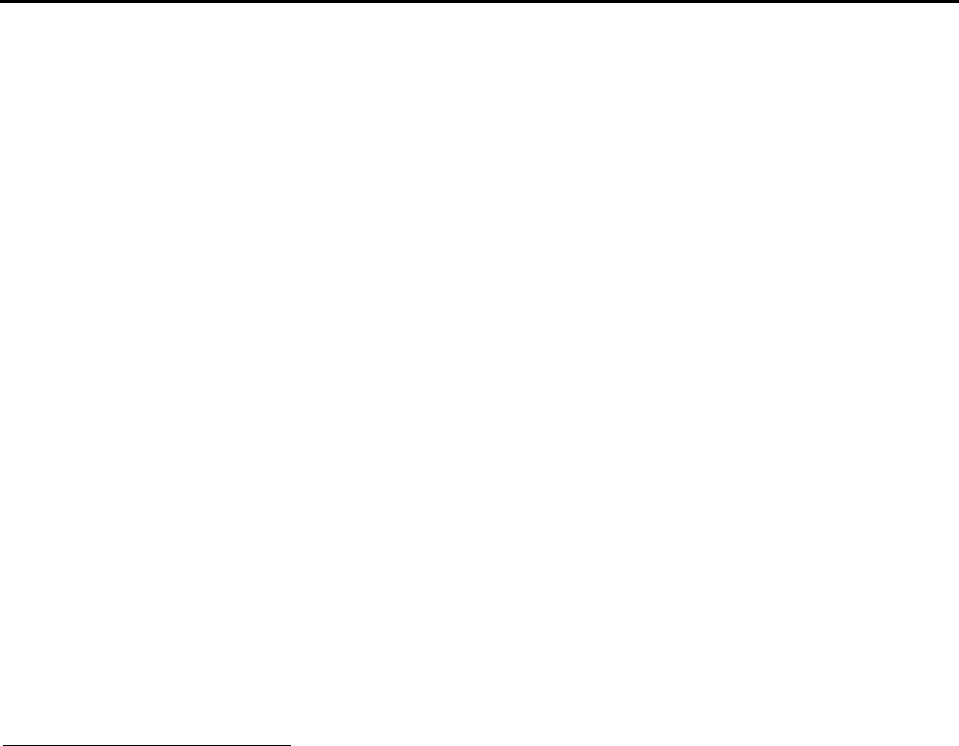
U.S. Copyright Office Section 512 Report
130
content.
683
As one participant at the roundtable states, the “direct financial benefit really is akin to
aiding and abetting.”
684
In one case, the Central District of California articulated a standard that
goes beyond this test, holding that a plaintiff must show a direct link between the financial
benefit and the infringing material at issue in the case, not merely a link to “infringing material in
general” on the site.
685
The primary dispute between rightsholders and OSPs on the application of section
512(c)(1)(B), however, concerns how this provision interacts with the other provisions of section
512, and, as a result, whether the “right and ability to control” standard under section 512 should
deviate from the common law vicarious liability standard. In their comments, a few Study
participants specifically note this potential conflict between section 512(c)(1)(B) and other
provisions of section 512 as resulting in a lack of clarity for courts and stakeholders.
686
Generally, rightsholders participating in the Study assert that Congress intended to
preserve common law rules on vicarious liability, but that the courts have adopted a higher
standard for demonstrating a right and ability to control.
687
In their comments, rightsholders
broadly oppose an interpretation that “something more” beyond the ability to locate and remove
infringing material is required to demonstrate the “right and ability to control,”
688
as required by
the standards articulated in the Second and Ninth Circuits.
689
Nor do rightsholders believe that
courts applied an adequate standard in the few cases in which courts have found the “right and
ability to control,” describing the actions that resulted in liability under these cases as merely
“egregious cases” of conduct by OSPs.
690
Another rightsholder explains that “it is hard to
imagine” which activities would qualify as having a right and ability to control, citing
683
BWP Media USA, 2015 WL 1538366, at *10; see also Hempton v. Pond5, Inc., No. 3:15-CV-05696, 2016 WL 6217113, at *10
(W.D. Wash. Oct. 25, 2016), reconsideration denied, No. 3:15-CV-05696, 2017 WL 132453 (W.D. Wash. Jan. 13, 2017),
dismissed, No. 17-35125, 2017 WL 3444065 (9th Cir. Mar. 15, 2017).
684
Tr. at 267:15–16 (May 2, 2016) (Jim Halpert, DLA Piper for ICC).
685
Perfect 10, Inc. v. Giganews, Inc., No. CV 11-07098, 2014 WL 8628031, at *4 (C.D. Cal. Nov. 14, 2014), aff'd, 847 F.3d 657
(9th Cir. 2017). Compare H.R. REP. NO. 105-551, pt. 1, at 25–26 (1998) (noting that financial benefit would “include any
such fees where the value of the service lies in providing access to infringing material,” rather than a specific piece of
infringing material) (emphasis added).
686
See, e.g., Authors Guild Initial Comments at 24; Kernochan Initial Comments at 14–16. But see MPAA Initial
Comments at 38 (“Nothing in section 512’s language, structure or history suggests that a service provider lacks the
‘right and ability to control’ unless it participates in the infringement.”).
687
See, e.g., A2IM Music Community Initial Comments at 38–39; Authors Guild Initial Comments at 22–23.
688
See, e.g., Authors Guild Initial Comments at 23 (listing a series of fact patterns that courts have found do not
constitute the right and ability to control, and noting that “[i]f none of these activities qualify as ‘the right and ability to
control,’ it is hard to imagine what would”); MPAA Initial Comments at 36 (“The Second and Ninth Circuits, however,
have incorrectly interpreted section 512 to require even more than that, rendering the standards nearly impossible to
meet.”).
689
See Viacom, 676 F.3d at 38; Fung, 710 F.3d at 1045.
690
A2IM Music Community Initial Comments at 38 n.126.

U.S. Copyright Office Section 512 Report
131
enforcement of policies that prohibit users from engaging in illegal or unauthorized content as
activity that should qualify.
691
With so few OSPs found to have been ineligible on both the
“financial benefit” and “right and ability to control” prongs, one rightsholder responds that the
“bar has been set so high, services feel they can profit from infringing content with near
impunity.”
692
These rightsholders conclude that these decisions “have worked to enable and even
encourage infringement to the detriment of copyright holders,”
693
by “remov[ing] [the OSPs’]
incentive to work with copyright owners to detect and combat infringement.”
694
In contrast, OSPs state that courts have interpreted section 512(c)(1)(B) as Congress
intended,
695
noting in particular that multiple circuits have concluded that it would be
inconsistent with other provisions of section 512 to hold OSPs to a common law vicarious liability
standard.
696
In fact, one commenter notes that “secondary liability theories were exactly what
Congress intended to protect intermediaries from with the DMCA.”
697
OSPs, moreover, credited
courts’ interpretations of section 512(c)(1)(B) with facilitating the development of online platforms
by affording latitude for generating services that are beneficial to both users and rightsholders.
698
A few OSPs in their comments claim that the greater potential for liability associated with
the common law vicarious liability standard would ultimately discourage compliance with
section 512.
699
OSPs typically implement compliance programs in order to receive the protection
of the safe harbor, they assert, and in doing so, they provide benefits to rightsholders through
691
Authors Guild Initial Comments at 23.
692
A2IM Music Community Initial Comments at 39.
693
See Getty Initial Comments at 7; MPAA Initial Comments at 39 (“The courts’ erroneous construction of the financial
benefit/right and ability to control provisions has negative consequences”).
694
MPAA Initial Comments at 39.
695
See, e.g., CCIA Initial Comments at 22; Google Initial Comments at 14; Internet Association Initial Comments at 27;
ICC Initial Comments at 5; SoundCloud Operations, Inc., Comments Submitted in Response to U.S. Copyright Office’s
Dec. 31, 2015, Notice of Inquiry at 15 (Apr. 1, 2016) (“SoundCloud Initial Comments”).
696
See, e.g., ICC Initial Comments at 5 (saying that section 512(c) “[did] not simply recapitulate the standard for
vicarious liability”); OTW Initial Comments at 19 (“[C]ourts have reached the right conclusions . . . [by] eschewing
interpretations that would find such an ability [of control] from the mere ability to comply with the takedown
procedure.”); SoundCloud Initial Comments at 15; see also Veoh IV, 718 F.3d at 1028 n.17 (collecting cases); CoStar Grp.,
Inc. v. LoopNet, Inc., 373 F.3d 544, 555 (4th Cir. 2004). OSPs largely address this potential inconsistency by arguing that
Congress never intended a vicarious liability interpretation, thus eliminating any conflict.
697
CCIA Initial Comments at 22.
698
See Facebook Initial Comments at 9. Google claims that, in contrast, a vicarious liability standard “would have
rendered the safe harbors ineffective . . . and potentially subjected OSPs to strict liability for infringing activity by [a]
tiny minority of users,” which “would have drastically changed the nature of online platforms” to the detriment of the
tech industry and non-infringing users. Google Initial Comments at 14–15; see also ICC Initial Comments at 5
(“[B]ecause the vicarious liability standard for copyright infringement is unacceptably uncertain in the Internet context
. . . Congress chose to enact [section 512(c)].”).
699
See, e.g., CCIA Initial Comments at 23; Google Initial Comments at 14–15.

U.S. Copyright Office Section 512 Report
132
“access to expeditious extra-judicial takedowns.”
700
CCIA states that, if liability was imposed
under the common law standard, the protection that the safe harbor offers would be essentially
nullified, and OSPs would thus lack the incentive to assist rightsholders with the efficient
removal of infringing content, thereby harming both parties.
701
Similarly, Facebook explains that
“platforms need the latitude to optimize the appearance and organization of user-generated
content in a manner they deem appropriate and that users expect” by controlling the presentation
of content.
702
In its comments, the Kernochan Center notes the tension between section 512(c)(1)(b) and
other provisions of section 512(c), noting that “[t]o qualify for the statutory exemption . . . the
service provider must have the ability to block access . . . . [b]ut if the ability to block access also
meets part of the standard for disqualification from the exemption, then the statute would be
incoherent.”
703
Thus, the Kernochan Center reasons, the “right and ability to control” provision
“must mean something more than [the] ability to block access.”
704
Addressing this question, the Second Circuit in Viacom acknowledged that “[t]he general
rule with respect to common law codification is that when ‘Congress uses terms that have
accumulated settled meaning under the common law, a court must infer, unless the statute
otherwise dictates, that Congress means to incorporate the established meaning of those
terms.’”
705
Nonetheless, the Second Circuit rejected “the common law vicarious liability standard,
[that] the ability to block infringers’ access to a particular environment for any reason whatsoever
is evidence of the right and ability to supervise.”
706
Instead, the court found that section
512(c)(1)(B) “requires something more than the ability to remove or block access to materials
posted on a service provider’s website,” such as the “service provider exerting substantial
influence on the activities of users.”
707
700
CCIA Initial Comments at 22–23.
701
See CCIA Initial Comments at 22–23.
702
Facebook Initial Comments at 9.
703
Kernochan Initial Comments at 14.
704
Kernochan Initial Comments at 14.
705
Viacom, 676 F.3d at 37 (quoting Neder v. U.S., 527 U.S. 1, 21 (1999)).
706
Id. (quotation marks omitted) (quoting Arista Records LLC v. Usenet.com, Inc., 633 F. Supp. 124, 157 (S.D.N.Y. 2009)).
707
Viacom, 676 F.3d at 38 (citations omitted); see also Veoh IV, 718 F.3d at 1030 (concluding that the ability to remove
infringing content or search for it, to implement filtering systems, or to enforce rules against types of content do not
meet the threshold for the right and ability to control); Viacom Int’l Inc. v. YouTube, Inc., 940 F. Supp. 2d 110, 119–21
(S.D.N.Y. 2013) (concluding that “YouTube’s decisions to remove some but not all infringing material, by its efforts to
organize and facilitate search of the videos appearing on the site, and by its enforcement of rules prohibiting, e.g.,
pornographic content” did not amount to substantial influence); Greg Young Publ'g, Inc. v. Zazzle, Inc., No. 2:16-CV-
04587, 2017 WL 2729584, at *8 (C.D. Cal. May 1, 2017) (noting that “‘[s]ubstantial influence’ . . . will be found where the
service provider plays an active role in selecting, monitoring, or marketing user content”).

U.S. Copyright Office Section 512 Report
133
Justifying this “something more” requirement, the Second Circuit explained that adoption
of the common law vicarious liability standard would “render [section 512] internally
inconsistent.”
708
In support of this conclusion, the Second Circuit pointed to section 512(c)(1)(C),
which requires OSPs to “expeditiously . . . remove, or disable access to” material claimed to be
infringing upon notice, in order to qualify for the safe harbor. The Second Circuit reasoned that
an OSP, upon taking such an action, would be “admitting the ‘right and ability to control’ the
infringing material” and thus disqualified under section 512(c)(1)(B).
709
The court said that “if
Congress had intended [section] 512(c)(1)(B) to be coextensive with vicarious liability, ‘the statute
could have accomplished that result in a more direct manner.’”
710
The Ninth Circuit in Veoh IV,
citing Viacom, likewise held that in order to have the “right and ability to control,” the OSP must
exert “substantial influence on the activities of the users” and such substantial influence may
include “high levels of control over activities of users . . . [o]r it may include purposeful
conduct.”
711
In the few cases finding that an OSP had a right and ability to control the infringing
activity, the courts appear to have required affirmative steps by the OSP, entailing some active
involvement in the infringing activity.
712
For example, the Ninth Circuit in Fung found an OSP to
have had “control” under section 512(c)(1)(B) because he “organized torrent files on his sites
using a program that matches file names and content with specific search terms describing
material likely to be infringing . . . [and] personally assisted [users] in locating [likely infringing]
files.”
713
As this activity “went well beyond merely locating and terminating users’ access to
infringing material,” the court found that Fung’s activity met the “right and ability to control”
prong of section 512(c)(1)(B).
714
The Copyright Office does not believe that Congress intended to subject an OSP to liability
under section 512(c)(1)(B) for either operating in the normal course of business or complying with
708
Viacom, 676 F.3d at 37.
709
Id. (citing 17 U.S.C. §§ 512(c)(1)(A)(iii), (c)(1)(C)).
710
Id. (quoting Veoh III, 667 F.3d at 1045). See also Corbis Corp., 351 F. Supp. 2d at 1110 (“Courts have routinely held that
the right and ability to control infringing activity, as the concept is used in the DMCA, cannot simply mean the ability
of a service provider to remove or block access to materials posted on its website or stored in its system.”) (quotation
marks omitted).
711
Veoh IV, 718 F.3d at 1030 (citations omitted).
712
See Fung, 710 F.3d at 1046; Greg Young Publ'g, 2017 WL 2729584, at *8 (finding the defendant had “the right and
ability to control the types of products it produced” because the defendant was “actively involved in selecting the
products that are sold, pricing those products, selling the products, manufacturing the products, inspecting the
products, and finally packaging and delivering the products.”); Gardner v. CafePress Inc., No. 3:13-CV-1108, 2014 WL
794216, at *9 (S.D. Cal. Feb. 26, 2014) (stating that being “actively involved in the listing, sale, manufacture, and delivery
of items offered for sale” on one’s website may provide a defendant with the right and ability to control).
713
Fung, 710 F.3d at 1046.
714
Id.

U.S. Copyright Office Section 512 Report
134
a takedown notice. But the Office is not sure that current interpretations of this section are fully
in line with congressional intent.
With respect to the financial benefit prong, although most courts appear to adhere to the
common law standard,
715
the Copyright Office questions the Central District of California’s
formulation of the financial benefit prong as requiring a plaintiff to show a direct link between
the financial benefit and the infringing material at issue in the case.
716
There does not appear to be
support for such a requirement in either the common law of vicarious liability or the legislative
history of section 512. Nor do the cases cited by the Central District support this proposition. For
example, one of the cases the court cites to for this interpretation of financial benefit is Napster
717
The Central District of California appears to be the only court to interpret the cited language,
namely that “[f]inancial benefit exists where the availability of infringing material acts as a ‘draw’
for customers,” as requiring a showing that customers of the site value not just infringing material
generally, but the plaintiff’s material specifically.
718
The Central District’s standard is not only
unsupported, but would be fundamentally unworkable in practice. Trying to parse the exact
infringing work that drew a particular user to a site would be nearly impossible, unless the
plaintiff went through the time and expense of identifying and deposing a large number of the
site’s users. Placing such a requirement on a plaintiff would be at odds with the animating
purpose underlying vicarious liability.
719
Instead, the Office is of the opinion that a more
appropriate test for financial benefit is to ask whether the existence of infringing material on the
site is one of the primary draws for users, and whether the plaintiff’s works were infringed by
being performed or distributed through the site.
The Copyright Office acknowledges that determining the proper standard for the right
and ability to control prong is somewhat more difficult, and concedes that there is some degree of
715
The Second Circuit has formulated the common law test as: “[w]hen the right and ability to supervise coalesce with
an obvious and direct financial interest in the exploitation of copyrighted materials—even in the absence of actual
knowledge that the copyright monopoly is being impaired—the purposes of copyright law may be best effectuated by
the imposition of liability upon the beneficiary of that exploitation.” Shapiro, Bernstein & Co. v. H.L. Green Co., 316 F.2d
304, 307 (2d Cir. 1963) (internal citations omitted).
716
Perfect 10, Inc. v. Giganews, Inc., No. CV 11-07098, 2014 WL 8628031, at *4 (C.D. Cal. Nov. 14, 2014), aff'd, 847 F.3d 657
(9th Cir. 2017). Cf. H.R. REP. NO. 105-551, pt. 1, at 25–26 (1998) (noting that financial benefit would “include any such
fees where the value of the service lies in providing access to infringing material,” rather than a specific piece of
infringing material) (emphasis added).
717
Napster, 239 F.3d 1004 (9th Cir. 2001).
718
Perfect 10, Inc. v. Giganews, Inc., No. CV 11-07098, 2014 WL 8628031, at *3–*4 (C.D. Cal. Nov. 14, 2014), aff'd, 847 F.3d
657 (9th Cir. 2017).
719
As the Supreme Court noted, “[w]hen a widely shared product is used to commit infringement, it may be impossible
to enforce rights in the protected work effectively against all direct infringers, [so that] the only practical alternative [is]
to go against the device’s distributor . . . for secondary liability on a theory of contributory or vicarious infringement.”
Grokster, 545 U.S. at 929–30.

U.S. Copyright Office Section 512 Report
135
tension between section 512(c)(1)(B) and other provisions in section 512.
720
Nonetheless, the
Office is unconvinced that Congress, in drafting section 512, intended to abrogate the common
law standard for right and ability to control to require “something more.”
721
For this reason, the
Office is of the opinion that the right and ability to control prong should correctly be interpreted
in accordance with the common law standard.
722
This does not mean, however, that OSPs could (or should) be held liable merely because
they have the “ability to block infringers’ access to a particular environment for any reason
whatsoever.”
723
Those courts that have found a right and ability to control under a test other than
that articulated in Viacom and Veoh IV have done so upon a showing of something more than
having the ability to deny admittance to the general public.
724
Outside of the section 512 cases,
courts generally have not found that defendants had a right and ability to control based merely
on a showing that the defendants could control what members of the public access their facilities.
Instead, such decisions typically rest upon a finding that a contractual or other close relationship
exists between the infringer and the defendant, such as a concessionaire that rents space inside of
a department store
725
or a band that is managed by and performs at a concert promoted by the
defendant.
726
Even the line of dance hall cases, which are typically cited for the proposition that
right and ability to control results when the defendant has an ability to “control the premises,” in
fact provide secondary liability for the actions of performers chosen and allowed to perform by
the owner, not the actions of general members of the public who happen to be in attendance.
727
720
As we have shown throughout this Report, this tension is not an uncommon occurrence.
721
Neder v. U.S., 527 U.S. 1, 21 (1999).
722
The Office is sympathetic to concerns that adoption of the common law standard could significantly broaden the
number of OSPs that may find themselves liable under section 512(c)(1)(B). The Office is not convinced, however, that
the threat is as great as the Second Circuit, and some stakeholders, envision. Importantly, the right and ability to
control the infringement is not the only element a plaintiff would need to show in order to hold an OSP liable. The
Office finds it noteworthy that neither the Second and Ninth Circuits, nor the stakeholders that raise the specter of
liability gone wild, address the limiting effect of the financial benefit prong. Certainly, if courts began to significantly
loosen the standard for determining whether an OSP’s financial benefit is directly related to infringing material that
appears on its site, such a fear would not be unfounded. However, such an expansion of the doctrine would be
incompatible with both the common law articulation of the standard and the clear legislative history of section 512.
723
Viacom, 676 F.3d at 37 (quoting Arista Records LLC v. Usenet.com, Inc., 633 F. Supp. 124, 157 (S.D.N.Y. 2009)).
724
See, e.g., Cybernet, 213 F. Supp. 2d at 1173 (finding the OSP to have a right and ability to control where it instituted a
monitoring program that provided users with “detailed instructions regard[ing] issues of layout, appearance, and
content,” forbade certain content, and actively denied access to users who failed to comply with its instructions). One
of the more expansive definitions that the Office identified during the Study was from the Ninth Circuit’s opinion in
Perfect 10, Inc. v. Amazon.com, Inc., 508 F.3d 1146 (9th Cir. 2007). There, the court held that “right and ability to control”
can be found when the defendant has “a closed system requiring user registration, and could terminate its users’ accounts
and block their access to the [defendant’s] system.” Id. at 1174 (emphasis added) (citations omitted). Even this
standard, however, requires more than the mere ability to block users from the site.
725
H.L. Green Co., 316 F.2d at 308–09.
726
Gershwin Publ’g Corp. v. Columbia Artists Mgmt., Inc., 443 F.2d 1159, 1160–63 (2d Cir. 1971).
727
See, e.g., Dreamland Ball Room, Inc. v. Shapiro, Bernstein & Co., 36 F.2d 354, 355 (7th Cir. 1929).

U.S. Copyright Office Section 512 Report
136
For this reason, the Office is not convinced that the proper standard should be significantly
broader than that articulated by the Second and Ninth Circuits. Vicarious liability should not
extend to merely providing a service that has potentially infringing uses; as the Supreme Court
noted, it is properly limited to “instances of more acute fault than the mere understanding that
some of one’s products will be misused.”
728
For this reason, while the Copyright Office acknowledges that there could be some room
for Congressional clarification to resolve the perceived tension between section 512(c)(1)(B),
section 512(m), and the common law standard for vicarious liability, the Office cautions that
lowering the bar for either “financial benefit” or “right and ability to control” too far may overly
disrupt the financial risk calculation underlying some online services developed since the
enactment of section 512. Because most OSPs are for-profit (or at least display ads), significant
expansion of this doctrine could threaten to swallow the safe harbors, creating significant tension
between the two fundamental goals outlined by Congress when adopting the section 512
framework. For this reason, the Office is of the opinion that modifications to section 512(c)(1)(B)
would have less beneficial impact on restoring the section 512 balance than other options
discussed in this Report.
* * *
Overall, the Copyright Office finds that the cumulative effect of courts’ interpretations of
how an OSP qualifies for a particular safe harbor, what the OSP’s obligations are with respect to
repeat infringers, and the application of the various safe harbor exclusions in section 512(c)(1) has
been to increase the burden on rightsholders seeking to enforce their rights online. The
cumulative effect has been to either broaden the safe harbors or narrow the safe harbor
exclusions, ultimately altering the balance of the equities as originally weighed by Congress in
1998. The Copyright Office therefore would support a Congressional effort to clarify select
provisions of section 512 in order to restore its original balance.
2. Notice-and-Takedown Process
In addition to looking at the scope and qualifications for the section 512 safe harbors, the
Study examined various aspects of the notice-and-takedown process itself. Congress envisioned
the notice-and-takedown process as “a formalization and refinement of a cooperative process that
has been employed to deal efficiently with network-based copyright infringement.”
729
Does the
notice-and-takedown process today operate in a manner that fulfills this vision?
728
Grokster, 545 U.S. at 932–33. One potential option for addressing this concern could be to add an additional prong to
the test, utilizing language similar to that of § 1201(a)(2) to evaluate whether the OSP’s service is “primarily designed”
to facilitate infringement or “has only limited commercially significant purpose or use” other than to facilitate
infringement. 17 U.S.C. §§ 1201(b)(1)(A), (B). Such a change would be consistent with the vicarious liability standard
articulated by the Supreme Court in Bexamax, 464 U.S. 417, 439–43 (1984).
729
S. REP. NO. 105-190, at 45 (1998); H.R. REP. NO. 105-551, pt. 2, at 54 (1998).

U.S. Copyright Office Section 512 Report
137
Rightsholders generally note that large-scale infringement has rendered the notice-and-
takedown process as “burdensome and ineffective”
730
in addressing online infringement,
highlighting the sheer number of notices and the time, financial resources, and effort demanded
by the process.
731
Rightsholders also extensively discussed the impact of certain judicial
interpretations of section 512 that have shaped the functioning of the notice-and-takedown
process, asserting that the result of such rulings is that courts have wrenched the notice-and-
takedown process out of alignment with Congress’ initial intentions.
732
OSPs report, however, that the growth in the volume of notices does not reflect a growth
in infringement but that “free, automated tools developed by service providers and a growing
market of enforcement vendors have reduced cost, increased efficacy, and thus increased demand
for takedowns.”
733
One OSP asserts in its comments that changes to the current system, such as
legislative prescriptions of uniformity in the takedown process, “ultimately would interfere with,
rather than promote, positive innovation for all relevant stakeholders.”
734
Another OSP cautions
against changes to the current notice-and-takedown practice, which would upset the balance of
the “roles, responsibilities, liabilities and immunities of all impacted stakeholders.”
735
The following sections will examine the statutory framework of the notice-and-takedown
process, including provisions relating to (a) notice requirements, (b) representative list and
identifiable location information, (c) knowing misrepresentation and good faith requirements,
(d) fair use, (e) adoption of non-section 512 notification requirements by some OSPs, and (f)
timeframes in the notice-and-takedown process. This includes examining the market factors,
technological developments, and judicial interpretations of section 512 that have shaped these
various parts of the process.
730
AAP Initial Comments at 5.
731
See Copyright Alliance Initial Comments at 9.
732
See, e.g., MPAA Initial Comments at 18 (“First, if courts interpreted section 512’s knowledge, representative list, and
expeditious removal requirements as Congress intended, the notice-and takedown process would be more effective.”);
UMG Initial Comments at 2 (“Instead, the protections of Section 512, as interpreted by the courts, have overwhelmingly
favored online service providers, imposed enormous burdens on copyright owners such as UMG, and fundamentally
skewed the marketplace for music content.”).
733
CCIA Initial Comments at 8. Certainly, larger rightsholders are increasingly relying on automated infringement
detection systems to locate material for which they will then issue takedown notices. Tr. at 32:9–11, 33:5–13 (May 13,
2016) (Gabriel Miller, Paramount Pictures Corp.); Tr. at 31:1–10 (May 2, 2016) (Deborah Robinson, Viacom). But such
use of automated tools and enforcement vendors cannot be said to have trickled down to smaller and individual
rightsholders. See Tr. at 75:4–8 (May 2, 2016) (Natalie Madaj, NMPA) (“NMPA probably falls somewhere between the
level of resource we’re able to contribute between individual creators and larger organizations and that we do not use
the automated processes.”).
734
Facebook, Inc., Additional Comments Submitted in Response to the U.S. Copyright Office’s Nov. 8, 2016, Notice of
Inquiry at 5 (Feb. 21, 2017) (“Facebook Additional Comments”).
735
Microsoft Initial Comments at 12–13.

U.S. Copyright Office Section 512 Report
138
a) Notice Requirements
Congress formalized the intended cooperation between rightsholders and OSPs with
statutory requirements for a takedown notice. A compliant notice must include “substantially the
following” elements: (i) the signature of the copyright owner or authorized agent; (ii)
identification of the copyright-protected work allegedly infringed or, for multiple works, “a
representative list”; (iii) identification of the infringing material or activity sufficient for the OSP
to locate the material; (iv) contact information for the copyright owner or authorized agent; (v) a
statement of “a good faith belief that use of the material in the manner complained of is not
authorized by the copyright owner, its agent, or the law”; and (vi) a statement that the
information is accurate and, under penalty of perjury, that the complaining party is authorized to
act.
736
A takedown notice that does not substantially comply with these requirements will not,
on its own, be interpreted to provide the OSP with actual or red flag knowledge.
737
However,
OSPs that want to avail themselves of a safe harbor are required to “promptly attempt[] to contact
the person making the notification or take[] other reasonable steps to assist in the receipt of
notification that substantially complies with [clauses (ii), (iii), and (iv)].”
738
Congress specified a
substantial compliance standard “so that technical errors (such as misspelling a name, or
supplying an outdated area code if the phone number is accompanied by an accurate address,
supplying an outdated name if accompanied by an email address that remains valid for the
successor of the prior designated agent or agent of a copyright owner) do not disqualify service
providers and copyright owners from the protections afforded under subsection (c).”
739
The
Office has not found a case in which failure to follow up on a deficient notice was ultimately held
to abrogate the OSP’s immunity.
740
Generally, courts have properly noted that a takedown notice must contain substantially all
of information listed in section 512(c)(3). As the Fourth Circuit stated, “the DMCA requires that a
copyright owner put the service provider on notice in a detailed manner but allows notice by
means that comport with the prescribed format only ‘substantially,’ rather than perfectly.”
741
Additionally, as the D.C. Circuit noted, the legislative history indicates “that ‘technical errors . . .
such as misspelling a name’ or ‘supplying an outdated area code’ will not render ineffective an
736
17 U.S.C. § 512(c)(3)(A).
737
17 U.S.C. § 512(c)(3)(B)(i).
738
17 U.S.C. § 512(c)(3)(B)(ii).
739
S. REP. NO. 105-190, at 47 (1998); see also H.R. REP. NO. 105-551, pt. 2, at 56 (1998).
740
But see Cybernet, 213 F. Supp. 2d at 1180 (failure to follow up as required by section 512(c)(3)(B)(ii), when combined
with imposition of notice standards more stringent than those set out in section 512(c)(3), resulted in a finding that the
defendant “failed to structure a notice system that complies with section 512.”).
741
ALS Scan, Inc. v. RemarQ Cmtys., Inc., 239 F.3d 619, 625 (4th Cir. 2001).

U.S. Copyright Office Section 512 Report
139
otherwise complete § 512(c)(3)(A) notification.”
742
Some courts have gone further, and required
that the information must appear within the four corners of the notice for that request.
743
The substantial compliance doctrine was not a major focus of stakeholder comments in the
Study. Based on the general silence regarding this issue, both rightsholders and OSPs appear to
at least acquiesce to the standard that courts have set.
In contrast, stakeholders on all sides of the issue offered opinions on the specificity of the
information that must be included in a compliant notice, which has been a frequent source of
frustration and litigation among stakeholders. In particular, Study participants disagree
regarding the definitions of “representative list” and “identifiable location,” and the activities that
qualify as misrepresentation or good faith in notice sending.
b) Representative List and Identifiable Location
As noted above, section 512 contains multiple requirements a rightsholder must meet for a
notice to be deemed compliant. In addition to information about the copyright owner and its
rights, section 512(c)(3)(A) contains two provisions that require information about the work that
has been infringed and the location of the infringing material: first, “[i]dentification of the
copyrighted work claimed to have been infringed, or, if multiple copyrighted works at a single
online site are covered by a single notification, a representative list of such works at that site”
744
(referred to herein as the “representative list” provision); and second, “[i]dentification of the
material that is claimed to be infringing or to be the subject of infringing activity and that is to be
removed or access to which is to be disabled, and information reasonably sufficient to permit the
service provider to locate the material”
745
(referred to herein as the “identifiable location”
provision). Stakeholders sharply disagree, however, on what constitutes a representative list, and
whether something less than specific URLs for every piece of material satisfies the identifiable
location requirement as sufficient notice.
746
In their comments, both rightsholders and OSPs tended to collapse their analysis of the
“representative list” provision, which addresses the identification of the copyrighted works, with
the “identifiable location” provision, which addresses the OSP’s ability to identify the location of
742
Recording Indus. Ass'n of Am., Inc. v. Verizon Internet Servs., Inc., 351 F.3d 1229, 1236 (D.C. Cir. 2003) (citing S. REP. NO.
105-190, at 47 (1998); H.R. REP. NO. 105-551, pt. 2, at 56 (1998)).
743
See CCBill, 488 F.3d at 1112. In CCBill, the Ninth Circuit noted, as a policy matter, that though the plaintiff provided
all the information required under section 512(c)(3), that information was spread across separate notices, submitted
over the course of 14 months, and that “[p]ermitting a copyright holder to cobble together adequate notice from
separately defective notices also unduly burdens service providers.” Id. at 1113.
744
17 U.S.C. § 512(c)(3)(A)(ii).
745
17 U.S.C. § 512(c)(3)(A)(iii).
746
Compare CCIA Initial Comments at 19, and Facebook Initial Comments at 7, and Google Initial Comments at 12, with
Authors Guild Initial Comments at 16, and c3 Initial Comments at 26, and UMG Initial Comments at 27.
U.S. Copyright Office Section 512 Report
140
the material that infringes those works.
747
This resulted in each side either relying on the
“identifiable location” provision to interpret “representative list” or vice versa.
For example, OSPs and user advocacy groups in their representative list analysis often
emphasize the obligations of the identifiable location provision when discussing what qualifies as
a representative list. Some OSPs go so far as to argue that the identifiable location requirement in
fact prohibits the use of a representative list of copyrighted works.
748
Most of the OSPs interpret
the identifiable location provision to require, at a minimum, identification of specific URLs or file
locations at which the infringing material reside.
749
According to one OSP, “anything other than
specific, individual URLs makes the identification and removal of allegedly infringing content
extremely difficult, if not impossible,” due to the time required to investigate and identify each
instance in which the allegedly infringing content may appear on the platform and to determine
whether that use is authorized.
750
Furthermore, OSPs assert that an absence of specific location
identification information would shift the burden on to OSPs to monitor their services in
contravention to section 512(m).
751
According to one OSP, interpreting “representative list” and
“identifiable location” to require an OSP to search and monitor its platform for all works
potentially identified in the list would be inconsistent with this provision.
752
Beyond textual arguments, several OSPs argue in favor of requiring rightsholders to
provide specific URLs on practical or policy grounds. One OSP states that “it is imperative that
rightsholders provide specific details on allegedly infringing content in order for the system to
work,” otherwise “content matching a vague description would have to be taken down, resulting
747
See, e.g., Copyright Alliance Initial Comments at 18; Facebook Initial Comments at 7; Internet Association Initial
Comments at 18–19; ICC Initial Comments at 4; Kernochan Initial Comments at 10–11; MPAA Initial Comments at 5;
SiteGround, Comments Submitted in Response to U.S. Copyright Office’s Dec. 31, 2015, Notice of Inquiry at 2 (Apr. 1,
2016); UMG Initial Comments at 27; Wikimedia Foundation, Comments Submitted in Response to U.S. Copyright
Office’s Dec. 31, 2015, Notice of Inquiry at 11 (Apr. 1, 2016) (“Wikimedia Initial Comments”).
748
See, e.g., Facebook Initial Comments at 7 (stating that “a rights owner’s failure to specifically identify all infringed
works (and thus all instances of infringement) compels the very proactive monitoring that section 512(m) expressly
does not require”); Wikimedia Initial Comments at 11 (stating that rightsholders “should be required to provide
specific links to each file they want taken down, as well as provide links to the copyrighted works they claim are
infringed”) (emphasis added).
749
See, e.g., SoundCloud Initial Comments at 12; Wikimedia Initial Comments at 11; Tr. at 225:22–226:12 (May 12, 2016)
(Brian Willen, Wilson Sonsini Goodrich) (stating that the combination of the identifiable location provision with section
512(m) results in the conclusion that “the burden and the responsibility is on the copyright owner to identify the
instances by URL or some other mechanism that points directly to the material that they consider to be unlawful.”). But
see Internet Association Initial Comments at 19 (stating that even a URL plus identification of a particular artist that
should be removed is insufficient, because “[o]ne URL may contain links to hundreds of pages and sources of
content.”).
750
SoundCloud Initial Comments at 12–13.
751
See, e.g., CCIA Initial Comments at 19; Facebook Initial Comments at 7; see also supra n.591.
752
Google Initial Comments at 12.

U.S. Copyright Office Section 512 Report
141
in many improper removals of content.”
753
A lack of specificity in the notice, they argue, “would
inevitably result in the censorship of lawful online content, thus harming the public interest.”
754
These OSPs support this position by arguing that the rightsholder is in “the best position to
identify infringing uses of their own works” ensuring the balance of shared responsibilities on
which the notice-and-takedown framework is predicated.
755
In contrast, many rightsholders argue that interpreting the identifiable location provision
to require notices to contain the specific URL of each instance of infringement is, in fact,
incompatible with the representative list provision.
756
Parsing the interrelation between the two
provisions, one rightsholder argues that:
It is critical to note in this regard that the [representative list] provision refers to use of a
representative list of works at “a single online site,” not at “a single online location.” . . . .
This provision should not be read as inconsistent with the requirement of Section
512(c)(3)(A)(iii) for a notification to include information “reasonably sufficient” to permit
the service provider to locate the material claimed to be infringing. Instead, it suggests
that, upon receipt of a notification including a “representative list,” a service provider
should review its site for such infringing materials, possibly including infringements of
works that are not explicitly identified in the representative list but of which the list is
“representative.”
757
Collapsing the two standards, rightsholders argue, renders the representative list
provision “meaningless as rights holders are now obligated to provide specific notice for each
infringing work.”
758
Rightsholders also reject an interpretation of identifiable location that
requires a notice to identify every instance of infringing material appearing on a site by (file-
specific) URL in order to be compliant.
759
While one rightsholder notes that “a complete list
753
Amazon Initial Comments at 8–9.
754
Internet Association Initial Comments at 9.
755
ICC Initial Comments at 5. Similarly, the district court in Perfect 10, Inc. v. Giganews, Inc. found that if the OSP,
instead of the rightsholder, had to find and identify “Message-IDs,” unique identifiers for content on its service, “for
the hundreds of millions of messages identified in DMCA notices it has received, it would not be able to function.”
Giganews, 993 F. Supp. 2d at 1201.
756
See, e.g., UMG Initial Comments at 28 (“But limiting the takedown obligation to only specifically-identified
infringements renders the ‘representative list’ provision of the preceding statutory section a dead letter; if a copyright
owner can provide a ‘representative’ (e.g., non-exhaustive) list of works, but the service provider is required only to
take down specifically-identified works at specifically-identified locations on the website, then the ‘representative list’
provision is meaningless.”).
757
AAP Initial Comments at 10.
758
Id.; see also MPAA Initial Comments at 25.
759
See, e.g., A2IM Music Community Initial Comments at 17; MPAA Initial Comments at 23 (“The statute on its face
does not require the copyright owner to reference a specific file; the statute discussed ‘activity’ claimed to be infringing.
There is therefore no reason to conclude that Congress intended its reach to be limited to specific URLs.”); UMG Initial
Comments at 28 (“There is no reason to believe that the copyright owner could [locate specific instances of infringing

U.S. Copyright Office Section 512 Report
142
detailing every infringing copy of every work on sites replete with infringement” is impractical,
760
another explains in its comment that “creators too often lack the time, money, and resources to
list with specificity every single URL containing infringing copies of their work,” resulting in a
burden that ultimately discourages creators from enforcing their rights.
761
Court interpretations of the two provisions have done little to clarify the interrelationship
between the representative list and the identifiable location provisions. Only a few courts have
directly addressed the question of what constitutes a representative list. The Office is aware of
only two instances (excluding cases overturned on appeal) in which a court found that the
plaintiff’s representative list was sufficient for the notice to comply with section 512(c)(3)(A).
762
In
one, the Fourth Circuit found the notice sufficient, stating:
This subsection [section 512(c)(3)(A)] specifying the requirements of a notification does not
seek to burden copyright holders with the responsibility of identifying every infringing
work—or even most of them—when multiple copyrights are involved. Instead, the
requirements are written so as to reduce the burden of holders of multiple copyrights who
face extensive infringement of their works. Thus, when a letter provides notice equivalent
to a list of representative works that can be easily identified by the service provider, the
notice substantially complies with the notification requirements.
763
In contrast, a few district court cases have rejected plaintiffs’ attempts at providing a
representative list using an analysis that collapses the representative list and identifiable location
requirements. For example, the Southern District of New York found that “a bare list of musical
artists whose songs were allegedly linked to did not constitute a representative list of works, or
material] any more readily than the service provider, and that should be the standard: provide sufficient information
to permit the service provider to locate and identify infringing files as readily as the copyright owner could.”) (citation
omitted).
760
Authors Guild Initial Comments at 16.
761
Copyright Alliance Initial Comments at 18.
762
See ALS Scan, 239 F.3d at 625; Venus Fashions, 2017 WL 2901695, at *27 (recognizing the distinction of the
representative list and identifiable location tests and citing ALS Scan for the proposition that the inclusion of the
“representative list” language means that a plaintiff is not required to provide specific URLs for each instance of
infringement, and holding that a duty to conduct “a routine search requirement on [defendant] does not run afoul of
the DMCA’s admonition that the provider is not required to continuously monitor its servers for infringement”). A
third case found that the notice requirements imposed by the defendant did not comply with section 512(c)(3)(A)
because the defendant required the specific “web page at which a given [copyrighted] work is located, rather than the
site,” but didn’t ultimately rule on the sufficiency of the plaintiff’s notice. Cybernet, 213 F. Supp. 2d at 1180.
Unsurprisingly, several rightsholders cite the ALS Scan opinion as a preferable interpretation of “representative list.”
See MPAA Initial Comments at 23.
763
ALS Scan, 239 F.3d at 625.

U.S. Copyright Office Section 512 Report
143
notice equivalent to a list of representative works that can be easily identified by the service
provider.”
764
Part of this confusion may stem from the ambiguity of the language used in section
512(c)(3)(A), which requires that a notification include:
(ii) Identification of the copyrighted work claimed to have been infringed, or, if multiple
copyrighted works at a single online site are covered by a single notification, a representative
list of such works at that site, and
(iii) Identification of the material that is claimed to be infringing or to be the subject of
infringing activity and that is to be removed or access to which is to be disabled, and
information reasonably sufficient to permit the service provider to locate the material.
765
Looking at this provision in context, “site” in (ii) would appear to be addressing material located
on the OSP’s site. This fits with the legislative history, which states that “where a party is
operating an unauthorized Internet jukebox from a particular site, it is not necessary for a
compliant notification to list every musical composition or sound recording that has been or
could be infringed at that site, so long as a representative list of those compositions or recordings is
provided so that the service provider can understand the nature and scope of the infringement
being claimed.”
766
But the next provision distinguishes (legitimate) copyrighted works from
material that is claimed to be infringing located on the OSP’s network, stating that a rightsholder
must provide information reasonably sufficient to locate this material.
767
Thus, it would appear
that Congress may have intended to state that, if a given OSP site contains multiple instances of
material that infringes a rightsholder’s copyrighted works, a rightsholder can send a representative
list of copyrighted works they claim[] to have been infringed on the OSP site, with the expectation that
the OSP will remove not just the material that the rightsholder specifically claimed to be infringing
but also any other materials located at that OSP site that are the subject of infringing activity, which
could include other copyrighted works not identified in the representative list of copyrighted works.
But because section 512(c)(3)(A) refers to the material on the OSP’s site as both “copyrighted
works” and “infringing material,” the result is internal inconsistency.
Rather than attempting to untangle the meaning of the representative list requirement,
many courts appear to have instead focused their analysis on the identifiable location
requirement to determine whether a notice is sufficient under section 512(c)(3). A number of
cases interpreting the identifiable location prong require the identification of specific locations of
764
Arista Records, Inc. v. MP3Board, Inc., No. 00 CIV. 4660, 2002 WL 1997918, at *15 (S.D.N.Y. Aug. 29, 2002); cf. Veoh II,
665 F. Supp. 2d at 1110.
765
17 U.S.C. §§ 512(c)(3)(A)(ii), (c)(3)(A)(iii).
766
S. REP. NO. 105-90, at 46 (1998).
767
Demonstrating the confusion that results from such conflation, one district court stated that section 512(c)(3)(A)(ii)
required ”a ‘representative list’ of infringing works.” Venus Fashions, 2017 WL 2901695, at *23 (emphasis added).

U.S. Copyright Office Section 512 Report
144
infringing material, usually by the URL that corresponds to the file, rather than the page on
which the material appears.
768
The Southern District of New York found that a notice that
contained “merely generic description[s] . . . without also giving the works’ locations . . . would
put the provider to the factual search forbidden by section 512(m).”
769
Such a reading appears, on
the surface, to comport with the legislative history that states that a compliant notice can include
“a copy or description of the allegedly infringing material and the URL address of the location
(web page) which is alleged to contain the infringing material.”
770
In contrast, the Fourth Circuit in ALS Scan allowed the plaintiff to identify two websites
generally, without requiring identification of specific instances or locations of infringement,
finding a statement by the copyright owner that “virtually all the images at the two sites were its
copyrighted material” to be sufficient.
771
Similarly, the district court in Venus Fashions, Inc. v.
ContextLogic, Inc., found that, while the rightsholder did not “provide[] . . . specific Notice of the
URL addresses of the 17,035 Images that [defendant] was able to take down,” the notification was
sufficient, and as a result the defendant “nonetheless has ‘reason to know’ of the continued
Images which have appeared and no doubt will appear on the Wish Website in the future, as well
as the indeterminate number of slightly altered but readily identifiable substantially similar
Images to those noticed that remain.”
772
In a case decided before Viacom, the Southern District of
New York, while rejecting plaintiff’s first two notices that contained a list of artists as not
constituting a representative list, found that plaintiff’s third letter, which contained “printouts of
screen shots of MP3Board’s Web site, on which the [plaintiff] highlighted and placed an asterisk
next to 662 links which the [plaintiff] believed to infringe upon the record companies’ copyrights”
was sufficient to qualify as identifiable location information.
773
768
See, e.g., Capitol Records, Inc. v. MP3tunes, LLC, 821 F. Supp. 2d 627, 643 (S.D.N.Y. 2011) (finding that plaintiff “had to
provide sufficient information—namely, additional web addresses—for [defendant] to locate other infringing
material.”); Perfect 10, Inc. v. Google, Inc., No. CV 04-9484, 2010 WL 9479059, at *8 (C.D. Cal. July 26, 2010) (finding
notices that “lack image-specific URLs” to be among the types of notices that did not provide information reasonably
sufficient for the defendant to locate the infringing material) (emphasis added); cf. Perfect 10, Inc. v. CCBill, LLC, 340 F.
Supp. 2d 1077, 1090 (C.D. Cal. 2004), aff’d in part, rev’d in part and remanded, 481 F.3d 751 (9th Cir. 2007), opinion amended
and superseded on denial of reh’g, 488 F.3d 1102 (9th Cir. 2007) (finding that an email that provided the file location of an
image sufficient to allow the OSP to identify the infringing material, but finding the notice deficient on other grounds).
769
Viacom, 718 F. Supp. 2d at 528–29.
770
S. REP. NO. 105-90, at 46 (1998). By referencing “web page,” however, it appears that Congress intended to refer to
the web page from which the infringing material was linked or displayed (even if that page contains dozens of
instances of infringing material), rather than the specific file location (i.e., abc.com/infringingpage.html, not
abc.com/infringingpage/thisisinfringing.mp3). Nonetheless, many courts appear to have interpreted “URL” as a
reference to the specific file location.
771
ALS Scan, 239 F.3d at 625.
772
Venus Fashions, 2017 WL 2901695, at *23.
773
Arista Records, 2002 WL 1997918, at *9 (“Despite the fact that the [plaintiff] did not provide [defendant] with the
specific Universal Resource Locators (‘URLs’) of the pages to which the links connected, the [plaintiff] provided
[defendant] with the pages on [defendant’s] own site where the links appeared. Overall, the letter and its attachments

U.S. Copyright Office Section 512 Report
145
The Office recognizes that teasing out the correct contours of the representative list and
identifiable location provisions is difficult, in large part due to ambiguities in the statutory
language itself, and appreciates that the ultimate interpretation of these provisions will have a
significant impact on the balance of rights and responsibilities between OSPs and rightsholders.
Congress intended the “representative list” provision, along with other components of the notice-
and-takedown framework, to encourage cooperation among rightsholders and OSPs by properly
apportioning the responsibility for identifying and removing allegedly infringing content on the
internet.
774
But the ultimate result of statutory ambiguity has been, in most cases, to collapse the
two provisions, allowing a representative list of copyrighted works, but then rejecting use of that
list to provide notice with respect to infringing materials that are not specifically enumerated and
located.
775
Such a result does not appear to be in keeping with Congress’ original intent, but
addressing any disconnect between application of the statute and congressional intent would
likely require statutory clarification.
Similarly, while Congress originally cited a URL as an “example of such sufficient
information” to allow an OSP to locate the allegedly infringing material, a number of courts have
interpreted this to mean that only a (file-specific) URL can satisfy the location identification
requirement.
776
For this reason, Congress may wish to consider clarifying “information
reasonably sufficient to permit the service provider to locate the material,” including whether a
URL is a necessary identifier or merely an example of the type of information a rightsholder can
provide in a notice, and identifying the level of specificity a notice must meet to qualify under
section 512(c)(3)(A)(iii).
c) Knowing Misrepresentation
Another element that is nearly as important to the adequate functioning of the notice-and-
takedown process is the accuracy and appropriateness of notices and counter-notices, codified in
section 512(f)’s prohibition against the making of knowing misrepresentations in such notices.
Under section 512(f) a person who “knowingly materially misrepresents . . . that material or
activity is infringing” in a notice
777
“shall be liable for damages” incurred as the result of the
identified the material or activity claimed to be infringing and provided information reasonably sufficient to permit
[defendant] to locate the links and thus complied with the DMCA.”) (citations omitted).
774
See H.R. REP. NO. 105-551, pt. 2, at 49 (1998) (“Title II preserves strong incentives for service providers and copyright
owners to cooperate to detect and deal with copyright infringements that take place in the digital networked
environment.”).
775
Kernochan Initial Comments at 11.
776
See H.R. REP. NO. 105-551, pt. 2, at 55 (1998) (emphasis added).
777
Section 512(f) applies to both notices and counter-notices. See Brief for the United States as Amicus Curiae Against
Petition for a Writ of Certiorari at 6, Lenz v. Universal Music Corp., 815 F.3d 1145 (9th Cir. 2016), cert. denied sub nom.,
Universal Music Corp. v. Lenz, 137 S. Ct. 2263 (2017) (“U.S. Lenz Amicus Curiae Brief”), https://www.copyright.gov
/rulings-filings/briefs/lenz-v-universal-music-corp-137-s-ct-2263-2017.pdf (“Section 512(f) provides a cause of action for

U.S. Copyright Office Section 512 Report
146
“service provider relying upon such misrepresentation in removing or disabling access to the
material . . . or ceasing to disable access to it.”
778
Congress believed that misrepresentations in a
notice are detrimental to “rights holders, service providers, and Internet users.”
779
It intended
section 512(f), therefore, to help maintain the balance of responsibilities shared by rightsholders
and service providers by “deter[ing] knowingly false allegations to service providers” and, thus,
“protect[ing] against losses caused by reliance on false information.”
780
During the course of the Study, participants from all sides of the issue offered an
interpretation of the functionality of section 512(f) and suggestions on how it should operate
within the notice-and-takedown framework to deter abusive notices.
781
Participants disagree,
however, over the extent to which section 512(f) in fact deters abusive notices and counter-
notices.
782
Rightsholders generally take the position that section 512(f) poses a significant
deterrent to fraudulent notices without unduly burdening rightsholders and users.
783
OSPs,
however, argue that section 512(f) is “completely toothless”
784
and does not provide an adequate
safeguard for abusive notices.
785
Several participants during the Washington, D.C. roundtable
particularly point out that section 512(f) neither incentivizes potential notice-senders to carefully
consider whether a notice is appropriate nor disincentives others in sending abusive notices.
786
users or copyright owners who are injured by certain misrepresentations in takedown notices and counter
notifications.”).
778
17 U.S.C. § 512(f).
779
S. REP. NO. 105-90, at 49 (1998); H.R. REP. NO. 105-551, pt. 2, at 59 (1998).
780
H.R. REP. NO. 105-551, pt. 1, at 27 (1998).
781
See Authors Guild Initial Comments at 29; Automattic Initial Comments at 2; Copyright Alliance Initial Comments at
28; Engine et al. Initial Comments at 10–11; Internet Archive, Additional Comments Submitted in Response to U.S.
Copyright Office’s Nov. 8, 2016, Notice of Inquiry at 4 (Feb. 21, 2017) (“Internet Archive Additional Comments”);
MPAA Initial Comments at 48; Mozilla Initial Comments at 6.
782
A few rightsholders made passing assertions that abusive counter-notices were a problem under the current system.
See A2IM Music Community Initial Comments at 45; American Federation of Musicians (“AFM”) et al., Additional
Comments Submitted in Response to U.S. Copyright Office’s Nov. 8, 2016, Notice of Inquiry at 10–11 (Feb. 21, 2017)
(“AFM Music Community Additional Comments”); AAP, Additional Comments Submitted in Response to U.S.
Copyright Office’s Nov. 8, 2016, Notice of Inquiry at 35 (Feb. 21, 2017) (“AAP Additional Comments”); Copyright
Alliance, Additional Comments Submitted in Response to U.S. Copyright Office’s Nov. 8, 2016, Notice of Inquiry at 9
(Feb. 21, 2017) (“Copyright Alliance Additional Comments”); Sony Additional Comments at 23. However, Study
participants primarily dedicated their discussion of section 512(f) to the issue of abusive takedown notices. The
Copyright Office notes that the following discussion likewise applies to abusive counter-notices, with a few of the
stakeholder positions reversed.
783
See Authors Guild Initial Comments at 29; Copyright Alliance Initial Comments at 28; MPAA Initial Comments at 48.
784
Internet Archive Additional Comments at 4.
785
See Automattic Initial Comments at 3–5; Engine et al. Initial Comments at 10–11; Mozilla Initial Comments at 6–7.
786
See Tr. at 223:2–5 (Apr. 8, 2019) (Catherine Gellis, The Copia Institute) (stating that “notice and takedown becomes a
weapon that that person can use and abuse, and if [section] 512(f) has no teeth, it’s very easy for them to abuse it”); Tr.
at 211:11–16 (Apr. 8, 2019) (Joseph Gratz, Durie Tangri LLP) (“[Section] 512(f) is not a sufficient deterrent for many

U.S. Copyright Office Section 512 Report
147
In support of their position on the lack of effectiveness of section 512(f), several OSPs cite,
in their comments and at the roundtables, evidence they believe highlights the significant number
of inappropriate notices under the current system.
787
Because much of the data relating to notice-
and-takedown requests is not public, it is difficult to ascertain the extent to which some of these
examples are representative of what’s happening in the section 512 ecosystem. The most
comprehensive resource available to research takedown requests is the Lumen database, which
receives most of its data from Google, but does not represent even all of the requests received by
Google.
788
kinds of abusive notices and counter-notifications . . . . The competitive incentives to send bogus . . . notifications and
counter-notifications will become so large that there will all of a sudden be an economic incentive or situations that
support economic incentives for litigation.”); Tr. at 112:3–14 (Apr. 8, 2019) (Douglas T. Hudson, Etsy) (“I’ve heard from
IP owners and marketplaces and others that there’s a dramatic increase in the amount of the fraud in the process.
Fraud in terms of false takedowns, in terms of phishing and scamming . . . . On the other side . . . people are seeing
fraud in counter-notices. I think we need . . . to put some more teeth into the process to protect both copyright owners,
marketplaces and end users.”); Tr. at 18:19–19:2 (Apr. 8, 2019) (Rebecca L. Tushnet, OTW) (“[E]ven very big sites like
ours, which have millions of users, millions of works, can receive very few legitimate takedowns. Amazon Kindle
Worlds, for example, mostly receives anti-competitive takedowns from competing writers trying to get books off the
list.”).
787
See, e.g., EFF Initial Comments at 11–12 (collecting anecdotal evidence of improper takedowns) (citation omitted);
Engine et al. Initial Comments at 9 (“Data from blogging platform Word-Press shows that . . . around 39 percent of
notices it receives are defective or fraudulent.”); Urban et al. Empirical Study at 78 (stating that an analysis of all
takedowns in the Lumen database for a six month period revealed that “one in twenty-five [4%] requests targeted
content that clearly did not match the identified infringed work at all,” and “about a third (31%) [the 4.2% of requests
targeting incorrect content, above, plus 28.4% of requests coded as questionable, minus any duplicates] raised
substantive questions, including problems identifying and locating the disputed works and potential fair use issues”);
Tr. at 458:10–14 (Apr. 8, 2019) (Brian Carver, Google) (“So just in one week last June, when a particular fraudulent
reporter decided to automate their submission process, over 50 percent of the DMCA notices we received that week
were fraudulent, that we were able to detect.”).
788
Urban et al. Empirical Study at 78–79. Professor Urban and her co-authors attempted to utilize the information in
this database to analyze the extent to which improper notices are prevalent under the current system. While their
findings indicate that a not-insignificant portion of individual takedown requests may have important deficiencies, it is
hard to extrapolate from that data the true extent of the problem. For example, the Office notes that the study coded
each instance of alleged infringement contained in a single takedown notice separately. Urban et al. Empirical Study at
155. As Google notes in its comments, during one month in early 2016, Google received notices from “more than 6,000
individuals or entities . . . to request that Google remove from its search index more than 80 million webpages,” which
amounts to approximately 13,300 notices per individual or entity, likely spread out over multiple notices. See Google
Initial Comments at 7. While there were likely fewer notices sent during the period sampled by the Urban study,
without reanalyzing the data to group questionable notices by sender, it is unclear the extent to which a few (either
rogue or unsophisticated) notice senders may be responsible for the 31% of notices that were viewed as raising
substantive questions. The study does note, however, that almost 78% of the nearly 74,000 requests targeting shuttered
file sharing services, which the researchers interpret as raising questions of accuracy, came from a single notice sender.
Urban et al. Empirical Study at 90, figure 6. The 31% of questionable notices also included 13.3% of requests for which
it was “difficult to locate the allegedly infringing material,” which included any notices that linked to aggregator pages
instead of the individual URLs of the infringing files. Id. at 93–94. The researchers identified as “mistargeted”
instances where the allegedly infringed work did not match the allegedly infringing material (4.2% of total notices). But
this number included any notices that listed one work owned by the rightsholder as the allegedly infringed work, but
linked to an instance of allegedly infringing material that featured a different work owned by the same rightsholder.

U.S. Copyright Office Section 512 Report
148
Rightsholders, however, challenge the notion that takedown notices misrepresenting
infringement are common. “In reality,” wrote the Authors Guild, “they are incredibly rare.”
789
The Office acknowledges that an inaccurate notice, however minor, does incur cost for the OSP in
reviewing and evaluating the content of the notice, as well as potentially impacting important free
speech concerns. Some of the individual anecdotes proffered by user advocacy groups likely
represent improper uses of the notice-and-takedown system.
790
However, the Office notes that it
is difficult to ascertain, in the notice-and-takedown system as a whole, either the true rate of
inaccurate notices or the relative frequency of merely inaccurate or incomplete notices versus
notices sent containing knowingly false misrepresentations. Only the latter is covered by the
prohibitions of section 512(f), and only to the extent that the misrepresentation relates to the
assertion that “the material or activity is infringing.”
791
Not unexpectedly, then, OSPs attribute
some of the alleged inadequacy of section 512(f) to the requirement that the sender “knowingly
materially misrepresent[] . . . that material or activity is infringing,” or that the “material or
activity was removed or disabled by mistake or misidentification.”
792
The courts have generally applied a subjective knowledge standard in section 512(f) cases,
asking whether the sender subjectively knew of the misrepresentation, rather than whether an
objectively reasonable person should have known.
793
In Lenz v. Universal Music Corp. and Rossi v.
Motion Picture Association of America, the Ninth Circuit found that a notice sender is liable under
section 512(f) if it had actual knowledge that the assertion in a takedown notice that the material
activity was infringing was false, or was willfully blind to the non-infringing nature of the
Id. at 90–91. Thus, it is difficult to ascertain the extent to which some of these mistargeted notices actually impact
legitimate speech, rather than accidentally sweeping in speech that was nonetheless infringing, although of a different
right than that asserted. It is worth noting that the researcher’s analysis of the data set found that over two-thirds of the
notices were sent to torrent or file search sites, which the study authors note “lend[s] credence to major rightsholder
claims that they focus on unauthorized file-sharing services when sending notices.” Id. at 86–87.
789
Authors Guild Initial Comments at 15; see also AFM Music Community Additional Comments at 11 (charging that
OSPs “grossly exaggerate” the prevalence of erroneous takedown notices).
790
In particular, the Wall Street Journal has published a series of extensively researched articles detailing tactics used by
individuals and reputation management firms to hide or remove negative content. This includes abuses of the notice-
and-takedown process, such as by creating fake websites with “backdated” content that then forms the basis of a
takedown notice. See Rachel Levy, How the 1% Scrubs its Image Online, THE WALL STREET JOURNAL (Dec. 13, 2019 12:18
PM), https://www.wsj.com/articles/how-the-1-scrubs-its-image-online-11576233000; Andrea Fuller et al., Google Hides
News, Tricked by Fake Claims, THE WALL STREET JOURNAL (May 15, 2020 11:43 AM), https://www.wsj.com/articles/google-
dmca-copyright-claims-takedown-online-reputation-11589557001. Such abuses of the DMCA system do call for some
enforcement mechanism. Hundreds or thousands of individual lawsuits under section 512(f), even with heightened
statutory damages or recovery of attorneys’ fees, would not appear to be an effective or efficient deterrent, however. To
the extent that such tactics represent ongoing patterns of abusive business practices, governmental enforcement outside
the context of section 512 would appear to be a better avenue for addressing their proliferation.
791
17 U.S.C. § 512(f)(1).
792
17 U.S.C. §§ 512(f)(1), (2).
793
See, e.g., Tuteur v. Crosley-Corcoran, 961 F. Supp. 2d 333, 342 (D. Mass. 2013); Design Furnishings, Inc. v. Zen Path, LLC,
No. CIV. 2:10-2765, 2010 WL 5418893, at *5 (E.D. Cal. Dec. 23, 2010).

U.S. Copyright Office Section 512 Report
149
material or activity.
794
The Ninth Circuit in Lenz further explained that a willfully blind defendant
is “one who takes deliberate actions to avoid confirming a high probability of wrongdoing and
who can almost be said to have actually known the critical facts.”
795
The subjective knowledge
standard does not result in liability for errors resulting from an inadvertent inaccuracy or lack of
oversight. As explained by the court in Rossi, a notice-sender cannot be liable under section 512(f)
“simply because an unknowing mistake is made, even if the copyright owner acted unreasonably
in making the mistake.”
796
Several OSPs question the effectiveness and appropriateness of the subjective knowledge
standard to the extent that it fails to capture false and abusive notices. One commenter notes that
the subjective knowledge standard renders section 512(f) ineffective because an “objectively
unreasonable takedown notice targeting clearly non-infringing material will not support a §
512(f) claim unless the defendant admits that it knew it sent a false notice.”
797
Another
commenter unequivocally states that the subjective standard, particularly as articulated in Lenz,
“may reward sloppiness and creates a perverse incentive for copyright owners not to learn about
the law before sending a takedown.”
798
One OSP also suggests that since the subjective
knowledge standard shields some instances of objectively false takedown notices from liability,
the penalties should be strengthened in order to provide adequate deterrence.
799
Rightsholders,
conversely, argue that the subjective knowledge standard, as articulated in Lenz and Rossi, is
entirely appropriate. They point out that, if the threshold for a false notice under the statute were
lowered, it would risk subjecting copyright owners to “limitless lawsuits just [for] policing [their]
copyrighted material on the Internet,” on top of the burdens rightsholders already face in
enforcing their rights online.
800
As the United States noted in its amicus curiae brief before the Supreme Court in Lenz, the
plain meaning of the statute gives rise to the conclusion that the knowledge standard under
794
Lenz v. Universal Music Corp., 815 F.3d 1145, 1154–55 (9th Cir. 2016), cert. denied sub nom., Universal Music Corp. v. Lenz,
137 S. Ct. 2263 (2017); Rossi v. Motion Picture Ass’n of Am., Inc., 391 F.3d 1000, 1005 (9th Cir. 2004). The Office notes that a
subjective standard is likewise applied by the Second and Ninth Circuits to determine whether an OSP has actual
knowledge of infringement. See supra section VI.A.1.c.i.(a).
795
Lenz, 815 F.3d at 1155 (quoting Glob.-Tech Appliances, Inc. v. SEB S.A., 563 U.S. 754, 769 (2011)).
796
Rossi, 391 F.3d at 1005.
797
Engine et al. Initial Comments at 10.
798
EFF Initial Comments at 24.
799
See Engine Advocacy, Additional Comments Submitted in Response to U.S. Copyright Office’s Nov. 8, 2016, Notice
of Inquiry at 15 (Feb. 21, 2017) (“Engine Additional Comments”); see also Facebook Additional Comments at 6 (“Instead
of amending the DMCA, responsibility for more vigorously enforcing section 512(f) and imposing appropriate
sanctions for fraudulent notices should remain with the courts.”); Mozilla Initial Comments at 6. But see Etsy, Inc.,
Additional Comments Submitted in Response to U.S. Copyright Office’s Nov. 8, 2016, Notice of Inquiry at 5 (Feb. 21,
2017) (“Etsy Additional Comments”) (“In theory, [strengthening penalties] would dissuade improper uses of the
DMCA process, but in practice, this is not an adequate safeguard.”).
800
Copyright Alliance Initial Comments at 28 (citation omitted).

U.S. Copyright Office Section 512 Report
150
section 512(f) is most appropriately viewed as a subjective standard.
801
Black’s Law Dictionary
defines “knowingly” as “[i]n such a manner that the actor engaged in prohibited conduct with the
knowledge that the social harm that the law was designed to prevent was practically certain to
result; deliberately.”
802
Because Congress incorporated objective standards of liability in other
provisions of the DMCA,
803
the fact that it chose not to do so in section 512(f) indicates that
Congress did not want an objective standard of liability for notices and counter-notices.
804
A
lower knowledge standard, moreover, could potentially raise the risk of liability for even good-
faith notice senders, deterring legitimate takedown or put-back requests and ultimately
undermining the notice-and-takedown framework. Further, as noted earlier, it is not clear to
what extent notices that would violate section 512(f) under a more lenient standard (absent an
expansion of the categories of material misrepresentations beyond those currently articulated in
section 512(f)) are actually a significant problem within the system. If Congress wishes to
reevaluate the purpose and role of section 512(f) to target notices whose inaccuracy stems from
negligence or lack of care in addition to knowingly false assertions by the sender, then it may
consider the adoption of a different standard, such adding liability for “reckless disregard” of the
accuracy of the notice. In such an event, it would be worth evaluating whether knowing or
reckless disregard of falsity should receive the same sanction.
d) Fair Use
Many Study participants raise concerns related to the interplay of “good faith,” fair use,
and misrepresentation, especially in light of the Ninth Circuit’s decision in Lenz.
805
Section
512(c)(3)(A)(v) requires notice senders to include a signed statement, under penalty of perjury,
that they have “a good faith belief that use of the material in the manner complained of is not
801
U.S. Lenz Amicus Curiae Brief at 11–13.
802
Knowingly, BLACK’S LAW DICTIONARY (11th ed. 2019).
803
See 17 U.S.C. § 1202. Section 1202(a) states that “[n]o person shall knowingly and with the intent to induce, enable,
facilitate, or conceal infringement (1) provide copyright management information that is false, or (2) distribute or
import for distribution copyright management information that is false.” A “knowing” violation under section 1202(a)
may be subject to both civil remedies under section 1203 and criminal remedies under section 1204. Section 1202(b), in
contrast, carefully distinguishes between criminal and civil remedies, making criminal remedies available based only
on a “knowing” violation, but making civil remedies available based on an objective “reasonable grounds to know”
standard.
804
See Rossi, 391 F.3d at 1004 (“When enacting the DMCA, Congress could have easily incorporated an objective
standard of reasonableness. The fact that it did not do so indicates an intent to adhere to the subjective standard
traditionally associated with a good faith requirement.”).
805
See, e.g., American Intellectual Property Law Association (“AIPLA”), Additional Comments Submitted in Response to
U.S. Copyright Office’s Nov. 8, 2016, Notice of Inquiry at 3 (Feb. 21, 2017) (“AIPLA Additional Comments”); AAP Initial
Comments at 8–9; Engine et al. Initial Comments at 10; Etsy Additional Comments at 8; Kernochan Initial Comments at
8–9; UMG, Additional Comments Submitted in Response to U.S. Copyright Office’s Nov. 8, 2016, Notice of Inquiry at
27 (Feb. 21, 2017) (“UMG Additional Comments”); Verizon Communications, Additional Comments Submitted in
Response to U.S. Copyright Office’s Nov. 8, 2016, Notice of Inquiry at 8 (Feb. 21, 2017) (“Verizon Additional
Comments”).

U.S. Copyright Office Section 512 Report
151
authorized by the copyright owner, its agent, or the law.”
806
The legislative history is silent on
why Congress included this, and makes no mention of any possible interaction between section
512(c)(3)(A)(v)’s good faith requirement and section 512(f)’s prohibition on misrepresentation.
In Lenz, the Ninth Circuit held that “a copyright holder must consider the existence of fair
use before sending a takedown notification under § 512(c),” because fair use is “authorized by the
law,” within the meaning of section 512(c)(3)(A)(v).
807
If the copyright holder does not consider
fair use before sending the takedown notification, then the copyright holder, according to the
Ninth Circuit, may be liable for damages under section 512(f).
808
The court further explained,
however, that the copyright holder would not be liable if they form a subjective good faith belief
that the use does not constitute a fair use, even if the court would later disagree with the fair use
determination.
809
Several participants at the D.C. roundtable addressed the Ninth Circuit’s interpretation of
good faith, questioning the practical application of the court’s determination that a copyright
owner must evaluate whether a use is permitted by the fair use doctrine and affirmatively decide
that it is not before sending a takedown notice.
810
A number of rightsholders were uncertain
about implication of Lenz for their ability to use automated processes to identify infringing
material and send takedown notices.
811
One OSP asserts unequivocally that, under Lenz,
“automated notices should not be considered valid notices, in part because algorithms that
generate automated notices are not able to assess whether a particular use is infringing or might
be lawful,” since “a conclusion [on fair use is one] that is impossible for an algorithm to draw.”
812
Several rightsholders rejoin such an assertion, stating that automated programs, assisted by some
806
17 U.S.C. § 512(c)(3)(A)(v).
807
Lenz, 815 F.3d at 1153.
808
Lenz, 815 F.3d at 1151.
809
Lenz, 815 F.3d at 1153–54.
810
See Tr. at 188:11–14 (Apr. 8, 2019) (Stephen Carlisle, Nova Southeastern University) (“From my standpoint as a
musician or a creator, it’s much easier to figure out whether something’s infringing, than whether something is in fact
fair use.”); Tr. at 185:2–16 (Apr. 8, 2019) (Arthur Levy, Association of Independent Music Publishers (“AIMP”)) (“Lenz is
still a major problem for us . . . . It’s kind of hanging out there as a potential time bomb . . . for small publishers and
certainly for songwriters, who may have just massive amounts of infringing examples of their works out on the
internet.”).
811
See, e.g., AIPLA Additional Comments at 3; AAP Initial Comments at 8–9 (“[The] ability to use an automated process
of notification recently has been clouded by the judicially-imposed requirement that, as part of the notification
requirements under Section 512(c)(3), a copyright owner must consider the applicability of ‘fair use’ before stating that
it has ‘a good faith belief that use of the material in the manner complained of is not authorized by the copyright
owner, its agent, or the law.’”) (citation omitted); Kernochan Initial Comments at 8.
812
Verizon Initial Comments at 16; see also Annemarie Bridy & Daphne Keller, Additional Comments Submitted in
Response to U.S. Copyright Office’s, Nov. 8, 2016, Notice of Inquiry at 2 (Feb. 21, 2017) (“Bridy & Keller Additional
Comments”) (“There is no algorithm that can do the kind of contextual and legal analysis required to identify fair
use.”).
U.S. Copyright Office Section 512 Report
152
type of human review either in design or execution, do provide the necessary level of review to
meet section 512’s notice requirements.
813
The Ninth Circuit in Lenz, unfortunately, did not speak
directly to automated aspects of monitoring for infringements and sending notices.
814
As outlined in the United States’ amicus curiae brief in Lenz, the Ninth Circuit’s holding
imports the “good faith belief” standard from section 512(c)(3)(A) into its evaluation of whether
the rightsholder made a knowing representation within the meaning of section 512(f).
815
The
result is placing potential liability on rightsholders who fail to undertake a fair use inquiry before
sending a takedown notice, without regard to whether or not the material is actually infringing.
816
Instead, based on the language of the statute, section 512(f) properly looks to whether the
rightsholder “knowingly materially misrepresent[]” that “the material or activity is infringing”
(or, for counter-notices, that the “material or activity was removed or disabled by mistake or
misidentification”).
817
Thus, to find a rightsholder liable under section 512(f), a court must first
determine whether or not the use is, in fact, infringing, and if not, “whether the copyright owner
made the misrepresentation [regarding the infringing nature of the material” ‘knowingly.’”
818
The
Office suggests that Congress monitor how the courts apply Lenz, and consider clarifying the
statutory language if needed.
e) Extra-Section 512 Processes and Requirements
From the Study submissions, it is apparent that many participants in the notice-and-
takedown system have adapted their practices to accommodate its increasing usage since the
813
See, e.g., Tr. at 15:9–16 (May 13, 2016) (Keith Kupferschmid, Copyright Alliance) (“[Y]ou talk to lawyers and the
response is going to be, gee, how can a computer program possibly do what we can do, which is decide whether
something is fair use or can be used in a context. And I think it absolutely can. It’s just software programs are created
by humans. They can build that into the program to a large extent.”); Tr. at 186:15–21 (Apr. 8, 2019) (Arthur Levy,
AIMP) (“It seems as if language regarding automation has been taken out of the second version of the opinion. That’s a
concern for us. It might very well mean that they’re going to interpret it so that we cannot use automation, which again
increases our cost burden and ability to protect our works.”); Tr. at 102:18-103:3 (May 12, 2016) (Braxton Perkins, NBC
Universal) (“We take great care in putting together an operation that is scalable but yet also accurate. We use a variety
of technologies and automation systems combined with human review. In all cases, the technology is designed by
humans, controlled by humans, aimed by humans. And so therefore, there’s really not a dichotomy of automation
versus humans. You have to use them together.”); Tr. at 237:21–238:2 (Apr. 8, 2019) (Nancy Wolff, DMLA) (“I’m not
sure Lenz has changed the landscape for members of DMLA. They may use image recognition technology to find
matches, but there’s always been a level of human involvement to review.”).
814
See Kernochan Initial Comments at 8 (“The Ninth Circuit’s desistence from articulating ways to balance the
competing concerns of users to avoid the blockage of non-infringing fair use postings on the one hand, and those of
copyright owners for effective enforcement in a fast-moving technological environment on the other, is
disappointing.”).
815
See U.S. Lenz Amicus Curiae Brief at 17–18.
816
Id. at 17.
817
17 U.S.C. § 512(f).
818
U.S. Lenz Amicus Curiae Brief at 18.

U.S. Copyright Office Section 512 Report
153
DMCA’s enactment.
819
Congress, legislating in a time before the larger platforms received
millions of notices a week, set up a notice system under section 512 premised on written postal or
electronic communications, combined with what they expected to be a minimalist intake process.
For example, section 512 requires OSPs to register with the Copyright Office and to “make
available through its service, including on its website in a location accessible to the public” the
“name, [physical] address, phone number, and electronic mail address” of an agent designated to
receive written takedown notices.
820
The takedown process envisioned in section 512 is similarly
low-tech, with OSPs performing the ministerial actions of: (i) receiving a takedown notice via
email or physical mail, (ii) “expeditiously” removing access to the material, (iii) undertaking
“reasonable steps promptly to notify the subscriber” regarding the removal of the material, (iv)
receiving and forwarding to the rightsholder any counter-notice filed by the subscriber, and (v)
restoring access to material that is the subject of a counter-notice within 10–14 days of receipt of
the counter-notice unless the OSP receives a notice from the rightsholder that it has filed a court
action.
821
Section 512 does not anticipate an OSP taking on the role of adjudicator for
infringement claims, and in fact insulates them from monetary liability for removing access to
material in good faith, “regardless of whether the material or activity is ultimately determined to
be infringing.”
822
Based on the information obtained during the course of the Study, the Office notes that the
mechanisms and requirements for submission of takedown notices, adopted in recent years by
many of the larger OSPs, are no longer in sync with these provisions. Two developments in
particular have reshaped a rightsholder’s experience of submitting a takedown notice under
section 512: (i) the adoption of additional notification requirements by many OSPs, and (ii) the
increasing reliance on web-based submission forms with friction deliberately built into the
process.
While Congress exempted OSPs from liability for the removal of content that ultimately
turns out to be non-infringing, a number of larger OSPs have sought to advance the interests of
their users by attempting to “weed out overbroad and abusive DMCA takedown notices, so that
our users’ speech isn’t needlessly censored.”
823
Rather than engaging in a passive intake and
automatic removal of material in response to a section 512 notice, some OSPs thus have begun
taking a more active role in evaluating the sufficiency of such notices. During the course of the
Study, the Office received information relating to several methods OSPs have deployed to do so.
These methods include:
819
This includes the use of automated identification services by rightsholders and DMCA+ content management
systems, like Google’s Content ID or Facebooks Rights Manager, by OSPs.
820
See 17 U.S.C. § 512(c)(2).
821
See 17 U.S.C. §§ 512(c)(1)(C), (g)(2).
822
See 17 U.S.C. § 512(g)(1).
823
Automattic Initial Comments at 2.
U.S. Copyright Office Section 512 Report
154
• Requiring a rightsholder to submit a registration certificate or other “proof” of
ownership before processing a takedown notice;
824
• Adding questions to the notification form requiring the rightsholder to confirm
whether they are the subject of a photograph, combined with “warnings” if they
answer affirmatively;
825
• Sending follow-up emails asking a rightsholder to “provide more detail [to] explain[]”
how they are the copyright owner;
826
• Following up with a rightsholders who submits a takedown notice, or outright
refusing to act upon the takedown notice, if the OSP believes it’s a “case[] of apparent
fair use”;
827
and
• Declining to act on takedown notices that the OSP determines are “directed at clear
fair uses, clearly uncopyrightable content, or contain clear misrepresentations
regarding copyright ownership.”
828
For those OSPs that have launched DMCA+ systems, use of these systems is often predicated on
complying with additional requirements for submission of takedown notices, such as the exact
timestamp of the video at which the infringing content occurs.
829
OSPs offered several defenses for use of these additional notice requirements, including as
a way to address problems with the quality of the takedown notices they receive
830
and to protect
824
See Tr. at 57:14–19 (May 2, 2016) (Lisa Shaftel, Graphic Artists Guild (“GAG”)) (“Creators have found that they can’t
satisfy the requirements from a lot of the ISPs in their takedown notices. In particular, artists have said that many ISPs
have required that they prove copyright registration as part of their takedown notice or other means of proving
ownership of the image.”).
825
See Google Inc., Additional Comments Submitted in Response to U.S. Copyright Office’s Nov. 8, 2016, Notice of
Inquiry at 9–10 (Feb. 21, 2017) (“Google Additional Comments”) (“The commenter also pointed out that we explain at
the appropriate step in our form that merely being the subject of a photo does not give one a copyright interest in the
photo. In our experience, this warning dramatically cut down on the number of misguided notices. This, in turn,
streamlined the removal process for meritorious notices and decreased our turnaround time for removal of images.”)
(internal citation omitted).
826
Mason Clinic, Additional Comments Submitted in Response to U.S. Copyright Office’s Nov. 8, 2016, Notice of
Inquiry at 28 (Feb. 21, 2017) (“Mason Clinic Additional Comments”).
827
Mason Clinic Additional Comments at 29.
828
Automattic Initial Comments at 6.
829
See Jordan (TeamYouTube), Timestamps and Editing Tools to Help You Resolve Manual Content ID Claims, YOUTUBE HELP:
COMMUNITY (July 9, 2019), https://support.google.com/youtube/thread/9566717 (“Starting today, we’re requiring
copyright owners to provide timestamps for all new manual Content ID claims so creators know exactly which part of
their video is being claimed.”).
830
See, e.g., Tr. at 157:15–20 (May 2, 2016) (Rebecca Tushnet, OTW) (noting that such questions are a result of ISPs trying
to educate users, “because when YouTube asks is it a picture of you, the reason they’re asking that is to figure out if it’s

U.S. Copyright Office Section 512 Report
155
free speech.
831
In contrast, rightsholders criticized them as adding unnecessary friction into the
process, resulting in delays up to several days in processing takedown notices.
832
The Office is not
aware of any court cases addressing whether the imposition of such additional requirements are
compatible with maintaining an OSP’s section 512 safe harbors. While OSPs are always free to
decline to participate in the notice-and-takedown system, with the result that they lose the safe
harbor but maintain any other defenses to copyright infringement claims they would otherwise
have,
833
adoption of these additional requirements situates them in a sort of no-man’s land. While
the OSPs don’t formally reject the benefit of the safe harbors, by requiring additional supporting
documentation that goes beyond the requirements of section 512(c)(3), the OSPs do not appear to
be fully honoring the requirement in section 512(c)(1)(C) that, upon receiving a takedown notice
that is compliant with section 512(c)(3), they “respond[] expeditiously to remove, or disable
access to” the material.
834
a copyright claim because people don’t understand that”); Tr. at 161:14–22 (May 2, 2016) (Michael Weinberg,
Shapeways) (“[W]e struggle all the time trying to set a balance between either setting up gates on the front end of that
takedown request process to ask people [‘]are you sure that you’re a copyright holder[’ . . . to] standardize the errors
that we see over and over[,] or working a way in the backend through what is essentially an email conversation to get
from the unstructured complaint that we received initially to something that we’re willing to act on.”). But see Tr. at
69:13–71:13 (May 3, 2016) (Lisa Willmer, Getty Images) (noting that, while rightsholders submitting takedown notices
are provided prompts and educational links during the process, similar prompts are not instituted by OSPs prior to a
user uploading potentially copyrighted content).
831
See, e.g., OTW, Additional Comments Submitted in Response to U.S. Copyright Office’s Nov. 8, 2016, Notice of
Inquiry at 4 (Feb. 21, 2017) (“OTW Additional Comments”) (“Given the abuse of the DMCA to achieve non-copyright
goals that the OTW, Wordpress, Wikipedia, and numerous other ISPs have found, it is not just acceptable to ask certain
submitters for further information such as a copyright registration for the challenged material: it is the only way to
protect free speech online.”) (emphasis in original).
832
See Tr. at 130:7–11 (May 2, 2016) (Hillary Johnson, author) (“I have started initially by sending takedown notices to
Facebook and what I learned was it took about three days of my time to satisfy Facebook’s demands to prove that I was
the author, that I owned the copyright.”).
833
See 17 U.S.C. § 512(l).
834
17 U.S.C. § 512(c)(1)(C). Some rightsholders urge that an OSP that requires such additional proof should thereby
forfeit the benefits of the safe harbors. See Tr. at 48:3–16 (May 3, 2016) (Maria Schneider, musician). At least one court
has found that the imposition of stricter standards than those listed in section 512(c)(3)(A), combined with a failure to
seek additional information from the rightsholder for those notices that substantially comply with the statutory
standards as required by section 512(c)(3)(B)(ii), “leads the Court to conclude that [defendant] has failed to structure a
notice system that complies with section 512.” Cybernet, 213 F. Supp. 2d at 1180. But see Perfect 10, Inc. v. Giganews, Inc.,
No. CV 11-07098, 2015 WL 1746406, at *11 (C.D. Cal. Mar. 6, 2015) (finding that plaintiff’s failure to provide Message-
IDs in the manner required by the OSP’s automated takedown processes did not provide information sufficient to
locate the infringing material, in part because the process that plaintiff chose for providing location information would
have required manual transcription of the Message-IDs by the defendant while the plaintiff could “simply copy-and-
paste the Message-ID,” with the result that “[e]very aspect of [plaintiff’s] . . . notices undermined the fundamental
purpose of the DMCA notice procedure”).

U.S. Copyright Office Section 512 Report
156
The recently-adopted OSP approach that was the subject of the most complaints by
rightsholders, however, was the use of (and various methods to discourage the non-use of)
835
specialized webforms.
836
Several of the larger OSPs have attempted to supplant physical and
email takedown notices with webforms that are integrated into their backends, often coupled
with a series of questions—sometimes across multiple pages or collapsible sections—that the
notice sender must answer to ensure that the claim they are submitting contains the required
information and is appropriate for a section 512 notice.
837
For example, Google’s current online
submission form requires a copyright owner wishing to submit a takedown notice to make five or
more radio button selections before reaching a page that says “Create Request,” after which the
rightsholder must create and log into a Google account and then fill out ten explanation boxes.
838
835
Getty Initial Comments at 4 (“There is no one standard process and each platform creates its own unique submission
form with its own unique submission requirements . . . . Google makes it [difficult] to submit takedown notices by
email, requiring additional hurdles not required by the DMCA.”); Ellen Seidler, Google Really, Really Doesn’t Like You to
Send DMCA Requests Via Email, VOX INDIE (Mar. 18, 2016), http://voxindie.org/google-hates-dmca-emails/ (describing
requirements to complete a takedown notice via email, including a requirement that a rightsholder respond to an auto-
generated email with a statement that “This notice is complete.”).
836
Not all rightsholders took issue with this trend. While many of the Study participants representing smaller
rightsholders took issue with webforms as currently deployed, several of the larger rightsholders expressed
appreciation for additional mechanisms for submitting takedown notices. See, e.g., MPAA Additional Comments at 6
(arguing against requiring standardized takedown processes and stating that any such standardized form “should not
be required of all service providers or copyright owners, in lieu of other, more effective systems”).
837
Those OSPs that have adopted webform submissions differ as to how easy or difficult they make it to submit a
takedown request via one of the statutory mechanisms. At one end of the spectrum, Pinterest’s “Copyright” page
provides a link to its web form as well as the fax number, physical address, and email addresses (but not the phone
number) for its designated agent (the latter with a mailto: link). See Copyright, PINTEREST,
https://policy.pinterest.com/en/copyright. Facebook likewise provides the address, phone number, and (non-mailto:
linked) email address of its designated agent. How Do I Contact Facebook’s Digital Millennium Copyright Act (DMCA)
Designated Agent?, FACEBOOK: HELP CENTER, https://www.facebook.com/help/190268144407210. At the other end of the
spectrum, the Google Help Center entry for takedown notice submissions with respect to non-YouTube products does
not mention the option of submitting a notice to its designated agent. See Removing Content from Google, GOOGLE: LEGAL
HELP, https://support.google.com/legal/troubleshooter/1114905. In fact, Google does not appear to list the address or
email address of its (non-YouTube) designated agent anywhere on its website. A search on google.com for “‘dmca-
agent@google.com’ site:google.com” (the email address registered with the Copyright Office as the designated agent for
Google LLC) returns no results as of May 2020. YouTube, in contrast lists the email address for its designated agent and
also, helpfully, the contact emails for the designated agents of Dailymotion, Facebook, Instagram, Periscope, Twitter,
and Vimeo. See, Answer, “How do I Remove a Copy of My Video from Another Website,” YOUTUBE HELP: FREQUENTLY ASKED
COPYRIGHT QUESTIONS, https://support.google.com/youtube/answer/2797449 (last visited May 12, 2020). It is worth
noting that section 512(c)(2) requires OSPs to not just designate an agent with the Copyright Office, but also to display
somewhere on its website in a location accessible to the public “substantially the following information” about that
agent: “name, address, phone number, and electronic mail address.” 17 U.S.C. § 512(c)(2).
838
See Removing Content from Google, GOOGLE: LEGAL HELP, https://support.google.com/legal/troubleshooter/1114905
(last visited May 12, 2020). (This screen was reached from the homepage by clicking “Terms” > “What we expect from
you” > “Copyright Help Center” >“What is ‘Copyright’?” > “legal troubleshooter,” with a few dead ends along the way.
It may be possible to reach this screen with fewer clicks.) From this screen, selecting “Blogger” > “”I would like to
report an intellectual property issue (copyright infringement, circumvention, etc.) > “I have found content that may
violate my copyright” (emphasis added) > “Yes, I am the copyright owner or am authorized to act on the copyright
owner’s behalf” > “Image/Video” > “No” finally reaches a screen with a button that says “Create request.” Clicking on

U.S. Copyright Office Section 512 Report
157
Similarly, Facebook’s online submission form has over a dozen radio buttons, one check box,
three drop down boxes, and nine text entry boxes.
839
Several OSPs assert that these webforms, like the additional notice requirements discussed
above, help to weed out incorrect notices as well as to improve the efficiency of—not to mention
speed up—the takedown process.
840
Not surprisingly, though, OSPs and rightsholders disagree
regarding the extent to which inaccurate or insufficient takedown notices are a problem requiring
technological fixes like web-based takedown forms.
841
Many rightsholders instead point to
webforms as a significant source of inefficiency and needless friction in the notice-sending
process.
842
As one roundtable participant notes, while some OSPs have adopted forms that are
this button should result in the rightsholder reaching a Google account sign in, but certain browser configurations
appear to prevent you from getting past this screen (after clicking “Create request,” the author’s browser was
redirected to Improve Your Performance on Google Search, GOOGLE: SEARCH CONSOLE, https://search.google.com/search-
console/about). Anyone selecting “YouTube” as the product on the first screen is redirected to a Google account sign in
up front.
839
Reporting a Violation or Infringement of Your Rights, FACEBOOK: HELP CENTER,
https://www.facebook.com/help/contact/634636770043106 (last visited May 3, 2020). (This screen was reached from the
homepage by clicking “Help” > “Policies and Reporting” > “Intellectual Property” > “reporting copyright violations” >
“How do I report copyright infringement on Facebook” > “form.”) From here, a rightsholder must select “Copyright” >
“Continue with your copyright report” > “I found content which [sic] I believe infringes my copyright” > “Continue
with my copyright report” > “Contact Information” > “Me or my organization” > [Form asking for a Name, Job
responsibility, Mailing address, Phone number, Email address, Confirm your email address, Name of the Rightsholder]
> “United States” > “Provide the content you want to report” > “Photo, video or post” > [Form to fill in links] > [Drop
down menu for “Why are you reporting this content?”] > “This content copies my work” > “Provide your copyrighted
work” > [Drop down menu for “Which of these best describes your original copyrighted work?] > “Artwork” > [Form
asking “Where can we see an authorized example of your work?”] > “Confirm declaration statement” > “Yes” >
“Electronic signature” > “Submit.”
840
See Facebook Additional Comments at 5 (“Any legislatively prescribed reporting mechanism for takedown reporting
forms, while potentially having the value of uniformity, ultimately would interfere with, rather than promote, positive
innovation for all relevant stakeholders.“); Tr. at 59:8–18 (May 3, 2016) (Matthew Schruers, CCIA) (noting the
frustration of smaller ISPs regarding receipt of “messy hand-written or typed notices that pile on a bunch of different
issues,” and the resulting incentive for ISPs to deploy new technological tools to improve the notice intake process); see
also What Information do I Need to Include in a Copyright Report on Facebook?, FACEBOOK: HELP CENTER,
https://www.facebook.com/help/231463960277847 (last visited May 10, 2020) (touting the form as the “fastest and
easiest way to submit a claim of copyright infringement to us”).
841
Compare Tr. at 160:10–161:13 (May 2, 2016) (Michael Weinberg, Shapeways) (discussing how people attempt to use
the notice-and-takedown system to remove content from the internet for non-copyright reasons), with Tr. at 143:10–16
(May 2, 2016) (Jennifer Pariser, MPAA) (noting that recent Google Transparency Report claimed “hundreds of improper
notices per month,” out of 85 million takedown requests per month).
842
See, e.g., Tr. at 72:4–22 (May 2, 2016) (Stephen Carlisle, Nova Southeastern University) (“[Y]ou are asked a series of
questions to justify your takedown before you can even file your takedown, including [a question about whether you
are] the subject of the photograph, in which, if you say yes, you get this bright red warning saying if you’re the subject
of the photograph, you’re most likely not the copyright owner, as if the selfie had never been invented . . . . Google will
not let you file a takedown notice unless you create a Google account, which requires you to agree to Google’s terms of
service[]. This includes a choice of jurisdiction and venue in Google’s favor. And this is before you even get to the
takedown page.”); Tr. at 133:3–10 (May 2, 2016) (Hillary Johnson, author); Tr. at 59:7–9 (May 2, 2016) (Lisa Shaftel,
U.S. Copyright Office Section 512 Report
158
user-friendly and create dashboards to track the status of notices, other forms “require captchas,
different sort[s] of manual procedures that . . . preclude anyone [sending notices] at scale for
copyright holders.”
843
Additional rightsholder complaints include that the DMCA information is
too difficult to find on OSP’s websites
844
and that some of the content of the webforms appear
geared towards dissuading a rightsholder from submitting a takedown notice.
845
Of course, both things can be true simultaneously. The Office agrees with many OSPs that
new technologies, like webforms, can, if executed properly, offer benefits like increased efficiency
in ingesting and acting upon takedown notices when compared to the statutory methods of email
and physical mail. The Office also agrees with many rightsholders that the bespoke nature of
each OSP’s webform, combined with DMCA pages that are not readily accessible from the
homepage and do not always contain direct contact information for the OSP’s designated agent,
results in significant increases in the time and effort that must be invested by a rightsholder to
submit a takedown notice.
The Office acknowledges that the use of nonstandard and handwritten takedown notices
requires OSPs to expend additional time and effort to process them, and that some users seek
redress for issues other than copyright through a takedown notice under section 512. To help
alleviate some of this burden in the near term, the Copyright Office will publish standard notice
and counter-notice forms and will develop additional user education materials regarding the
types of notices that are appropriate under section 512.
There is an opportunity, however, for Congress to address the growing disconnect
between a statute written for communications prevalent in the late 1990s and current
technological expectations and capacities while simultaneously creating a more standardized
system that benefits OSPs, rightsholders, and the public. Congress may want to consider a
mechanism for “future-proofing” the standard notice requirements under section 512 by shifting
enumeration of notification methods from a statutory mandate towards a regulatory process. For
GAG) (“Every ISP has a different process. There’s kind of no standardization. And most artists give up.”); Tr. at 20:4–
12 (May 12, 2016) (Devon Weston, Digimarc).
843
Tr. at 20:9–11 (May 12, 2016) (Devon Weston, Digimarc); see also AAP Initial Comments at 7.
844
See Tr. at 71:21–72:3 (May 2, 2016) (Stephen Carlisle, Nova Southeastern University) (“If you go to Google’s filing
with the Copyright Office and say here is where to send your copyright takedown notice, if you copy that and paste
that into your browser, you land on a page that does not take you to a takedown form. It takes you to a page which is
several different pages removed from every getting to the takedown form.”); see also Ellen Seidler, Why Does Google
Make it so Damn Difficult to Send a DMCA Notice?, VOX INDIE (Feb. 24, 2016), http://www.voxindie.org/why-does-google-
make-it-so-damn-difficult-to-send-dmca-notice/ (noting, among other complaints, that “Google makes finding the
correct form a laborious 9 step process”).
845
See Tr. at 64:18–65:1 (May 2, 2016) (Sandra Aistars, Mason Clinic) (“[W]hen you’re submitting a takedown notice,
most sites will, you know, certainly walk you through the requirements of the DMCA takedown notice. Many of them
will emphasize the penalties that might be associated with sending an inaccurate notice, the fact that the notice and
your personal information will be made publicly available, the fact that the notice will be forwarded on to the Chilling
Effects website and so forth.”).
U.S. Copyright Office Section 512 Report
159
example, since section 512 requires only that an OSP’s agent information be “publicly available”
on its website, there is currently no standardized practice for the location or content of user
notifications regarding the takedown process. Further, many websites require navigating
through multiple links (such as “Help” or “Terms of Service”) before reaching the web-based
submission form or designated agent contact information. Congress could modify the language
of section 512(c)(2) to provide that the designated agent’s information be not just “on its website
in a location accessible to the public,”
846
but also “prominently displayed,” and delegate to the
Copyright Office the power to set regulations regarding minimal placement and content
standards. Similarly, Congress may wish to provide the Office with regulatory authority for the
Register of Copyrights to adopt new notice methods as they are developed and become
widespread, while sunsetting older, seldom-used methods. In the short term, this could include
an opportunity for adding user-friendly webforms or APIs
847
for submission of takedown notices,
so that OSPs could utilize new(er) technologies to better integrate notices into their backend and
existing workflows. In the long term, it would technology-proof section 512 by allowing older
communications methods (e.g., physical mail in the not-too-distant future, perhaps email at some
subsequent point) to be replaced by new communications methods in the future.
f) Timeframes in Notice-and-Takedown Process
Study participants expressed concerns about several of the timeframes established in
section 512, including what constitutes “expeditious” removal as well as issues related to the 10–
14 day window in which content remains down following a counter-notice.
848
As with many
issues addressed in this Report, a timeframe viewed as too long by some participants was seen as
unacceptably short by others.
The first issue upon which Study participants disagree is the proper interpretation of
“expeditious” under the various safe harbors.
849
Upon obtaining actual or red flag knowledge of
infringing activity, including via a takedown notice sent by the rightsholder, the OSP must act
expeditiously to remove or disable access to the allegedly infringing material in order to qualify for
846
17 U.S.C. § 512(c)(2).
847
APIs are used to enable data exchanges and could allow an organization to submit a single, standardized takedown
notice to a central repository, from which it could in turn be accessed by the appropriate OSP.
848
See, e.g., A2IM Music Community Initial at 19; CCIA Initial Comments at 12; LaPolt Initial Comments at 10; MPAA
Initial Comments at 15; UMG Initial Comments at 15–16.
849
These can be grouped into three categories: (i) provisions protecting an OSP from liability if it “responds
expeditiously to remove, or disable access to, the material that is claimed to be infringing” upon receipt of a takedown
notice; (ii) provisions protecting an OSP from liability if, upon gaining actual or red flag knowledge of infringement, it
“responds expeditiously to remove, or disable access to, the material”; and (iii) provisions relating to aspects of the
process for obtaining a subpoena. For the purposes of this section, the Office focuses on the first two categories. The
provisions that fall under the first category are sections 512(b)(2)(E), (c)(1)(C), and (d)(3). The provisions that fall under
the second category are sections 512(c)(1)(A)(iii) and (d)(1)(C). (Section 512(b) does not contain a knowledge
limitation.)

U.S. Copyright Office Section 512 Report
160
the safe harbor.
850
Congress found that it was “not possible to identify a uniform time limit for
expeditious action” in the statute because “the factual circumstances and technical parameters
may vary from case to case.”
851
In the absence of any specific Congressional guidance, courts,
rightsholders, and OSPs have been left to evaluate the “expeditiousness” of removal on a case-by-
case basis.
While Study participants note uncertainty about what qualifies as expeditious,
852
they
largely agree that the analysis is a fact-specific inquiry, requiring an evaluation of different factors
to determine what constitutes “expeditious” in a particular case.
853
OSPs and rightsholders focus
on the importance of different factors, however.
The primary factor identified by OSPs is the completeness and accuracy of the notice.
854
The courts that have considered this factor have largely found that a defendant does not violate
the “expeditious” requirement when the takedown notice fails to meet the requirements under
section 512(c)(3)(A), triggering an obligation to act.
855
The Second Circuit in Viacom further
explained that “expeditious removal is possible only if the service provider knows with
particularity which items to remove.”
856
Similarly, the Ninth Circuit in Motherless found that the
OSP expeditiously removed the allegedly infringing content, thirty-three video clips, when it
850
17 U.S.C. §§ 512(b)(2)(E), (c)(1)(A)(iii), (c)(1)(C), (d)(1)(C), (d)(3).
851
H.R. REP. NO. 105-551, pt. 2, at 53–54 (1998).
852
See, e.g., A2IM Music Community Initial Comments at 19 (“Another major inefficiency in the DMCA, as implemented
in today’s environment, is the lack of clarity about what is meant by ‘expeditious’ takedown.”); LaPolt Initial
Comments at 10 (saying that expeditiousness is one of many “ambiguities” in section 512); Tr. at 230:8–10 (Apr. 8, 2019)
(Alex Feerst, Medium) (“[T]he definition of expeditiously is something that might be defined later in whatever form.”);
Tr. at 75:14–20 (May 2, 2016) (Natalie Madaj, NMPA) (“There aren’t really any clear guidelines in the DMCA about
what constitutes expeditious.”).
853
See, e.g., A2IM Music Community Initial Comments at 19 (“‘Expeditious’ takedown must be interpreted to be
commensurate with the speed at which infringing material can be uploaded, indexed and disseminated over the
Internet. Google touts that it removes noticed infringing URLs from its system within six hours, but fails to provide
transparency about the speed by which it indexes those infringing sites. Six hours on its own is a meaningless statistic
in thinking about what ‘expeditious’ means without an understanding of Google’s capabilities and speed in indexing
infringing services in the first place.”) (citation omitted); CCIA Initial Comments at 12 (“‘[E]xpeditious’ will naturally
vary, such that small service providers or individuals are not held to the same standard as large service providers.”); Tr.
at 453:18–454:3 (Apr. 8, 2019) (Joseph Gratz, Durie Tangri LLP) (discussing the Long v. Dorsett decision finding 5 days
expeditious and saying that “there may be situations in which that amount of time isn’t expeditious, and there are
likely to be lots of situations where a much longer amount of time might well be expeditious, particularly where on
service provider receives a notice, and there are downstream [section] 512 online service providers downstream of
them who are in contact with the actual user”).
854
See, e.g., CCIA Initial Comments at 11.
855
See, e.g., Motherless, 885 F.3d at 612; Viacom Int’l v. YouTube, Inc., 676 F.3d 19, 30–31 (2d Cir. 2012) (“[T]o require
expeditious removal in the absence of specific knowledge or awareness would be to mandate an amorphous obligation
to ‘take commercially reasonable steps’ in response to a generalized awareness of infringement. Such a view cannot be
reconciled with the language of the statute.”) (citations omitted).
856
Viacom, 676 F.3d at 30.

U.S. Copyright Office Section 512 Report
161
removed the clips the same day that the copyright owner provided the individual URLs linking
to the content.
857
District court decisions have found that deficiencies in the takedown notice can
support a delay of several days.
858
Rather than focusing on the content of the takedown notice to determine whether removal
was “expeditious,” many rightsholders emphasize the nature of the content itself as an important
factor in determining whether a removal was sufficiently expeditious. One such example offered
by rightsholders is streams of live sporting events; as one rightsholder notes “[g]iven the unique
and perishable nature of live sports telecasts, the appropriate takedown time for those telecasts is
not the same as it may be for other copyrighted works.”
859
Other copyright owners point not to
the particular type of content, but instead to the compounding nature of the potential economic
harm that continues to occur as long as unauthorized content remains available on the internet,
and express frustration with the amount of time it sometimes takes OSPs to remove infringing
content.
860
The Copyright Office acknowledges that the amount of time that elapses before a
takedown notice is acted upon has significant implications. For works that are incredibly time-
sensitive, such as live sports and major new music releases,
861
the market for these products is
largest right at the time it first becomes available; if too much time has passed, customers lost to
the infringing versions are unlikely to be regained after the takedown. The Office believes,
however, that the case law largely demonstrates that courts correctly recognize that a
determination of expeditiousness is a fact-specific inquiry that depends on the circumstances. A
standard like expeditiousness offers courts some flexibility to account for the specific
circumstances surrounding the takedown notice, including technological changes that have
857
Motherless, 885 F.3d at 612.
858
See, e.g., Wolk v. Kodak Imaging Network, Inc., 840 F. Supp. 2d 724, 734, 746–47 (S.D.N.Y. 2012), aff’d sub nom., Wolk v.
Photobucket.com, Inc., 569 F. App’x 51 (2d Cir. 2014) (excusing a delay of several days for 700 images as a result of
deficiencies in the takedown notice). Cf. Io Grp., Inc. v. Veoh Networks, Inc., 586 F. Supp. 2d 1132, 1150 (N.D. Cal. 2008)
(noting that defendant removed allegedly infringing files without even receiving takedown notices, but finding that
defendant’s practice of “remov[ing] noticed content as necessary on the same day the notice is received (or within a few
days thereafter)” is sufficient).
859
National Basketball Association et al., Comments Submitted in Response to U.S. Copyright Office’s Dec. 31, 2015,
Notice of Inquiry at 2 (Apr. 1, 2016) (“An ISP does not act ‘expeditiously,’ for purposes of Section 512, unless it either
removes infringing streams of a live sports telecast at the same time it receives a DMCA-compliant notice (i.e.,
immediately) or provides the copyright owners of those telecasts with the means to remove the infringing streams
when they afford such notice.”); see also UMG Initial Comments at 15–16 (“Section 512 should be amended to provide a
maximum time—and an extremely short time—within which content must be taken down for a service provider to get
the benefit of a safe harbor.”).
860
See, e.g., MPAA Initial Comments at 15 (“Waiting days or weeks to take action in response to a takedown notice is not
acting ‘expeditiously’ to remove infringing content.”); UMG Initial Comments at 15 (“[T]here is no reason that the time
to take down infringing content should materially exceed the time it requires to upload infringing content (i.e., nearly
instantaneously).”).
861
For example, Beyoncé (and her record company) released her 12-track music album Lemonade exclusively on the
streaming platform Tidal the day before it was released for purchase and two weeks before it appeared at physical
retailers. See Marcus J. Moore, Beyonce's Lemonade, Explained: An Artistic Triumph That's Also An Economic Powerhouse,
VOX (Apr. 28, 2016 2:50 PM), https://www.vox.com/2016/4/28/11518702/lemonade-beyonce-explained.

U.S. Copyright Office Section 512 Report
162
rendered what was once expeditions far less so. Congress recognized the importance of this
flexibility, stating that “[b]ecause the factual circumstances and technical parameters may
vary from case to case, it is not possible to identify a uniform time limit for expeditious action.”
862
For this reason, the Copyright Office favors either a flexible statutory standard, or creation of a
regulatory framework to update the recommended range of times as needed to reflect current
business practices and needs.
Another aspect of section 512 that received significant attention from stakeholders on all
sides was the ten–fourteen day period between when the OSP receives a counter-notice and when
the copyright holder must file a federal lawsuit or see the material get replaced set forth in section
512(g)(2)(C).
863
This particular statutory timeframe turns out to present something like a
Schrödinger’s timeframe: both too long to have non-infringing speech down, and too short to
enable a copyright owner to adequately research and file a complaint in federal court.
One OSP notes that this timeline seems unbalanced, suggesting that a “more balanced
system would allow the service provider freedom to restore the material immediately with cause
to do so.”
864
Rightsholders, albeit for a different reason, criticize this timeline as well, arguing that
ten business-days after receiving a counter-notice is not a sufficient time period to allow filing a
federal lawsuit before the OSP reinstates the allegedly infringing material.
865
Rightsholders
discuss in their comments the inadequacy of such a short period to prepare the steps necessary to
file lawsuit
866
as well as the inherent costs of pursuing a federal court action.
867
The Copyright Office, therefore, agrees with the concerns of both OSPs and copyright
owners that this length of time does not comport with current business models. Congress’
specific intentions with this particular time period are unclear, and certainly do not reflect the
time-sensitive nature of content on the internet.
868
Notice senders cannot reasonably commence
862
H.R. REP. NO. 101-551, pt. 2, at 53–54 (1998).
863
17 U.S.C. § 512(g)(2)(C).
864
Mozilla Initial Comments at 7.
865
See Authors Guild Initial Comments at 28; IPO Initial Comments at 7; RIPG Initial Comments at 6.
866
See IPO Initial Comments at 7.
867
See Professional Photographers of America (“PPA”), Comments Submitted in Response to U.S. Copyright Office’s
Dec. 31, 2015, Notice of Inquiry at 1 (Apr. 1, 2016) (“PPA Initial Comments”) (“When an infringer files a counter-
notification, the photographer’s only option is to file legal action within ten days, which is too time-consuming and
expensive.”); RIPG Initial Comments at 6 (“The requirement to bring a federal lawsuit within 10 business days is overly
burdensome and impractical except in situations where the monetary losses can be quantified with sufficient certainty
to establish that pursuing costly federal litigation is a viable option. Often times, when coupled with the investment of
time (away from revenue-generating activities) and up front legal costs, the chance of securing maximum statutory
damages for infringement of an audio file or other copyrighted material does not warrant the pursuit of a federal court
action.”).
868
See Mozilla, Additional Comments Submitted in Response to U.S. Copyright Office’s Nov. 8, 2016, Notice of Inquiry
at 4 (Feb. 21, 2017) (“Mozilla Additional Comments”) (“The group who are most unfairly disadvantaged by the
inaccessibility of their content are those who regularly attempt to take advantage of their fair use rights, perhaps as part

U.S. Copyright Office Section 512 Report
163
federal litigation within ten days to prevent an inappropriate put-back due to an unjustified
counter-notice.
869
At the same time, requiring court action to contest a counter-notice is not
feasible given the volume of infringement and the associated federal court costs. Moreover,
before filing in federal court, a plaintiff’s attorney must fully investigate their claims, per Rule 11
of the Federal Rules of Civil Procedure.
870
Because of these time constraints, federal court is likely
not a good option for disputing counter-notices, and Congress may want to consider alternative
dispute resolution solutions.
871
3. Other Section 512 Statutory Provisions
Several provisions that Congress included in section 512 to balance the interests of
rightsholders and OSPs have been little-used in the two decades since its passage. These
provisions include those relating to subpoenas (section 512(h)) and injunctions (section 512(j)).
a) Subpoenas
Section 512(h) provides a mechanism for a copyright owner to subpoena an OSP to seek
identification of an alleged infringer.
872
According to the legislative history, Congress intended to
limit the scope of the subpoena to “information in the possession of the service provider, rather
than obliging the service provider to conduct searches for information that is available from other
systems or networks,” and articulated the role of courts in issuing subpoenas as “a ministerial
function performed quickly for this provision to have its intended effect.”
873
Subpoenas were to
of a business or a hobby. Such people can find themselves in receipt of a large number of DMCA notices, and have to
take the time and effort to challenge each one. If their understanding of fair use is correct, their challenges will be
successful—but in the interim, their content has been inaccessible, and their production costs have skyrocketed.”);
Urban et al. Empirical Study at 45 (“[T]en to fourteen days represents ‘an eternity on the Internet’ for small businesses,
for community sites where content has a short lifespan, or for political speech.”); Li Yu, Comments Submitted in
Response to U.S. Copyright Office’s Dec. 31, 2015, Notice of Inquiry at 1 (Mar. 22, 2016) (“[T]he long waiting time of
counter-notification process may still harm some users’ speech interests and financial profit. For example, advertising
videos for film marketing campaign.”).
869
See also Fourth Estate Pub. Benefit Corp. v. Wall-Street.com LLC, 139 S. Ct. 881, 892 (2019) (holding that a copyright
infringement lawsuit may be brought only after the Copyright Office registers or refuses the application to register).
870
FED. R. CIV. P. 11(b) (“By presenting to the court a pleading, written motion, or other paper—whether by signing,
filing, submitting, or later advocating it—an attorney or unrepresented party certifies that to the best of the person's
knowledge, information, and belief, formed after an inquiry reasonable under the circumstances: (1) it is not being
presented for any improper purpose, such as to harass, cause unnecessary delay, or needlessly increase the cost of
litigation; (2) the claims, defenses, and other legal contentions are warranted by existing law or by a nonfrivolous
argument for extending, modifying, or reversing existing law or for establishing new law; (3) the factual contentions
have evidentiary support or, if specifically so identified, will likely have evidentiary support after a reasonable
opportunity for further investigation or discovery; and (4) the denials of factual contentions are warranted on the
evidence or, if specifically so identified, are reasonably based on belief or a lack of information.”).
871
See infra section VI.C.1.
872
17 U.S.C. § 512(h).
873
H.R. REP. NO. 105-551, pt. 2, at 61 (1998).

U.S. Copyright Office Section 512 Report
164
be “expeditiously issued” if the rightsholder’s paperwork was in order, including a notification
that complies with the elements required under section 512(c)(3)(A).
874
Only a few Study participants address section 512(h) in their submissions and testimony.
Among those that address the issue, rightsholders uniformly decry the current (lack of) utility of
section 512(h). These rightsholders argue that the tool which Congress envisioned has not come
to fruition, and that the section 512(h) subpoena “requirements have, over the course of time,
become overwritten and judicially glossed with a series of additional requirements before
compliance with a subpoena may be ordered.”
875
Under the rightsholder’s analysis, as a result of
these requirements and current business practices, section 512(h) has become a costly and
ineffective mechanism—that they gain little even with a subpoena because an OSP may have
already deleted its data logs in the interim and, even if not, the information rightsholders receive
is often inaccurate or useless. Among OSPs, only the ISPs weigh in, asserting that courts have
largely interpreted section 512(h) correctly, particularly in finding that section 512(h) does not
apply to mere conduits.
876
User advocacy groups, on the other hand, focus their discussion of
section 512(h) on the potential speech chilling effects of allowing rightsholders to uncover the
identity of anonymous internet users via “the ease of demanding user information with
subsection 512(h) subpoenas that [] do not need to be predicated on actual lawsuits”
877
In practice, courts have largely excluded from coverage the most relevant OSPs for
uncovering the identity of individuals using BitTorrent and similar file-sharing protocols to
exchange portions of infringing works: section 512(a) ISPs.
878
In one of the earliest cases to
consider the availability of section 512(h) subpoenas against an ISP, the D.C. Circuit in Recording
874
17 U.S.C. § 512(h)(4) (“If the notification filed satisfies the provisions of subsection (c)(3)(A), the proposed subpoena
is in proper form, and the accompanying declaration is properly executed, the clerk shall expeditiously issue and sign
the proposed subpoena and return it to the requester for delivery to the service provider.”).
875
APA et al., Additional Comments Submitted in Response to U.S. Copyright Office’s Nov. 8, 2016, Notice of Inquiry at
5 (Feb. 21, 2017).
876
See ACA Initial Comments at 12 (“Finally, Congress and the Office should resist any suggestions that the subpoena
provisions of Section 512(h) be expanded to apply to conduit service providers.”); USTelecom Initial Comments at 6
(“Multiple courts have affirmed that the plain language and structure of Section 512 unambiguously links the subpoena
power of § 512(h) only to the storage and linking functions that are the subject of §§ 512(b)–(d).”); Verizon Initial
Comments at 13 (“The courts have been consistently correct to conclude that the special expedited subpoena provisions
of section 512(h) are inextricably tied to the notice and takedown process, and, therefore, do not apply where the
alleged infringement arises out of a service provider’s acting as a conduit for third-party transmissions.”) (citations
omitted).
877
Copia Institute Initial Comments at 12 (citations omitted).
878
Since the BitTorrent protocol has largely been designed to avoid requiring a central OSP in order to operate, there are
relatively few ways to identify a particular user absent information from the user’s ISP. Instead, many companies
seeking the identity of a user file John Doe lawsuits against the user and request a subpoena to obtain the information
from the ISP under Federal Rules of Civil Procedure 26(d)(1) and 45. See, e.g., Strike 3 Holdings, LLC v. Doe, 337 F. Supp.
3d 246, 256 (W.D.N.Y. 2018); TCYK, LLC v. Does 1-87, No. 13 C 3845, 2013 WL 5567772, at *3, *5 (N.D. Ill. Oct. 9, 2013);
Virgin Records Am., Inc. v. Doe, No. 5:08-CV-389, 2009 WL 700207, at *1 (E.D.N.C. Mar. 16, 2009).

U.S. Copyright Office Section 512 Report
165
Industry Association of America, Inc. v. Verizon Internet Services, Inc., held that “a subpoena may be
issued only to an [O]SP engaged in storing on its servers material that is infringing or the subject
of infringing activity.”
879
In reaching this conclusion, the court relied upon an analysis of the text
of section 512(h) and the overall structure of section 512. The court reasoned that the reference to
“a copy of a notification [of claimed infringement, as] described in [section 512](c)(3)(A)”
indicates that only those OSPs who host material that can be removed pursuant to that section
may properly be subject to a subpoena under section 512(h).
880
Subsequent court decisions have
largely adopted a similar statutory analysis as the one the court conducted in Verizon.
881
Even outside the context of mere conduit ISPs, section 512(h) has proved to be a less useful
tool for rightsholders than Congress may have anticipated. Section 512(h) requires a clerk to
ascertain that the request “notification filed satisfies the provisions of subsection (c)(3)(A), the
proposed subpoena is in proper form, and the accompanying declaration is properly executed.”
882
While Congress initially expected this to be a largely ministerial task,
883
district courts have
increasingly been called on to evaluate the rightsholders’ compliance with these requirements,
often as the result of a motion by the user to quash the subpoena.
884
As a result of such requests,
courts have adopted various tests under Fed. R. Civ. P. 45(c)(3)(A)(iii) to weigh the rightsholder’s
need for the subpoena against the First Amendment and privacy rights of the user.
885
Other
879
Verizon, 351 F.3d at 1233. Following the D.C. Circuit’s decision, some individuals who had been identified pursuant
to section 512(h) subpoenas directed to ISPs in turn sued the ISPs for disclosing their information. See, e.g., Garrett v.
Comcast Cable Commc'ns, LLC, No. 3:04-CV-2152, 2005 WL 8158342 (N.D. Tex. Mar. 2, 2005).
880
Verizon, 351 F.3d at 1234–36.
881
See In re Charter Commc’ns, Inc., Subpoena Enf’t Matter, 393 F.3d 771, 777 (8th Cir. 2005) (“[B]ecause the parties do not
dispute that Charter’s function was limited to acting as a conduit for the allegedly copyright protected material, we
agree § 512(h) does not authorize the subpoenas issued here.”); In re Subpoena Issued to Birch Commc’ns, Inc., No. 1:14–
cv–3904, 2015 WL 2091735, at *5 (N.D. Ga. May 5, 2015) (“Beyond does not store or host on its servers the allegedly
infringing material, and thus there is no allegedly infringing material to be removed or access to which must be
disabled. Because Rightscorp therefore cannot satisfy the notice requirements of Section 512(c)(3)(A), a subpoena
cannot be issued under Section 512(h).”); Pac. Century Int’l, Ltd. v. Does 1–37, 282 F.R.D. 189, 201 n.6 (N.D. Ill. 2012)
(noting the inadequacy of section 512(h) subpoenas in light of the D.C. Circuit’s ruling in Verizon that section 512(h)
does not apply to conduit ISPs); Well Go USA, Inc. v. Unknown Participants in Filesharing Swarm Identified by Hash, Civ.
No. 4:12–cv–00963, 2012 WL 4387420, at *3 (S.D. Tex. Sept. 25, 2012) (“Because of the nature of P2P activity, these ISPs
were likely used only as conduits to download any infringing material. Thus, these ISPs likely fall within the safe
harbor described in [section] 512(a) and discovery should be granted through a different mechanism if possible.”); In re
Subpoena to Univ. of N.C. at Chapel Hill, 367 F. Supp. 2d 945, 955–56 (M.D.N.C. 2005) (denying a subpoena because the
ISP was a mere conduit and did not store allegedly infringing material).
882
17 U.S.C. § 512(h)(4).
883
H.R. REP. NO. 105-551, pt. 2, at 60–61 (1998).
884
See In re Watch Tower Bible and Tract Society of Pa.’s Request For Issuance Of A Subpoena, No. 18mc301, 2018 WL 3187355,
at *1–*2 (S.D.N.Y. June 28, 2018) (denying issuance of a subpoena pursuant to a users’ motion to quash); Maximized
Living, Inc. v. Google, Inc., No. C 11–80061 MISC, 2011 WL 6749017, at *6 (N.D. Cal. Dec. 22, 2011) (same).
885
See Sony Music Entm’t Inc. v. Does 1–40, 326 F. Supp. 2d 556, 564–65 (S.D.N.Y. 2004) (stating that the principal factors
for determining whether to grant a motion to quash are: “(1) [the] concrete[ness of the plaintiff's] showing of a prima
facie claim of actionable harm, . . . (2) [the] specificity of the discovery request, . . . (3) the absence of alternative means

U.S. Copyright Office Section 512 Report
166
courts have interpreted section 512(h)’s reference to section 512(c)(3)(A) as limiting the scope of a
subpoena to cover only ongoing infringement.
886
Section 512(h)’s language is ambiguous, at best, and raises questions as to its proper scope
(for example, its applicability to mere conduits). The Office has elsewhere noted that receipt of a
section 512(c)(3)(A) notification, while not obligating an ISP to actually takedown material,
nonetheless creates a duty to act on the information contained therein, either for the purpose of
implementing a repeat infringer policy or for avoiding conduct that amounts to willful
blindness.
887
Here, however, section 512(h) makes multiple references to receipt of “a notification
described in [section 512](c)(3)(A)” or a copy of such a notice.
888
Unlike language such as “a notice
containing the information set forth in [section 512](c)(3)(A),” which would clearly be referencing
section 512(c)(3)(A) for purposes of describing the content of the notice rather than invoking the
larger notice-and-takedown structure, the current language of section 512(h) can be interpreted to
limit its scope to ISPs subject to notice-and-takedown requirements. On the other hand, section
512(h) states that the copyright owner may request the court “to issue a subpoena to a service
provider,”
889
which, as defined in section 512(k), includes mere conduits.
890
While the language of section 512(h) is thus open to multiple interpretations, it is not clear
to the Office that Congress explicitly intended to exclude ISPs from section 512(h) as asserted by
the Second Circuit.
891
While the D.C. Circuit’s conclusion in Verizon rests, in part, on the assertion
that Congress drafted the DMCA too narrowly “to reach the new technology when it came
along,”
892
this finding does not seem to take into account the legislative history that demonstrates
Congress’ desire for the DMCA to be forward looking.
893
to obtain the subpoenaed information, . . . (4) [the] need for the subpoenaed information to advance the claim, . . . and
(5) the [objecting] party’s expectation of privacy”) (citations omitted); see also Arista Records LLC v. Doe 3, 604 F.3d 110,
119 (2d Cir. 2010) (quoting Sony Music, 326 F. Supp. 2d at 564–65).
886
See, e.g., Maximized Living, Inc. v. Google, Inc., No. C 11–80061 MISC, 2011 WL 6749017, at *5–*6 (N.D. Cal. Dec. 22,
2011) (relying on the reasoning in
Ve
rizon to find that the subpoena is “limited to currently infringing activity” because
the subpoena must be “susceptible to the notice and take down provisions of the DMCA”) (citation omitted).
887
See supra n.671.
888
17 U.S.C. §§ 512(h)(2)(A), (h)(5) (stating that an OSP shall act expeditiously “[u]pon receipt of the issued subpoena,
either accompanying or subsequent to the receipt of a notification described in subsection (c)(3)(A)”) (emphasis added).
889
17 U.S.C. § 512(h)(1) (emphasis added).
890
See 17 U.S.C. § 512(k)(1)(A).
891
As the court in In re Subpoena to University of North Carolina at Chapel Hill recognized, Congress might have wanted
section 512(h) to apply to mere conduits, but “for whatever reason, the drafters of Section 512(h) crafted a mechanism
which focuses on the notification provisions of the Act which only apply to Sections 512(b)–(d) service providers.” In re
Subpoena to Univ. of N.C. at Chapel Hill, 367 F. Supp. 2d 945, 955 (M.D.N.C. 2005).
892
Verizon, 351 F.3d at 1238.
893
See, e.g., H.R. REP. NO. 105-551, pt. 2, at 21 (1998) (noting that one of the purposes of section 512 was to “foster the
continued development of electronic commerce and the growth of the Internet”).

U.S. Copyright Office Section 512 Report
167
As a policy matter, the Office notes that an inability to uncover the identity of a user
behind an IP address, information that is likely to reside nowhere else than with the ISP, “dooms
[a plaintiff’s] claim[s],” since a plaintiff’s “inability to identify defendant makes effectuating
service or prosecuting the case impossible.”
894
Weighing on the other side, user advocacy groups
articulate not insignificant public policy arguments against facilitating the actions of a certain
class of individuals and companies that purchase and then assert copyright rights against
individual users, uncovered pursuant to some form of subpoena or discovery, primarily as a
mechanism to gain a quick settlement payment rather than to actually stop the infringement of
their rights.
895
Ultimately, however, the Office does not countenance stripping rightsholders from
any realistic ability to enforce their (Congressionally mandated and constitutionally supported)
rights, even if doing so may prevent some bad actors from abusing the primary mechanism by
which rightsholders may vindicate those rights. As the Office noted earlier in this Report, it has
long been a fundamental axiom of U.S. jurisprudence that an effective remedy must be available
for the vindication of a right that has been transgressed.
896
While the Office would favor a
legislative fix to address ambiguity of section 512(h) and clarify whether ISPs are properly subject
to subpoenas under section 512(h) (such as replacing references to “a notice described in [section
512](c)(3)(A)” with language such as “a notice containing substantially the same information as a
notice under section 512(c)(3)(A)”), it agrees that there is a larger substantive discussion to be had
regarding the litigation tactics used by certain companies. To properly address these concerns,
however, the conversation should focus on the actual tactics at issue, rather than using section
512(h) as a proxy to wage those battles.
b) Injunctions
Section 512(j) is another provision that has received relatively little attention since the
DMCA’s enactment.
897
Though section 512’s limitation on liability guards eligible OSPs against
894
Strike 3 Holdings, LLC v. Doe, 351 F. Supp. 3d 160, 165 (D.D.C. 2018).
895
Such individuals and companies are often referred to as “copyright trolls.” See Malibu Media, LLC v. John Does 1, 6, 13,
14, 950 F. Supp. 2d 779, 780 (E.D. Pa. 2013) (defining a “copyright troll” as “a non-producer who merely has acquired
the right to bring lawsuits against alleged infringers” but noting that “Malibu is an actual producer of adult films”).
See, e.g., Tr. at 257:17–21 (Apr. 8, 2019) (Eric Goldman, Santa Clara University School of Law) (“I’d say [section] 512(h)’s
fast lane to getting identity has become one of the sources of copyright trolling, that it has enabled people to go and
bring lawsuits with the sole intent of extracting settlements.”); Tr. at 321:13–16 (My 12, 2016) (Steven Ellerd, graduate
student) (describing this practice as a “business model set up under the DMCA”). The Office will not here go into the
debate surrounding such activities.
896
See Marbury v. Madison, 5 U.S. (1 Cranch) 137, 163 (1803) (“The very essence of civil liberty certainly consists in the
right of every individual to claim the protection of the laws, whenever he receives an injury. One of the first duties of
government is to afford that protection.”).
897
While rightsholders have sought a handful of injunctions under section 512(j), their primary method of obtaining
injunctive relief against serial infringers (be they OSPs or individual users) appears to have been to sue for contributory
infringement or inducement, and then seek a permanent injunction from the court. See, e.g., Columbia Pictures Indus.,
Inc. v. Fung, 710 F.3d 1020, 1049 (9th Cir. 2013) cert. denied sub nom., Fung v. Columbia Pictures Indus., Inc., 571 U.S. 1007

U.S. Copyright Office Section 512 Report
168
monetary damages, a copyright owner may still seek injunctive relief under section 512(j).
898
Section 512(j) limits the injunctive relief available against both non-conduit and conduit OSPs.
Section 512(j)(1)(A) sets forth three forms of relief available against non-conduit OSPs (i.e., section
512(b)–(d) OSPs). A copyright owner can obtain relief in the form of (1) disabling access to the
infringing material; (2) terminating specific accounts that engage in infringement; and (3)
enjoining the OSP from continuing to allow access to the infringing material by what the court
deems the least burdensome effective remedy.
899
Section 512(j)(1)(B) applies to mere conduit ISPs
and only allows for termination of accounts and/or blocking access to foreign websites.
900
When
ruling on an application for an injunction under section 512(j), a court must take into account four
considerations: (1) the burden on the OSP of the injunction alone, or combined with other
injunctions; (2) the “magnitude of the harm” that the copyright owner may face if the
infringement is not halted; (3) the technical feasibility of the injunction, and whether the
injunction would interfere with access to noninfringing material at other online locations; and (4)
the availability of “less burdensome and comparably effective” measures to deny access to the
infringing material.
901
Congress intended for section 512(j) to enable rightsholders “to secure the
cooperation of those with the capacity to prevent ongoing infringement.”
902
In practice, the
applicability of section 512(j)—and how it differs from the relief available under notice-and-
takedown—has been unclear, and, accordingly, rightsholders have rarely pursued injunctions
under section 512(j).
During the Study, rightsholders acknowledge that there have been few cases involving
section 512(j), but assert that this is because courts have interpreted the injunctive relief too
narrowly.
903
Smaller rightsholders also note that the cost of pursing an injunction is too high for
(2013) (affirming the district court’s granting of an injunction with modification); Grady v. Swisher, No. 11-CV-02880,
2014 WL 3562794 (D. Colo. July 18, 2014).
898
17 U.S.C. § 512(j).
899
17 U.S.C. §§ 512(j)(1)(A)(i)–(iii).
900
17 U.S.C. §§ 512(j)(1)(B)(i)–(ii).
901
17 U.S.C. §§ 512(j)(2)(A)–(D).
902
H.R. REP. NO. 105-551, pt. 1, at 11 (1998). The legislative history also notes that, though injunctive relief under section
512(j) is limited, OSPs remain subject to injunctions under existing principles of law. See H.R. REP. NO. 105-551, pt. 2, at
62 (1998); S. REP. NO. 105-190, at 52 (1998).
903
A2IM Music Community Initial Comments at 45 (“The few cases that have addressed Section 512(j) have found the
issue of injunctive relief to be moot because the service provider had already removed the infringing material and/or
terminated the accounts of the infringers by the time the case was heard. Further, even if Section 512(j) were applied
more commonly, it would not offer much more relief from the whack-a-mole problem than notice-and-takedown
measures do.”) (citations omitted); c3 Initial Comments at 42 (“There are very few cases applying the standards in
[section] 512(j), and those that do state that an injunction would be moot because the service provider had already
removed the infringing material and/or terminated the accounts of the infringers. These cases seem to assume that
subsections (i) and (ii) are coextensive with the requirements for safe harbor regarding takedown and removal of repeat
infringers.”) (citations omitted); Tr. at 404:13–16 (Apr. 8, 2019) (Mary Rasenberger, Authors Guild) (“It has not been

U.S. Copyright Office Section 512 Report
169
most individual creators.
904
As a result, rightsholders argue, section 512(j) provides an
insufficient remedy for fighting copyright infringement both domestically and abroad.
905
OSPs and user advocacy groups, on the other hand, argue that section 512(j) injunctive
relief is sufficient as is, and that expanding it would jeopardize OSPs’ protection under the safe
harbors.
906
Additionally, some Study participants note that the purpose of section 512(j)(1)(A) is
achieved by the relief available through the notice-and-takedown provisions.
907
used because of how narrow the relief is, and the uncertainty as to its application, particularly with what the courts
have done with other sections of 512.”).
904
See, e.g., AAP Initial Comments at 25–26 (“The costs and risk inherent in the implied requisite conditions to bring a
suit against a service provider for inducement, contributory infringement, or vicarious liability provide strong
disincentives to attempting to seek such injunctive relief.”); IFTA Initial Comments at 13 (“Such limited injunctive relief
may be too expensive for small companies to justify or pursue, especially in light of the flood of infringements that
rights holders face in the online environment. Additionally, it is unclear as to whether a court would require a rights
holder to establish a service provider’s liability for copyright infringement before issuing injunctive relief under section
512(j).”); Schneider Initial Comments at 20 (“For an individual musician such as myself, it is a complete impossibility to
consider starting any sort of ‘injunction lawsuit,’ let alone paying the legal fees to see it to fruition . . . . And since the
law passed in 1998, there haven’t been any such ‘injunction’ suits by musicians. None. Of course there haven’t. It’s a
completely unrealistic and impossibly expensive ‘remedy.’”).
905
See A2IM Music Community Initial Comments at 45 (“Increasingly, responsible governments are pushing back
against this ‘offshoring’ of enforcement responsibility, by developing means and processes for restricting or blocking
access from within their borders to these overseas pirate sites. In due course, the U.S. must join the growing number of
its trading partners by stepping up to this problem . . . [t]he current provision in Section 512(j) is clearly insufficient.”);
c3 Initial Comments at 41–42 (“Section 512(j) is not a sufficient remedy to address the posting of infringing material.
Many of the most blatant and deliberate infringing service providers reside in countries outside of the United States,
which despite lawsuits, fees, injunctions, and jail sentencing, just will not go away; with the most infamous website
being The Pirate Bay.”) (citations omitted); Getty Initial Comments at 8 (stating that section 512(j) is “absolutely not”
sufficient and noting that “[w]ithout the possibility of recovering damages, there is no meaningful deterrent to allowing
infringing content to be posted, and thus a vicious cycle is created where more and more infringing content is posted.”);
UMG Initial Comments at 44 (“Injunctive relief is often rendered moot through the voluntary take-down of infringing
content or termination of an offending user, and given the ‘whack-a-mole’ problem among others, is not a sufficient
remedy to address the more fundamental problems afflicting Section 512.”).
906
Google states that “[t]he limited injunctive relief available under Section 512(j) strikes the appropriate balance among
the policies Congress weighed in enacting Section 512” and stating that an expansion of section 512(j) to “[p]ermit[]
more sweeping or burdensome injunctive relief would undermine the effectiveness of the safe harbor provisions.”
Google Initial Comments at 16. See also Facebook Initial Comments at 11 (“Section 512(j) appropriately restricts relief to
blocking access to the infringing material and terminating [ir]responsible users while otherwise protecting the service
provider from liability, in keeping with the purpose of the safe harbors.”); Yahoo! Inc., Comments Submitted in
Response to U.S. Copyright Office’s Dec. 31, 2015, Notice of Inquiry at 17 (Apr. 1, 2016) (“Yahoo Initial Comments”)
(“[T]he relief available expressly addresses the removal of infringing material posted by third parties. Importantly, this
relief is balanced to consider the rights of all parties involved—particularly when the intermediary is not the infringer
and is simultaneously hosting a wealth of non-infringing content that the public should continue to have access to.”).
907
See SoundCloud Initial Comments at 19 (“A well-functioning notice-and-takedown process is a more effective
remedy against online infringement than injunctive relief. Notice-and-takedown is quick, cheap and effective, certainly
when compared to the time and cost involved in applying for injunctive relief.”); Yahoo Initial Comments at 17 (“As a
rights holder, Yahoo has never had to utilize section 512(j), which speaks to the effectiveness and efficiencies of the
notice and takedown system as a whole. Likewise, no court has subjected Yahoo to section 512(j) injunctive relief as a

U.S. Copyright Office Section 512 Report
170
Indeed, though few, most judicial opinions addressing an injunction sought under section
512(j) have found that the injunctive relief is mooted by intervening actions taken by the OSP in
response to a takedown notice.
908
However, as noted above, there are three different kinds of
relief available against a non-conduit OSP.
909
Even where relief is moot under sections
512(j)(1)(A)(i) and (ii), many courts generally do not undertaken an independent analysis to
determine if some other form of relief is available under section 512(j)(1)(A)(iii).
910
In fact, the few
cases that even cite section 512(j)(1)(A)(iii) decline to issue an injunction under that provision,
either because the request lacks sufficient specificity
911
or because the requested relief is overly
burdensome on the OSP.
912
Section 512(j) cannot be separated from the larger fabric of section 512, in particular the
general requirements and obligations placed upon OSPs seeking to avail themselves of a safe
harbor, including notice-and-takedown provisions. The availability of injunctive relief that goes
beyond what a rightsholder can obtain via the notice-and-takedown process is ultimately limited
to a narrow category of cases, such as (i) seeking to prevent the reupload of content following a
counter-notice, (ii) seeking termination of a particular user’s account, (iii) seeking and order to
compel the OSP to comply with a takedown notice, or (iv) seeking an order to block a foreign
website under section 512(j)(1)(B)(ii).
913
Many of the court cases rejecting a subpoena request
under section 512(j) never address these possibilities when holding that injunctive relief is moot.
service provider”); Tr. at 261:14–262:2 (Apr. 8, 2019) (Joeseph Gratz, Durie Tangri LLP) (“[W]e don’t see a lot of [section]
512(j) injunctions because the purpose of that injunction has already been achieved.”). But see Tr. at 259:13–22 (Apr. 8,
2019) (Eric Goldman, Santa Clara University School of Law) (“The DMCA safe harbor says that [OSPs] can avoid
financial damages and be subject to a limited injunction, which is spelled out in [section] 512(j). So for me, the idea is
that [section] 512(j) is available to all of the copyright owners who are upset about infringement online. There’s still the
possibility of exercising the rights that are permitted under that, and I do not understand why that has not been more
widely explored.”).
908
Motherless, 885 F.3d at 602 (“Ventura sought damages and an injunction but the injunction claim became moot when
Lane deleted all the infringing clips.”); Io Grp., 586 F. Supp. 2d at 1154–55 (holding the request for a section 512(j)
injunction is moot because the OSP independently removed the content, which is all that it would have been compelled
to do if the injunction were granted); Wolk v. Kodak Imaging Network, Inc., No. 10 Civ. 4135, 2011 WL 940056, at *7
(S.D.N.Y. Mar. 17, 2011). But see Perfect 10, Inc. v. Google, Inc., No. CV 04-9484, 2010 WL 9479060, at *10 (C.D. Cal. July
30, 2010) (holding that injunctive relief in the form of disabling access to infringement was not moot, but denying relief
as the plaintiff’s request failed to provide the specificity required to obtain the limited injunctive relief under section
512(j)(1)(A)).
909
These are: (1) disabling access to the infringing material; (2) terminating specific accounts that engage in
infringement; and (3) enjoining the OSP from continuing to allow access to the infringing material by what the court
deems the least burdensome effective remedy. 17 U.S.C. §§ 512(j)(1)(A)(i)–(iii).
910
See Io Grp., 586 F. Supp. 2d at 1554–55.
911
See Perfect 10, Inc. v. Google, Inc., No. CV 04-9484, 2010 WL 9479060, at *10 (C.D. Cal. July 30, 2010).
912
See Wolk v. Kodak Imaging Network, Inc., No. 10 Civ. 4135, 2011 WL 940056, at *8 (S.D.N.Y. Mar. 17, 2011).
913
17 U.S.C. § 512(j)(1). The Office was able to locate only one case in which a rightsholder sought an injunction
pursuant to section 512(j)(1)(B)(ii). See Complaint, Arista Records, Inc., et al. v. AT&T Broadband Corp., et al., No. 1:02-cv-
06554 (Aug. 16, 2002) (S.D.N.Y. 2002), ECF No. 1. While the plaintiffs filed a complaint seeking injunctive relief under

U.S. Copyright Office Section 512 Report
171
Nonetheless, it is not clear to the Office that a significant number of rightsholders have, in
fact, sought relief under section 512(j) in such situations. The cost and expense of seeking an
injunction in federal court against an OSP, particularly one that has previously demonstrated a
willingness to litigate subpoenas and other matters relating to claims of online infringement,
likely has some deterrent effect on rightsholders’ willingness to test the outer boundaries of
section 512(j). Thus, while there may be some untapped “potential” in section 512(j) for
combating online infringement, it is unlikely that changes to section 512(j) would play a
significant role in restoring the balance under section 512. Nonetheless, the Office notes that,
even in the absence of legislative change, courts have been overly narrow in their consideration of
available injunctive relief under section 512(j). For this reason, Congress may wish to monitor
court decisions interpreting this provision and consider whether a reformulation is warranted.
B. Non-Statutory Approaches to Mitigating Section 512 Limitations
While the Office has noted several instances in which Congressional action could assist
with restoring the balance of rights and obligations between rightsholders and OSPs, this is not
the only mechanism available for improving the functioning of the notice-and-takedown system.
In particular, the Office notes that there is some degree of untapped potential in various non-
statutory approaches to mitigating the limitations of section 512. There are hurdles to effectively
implementing such measures, of course. And in many cases, a measure that relies upon
voluntary cooperation between parties will primarily benefit those parties large enough to pose a
credible litigation threat in the absence of such cooperation. Nonetheless, the Office believes that
there may be value in further pursuing some of these options, as described below.
1. Education
Educational initiatives that promote legitimate digital commerce and creativity while
reducing abuses of the notice and counter-notice processes may help to alleviate certain
imbalances in the section 512 framework. A few of the empirical studies submitted in response to
the Copyright Office’s November 2016 Notice of Inquiry indicate a need for more educational
resources that address a wide range of different levels of awareness and understanding of the
fundamentals of copyright protection and the notice-and-takedown process, including scope of
rights, enforcement, and available defenses and remedies.
914
Other commenters, likewise, address
the effective use of education to improve the quality and accuracy of takedown notices, to reduce
section 512(j)(1)(B)(ii) on August 16, 2002, the plaintiffs issued a notice of voluntary dismissal seven days later on
August 23, 2002. No decision was ever rendered on the plaintiffs’ request. For a discussion of the difficulties of
utilizing section 512(j)(1)(B)(ii), see Todd Ryan Hambidge, Note, Containing Online Copyright Infringement: Use of the
Digital Millennium Copyright Act’s Foreign Site Provision to Block U.S. Access to Infringing Foreign Websites, 60 VAND. L. REV.
905, 931–36 (2007).
914
See Copyright Alliance Empirical Study at 4 (“The results seem to indicate that, of those who do not monitor, a lack
of education and understanding about the DMCA and how to find and report online infringements was the most
significant cause for their not monitoring.”); DMLA Empirical Study at 1 (“This data suggests that . . . more education is
needed about the availability and purpose of the notice-and-takedown procedure.”).

U.S. Copyright Office Section 512 Report
172
uploads of infringing content, and to encourage good faith counter-claims.
915
The Office finds
that the creation of clear and balanced educational materials that explain the purpose and benefits
of copyright protection, including the policy reasons supporting the mechanisms through which
the DMCA operates, would be beneficial to support efforts to reduce the number of inappropriate
notices and counter-claims that arise from a lack of awareness and understanding of the law.
916
Such educational resources and programming should serve all participants in the digital
creative economy, including users, rightsholders, OSPs, and other members of the public.
Commenters and roundtable participants expressed broad support for more educational
initiatives and materials about general copyright concepts, such as fair use.
917
One participant
notes that “[m]ost users don’t have a legal education and they don’t know what fair use is, and
they might not read the terms of service to find out what fair use may or may not be.”
918
Several
commenters emphasize the need for more materials to educate users about the section 512 notice-
and-takedown process.
919
Other commenters even suggest that educational programming
designed specifically for users who have inadvertently infringed content may reduce further
instances of infringement.
920
915
See Copyright Alliance Empirical Study at 7 (“ISPs and internet users could also benefit from educational
resources.”); ICC Initial Comments at 3 (“Notice and takedown processes, and other collaborative efforts between
content owners and service providers in areas such as user education are the best way to combat the reappearance of
infringing material due to vast differences in network and system architecture between different service providers.”);
Urban et al. Empirical Study at 110 (“[E]fforts to improve efficiency may be better focused on front-end educational
efforts directed at senders rather than automated processing.”).
916
See Tr. at 398:17–22 (Apr. 8, 2019) (Keith Kupferschmid, Copyright Alliance) ( “[W]e would encourage others to
similarly do education programs to educate the individual creators, because to the extent there are sort of wrongful[,]
or I think you called them wonky notices, wonky notices out there it largely comes from non-educated people.”).
917
See CDT/R St. Initial Comments at 12 (“[OSPs] can also educate notice-senders about their rights under the DMCA
and their duty to consider fair use.”); Janice Pilch, Comments Submitted in Response to U.S. Copyright Office’s Dec. 31,
2015, Notice of Inquiry at 7 (Apr. 1, 2016) (“There should be . . . [a] renewed national initiative on copyright education
to re-introduce norms based on respect for the contributions of all stakeholders in society”); PK Initial Comments at 6
(“One other avenue of non-statutory reform that would help alleviate some of the erroneous take down notices is better
education of the public as to the limits of copyright law, and the exceptions to the exclusive rights granted to authors,
such as fair use, [and] de minimis copying.”).
918
Tr. at 183:20–184:2 (Apr. 8, 2019) (Sasha Moss, R Street Institute).
919
See e.g., Copyright Alliance Initial Comments at 21 (“A number of OSPs have developed educational material to make
the counter notice process easier for their users to understand.”); Tr. at 172:19–173:11 (May 13, 2016) (T. J. Stiles, author)
(“The individual authors don’t know…what the rules are . . . . So we need . . . education, both for authors, so that . . . we
know what truly is a violation and what we should be aware of, and also users. There must be a much bigger role for
education in terms of copyright for individual users as well who, again, can’t be expected to know copyright law.”).
920
See Facebook Initial Comments at 10 (“[A] user who appears to have committed isolated inadvertent infringements
. . . could respond well to user education.”); Tr. at 52:6–10 (May 2, 2016) (Janice Pilch, Rutgers University Libraries)
(“[O]ften I think students don’t realize that what they’re doing is wrong. And so, we do need more education, I would
say an emphasis on more copyright education at universities would be a good thing.”).

U.S. Copyright Office Section 512 Report
173
Creators as well as users may also benefit from educational resources about copyright and
section 512. An independent filmmaker at the New York roundtable suggested that more
education and outreach for creators such as herself would help her better navigate the notice-and-
takedown process with the limited resources she has.
921
Another commenter has suggested that
educational programs that simultaneously serve these different stakeholders groups could
expand awareness of potential shared solutions.
922
In an effort to begin to provide creators, users, OSPs, and the public with resources to
navigate the notice-and-takedown process and its developments, the Office plans to release a
dedicated webpage, copyright.gov/DMCA, to collect in one location educational materials for
both users and creators, sample section 512 notices, and other relevant Office materials, such as a
link to the DMCA agents’ database and the fair use database. This location will also house links
to any future Office communications regarding updates on the DMCA agent notification process
or other aspects of the notice-and-takedown system. The Office hopes that this will form the basis
for development of additional informative content that allows us to reach a variety of interested
groups. The Office encourages OSPs to provide a link to the DMCA notification page on their
website, and welcomes suggestions from interested parties relating to additional content that
could be beneficial.
2. Voluntary Measures
In order to achieve and sustain the balance that Congress intended with section 512’s
notice-and-takedown process, stakeholders must continue to work together to develop
reasonable, effective, and flexible solutions to the ever-present problem of online infringement.
923
Many commenters remarked that encouraging further voluntary efforts may indeed improve the
notice-and-takedown process for the various stakeholders involved.
924
The Office acknowledges
921
Tr. at 73:23–74:5 (May 2, 2016) (Lisa Hammer, independent film director) (“As a small content provider, I would love
to have more education and more outreach to people like me so we would know exactly how to go about doing this
because I’ve had a lot of trouble even with just YouTube, trying to prove that it’s my copyright. And I don’t have the
machine behind me that a lot of companies have with the lawyers, and you know, search engines.”).
922
FMC Initial Comments at 18 (“[A] goal . . . would be to arrive at best practices and action items to achieve/identify:
Multilateral education efforts to expand awareness of existing detection technologies among those in the content and
technology communities.”).
923
See Facebook Initial Comments at 8 (“The voluntary nature of the current regime allows for, and encourages,
experimentation and cooperation with rights owners to continue to explore new solutions.”).
924
See ACT | The App Association, Comments Submitted in Response to U.S. Copyright Office’s Dec. 31, 2015, Notice of
Inquiry at 5 (Apr. 1, 2016) (“[V]oluntary industry efforts between service providers and rights owners should be
encouraged to improve the effectiveness of the notice-and-takedown process. Private industry agreements are more
likely to result in flexible long-term solutions than legislative reform.”); CCIA Initial Comments at 25 (“[V]oluntary,
inter-industry efforts are producing progress toward more efficient and effective takedown administration.”). But see
EFF Initial Comments at 15 (“EFF remains concerned that these kinds of agreements effectively create a system of
private law, without the checks and balances we expect from a real legal system.”).

U.S. Copyright Office Section 512 Report
174
the inherent limitations of these measures due to their voluntary nature.
925
However, they do
provide one approach, albeit not the only one, towards improving the notice-and-takedown
process.
Stakeholders have suggested various best practices for developing additional, successful
voluntary measures. The common theme highlighted in these proposed best practices is that any
discussions and development of new initiatives should involve all stakeholder groups, including
user advocacy groups, creators, OSPs, and the general public.
926
While one roundtable participant
notes that working across different industries may impede reaching the consensus needed to
create and implement any voluntary measures,
927
other stakeholders observe that the lack of
involvement in the process by both creators and OSPs, large and small, can lead to inherent
deficiencies in any resulting voluntary measures.
928
Indeed, some commenters attribute the absence of any sustainable success of some
voluntary measures to the exclusion of certain stakeholder groups during the development of
those measures. The IFTA notes in its comments that “voluntary initiatives can create the
potential for . . . disadvantaging those who are not involved in the relevant discussions or parties
to the ultimate agreement, including the public, creators and providers of innovative new
services.”
929
The Authors Guild similarly explains that, because larger representatives of both
OSPs and industry groups have primarily instigated the development of past best practices for
voluntary measures, “individual creators [have not been] included in the negotiation process or
the resulting agreements” and therefore, “[a]s a result, authors and other individual creators also
have not obtained any of the benefits.”
930
A key feature of any future voluntary measure should,
therefore, involve cooperation among rightsholder organizations, all sizes of OSPs, individual
925
See Getty Initial Comments at 6 (“In general, voluntary measures are of limited effectiveness because most online
service providers prefer the status quo.”); Tr. at 147:8–11 (May 3, 2016) (Mary Rasenberger, Authors Guild)
(“[V]oluntary measures cannot be the sole solution in large part because they don’t address those who are not
interested in voluntary solutions, namely, criminal pirate sites.”).
926
See, e.g., Tr. at 177:22–178:2 (May 13, 2016) (Michael Masnick, The Copia Institute) (“The public has no way to weigh
in and their interests are often not very well served by these [voluntary measures].”); Tr. at 114:7–10 (May 3, 2016)
(Victoria Sheckler, RIAA) (“[V]oluntary initiatives can be helpful in deterring piracy when everybody has to get in the
game to make those voluntary initiatives work.”).
927
Tr. at 93:14–17 (May 3, 2016) (Jonathan Band, LCA) (“[Payment processor voluntary measures were] responsive to
what they needed. But they were also able to reach a degree of consensus because they were within their industry
instead of trying to work across industries.”).
928
See Authors Guild Initial Comments at 18 (“We note only that, in practice, voluntary measures and best practices
generally are developed between major OSPs and industry groups or corporations and that individual creators are not
included in the negotiation process or the resulting agreements.”); Tr. at 104:23–105:3 (May 3, 2016) (Jennifer Pariser,
MPAA) (“All of the voluntary solutions that we have engaged in are partially effective in dealing with the piracy
problem. But all of them are flawed in that they only deal—they only have some players involved in them, and they
can only be somewhat effective in their approach to piracy.”).
929
IFTA Initial Comments at 11.
930
Authors Guild Initial Comments at 18.

U.S. Copyright Office Section 512 Report
175
creators, and users, in order to sufficiently “address infringement without impacting legitimate
conduct, the availability of non-infringing materials, or the rights of Internet users.”
931
Several other key criteria for developing and maintaining voluntary measures were
highlighted by stakeholders across industries in their Study comments. Facebook emphasized
the importance of flexibility in developing voluntary measures so that the protocols are consistent
with the needs of its stakeholders as well as in align with Congress’ dual purpose for the safe
harbor framework.
932
FMC recommended in its comments that a “permanent or semi-permanent
voluntary standards body” would provide consistent oversight and accountability to examine the
results of voluntary agreements as well as “make[] recommendations in consultation with
stakeholders.”
933
Similarly, other commenters suggested consistent application
934
and
comprehensive reporting of voluntary measures to assess and ensure their effectiveness.
935
Many Study participants state that there may be some role for government to assist in this
process.
936
The Office notes that there is an on-going Administration initiative, through the IPTF,
to convene stakeholders to discuss some of the issues discussed in this Report.
937
The Copyright
Office will continue to engage with stakeholders on these topics, and will consider whether there
is a worthwhile role that the Office can play to convene different parties to discuss potential
voluntary initiatives. The success of any such process and any voluntary initiative that develops
from it will depend on the involvement and input of all relevant stakeholders of all sizes from the
outset of the process, and the subsequent consistent and comprehensive oversight of these
measures to ensure at least some accountability within the boundaries of “voluntary.”
931
Microsoft Initial Comments at 10; see also Tr. at 95:5–12 (May 3, 2016) (Troy Dow, Disney) (“What are the principles
and the basic fundamentals that help those things to be successes? . . . . This was a multilateral discussion between
content creators as well as platform providers.”).
932
Facebook Initial Comments at 12.
933
FMC Initial Comments at 18.
934
See RIPG Initial Comments at 5 (“[T]he voluntary measures implemented by Online Stores are often inconsistently
applied and demonstrate marginal efficacy in addressing pervasive and persistent piracy of copyrighted material.”).
935
See CDT/R St. Initial Comments at 15.
936
See Tr. at 92:20–93:2 (May 3, 2016) (Jonathan Band, LCA) (“And so the payment processors have had voluntary
measures in place for a long time. A lot of them did it independently. Then Victoria Espinel—she was the Intellectual
Property Enforcement Coordinator—asked them to sort of get together, come up with best practices, which in essence
sort of codified what they were already doing. And it came up with some standardization.”); Tr. at 108:8–109:1 (May 3,
2016) (Jennifer Pariser, MPAA); Tr. at 103:3–5 (May 3, 2016) (Casey Rae, FMC) (“I believe that the government does have
a role, at least, to create the environment where [voluntary measures] can happen.”); Tr. at 116:24–117:3 (May 3, 2016)
(Lui Simpson, AAP) (“[O]n the question on government involvement, we definitely think that there should be some
push from the government to make these measures far more effective and, certainly, to push the parties to become
engaged in the process.”).
937
See Internet Policy Task Force, U.S. PATENT AND TRADEMARK OFFICE, https://www.uspto.gov/ip-policy/copyright-
policy/internet-policy-task-force.

U.S. Copyright Office Section 512 Report
176
3. Standard Technical Measures
Section 512(i)(2) defines “standard technical measures” (“STMs”) as those “technical
measures that are used by copyright owners to identify or protect copyrighted” that “have been
developed pursuant to a broad consensus of copyright owners and service providers in an open,
fair, voluntary, multi-industry standards process,” are “available to any person on reasonable and
nondiscriminatory terms,” and “do not impose substantial costs on service providers or
substantial burdens on their systems or networks.”
938
Inherent in this provision is Congress’
primary intent for the section 512 framework to encourage cooperation between creators and
OSPs.
939
In the Study comments, many stakeholders note that no measures currently qualify as
STMs,
940
despite the availability of various technologies and the potential interest in consensus-
building across industries.
941
Some commenters state that the statute requires a “consultative
multi-industry process,” which inherently impedes the development and implementation of
STMs since those measures that are appropriate for one category of OSP may be a poor fit for
OSPs that feature different kinds of content or perform different functions.
942
Google, in its Study
comments, finds collaboration resulting in STMs to be unlikely “[g]iven the wide array of OSPs of
different sizes, users, and service offered . . . [making] a one-size-fits all requirement imposed by
938
17 U.S.C. § 512(i)(2). The Copyright Office also understands that the definition of “standard technical measures” as
measures “used by copyright owners to identify or protect copyrighted works” may be interpreted to limit STMs to
those deployed by copyright owners. See id.
939
See Authors Guild Initial Comments at 27.
940
See, e.g., Authors Guild Initial Comments at 27; CCIA Initial Comments at 24 (“CCIA is unaware of any successful or
emerging inter-industry technological effort that satisfies the requirements of Section 512(i)(2).”); Copyright Alliance
Initial Comments at 26; Software & Information Industry Association (“SIIA”), Comments Submitted in Response to
U.S. Copyright Office’s Dec. 31, 2015, Notice of Inquiry at 4 (Apr. 1, 2016) (noting that “the multi-stakeholder process
that the statute envisioned never occurred, and is not likely to occur”).
941
See Tr. at 70:14–18 (May 13, 2016) (Jeffrey Sedlik, PLUS Coalition) (“[T]he technology is there and ready to use. And
there is a voluntary initiative by all the stakeholders to get together and come together and create a solution that
doesn’t necessarily involve revising the statute.”). Despite the interest expressed during the 2016 roundtables, the
development of any STMs still had not occurred by 2019. See Tr. at 439:21–440:2 (April 8, 2019) (Nancy Wolff, DMLA)
(“[T]he idea that it’s a multi-industry standard process with everyone involved, I don’t think that’s the way that really
has worked. I haven’t seen any of that happening.”).
942
See CCIA Initial Comments at 24–25 (“In light of the fact that Section 512(i) amounts to a private sector technology
mandate that would govern many thousands of diverse platforms, it should not be surprising that no one-size-fits-all
system meeting the statute’s high standards has evolved.”); Tr. at 438:12–17 (April 8, 2019) (Nancy Wolff, DMLA) (“The
way [STM’s are] defined just doesn’t work because technical measures aren’t done by a broad consensus of users and
technology companies. They really come out of different sectors that are familiar with their own type of content.”); Tr.
at 111:8–16 (May 13, 2016) (Dean Marks, MPAA) (“[I]n the kind of notice-and-takedown or anti-piracy copyright
protection context online, [development of STMs] just hasn’t worked that way, I think possibly because there is such a
variety of platforms and players and different types of sites and technology. You know, when the DMCA was passed,
there wasn’t even peer-to-peer technology. So I think the context just changes so rapidly that it’s made it more
difficult.”).

U.S. Copyright Office Section 512 Report
177
private stakeholders . . . unworkable for many OSPs, especially smaller ones.”
943
Similarly,
several participants at the New York roundtable identify several challenges with the initiatives
led by the IPTF in seeking to identify one-size-fits-all measures via a process involving many
different stakeholders.
944
While understanding that not every industry can agree upon or
implement a single measure, the Copyright Office does not read the language of section 512(i) to
require consensus from all stakeholders across every industry to meet the statutory requirements
of a STM. Section 512(i) requires only “broad” consensus.
945
The Office recommends that both
stakeholders and Congress may wish to consider either legislative, regulatory, or practical
avenues to encourage the adoption and development of technologies as STMs in the spirit
originally intended by Congress.
946
a) Fingerprinting and Filtering Technologies
Stakeholders across industries already employ a wide variety of technological tools to
facilitate operations within the section 512 framework for particular types of works, such as audio
or audiovisual works.
947
These technological tools include a variety of fingerprinting
technologies, which have been adopted and employed by OSPs and rightsowners within various
industries.
948
Audio fingerprinting systems are used by various OSPs, including Facebook,
SoundCloud, Twitch, Vimeo, and Verizon Wireless.
949
These technologies involve the creation of
943
Google Initial Comments at 16.
944
Tr. at 40:20–24 (May 3, 2016) (Casey Rae, FMC) (“It wasn’t particularly designed to elicit, I think, useful information,
and there were just simply too many cooks in that kitchen and you know, which just leads to a lot of showboating.”);
Tr. at 87:7–15 (May 3, 2016) (Victoria Sheckler, RIAA).
945
See 17 U.S.C. § 512(i)(2)(A); Tr. at 174:17–175:1 (May 13, 2016) (Sean O’Connor, University of Washington (Seattle)) (“I
don’t think anything in the definition of STM actually makes it so it has to be one across the digital media ecosystem. I
think it’s written in the plural. And so, you could have one as long as there’s consensus among that subdivision, that
then you can have an STM for that.”).
946
In particular, several Study participants note that some OSPs block standard technologies used to identify and locate
infringing content on their sites, such as web crawlers. See, e.g., Tr. at 70:9–12 (May 3, 2016) (Lisa Willmer, Getty
Images) (“To my last point on that identification piece, there are some platforms that block crawlers and make it
difficult to identify infringing content.”); Tr. at 80:11–17 (May 2, 2016) (Steven Rosenthal, McGraw-Hill Education)
(“Notwithstanding issues surrounding automation of notice sending, the process of searching for infringing content on
many sites is becoming increasingly more difficult with sites taking offensive measures to prevent the automated
scraping of their site by limiting metadata that would be used to identify content.”). The Office notes that web crawling
technology is widely used across industries, including by many OSPs to locate and index content on the internet. Thus,
it is unclear what prevents such technology being designated an STM (other than lack of any group or forum for
officially voting to recognize web crawlers as STMs).
947
But as CCIA notes, these technologies do not qualify as STMs. CCIA Initial Comments at 24 (“The use of these
various technologies is not affected by Section 512(i), which contemplates technological measures developed by an
inter-industry standard-setting effort. CCIA is unaware of any successful or emerging inter-industry technological
effort that satisfies the requirements of Section 512(i)(2).”).
948
See MPAA Initial Comments at 44.
949
See Smithsonian Folkways Recordings, Comments Submitted in Response to U.S. Copyright Office’s Dec. 31, 2015,
Notice of Inquiry at 7 (Mar. 30, 2016) (“Smithsonian Folkways Initial Comments”).

U.S. Copyright Office Section 512 Report
178
metadata and fingerprint files for each copyrighted work to be included in databases that OSPs
can automatically compare potential uploads to their sites against. The OSP and the rightsholder
can negotiate a specific response to a match, such as blocking the upload or allowing the upload
and monetizing the content, once an exact match to the fingerprint has been identified.
950
The effectiveness and efficiency of this technology to address online infringement depend
on improving the data that feeds into filtering/fingerprinting systems. The quality of the data, as
well as the affordability of the technology, rests on creator involvement and cooperation
throughout the process.
951
As content filtering technology inherently relies upon reference files
and data provided by rightsholders, “the technology cannot meet its full potential” unless
“copyright owners are prepared to deliver reference files and ownership data to service
providers” and “are prepared to actively manage that data (e.g. by resolving conflicts in
ownership data).”
952
SoundCloud, in its Study comments, recommended that content owners
provide reference files to OSPs “on a timely basis, to keep this information accurate and up-to-
date—and to resolve ownership conflicts with users and other copyright owners.”
953
Even with high quality data, the success of the technology requires effective and nuanced
implementation.
954
Sony Music Entertainment has observed a “perverse incentive” regarding
implementation: the more effective the filtering system is in removing infringing but “valuable”
content, the “more friction with the service’s user base will be created.”
955
The Copyright Office,
however, agrees that with improved data and implementation, fingerprinting technology “may
become ubiquitous such that it would be a feasible option for all online service providers
regardless of scale.”
956
b) Principles for Developing STMs
Both creators and OSPs commenting in the Study generally agree that technology should
be used to reduce the burden and increase the efficiency and effectiveness of section 512 for all
stakeholders. One shared observation across industries that underlies these principles is that any
new measure should be “available to any person on reasonable and nondiscriminatory terms,” as
required by the statute.
957
950
See IPO Initial Comments at 7.
951
See Authors Guild Initial Comments at 27; SoundCloud Initial Comments at 13.
952
SoundCloud Initial Comments at 13.
953
SoundCloud Initial Comments at 13.
954
See Sony Initial Comments at 13 (“Simply having a ‘fingerprinting solution’ in place to block infringing uploads is
meaningless without effective implementation of such solutions.”).
955
Sony Initial Comments at 13.
956
Smithsonian Folkways Initial Comments at 7.
957
17 U.S.C. § 512(i)(2)(B); Tr. at 93:8–12 (May 2, 2016) (Janice Pilch, Rutgers University Libraries).

U.S. Copyright Office Section 512 Report
179
Several commenters stressed the importance of flexibility in creating and applying any
STM. Mozilla warned in its Study comments that STMs should not be legally mandated, as such
a requirement would create “a barrier to market entry for newcomers, reducing innovation and
competition with specific risks for small businesses.”
958
Facebook similarly cautioned against
“legislating a list of technical measures to be employed by either rights owners or service
providers” as such provision “would be a mistake . . . [g]iven the importance of rights owners
and service providers having the latitude to experiment and innovate with anti-infringement
techniques.”
959
Getty Images recommend that “Section 512(i)(2) should be amended to promote
the use of available technologies—not to proscribe the manner in which those technologies are
created.”
960
c) Recommendations for STMs
In light of these principles, the Copyright Office recommends different options Congress
may wish to consider to encourage the development and implementation of STMs. If the
language of section 512(i) has restricted or discouraged the use of STMs, then Congress may want
to amend the provision to broaden the language so as to avoid any perceived requirement that
measures must be achieved only by the consensus of every industry involved in the digital
ecosystem. Congress may also wish to provide the Copyright Office with regulatory authority to
oversee the development of STMs. Regulatory authority may provide for more flexibility to
ensure that any consensus-building accounts for the needs of both large and small creators, who
traditionally have not participated in the development of such measures.
961
The Office believes
that one of the goals of section 512(i) and STMs is to develop big tools for small creators.
Regardless of any future congressional action on section 512(i), the development of STMs
depends upon voluntary collaboration and consultation within and across industries. The
Copyright Office encourages stakeholder collaboration to leverage their diverse expertise in order
to find and adapt solutions as technology and piracy evolve. Despite the potential difficulty of
finding measures that meet all of the needs of stakeholders across different industries, several
commenters have suggested convening an STM summit to ensure collaboration and
communication across industries at the begging of the STM development process. A summit
would bring together various stakeholders involved in online copyright protection, “under the
guidance and supervision of a government or quasi-government agency with sufficient technical
expertise.”
962
AAP suggested that the National Institute of Standards and Technologies (NIST),
with its technical expertise, may take the leadership role in identifying a range of technically and
958
Mozilla Initial Comments at 6.
959
Facebook Initial Comments at 11.
960
Getty Initial Comments at 8.
961
See FMC Initial Comments at 5 (STMs “must work for small-to-medium sized enterprise[s] (SME) in both the
technology and creative sectors”).
962
IPO Initial Comments at 7.

U.S. Copyright Office Section 512 Report
180
economically feasible technical measures.
963
ITIF proposed that the Office “should launch a
multi-stakeholder working group to identify additional practices that online service providers
and content owners should adopt to reduce infringement and lower compliance costs for all
parties.”
964
In order to encourage and facilitate voluntary collaboration, the Copyright Office is
planning to hold a symposium on STMs to launch further discussion on how best to develop and
widely adopt such technical measures. Discussion topics during this symposium would include
the perspectives of both large and small creators and OSPs as well as individual users. The Office
is cognizant of the current challenges of the COVID-19 situation, and will endeavor to find a
future date for optimal participation by the public.
C. Alternative Stakeholder Proposals
As stated at the outset, the Copyright Office interpreted its charge in the Study as
evaluating the working of and potential improvements to the existing section 512 framework,
including potential non-legislative interventions to improve the functioning of that framework.
To this end, the focus of the foregoing sections has been on maintaining (or reestablishing) the
balance that Congress originally struck in 1998, while finding ways to improve the operation of
the section 512 system or address some of the statutory interpretations that increasingly have
limited the system’s effectiveness. Nonetheless, the Office received input from numerous parties
on additional statutory options outside of section 512 (at least as currently formulated) for
addressing the challenge of online infringement and assessing the appropriate balance between
OSP liability and the ability of rightsowners to effectively vindicate their rights. Unlike those
non-statutory approaches to improving the efficiency of the section 512 system discussed above,
the proposals discussed in this section would: (i) involve adoption of statutory measures that
would live alongside either the existing section 512 framework or a new online-liability
framework; (ii) require significant statutory changes to the section 512 framework; or (iii) involve
adoption of an entirely new statutory framework for addressing online liability.
Because it is outside the scope of the current Study to provide an in-depth analysis of
these proposals, and because the Office questions whether their real-world impacts can be
accurately assessed at the current time, the Office has declined in all but one instance to make
recommendations with respect to the proposals discussed in this section. Nonetheless, the Office
presents a brief outline of these proposals. With the one noted exception, the Office recommends
further fact-finding before considering adoption of any proposal discussed below. In particular,
the Office finds it would be necessary to undertake an extensive evaluation of several of the non-
copyright implications of these proposals, such as economic, antitrust, speech, and other potential
impacts.
963
AAP Initial Comments at 25.
964
ITIF Initial Comments at 5.

U.S. Copyright Office Section 512 Report
181
1. Creation of an Alternative Statutory Method for Adjudication of Online
Infringement Claims
As noted earlier, Study participants raise concerns regarding the ten to fourteen day
timeframe for restoration of content following a counter-notice, as provided by the current section
512(g)(2)(C).
965
Stakeholders on all sides take issue with this timeframe, arguing that it is either
too short or too long.
966
To address these concerns, both sides would need a method for seeking
an adjudication of their claims: allowing users to challenge a takedown notice upon receipt and
allowing rightsholders to bring a claim in response to a counter-notice. While it is currently
possible to do both in federal court, as the Office has noted on multiple occasions, federal
litigation is both expensive, complex, and often slow.
967
To address these shortcomings, Congress could consider adoption of an alternative
method for adjudicating online infringement disputes within the overall notice-and-takedown
framework. To be an improvement over the current system’s reliance on federal court, any such
alternative method should be less expensive, simple enough for both sides to participate in
without an attorney, and efficient. Various models have been proposed for such a system. One
practitioner has suggested developing an alternative dispute resolution process for takedown
notices modeled on the Uniform Domain Name Dispute Resolution Policy.
968
Similarly, Facebook
has announced that it will launch an independent body that can resolve appeals regarding
965
See supra section VI.A.2.f.
966
Compare Neco Initial Comments at 9 (“[I]mportant, timely content may be removed and not replaced quickly
enough, particularly in the context of elections and other instances where persons (e.g., voters, journalists) might
benefit by having the content available during a certain time-frame and where it is not available. This amounts to and
is akin to a form of censorship.”); with Tr. at 243:8–19 (May 3, 2016) (Darius Van Arman, A2IM) (“[F]or small or
medium-sized businesses, it’s a real burden to take something to federal court . . . . Also, the 10-day window to act after
a counter notification is provided also puts a great burden on small and medium-sized businesses.”).
967
See, e.g., U.S. COPYRIGHT OFFICE, COPYRIGHT SMALL CLAIMS 24–26 (2013), https://www.copyright.gov/docs/
smallclaims/usco-smallcopyrightclaims.pdf (noting that the burden and expensive of pursing federal litigation can be
cost-prohibitive with the time to trial potentially taking a year and a half); Visual Works Letters at 19–21; Oversight of the
United States Copyright Office: Hearing Before the Subcomm. on Intellectual Prop. of the S. Comm. on the Judiciary, 116th
Cong. __ (2019) (written statement of Karyn A. Temple, Register of Copyrights), reproduced at Written Statement of
Karyn A. Temple, Register of Copyrights, Before the Subcomm. on Intellectual Prop. of the S. Comm. on the Judiciary at
6–9 (July 30, 2019), https://www.copyright.gov/laws/hearings/testimony-of-karyn-temple-for-july-30-oversight-
hearing.pdf; Oversight of the U.S. Copyright Office: Hearing Before the H. Comm. on the Judiciary, 116th Cong. __ (2019)
(written statement of Karyn A. Temple, Register of Copyrights), reproduced at Written Statement of Karyn A. Temple,
Register of Copyrights, Before the H. Comm. on the Judiciary at 13-14 (June 26, 2019),
https://www.copyright.gov/laws/hearings/testimony-of-karyn-temple-for-june-26-oversight-hearing.pdf.
968
LAWRENCE NODINE, THE UNIFORM DOMAIN NAME DISPUTE RESOLUTION POLICY (UDRP) AS A MODEL FOR THE RESOLUTION
OF INTELLECTUAL PROPERTY RIGHTS DISPUTES, WIPO/ACE/10/8 at 11 (Aug. 31, 2015),
https://www.wipo.int/edocs/mdocs/enforcement/en/wipo_ace_10/wipo_ace_10_8.pdf. The Uniform Domain Name
Dispute Resolution Policy “provid[es] a low-cost alternative means of resolving disputes involving the bad-faith
registration of trademarks as Internet domain names.” Id. at 2.

U.S. Copyright Office Section 512 Report
182
Facebook content moderation decisions;
969
one could easily imagine such a process being
extended to address takedown notices under section 512. The Office notes, however, that there is
another alternative to designing a new adjudication method from scratch: such matters could be
handled by a small claims tribunal set up within the Copyright Office. This proposal is the
subject of an extensive report issued by the Office in 2013, and, therefore, it is unnecessary to
restate all of the Office’s recommendations for such a tribunal here.
970
The Office does note,
however, that a bill modeled on its 2013 recommendations that would allow for both users and
rightsowners to seek a determination regarding claims of online infringement is currently
pending before the U.S. Senate, as of the date of this Report.
971
2. Adoption of International Approaches
During the course of the Study, many rightsholders encouraged the Office to look to
elements of international models—such as notice-and-staydown systems
972
or broader site-
blocking injunctions
973
—to address the continued problem of online infringement despite the
various provisions of section 512. Both of these approaches, as adopted in Europe and elsewhere,
are seen as shifting more of the burden for addressing online infringement from rightsholders to
OSPs. As a result, both of these proposals would necessitate either significant changes to the
existing section 512 framework or adoption of a new statutory framework, and both would
fundamentally reimagine the existing balance of rights and obligations between rightsholders,
OSPs, and users.
969
See Appealing Content Decisions on Facebook or Instagram, OVERSIGHT BOARD, https://www.oversightboard.com/appeals-
process/. Mark Zuckerberg first laid out his proposal for such a governance board in November, 2018. Mark
Zuckerberg, A Blueprint for Content Governance and Enforcement, FACEBOOK (Nov. 15, 2018), https://www.facebook.com/
notes/mark-zuckerberg/a-blueprint-for-content-governance-and-enforcement/10156443129621634/. Cf. Tr. at 367:12–
368:15 (April 8, 2019) (Rachel Wolbers, Engine) (noting that several small platforms like Patreon have instituted forms
of alternative dispute resolution for some copyright claims and that such systems are preferable to the legal system,
“which for many small creators is prohibitively costly and is not an avenue that most small creators are going to
pursue”).
970
See generally U.S. COPYRIGHT OFFICE, COPYRIGHT SMALL CLAIMS (2013), https://www.copyright.gov/docs/smallclaims/
usco-smallcopyrightclaims.pdf.
971
See Copyright Alternative in Small-Claims Enforcement Act of 2019, S. 1273, 116th Cong. (2019). The companion bill,
H.R. 2426, passed the House of Representatives by a 410-6 vote in October, 2019.
972
See, e.g., SONA Initial Comments at 3–4; Tr. at 286:2–10 (Apr. 8, 2019) (Eric Cady, IFTA) (“[W]e are encouraged by the
European Parliament’s recent approval of the Copyright Directive, to the extent that it recognizes the serious need to
rebalance the notice and takedown framework with respect to online content sharing service providers, which to date
have had no incentive to discourage users from further uploading infringing content, because that content drives
revenue to the platform.”).
973
See, e.g., MPAA, Additional Comments at 22 (“These injunctions can be highly effective at combatting piracy by
blocking access to websites devoted to copyright infringement.”); Tr. at 302:1–19 (Apr. 8, 2019) (Lui Simpson, AAP)
(noting that approximately forty countries have a website blocking statute or are considering adoption of one, and
encouraging adoption of a similar provision in U.S. law).

U.S. Copyright Office Section 512 Report
183
Many rightsholders and academics argue that such a rebalancing is called for, noting that
the internet is no longer the infant industry of 1998 and that, with maturity, the OSPs are now
better positioned to accept some of the responsibility for the negative externalities of their services
(particularly given the economic and cultural success of the internet services sector during the last
twenty-plus years).
974
This argument largely relies on an implicit (and often explicit) comparison
between the resources available to the large OSPs as opposed to those available to small authors
and creatives, supporting a conclusion that the OSPs are better situated to shoulder the burden of
policing infringement by their users. The comparisons on which the argument relies include the
economic success of the internet services industry with the economic precariousness of many
small authors and creatives,
975
as well as the technologies available to large OSPs versus the
974
See, e.g., Tr. at 288:6–18 (Apr. 8, 2019) (Alec French, Thorsen French Advocacy) (“The Europeans clearly decided
innovation by internet start-ups would not be impacted by requiring companies with $500 billion market caps and
more than $100 billion in cash on hand to secure licenses from rightsholders and filter and keep down infringing
material . . . . [L]imiting the availability of current section 512 to internet start-ups will not impair their ability to
innovate, but may prevent section 512(c) in particular from continuing to operate as a legislative license for multi-
billion dollar companies to ignore and profit from infringement with impunity.”); Tr. at 419:12–420:1 (Apr. 8, 2019)
(Ken Hatfield, Artists Rights Caucus of Local 802 of the American Federation of Musicians) (noting the value that
content brings to OSPs, and stating “[w]e only ask for a fair and equitable percentage of the revenues our works
generate” and that “[w]e ask that [OSPs] join us in contributing to the creation of a fair and sustainable digital
ecosystem”); Tr. at 411:16–20 (Apr. 8, 2019) (Jennifer Pariser, MPAA) (“[I]nternet services are spending a tiny fraction of
their revenue on takedown tools, on piracy, on response to notices and it obviously has not affected their bottom line to
any great extent.”); cf. Ronald J. Mann & Seth R. Belzley, The Promise of Internet Intermediary Liability, 47 WM. & MARY L.
REV. 239, 240 (2005) (stating that OSPs can be the “least cost avoider” for addressing the problem of online
infringement).
975
Google’s market cap passed $500 billion in November 2015, almost two years before Facebook’s market cap reached
the same milestone. Alphabet Market Cap 2006-2020 | GOOG, MACROTRENDS, https://www.macrotrends.net/stocks/
charts/GOOG/alphabet/market-cap; Facebook Market Cap 2009-2020 | FB, MACROTRENDS, https://www.macrotrends.net/
stocks/charts/FB/facebook/market-cap. Rightsholders compare this success against more gloomy creative industry
figures: the Authors Guild 2018 Author Income Survey found that full-time authors earned a median income of $20,300
in 2017, down from $25,000 in 2009. See Six Takeaways from the Authors Guild 2018 Author Income Survey, AUTHORS GUILD
(Jan. 5, 2019), https://www.authorsguild.org/industry-advocacy/six-takeaways-from-the-authors-guild-2018-authors-
income-survey/. Similarly, the Pew Research Center’s recent analysis of U.S. Bureau of Labor Statistics found that
newsroom employment at newspapers has dropped by around 50% since 2008. Elizabeth Grieco, U.S. Newspapers have
Shed Half of Their Newsroom Employees Since 2008, PEW RESEARCH CTR.: FACTTANK (Apr. 20, 2020),
https://www.pewresearch.org/fact-tank/2020/04/20/u-s-newsroom-employment-has-dropped-by-a-quarter-since-2008/.
See also Ben Sisario & Karl Russell, In Shift to Streaming, Music Business Has Lost Billions, N.Y. TIMES (Mar. 24, 2016),
https://www.nytimes.com/2016/03/25/business/media/music-sales-remain-steady-but-lucrative-cd-sales-decline.html.
A report issued in 2019 by The Copia Institute and CCIA challenges the narrative that the creative sectors are suffering
financially, or at least that such suffering is the result of the growth of the internet. The report, The Sky is Rising 2019
Edition, argues that there has been an increase in the amount of creative content published by the music, publishing,
movie, and video game industries since 2009, and points to increasing global industry revenues. See generally Michael
Masnick & Leigh Beadon, THE SKY IS RISING, 2019 EDITION: A DETAILED LOOK AT THE STATE OF THE ENTERTAINMENT
INDUSTRY (2019), https://skyisrising.com/TheSkyIsRising2019.pdf. Of note, a number of the charts included in The Sky is
Rising 2019 Edition place year zero somewhere between 2009 and 2015, the years during in which the economy once
again began to grow in the immediate aftermath of the 2007–09 recession. See Chart Book: The Legacy of the Great
Recession, CENTER ON BUDGET AND POLICY PRIORITIES (June 6, 2019), https://www.cbpp.org/research/economy/chart-book-
the-legacy-of-the-great-recession. In contrast, creative industry analyses often compare current numbers with high-
water marks in the late 1990s/early 2000s. See Paul Resnikoff, What the Music Industry “Comeback” Really Looks Like,

U.S. Copyright Office Section 512 Report
184
largely manual process used by small creators to search for and send notices regarding instances
of infringement.
976
In one rightsholder’s view, it is particularly unfair for large OSPs whose
“business model is predicated on monetizing user-generated content (not vetted for copyright),”
to place the burden of identifying infringements on the rightsholder, arguing instead that such
“OSP[s] should be required, by law, to implement some form of digital fingerprinting to prevent
infringing material from being uploaded in the first place.”
977
Yet even those calling for a shift in
the balance did not seek a redistribution of responsibility for addressing infringement in all
cases—as many participants note, limiting reforms to certain classes of large, for-profit OSPs
while retaining the current balance for small OSPs and startups may yet still be appropriate.
978
In response, many OSPs and user advocacy groups argue that the current balance has
secured for the United States a preeminent position in the internet services sector, and warn that
significant changes to the section 512 framework would result in the loss of such position.
979
In
addition, they argue that the burden of locating and identifying infringing content is properly
DIGITAL MUSIC NEWS (Apr. 25, 2017), https://www.digitalmusicnews.com/2017/04/25/music-industry-comeback/ (“The
music industry is nowhere near its 1999 heyday. But at least it isn’t collapsing anymore.”).
976
See, e.g., SONA Initial Comments at 4 (“Songwriters must currently submit their notices manually even though ISPs
like Google have the resources to create systems which can efficiently respond to the increasing number of takedown
notices they receive. Songwriters, on the other hand, lack access to the third-party services and resources, which could
help them monitor for infringing uses.”); Rachel Stilwell, Comments Submitted in Response to U.S. Copyright Office’s
Dec. 31, 2015, Notice of Inquiry at 4 (Mar. 14, 2016) (“I know dozens of music and film creators who lament about the
substantial burdens imposed upon them to draft and send multiple cumbersome DMCA take down notices, in futile
attempts to protect their works.”); Section 512 of Title 17: Hearing Before the Subcomm. on Courts, Intellectual Prop. & the
Internet of the H. Comm. on the Judiciary, 113th Cong. 57 (2014) (written statement of Maria Schneider, Grammy Award
Winning Composer/Conductor/Producer, Member of the Board of Governors, New York Chapter of the Recording
Academy) (“[The current functioning of section 512 is] an upside down world in which people can illegally upload my
music in a matter of seconds. But I, on the other hand, must spend countless hours trying to take it down, mostly
unsuccessfully. It’s a world where the burden is not on those breaking the law, but on those trying to enforce their
rights.”).
977
Ellen Seidler, Comments Submitted in Response to U.S. Copyright Office’s Dec. 31, 2015, Notice of Inquiry at 4 (Apr.
1, 2016).
978
Cf. FMC Initial Comments at 4–5 (“We recognize that a diminishing of limitations on liability may indeed impact
investment in potentially useful digital services, which means that enforcement protocols must work for small-to-
medium sized enterprise (SME) in both the technology and creative sectors. We need to make it easier for all parties to
do the right thing.”); Tr. at 378:21–379:3 (Apr. 8, 2019) (Alec French, Thorsen French Advocacy) (“The start-up point is
one that I take as a real point. But again, once a provider has a $500 billion market cap and $100 billion in the bank, . . .
you don’t deserve that kind of protection anymore.”).
979
See, e.g., BSA Initial Comments at 2 (“Importantly, the DMCA has also shielded responsible online intermediaries
from the burden of implementing intrusive measures to monitor their users or filter their networks—obligations that
would weaken incentives for innovation and threaten the dynamism and values that have made the Internet so
valuable.”); Engine et al. Initial Comments at 16–17 (stating that “[t]he economic value the Internet has created in a few
short decades would have been impossible without the DMCA’s limited liability regime,” and asserting that “any
change in OSP’s monitoring obligations will inevitably make it more difficult for the next generation of OSPs to receive
the funding they need to launch and grow”).

U.S. Copyright Office Section 512 Report
185
placed upon copyright holders, since they are in a better place to determine whether a certain use
is licensed or otherwise permissible.
980
When considering the rebalancing of responsibilities between rightsholders and OSPs,
both sides argue that the other should bear the greatest brunt of the responsibility. Rightsholders
believe that OSPs should be grateful for the safe harbors that have enabled their success, and
accordingly should shoulder more of the burden of addressing infringement on their services. In
contrast, OSPs believe that rightsholders should be grateful for the mechanisms provided by
section 512 for addressing online infringement without resort to costly civil litigation, making it
appropriate that they shoulder most of the (financial and other) burden of policing their rights
online. As with many things, the answer is likely somewhere in the middle.
981
There are important reasons to proceed cautiously when considering any of the proposed
international solutions. While the Office has received submissions from thousands of
rightsholders, users, OSPs, academics, and others arguing for or against adoption of the
international models below, much of the evidence is anecdotal or conflicting. The Office still has
relatively little data on how well these international regimes are working in practice, or even how
a notice-and-staydown requirement will ultimately be implemented in the European Union. To
make the most informed decision possible, it will likely be necessary for Congress to consider
many factors beyond simply the copyright law—questions of economics, competition policy,
fairness, and free speech, to name but a few. It is thus the opinion of the Office that the
international approaches discussed below should be adopted, if at all, only after significant
additional study, including evaluation of the non-copyright implications they would raise.
980
See, e.g., Engine et al. Initial Comments at 17 (asserting that “because OSPs are ill-equipped to know what is
infringing and what is authorized, shifting the burden of policing infringements will lead to more incorrect deletions,
as OSPs will have a strong incentive to err on the side of removing content”); Google Initial Comments at 10 (“OSPs
cannot implement a staydown regime, because even when given notice that a particular user was unauthorized to
upload a particular work, only the rightsholder knows whether subsequent uploaders may or may not be licensed to
upload the content.”). Cf. Institute for Intellectual Property & Social Justice, Comments Submitted in Response to U.S.
Copyright Office’s Dec. 31, 2015, Notice of Inquiry at 3–4 (Mar. 31, 2016); Yahoo Initial Comments at 5 (“Section 512’s
notice-and-takedown process . . . [strikes] an appropriate balance in light of what information is known by the rights
holder and what tools are controlled by the service provider . . . . In exchange for our compliance with this minimal
burden [of filling out section 512 notification forms], we as a rights holder get a rapid, extrajudicial, ex parte means of
protecting our rights in the vast majority of cases. Similarly, the smaller rights holder also gets the equivalent of an
injunction without the necessity of going to court, or even hiring a lawyer.”).
981
Underlying this debate is the question of whether OSPs are properly secondarily liable for infringement committed
by their users, or are they passive actors that cannot be expected to police their users. Passage of the DMCA largely
short-circuited resolution of these legal questions by the courts, leading both sides to believe that the other would be in
a worse position in the absence of section 512. For further discussion of this debate, see supra section VI.A.1.c.ii.
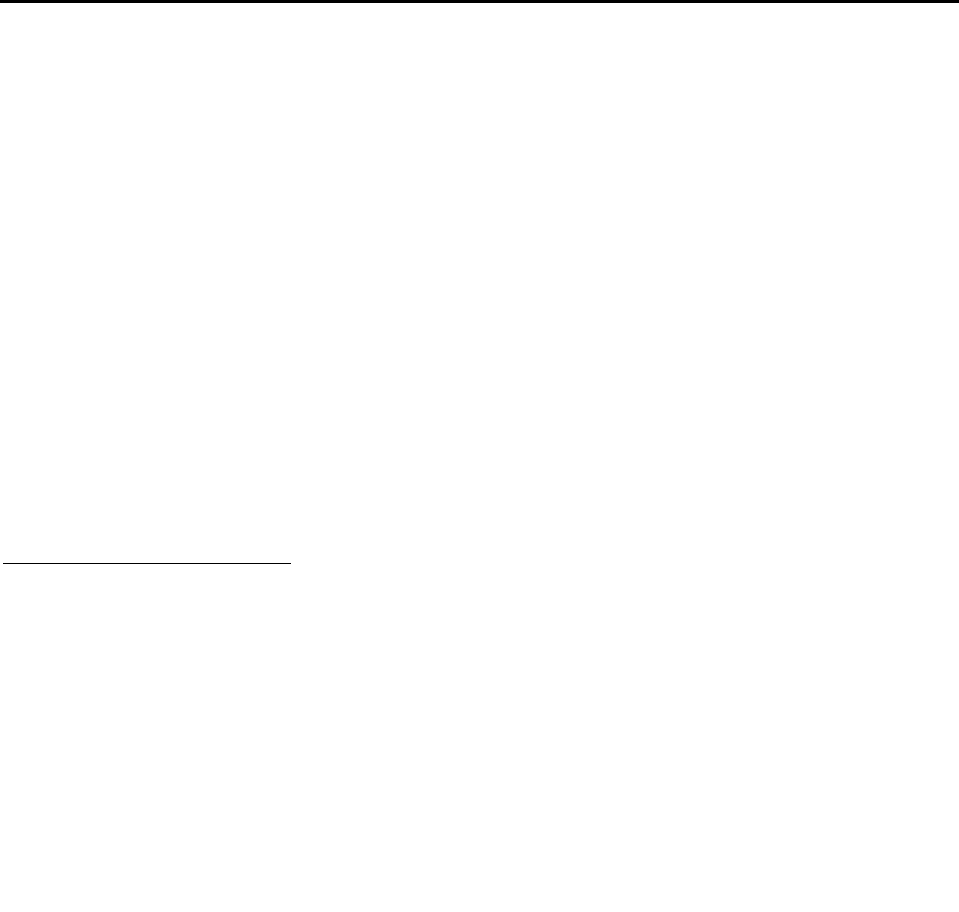
U.S. Copyright Office Section 512 Report
186
a) Notice-and-Staydown
The proposal that has attracted the most attention both from participants in the Study
982
and from outside commentators
983
is the adoption of a “staydown” requirement for OSPs.
984
One
proponent describes such a requirement as follows:
Once a webhost is on notice that a work is being infringed, it should not receive continued
safe harbor protection unless it takes reasonable measures to remove any copies of the
same work reposted by the same user and also takes down all infringing copies of the
work that bear the same reasonable indicia provided by the rightsholder.
985
Some form of staydown requirement was endorsed by rightsholders both big and small.
986
Rightsholders’ primary argument in favor of adopting a staydown requirement is that such an
approach is necessary to deal with the whack-a-mole problem: the reappearance on an online
982
Many rightsholders were in favor of the United States adopting a “staydown” provision. See, e.g., A2IM Music
Community Initial Comments at 22; Recording Academy Initial Comments at 6; Tr. at 229:13–21 (May 13, 2016) (Paul
Doda, Elsevier); Tr. at 28:21–29:4 (May 12, 2016) (Jay Rosenthal, ESL Music/ESL Music Publishing). Many OSPs and
user advocacy groups were strongly against the idea of adopting a “staydown” provision in the United States. See, e.g.,
Amazon Initial Comments at 9–10; Tr. at 276:22–277:2 (May 13, 2016) (Joshua Lamel, Re:Create); Tr. at 76:10–21 (May 2,
2016) (Ellen Schrantz, Internet Association).
983
See, e.g., Martin Husovec, The Promises of Algorithmic Copyright Enforcement: Takedown or Staydown? Which is Superior?
And Why?, 42 COLUM. J.L. & ARTS 53 (2018); ALDEN ABBOT ET AL., Creativity and Innovation Unchained: Why Copyright Law
Must be Updated for the Digital Age by Simplifying It, REGULATORY TRANSPARENCY PROJECT 26 (2017),
https://regproject.org/wp-content/uploads/RTP-Intellectual-Property-Working-Group-Paper-Copyright.pdf; Chris
Sprigman & Mark Lemley, Op-Ed: Why Notice-and-Takedown is a Bit of Copyright Law Worth Saving, L.A. TIMES (June 21,
2016), https://www.latimes.com/opinion/op-ed/la-oe-sprigman-lemley-notice-and-takedown-dmca-20160621-snap-
story.html.
984
Most staydown proposals were based, at least in part, on the provision in Article 17(4) of the EU Directive on
Copyright and Related Rights in the Digital Single Market that makes an online content-sharing service provider liable
for infringement resulting from its users’ uploads unless it makes “best efforts” to prevent future uploads of
unauthorized copyright-protected works. Directive EU 2019/790 of the European Parliament and of the Council of 17
April 2019 on Copyright and Related Rights in the Digital Single Market and amending Directives 96/9/EC and
2001/29/EC, art. 17(4), 2019 O.J. (L. 130/92).
985
See Authors Guild Initial Comments at 12 (emphasis in original).
986
See, e.g., Don Henley, Additional Comments Submitted in Response to U.S. Copyright Office’s Nov. 8, 2016, Notice of
Inquiry at 2 (Feb. 21, 2017) (“I ask the Copyright Office and Congress to require that online providers prevent the
reposting of content for which they have [] received a takedown notice as a condition of safe harbor protection–that is,
to require not just ‘notice and takedown,’ but ‘notice and staydown.’”); Tr. at 115:17–116:5 (May 12, 2016) (Eric Cady,
IFTA) (“IFTA members are primarily small-to medium-size companies that produce and sell motion pictures and
television programs around the world . . . . We advocate for a notice and staydown provision.”); Tr. at 172:4–8 (May 3,
2016) (Alisa Coleman, ABKCO Music & Records); Tr. at 39:7–9 (May 2, 2016) (David Kaplan, Warner Brothers
Entertainment Inc.); Tr. at 30:11–16 (May 2, 2016) (Deborah Robinson, Viacom).

U.S. Copyright Office Section 512 Report
187
service (often in short order) of content that was already the subject of a takedown notice.
987
In
discussing the whack-a-mole problem, rightsholders sometimes conflate two separate
phenomenon: (i) websites designed (in bad faith) with a “technological Pez dispenser” system
that creates a list of unique URLs for a given piece of content, “dispensing” the next URL once the
previous one has been removed due to a takedown notice;
988
and (ii) the repeated upload, often
by multiple users, of the same content to a single website both before and after a takedown notice
had been sent.
989
The former type of activity is likely to be outside the scope of what Congress
originally intended section 512 to govern. Bad-faith OSPs that encourage infringement also tend
to be rejected for safe harbor protections by most courts once litigation is brought.
990
Thus, this
type of activity likely requires a solution beyond just changing section 512, such as one focused
on coordinated enforcement activity. The latter activity is, to some degree, the inevitable result of
millions of users uploading hours of content a day in the absence of some form of filtering
technology or active monitoring by the OSP.
991
Many rightsholders argue that a staydown
requirement is particularly necessary to address the burden on small creators of policing
infringing content online.
992
As one Study commenter notes:
While . . . [staydown] would still require rights holders to monitor many different OSP’s
and to send complaints to any or all of them whenever infringing material was discovered,
this would be a heavy but finite and therefore reasonable burden. By contrast, in today’s
987
See Tr. at 120:15–121:7 (May 12, 2016) (Deron Delgado, A2IM) (noting that staydown measures could help deal with
whack-a-mole and repeat offenders); Tr. at 46:8–10 (May 2, 2016) (Kathy Garmezy, DGA) (emphasizing the importance
of staydown to address “the problem of content reappearing right away”).
988
See A2IM Music Community Initial Comments at 10–11 (describing the design of “Grooveshark and other rogue
actors” as an attempted DMCA work-around).
989
See, e.g., Tr. at 120:1–18 (May 12, 2016) (Deron Delgado, A2IM); Tr. at 86:11–22 (May 2, 2016) (Alisa Coleman, ABKCO
Music & Records); Tr. at 22:1–4 (May 2, 2016) (Maria Schneider, musician).
990
See, e.g., Grokster, 545 U.S. at 919. Some rightsholders dispute that those OSPs that have qualified for the safe harbors
are, in fact, good faith actors. See Tr. at 54:22–55:6 (May 2, 2016) (Victoria Sheckler, RIAA) (“I even had one . . .
considered legitimate service provider tell me that they did have several URLs . . . [that] are going to the same piece of
content[,] and if we sent a notice for one of those URLs, they would not take down the others because those others
might have authorization. And from our perspective, we don’t know who the user is that put that content up. We just
know that we did not authorize that content to be up on that site.”).
991
As of May 2019, more than 500 hours of video are uploaded to YouTube every minute. J. Clement, Hours of Video
Uploaded to YouTube Every Minute 2007–2019, STATISTA (Aug. 9, 2019), https://www.statista.com/statistics/259477/hours-
of-video-uploaded-to-youtube-every-minute/.
992
See, e.g., Anonymous, Anonymous, Comments Submitted in Response to U.S. Copyright Office’s Dec. 31, 2015,
Notice of Inquiry (Apr. 1, 2016) (“The only people who have the power to continually issue take down notices are
corporate entertainment industries. [Staydown] would help the small artists actually be able to make some kind of
living, or get some benefit for the work that they make.”); Robert Hansmann, Comments Submitted in Response to U.S.
Copyright Office’s Dec. 31, 2015, Notice of Inquiry (Apr. 1, 2016) (“Given the enormous number of sites making use of
copyrighted materials, there is no reasonable way in which a content owner can effectively track all incidences of
copyright infringement.”).

U.S. Copyright Office Section 512 Report
188
world and under current copyright law as practiced, that burden is effectively infinite and
therefore not reasonable.
993
The assumption of most commentators during the Study was that an OSP could address
the second whack-a-mole concern and comply with a staydown requirement through
technological means,
994
either via a sui generis content filtering system developed by that OSP,
such as YouTube’s Content ID system,
995
or off-the-shelf filtering technologies, such as that offered
by Audible Magic.
996
As one panelist states,
[S]o many problems of infringement are driven by technology, so technology-based
solutions are definitely the way to go. We have seen that filtering mechanisms,
fingerprinting, and watermarking are available, are possible, and[,] even if they are not
perfect, they are a great way to start. And they actually would provide more effectiveness
rather than more efficiency to the DMCA notice-and-takedown.
997
993
Paul Vixie, Comments Submitted in Response to U.S. Copyright Office’s Dec. 31, 2015, Notice of Inquiry at 2 (Mar.
31, 2016).
994
But as several Study participants note, while there are already commercially available filtering systems for audio-
visual works, the picture is more complicated with respect to other types of works and smaller platforms. See, e.g.,
Internet Association Initial Comments at 17 (technologies used for “staydown,” such as Content ID are not “feasible
options for many platforms and users.”); OTW Additional Comments at 3; Tr. at 10:22–11:4 (May 13, 2016) (Joseph
Gratz, Dure Tangri, LLP) (“Technology, for example, is better suited to video hosting sites to identify full-length
audiovisual works and it’s suited very poorly to personal blogs and use of text or images on personal blogs.”); Tr. at
60:2–6 (May 13, 2016) (Charles Roslof, Wikimedia Foundation) (“We host a wide variety of content, including text,
video, audio and images in a wide variety of file formats. And I don’t think there’s any existing solution that could
handle all of that.”).
995
For a brief description of how Content ID works, see Google Additional Comments at 2–4. See also How Content ID
Works, YOUTUBE HELP, https://support.google.com/youtube/answer/2797370. It is worth noting, however, that Content
ID was not without its detractors during the course of the Study, despite the significant resources that went into
building it. While some rightsholders seemed to be primarily concerned with the fact that smaller entities were not
given access to Content ID or that access required agreeing to license your work for use by YouTube, several small
creators and representatives of users’ interest groups complained about a high anecdotal incidence of improperly
flagged content. See, e.g., OTW Initial Comments at 13 (“[T]here are numerous reports of misidentification and abuse of
Content ID by claimants who don’t even have legitimate claims to components of user-uploaded videos.”); Tr. at
174:10–19 (May 12, 2016) (Daphne Keller, Stanford Law School Center for Internet and Society); Tr. at 259:13–22 (May 2,
2016) (Rebecca Prince, Becky Boop) (“Using YouTube as an example . . . they have Content ID which automatically
scans your content to see if there’s a match . . . . [J]ust because it is copyrighted doesn’t mean it might not be able to be
used. So even though I might be speaking over that clip, even though I am critiquing that clip . . . it is [automatically]
being blocked worldwide.”).
996
For a description of how Audible Magic music fingerprinting works, see Audible Magic Initial Comments at 3–5.
Audible Magic’s system was used by Google for audio content fingerprinting before the development of Content ID,
and is still in use by Facebook and other platforms. See id. at 4, 7; Tr. at 297:10–12 (Apr. 8, 2019) (Christopher Randle,
Facebook).
997
Tr. at 15:6–14 (May 3, 2016) (Sofia Castillo, AAP).

U.S. Copyright Office Section 512 Report
189
Opponents of a staydown system, including OSPs and user advocacy groups, note several
concerns with such a system. First among these is concern about the impact such filtering
technologies would have on free expression and speech interests.
998
Many opponents note that
technology cannot determine whether use of rightsholders’ material included in uploaded
content is done pursuant to a license or constitutes fair use.
999
Even after the potential advent of
such technological capabilities, some commenters fear a staydown requirement would turn OSPs
into “gatekeepers” of online speech.
1000
Some users and online content creators argue that OSPs
had already become such gatekeepers as a result of section 512 and DMCA+ systems like Content
ID, which they maintain regularly sweeps up content they believe makes fair use of third-party
materials along with infringing content, and should be scaled back even from current
standards.
1001
Additionally, some OSPs voice concern that takedowns resulting from filtering
technologies would impact non-profit resources like open source repositories and Wikipedia in a
particularly negative way.
1002
In response to these concerns, some rightsholders sought to narrow
the focus to content that is identical to the noticed content, or to full-length content.
1003
OSPs,
however, resist the idea that filtering for full-length content is an appropriate application of a
998
Tr. at 293:15–19 (Apr. 8, 2019) (Corynne McSherry, EFF) (“[W]e expect we’re going to see the adoption [by OSPs] of
upload filters across Europe in order to avoid liability, [and] those filters are inevitably going to flag lawful as well as
potentially infringing content.”). See also Bridy & Keller Initial Comments at 17 (“Whatever one thinks of this drastic
shift in burden between intermediaries and copyright owners [as a result of a staydown requirement] . . . the impact on
Internet users could only be bad. Their expressive rights would be predictably compromised by both ‘human’ and
‘automated’ monitoring.”).
999
See, e.g., Yahoo Initial Comments at 10–11 (“[There are] enormous technical and philosophical challenges with
permanently suppressing material across an entire online ecosystem [through staydown] . . . . [I]nevitably there are
contexts in which use of the material in question is NOT infringing, either because it is authorized . . . or because a
given use falls within an exception to copyright such as fair use.”).
1000
CDT/R St. Initial Comments at 3.
1001
See, e.g., Andrea Austin, Comments Submitted in Response to U.S. Copyright Office’s Dec. 31, 2015, Notice of
Inquiry (Apr. 1, 2016); Rajan Awasthi, Comments Submitted in Response to U.S. Copyright Office’s Dec. 31, 2015,
Notice of Inquiry (Apr. 1, 2016); Steven Berliner, Comments Submitted in Response to U.S. Copyright Office’s Dec. 31,
2015, Notice of Inquiry (Apr. 1, 2016); Orion Burk-Poole, Comments Submitted in Response to U.S. Copyright Office’s
Dec. 31, 2015, Notice of Inquiry (Apr. 1, 2016); James Church, Comments Submitted in Response to U.S. Copyright
Office’s Dec. 31, 2015, Notice of Inquiry (Apr. 1, 2016); Chad Wild Clay, Comments Submitted in Response to U.S.
Copyright Office’s Dec. 31, 2015, Notice of Inquiry (Apr. 1, 2016); Ashley Zugnoni, Comments Submitted in Response
to U.S. Copyright Office’s Dec. 31, 2015, Notice of Inquiry (Apr. 1, 2016).
1002
See, e.g., Wikimedia Additional Comments at 11–12; Tr. at 312:20–313:7 (Apr. 8, 2019) (Abby Vollmer, GitHub)
(noting the potential effect of improper filtering on open source software projects, and that the result would be “a
broken software project”).
1003
See, e.g., Tr. at 116:12–18 (May 12, 2016) (Eric Cady, IFTA) (“IFTA’s position is that we advocate for staydown after
the ISP is notified of [full-length] content, particularly in the pre-release stage when a pirated film is made available
online without authorization in that pre-release period, which can devastate the member company’s business.”); Tr. at
92:6–9 (May 2, 2016) (Kathy Garmezy, DGA); Tr. at 91:18–22 (May 2, 2016) (David Kaplan, Warner Brothers
Entertainment Inc.). Cf. Urban et al. Empirical Study at 60 (describing the views of a rightsholder respondent, who
“favors systems that put up barriers to reposting content identical—i.e., identified through traditional hash matching
rather than looser fingerprinting algorithms—to what has already been taken down”).

U.S. Copyright Office Section 512 Report
190
staydown requirement, maintaining that rightsholders should continue to address each
appearance of the same content on an individual basis.
1004
Another oft-expressed concern is that requiring filtering technology could serve as an anti-
competitive barrier to entry that has the effect of entrenching the market dominance of current
platforms that have already invested significant time and money to develop sui generis filtering
technology like Content ID.
1005
As one participant puts it, such a requirement “does not lend itself
to small startups who are trying to innovate in a very crowded space with deeply entrenched
players.”
1006
While the DSM Copyright Directive does contain exemptions for smaller and new
entrants,
1007
several participants question the advisability or workability of such exemptions, with
one commenter noting that they create “perverse incentives to try to stay under those numbers[]
and not grow your company in a more organic way.”
1008
Finally, some OSPs note technological
and legal difficulties with implementing a true notice-and-staydown system.
1009
The likelihood that filters will become an anti-competitive barrier to entry depends in part
upon the market availability of third-party filtering technologies offered at a reasonable price on
non-discriminatory terms. While Audible Magic and Pex describe their offerings as being up to
the task, a potential anti-competitive concern remains to the extent that either of these
technologies are available only from a single source and do not have competitors offering equally
effective technology in the marketplace. The Copyright Office did not attempt a full-scale
investigation of marketplace availability and terms for such third-party filtering technologies, but
notes that that such an examination would be recommended before adopting any requirement
that would impose the use—either explicitly or implicitly—of filtering technologies.
1004
See, e.g., Tr. at 84:4–7 (May 3, 2016) (Matthew Schruers, CCIA) (arguing that the use of full-length content can
sometimes be fair use, and thus is not an appropriate proxy for infringement to be used in filtering decisions); Tr. at
78:2–4 (May 2, 2016) (Andrew Deutsch, DLA Piper) (declining to agree that filtering is appropriate addressing the
question of unlicensed, full length content, stating “[t]hat’s the job of direct copyright action by copyright owners
against the website”).
1005
See, e.g., Tr. at 329:6–330:2 (Apr. 8, 2019) (Corynne McSherry, EFF); Tr. at 330:18–331:20 (Apr. 8, 2019) (Rachel
Wolbers, Engine) (describing the EU DSM Copyright Directive’s carve-outs for GitHub and Wikimedia as “essentially
writing in companies that will now have an advantage and a leg up in their business model,” and noting that
mandating filtering technology would likewise serve to entrench companies like Google and Facebook, since “they now
have legislation that’s written in a way that helps protect their business models from potential new incumbents or new
entrants into the marketplace.”).
1006
Tr. at 23:21–24:1 (May 13, 2016) (Jeff Lyon, Fight for the Future).
1007
See Directive EU 2019/790 of the European Parliament and of the Council of 17 April 2019 on Copyright and Related
Rights in the Digital Single Market and Amending Directives 96/9/EC and 2001/29/EC, art. 17(6), 2019 O.J. (L. 130/92).
1008
Tr. at 331:1–7 (Apr. 8, 2019) (Rachel Wolbers, Engine).
1009
See, e.g., Google Initial Comments at 9–10 (enumerating concerns with implementation of a staydown requirement
and concluding that “it is both legally and technically difficult to imagine that a ‘staydown’ obligation could feasibly be
imposed on all OSPs that are covered by the DMCA safe harbors”).

U.S. Copyright Office Section 512 Report
191
There are reasons to be cautious regarding the adoption of a general staydown
requirement for OSPs. As noted above, adoption of a staydown requirement, with or without an
affirmative filtering requirement for all (or even most) OSPs, would represent a fundamental shift
of intermediary liability policy in the United States.
1010
The Office does not currently have
empirical evidence from countries that have adopted a widely-applicable staydown requirement
along the lines of what many rightsholders support, making it difficult to gauge the efficacy of
such a system, or to measure the potential speech and competition externalities that may result
from a widely-applicable filtering requirement. While a number of decisions by the Court of
Justice of the European Union (CJEU) have supported some version of a staydown requirement
when the requirement meets the proportionality test,
1011
the CJEU has explicitly rejected a
broadly-applicable filtering requirement for OSPs.
1012
Similarly, although lower courts in France
initially adopted a staydown requirement for infringing content, the high court rejected such a
requirement in 2012.
1013
Although many interpret Article 17 of the DSM Copyright Directive as
adopting a staydown requirement that requires the use of filtering technologies, most countries in
the European Union are still in the process of implementing the Directive into their national law,
a process that does not have to be complete until June 2021.
1014
1010
One Study comment referred to such a change as “no mere adjustment to the DMCA’s balance of burdens; it would
be closer to a demolition of the DMCA’s existing structure.” Bridy & Keller Initial Comments at 17. It is likely true that
universal notice-and-staydown requirement is outside the purview of what Congress envisioned in 1998. On the other
hand, as discussed in section VI.A.2 above, it is unlikely that Congress would have understood themselves to be
creating a regime that required a separate notice for every individual URL on which an instance of infringing content
appears, even when such infringing content already co-existed on the service alongside the instance that was the subject
of a takedown notice.
1011
See, e.g., Case C-324/09, L’Oréal SA et al. v. eBay International AG et al., [2011] ECR, I-06011, para. 127, 134,
http://curia.europa.eu/juris/document/document.jsf?text=&docid=107261&pageIndex=0&doclang=en&mode=lst&dir=&
occ=first&part=1&cid=197042 (OSPs can be required to use word filtering to “not only to bringing to an end
infringements of those rights by users of that market-place, but also to preventing further infringements of that kind.”).
1012
See Case C-360/10, Belgische Vereniging van Auteurs, Componisten en Uitgevers CVBA (SABAM) v. Netlog NV, [2012] 2
CMLR 18, para. 38, http://curia.europa.eu/juris/document/document.jsf?text=&docid=119512&pageIndex=0
&doclang=en&mode=lst&dir=&occ=first&part=1&cid=196613 (injunction requiring a hosting provider to install a
filtering system is incompatible with Art. 15 of the EU E-Commerce Directive); Case C-70/10, Scarlet Extended SA v.
Société belge des auteurs, compositeurs et éditeurs SCRL (SABAM), [2011] ECR, I-1959, para. 40, http://curia.europa.eu/juris/
document/document.jsf?text=&docid=115202&pageIndex=0&doclang=en&mode=lst&dir=&occ=first&part=1&cid=19846
1 (restating the principles in favor of access providers).
1013
See Bac Films v. Google Inc. Civ. 1ère, 12 juillet 2012, Bull. civ. 1, nº 11-13666, https://www.legifrance.gouv.fr/
affichJuriJudi.do?idTexte=JURITEXT000026181926 (Fr.); André Rau vs. Google & Aufeminin.com Civ. 1ère, 12 juillet
2012, Bull civ. 1, nº 11-15165 11-15188, http://www.dalloz-actualite.fr/document/civ-1re-12-juill-2012-fs-pbi-n-11-15165
(Fr.).
1014
Note, however, that Germany has expressed its desire to implement Article 17 in a manner that avoids the use of
“’upload filters’ wherever possible.” Council of the European Union, Statement by Germany, 15 Apr. 2019, 7986/19
ADD 1 REV 2 (Interinstitutional File: 2016/0280(COD)), at ¶ 2, https://data.consilium.europa.eu/doc/document/ST-7986-
2019-ADD-1-REV-2/en/pdf. Two German professors have now put forth a legislative proposal that would implement
Article 17 in German law without requiring the widespread use of upload filters, instead relying upon a form of
extended collective licensing for uploaded content. See Rolf Schwartmann & Christian-Henner Hentsch, Stufenkonzept

U.S. Copyright Office Section 512 Report
192
A number of Study participants point to Germany’s Störerhaftung
1015
principle as an
example of a staydown regime that is already working in practice, but that doctrine appears to be
significantly more cabined than the type of staydown system advocated during the Study.
1016
In a
2013 opinion elaborating upon the doctrine, the German Federal Supreme Court found that
RapidShare had a heightened obligation to search for and remove additional copies of infringing
content as a result of the characteristics of the platform and associated marketing. The court cited
the following facts to support such a heightened obligation:
[I]ts structure bears the risk of massive copyright infringements, to an extent which
permits making the Defendant subject to significantly increased examination and action
obligations in order to prevent copyright infringements; [] the Defendant had gone
beyond the position of a neutral intermediary; [] at the time the infringements were
committed . . . Defendant had significantly targeted its service . . . at the massive
committing of copyright infringements; [] private users were encouraged to distribute the
uploaded files as widespread and extensively as possible; [] it is obvious that a download
frequency of more than 100,000 acts [as advertised by Defendants] cannot be reached
within the framework of confidential commercial or private communications, but only
with highly attractive, and therefore usually unlawful, content; [and] the Defendant
furthermore significantly enhanced unlawful activities via its service through the
awarding of Premium Points which was linked to the frequency of file download.
1017
To date, German courts have not interpreted Störerhaftung to require adoption of a universal
notice-and-staydown system, nor have they applied it to service providers dedicated to hosting
general user generated content, some of which may contain infringing material.
1018
In fact,
zur Umsetzung von Art. 17 der DSM-Richtlinie: Stufenkonzept gegen Overblocking durch Uploadfilter, KÖLNER
FORSCHUNGSSTELLE FÜR MEDIENRECHT DER TH KÖLN (Mar. 27, 2020), https://www.medienrecht.th-koeln.de/relaunch/wp-
content/uploads/2020/03/2020-03-03-Umsetzungsvorschlag-Art.-17.pdf (Gr.). For a discussion of the proposal in
English, see Paul Keller, A Better Way to Implement Article 17? New German Proposal to Avoid Overblocking, COMMUNIA
(Apr. 15, 2020), https://www.communia-association.org/2020/04/15/better-way-implement-article-17-new-german-
proposal-avoid-overblocking/.
1015
Translated generally as “breach of duty of care.”
1016
For an overview of German case law applying the Störerhaftung doctrine, see generally Jan Bernd Nordemann,
Liability for Copyright Infringements on the Internet: Host Providers (Content Providers)—The German Approach, 2 J. INTELL.
PROP., INFO. TECH. & ELECTRONIC COM. L. 37 (2011), https://www.jipitec.eu/issues/jipitec-2-1-2011/2962/
JIPITEC_Nordemann.pdf.
1017
Rapidshare AG v. Walther de Gruyter GmbH & Co. KG, Bundesgerichtshof [BGH] [Federal Court of Justice] Case
No. I ZR 79/12 (Aug. 15, 2013), NJW 2013, 3245 ¶ 13. An English translation of the case is available at
https://stichtingbrein.nl/public/2013-08-15%20BGH_RapidShare_EN.pdf.
1018
In fact the German high court rejected application of filtering requirements for UGC websites. OLG München,
Urteil v. 28.01.2016 (29 U 2798/15) ZUM 2016, https://www.gesetze-bayern.de/Content/Document/Y-300-Z-BECKRS-B-
2016-N-03388 (Ger.) (ruling against GEMA, a performers’ rights organization in Germany, in holding that YouTube
could not be held liable for damages for hosting copyrighted content without the copyright holder’s permission). The
German high court, however, has found that search providers can be required to use general word filters.

U.S. Copyright Office Section 512 Report
193
German courts have stated that Störerhaftung only applies after the content owner has taken
reasonable actions against either the user that originally committed the infringement or the
service provider.
1019
For these reasons, it is the opinion of the Office that a general staydown requirement
and/or mandatory OSP filtering should be adopted, if at all, only after significant additional
study, including of the non-copyright implications they would raise.
1020
In particular, the Office
believes that it would be advisable to wait until the DSM Copyright Directive has been
implemented in many of the EU member states in order to study the real-world impacts of such a
requirement.
b) Website Blocking
Some rightsholders also advocated for a more extensive system of no-fault injunctions to
address websites primarily dedicated to piracy.
1021
As Professor Urban noted in her study, many
of these websites are located abroad, beyond U.S. jurisdiction, which insulates them from any
likelihood of being forced to pay millions of dollars in statutory damages.
1022
Rightsholders
supporting the proposal of expanded injunctive relief report that such systems have been largely
effective in addressing the most egregious cases of infringement.
1023
There are different technologies and mechanisms available for blocking and filtering
websites primarily dedicated to copyright infringement. Most website blocking techniques block
websites either by preventing the users’ computer from resolving or accessing the domain name
(such as “copyright.gov”), or by denying access to the Internet Protocol address (“IP”) (such as
140.147.239.123) address at which the website is located.
1024
The three most widely used
Bundesgerichtshof [BGH] [Federal Court of Justice], Urteil v. 21.09.2017 (ZR 11/16) NJW 2018, 772, ¶¶ 69–70,
https://perma.cc/9R2V-HKV5.
1019
See LG München, Urteil v. 1.2.2018 (7 O 17752/17) BeckRS 2018, 2857 at 6 (English translation)
http://copyrightblog.kluweriplaw.com/wp-content/uploads/sites/49/2018/05/Translation-of-Decision-of-District-Court-
Munich.pdf).
1020
The Office agrees with those rightsholders that argue there is already adequate real-world evidence to support the
adoption of such requirements for a small subsection of OSPs, in particular file sharing services and other websites
primarily geared towards facilitating infringement. The Office believes, however, that most of these services properly
fall outside of the section 512 safe harbors, arguing in favor of liability for such services even in the absence of filtering
requirements. See supra section VI.A.1.c. Thus, the adoption of filtering requirements for such websites, in addition to
being unlikely to result in compliance, may further result in sowing confusion regarding whether such websites are
entitled to claim the protections of a safe harbor.
1021
See, e.g., AAP Additional Comments at 22; MPAA Additional Comments at 22–23. Prof. Urban notes a split among
rightsholders regarding support for additional website blocking authority. Urban et al. Empirical Study at 62–63.
1022
Urban et al. Empirical Study at 62.
1023
See, e.g., MPAA Additional Comments at 22; Tr. at 302:1–6 (Apr. 8, 2019) (Lui Simpson, AAP).
1024
At a very high level, in order to access a website, a user typically inputs the domain name/URL of the website they
wish to visit. The Domain Name Service (DNS) (which can be hosted by either the ISP or a third party service) then
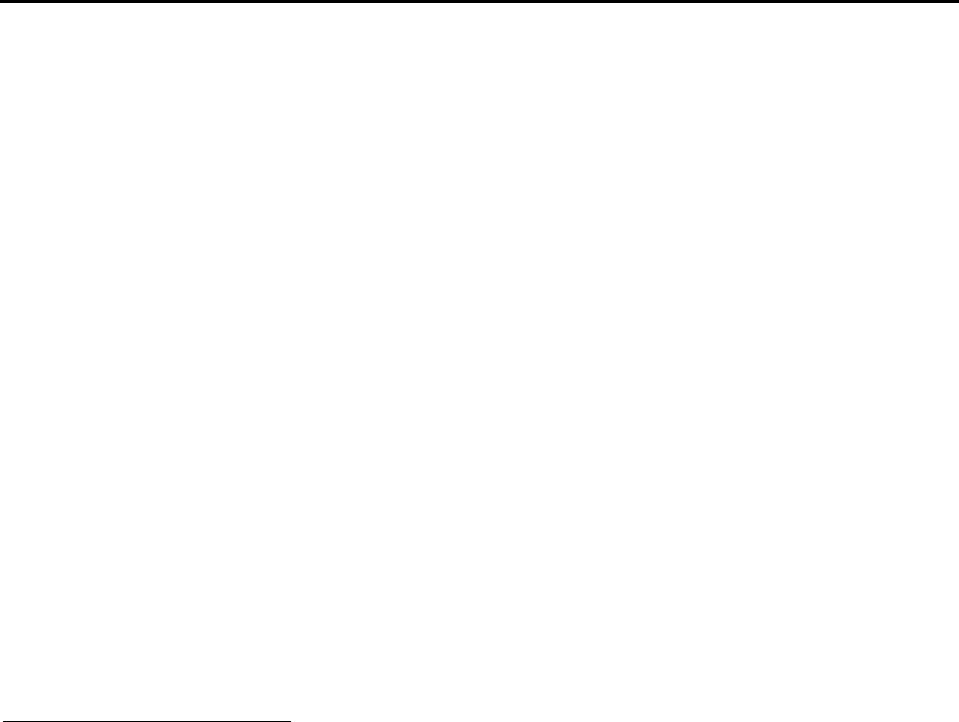
U.S. Copyright Office Section 512 Report
194
techniques for website blocking are: (i) an ISP (or other provider) can remove the listing for that
domain name from the Domain Name System (“DNS”), resulting in the user’s computer being
unable to locate the website’s IP address and thus unable to access the website (this is known
generally as “DNS blocking” or “DNS filtering”); (ii) the ISP can apply a filter that inspects all
outgoing web traffic and either blocks access to particular listed websites (a “black list”) or allows
access only to particular listed websites (a “white list”) (this technique is usually known as “URL
blocking” or “URL filtering”; or (iii) the ISP can block traffic to the website’s IP address directly,
without changing the DNS registry (this is known generally as “IP blocking” or “IP filtering”).
1025
While there are various arguments as to why one method is more effective (and thus “better”),
1026
the end result is often the same: non-determined users either receive an error message or are
redirected to an alternative location.
During the Study, OSPs and user advocacy groups argue against expanded website
blocking relief on both technical
1027
and policy grounds.
1028
EFF echoes a number of website
blocking opponents when it asserts that website blocking systems “introduce dangerous
mechanisms for Internet censorship, interfere with users’ fundamental rights, and, often, prove
ineffective in solving the problem of online copyright infringement.”
1029
On the technical front,
several commenters point to the ineffectiveness of certain types of blocking.
1030
In response to
these draw backs, proponents note the importance of a system that allows rightsholders to
efficiently update any injunctions to address technological attempts to evade blocks.
1031
resolves the domain name by matching it to the corresponding Internet Protocol (IP) address, which is the numerical
location code for the server hosting the website. See How the Domain Name System (DNS) Works, VERISIGN,
https://www.verisign.com/en_US/website-presence/online/how-dns-works/index.xhtml.
1025
INTERNET SOC’Y, PERSPECTIVES ON INTERNET CONTENT BLOCKING: AN OVERVIEW 8–9 (Mar. 2017),
https://www.internetsociety.org/wp-content/uploads/2017/03/ContentBlockingOverview.pdf.
1026
CORY, HOW WEBSITE BLOCKING IS CURBING DIGITAL PIRACY 8–11 (discussing the advantages of different forms of
blocking mechanisms).
1027
See ICC Initial Comments at 2 (stating that “[t]he open nature of the Internet makes eradication of infringement
impossible and website blocking ineffective”); see also INST. FOR INFO. LAW, FILESHARING 2©12: DOWNLOADING FROM
ILLEGAL SOURCES IN THE NETHERLANDS 37 (2012), https://www.ivir.nl/publicaties/download/174.pdf.
1028
See, e.g., EFF, Additional Comments Submitted in Response to U.S. Copyright Office’s Nov. 8, 2016, Notice of
Inquiry at 19–20 (Feb. 21, 2017) (“EFF Additional Comments”).
1029
See, e.g., EFF Additional Comments at 19.
1030
See, e.g., EFF Additional Comments at 19; Tr. at 364:18–365:6 (Apr. 8, 2019) (Stan Adams, CDT) (noting that the
increasing use of private DNS operators poses a challenge for ISPs to enact DNS-based website blocking).
1031
See, e.g., Tr. at 353:2–15 (Apr. 8, 2019) (Lui Simpson, AAP) (“I will note that[,] because it is of limited jurisdiction,
there are limits to the effectiveness of this particular remedy [website blocking]. Obviously, a site when it is blocked on
a particular or within a particular jurisdiction, sometimes the operator of that website will simply try and move to a
different server . . . . [I]n Europe . . . . [t]he orders themselves can be amended, so that the new sites . . . can then be
included in the previous orders.”).

U.S. Copyright Office Section 512 Report
195
According to opponents, free speech concerns are particularly implicated by any website
blocking mechanism targeted at the domain name or IP address level, because the block applies
to the an entire website (or group of websites), not just the page(s) that contain infringing
content.
1032
These concerns are not alleviated by assertions by rightsholders that the use of such
injunctive remedies could be limited to websites primarily intended to facilitate piracy, as they
point to incidences where website blocking orders, particularly those based on IP blocking, have
been improperly implemented, such as one incidence in Australia where almost 250,000 websites
that shared an IP address with the target website were inadvertently blocked.
1033
As many of the
user advocacy groups and OSPs note, free speech concerns are particularly impacted by IP
blocking—because a single IP address is often shared by multiple sites, it can lead to over-
blocking by restricting access to unrelated, otherwise legal sites.
Unlike universal staydown requirements, there is some (limited) empirical evidence from
a number of countries regarding the use injunctive relief, most often in the form of website
blocking orders. As noted earlier, more than 40 countries have adopted or have an obligation to
adopt some form of no-fault injunctive relief against pirate websites, although only about two
dozen actually issued such website blocking orders between 2006 and 2018.
1034
While some of
these jurisdictions have fewer protections for free speech (as compared to the familiar First
Amendment principles here in the United States), proponents point to the European Union, in
particular Article 8(3) of the InfoSoc Directive, as a model for updating U.S. intermediary liability
law.
1035
Nonetheless, the data regarding the efficacy of website blocking versus the impact on free
1032
See Domain Name System (DNS), ELECTRONIC FRONTIER FOUNDATION, https://www.eff.org/free-speech-weak-link/dns
(“[DNS blocking] can prevent users from accessing lawful as well as unlawful speech, in part because it is often easier
for ISPs and governments to prevent access to entire domain names, including lawful speech on rather than precisely block
access to specific objectionable content.”); CDT, THE PERILS OF USING THE DOMAIN NAME SYSTEM TO ADDRESS UNLAWFUL
INTERNET CONTENT 2-3 (2011), https://cdt.org/wp-content/uploads/pdfs/Perils-DNS-blocking.pdf.
1033
See Ben Grubb, How ASIC's Attempt to Block One Website Took Down 250,000, THE AGE (June 5, 2013, 10:29 AM),
https://www.theage.com.au/technology/how-asics-attempt-to-block-one-website-took-down-250000-20130605-
2np6v.html.
1034
See In the Matter of an Application Pursuant to Sections 24, 24.1, 36, and 701(a) of the Telecommunications Act, 1993 to
Disable On-line Access to Piracy Sites, Application Before the Canadian Radio-television and Telecommunications
Commission 4–6 (Mar. 29, 2018) (written intervention of the Motion Picture Association–Canada), reposted at
https://torrentfreak.com/images/mpa-can.pdf; Nigel Cory, The Normalization of Website Blocking around the World in the
Fight against Piracy Online, ITIF (June 12, 2018), https://itif.org/publications/2018/06/12/normalization-website-blocking-
around-world-fight-against-piracy-online.
1035
See, e.g., Tr. at 350:6–13 (Apr. 8, 2019) (Stan McCoy, Motion Picture Association EMEA) (“[A]rticle 8(3) [of the
InfoSoc Directive] has been in place now for 18 years. It’s functioning well. None of the dire consequences that have
sometimes been forecasted around injunctive relief measures like this have come to pass. And I want to emphasize, for
this audience in particular, the complementarity of an injunctive relief regime to the goals of a notice-and-takedown
regime.”). Member countries of the EU have taken different approaches to implementing such injunctive systems.
While many countries have made injunctive relief a judicial remedy, some countries like Italy, have implemented
website blocking through an administrative agency subject to judicial oversight. See, e.g., Ali Amirmahani, Digital
Apples and Oranges: A Comparative Analysis of Intermediary Copyright Liability in the United States and European Union, 30
BERKELEY TECH. L.J. 865, 883–894 (2015) (generally discussing blocking measures in the EU); Gianluca Campus, Italian
Public Enforcement of Online Copyright Infringement: New Powers and Procedures for AGCOM, KLUWER COPYRIGHT BLOG,

U.S. Copyright Office Section 512 Report
196
speech is limited and largely anecdotal—only a handful of countries in the EU have actually
issued website blocking orders, and most empirical studies have focused almost exclusively on
whether such blocking orders have impacted piracy rates. While some of these studies report
statistically significant reductions in piracy,
1036
other studies have shown smaller or no
reductions.
1037
Thus, it is difficult to weigh the benefit of such orders against the potential speech
impacts, arguing in favor of additional, dedicated study before adopting such a proposal.
3. Legislation Targeting Third-Party Providers
Another possible method for addressing online infringement that has been discussed both
during the Study and outside of it is legislation targeting third-party OSPs that facilitate the
business operations of piracy websites.
1038
Such legislation would formalize the “follow-the-
money” approach currently undertaken voluntarily by a number of the larger payment
processors and advertising networks.
1039
As noted in the above discussion of the applicability of the four section 512 safe harbors,
the question of liability for payment processors has arisen in a few section 512 cases, but the only
court to address the question on the merits found the facilitation of infringement by payment
processors too attenuated to support vicarious liability.
1040
The Office is of the opinion that such
(Dec. 14, 2018), http://copyrightblog.kluweriplaw.com/2018/12/14/italian-public-enforcement-of-online-copyright-
infringement-new-powers-and-procedures-for-agcom/.
1036
See Brett Danaher et al., Website Blocking Revisited: The Effect of the UK November 2014 Blocks on Consumer Behavior at
16 (Apr. 18, 2016) (unpublished article), https://papers.ssrn.com/sol3/papers.cfm?abstract_id=2766795; see also
RETTIGHEDSALLIANCEN, ANNUAL REPORT 2017 5 (2018), https://rettighedsalliancen.dk/wp-
content/uploads/2018/08/ENGB_RettighedsAlliancen2018.pdf (noting average 75% decrease in Danish IP traffic to
piracy sites in the wake of DNS blocking orders); CORY, HOW WEBSITE BLOCKING IS CURBING DIGITAL PIRACY 12–17.
1037
See Michael Geist, The Case against the Bell Coalition’s Website Blocking Plan, Part 8: The Ineffectiveness of Website
Blocking, MICHAEL GEIST (Feb. 22, 2018), http://www.michaelgeist.ca/2018/02/case-bell-coalitions-website-blocking-plan-
part-8-ineffectiveness-website-blocking/ (and studies cited therein).
1038
See, e.g., Tr. at 129:8–12 (May 13, 2016) (Fred von Lohmann, Google) (“Frankly, we have said since SOPA that we
support legislation that would have addressed the payments and the ads, the follow-the-money issue. We’ve been a
consistent supporter of a follow-the-money approach because we think it’s effective.”); DEP’T OF COMMERCE INTERNET
POLICY TASK FORCE, COPYRIGHT POLICY, CREATIVITY, AND INNOVATION IN THE DIGITAL ECONOMY 67–70 (2013),
http://www.uspto.gov/sites/default/files/news/publications/copyrightgreenpaper.pdf.
1039
A TAG benchmarking study from 2017 found that revenue from premium ad placements on pirate websites had
been reduce to less than 20%. Ernst & Young, Measuring Digital Advertising Revenue to Infringing Sites: TAG US
Benchmarking Study (Sept. 2017), https://cdn2.hubspot.net/hubfs/2848641/Measuring%20digital%20advertising%20
revenue%20to%20infringing%20sites-1.pdf. WIPO has recently launched an online database to collect a list of pirate
websites in one location, with access available to member countries. See Building Respect for Intellectual Property, WIPO,
https://www.wipo.int/wipo-alert/en/. For more information on various follow-the-money programs, see supra section
IV.B.2.
1040
Perfect 10, Inc. v. Visa Int’l Serv. Ass’n, 494 F.3d 788, 806 (9th Cir. 2007). But see id., 494 F.3d at 810–11 (Kozinski, J.,
dissenting) (“[Payment processors] knowingly provide a financial bridge between buyers and sellers of pirated works,
enabling them to consummate infringing transactions, while making a profit on every sale. If such active participation
in infringing conduct does not amount to indirect infringement, it's hard to imagine what would. By straining to

U.S. Copyright Office Section 512 Report
197
issues are properly outside the scope of this Report, and notes that the parties likely to be affected
by such legislation were not participants in the Study process. Further, adoption of any such
proposals would necessarily include an evaluation of considerations beyond the copyright laws,
and are thus properly outside the scope of the current Study. Accordingly, the Office declines to
make a recommendation regarding such approaches.
VII. CONCLUSION
In this Report, the Copyright Office has comprehensively considered the question
Congress asked us to study: is the balance that Congress devised in section 512 more than twenty
years ago working for all concerned parties? In the DMCA, Congress intended to support the
continued development and growth of the then-nascent internet and e-commerce sectors. To
achieve that, Congress wanted to give OSPs greater certainty about their legal exposure, while
providing rightsowners with reasonable assurance that they would be protected from massive
online infringement. Section 512 and its safe harbors were designed to achieve those goals by
providing “strong incentives for service providers and copyright owners to cooperate to detect
and deal with copyright infringements that take place in the online networked environment.”
1041
The Copyright Office concludes that the balance Congress intended when it established
the section 512 safe harbor system is askew. The Office reviewed more than 92,000 written
comments, hosted five roundtables, and analyzed decades of case law. While OSPs, supported in
many aspects by user advocacy groups, report satisfaction with the current operation of the safe
harbors, that view is not shared by the other intended beneficiaries of the section 512 system,
including authors, creators, and rightsholders of all sorts and sizes. There is no doubt that the
internet, in all its various component parts, has grown successfully and exponentially over the
past two decades. However, despite the advances in legitimate content options and delivery
systems, and despite the millions of takedown notices submitted on a daily basis, the scale of
online copyright infringement and the lack of effectiveness of section 512 notices to address that
situation remain significant problems. While the Office is mindful of those creators who have
been able to leverage new technologies to their benefit, their economic success does not provide
comfort to the many other creators who have seen their livelihoods impacted drastically by
ongoing infringement of their works online and for which they can achieve no relief.
Additionally, even with some important cooperative efforts at the margins, the degree and breath
of cooperation between OSPs and rightsholders that was anticipated in 1998 has not come to full
fruition.
absolve defendants of liability, the majority leaves our law in disarray.”). See also CCBill, 488 F.3d at 1116 (rejecting the
plaintiff’s argument that a payment processor “is not eligible for immunity under § 512(a) because it does not itself
transmit the infringing material” and remanding to the district court for a determination of whether the payment
processor qualified as a section 512(a) mere conduit service provider).
1041
H.R. REP. NO. 105-796, at 72 (1998) (Conf. Rep.).

U.S. Copyright Office Section 512 Report
198
In our examination of the balance established in the congressional construction of section
512, the Office has outlined five principles that guided its review, identified its findings, and
made numerous recommendations to Congress for its consideration. These recommendations
cover areas of how OSPs qualify for the four safe harbors, how the various knowledge
requirements work in practice, and how the notice-and-takedown system operates. The Office is
not recommending any wholesale changes to section 512, instead electing to point out the
numerous areas where Congress may wish to fine-tune section 512’s current operation in order to
better balance the rights and responsibilities of OSPs and rightsholders, in alignment with its
objectives when it passed the DMCA. The Office also recommends several non-statutory areas of
untapped potential to increase the efficacy of the section 512 system and recommends additional
stakeholder and government focus in the areas of education, voluntary cooperation, and the use
of standard technical measures. The Office will be rolling out a new website—
copyright.gov/DMCA—that includes several educational and practical elements, including model
takedown notices and counter-notices.
Should Congress choose to continue to support the balance it devised in section 512 and
move forward on the legislative issues identified in this Report, then the Office harbors some
optimism that a path toward rebuilding the section 512 balance could be found. The Copyright
Office is also mindful that the opportunities and challenges faced by everyone in the online
environment—creators (large, medium, and small), OSPs (large, medium, and small), and users
(of all sizes and in many sectors)—are very different today than 1998. Congress could choose to
reevaluate how it perceives any balancing factors in the current environment, as well as consider
other new measures that would go beyond the current constructs of section 512. To that end, this
Report includes illustrative information on developments involving online intermediary liability
in other countries. It also identifies several proposals submitted by commenters on new
approaches that the Office sees as going beyond the original construct of section 512. For those
issues—specifically notice-and-staydown and website blocking—the Office believes that
additional study, including of potential non-copyright impacts with public input, would be
needed in order to explore the potential contours of any such future proposals. Those kinds of
legislative decisions, such as defining any new or revised balances in the section 512 system, are
in the hands of Congress, and the Office makes no recommendations with respect to those
decisions. The Copyright Office stands ready to continue our work to provide additional advice
to Congress.
Section 512 of title 17
u.S. copyright office
appendix a federal register notices

81862
Federal Register / Vol. 80, No. 251/ Thursday, December 31, 2015 / Notices
1
Pub. L. 105–304, 112 Stat. 2860 (1998).
2
See Internet Users, Internet Live Stats (Dec. 1,
2015), http://www.internetlivestats.com/internet-
users/#trend (In 1998, there were only 188 million
internet users; today, there are over 3.25 billion.).
3
See The History of Social Networking, Digital
Trends (Aug. 5, 2014), http://
www.digitaltrends.com/features/the-history-of-
social-networking/ (providing a timeline for the
development of social networks).
4
144 Cong. Rec. S11,889 (daily ed. Oct. 8, 1998)
(statement of Sen. Orrin Hatch).
5
See H.R. Rep. No. 105–551, pt. 2, at 21 (1998)
(noting that the DMCA, including section 512 of
title 17, ‘‘balance[s] the interests of content owners,
on-line and other service providers, and
information users in a way that will foster the
continued development of electronic commerce and
the growth of the [i]nternet’’).
6
Id. at 49–50.
7
S. Rep. No. 105–190, at 19 (1998).
8
See David Price, Sizing the Piracy Universe 3
(2013), http://www.netnames.com/digital-piracy-
sizing-piracy-universe (infringing bandwidth use
increased by 159% between 2010 to 2012 in North
America, Europe, and [the] Asia-Pacific, which
account for more than 95% of global bandwidth
use).
9
Register’s Perspective on Copyright Review:
Hearing Before the H. Comm. on the Judiciary,
114th Cong. 6 (2015) (statement of Maria A.
Pallante, Register of Copyrights and Director, U.S.
Copyright Office) (‘‘We are . . . recommending
appropriate study of section 512 of the DMCA . . .
. [T]here are challenges now that warrant a granular
review.’’); id. at 49 (statement of Rep. John Conyers,
Jr., Ranking Member, H. Comm. on the Judiciary)
(‘‘[T]here are policy issues that warrant studies and
analysis, including section 512, section 1201, mass
digitization, and moral rights. I would like the
Copyright Office to conduct and complete reports
on those policy issues . . . .’’).
[FR Doc. 2015–32908 Filed 12–30–15; 8:45 am]
BILLING CODE 4410–15–C
LIBRARY OF CONGRESS
U.S. Copyright Office
[Docket No. 2015–7]
Section 512 Study: Notice and Request
for Public Comment
AGENCY
: U.S. Copyright Office, Library
of Congress.
ACTION
: Notice of inquiry.
SUMMARY
: The United States Copyright
Office is undertaking a public study to
evaluate the impact and effectiveness of
the DMCA safe harbor provisions
contained in 17 U.S.C. 512. Among
other issues, the Office will consider the
costs and burdens of the notice-and-
takedown process on large- and small-
scale copyright owners, online service
providers, and the general public. The
Office will also review how successfully
section 512 addresses online
infringement and protects against
improper takedown notices. To aid in
this effort, and to provide thorough
assistance to Congress, the Office is
seeking public input on a number of key
questions.
DATES
: Written comments must be
received no later than 11:59 p.m.
Eastern Time on March 21, 2016. The
Office will be announcing one or more
public meetings to discuss issues related
to this study, to take place after initial
written comments are received, by
separate notice in the future.
ADDRESSES
: All comments should be
submitted electronically. Specific
instructions for the submission of
comments will be posted on the
Copyright Office Web site at http://
www.copyright.gov/policy/section512
on or before February 1, 2016. To meet
accessibility standards, all comments
must be provided in a single file not to
exceed six megabytes (MB) in one of the
following formats: Portable Document
File (PDF) format containing searchable,
accessible text (not an image); Microsoft
Word; WordPerfect; Rich Text Format
(RTF); or ASCII text file format (not a
scanned document). The form and face
of the comments must include the name
of the submitter and any organization
the submitter represents. The Office will
post all comments publicly in the form
that they are received. If electronic
submission of comments is not feasible,
please contact the Office using the
contact information below for special
instructions.
FOR FURTHER INFORMATION CONTACT
:
Jacqueline C. Charlesworth, General
Counsel and Associate Register of
Copyrights, by email at jcharlesworth@
loc.gov or by telephone at 202–707–
8350; or Karyn Temple Claggett,
Director of the Office of Policy and
International Affairs and Associate
Register of Copyrights, by email at kacl@
loc.gov or by telephone at 202–707–
8350.
SUPPLEMENTARY INFORMATION
:
I. Background
Congress enacted section 512 in 1998
as part of the Digital Millennium
Copyright Act (‘‘DMCA’’).
1
At that time,
less than 5% of the world’s population
used the internet,
2
and bulletin board
services were the popular online
platforms.
3
Even then, however,
Congress recognized that ‘‘the [i]nternet
. . . made it possible for information—
including valuable American
copyrighted works—to flow around the
globe in a matter of hours,’’ and, as a
consequence, copyright law needed to
be ‘‘set . . . up to meet the promise and
the challenge of the digital world.’’
4
In enacting section 512, Congress
created a system for copyright owners
and online entities to address online
infringement, including limitations on
liability for compliant service providers
to help foster the growth of internet-
based services.
5
The system reflected
Congress’ recognition that the same
innovative advances in technology that
would expand opportunities to
reproduce and disseminate content
could also facilitate exponential growth
in copyright infringement. Accordingly,
section 512 was intended by Congress to
provide strong incentives for service
providers and copyright owners to
‘‘cooperate to detect and deal with
copyright infringements that take place
in the digital networked environment,’’
as well as to offer ‘‘greater certainty to
service providers concerning their legal
exposure for infringements that may
occur in the course of their activities.’’
6
Congress was especially concerned
about the liability of online service
providers for infringing activities of
third parties occurring on or through
their services. To address this issue,
Congress created a set of ‘‘safe
harbors’’—i.e., limitations on copyright
infringement liability—‘‘for certain
common activities of service
providers.’’
7
But the safe harbors are not
automatic. To qualify for protection
from infringement liability, a service
provider must fulfill certain
requirements, generally consisting of
implementing measures to
expeditiously address online copyright
infringement.
Recent research suggests that the
volume of infringing material accessed
via the internet more than doubled from
2010 to 2012, and that nearly one-
quarter of all internet bandwidth in
North America, Europe, and Asia is
devoted to hosting, sharing, and
acquiring infringing material.
8
While
Congress clearly understood that it
would be essential to address online
infringement as the internet continued
to grow, it was likely difficult to
anticipate the online world as we now
know it—where, each day, users post
hundreds of millions of photos, videos
and other items, and service providers
receive over a million notices of alleged
infringement.
As observed by the House Judiciary
Committee’s Ranking Member in the
course of the Committee’s ongoing
multi-year review of the Copyright Act,
and consistent with the testimony of the
Register of Copyrights in that hearing,
the operation of section 512 poses
policy issues that warrant study and
analysis.
9
Section 512 has also been a
focus of the U.S. Department of
Commerce in recent years, which has
noted ambiguities in the application of
VerDate Sep<11>2014 16:49 Dec 30, 2015 Jkt 238001 PO 00000 Frm 00058 Fmt 4703 Sfmt 4703 E:\FR\FM\31DEN1.SGM 31DEN1
tkelley on DSK3SPTVN1PROD with NOTICES
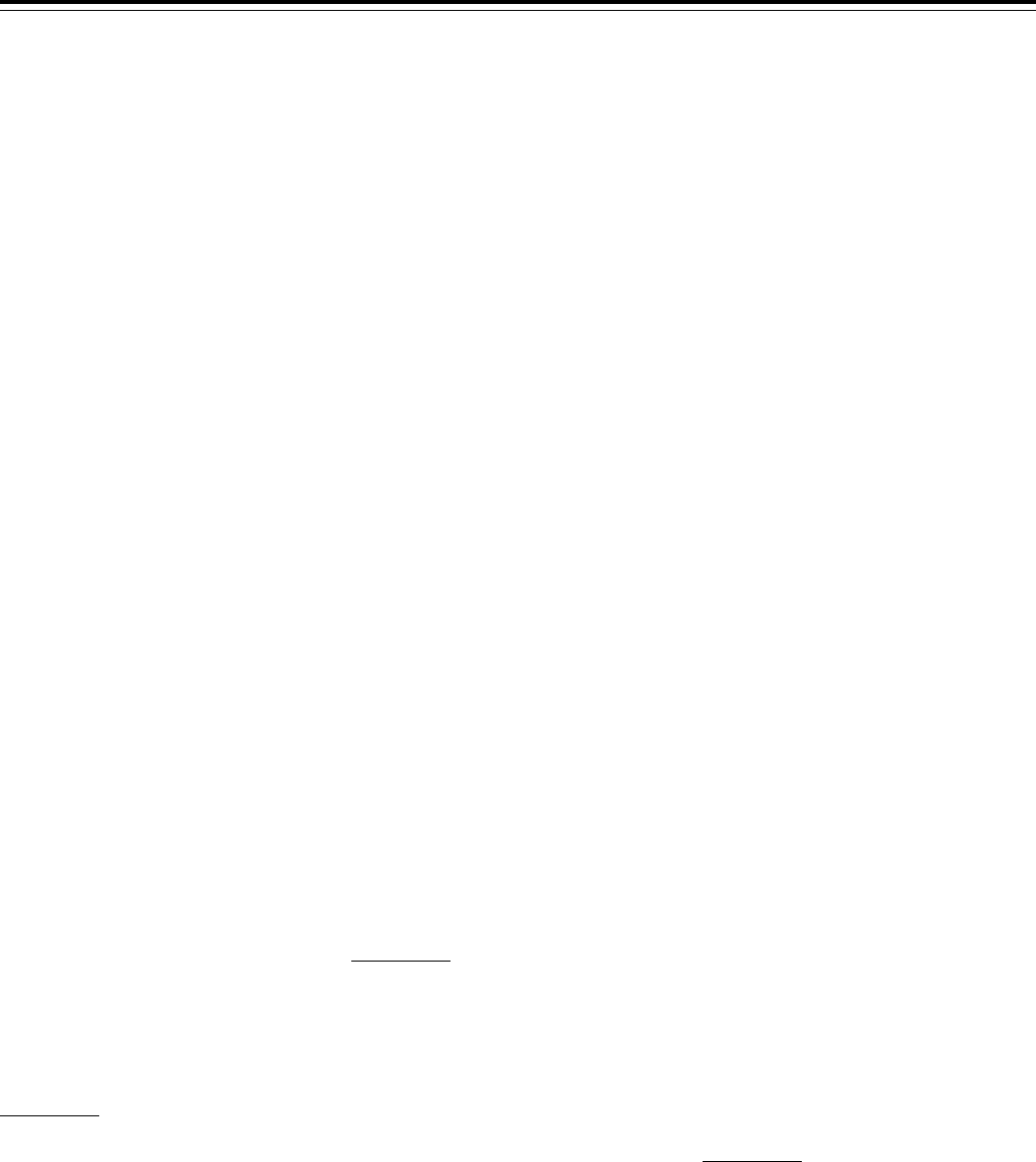
81863
Federal Register / Vol. 80, No. 251 / Thursday, December 31, 2015 / Notices
10
U.S. Dep’t of Commerce Internet Policy Task
Force, Copyright Policy, Creativity, and Innovation
in the Digital Economy 54, 56 (Jul. 2013), http://
www.uspto.gov/sites/default/files/news/
publications/copyrightgreenpaper.pdf (‘‘Copyright
Policy, Creativity, and Innovation in the Digital
Economy’’); Dep’t of Commerce Internet Policy Task
Force, DMCA Multistakeholder Forum, DMCA
Notice-and-Takedown Processes: List of Good, Bad,
and Situational Practices 3 (2015), http://
www.uspto.gov/sites/default/files/documents/
DMCA_Good_Bad_and_Situational_Practices_
Document-FINAL.pdf (‘‘Dep’t of Commerce
Multistakeholder Forum Recommended Practices’’).
11
17 U.S.C. 512(a)–(d).
12
Id. at 512(j)(1)(A).
13
Id. at 512(j)(1)(B).
14
A service provider must adopt, ‘‘reasonably
implement[ ],’’ and inform subscribers and account
holders of a policy ‘‘that provides for the
termination in appropriate circumstances of . . .
repeat infringers.’’ Id. at 512(i)(1)(A).
15
Id. at 512(i)(1)(B), (i)(2).
16
Id. at 512(b)(2)(E), (c)(1)(C), (d)(3). The process
for notification under the 512(c) and (d) safe
harbors is set out in 512(c)(3); the process differs
somewhat under the 512(b) safe harbor in that, in
addition to following the requirements of 512(c)(3),
the complaining party must also confirm that the
content or link has been removed or disabled by the
originating site or that a court has ordered that it
be removed or disabled.
17
Id. at 512(c)(2). Although section 512(d) does
not itself expressly require service providers to
designate an agent to receive notifications of
infringement, it incorporates the notice provisions
of section 512(c)(3), which require that notices be
sent to ‘‘the designated agent of the service
provider.’’ The statutory scheme thus indicates that
service providers operating under section 512(d)
would also designate agents to receive takedown
notices. See id. at 512(c)(3).
18
Id. at 512(c)(3)(A)(i)–(vi).
19
See id. at 512(c)(3)(B)(i) (‘‘[A] notification . . .
that fails to comply substantially . . . shall not be
considered . . . in determining whether a service
provider has actual knowledge or is aware of facts
or circumstances from which infringing activity is
apparent.’’); see also Perfect 10, Inc. v. CCBill LLC,
488 F.3d 1102, 1112–14 (9th Cir. 2007) (‘‘CCBill
LLC’’) (‘‘[A] service provider will not be deemed to
have notice of infringement when ‘the notification
. . . fails to comply substantially with all the
provisions of [17 U.S.C. 512(c)(3)(A)].’ ’’).
20
See 17 U.S.C. 512(c), (d).
the safe harbor and encouraged service
providers and rightsholders to discuss
and pursue voluntary improvements.
10
The present study will review the
statutory requirements of section 512
and evaluate its current effectiveness
and impact on those who rely upon it.
The key aspects of section 512 that are
the subject of this review, including
notable legal and practical
developments, are summarized below.
A. Overview of Section 512 Safe Harbors
Section 512 provides safe harbors
from infringement liability for online
service providers that are engaged in
qualifying activities and that also meet
certain eligibility requirements. There
are four distinct safe harbors, detailed in
sections 512(a), (b), (c), and (d),
respectively. These safe harbors are
available when a service provider
engages in one or more of the following
corresponding activities: (a) Serving as a
conduit for the automatic online
transmission of material as directed by
third parties; (b) caching (i.e.,
temporarily storing) material that is
being transmitted automatically over the
internet from one third party to another;
(c) storing (i.e., hosting) material at the
direction of a user on a service
provider’s system or network; or (d)
referring or linking users to online sites
using information location tools (e.g., a
search engine).
A service provider that meets the
relevant eligibility requirements for one
or more of the safe harbors is not liable
for monetary relief and is subject only
to limited injunctive relief for infringing
activities conducted on or through its
system or network.
11
In the case of a
service provider that qualifies for a safe
harbor under 512(b), (c), or (d), this
injunctive relief is limited to: (1)
Disabling access to infringing material;
(2) terminating the infringer’s
account(s); and (3) providing such other
relief as may be necessary to address
infringement at a particular online
location; provided, however, that the
relief is ‘‘the least burdensome [form of
relief] to the service provider.’’
12
For a
service provider that qualifies for the
512(a) safe harbor, the court may order
only termination of an infringer’s
account(s) or blocking of access to a
‘‘specific, identified, online location
outside the United States.’’
13
In order to qualify for the limitation
on liability provided under section
512(a), (b), (c), or (d), the service
provider must comply with certain
threshold requirements. Two of these
requirements apply to all four safe
harbors: (1) The adoption and
reasonable implementation of a policy
to terminate ‘‘repeat infringers’’;
14
and
(2) the accommodation of ‘‘standard
technical measures’’ that identify or
protect copyrighted works and have
been developed according to broad
consensus between copyright owners
and service providers, to the extent any
such measures exist.
15
A service
provider that acts as a mere conduit for
online transmissions qualifies for the
limitation on liability provided by
section 512(a) if the provider satisfies
these two threshold requirements.
Service providers seeking protection
under the safe harbors in section 512(b),
(c), or (d), however, must, in addition,
maintain a compliant notice-and-
takedown process by responding
expeditiously to remove or disable
access to material claimed to be
infringing upon receipt of proper notice
from a copyright owner or the owner’s
authorized agent.
16
A service provider
seeking to avail itself of the section
512(c) safe harbor for user-posted
content is further required to designate
an agent to receive notifications of
claimed infringement and provide
contact information for the agent on its
Web site and to the Copyright Office,
which, in turn, is to maintain a public
directory of such agents.
17
The statute prescribes that a copyright
owner’s takedown notice must include
‘‘substantially the following’’: (i) The
signature of the copyright owner or an
authorized agent (i.e., the complaining
party); (ii) identification of the
copyrighted work claimed to have been
infringed, or, if multiple works are on a
single site, ‘‘a representative list of such
works’’; (iii) identification of the
infringing material or activity (or the
reference or link to such material) and
‘‘information reasonably sufficient’’ to
permit the service provider to locate the
material (or the reference or link); (iv)
contact information for the complaining
party; (v) a statement that the
complaining party has ‘‘a good faith
belief that use of the material in the
manner complained of is not authorized
by the copyright owner, its agent, or the
law’’; and (vi) a statement that the
information is accurate and, under
penalty of perjury, that the complaining
party is authorized to act on behalf of
the copyright owner.
18
A copyright
owner’s communication that does not
substantially comply with these criteria
will not serve as effective notice for
purposes of the statutory process.
19
Further, under section 512(f), as
discussed more fully below, ‘‘[a]ny
person who knowingly materially
misrepresents . . . that material or
activity is infringing’’ can be held liable
for any damages, including costs and
attorneys’ fees, incurred by an alleged
infringer who is injured by the
misrepresentation.
In addition to responding to takedown
notices, service providers that seek
protection under the section 512(c) and
(d) safe harbors must also act
expeditiously to remove or disable
access to material when they have
‘‘actual knowledge’’ of infringement or,
in the absence of such actual
knowledge, when they have
‘‘aware[ness] of facts or circumstances
from which infringing activity is
apparent’’—the ‘‘awareness’’ standard
often referred to as ‘‘red flag’’
knowledge.
20
But, while service
providers are not free to ignore
infringement of which they have actual
or red flag knowledge, section 512 at the
same time provides that an online entity
has no duty to ‘‘monitor[ ] its service or
affirmatively seek[ ] facts indicating
VerDate Sep<11>2014 16:49 Dec 30, 2015 Jkt 238001 PO 00000 Frm 00059 Fmt 4703 Sfmt 4703 E:\FR\FM\31DEN1.SGM 31DEN1
tkelley on DSK3SPTVN1PROD with NOTICES

81864
Federal Register / Vol. 80, No. 251 / Thursday, December 31, 2015 / Notices
21
Id. at 512(m)(1).
22
Id. at 512(c)(1)(B), (d)(2).
23
See id. at 512(c)(1)(B), (d)(2).
24
Id. at 512(g)(1).
25
Id. at 512(g)(3).
26
Id. at 512(g)(2)(C).
27
Id. at 512(f).
28
See Section 512 of Title 17: Hearing Before the
Subcomm. on Courts, Intellectual Prop., & the
Internet of the H. Comm. on the Judiciary, 113th
Cong. 3 (2014) (‘‘Section 512 Hearing’’) (written
statement of Rep. Jerrold Nadler) (noting that in
2013, Google received notices requesting removal of
approximately 230 million items); Joe Mullin,
Google Handled 345 Million Copyright Takedowns
in 2014, Ars Technica (Jan. 6, 2015), http://
arstechnica.com/tech-policy/2015/01/google-
handled-345-million-copyright-takedowns-in-2014.
29
Google, How Google Fights Piracy 15 (2013),
https://docs.google.com/file/d/
0BwxyRPFduTN2dVFqYml5UENUeUE/
edit?pli=1#!.
30
See, e.g., TheFlo, White Paper: Audio
Fingerprinting, Maximum PC (Apr. 3, 2009), http://
www.maximumpc.com/white-paper-audio-
fingerprinting/ (explaining the use of algorithms to
create unique ‘‘audio fingerprints’’ to identify
sound recordings); What is a Hash Value?, Pinpoint
Labs (Dec. 10, 2010), http://pinpointlabs.com/2010/
12/what-is-a-hash-value/ (explaining use of hash
values for text, audio, and video); Dep’t of
Commerce Multistakeholder Forum Recommended
Practices (discussing use of automated tools to
identify infringing material).
31
See, e.g., Section 512 Hearing at 9 (written
statement of Sean M. O’Connor, Entrepreneurial
Law Clinic, University of Washington (Seattle))
(‘‘[T]here are takedown notices now filed on
millions of posts every month. That is clearly
unsustainable.’’); Copyright Policy, Creativity, and
Innovation in the Digital Economy 56 (‘‘[R]ight
holders and ISPs alike have identified respects in
which [the notice-and-takedown system’s]
operation can become unwieldy or burdensome.’’).
32
See Section 512 Hearing at 100 (statement of
Rep. Doug Collins) (‘‘[I]ndividual songwriters and
the independent filmmakers . . . often have limited
or no technical expertise or software at their
disposal . . . .’’); id. at 88–89 (2014) (written
statement of Sandra Aistars, Copyright Alliance)
(Independent authors and creators ‘‘lack the
resources of corporate copyright owners’’ and
instead issue ‘‘takedown notices themselves, taking
time away from their creative pursuits.’’).
33
Trevor Little, Google and Microsoft Outline the
Challenges Facing Online Intermediaries, World
Trademark Rev. (Mar. 1, 2013), http://
www.worldtrademarkreview.com/blog/
detail.aspx?g=DFF24612-D6F7-4ED2-BFDB-
383724E93D57 (quoting symposium comments by a
vice president at Fox Group Legal).
34
Section 512 Hearing at 35 (written statement of
Paul Doda, Elsevier) (The ‘‘same books are
repeatedly re-uploaded on the same sites hundreds
of times after being taken down . . . .’’); id. at 57
(written statement of Maria Schneider, musician)
(‘‘As fast as I take my music down, it reappears
again on the same site—an endless whac-a-mole
game.’’).
infringing activity, except to the extent
consistent with a standard technical
measure.’’
21
Finally, to qualify for the section
512(c) and (d) safe harbors, a service
provider must not ‘‘receive a financial
benefit directly attributable to the
infringing activity, in a case in which
the service provider has the right and
ability to control such activity.’’
22
The
statutory financial benefit/right to
control test does not incorporate a
knowledge element.
23
In addition to the general limitations
on infringement liability, the statute
provides specific protections for service
providers that remove material in
response to takedown notices, as well as
for users who post material that is
claimed to be infringing. Under section
512, a service provider is not liable for
the good-faith removal or disabling of
access to material ‘‘claimed to be
infringing or based on facts or
circumstances from which infringing
activity is apparent’’—even material not
ultimately found to be infringing—so
long as the provider takes reasonable
steps to promptly notify the user who
posted the material that it has been
removed and also complies, as
applicable, with a statutory counter-
notification process.
24
Section 512(g) allows a user whose
content has been removed in response
to a takedown notice to submit a
counter notification to a service
provider’s designated agent requesting
that the content be reposted. The
counter notification must include: (i)
The signature of the subscriber (i.e., the
counter-notifying party); (ii)
identification of the material that was
removed or to which access was
disabled, as well as the location where
it previously appeared; (iii) a statement
under penalty of perjury that the
subscriber has a ‘‘good faith belief’’ that
the material ‘‘was removed or disabled
as a result of mistake or
misidentification of the material to be
removed or disabled’’; and (iv) the
subscriber’s contact information, as well
as a statement that the subscriber
consents to the jurisdiction of the
federal district court for the relevant
judicial district and agrees to accept
service of process from the party who
provided the takedown notice (or that
party’s agent).
25
To preserve its safe
harbor immunity, the service provider
must repost the content within 10 to 14
business days of receiving the counter
notification unless the service provider
first receives notice from the party who
provided the takedown notice that a
judicial action has been filed ‘‘seeking
. . . to restrain the subscriber from
engaging in infringing activity relating
to the material on the service provider’s
system or network.’’
26
As in the case of
misrepresentations in takedown notices,
under section 512(f), any person who
knowingly materially misrepresents that
‘‘material or activity was removed or
disabled by mistake or
misidentification’’ may be held liable
for monetary damages, including costs
and attorneys’ fees.
27
B. Key Developments
Since the enactment of section 512,
stakeholders have adopted practices and
systems to implement it, and courts
have been called upon to interpret its
provisions—from eligibility for safe
harbors to the requirements for valid
takedown notices to the standards that
govern misrepresentations in the
notification process. Some stakeholders
have created best practices, entered into
voluntary agreements to streamline
enforcement procedures, and/or
pursued other non-judicial approaches.
Notwithstanding these developments,
many on both sides of the equation
express significant frustration with the
process. A brief overview of the most
salient issues follows.
Notice-and-Takedown Process
Today, copyright owners send
takedown notices requesting service
providers to remove and disable access
to hundreds of millions of instances of
alleged infringement each year.
28
The
number of removal requests sent to
service providers has increased
dramatically since the enactment of
section 512. For example, one search
engine now ‘‘receive[s] removal requests
for more URLs every week than [it] did
. . . from 1998 to 2010 combined.’’
29
Technology has come to play a
significant role in the notice-and-
takedown process, as automated
processes that use fingerprinting, hash
values, and keyword/metadata searches
can identify movies, sound recordings,
and other types of content that is being
posted and disseminated.
30
But
regardless of increasing technological
capabilities, stakeholders frequently
voice concerns about the efficiency and
efficacy—not to mention the overall
sustainability—of the system.
31
Many smaller copyright owners, for
example, lack access to third-party
services and sophisticated tools to
monitor for infringing uses, which can
be costly, and must instead rely on
manual search and notification
processes
32
—an effort that has been
likened to ‘‘trying to empty the ocean
with a teaspoon.’’
33
In addition to the
burden of policing infringement across
the internet, copyright owners complain
that material they succeed in having
taken down is often promptly reposted
on the same site—the so-called ‘‘whack-
a-mole’’ problem.
34
Under section 512
as it has been interpreted, providers are
not required to filter out or prevent the
reposting of copyrighted content
VerDate Sep<11>2014 16:49 Dec 30, 2015 Jkt 238001 PO 00000 Frm 00060 Fmt 4703 Sfmt 4703 E:\FR\FM\31DEN1.SGM 31DEN1
tkelley on DSK3SPTVN1PROD with NOTICES

81865
Federal Register / Vol. 80, No. 251 / Thursday, December 31, 2015 / Notices
35
17 U.S.C. 512(m); see UMG Recordings, Inc. v.
Shelter Capital Partners LLC, 718 F.3d 1006, 1024
(9th Cir. 2013) (rejecting plaintiffs’ argument that
service provider should have ‘‘taken the initiative
to use search and indexing tools to locate and
remove from its Web site any other content by the
artists identified in . . . notices’’); Capitol Records,
LLC v. Vimeo, LLC, 972 F. Supp. 2d 500, 525
(S.D.N.Y. 2013) (‘‘512(m) and attendant case law
make clear that service providers are under no
affirmative duty to seek out infringement . . . [and
t]his remains the case even when a service provider
has developed technology permitting it to do so.’’).
36
See Section 512 Hearing at 14–15, 39, 58
(written statements of Sean M. O’Connor,
Entrepreneurial Law Clinic, University of
Washington (Seattle); Paul Doda, Elsevier; and
Maria Schneider, musician).
37
Id. at 16 (statement of Annemarie Birdy,
University of Idaho College of Law) (‘‘The notice
and takedown regime in [s]ection 512(c) has scaled
well for enforcing copyrights in the voluminous
content hosted by online service providers.’’).
38
See U.S. Dep’t of Commerce, Multistakeholder
Forum: Improving the Operation of the DMCA
Notice and Takedown Policy: Second Public
Meeting, Tr. 63:03–05 (May 8, 2014), http://
www.uspto.gov/sites/default/files/ip/global/
copyrights/2nd_forum_transcript.pdf (Fred von
Lohmann, Google) (‘‘[W]hat large service providers
are capable of doing is very different from what
smaller service providers are doing.’’); U.S. Dep’t of
Commerce, Multistakeholder Forum: Improving the
Operation of the DMCA Notice and Takedown
Policy: First Public Meeting, Tr. 34:16–38:06 (Mar.
20, 2014), http://www.uspto.gov/ip/global/
copyrights/First_Public_Meeting-Improving_
Operation_of_DMCA_Notice_and_Takedown_
Policy.pdf (Ron Yokubaitis, Giganews) (describing
burden of processing non-standardized notices for
a ‘‘small company [of] fifty-something people’’).
39
See, e.g., Wolk v. Kodak Imaging Network, Inc.,
840 F. Supp. 2d 724, 747 (S.D.N.Y. 2012), aff’d sub
nom., Wolk v. Photobucket.com, Inc., 569 F. App’x
51 (2d Cir. 2014) (noting that an example of
sufficient information in a notice allowing a service
provider to locate the infringing material ‘‘would be
a copy or description of the allegedly infringing
material and the so-called ‘uniform resource
locator’ (URL) (i.e., Web site address)’’) (citing
Viacom Int’l, Inc. v. YouTube, Inc., 718 F. Supp. 2d
514, 521 (S.D.N.Y. 2010), vacated in part on other
grounds, 676 F.3d 19 (2d Cir. 2012)).
40
See, e.g., Digital Millennium Copyright Act
(DMCA) Notice, Automattic, https://
automattic.com/dmca-notice (last visited Dec. 17,
2015); DMCA Copyright Notifications, Tumblr,
https://www.tumblr.com/dmca (last visited Dec. 17,
2015); Copyright Infringement Notification,
YouTube, https://www.youtube.com/copyright_
complaint_form (last visited Dec. 17, 2015).
41
17 U.S.C. 512(c)(3)(A)(ii).
42
Compare MPAA, Comments on Office of
Intellectual Property Enforcement Coordinator
Development of the Joint Strategic Plan on
Intellectual Property Enforcement 17 (Oct. 16,
2015), http://www.regulations.gov/
#!documentDetail;D=OMB-2015-0003-0058
(‘‘Search engines should delist sites based on court
orders or other comparable judicial determinations
of infringement . . . [meaning that] no results from
a particular site would appear in any search
results.’’) with Google, Comments on Office of
Intellectual Property Enforcement Coordinator
Development of the Joint Strategic Plan on
Intellectual Property Enforcement 7–8 (Oct. 16,
2015), http://www.regulations.gov/
#!documentDetail;D=OMB-2015-0003-0061
(‘‘Google, IPEC Comments’’) (‘‘[W]hole-site removal
is ineffective and can easily result in censorship of
lawful material . . . [and] would jeopardize free
speech principles, emerging services, and the free
flow of information online globally and in contexts
far removed from copyright.’’).
43
S. Rep. No. 105–190, at 48 (1998).
44
Google, IPEC Comments, at 7–8.
45
See, e.g., UMG Recordings, 718 F.3d at 1025
(quoting Viacom Int’l, Inc. v. YouTube, Inc., 676
F.3d 19, 31 (2d Cir. 2012) (‘‘Viacom’’)).
46
See UMG Recordings, 718 F.3d at 1020 (‘‘[T]he
DMCA notice protocol . . . [is] the most powerful
evidence of a service provider’s knowledge.’’)
(internal quotations omitted); cf. 17 U.S.C.
512(c)(3)(B)(i) (stating that a notice ‘‘that fails to
comply substantially’’ with the 512(c) notice
requirements ‘‘shall not be considered . . . in
determining whether a service provider has actual
knowledge.’’).
47
See, e.g., Viacom, 676 F.3d at 35 (‘‘[W]illful
blindness doctrine may be applied, in appropriate
circumstances, to demonstrate knowledge or
awareness of specific instances of infringement
under the DMCA.’’).
48
Id. at 35 (quoting United States v. Aina-
Marshall, 336 F.3d 167, 170 (2d Cir. 2003)). For
example, a service provider was found to have
‘‘blinded itself’’ where it encouraged users to
encrypt files so that the service provider could not
know the contents of particular files. In re Aimster
Copyright Litig., 334 F.3d 643, 653 (7th Cir. 2003)
(‘‘In re Aimster’’).
through the use of content identification
technologies or other means.
35
Accordingly, some have proposed that
the notice-and-takedown procedure be
revised to become a ‘‘notice-and-stay-
down’’ procedure—that is, once a
service provider receives an effective
and uncontested takedown notice for a
particular work, the provider should be
required to make commercially
reasonable efforts to keep that work
from reappearing on its site.
36
Others,
however, pointing to the very
substantial efforts—especially of larger
service providers—to respond promptly
to takedown notices, are of the view that
the existing system has ‘‘scaled well’’
over time to address the large volume of
takedown notices, and does not need to
be changed.
37
Of course, the burdens of the notice-
and-takedown process do not fall on
copyright owners alone. Service
providers must devote the time and
resources necessary to respond to the
increasing number of takedown notices
sent each day. Smaller providers, in
particular, may find the task to be a
daunting one.
38
In addition, service
providers complain that some notices
do not meet the statutory requirements
or, as discussed below, concern
materials and activities that are not in
fact infringing.
Since the passage of the DMCA,
courts have been called upon to address
the elements required for an
‘‘effective’’—i.e., valid—takedown
notice. Looking to section 512’s
requirement to provide ‘‘information
reasonably sufficient to permit the
service provider to locate the material,’’
courts have generally required a high
degree of specificity, such as the
particular link, or uniform resource
locator (‘‘URL’’), where the infringing
material is found.
39
Likewise, service
providers often request that the specific
URL for each allegedly infringing use be
included in a notice.
40
Such a
requirement can be burdensome in the
case of a notice that references a large
number of infringements at multiple
locations throughout the same site.
Additionally, copyright owners question
whether this level of specificity is in
conflict with the statute’s express
language allowing complaining parties
to submit a ‘‘representative list’’ of
works alleged to be infringed ‘‘at a
single online site.’’
41
In addition, there is debate about
whether search engine services must
disable access to (e.g., ‘‘de-list’’) entire
sites that copyright owners report as
consisting largely of infringing
material.
42
While the legislative history
of section 512(d) observes that ‘‘safe
harbor status for a provider that views
[a pirate] site and then establishes a link
to it would not be appropriate,’’
43
service providers assert that de-listing
could lead to censorship, and yet still
not effectively address infringement,
because the site would remain online.
44
Knowledge Standards
A good deal of litigation relating to
section 512 to date has focused on the
legal standards for determining when a
service provider has sufficient
knowledge or awareness to require it to
remove or disable infringing material in
order to remain eligible for the safe
harbor protections of section 512(c) or
(d). Courts have held ‘‘actual
knowledge’’ to require evidence that the
service provider subjectively knew that
specific material on its site infringed
copyright.
45
Alternatively, actual
knowledge can be demonstrated with
evidence that a service provider
received information about specific
infringing material through a statutorily
effective takedown notice, i.e., a notice
that includes ‘‘substantially’’ all of the
information required under section
512(c)(3).
46
Courts have also recognized the
common law doctrine of willful
blindness in addressing whether a
service provider has actual knowledge
of infringement.
47
A service provider is
considered to have engaged in willful
blindness when it is ‘‘aware of a high
probability’’ of infringement and has
‘‘consciously avoided confirming that
fact.’’
48
Accordingly, courts have held
that a service provider’s willful
blindness to infringement on its site and
failure to remove or disable access to
infringing material can disqualify it
VerDate Sep<11>2014 16:49 Dec 30, 2015 Jkt 238001 PO 00000 Frm 00061 Fmt 4703 Sfmt 4703 E:\FR\FM\31DEN1.SGM 31DEN1
tkelley on DSK3SPTVN1PROD with NOTICES
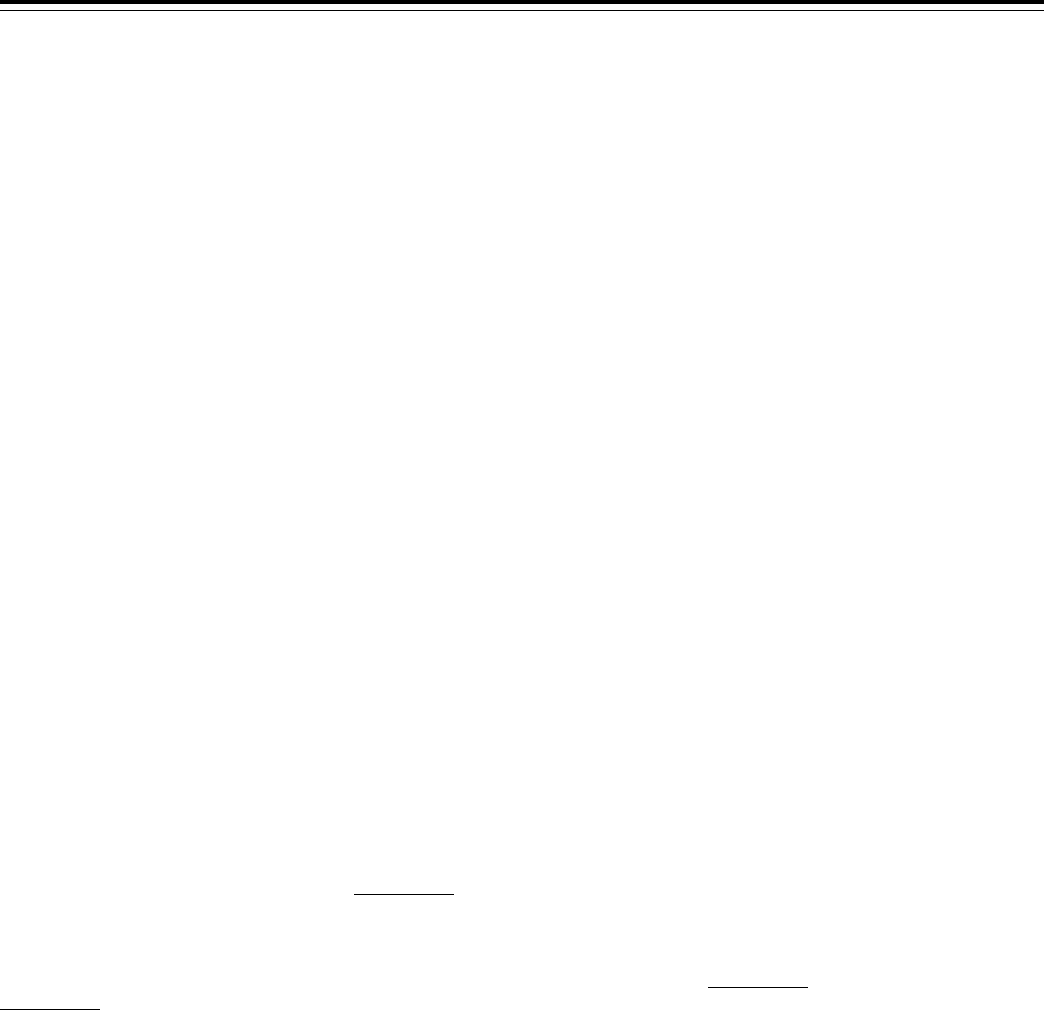
81866
Federal Register / Vol. 80, No. 251 / Thursday, December 31, 2015 / Notices
49
See, e.g., Viacom, 676 F.3d at 30, 35; see also
In re Aimster, 334 F.3d at 653, 655.
50
17 U.S.C. 512(c)(1)(A)(ii), (d)(1)(B).
51
H.R. Rep. No. 105–551, pt. 2, at 57 (1998).
52
Id. at 53; S. Rep No. 105–190, at 44 (1998);
accord Viacom, 676 F.3d at 31.
53
H.R. Rep. No. 105–551, pt. 2, at 58 (1998); see
also Columbia Pictures Indus., Inc. v. Fung, 710
F.3d 1020, 1043 (9th Cir. 2013) (‘‘Fung’’) (finding
that a service provider had red flag knowledge
where ‘‘material in question was sufficiently
current and well-known that it would have been
objectively obvious to a reasonable person that the
material . . . was both copyrighted and not
licensed to random members of the public’’).
54
See, e.g., Viacom, 676 F.3d at 31–32 (internal
quotations omitted).
55
See, e.g., UMG Recordings, 718 F.3d at 1022–
23; Viacom, 676 F.3d at 32.
56
Viacom, 676 F.3d at 30–31 (emphasis omitted)
(‘‘[E]xpeditious removal is possible only if the
service provider knows with particularity which
items to remove.’’).
57
17 U.S.C. 512(m).
58
UMG Recordings, 718 F.3d at 1022 (quoting
CCBill LLC, 488 F.3d at 1113).
59
See Viacom, 676 F.3d at 36–38 (2d Cir. 2012)
(‘‘[17 U.S.C.] 512(c)(1)(B) does not include a
specific knowledge requirement’’ because to
‘‘import[ ] a specific knowledge requirement into
[17 U.S.C.] 512(c)(1)(B) renders the control
provision duplicative of [17 U.S.C.] 512(c)(1)(A).’’);
H.R. Rep. No. 105–551, pt. 1, at 25–26 (1998) (‘‘The
financial benefit standard in subparagraph (B) is
intended to codify and clarify the direct financial
benefit element of vicarious liability. . . . The ‘right
and ability to control’ language in Subparagraph (B)
codifies the second element of vicarious liability.’’);
3 Melville Nimmer & David Nimmer, Nimmer on
Copyright 12.04[A][2] (Matthew Bender rev. ed.)
(‘‘Notably lacking from the foregoing two elements
[of vicarious liability] is knowledge.’’).
60
UMG Recordings, 718 F.3d at 1029–31 (quoting
Viacom, 676 F.3d at 38); Perfect 10, Inc. v. Cybernet
Ventures, Inc., 213 F. Supp. 2d 1146, 1173, 1181–
82 (C.D. Cal. 2002) (‘‘Cybernet Ventures’’).
61
Fung, 710 F.3d at 1043, 1046; see also Viacom,
676 F.3d at 38 & n.13 (‘‘[C]ontrol may exist where
the service provider is ‘actively involved in the
listing, bidding, sale and delivery’ of items.’’)
(quoting Hendrickson v. eBay, Inc., 165 F. Supp. 2d
1082, 1094 (C.D. Cal. 2001)); Cybernet Ventures, 213
F. Supp. 2d at 1173 (finding that service provider
had control where it required user Web sites to
comply with ‘‘detailed instructions regard[ing]
issues of layout, appearance, and content’’).
62
See, e.g., Viacom, 676 F.3d at 37.
63
17 U.S.C. 512(c)(1)(B), (d)(2).
64
H.R. Rep. No. 105–551, pt. 2, at 54 (1998)
(noting that financial benefit is not established
through a ‘‘one-time set-up fee [or] flat, periodic
payments for service from a person engaging in
infringing activities’’).
65
CCBill LLC, 488 F.3d at 1117; Ellison v.
Robertson, 357 F.3d 1072, 1079 (9th Cir. 2004)).
66
Fung, 710 F.3d at 1045–46.
67
17 U.S.C. 512(i)(1)(A); BMG Rights Mgmt. (US)
LLC v. Cox Commc’ns, Inc., No. 1:14–cv–1611, 2015
WL 7756130, at *14 (E.D. Va. Dec. 1, 2015) (‘‘BMG
Rights Mgmt.’’) (denying 512(a) safe harbor
protection to service provider because it did not
reasonably implement a repeat infringer policy).
68
CCBill LLC, 488 F.3d at 1109; Disney Enters.,
Inc. v. Hotfile Corp., No. 11–20427–CIV, 2013 WL
6336286, at *20 (S.D. Fla. Sept. 20, 2013)
(‘‘Hotfile’’); see also BMG Rights Mgmt., No. 1:14–
cv–1611, 2015 WL 7756130, at *13.
from the protections of a section 512
safe harbor.
49
As also noted above, sections 512(c)
and (d) require a service provider to
disable access to material or activity if
it has ‘‘red flag’’ knowledge, i.e., is
aware of ‘‘facts or circumstances from
which infringing activity is
apparent.’’
50
In enacting the statute,
Congress explained that ‘‘a service
provider [has] no obligation to seek out
copyright infringement, but it [does] not
qualify for the safe harbor if it . . .
turn[s] a blind eye to ‘red flags’ of
obvious infringement.’’
51
The
legislative history of section 512 also
suggests Congress’ view that the red flag
test ‘‘has both a subjective and an
objective element . . . the subjective
awareness of the service provider of the
facts or circumstances in question . . .
[and the objective assessment of]
whether infringing activity would have
been apparent to a reasonable person
operating under the same or similar
circumstances.’’
52
With regard to
information location tools, for example,
Congress observed that if ‘‘an [i]nternet
site is obviously pirate, then seeing it
may be all that is needed for the service
provider to encounter a ‘red flag.’ ’’
53
Copyright owners have argued that
Congress’ intent in creating the red flag
test was to ‘‘require[ ] less specificity
than the actual knowledge’’ standard
and to prevent service providers from
qualifying for safe harbor protection
when they are aware of widespread
infringement.
54
Courts, however, have
largely rejected the notion that a general
awareness of infringement is sufficient
to establish red flag knowledge.
55
Instead, courts have held that red flag
knowledge requires ‘‘knowledge of
specific and identifiable infringements’’
because, in order to retain the protection
of the safe harbor, the service provider
is required to expeditiously ‘‘remove or
disable ‘the [infringing] material.’ ’’
56
In assessing these knowledge
requirements, courts have also looked to
the language of section 512(m), which
states that ‘‘[n]othing’’ in section 512
conditions the availability of safe harbor
protection on ‘‘a service provider
monitoring its service or affirmatively
seeking facts indicating infringing
activity, except to the extent consistent
with a standard technical measure.’’
57
Based on this language, courts have
concluded that ‘‘the DMCA . . . place[s]
the burden of policing copyright
infringement . . . squarely on the
owners of the copyright.’’
58
Financial Benefit/Right To Control
Litigation regarding the Section 512(c)
and (d) safe harbors has also addressed
what it means for a service provider to
receive a ‘‘financial benefit directly
attributable’’ to infringing activity where
it has the ‘‘right and ability to control’’
such activity.
Like the traditional standard for
vicarious liability under common law,
the financial benefit/right to control test
has been held not to turn on a service
provider’s knowledge of infringement.
59
But courts have also indicated that
‘‘right and ability to control’’ in the
context of section 512 means that the
service provider ‘‘ ‘exert[s] substantial
influence on the activities of users,’ ’’
i.e., ‘‘ ‘something more than’ ’’ the basic
ability to remove or block access to
infringing materials.
60
Such control may
include, for example, taking an active
role in the listing of infringing material
on a Web site, assisting users in locating
infringing files, or encouraging the
uploading or downloading of particular
copyrighted works.
61
These courts have
reasoned that because the takedown
process itself requires the ability to
remove or block access, Congress must
have intended a greater degree of
control than just this, or it would
undermine the availability of the safe
harbors.
62
Sections 512(c) and (d) also exclude
service providers from safe harbor
protection when they ‘‘receive a
financial benefit directly attributable to
the infringing activity.’’
63
While the
legislative history suggests that merely
requiring a periodic payment for service
does not constitute a direct financial
benefit,
64
courts have found such a
benefit when the service provider
charges a subscription fee to its users
and the ‘‘infringing activity constitutes
a draw for subscribers, not just an added
benefit.’’
65
Financial benefit has also
been found when a service provider’s
‘‘ability to attract advertisers’’ and the
‘‘amount of revenue’’ received from
advertising are ‘‘tied directly to the
infringing activity.’’
66
Repeat Infringers
Under section 512(i), a service
provider seeking to avail itself of any of
the safe harbors is required to ‘‘adopt[ ]
and reasonably implement[ ]’’ a policy
to terminate ‘‘repeat infringers’’ in
‘‘appropriate circumstances.’’
67
Congress, however, did not define these
terms in the statute, so it has been left
to courts to determine whether a service
provider’s repeat infringer policy is
sufficient to qualify the provider for safe
harbor protection. In interpreting this
aspect of the statute, courts have held
that a repeat infringer is a user ‘‘who
repeatedly or blatantly infringe[s]
copyright,’’ and that such a
determination may be based upon
information from valid takedown
notices and does not require a court
determination.
68
Courts have further
VerDate Sep<11>2014 16:49 Dec 30, 2015 Jkt 238001 PO 00000 Frm 00062 Fmt 4703 Sfmt 4703 E:\FR\FM\31DEN1.SGM 31DEN1
tkelley on DSK3SPTVN1PROD with NOTICES
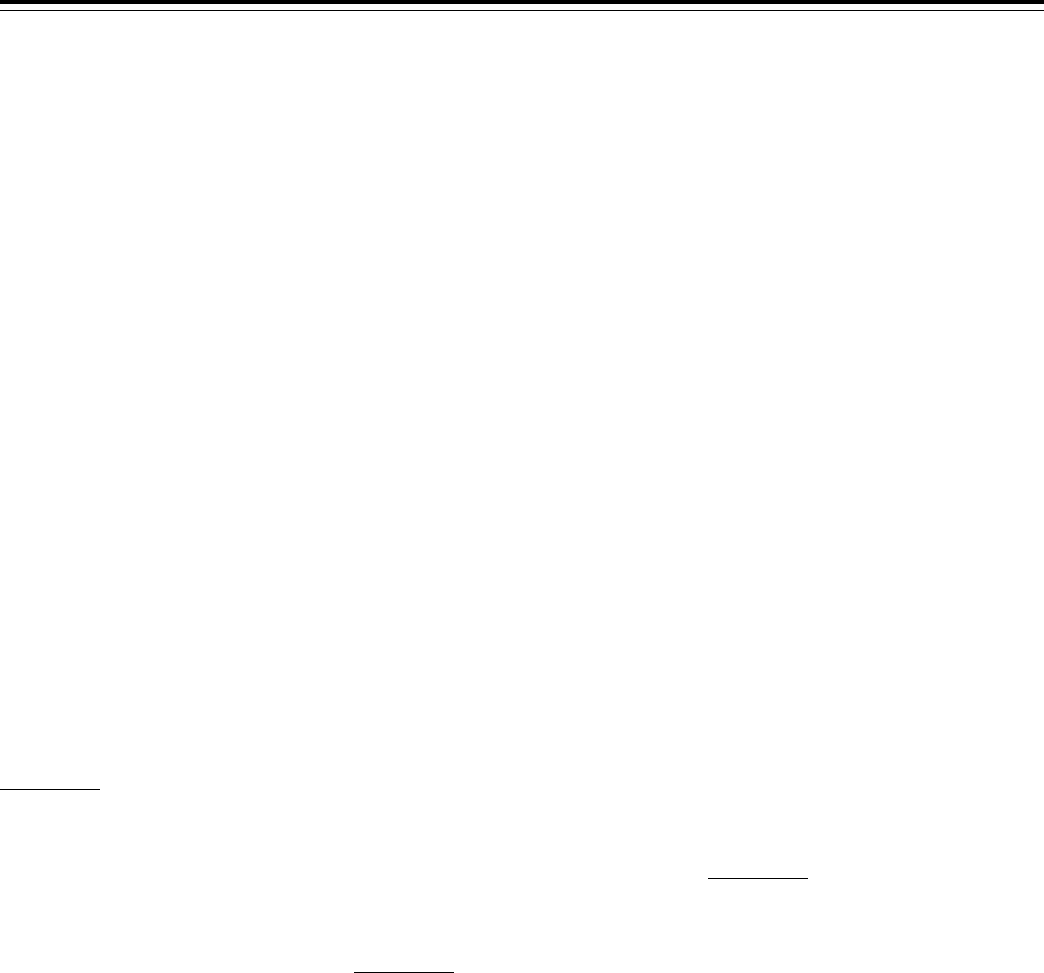
81867
Federal Register / Vol. 80, No. 251 / Thursday, December 31, 2015 / Notices
69
CCBill LLC, 488 F.3d at 1109 (internal citation
omitted); see also Hotfile, No. 11–20427–CIV, 2013
WL 6336286, at *21.
70
See, e.g., Section 512 Hearing at 48, 63–67,
246–47 (written statements of Katherine Oyama,
Google Inc.; Paul Sieminski, Automattic Inc.; and
Library Copyright Alliance) (discussing misuse of
takedown process).
71
See, e.g., id. at 65 (written statement of Paul
Sieminski, Automattic Inc.) (noting concern for
‘‘companies who issue DMCA notices specifically
against content that makes use of their copyrighted
material as part of a criticism or negative review—
which is classic fair use’’).
72
See, e.g., Automattic Inc. v. Steiner, 82 F. Supp.
3d 1011, 1016 (N.D. Cal. 2015) (entering default
judgment against the submitter of takedown notices
for knowingly materially misrepresenting that a
blog infringed its press release); Online Policy Grp.
v. Diebold, Inc., 337 F. Supp. 2d 1195, 1204 (N.D.
Cal. 2004) (finding voting machine manufacturer
liable under section 512(f) for ‘‘knowingly
materially misrepresent[ing]’’ that publication of
email archive discussing technical problems with
voting machines was infringing).
73
See, e.g., Brief for Org. for Transformative
Works et al. as Amici Curiae Supporting Appellee
and Cross-Appellant at 16, Lenz v. Universal Music
Corp., 801 F.3d 1126 (9th Cir. 2015) (Nos. 13–
16106, 13–16107) (noting that creators worry about
sending a counter notice because they may have to
provide their real names and addresses or become
subject to a lawsuit they cannot afford).
74
See, e.g., Ctr. for Democracy & Tech., Campaign
Takedown Troubles: How Meritless Copyright
Claims Threaten Online Political Speech 1 (2010),
https://cdt.org/files/pdfs/copyright_takedowns.pdf.
75
17 U.S.C. 512(c)(3)(A)(v).
76
Id. at 512(g)(3)(C).
77
Id. at 512(f).
78
Rossi v. Motion Picture Ass’n of Am. Inc., 391
F.3d 1000, 1004–05 (9th Cir. 2004); accord Lenz v.
Universal Music Corp., 801 F.3d 1126, 1134 (9th
Cir. 2015). The Rossi and Lenz courts reasoned that
to hold otherwise would conflict with Congress’
intent that a copyright owner only be penalized for
‘‘knowing’’ misrepresentations. Rossi, 391 F3d at
1004–05; accord Lenz, 801 F.3d at 1134.
79
Lenz, 801 F.3d at 1133.
80
See id. at 1135–36. In Lenz, the Ninth Circuit
was ‘‘mindful of the pressing crush of voluminous
infringing content that copyright holders face,’’ and
noted, ‘‘without passing judgment, that the
implementation of computer algorithms appears to
be a valid and good faith middle ground for
processing a plethora of content while still meeting
the DMCA’s requirements to somehow consider fair
use.’’ Id. at 1135. The court further addressed how
an algorithm might accommodate fair use,
observing that it was ‘‘unaware of any [court]
decision to date that actually addressed the need for
human review.’’ Id.
81
See generally Ctr. For Copyright Info., The
Copyright Alert System: Phase One and Beyond
(May 28, 2014), http://
www.copyrightinformation.org/wp-content/
uploads/2014/05/Phase-One-And_Beyond.pdf.
82
See generally Dep’t of Commerce
Multistakeholder Forum Recommended Practices
(list of recommended practices developed by a
diverse group of copyright owners, service
providers, and public interest representatives).
83
See Intellectual Prop. Enforcement
Coordinator, 2011 U.S. Intellectual Property
Enforcement Coordinator Annual Report on
Intellectual Property Enforcement 46 (2012),
https://www.whitehouse.gov/sites/default/files/
omb/IPEC/ipec_annual_report_mar2012.pdf
(describing a June 2011 agreement among American
Express, Discover, MasterCard, PayPal, and Visa to
abide by best practices to ‘‘stop sites distributing
counterfeit and pirated goods from conducting
financial transactions through payment
processors’’).
84
See Press Release, Trustworthy Accountability
Group, Advertising Industry Launches Initiative to
Protect Brands Against Piracy Web sites (Feb. 10,
2015), https://www.tagtoday.net/advertising-
industry-launches-initiative-to-protect-brands-
against-piracy-Web sites.
85
See Principles for User Generated Content
Services, http://www.ugcprinciples.com (last visited
Dec. 16, 2015).
held that a reasonable policy, at a
minimum, must provide a mechanism
to identify and keep a record of users
responsible for files referenced in
takedown notices and, ‘‘under
‘appropriate circumstances,’ ’’ result in
termination of ‘‘users who repeatedly or
blatantly infringe copyright.’’
69
Misuse of Takedown Process
Service providers and advocacy
groups have raised concerns about
fraudulent and abusive section 512
notices that may restrain fair use, free
speech, or otherwise misuse the notice-
and-takedown process.
70
Some of the
concerns arise from takedown notices
for content that appears to constitute an
obvious fair use of a copyright work.
71
Others relate to efforts to remove
criticism or commentary—such as
negative reviews—under the guise of
copyright.
72
While the posting party can
invoke the counter-notification
procedure of section 512(g) to have the
material reinstated, some believe that
posters may not be aware of this, or may
be too intimidated to pursue a counter
notification.
73
A related concern is that
the improper takedown of legitimate
material, even if for a limited time, may
harm important speech interests—for
example, if a political advertisement is
wrongly removed at a critical time in a
campaign.
74
As noted above, a takedown notice
must include a statement that the
complaining party has a ‘‘good faith
belief’’ that the use is not authorized.
75
Similarly, a counter notification must
include a statement that the sender has
a ‘‘good faith belief’’ that the material in
question was removed as a result of
‘‘mistake or misidentification.’’
76
Section 512(f) provides for a cause of
action and damages if a sender
‘‘knowingly materially misrepresents’’
in a takedown notice that material is
infringing, or, in a counter notification,
was wrongfully removed.
77
In a number of cases challenging the
validity of takedown notices, courts
have fleshed out the meaning and
application of section 512(f). For
example, courts have held that the
‘‘good faith belief’’ requirement of
section 512(c)(3)(A)(v) ‘‘encompasses a
subjective, rather than objective
standard’’; that is, the sender is not
responsible for an ‘‘unknowing
mistake,’’ even if the sender’s
assessment of infringement was
objectively unreasonable.
78
But it has
also been held that before sending a
takedown notice, the complaining party
must ‘‘consider the existence of fair
use’’ in forming the subjective good
faith belief that the use is not authorized
by the law.
79
The need to consider fair
use may present challenges in the
context of automated takedown
processes relied upon by copyright
owners to address large-volume
infringements, including how such
processes might be calibrated to
accommodate this requirement and the
necessity, if any, for human review.
80
Voluntary Measures
While interested parties continue to
test and clarify aspects of section 512 in
the courts, some stakeholders have
chosen to work together to develop
voluntary protocols and best practices to
avoid litigation, improve online
enforcement, and protect free speech
and innovation. Several of these
initiatives have been undertaken with
the support of the U.S. government,
including the Copyright Alert System,
an effort supported by the U.S.
Intellectual Property Enforcement
Coordinator (‘‘IPEC’’),
81
and the DMCA
Notice-and-Takedown Processes: List of
Good, Bad, and Situational Practices,
stemming from the efforts of the Internet
Policy Task Force,
82
both of which seek
to improve the efficiency and
effectiveness of notice-and-takedown
procedures, as well as the IPEC-led
Payment Processor Best Practices,
which seeks to cut off revenue to sites
that promote infringement.
83
Other
multistakeholder initiatives include the
Trustworthy Accountability Group
certification process, aimed at curbing
ad revenue supporting piracy Web
sites,
84
and the Principles for User
Generated Content Services, which sets
forth agreed principles for screening and
addressing infringing content.
85
II. Subjects of Inquiry
The Copyright Office seeks public
input, including, where available,
empirical data on the efficiency and
effectiveness of section 512 for owners
and users of copyrighted works and the
overall sustainability of the system if, as
appears likely, the volume of takedown
notices continues to increase. The Office
invites written comments in particular
on the subjects below. A party choosing
to respond to this Notice of Inquiry need
not address every subject, but the Office
requests that responding parties clearly
identify and separately address each
VerDate Sep<11>2014 16:49 Dec 30, 2015 Jkt 238001 PO 00000 Frm 00063 Fmt 4703 Sfmt 4703 E:\FR\FM\31DEN1.SGM 31DEN1
tkelley on DSK3SPTVN1PROD with NOTICES
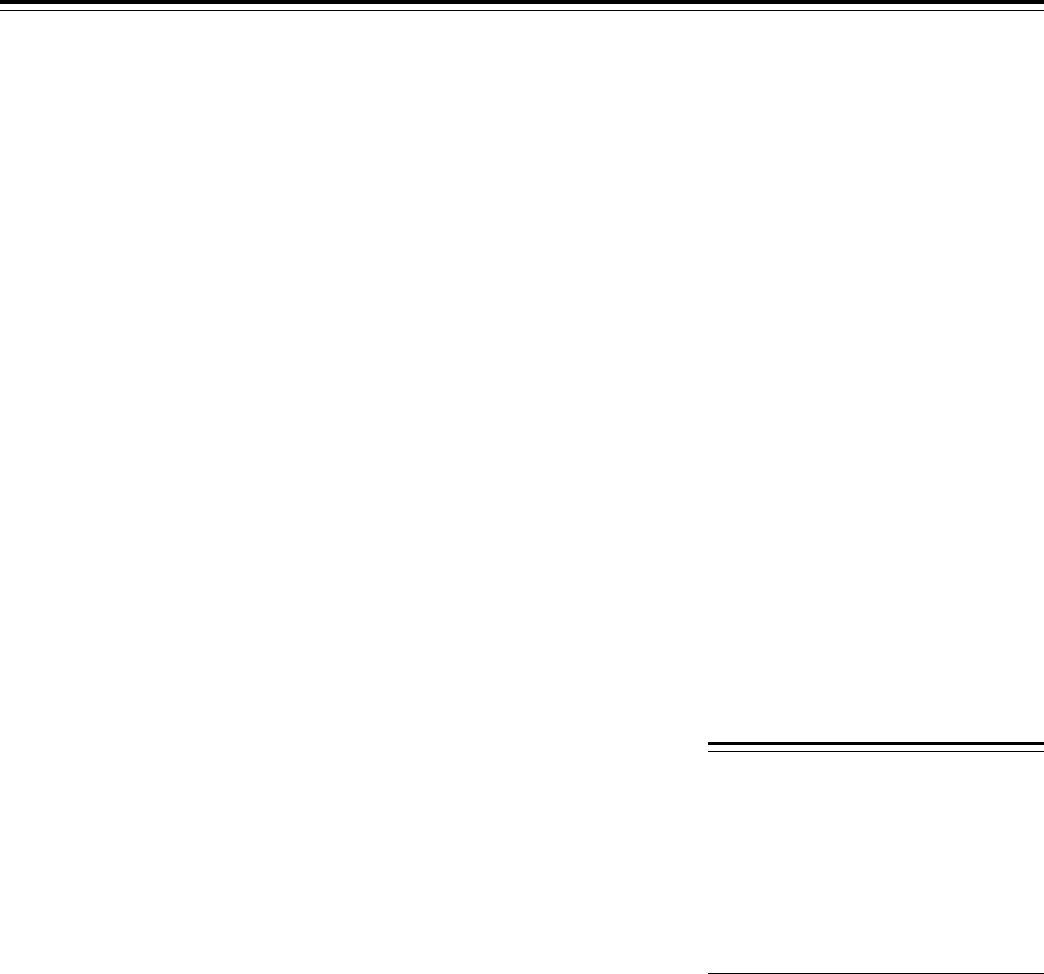
81868
Federal Register / Vol. 80, No. 251 / Thursday, December 31, 2015 / Notices
numbered subject for which a response
is submitted.
General Effectiveness of Safe Harbors
1. Are the section 512 safe harbors
working as Congress intended?
2. Have courts properly construed the
entities and activities covered by the
section 512 safe harbors?
3. How have section 512’s limitations
on liability for online service providers
impacted the growth and development
of online services?
4. How have section 512’s limitations
on liability for online service providers
impacted the protection and value of
copyrighted works, including licensing
markets for such works?
5. Do the section 512 safe harbors
strike the correct balance between
copyright owners and online service
providers?
Notice-and-Takedown Process
6. How effective is section 512’s
notice-and-takedown process for
addressing online infringement?
7. How efficient or burdensome is
section 512’s notice-and-takedown
process for addressing online
infringement? Is it a workable solution
over the long run?
8. In what ways does the process work
differently for individuals, small-scale
entities, and/or large-scale entities that
are sending and/or receiving takedown
notices?
9. Please address the role of both
‘‘human’’ and automated notice-and-
takedown processes under section 512,
including their respective feasibility,
benefits, and limitations.
10. Does the notice-and-takedown
process sufficiently address the
reappearance of infringing material
previously removed by a service
provider in response to a notice? If not,
what should be done to address this
concern?
11. Are there technologies or
processes that would improve the
efficiency and/or effectiveness of the
notice-and-takedown process?
12. Does the notice-and-takedown
process sufficiently protect against
fraudulent, abusive or unfounded
notices? If not, what should be done to
address this concern?
13. Has section 512(d), which
addresses ‘‘information location tools,’’
been a useful mechanism to address
infringement that occurs as a result of a
service provider’s referring or linking to
infringing content? If not, what should
be done to address this concern?
14. Have courts properly interpreted
the meaning of ‘‘representative list’’
under section 512(c)(3)(A)(ii)? If not,
what should be done to address this
concern?
15. Please describe, and assess the
effectiveness or ineffectiveness of,
voluntary measures and best practices—
including financial measures, content
‘‘filtering’’ and takedown procedures—
that have been undertaken by interested
parties to supplement or improve the
efficacy of section 512’s notice-and-
takedown process.
Counter Notifications
16. How effective is the counter-
notification process for addressing false
and mistaken assertions of
infringement?
17. How efficient or burdensome is
the counter-notification process for
users and service providers? Is it a
workable solution over the long run?
18. In what ways does the process
work differently for individuals, small-
scale entities, and/or large-scale entities
that are sending and/or receiving
counter notifications?
Legal Standards
19. Assess courts’ interpretations of
the ‘‘actual’’ and ‘‘red flag’’ knowledge
standards under the section 512 safe
harbors, including the role of ‘‘willful
blindness’’ and section 512(m)(1)
(limiting the duty of a service provider
to monitor for infringing activity) in
such analyses. How are judicial
interpretations impacting the
effectiveness of section 512?
20. Assess courts’ interpretations of
the ‘‘financial benefit’’ and ‘‘right and
ability to control’’ standards under the
section 512 safe harbors. How are
judicial interpretations impacting the
effectiveness of section 512?
21. Describe any other judicial
interpretations of section 512 that
impact its effectiveness, and why.
Repeat Infringers
22. Describe and address the
effectiveness of repeat infringer policies
as referenced in section 512(i)(A).
23. Is there sufficient clarity in the
law as to what constitutes a repeat
infringer policy for purposes of section
512’s safe harbors? If not, what should
be done to address this concern?
Standard Technical Measures
24. Does section 512(i) concerning
service providers’ accommodation of
‘‘standard technical measures’’
(including the definition of such
measures set forth in section 512(i)(2))
encourage or discourage the use of
technologies to address online
infringement?
25. Are there any existing or emerging
‘‘standard technical measures’’ that
could or should apply to obtain the
benefits of section 512’s safe harbors?
Remedies
26. Is section 512(g)(2)(C), which
requires a copyright owner to bring a
federal lawsuit within ten business days
to keep allegedly infringing content
offline—and a counter-notifying party to
defend any such lawsuit—a reasonable
and effective provision? If not, how
might it be improved?
27. Is the limited injunctive relief
available under section 512(j) a
sufficient and effective remedy to
address the posting of infringing
material?
28. Are the remedies for
misrepresentation set forth in section
512(f) sufficient to deter and address
fraudulent or abusive notices and
counter notifications?
Other Issues
29. Please provide any statistical or
economic reports or studies that
demonstrate the effectiveness,
ineffectiveness, and/or impact of section
512’s safe harbors.
30. Please identify and describe any
pertinent issues not referenced above
that the Copyright Office should
consider in conducting its study.
Dated: December 28, 2015.
Maria A. Pallante,
Register of Copyrights, U.S. Copyright Office.
[FR Doc. 2015–32973 Filed 12–30–15; 8:45 am]
BILLING CODE 1410–30–P
MILLENNIUM CHALLENGE
CORPORATION
[MCC FR 15–06]
Report on the Selection of Eligible
Countries for Fiscal Year 2016
AGENCY
: Millennium Challenge
Corporation.
ACTION
: Notice.
SUMMARY
: This report is provided in
accordance with section 608(d)(1) of the
Millennium Challenge Act of 2003, Pub.
L. 108–199, Division D, (the ‘‘Act’’), 22
U.S.C. 7708(d)(1).
Dated: December 18, 2015.
Maame Ewusi-Mensah Frimpong,
Vice President and General Counsel,
Millennium Challenge Corporation.
Report on the Selection of Eligible
Countries for Fiscal Year 2016
Summary
This report is provided in accordance
with section 608(d)(1) of the
Millennium Challenge Act of 2003, as
amended, Public Law 108–199, Division
D, (the ‘‘Act’’) (22 U.S.C. 7707(d)(1)).
The Act authorizes the provision of
Millennium Challenge Account
VerDate Sep<11>2014 16:49 Dec 30, 2015 Jkt 238001 PO 00000 Frm 00064 Fmt 4703 Sfmt 4703 E:\FR\FM\31DEN1.SGM 31DEN1
tkelley on DSK3SPTVN1PROD with NOTICES
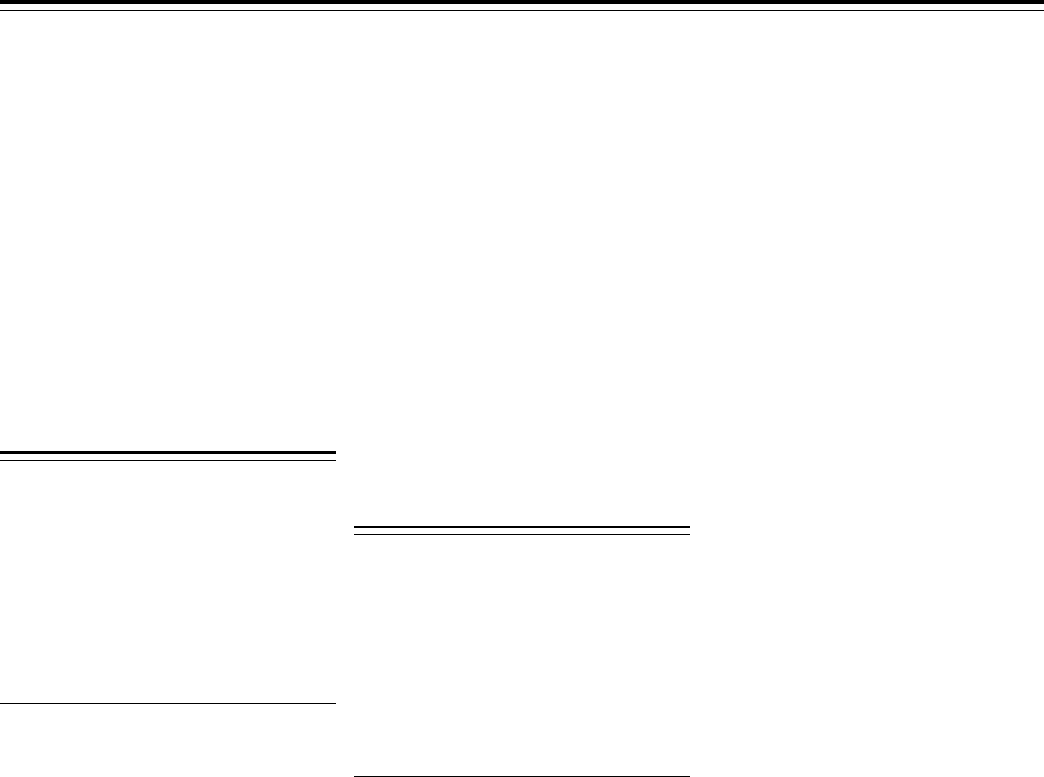
11294
Federal Register / Vol. 81, No. 42 / Thursday, March 3, 2016 / Notices
requirements are computed by the
Federal government annually. While
precise costs cannot be identified, at the
present time and based on past
experience, the annual related costs for
contractor staff are estimated to be
$1,524,376, which represents an average
cost of $28.00 per hour.
Comments submitted in response to
this comment request will be
summarized and/or included in the
request for Office of Management and
Budget approval of the information
collection request; they will also
become a matter of public record.
Portia Wu,
Assistant Secretary for Employment and
Training, Labor.
[FR Doc. 2016–04631 Filed 3–2–16; 8:45 am]
BILLING CODE 4510–FT–P
LIBRARY OF CONGRESS
Copyright Office
[Docket No. 2015–7]
Section 512 Study: Extension of
Comment Period
AGENCY
: U.S. Copyright Office, Library
of Congress.
ACTION
: Extension of comment period.
SUMMARY
: The United States Copyright
Office is extending the deadline for the
submission of written comments in
response to its December 31, 2015
Notice of Inquiry regarding the
operation of section 512 of Title 17.
DATES
: Initial written comments are now
due no later than 11:59 p.m. Eastern
Time on April 1, 2016.
ADDRESSES
: The Copyright Office is
using the regulations.gov system for the
submission and posting of public
comments in this proceeding. All
comments are therefore to be submitted
electronically through regulations.gov.
Specific instructions for submitting
comments are available on the
Copyright Office Web site at http://
copyright.gov/policy/section512/
comment-submission/. If electronic
submission of comments is not feasible,
please contact the Office using the
contact information below for special
instructions.
FOR FURTHER INFORMATION CONTACT
:
Jacqueline C. Charlesworth, General
Counsel and Associate Register of
Copyrights, [email protected]; or
Karyn Temple Claggett, Director of the
Office of Policy and International
Affairs and Associate Register of
Copyrights, [email protected]. Each can be
reached by telephone at (202) 707–8350.
SUPPLEMENTARY INFORMATION
: The
United States Copyright Office is
undertaking a public study to evaluate
the impact and effectiveness of the
DMCA safe harbor provisions contained
in section 512 of Title 17. On December
31, 2015, the Office issued a Notice of
Inquiry seeking public input on several
questions relating to that topic. See 80
FR 81862 (Dec. 31, 2015). To ensure that
commenters have sufficient time to
respond, the Office is extending the
deadline for the submission of initial
comments in response to the Notice to
April 1, 2016, at 11:59 p.m. Eastern
Time. Please note that in light of the
expected time frame for this study, the
Office is unlikely to grant further
extensions for these comments.
Dated: February 25, 2016.
Maria A. Pallante,
Register of Copyrights, U.S. Copyright Office.
[FR Doc. 2016–04641 Filed 3–2–16; 8:45 am]
BILLING CODE 1410–30–P
NATIONAL AERONAUTICS AND
SPACE ADMINISTRATION
[Notice: (16–019)]
NASA Advisory Council; Technology,
Innovation and Engineering
Committee; Meeting
AGENCY
: National Aeronautics and
Space Administration
ACTION
: Notice of meeting.
SUMMARY
: In accordance with the
Federal Advisory Committee Act, Public
Law 92–463, as amended, the National
Aeronautics and Space Administration
(NASA) announces a meeting of the
Technology, Innovation and
Engineering (TI&E) Committee of the
NASA Advisory Council (NAC).
DATES
: Tuesday, March 29, 2016, 8:00
a.m. to 5:00 p.m., Local Time.
ADDRESSES
: NASA Headquarters, Room
MIC 6A, 300 E Street SW., Washington,
DC 20546.
FOR FURTHER INFORMATION CONTACT
: Mr.
Mike Green, Space Technology Mission
Directorate, NASA Headquarters,
Washington, DC 20546, (202) 358–4710,
SUPPLEMENTARY INFORMATION
: The
meeting will be open to the public up
to the capacity of the room. This
meeting is also available telephonically
and online via WebEx. Any interested
person may call the USA toll-free
conference number 1–844–467–6272,
passcode 102421, to participate in this
meeting by telephone. The WebEx link
is https://nasa.webex.com/, the meeting
number is 992 399 346, and the
password is ‘‘Technology16
∧
’’.
The agenda for the meeting includes
the following topics:
—Space Technology Mission Directorate
FY 2017 Budget and Update
—FY 2016–2017 Technology Plans for
the Human Exploration and
Operations Mission Directorate and
the Science Mission Directorate and
Discussion
—Office of the Chief Technologist
Update
—Technology Demonstration Missions
Program Update
—Restore-L Mission Overview and
Discussion
Attendees will be requested to sign a
register and to comply with NASA
security requirements, including the
presentation of a valid picture ID, before
receiving access to NASA Headquarters.
Due to the Real ID Act, Public Law 109–
13, any attendees with drivers licenses
issued from non-compliant states/
territories must present a second form of
ID. [Federal employee badge; passport;
active military identification card;
enhanced driver’s license; U.S. Coast
Guard Merchant Mariner card; Native
American tribal document; school
identification accompanied by an item
from LIST C (documents that establish
employment authorization) from the
‘‘List of the Acceptable Documents’’ on
Form I–9]. Non-compliant states/
territories are: American Samoa, Illinois,
Minnesota, Missouri, New Mexico, and
Washington, Foreign nationals attending
this meeting will be required to provide
a copy of their passport and visa in
addition to providing the following
information no less than 10 working
days prior to the meeting: Full name;
gender; date/place of birth; citizenship;
visa information (number, type,
expiration date); passport information
(number, country, expiration date);
employer/affiliation information (name
of institution, address, country,
telephone); title/position of attendee;
and home address to Ms. Anyah
Dembling via email at anyah.dembling@
nasa.gov or by telephone at (202) 358–
5195. U.S. citizens and Permanent
Residents (green card holders) are
requested to submit their name and
affiliation no less than 3 working days
prior to the meeting to Ms. Anyah
Dembling. It is imperative that this
meeting be held on this date to
accommodate the scheduling priorities
of the key participants.
Patricia D. Rausch,
Advisory Committee Management Officer,
National Aeronautics and Space
Administration.
[FR Doc. 2016–04766 Filed 3–2–16; 8:45 am]
BILLING CODE P
VerDate Sep<11>2014 19:17 Mar 02, 2016 Jkt 238001 PO 00000 Frm 00122 Fmt 4703 Sfmt 9990 E:\FR\FM\03MRN1.SGM 03MRN1
mstockstill on DSK4VPTVN1PROD with NOTICES

14896
Federal Register / Vol. 81, No. 53 / Friday, March 18, 2016 / Notices
supporting this information collection
request.
Type of Review: Extension, without
change, of a currently approved
collection.
Agency: Mine Safety and Health
Administration.
OMB Number: 1219–0147.
Affected Public: Business or other for-
profit.
Number of Respondents: 1.
Frequency: On occasion.
Number of Responses: 1.
Annual Burden Hours: 41 hours.
Annual Respondent or Recordkeeper
Cost: $296,455.
Comments submitted in response to
this notice will be summarized and
included in the request for Office of
Management and Budget approval of the
information collection request; they will
also become a matter of public record.
Sheila McConnell,
Certifying Officer.
[FR Doc. 2016–06134 Filed 3–17–16; 8:45 am]
BILLING CODE 4510–43–P
LIBRARY OF CONGRESS
U.S. Copyright Office
[Docket No. 2015–7]
Section 512 Study: Announcement of
Public Roundtables
AGENCY
: U.S. Copyright Office, Library
of Congress.
ACTION
: Notice of public roundtables.
SUMMARY
: The United States Copyright
Office has undertaken a study to
evaluate the impact and effectiveness of
the DMCA safe harbor provisions
contained in 17 U.S.C. 512. On
December 31, 2015, the Office issued a
Notice of Inquiry (‘‘NOI’’) soliciting
written comments in response to a
number of topics relating to section 512.
See 80 FR 81862. The due date for
initial written comments in response to
the NOI is April 1, 2016. See 81 FR
11294. At this time, the Office is
announcing it will hold two two-day
public roundtables on DMCA safe
harbor issues in New York, New York
and Stanford, California in May 2016.
Dates and Addresses
The New York roundtable will take
place on May 2 and 3, 2016, from 9:00
a.m. to 5:00 p.m. on both days, and will
be held in the Lester Pollack
Colloquium Room of Furman Hall at the
New York University School of Law,
245 Sullivan Street, New York, New
York 10012.
The Stanford roundtable will take
place on May 12 and 13, 2016, from 9:00
a.m. to 5:00 p.m. on both days, and will
be held in the Manning Faculty Lounge
of the Stanford Law School, 559 Nathan
Abbott Way, Stanford, California 94305.
FOR FURTHER INFORMATION CONTACT
:
Jacqueline C. Charlesworth, General
Counsel and Associate Register of
Copyrights, [email protected]; or
Karyn Temple Claggett, Director of the
Office of Policy and International
Affairs and Associate Register of
Copyrights, [email protected]. Both can be
reached by telephone at 202–707–8350.
SUPPLEMENTARY INFORMATION
: Section
512 of Title 17 codifies provisions of the
Digital Millennium Copyright Act
(‘‘DMCA’’), enacted in 1998, that created
a system for copyright owners and
internet service providers to address
online infringement. This system
includes ‘‘safe harbor’’ limitations on
infringement liability for service
providers who comply with statutory
requirements to facilitate good-faith,
expeditious removal of allegedly
infringing content. In light of the
exponential growth of content
distribution over the internet since the
DMCA was enacted, the Copyright
Office has undertaken a comprehensive
study of the DMCA’s notice-and-
takedown system. On December 31,
2015, the Office issued an NOI seeking
public comment on thirty topics
concerning the efficiency and
effectiveness of section 512. See 80 FR
81862.
At this time, the Copyright Office is
providing notice of its intention to seek
further input for its study through two
two-day public roundtables to be held
in New York, New York and Stanford,
California. The roundtables will offer an
opportunity for interested parties to
comment further on the pertinent
issues, including topics such as the
scope and legal requirements of the
DMCA safe harbors; the notice-and-
takedown and counter-notification
processes, including relevant
technological developments; voluntary
measures to address online
infringement; and the overall
effectiveness of section 512. Additional
information about the specific topics to
be covered at the roundtables is
available at http://copyright.gov/policy/
section512/public-roundtable/
particpate-request.html.
The roundtable hearing rooms will
have a limited number of seats for
participants and observers. Those who
seek to participate should complete and
submit the form available through the
Copyright Office’s Web site at http://
copyright.gov/policy/section512/public-
roundtable/particpate-request.html so it
is received no later than April 4, 2016.
For individuals who wish to observe a
roundtable, the Office will provide
public seating on a first-come, first-
served basis on the days of the
roundtables.
Dated: March 15, 2016.
Maria A. Pallante,
Register of Copyrights, U.S. Copyright Office.
[FR Doc. 2016–06200 Filed 3–17–16; 8:45 am]
BILLING CODE 1410–30–P
NATIONAL SCIENCE FOUNDATION
Proposal Review Panel for Physics;
Notice of Meeting
In accordance with the Federal
Advisory Committee Act (Pub. L. 92–
463, as amended), the National Science
Foundation announces the following
meeting:
Name: Proposal Review Panel for the
Division of Physics (1208) (V161279)—
Site Visit.
Date And Time: April 11, 2016; 8:30
a.m.–7:00 p.m.; April 12, 2016; 8:30
a.m.–3:00 p.m.
Place: University of Illinois, Urbana-
Champaign, IL 61801 (CPLC)
Type of Meeting: Part—Open.
Contact Person: Jean Cottam-Allen,
Program Director for Physics Frontier
Centers, Division of Physics, National
Science Foundation, 4201 Wilson Blvd.,
Room 1015, Arlington, VA 22230;
Telephone: (703) 292–8783.
Purpose of Meeting: Site visit to
provide an evaluation of the progress of
the projects at the host site for the
Division of Physics at the National
Science Foundation.
Agenda
April 11, 2016; 8:30 a.m.–7:00 p.m.
08:30 Panel Session: Presentations on
Center Overview, Management and
Science
12:00 p.m. Lunch with Graduate
Students and Postdocs
13:30 Panel Session: Continued
Science Presentations, Education
and Outreach
16:00 Executive Session—Closed
Session
17:00 Poster Session
19:00 Executive Session—Closed
Session
April 12, 2016; 8:30 a.m.–3:00 p.m.
08:30 Meeting with University
Administrators
To 11:00 Discussion with Center
Directors
11:00 Executive Session—Closed
Session
15:00 Closeout Session with Center
Directors
VerDate Sep<11>2014 19:50 Mar 17, 2016 Jkt 238001 PO 00000 Frm 00075 Fmt 4703 Sfmt 4703 E:\FR\FM\18MRN1.SGM 18MRN1
asabaliauskas on DSK3SPTVN1PROD with NOTICES
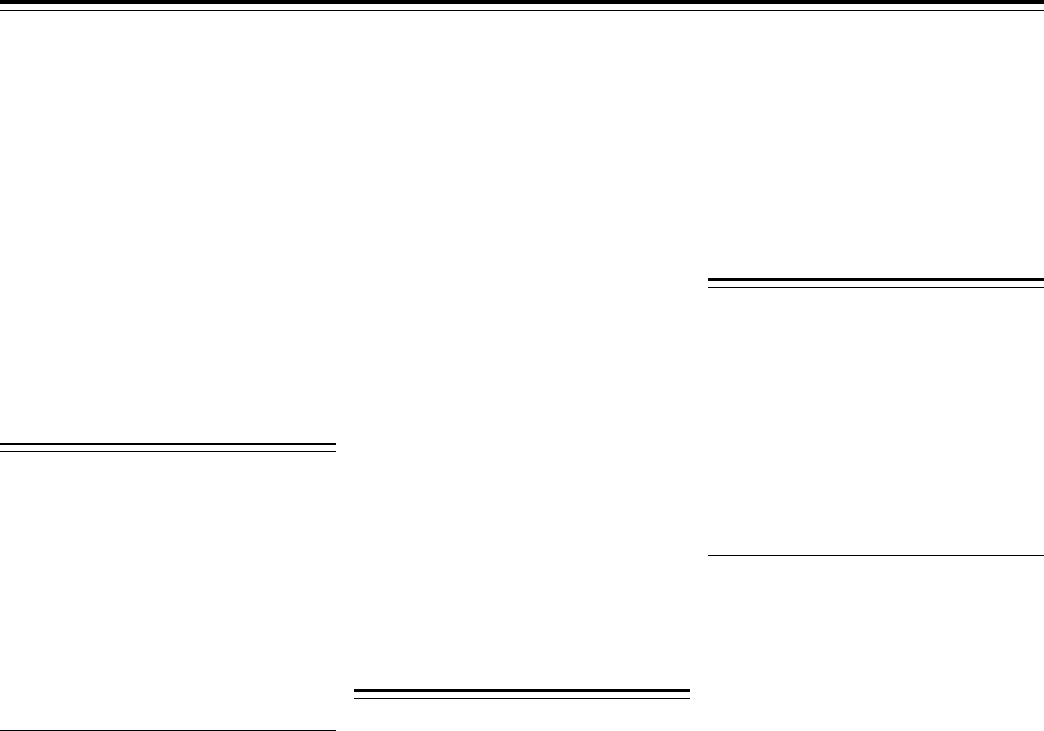
19246
Federal Register / Vol. 81, No. 64 / Monday, April 4, 2016 / Notices
1. Increasing the estimate of total
agricultural workers from 80,549 to
87,870; and
2. Increasing the percentage of
dependents who are eligible from 31%
to 60%. MAP provides analysis
supporting these proposals in its
comments.
III. Request for Comments
LSC seeks comment solely on the
specific MAP proposals enumerated
above. Comments should specifically
address the rationale provided by MAP
in its comments.
Dated: March 29, 2016.
Stefanie K. Davis,
Assistant General Counsel.
[FR Doc. 2016–07526 Filed 4–1–16; 8:45 am]
BILLING CODE 7050–01–P
LIBRARY OF CONGRESS
Copyright Office
[Docket No. 2015–7]
Section 512 Study: Extension of Time
To Submit Requests To Participate in
Roundtable
AGENCY
: U.S. Copyright Office, Library
of Congress.
ACTION
: Extension of time to submit
requests to participate in roundtable.
SUMMARY
: The United States Copyright
Office is extending the deadline for the
submission of requests to participate in
the section 512 roundtables in New
York and California, which were
announced in its March 18, 2016 Notice
of Inquiry. See 81 FR 14896.
DATES
: Requests to participate in the
section 512 roundtables are now due no
later than 11:59 p.m. Eastern Time on
April 11, 2016.
ADDRESSES
: Those who seek to
participate in the section 512
roundtables should complete and
submit the form available through the
Copyright Office’s Web site at http://
www.copyright.gov/policy/section512/
public-roundtable/participate-
request.html. If electronic submission of
such a request is not feasible, please
contact the Office using the contact
information below for special
instructions.
FOR FURTHER INFORMATION CONTACT
:
Jacqueline C. Charlesworth, General
Counsel and Associate Register of
Copyrights, [email protected]; or
Karyn Temple Claggett, Director of the
Office of Policy and International
Affairs and Associate Register of
Copyrights, [email protected]. Each can be
reached by telephone at (202) 707–8350.
SUPPLEMENTARY INFORMATION
: The
United States Copyright Office is
undertaking a public study to evaluate
the impact and effectiveness of the
DMCA safe harbor provisions contained
in section 512 of Title 17. On March 18,
2016, the Office issued a Notice of
Inquiry announcing two two-day public
roundtables in New York, New York on
May 2 and 3, 2016, and Stanford,
California on May 12 and 13, 2016.
The roundtables will offer an
opportunity for interested parties to
comment further on the issues raised in
the Office’s December 31, 2015 Notice of
Inquiry regarding section 512. See 80 FR
81862. Additional information about the
specific topics to be covered at the
roundtables is available at http://
www.copyright.gov/policy/section512/
public-roundtable/participate-
request.html. To ensure that those
interested in participating in the section
512 roundtables have sufficient time to
submit a request, the Office is extending
the deadline for such requests to April
11, 2016, at 11:59 p.m. Eastern Time.
Dated: March 29, 2016.
Maria A. Pallante,
Register of Copyrights, U.S. Copyright Office.
[FR Doc. 2016–07550 Filed 4–1–16; 8:45 am]
BILLING CODE 1410–30–P
NEIGHBORHOOD REINVESTMENT
CORPORATION
Regular Board of Directors Meeting;
Sunshine Act
TIME AND DATE
: 10:00 a.m., Tuesday,
April 12, 2016.
PLACE
: NeighborWorks America—
Gramlich Boardroom, 999 North Capitol
Street NE., Washington DC 20002.
STATUS
: Open (with the exception of
Executive Session).
CONTACT PERSON
: Jeffrey Bryson, EVP &
General Counsel/Secretary, (202) 760–
4101; [email protected].
AGENDA
:
I. CALL TO ORDER
II. Approval of Minutes
III. Executive Session: Audit Committee
Report
IV. Executive Session: Report from CEO
V. Executive Session: Officer
Performance Reviews
VI. Business Intelligence
VII. CypherWorx
VIII. Northern Trust
IX. Audit Update
X. Strategic Plan Perspectives
XI. Management Program Background &
Updates
XII. Adjournment
The General Counsel of the
Corporation has certified that in his
opinion, one or more of the exemptions
set forth in 5 U.S.C. 552b(c)(2), (4) and
(6) permit closure of the following
portions of this meeting:
• Audit Committee Report
• Report from CEO
• Officer Performance Reviews
Jeffrey T. Bryson,
EVP & General Counsel/Corporate Secretary.
[FR Doc. 2016–07785 Filed 3–31–16; 4:15 pm]
BILLING CODE 7570–02–P
NUCLEAR REGULATORY
COMMISSION
[Docket No. 50–333; NRC–2016–0071]
Entergy Nuclear Operations, Inc.;
James A. FitzPatrick Nuclear Power
Plant
AGENCY
: Nuclear Regulatory
Commission.
ACTION
: License amendment application;
withdrawal by applicant.
SUMMARY
: The U.S. Nuclear Regulatory
Commission (NRC) has granted the
request of Entergy Nuclear Operations,
Inc. (Entergy, the licensee), to withdraw
its application dated August 20, 2015,
for a proposed amendment to Renewed
Facility Operating License No. DPR–59,
for the James A. FitzPatrick Nuclear
Power Plant (JAF), located in Oswego
County, New York. The proposed
amendment would have revised the JAF
Technical Specification (TS) to extend
primary containment Type A and Type
C leak rate test frequencies.
ADDRESSES
: Please refer to Docket ID
NRC–2016–0071 when contacting the
NRC about the availability of
information regarding this document.
You may obtain publicly-available
information related to this document
using any of the following methods:
• Federal Rulemaking Web site: Go to
http://www.regulations.gov and search
for Docket ID NRC–2016–0071. Address
questions about NRC dockets to Carol
Gallagher; telephone: 301–415–3463;
email: [email protected]. For
technical questions, contact the
individual listed in the
FOR FURTHER
INFORMATION CONTACT
section of this
document.
• NRC’s Agencywide Documents
Access and Management System
(ADAMS): You may obtain publicly-
available documents online in the
ADAMS Public Documents collection at
http://www.nrc.gov/reading-rm/
adams.html. To begin the search, select
‘‘ADAMS Public Documents’’ and then
select ‘‘Begin Web-based ADAMS
Search.’’ For problems with ADAMS,
VerDate Sep<11>2014 19:03 Apr 01, 2016 Jkt 238001 PO 00000 Frm 00135 Fmt 4703 Sfmt 4703 E:\FR\FM\04APN1.SGM 04APN1
mstockstill on DSK4VPTVN1PROD with NOTICES

23329
Federal Register / Vol. 81, No. 76 / Wednesday, April 20, 2016 / Notices
testimony in connection with their
presentation at the hearing, as provided
in section 207.24 of the Commission’s
rules, and posthearing briefs, which
must conform with the provisions of
section 207.67 of the Commission’s
rules. The deadline for filing
posthearing briefs is September 22,
2016. In addition, any person who has
not entered an appearance as a party to
the reviews may submit a written
statement of information pertinent to
the subject of the reviews on or before
September 22, 2016. On October 17,
2016, the Commission will make
available to parties all information on
which they have not had an opportunity
to comment. Parties may submit final
comments on this information on or
before October 19, 2016, but such final
comments must not contain new factual
information and must otherwise comply
with section 207.68 of the Commission’s
rules. All written submissions must
conform with the provisions of section
201.8 of the Commission’s rules; any
submissions that contain BPI must also
conform with the requirements of
sections 201.6, 207.3, and 207.7 of the
Commission’s rules. The Commission’s
Handbook on E-Filing, available on the
Commission’s Web site at http://
edis.usitc.gov, elaborates upon the
Commission’s rules with respect to
electronic filing.
Additional written submissions to the
Commission, including requests
pursuant to section 201.12 of the
Commission’s rules, shall not be
accepted unless good cause is shown for
accepting such submissions, or unless
the submission is pursuant to a specific
request by a Commissioner or
Commission staff.
In accordance with sections 201.16(c)
and 207.3 of the Commission’s rules,
each document filed by a party to the
reviews must be served on all other
parties to the reviews (as identified by
either the public or BPI service list), and
a certificate of service must be timely
filed. The Secretary will not accept a
document for filing without a certificate
of service.
The Commission has determined that
these reviews are extraordinarily
complicated and therefore has
determined to exercise its authority to
extend the review period by up to 90
days pursuant to 19 U.S.C.
1675(c)(5)(B).
Authority: These reviews are being
conducted under authority of title VII of the
Tariff Act of 1930; this notice is published
pursuant to section 207.62 of the
Commission’s rules.
By order of the Commission.
Issued: April 14, 2016.
Lisa R. Barton,
Secretary to the Commission.
[FR Doc. 2016–09080 Filed 4–19–16; 8:45 am]
BILLING CODE 7020–02–P
INTERNATIONAL TRADE
COMMISSION
Public Availability of the U.S.
International Trade Commission’s FY
2015 Service Contract Inventory
AGENCY
: U.S. International Trade
Commission.
ACTION
: Notice of public availability of
FY 2015 Service Contract Inventory.
SUMMARY
: In accordance with Section
743 of Division C of the Consolidated
Appropriations Act of 2010 (Pub. L.
111–117), the U.S. International Trade
Commission is publishing this notice to
advise the public of the availability of
the FY 2015 Service Contract Inventory.
The USITC has posted its inventory and
a summary of the inventory on USITC’s
Web site at the following link: http://
www.usitc.gov/procurement.htm.
This inventory provides information
on service contract actions over $25,000
that were awarded in FY 2015. The
information is organized by function to
show how contracted resources are
distributed throughout the agency. The
inventory has been developed in
accordance with guidance issued on
November 5, 2010, and December 19,
2011, by the Office of Management and
Budget’s Office of Federal Procurement
Policy.
Questions regarding the service
contract inventory should be directed to
Debra Bridge, Office of Procurement,
U.S. International Trade Commission, at
202–205–2004 or debra.bridge@
usitc.gov.
By order of the Commission.
Issued: April 14, 2016.
Lisa R. Barton,
Secretary to the Commission.
[FR Doc. 2016–09072 Filed 4–19–16; 8:45 am]
BILLING CODE 7020–02–P
INTERNATIONAL TRADE
COMMISSION
[USITC SE–16–014]
Government in the Sunshine Act
Meeting Notice
TIME AND DATE
: April 26, 2016 at 11 a.m.
PLACE
: Room 101, 500 E Street SW.,
Washington, DC 20436, Telephone:
(202) 205–2000.
STATUS
: Open to the public.
MATTERS TO BE CONSIDERED
:
1. Agendas for future meetings: None.
2. Minutes.
3. Ratification List.
4. Vote in Inv. No. 731–TA–282
(Fourth Review) (Petroleum Wax
Candles from China). The Commission
is currently scheduled to complete and
file its determination and views of the
Commission on May 10, 2016.
5. Outstanding action jackets: None.
In accordance with Commission
policy, subject matter listed above, not
disposed of at the scheduled meeting,
may be carried over to the agenda of the
following meeting.
Issued: April 15, 2016.
By order of the Commission.
William R. Bishop,
Supervisory Hearings and Information
Officer.
[FR Doc. 2016–09232 Filed 4–18–16; 11:15 am]
BILLING CODE 7020–02–P
LIBRARY OF CONGRESS
U.S. Copyright Office
[Docket No. 2015–7]
Section 512 Study: Notice of Location
Change for New York Public
Roundtables
AGENCY
: U.S. Copyright Office, Library
of Congress.
ACTION
: Notice of location change for
New York public roundtables.
SUMMARY
: The United States Copyright
Office has changed the location of the
May 2 and 3, 2016 public roundtables
on the section 512 study. The public
roundtables in New York and California
were originally announced in the
Office’s Notice of Inquiry on March 18,
2016. See 81 FR 14896. The May 2 and
3, 2016 public roundtables in New York
will now be held in Room 506 of the
Thurgood Marshall United States
Courthouse, 40 Centre Street, New York,
New York, 10007.
DATES AND ADDRESSES
: The New York
roundtable will take place on May 2 and
3, 2016, from 9:00 a.m. to 5:00 p.m. on
both days, and will be held in Room 506
of the Thurgood Marshall United States
Courthouse, 40 Centre Street, New York,
New York, 10007.
FOR FURTHER INFORMATION CONTACT
:
Jacqueline C. Charlesworth, General
Counsel and Associate Register of
Copyrights, [email protected]; or
Karyn Temple Claggett, Director of the
Office of Policy and International
Affairs and Associate Register of
Copyrights, [email protected]. Both can be
reached by telephone at 202–707–8350.
VerDate Sep<11>2014 14:53 Apr 19, 2016 Jkt 238001 PO 00000 Frm 00061 Fmt 4703 Sfmt 4703 E:\FR\FM\20APN1.SGM 20APN1
Lhorne on DSK5TPTVN1PROD with NOTICES
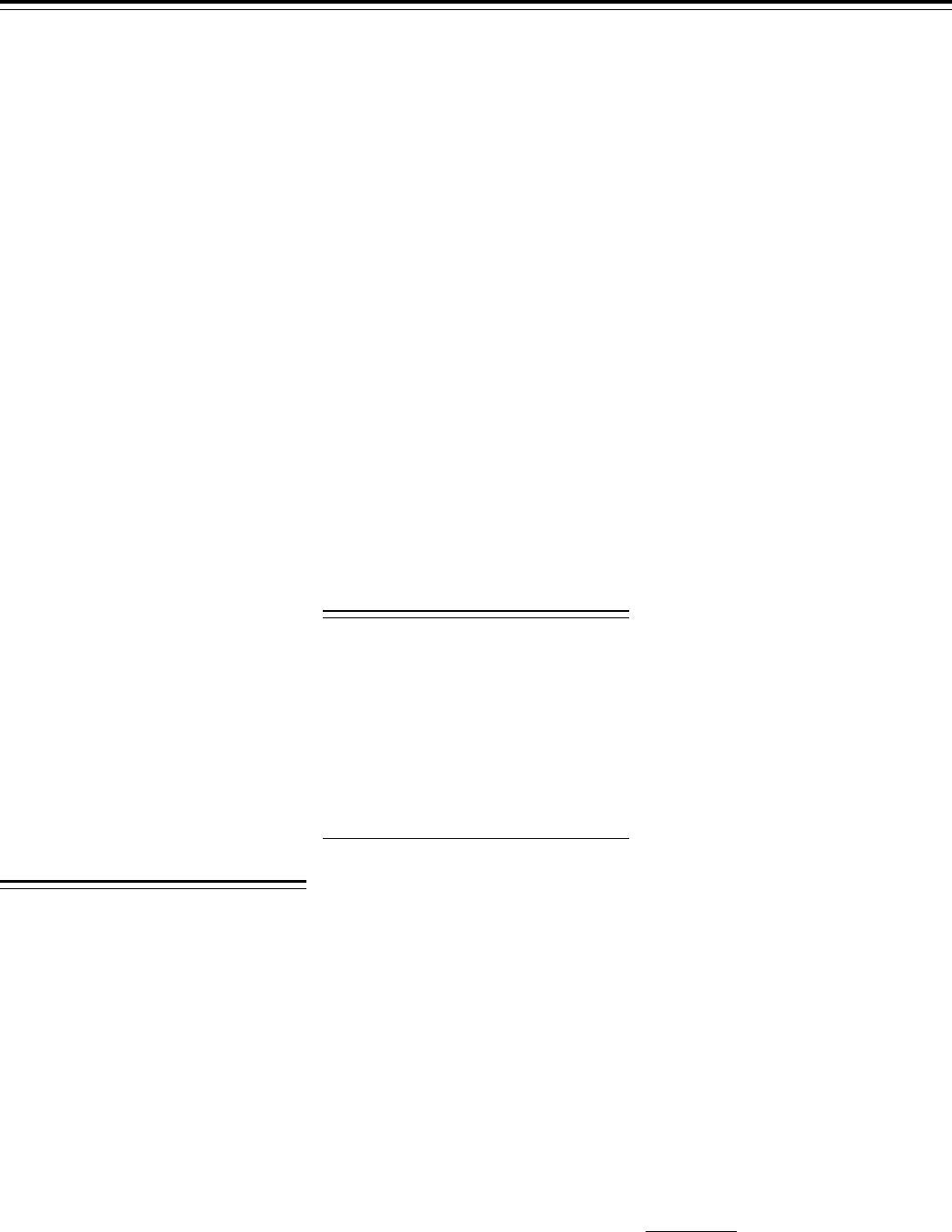
23330
Federal Register / Vol. 81, No. 76 / Wednesday, April 20, 2016 / Notices
1
Memorandum and Order CLI–15–14, dated May
21, 2015 (ADAMS Accession No. ML15141A084).
SUPPLEMENTARY INFORMATION
: On
December 31, 2015, the Copyright Office
issued a Notice of Inquiry seeking
public comment on thirty topics
concerning the efficiency and
effectiveness of section 512 of Title 17.
See 80 FR 81862. The Office then issued
an NOI on March 18, 2016 announcing
two two-day public roundtables on
section 512 to be held in New York,
New York on May 2 and 3, 2016, and
Stanford, California on May 12 and 13,
2016. See 81 FR 14896. Interested
members of the public were directed to
submit participation requests through
forms posted on the Office’s Web site no
later than April 11, 2016.
Due to the significant level of interest
in the proceeding, the Office has
decided to move the location of the New
York roundtable to Room 506 of the
Thurgood Marshall United States
Courthouse, 40 Centre Street, New York,
New York 10007.
Please note that the roundtable
hearing rooms, in New York and
California, will have a limited number
of seats for participants and observers.
For individuals who wish to observe a
roundtable, the Office will provide
public seating on a first-come, first-
served basis on the days of the
roundtables.
Individuals selected for participation
in one or more of the roundtable
sessions will be notified directly by the
Office. For additional information about
the specific topics to be covered at the
roundtables, please see http://
copyright.gov/policy/section512/public-
roundtable/participate-request.html.
Dated: April 15, 2016.
Maria A. Pallante,
Register of Copyrights, U.S. Copyright Office.
[FR Doc. 2016–09175 Filed 4–19–16; 8:45 am]
BILLING CODE 1410–30–P
NATIONAL SCIENCE FOUNDATION
Advisory Committee for Social,
Behavioral and Economic Sciences;
Notice of Meeting
In accordance with Federal Advisory
Committee Act (Pub. L. 92–463, as
amended), the National Science
Foundation announces the following
meeting:
Name: Advisory Committee for Social,
Behavioral and Economic Sciences (#1171).
Date/Time: May 23, 2016; 9:00 a.m. to 5:00
p.m. May 24, 2016; 8:30 a.m. to 12:30 p.m.
Place: National Science Foundation, 4201
Wilson Boulevard, Stafford I Room 1235,
Arlington, VA 22230.
Type Of Meeting: Open.
Contact Person: Dr. Deborah Olster, Office
of the Assistant Director, Directorate for
Social, Behavioral and Economic Sciences,
National Science Foundation, 4201 Wilson
Boulevard, Room 905, Arlington, Virginia
22230, 703–292–8700.
Summary Of Minutes: May be obtained
from contact person listed above.
Purpose Of Meeting: To provide advice and
recommendations to the National Science
Foundation on major goals and policies
pertaining to Social, Behavioral and
Economic Sciences Directorate (SBE)
programs and activities.
Agenda
Monday, May 23, 2016
SBE Directorate and Division Updates
Grand Challenges in the SBE Sciences
Graduate Education in the SBE Sciences
Science of Science Communications
Tuesday, May 24, 2016
Public Access to SBE Data
Cyberinfrastructure: Collaborations between
SBE and the Directorate for Computer &
Information Science & Engineering
NSF Broader Impacts Strategic Review
Meeting with NSF Leadership
Future Meetings, Assignments and
Concluding Remarks
Dated: April 14, 2016.
Crystal Robinson,
Committee Management Officer.
[FR Doc. 2016–09049 Filed 4–19–16; 8:45 am]
BILLING CODE 7555–01–P
NUCLEAR REGULATORY
COMMISSION
[Docket Nos. 50–275 and 50–323; NRC–
2016–0080]
Diablo Canyon Power Plant, Units 1
and 2
AGENCY
: Nuclear Regulatory
Commission.
ACTION
: Request for action; receipt.
SUMMARY
: The U.S. Nuclear Regulatory
Commission (NRC) is giving notice that
Friends of the Earth (FOE or petitioner)
filed a Petition to Intervene and Request
for Hearing concerning Diablo Canyon
Power Plant (DCPP) on August 26, 2014,
asserting, in part, its concerns about
DCPP’s operational safety and ability to
safely shut down in the event of a
nearby earthquake. The Commission
referred those concerns to the NRC’s
Executive Director for Operations (EDO)
for consideration. The petitioner’s
requests are included in the
SUPPLEMENTARY INFORMATION
section of
this document.
ADDRESSES
: Please refer to Docket ID
NRC–2016–0080 when contacting the
NRC about the availability of
information regarding this document.
You may obtain publicly-available
information related to this document
using any of the following methods:
• Federal Rulemaking Web site: Go to
http://www.regulations.gov and search
for Docket ID NRC–2016–0080. Address
questions about NRC dockets to Carol
Gallagher; telephone: 301–415–3463;
email: [email protected]. For
technical questions, contact the
individual listed in the
FOR FURTHER
INFORMATION CONTACT
section of this
document.
• NRC’s Agencywide Documents
Access and Management System
(ADAMS): You may obtain publicly-
available documents online in the
ADAMS Public Documents collection at
http://www.nrc.gov/reading-rm/
adams.html. To begin the search, select
‘‘ADAMS Public Documents’’ and then
select ‘‘Begin Web-based ADAMS
Search.’’ For problems with ADAMS,
please contact the NRC’s Public
Document Room (PDR) reference staff at
1–800–397–4209, 301–415–4737, or by
email to [email protected]. The
ADAMS accession number for each
document referenced (if that document
is available in ADAMS) is provided the
first time that a document is referenced.
• NRC’s PDR: You may examine and
purchase copies of public documents at
the NRC’s PDR, Room O1–F21, One
White Flint North, 11555 Rockville
Pike, Rockville, Maryland 20852.
FOR FURTHER INFORMATION CONTACT
: Lisa
M. Regner, Office of Nuclear Reactor
Regulation, U.S. Nuclear Regulatory
Commission, Washington DC 20555–
0001; telephone: 301–415–1906, email:
SUPPLEMENTARY INFORMATION
:
On August 26, 2014, FOE filed a
Petition to Intervene and Request for
Hearing (Petition) concerning DCPP
(ADAMS Package Accession No.
ML15226A316). Within this Petition,
FOE asserted concerns about DCPP’s
operational safety and ability to safely
shut down. The Commission referred
those concerns to the NRC’s EDO
1
for
consideration under the regulations in
section 2.206 of title 10 of the Code of
Federal Regulations (10 CFR), ‘‘Requests
for Action Under this Subpart.’’ The
EDO then referred these concerns to the
NRC’s Office of Nuclear Reactor
Regulation for consideration under 10
CFR 2.206.
On two occasions, the NRC offered
the petitioner opportunities to address
the Petition Review Board (PRB), which
was established to review the concerns
referred to the EDO from the
Commission, as discussed above. In
response, on September 30, 2015, and
February 8, 2016, FOE’s attorney
provided written submissions on behalf
VerDate Sep<11>2014 17:19 Apr 19, 2016 Jkt 238001 PO 00000 Frm 00062 Fmt 4703 Sfmt 4703 E:\FR\FM\20APN1.SGM 20APN1
Lhorne on DSK5TPTVN1PROD with NOTICES
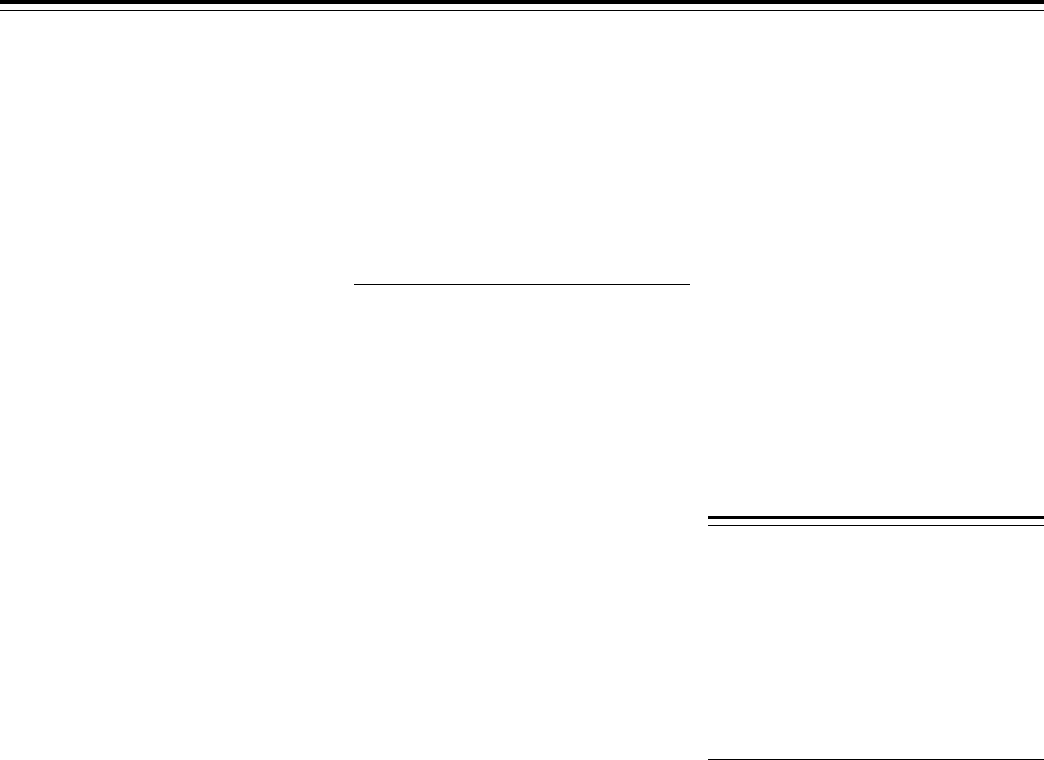
24892
Federal Register / Vol. 81, No. 81 / Wednesday, April 27, 2016 / Notices
other mine if the Secretary of Labor
determines that:
1. An alternative method of achieving
the result of such standard exists which
will at all times guarantee no less than
the same measure of protection afforded
the miners of such mine by such
standard; or
2. That the application of such
standard to such mine will result in a
diminution of safety to the miners in
such mine.
In addition, the regulations at 30 CFR
44.10 and 44.11 establish the
requirements and procedures for filing
petitions for modification.
II. Petitions for Modification
Docket Number: M–2016–010–C.
Petitioner: Buckingham Coal
Company, P.O. Box 400, Corning, Ohio
43730–0400.
Mine: Buckingham Mine #6, MSHA
I.D. No. 33–04526, located in Perry
County, Ohio.
Regulation Affected: 30 CFR 75.1101–
1(b) (Deluge-type water spray systems).
Modification Request: The petitioner
requests a modification of the existing
standard to allow the mine not to
provide blow-off dust covers on deluge-
type system nozzles under existing 30
CFR 75.1101–1(b). The functional tests
required of the deluge system each year
will instead be done weekly. The
petitioner states that the #6 Mine
maintains more than adequate pressure
and flow rates for the deluge system,
and in some tests, the dust covers do not
come off all sprays. The petitioner
further states that:
(1) By doing the functional test
weekly, all sprays can be inspected and
maintained on a weekly basis.
(2) The dust covers provide protection
for sprays which are tested yearly and
by testing weekly the covers are not
necessary.
The petitioner asserts that the
proposed alternative method will at all
times guarantee no less than the same
measure or protection afforded by the
existing standard.
Sheila McConnell,
Director, Office of Standards, Regulations,
and Variances.
[FR Doc. 2016–09798 Filed 4–26–16; 8:45 am]
BILLING CODE 4520–43–P
LIBRARY OF CONGRESS
U.S. Copyright Office
[Docket No. 2015–7]
Section 512 Study: Notice of Location
Change for California Public
Roundtables
AGENCY
: U.S. Copyright Office, Library
of Congress.
ACTION
: Notice of location change for
California public roundtables.
SUMMARY
: The United States Copyright
Office has changed the location of the
May 12 and 13, 2016 public roundtables
on the section 512 study. The Office
announced the public roundtables in
New York and California by notice in
the Federal Register on March 18, 2016.
See 81 FR 14896. The May 12 and 13,
2016 public roundtables in California
will now be held in Courtroom 4 of the
Ninth Circuit James R. Browning
Courthouse, 95 Seventh Street, San
Francisco, California 94103.
Dates and Addresses
The California roundtable will take
place on May 12 and 13, 2016, from 9:00
a.m. to 5:00 p.m. on both days, and will
be held in Courtroom 4 of the Ninth
Circuit James R. Browning Courthouse,
95 Seventh Street, San Francisco,
California 94103.
FOR FURTHER INFORMATION CONTACT
:
Jacqueline C. Charlesworth, General
Counsel and Associate Register of
Copyrights, [email protected]; or
Karyn Temple Claggett, Director of the
Office of Policy and International
Affairs and Associate Register of
Copyrights, [email protected]. Both can be
reached by telephone at 202–707–8350.
SUPPLEMENTARY INFORMATION
: On
December 31, 2015, the Copyright Office
issued a Notice of Inquiry seeking
public comment on thirty topics
concerning the efficiency and
effectiveness of section 512 of Title 17.
See 80 FR 81862. The Office then issued
a notice of public roundtables on March
18, 2016 announcing two two-day
public roundtables on section 512 to be
held in New York, New York on May 2
and 3, 2016, and Stanford, California on
May 12 and 13, 2016. See 81 FR 14896.
Interested members of the public were
directed to submit participation requests
through forms posted on the Office’s
Web site no later than April 11, 2016.
Due to the significant level of interest
in the proceeding, the Office has
decided to move the location of the
California roundtable to Courtroom 4 of
the Ninth Circuit James R. Browning
Courthouse, 95 Seventh Street, San
Francisco, California 94103.
Please note that the roundtable
hearing rooms, in New York and
California, will have a limited number
of seats for participants and observers.
For individuals who wish to observe a
roundtable, the Office will provide
public seating on a first-come, first-
served basis on the days of the
roundtables.
Individuals selected for participation
in one or more of the roundtable
sessions have been notified directly by
the Office. For additional information
about the specific topics to be covered
at the roundtables, please see http://
copyright.gov/policy/section512/public-
roundtable/participate-request.html.
Dated: April 22, 2016.
Jacqueline C. Charlesworth,
General Counsel and Associate Register of
Copyrights, U.S. Copyright Office.
[FR Doc. 2016–09869 Filed 4–26–16; 8:45 am]
BILLING CODE 1410–30–P
NATIONAL AERONAUTICS AND
SPACE ADMINISTRATION
[Notice: 16–030]
Aerospace Safety Advisory Panel;
Meeting
AGENCY
: National Aeronautics and
Space Administration (NASA).
ACTION
: Notice of meeting.
SUMMARY
: In accordance with the
Federal Advisory Committee Act, Public
Law 92–463, as amended, the National
Aeronautics and Space Administration
announces a forthcoming meeting of the
Aerospace Safety Advisory Panel.
DATES
: Thursday, May 12, 2016, 10:30
a.m. to 11:45 a.m., Central Time.
ADDRESSES
: NASA Marshall Space
Flight Center, Building 4200, Room 600,
Huntsville, Alabama 35812.
FOR FURTHER INFORMATION CONTACT
: Ms.
Marian Norris, Aerospace Safety
Advisory Panel Administrative Officer,
NASA Headquarters, Washington, DC
20546, (202) 358–4452 or mnorris@
nasa.gov.
SUPPLEMENTARY INFORMATION
: The
Aerospace Safety Advisory Panel
(ASAP) will hold its Second Quarterly
Meeting for 2016. This discussion is
pursuant to carrying out its statutory
duties for which the Panel reviews,
identifies, evaluates, and advises on
those program activities, systems,
procedures, and management activities
that can contribute to program risk.
Priority is given to those programs that
involve the safety of human flight. The
agenda will include:
VerDate Sep<11>2014 17:29 Apr 26, 2016 Jkt 238001 PO 00000 Frm 00110 Fmt 4703 Sfmt 4703 E:\FR\FM\27APN1.SGM 27APN1
asabaliauskas on DSK3SPTVN1PROD with NOTICES

78636
Federal Register / Vol. 81, No. 216 / Tuesday, November 8, 2016 / Notices
1
See Section 512 Study: Notice and Request for
Public Comment, 80 FR 81862, 81868 (Dec. 31,
2015).
and domestic violence is often cited as
the primary cause of homelessness.
There is a significant need for housing
programs that offer supportive services
and resources to victims of domestic
violence and their children in ways that
are trauma-informed and culturally
relevant. The Administration for
Children and Families (ACF), Family
and Youth Services Bureau, Division of
Family Violence Prevention and
Services (DFVPS), the US Department of
Justice Office of Justice Programs Office
for Victims of Crime (OJP/OVC), Office
on Violence Against Women (OVW),
and the Department of Housing and
Urban Development (HUD) have
established a federal technical
assistance consortium that will provide
national domestic violence and housing
training, technical assistance, and
resource development. The Domestic
Violence and Housing Technical
Assistance Consortium will implement
a federally coordinated approach to
providing resources, program guidance,
training, and technical assistance to
domestic violence, homeless, and
housing service providers.
The Safe Housing Needs Assessment
will be used to determine the training
and technical assistance needs of
organizations providing safe housing for
domestic violence victims and their
families.
The Safe Housing Needs Assessment
will gather input from community
service providers, coalitions and
continuums of care. This assessment is
the first of its kind aimed at
simultaneously reaching the domestic
and sexual violence field, as well as the
homeless and housing field. The
assessment seeks to gather information
on topics ranging from the extent to
which both fields coordinate to provide
safety and access to services for
domestic and sexual violence survivors
within the homeless system, to ways in
which programs are implementing
innovative models to promote long-term
housing stability for survivors and their
families. Additionally, this assessment
seeks to identify specific barriers
preventing collaboration across these
fields, as well as promising practices.
The results will help the Consortium
provide organizations and communities
with the tools, strategies and support
necessary to improve coordination
between domestic violence/sexual
assault service providers and homeless
and housing service providers, so that
survivors and their children can
ultimately avoid homelessness and live
free from abuse.
(5) An estimate of the total number of
respondents and the amount of time
estimated for an average respondent to
respond/reply: It is estimated that it will
take the approximately 78,660
respondents approximately fifteen
minutes to complete an online
assessment tool.
(6) An estimate of the total public
burden (in hours) associated with the
collection: The total annual hour burden
to complete the data collection forms is
19,665 hours, that is 78,660
organizations completing an assessment
tool one time with an estimated
completion time being fifteen minutes.
If additional information is required
contact: Jerri Murray, Department
Clearance Officer, United States
Department of Justice, Justice
Management Division, Policy and
Planning Staff, Two Constitution
Square, 145 N Street NE., 3E.405B,
Washington, DC 20530.
Dated: November 3, 2016.
Jerri Murray,
Department Clearance Officer for PRA, U.S.
Department of Justice.
[FR Doc. 2016–26920 Filed 11–7–16; 8:45 am]
BILLING CODE 4410–FX–P
LIBRARY OF CONGRESS
Copyright Office
[Docket No. 2015–7]
Section 512 Study: Request for
Additional Comments
AGENCY
: U.S. Copyright Office, Library
of Congress.
ACTION
: Notice of inquiry.
SUMMARY
: The U.S. Copyright Office
seeks further comments on the impact
and effectiveness of the Digital
Millennium Copyright Act (‘‘DMCA’’)
safe harbor provisions. This request
provides an opportunity for interested
parties to reply or expand upon issues
raised in written comments submitted
on or before April 1, 2016, and during
the public roundtables held May 2–3,
2016 in New York, and May 12–13,
2016 in San Francisco. The Copyright
Office also invites parties to submit
empirical research studies assessing
issues related to the operation of the
safe harbor provisions on a quantitative
or qualitative basis.
DATES
: Written responses to the
questions outlined below must be
received no later than 11:59 p.m.
Eastern Time on February 6, 2017.
Empirical research studies providing
quantitative or qualitative data relevant
to the subject matter of this study must
be received no later than 11:59 p.m.
Eastern Time on March 8, 2017.
ADDRESSES
: For reasons of government
efficiency, the Copyright Office is using
the regulations.gov system for the
submission and posting of public
comments in this proceeding. All
comments are therefore to be submitted
electronically through regulations.gov.
Specific instructions for submitting
comments are available on the
Copyright Office Web site at http://
copyright.gov/policy/section512/
comment-submission/. To meet
accessibility standards, all comments
must be provided in a single file not to
exceed six megabytes (MB) in one of the
following formats: Portable Document
File (PDF) format containing searchable,
accessible text (not an image); Microsoft
Word; WordPerfect; Rich Text Format
(RTF); or ASCII text file format (not a
scanned document). The form and face
of the comments must include the name
of the submitter and any organization
the submitter represents. The Office will
post all comments publicly in the form
that they are received. If electronic
submission of comments is not feasible
due to lack of access to a computer and/
or the Internet, please contact the Office,
using the contact information below, for
special instructions.
FOR FURTHER INFORMATION CONTACT
:
Cindy Abramson, Assistant General
Counsel, by email at [email protected] or by
telephone at 202–707–8350; Kevin
Amer, Senior Counsel for Policy and
International Affairs, by email at
[email protected] or by telephone at 202–
707–8350; or Kimberley Isbell, Senior
Counsel for Policy and International
Affairs, by email at [email protected] or by
telephone at 202–707–8350.
SUPPLEMENTARY INFORMATION
:
I. Background
In order to evaluate key parts of the
copyright law as it pertains to the digital
copyright marketplace, the U.S.
Copyright Office is conducting a study
to evaluate the impact and effectiveness
of the DMCA safe harbor provisions
contained in 17 U.S.C. 512. To aid its
work in this area, the Office published
an initial Notice of Inquiry on December
31, 2015 (‘‘First Notice’’), seeking
written comments to 30 questions
covering eight categories of topics.
These included questions about the
general efficacy of the DMCA provisions
enacted in 1998, as well as the practical
costs, and burdens, of the current
DMCA environment.
1
The Office
received a combination of more than
92,000 written submissions and form
replies in response to the First Notice,
VerDate Sep<11>2014 16:27 Nov 07, 2016 Jkt 241001 PO 00000 Frm 00072 Fmt 4703 Sfmt 4703 E:\FR\FM\08NON1.SGM 08NON1
mstockstill on DSK3G9T082PROD with NOTICES

78637
Federal Register / Vol. 81, No. 216 / Tuesday, November 8, 2016 / Notices
2
See Section 512 Study: Announcement of Public
Roundtables, 81 FR 14896 (Mar. 18, 2016).
3
References to the transcripts in this document
are indicated by ‘‘Tr.,’’ followed by the page(s) and
line(s) of the reference, the date of the roundtable,
and the speaker’s name and affiliation.
4
See, e.g., Tr. at 174:13–17 (May 3, 2016)
(Andrew Deutsch, DLA Piper) (‘‘[T]he world of
creators runs from individual singer-songwriters to
gigantic studios and record producers. They have
different needs, different problems, and it really is
impossible to create a system that does everything
for everyone.’’).
5
See, e.g., Dirs. Guild of Am., Comments
Submitted in Response to U.S. Copyright Office’s
Dec. 31, 2015 Notice of Inquiry at 6 (Apr. 1, 2016)
(‘‘To utilize the DMCA notice and takedown
mechanism, a rights holder must first prepare
notices in exact accordance with the complicated
legal requirements of Section 512. Sending these
notices to a designated agent of the service provider
requires a level of legal expertise that larger rights
holders may possess but which smaller creators do
not have at their disposal.’’); Kernochan Ctr. for
Law, Media & the Arts, Columbia Law Sch.,
Comments Submitted in Response to U.S. Copyright
Office’s Dec. 31, 2015 Notice of Inquiry at 7 (Apr.
1, 2016) (‘‘The process is burdensome for
individuals and entities of any size. Larger entities,
which may hold or manage numerous copyrighted
works, may use technological tools and many
employees or consultants to search for infringing
files on the [I]nternet and to file notices in an
attempt to get them removed. Independent creators,
however, often have to face this issue alone.’’).
6
See Tr. at 146:8–20 (May 2, 2016) (Brianna
Schofield, Univ. of Cal., Berkeley Sch. of Law)
(‘‘[W]e looked at notices sent to Google Images
search and these notice senders tended to be
individuals, smaller businesses and we saw a much
different dynamic here in that these were targeting
sites that we might be more fearful would
compromise legitimate expression, so blogs,
message board threads.... Fifteen percent
weren’t even copyright complaints to start with.
They were submitted as a DMCA complaint but
they were actually complaining about privacy or
defamation, this sort of thing.’’); Tr. at 36:3–37:9
(May 12, 2016) (Jennifer Urban, Univ. of Cal.,
Berkeley Sch. of Law). But see Jonathan Bailey,
Comments Submitted in Response to U.S. Copyright
Office’s Dec. 31, 2015 Notice of Inquiry at 2 (Feb.
16, 2016) (‘‘With this automation has come
increased mistakes. Machines are simply not as
good at detecting infringement and fair use issues
as humans.’’).
7
See, e.g., Tr. at 282:21–283:6 (May 13, 2016)
(Cathy Gellis, Dig. Age Def.); Tr. at 324:1–15 (May
2, 2016) (Ellen Schrantz, Internet Ass’n).
8
Larger both in terms of the amount of content
that appears on the site, and the technological and
monetary resources available to address DMCA
notices.
9
See, e.g., Audible Magic Corp., Comments
Submitted in Response to U.S. Copyright Office’s
Dec. 31, 2015 Notice of Inquiry at 4 (Mar. 21, 2016)
(‘‘[U]ser-generated-content sharing and cloud file
sharing networks [including Facebook,
Dailymotion, SoundCloud, and Twitch] . . .
dramatically reduce copyright-infringing media
sharing using Audible Magic software and hosted
services [to] . . . detect[] registered audio and video
content in the user upload stream.’’); Pinterest Inc.,
Comments Submitted in Response to U.S. Copyright
Office’s Dec. 31, 2015 Notice of Inquiry at 3 (Apr.
1, 2016) (‘‘[O]ur engineering team built a tool that
allowed us to . . . attach the author’s name to [an]
image.... Pinterest has also developed tools to
help content owners prevent certain content from
being saved to Pinterest, and to enable the quick
removal of their content if they so wish.’’).
10
See, e.g., Tr. at 111:17–21 (May 12, 2016) (Lila
Bailey, Internet Archive) (‘‘The Internet Archive
definitely falls into the DMCA Classic [category].
They have a tiny staff . . . and they review every
notice they get by a human being.’’); Tr. at 157:3–
10 (May 12, 2016) (Joseph Gratz, Durie Tangri LLP)
(‘‘[T]he Internet from 1998 is still all there . . . it’s
small OSPs, small content creators, small copyright
holders needing remedies for small
infringements.’’); Tr. at 100:10–15 (May 12, 2016)
(Charles Roslof, Wikimedia Found.) (‘‘We operate
Wikipedia and . . . despite the large amount of
content we host, we receive very few takedown
notices.’’).
11
See Internet Ass’n, Comments Submitted in
Response to U.S. Copyright Office’s Dec. 31, 2015
Notice of Inquiry at 15 (Mar. 31, 2016) (‘‘[S]tartups
and small businesses lack the sophisticated
resources of larger, more established businesses in
responding to takedown requests.’’).
which can be found on the
regulations.gov Web site at https://
www.regulations.gov/docket?D=COLC-
2015-0013.
In May 2016, the Copyright Office
convened roundtables in New York and
San Francisco, each for a two day
period. The roundtables provided
participants with the opportunity to
share their views on the topics
identified in the First Notice, as well as
any other issues relating to the
operation of the DMCA safe harbors.
2
Transcripts of the proceedings at each of
the roundtables are available on the
Copyright Office Web site at http://
copyright.gov/policy/section512/ under
‘‘Public Roundtables.’’
3
Based on the initial round of written
submissions and the results of the
roundtable discussions, the Copyright
Office believes a number of themes
merit additional consideration. Many of
these relate to questions of balance, i.e.,
how to weigh the diverse interests and
needs of affected stakeholders,
including individual authors and their
small businesses, publishers and
producers of all sizes, Internet service
providers (‘‘ISPs’’) of all sizes, and
members of the public who may seek to
access the Internet on any given day for
any number of reasons. The Office is
also interested in feedback regarding
how to continue to propel the DMCA’s
underlying public interest objectives,
that is, its twin goals of fostering a
robust and innovative online
environment while protecting the rights
of content creators. Within these broad
categories, the specific topics
participants raised can be further
grouped in the following general areas:
(1) Characteristics of the current Internet
ecosystem; (2) operation of the current
DMCA safe harbor system; (3) potential
future evolution of the DMCA safe
harbor system, including possible
legislative improvements; and (4) other
developments.
A. Characteristics of the Current
Internet Ecosystem
One of the key themes that emerged
from the first round of public comments
and the roundtable discussions was the
diversity of the current Internet
ecosystem and the importance of
factoring such diversity into any
policymaking in the online space.
Participants noted that there is a wide
variety of experiences and views even
within particular stakeholder groups.
For example, study participants
pointed out that differences in the
characteristics of content creators result
in different experiences with the
operation of the DMCA safe harbors.
4
They noted that the burden of
addressing online infringement without
an in-house piracy team is especially
great for smaller content creators and
businesses, and that some of the tools
available to larger content owners are
unavailable to smaller creators as a
result of cost or other considerations.
5
Similarly, some expressed the view that
the quality of takedown notices often
varies depending on the identity and
size of the content creator, with notices
from individuals and smaller entities
often being less sophisticated and/or
accurate than notices sent by large
corporations employing automated
processes.
6
Other study participants
highlighted the importance of taking
into consideration the experiences of
non-professional creators who rely on
the platforms enabled by the DMCA safe
harbors to disseminate and receive
remuneration for their works.
7
Likewise, a heterogeneous picture of
ISPs emerged from the first round of
comments and the public roundtables,
with large deviations in terms of
functions, size, resources, and business
models, as well as the volume of DMCA
takedown notices received on an annual
basis. While some of the larger
platforms
8
like Google, Facebook,
SoundCloud, and Pinterest have
devoted resources to implementing
automated filtering systems and other
tools to remove significant amounts of
infringing content,
9
there appear to be
many more ISPs that are continuing to
operate manual DMCA takedown
processes for a lower volume of
notices.
10
Some commenters expressed
concern that promulgation of rules
designed for the former could place an
undue burden on the operations of the
latter.
11
In addition, several study participants
highlighted the importance of taking
into consideration the needs of
individual Internet users when
developing recommendations for
possible changes to the DMCA safe
VerDate Sep<11>2014 16:27 Nov 07, 2016 Jkt 241001 PO 00000 Frm 00073 Fmt 4703 Sfmt 4703 E:\FR\FM\08NON1.SGM 08NON1
mstockstill on DSK3G9T082PROD with NOTICES

78638
Federal Register / Vol. 81, No. 216 / Tuesday, November 8, 2016 / Notices
12
See Pub. Knowledge, Comments Submitted in
Response to U.S. Copyright Office’s Dec. 31, 2015
Notice of Inquiry at 4 (Apr. 1, 2016) (‘‘Section 512
appropriately balances the interests of online
platforms and copyright owners .... Where the
balance is acutely in need of recalibration, though,
is with respect to user rights.’’); Tr. at 101:4–10
(May 13, 2016) (Daphne Keller, Stanford Law Sch.
Ctr. for Internet & Soc’y).
13
Compare Tr. at 92:6–11 (May 12, 2016) (Jordan
Berliant, Revelation Mgmt. Grp.) (‘‘I’m very
concerned about even our biggest client’s ability to
earn a living under the current copyright protection
system, which, in effect, sanctions the infringement
of their rights and is devastating to the revenue that
they can earn from recording music.’’), and Tr. at
119:1–5 (May 2, 2016) (Jennifer Pariser, Motion
Picture Ass’n of Am.) (‘‘[T]his is where on the
content side we feel the imbalance comes, that
[processing takedown notices is] a cost of doing
business for an online service provider that is
relatively manageable for them, whereas on the
creation side, we’re being killed by piracy.’’), with
Facebook, Inc., Comments Submitted in Response
to U.S. Copyright Office’s Dec. 31, 2015 Notice of
Inquiry at 4 (Apr. 1, 2016) (‘‘It is quite
effective.... [W]hile the DMCA by necessity
imposes some burden on the respective parties, its
procedures unquestionably result in the effective
and consistent removal of infringing content from
the Internet.’’), and Amazon.com, Inc., Comments
Submitted in Response to U.S. Copyright Office’s
Dec. 31, 2015 Notice of Inquiry at 3–4 (Apr. 1, 2016)
(discussing the role of section 512 in fostering a
balanced copyright regime that allows Internet
creativity and innovation).
14
See Intel Corp., Comments Submitted in
Response to U.S. Copyright Office’s Dec. 31, 2015
Notice of Inquiry at 4–5 (Apr. 1, 2016) (‘‘As stated
in the House Report, the goal of the [Digital
Millennium Copyright] Act was to lubricate the
legitimate distribution of creative content. When
measured by these Congressional yardsticks,
Section 512 has been a stunning success.... At
the same time, Congress desired to preserve ‘strong
incentives for service providers and copyright
owners to cooperate to detect and deal with
copyright infringements that take place in the
digital networked environment.’ Intel believes that
the Act has done just that.’’).
15
See, e.g., New Am.’s Open Tech. Inst.,
Comments Submitted in Response to U.S. Copyright
Office’s Dec. 31, 2015 Notice of Inquiry at 3 (Apr.
1, 2016); Tr. at 77:7–13 (May 13, 2016) (Fred von
Lohmann, Google, Inc.) (‘‘I disagree with people
who think that a large volume of notices is a sign
of failure; in fact, quite the contrary. If the notices
weren’t doing any good, if it was too expensive to
send, we would expect the numbers to be falling,
not rising. And in fact, we see them rising because
the systems are more efficient.’’).
16
See, e.g., Am. Ass’n of Indep. Music et al., Joint
Comments Submitted in Response to U.S. Copyright
Office’s Dec. 31, 2015 Notice of Inquiry at 21 (Apr.
1, 2016); T Bone Burnett et al., Joint Comments
Submitted in Response to U.S. Copyright Office’s
Dec. 31, 2015 Notice of Inquiry at 2 (Apr. 1, 2016).
17
See, e.g., Tr. at 108:2–5 (May 13, 2016) (Dean
Marks, Motion Picture Ass’n of Am.).
18
See, e.g., Jill Doe, Comments Submitted in
Response to U.S. Copyright Office’s Dec. 31, 2015
Notice of Inquiry at 2 (Mar. 21, 2016); Verizon
Commc’ns, Comments Submitted in Response to
U.S. Copyright Office’s Dec. 31, 2015 Notice of
Inquiry at 18 (Apr. 1, 2016).
19
See, e.g., Tr. at 153:3–17 (May 2, 2016)
(Rebecca Prince, Becky Boop); Tr. at 75:4–8 (May
12, 2016) (Alex Feerst, Medium); Tr. at 164:9–16
(May 12, 2016) (Joseph Gratz, Durie Tangri LLP).
20
See, e.g., Engine et al., Comments Submitted in
Response to U.S. Copyright Office’s Dec. 31, 2015
Notice of Inquiry at 9 (Apr. 1, 2016); Internet
Commerce Coal., Comments Submitted in Response
to U.S. Copyright Office’s Dec. 31, 2015 Notice of
Inquiry at 3 (Apr. 1, 2016).
21
See, e.g., Tr. at 155:9–13 (May 2, 2016) (Steven
Rosenthal, McGraw-Hill Educ.); Tr. at 183:21–184:1
(May 12, 2016) (Gabriel Miller, Paramount Pictures
Corp.).
22
See Copyright All., Comments Submitted in
Response to U.S. Copyright Office’s Dec. 31, 2015
Notice of Inquiry at 20–21 (Apr. 1, 2016).
23
See, e.g., Dig. Media Licensing Ass’n, Inc. et al.,
Joint Comments Submitted in Response to U.S.
Copyright Office’s Dec. 31, 2015 Notice of Inquiry
at 7 (Apr. 1, 2016); Sony Music Entm’t, Comments
Submitted in Response to U.S. Copyright Office’s
Dec. 31, 2015 Notice of Inquiry at 16 (Apr. 1, 2016)
(citing the cost of litigation as accounting for the
fact that ‘‘since 2008, thousands of videos infringing
Sony’s copyrights have been reinstated on YouTube
due to counter notifications not being contested by
Sony’’ even though ‘‘[i]n the vast majority of those
instances, there was no legitimate question that the
use infringed Sony’s exclusive rights’’).
24
See Tr. at 54:22–55:11 (May 3, 2016) (Matthew
Schruers, Comput. & Commc’ns Indus. Ass’n).
25
See Internet Archive, Comments Submitted in
Response to U.S. Copyright Office’s Dec. 31, 2015
Notice of Inquiry at 3 (Mar. 22, 2016).
26
See Jennifer M. Urban, Joe Karaganis & Brianna
L. Schofield, Notice and Takedown in Everyday
Practice 37 (UC Berkeley Pub. Law Research, Paper
No. 2755628, 2016), http://ssrn.com/
abstract=2755628.
27
See Ass’n of Am. Publishers, Comments
Submitted in Response to U.S. Copyright Office’s
Dec. 31, 2015 Notice of Inquiry at 7 (Apr. 1, 2016);
Tr. at 19:5–11 (May 12, 2016) (Devon Weston,
Digimarc).
28
See, e.g., Ellen Seidler, Fast Girl Films,
Comments Submitted in Response to U.S. Copyright
harbor system.
12
Participants
emphasized that the DMCA counter-
notice process is an important
mechanism to protect the legitimate
online speech of individual Internet
users, and that the proliferation of
diverse platforms and services made
possible by the DMCA safe harbors
provides a critical benefit for the public.
B. Operation of the Current DMCA Safe
Harbor System
While some study participants
asserted that the section 512 safe
harbors are currently operating
effectively and as Congress intended, a
number of participants identified
various shortcomings and barriers for
content creators, ISPs, and individual
Internet users. These differing views
were especially stark when comparing
the experiences of content creators
(large and small) with the experiences of
online service providers.
13
ISPs
generally painted a picture of a thriving
and vibrant Internet ecosystem that was
largely the result of the safeguards and
protections of the DMCA safe harbors.
14
While ISP participants acknowledged
the ever-increasing volume of takedown
notices that are now being sent, they
viewed the ability of larger ISPs to
accommodate the increased volume as
an example of the overall success of the
system.
15
In stark contrast, many
content creators of all sizes bemoaned
what they saw as the inefficiency and
ineffectiveness of the system.
16
These
participants complained about the time
and resources necessary to police the
Internet and viewed the ever-increasing
volume of notices as an example of the
DMCA notice-and-takedown regime’s
failure to sufficiently address the
continued proliferation of online
infringement.
17
ISPs, civic organizations, and content
creators also expressed differing views
regarding the extent to which false or
abusive notices are a problem under the
current system, and the effectiveness of
the counter-notice process for ensuring
access to legitimate content. Several
ISPs and civic groups pointed to abusive
notices as one of the primary
shortcomings of the safe harbor regime.
They pointed to the length of time
required to have material replaced after
a counter-notice,
18
and argued that
having non-infringing content removed
even for a few days can severely impact
a business.
19
Several groups cited recent
data released by researchers at the
University of California, Berkeley
School of Law as evidence of the scope
of the problem.
20
Some content creators,
on the other hand, expressed the view
that abusive notices are in fact quite
rare
21
and that the number of improper
notices pales in comparison to the
overwhelming volume of infringing
content. They argued that the counter-
notice process sufficiently protects
legitimate material,
22
and pointed out
that the financial burden of bringing a
federal court case to prevent the
reposting of infringing material within
days of receiving a counter-notice makes
the provision unusable in practice.
23
Both content creators and ISPs
identified shortcomings in their abilities
to efficiently process notices under the
current system. ISPs identified the
difficulty of receiving notices through
multiple channels (e.g., email, web
form, fax, etc.),
24
as well as incomplete
or unclear notices,
25
as barriers to
efficient processing of takedown
requests. Several ISPs have reported
moving to the use of web forms for
receipt of takedown notices in order to
overcome some of these difficulties.
26
In contrast, many content creators
identified ISP-specific web forms as a
barrier to effective use of the notice-and-
takedown process, increasing the
amount of time required to have the
same material taken down across
multiple platforms.
27
Other barriers to
use of the notice-and-takedown process
identified by content creators included
additional ISP-created requirements that
some claimed go far beyond the
requirements of the DMCA,
28
and
VerDate Sep<11>2014 16:27 Nov 07, 2016 Jkt 241001 PO 00000 Frm 00074 Fmt 4703 Sfmt 4703 E:\FR\FM\08NON1.SGM 08NON1
mstockstill on DSK3G9T082PROD with NOTICES
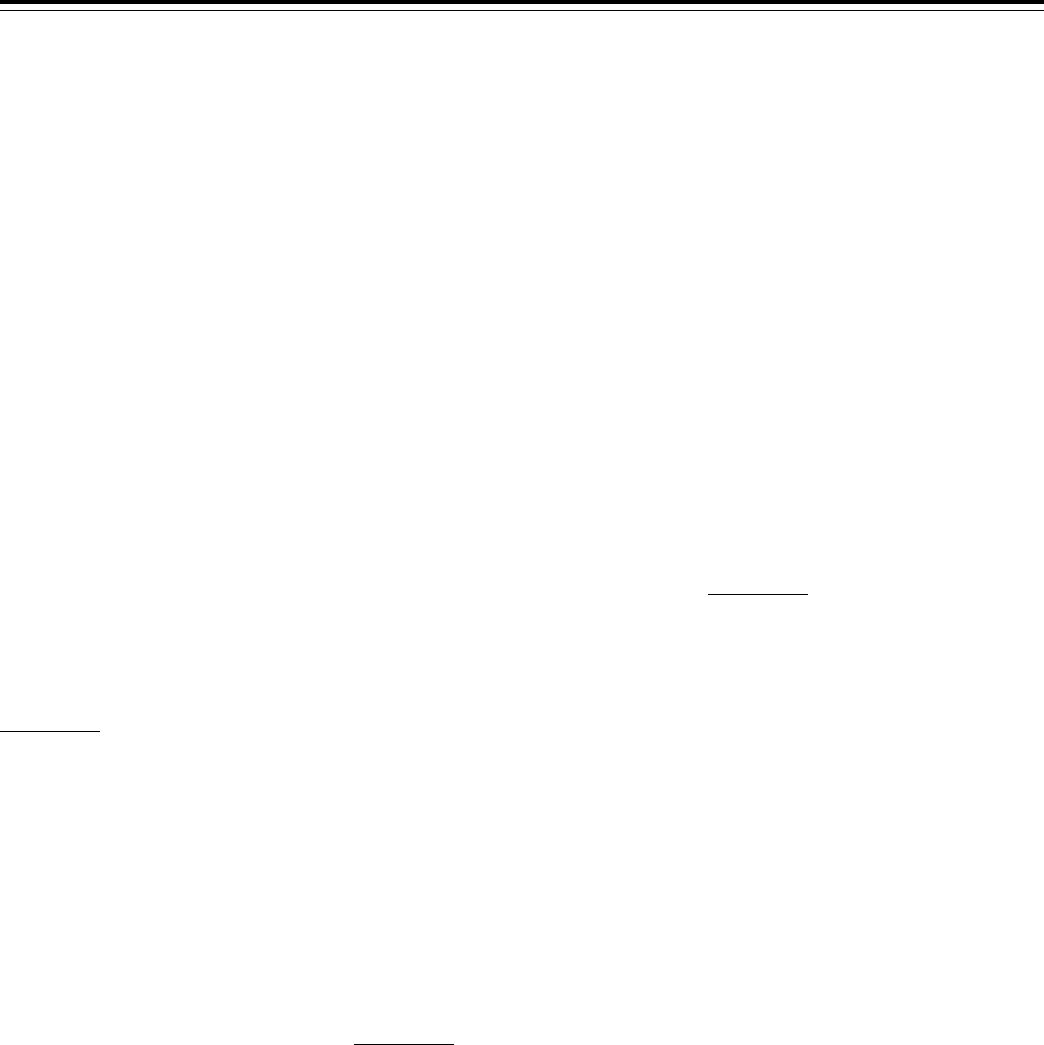
78639
Federal Register / Vol. 81, No. 216 / Tuesday, November 8, 2016 / Notices
Office’s Dec. 31, 2015 Notice of Inquiry at 2 (Apr.
1, 2016) (‘‘Because the email address for Google’s
DMCA Agent is not posted on its Web sites, rights
holders must jump through various hoops and
navigate through a series of questions in order to
arrive at the correct form. Once there it takes
additional time to complete the 9-part form. Before
one can actually send it one must be sure to create
a Google account, then login and send.’’); Tr. at
59:14–19 (May 2, 2016) (Lisa Shaftel, Graphic
Artists Guild).
29
See, e.g., Arts & Entm’t Advocacy Clinic at
George Mason Univ. Sch. of Law, Comments
Submitted in Response to U.S. Copyright Office’s
Dec. 31, 2015 Notice of Inquiry at 11 (Apr. 1, 2016)
(‘‘[P]ublicly revealing personal information about a
notice sender may endanger the artist’s property
and safety.’’).
30
See, e.g., Rodrigo Adair, Comments Submitted
in Response to U.S. Copyright Office’s Dec. 31, 2015
Notice of Inquiry at 1–2 (Mar. 18, 2016); New Media
Rights, Comments Submitted in Response to U.S.
Copyright Office’s Dec. 31, 2015 Notice of Inquiry
at 16–17 (Apr. 1, 2016); Tr. at 253:5–7 (May 13,
2016) (Michael Michaud, Channel Awesome, Inc.).
31
See, e.g., Matthew Barblan et al., Joint
Comments Submitted in Response to U.S. Copyright
Office’s Dec. 31, 2015 Notice of Inquiry at 1 (Apr.
1, 2016); Tr. at 196:25–197:12 (May 3, 2016) (June
Besek, Kernochan Ctr. for Law, Media & the Arts)
(‘‘[I]n the last 18 years or so, I think courts have
often placed a lot of emphasis on the ability of
service providers to flourish and grow and perhaps
less emphasis on the concerns of right holders. And
you can see that in a lot of different ways—defining
storage very broadly, defining red flag knowledge
very narrowly, reading representative lists out of
the statute, basically, leaving right holders with
little recourse other than sending notice after notice
after notice to prevent reposting of their material.
And they can never really prevent it.’’).
32
See, e.g., Am. Cable Ass’n, Comments
Submitted in Response to U.S. Copyright Office’s
Dec. 31, 2015 Notice of Inquiry at 5 (Apr. 1, 2016);
CTIA—The Wireless Ass’n, Comments Submitted in
Response to U.S. Copyright Office’s Dec. 31, 2015
Notice of Inquiry at 11–12 (Apr. 1, 2016).
33
See, e.g., Tr. 65:24–67:21 (May 2, 2016)
(Jacqueline Charlesworth, U.S. Copyright Office;
Patrick Flaherty, Verizon Commc’ns).
34
See Tr. 257:12–15 (May 2, 2016) (David Jacoby,
Sony Music Entm’t).
35
See Tr. at 73:23–74:8 (May 2, 2016) (Lisa
Hammer, independent film director).
36
See Tr. at 52:6–10 (May 2, 2016) (Janice Pilch,
Rutgers Univ. Libraries); Tr. at 279:21–281:8 (May
12, 2016) (Brian Willen, Wilson Sonsini Goodrich);
Tr. at 253:22–254:11 (May 13, 2016) (Michael
Michaud, Channel Awesome, Inc.).
37
See Future of Music Coal., Comments
Submitted in Response to U.S. Copyright Office’s
Dec. 31, 2015 Notice of Inquiry at 18 (Apr. 1, 2016).
38
See, e.g., Universal Music Grp., Comments
Submitted in Response to U.S. Copyright Office’s
Dec. 31, 2015 Notice of Inquiry at 18 (Apr. 1, 2016);
Tr. at 97:17–98:4 (May 13, 2016) (Betsy Viola
Zedek, The Walt Disney Co.).
39
See, e.g., Wikimedia Found., Comments
Submitted in Response to U.S. Copyright Office’s
Dec. 31, 2015 Notice of Inquiry at 7 (Apr. 1, 2016);
Tr. at 312:16–20 (May 2, 2016) (Sarah Feingold,
Etsy, Inc.).
40
While many of the voluntary measures
discussed by study participants were technological
in nature (such as Google’s Content ID system),
there were other programs that some participants
pointed to as potential blueprints for private action
to improve the operation of the safe harbor
processes, including development of industry best
practices guidelines; initiatives like the Copyright
Alert System; cooperative arrangements between
content owners and payment processors,
advertisers, and domain name registries; and
voluntary demotion of infringing results by search
engines. Although many participants expressed
optimism that voluntary agreements could help
improve the efficacy of the safe harbor system, other
participants cautioned that voluntary measures
should be viewed as supplements to reform, rather
than replacements for it. See Content Creators Coal.,
Comments Submitted in Response to U.S. Copyright
Office’s Dec. 31, 2015 Notice of Inquiry at 27–30
(Apr. 1, 2016). Still others objected to the idea of
voluntary agreements as unrepresentative and
potentially undemocratic. See, e.g., Elec. Frontier
Found., Comments Submitted in Response to U.S.
Copyright Office’s Dec. 31, 2015 Notice of Inquiry
at 15 (Apr. 1, 2016); Tr. at 177:17–22 (May 13, 2016)
(Michael Masnick, Copia Institute); Tr. at 171:8–13
(May 13, 2016) (T.J. Stiles, author).
41
See Tr. at 173:18–174:16 (May 13, 2016) (Sean
O’Connor, Univ. of Washington (Seattle)) (‘‘[O]ne-
size-fits-all can’t work . . . [but] if you create a
taxonomy that [covers the] different kinds of
content industry and also different kind[s] of
service providers . . . you can . . . [c]ome up with
. . . standard technical measures for that particular
subdivision area.’’).
42
See, e.g., Info. Tech. & Innovation Found.,
Comments Submitted in Response to U.S. Copyright
Continued
privacy concerns stemming from the
public release of personal information
about the notice sender.
29
Study participants noted similar
barriers that discourage users from
submitting counter-notices, even in
response to what some consider to be
erroneous or fraudulent takedown
notices. The identified barriers included
a similar lack of standardization for
filing counter-notices, a lack of
education regarding the counter-notice
process, privacy concerns, and the
threat of potential legal proceedings.
30
In addition to noting practical barriers
that may make utilization of the safe
harbor system difficult, several
commenters pointed to court opinions
that they argue have decreased the
effectiveness of the statutory scheme
created by Congress. These
developments include judicial
interpretations of the actual and red flag
knowledge standards, the right and
ability to control and financial benefit
tests, section 512’s references to
‘‘representative lists,’’ and section 512’s
requirement that ISPs implement a
repeat infringer policy. Some content
creators and others expressed concern
that the first three developments, taken
together, have systematically changed
the application of section 512, tipping it
in favor of ISPs,
31
while a number of
ISPs expressed concerns about the
ongoing impact of recent repeat
infringer jurisprudence.
32
One other debate between content
creators and ISPs relates to the fact that
section 512 sets forth a variety of
differing safe harbor requirements for
ISPs depending upon the function they
are performing (i.e., mere conduit,
hosting, caching, or indexing). Thus,
several telecommunications providers
asserted that section 512 imposes no
obligation on ISPs either to accept or act
upon infringement notices when they
are acting as a mere conduit under
section 512(a).
33
Some content creators,
however, expressed concern that failure
to accept such notices, even if not part
of a formal notice-and-takedown
process, would weaken the requirement
that ISPs adopt and reasonably
implement a section 512(i) repeat
infringer policy.
34
C. Potential Future Evolution of the
DMCA Safe Harbor System
Study participants have suggested a
number of potential solutions to the
issues raised above, though it should be
understood that these solutions stem
only from the subset of stakeholders
who suggest or acknowledge in the first
instance that the current regime requires
or could benefit from changes. These
solutions included both non-legislative
solutions (such as education, the use of
technology, or voluntary and standard
technical measures) and legislative fixes
(either through changes to section 512
itself or passage of legislation to address
issues not directly addressed by section
512).
The non-legislative solution that
appeared to have the broadest approval
was the idea of creating governmental
and private-sector educational materials
on copyright and section 512.
Participants recommended the creation
of targeted educational materials for all
participants in the Internet ecosystem,
including content creators,
35
users,
36
and ISPs.
37
A number of study participants noted
that technology can help address some
of the inefficiencies of the current
notice-and-takedown process. Some
participants cited increased efficiencies
to be had from both automated notices
and takedowns, as well as other
technological tools.
38
Other
participants, however, cautioned against
over reliance on technology. Several
reasons for questioning the ability of
technology to resolve problems with the
current system were mentioned,
including the expense of developing
systems capable of handling notice-and-
takedown processes, concerns that
automated processes may be more
vulnerable to false positives, and the
limited capabilities of even the most
advanced current technology.
39
Another potential non-legislative
solution that was suggested was the
development and adoption of industry-
wide, or sub-industry-specific,
voluntary measures
40
and standard
technical measures,
41
and/or the
standardization of practices for notice
and takedown.
42
A number of study
VerDate Sep<11>2014 16:27 Nov 07, 2016 Jkt 241001 PO 00000 Frm 00075 Fmt 4703 Sfmt 4703 E:\FR\FM\08NON1.SGM 08NON1
mstockstill on DSK3G9T082PROD with NOTICES
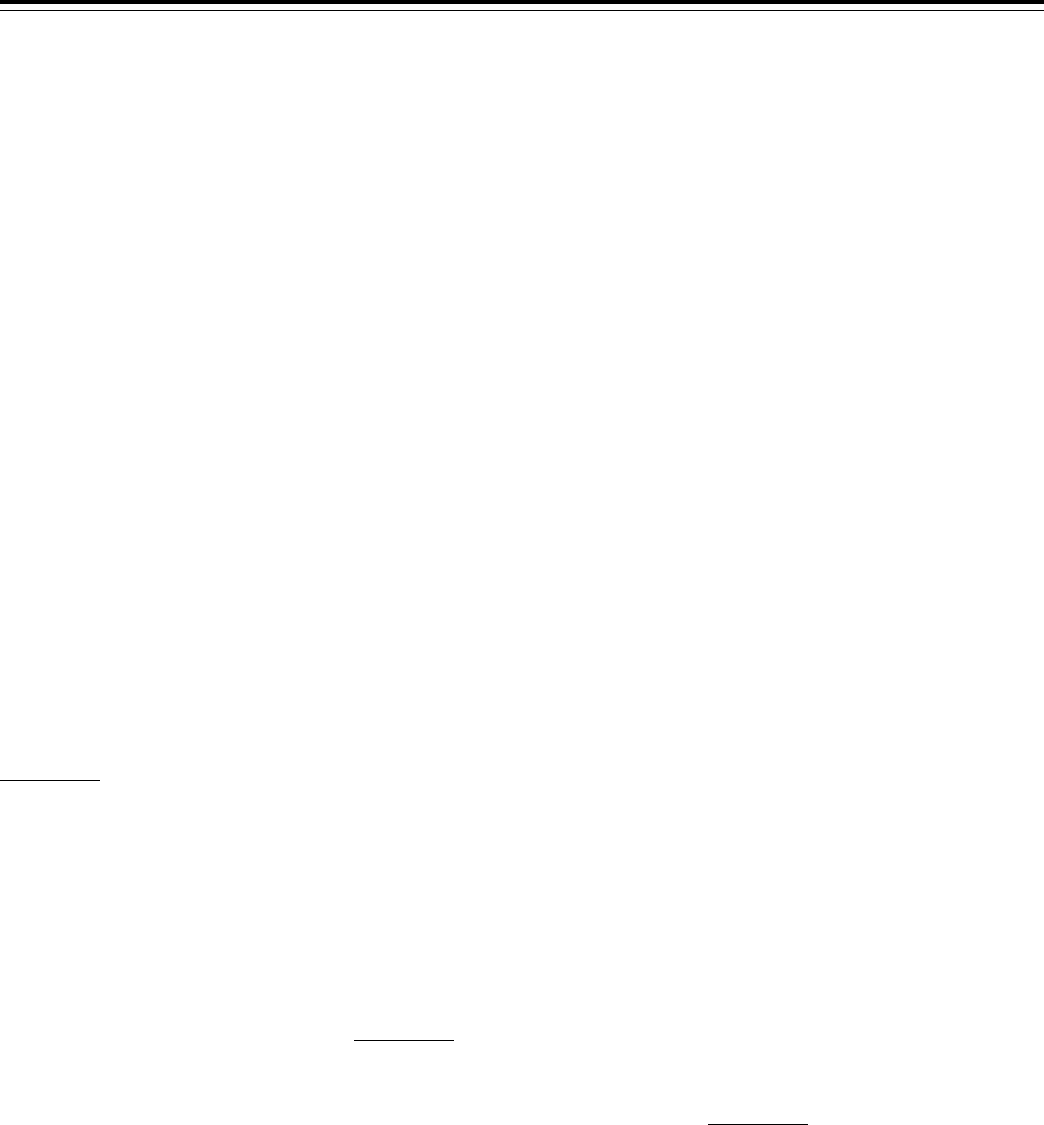
78640
Federal Register / Vol. 81, No. 216 / Tuesday, November 8, 2016 / Notices
Office’s Dec. 31, 2015 Notice of Inquiry at 5 (Mar.
21, 2016) (‘‘[T]he tools . . . used by online service
providers to prevent and stop infringement vary
widely. To address this problem, the U.S. Copyright
Office should launch a multi-stakeholder working
group to identify . . . [ways] to reduce infringement
and lower compliance costs for all parties. For
example .... standardize[d] notice-and-takedown
processes across multiple service providers . . . .’’);
Tr. at 164:12–165:13 (May 13, 2016) (Dave Green,
Microsoft) (suggesting a ‘‘summit attended
primarily by engineers,’’ potentially including
‘‘government support or encouragement . . . to
come up with ways to make it easy to report . . .
a single work to multiple ISPs without having to
send notices multiple times’’).
43
See, e.g., Tr. 68:22–69:12 (May 3, 2016) (Lisa
Willmer, Getty Images); Tr. 18:10–21:6 (May 13,
2016) (Karyn Temple Claggett, U.S. Copyright
Office; Keith Kupferschmid, Copyright All.).
44
See Tr. 250:23–251:1 (May 3, 2016) (Todd
Dupler, Recording Acad.).
45
See, e.g., Indep. Film & Television All.,
Comments Submitted in Response to U.S. Copyright
Office’s Dec. 31, 2015 Notice of Inquiry at 4 (Apr.
1, 2016); Tr. at 230:11–23 (May 3, 2016) (Matthew
Barblan, Ctr. for the Prot. of Intellectual Prop.).
46
See Council of Music Creators et al., Joint
Comments Submitted in Response to U.S. Copyright
Office’s Dec. 31, 2015 Notice of Inquiry at 3 (Apr.
1, 2016).
47
See Authors Guild, Inc., Comments Submitted
in Response to U.S. Copyright Office’s Dec. 31, 2015
Notice of Inquiry at 14 (Apr. 1, 2016) (‘‘Here’s an
example of how ‘notice and stay-down’ might work
in practice: an author finds a pirated copy of her
book on Google Play, offered by a user who has
created an account called ‘Best Books.’. . . She
sends a notice to Google, with an image of the fake
cover and false publisher name, along with a URL
for the pirated copy. Google takes the copy down
a day later. The next day, the same book with the
same cover is reposted on the site. From then on,
Google should be required to automatically remove
any instance of the entire book that anyone other
than an authorized person (as provided by the
copyright owner) posts on the site.’’).
48
See, e.g., Facebook, Inc., Comments Submitted
in Response to U.S. Copyright Office’s Dec. 31, 2015
Notice of Inquiry at 6 (Apr. 1, 2016); Internet
Archive, Comments Submitted in Response to U.S.
Copyright Office’s Dec. 31, 2015 Notice of Inquiry
at 2 (Mar. 22, 2016).
49
BMG Rights Mgmt. (US) LLC v. Cox Commc’ns.,
Inc., No. 1:14–cv–1611, 2016 WL 4224964 (E.D. Va.
Aug. 8, 2016), appeal docketed, No. 16–1972 (4th
Cir. Aug. 24, 2016).
50
Id. at *4.
51
Capitol Records, LLC v. Vimeo, LLC, 826 F.3d
87–98 (2d Cir. 2016).
52
See, e.g., Ctr. for Democracy & Tech. & R Street
Inst., Joint Comments Submitted in Response to
U.S. Copyright Office’s Dec. 31, 2015 Notice of
Inquiry at 19 n.79 (Apr. 1, 2016); Tr. 114:24–115:6
(May 3, 2016) (Victoria Sheckler, Recording Indus.
Ass’n of Am.); Tr. 325:16–20 (May 12, 2016)
(Daphne Keller, Stanford Law Sch. Ctr. for Internet
& Soc’y).
53
See, e.g., Tr. at 255:11–12 (May 13, 2016) (Sean
O’Connor, Univ. of Washington (Seattle)) (‘‘[O]n the
empirical research side, I do think we need to do
a lot more . . . .’’); Tr. at 260:3–4 (May 13, 2016)
(Fred von Lohmann, Google, Inc.) (‘‘We need more
and better data.’’).
participants pointed to the failure to
adopt standard technical measures
under section 512(i), nearly two decades
after passage of the DMCA, as a
demonstrable failure of the current
section 512 system.
43
Some study
participants suggested that there may be
a role for the government generally, or
the U.S. Copyright Office in particular,
to play in encouraging or supporting the
adoption of such standard technical
measures by convening groups of
relevant stakeholders.
44
Another potential solution proposed
by some of the participants was
legislative action to improve the section
512 safe harbor system, either by
amending the statute itself, or adopting
ancillary legislative reform proposals.
The most frequently discussed potential
legislative change was adoption of a
notice-and-stay-down requirement.
45
Although many participants suggested a
pressing need for such a requirement,
they have not defined what is meant by
‘‘stay-down,’’ or what specific
mechanisms might be utilized to
comply with such a requirement. Some
participants equated a notice-and-stay-
down system with the use of a content
filtering system like Content ID to pre-
screen user uploads.
46
Other
participants seemed to equate a notice-
and-stay-down system with a
requirement for the ISP to search its site
for identical files upon receipt of a
takedown notice from a rightsholder.
47
Many study participants, however,
raised concerns about the possible
adoption of a notice-and-stay-down
requirement, citing both policy and
practical/technological concerns.
48
D. Other Developments
The Copyright Office is also seeking
comments on three additional topics:
judicial opinions that were not covered
by the initial round of public comments,
the disposition of Internet safe harbors
under foreign copyright laws, and
empirical research into the
effectiveness, impact, and utilization of
the current section 512 safe harbors.
The Copyright Office is interested in
hearing from the public about judicial
decisions issued since the first round of
public comments closed in April 2016,
and how they may impact the workings
of one or more aspects of the section 512
safe harbors. These include, in
particular, recent decisions from the
Eastern District of Virginia and the
Second Circuit. In BMG Rights
Management (US) v. Cox
Communications, Inc., currently on
appeal to the Fourth Circuit, the Eastern
District of Virginia upheld a jury verdict
that the defendant ISP was liable for
willful contributory infringement based
on its subscribers’ use of BitTorrent to
download and share copyrighted
material.
49
The court found that the
defendant was not able to invoke the
section 512(a) safe harbor as a result of
its failure to reasonably implement a
repeat infringer policy.
50
In Capitol
Records, LLC v. Vimeo LLC, the Second
Circuit found that (1) the section 512(c)
safe harbor extends to claims for
infringement of pre-1972 sound
recordings, which are protected under
state, rather than federal, copyright
laws, and (2) the fact that a defendant
ISP’s employee viewed a video that
‘‘contains all or virtually all of a
recognizable copyrighted song’’ is
insufficient to provide the ISP with
actual or red flag knowledge of
infringement.
51
Similarly, while some of the initial
written responses and roundtable
discussions touched upon Internet safe
harbor regimes outside the United
States,
52
the Copyright Office welcomes
additional information about foreign
approaches to the questions of ISP safe
harbors, Internet piracy, and other
relevant topics.
Finally, the Copyright Office is asking
for the submission of additional
analyses and empirical data related to
the effectiveness, impact, and utilization
of the current section 512 safe harbors.
While several participants referenced a
trio of recent studies performed by
researchers at the University of
California, Berkeley School of Law,
others noted that a nucleus of
authoritative studies and evidence is
still lacking, overall.
53
Given the
economic importance of both the
creative and technology industries to
the U.S. economy, policymaking
relating to the proper calibration of the
costs and benefits of ISP safe harbors
would benefit from a robust record of
authoritative data. Potential subject
matter for relevant submissions would
include data relating to the number of
improper takedown or counter-notices
received by different classes of ISPs,
information relating to the percentage of
files that are re-uploaded following
submission of a valid takedown notice,
information regarding the effectiveness
or ineffectiveness of takedown notices
for combating different forms of piracy
both here and abroad, the economic
impact of policy choices relating to ISP
safe harbors, and other topics.
II. Subjects of Inquiry
The Copyright Office seeks further
public input in the form of written
comments responsive to this Notice and
the issues discussed above, as well as
the submission of studies and empirical
data relevant to the subject matter of
this study. Parties may also take this
opportunity to respond to positions or
data raised in the first round of
comments and/or at the roundtables.
VerDate Sep<11>2014 16:27 Nov 07, 2016 Jkt 241001 PO 00000 Frm 00076 Fmt 4703 Sfmt 4703 E:\FR\FM\08NON1.SGM 08NON1
mstockstill on DSK3G9T082PROD with NOTICES

78641
Federal Register / Vol. 81, No. 216 / Tuesday, November 8, 2016 / Notices
Participants should, however, refrain
from simply restating positions taken at
the roundtables or previously submitted
in response to the First Notice; such
comments have already been made part
of the record. While a party choosing to
respond to this Notice of Inquiry need
not address every subject below, the
Office requests that responding parties
clearly identify and separately address
each subject for which a response is
submitted.
Characteristics of the Current Internet
Ecosystem
1. As noted above, there is great
diversity among the categories of
content creators and ISPs who comprise
the Internet ecosystem. How should any
improvements in the DMCA safe harbor
system account for these differences?
For example, should any potential new
measures, such as filtering or stay-
down, relate to the size of the ISP or
volume of online material hosted by it?
If so, how? Should efforts to improve
the accuracy of notices and counter-
notices take into account differences
between individual senders and
automated systems? If so, how?
2. Several commenters noted the
importance of taking into account the
perspectives and interests of individual
Internet users when considering any
changes to the operation of the DMCA
safe harbors. Are there specific issues
for which it is particularly important to
consult with or take into account the
perspective of individual users and the
general public? What are their interests,
and how should these interests be
factored into the operation of section
512?
Operation of the Current DMCA Safe
Harbor System
3. Participants expressed widely
divergent views on the overall
effectiveness of the DMCA safe harbor
system. How should the divergence in
views be considered by policy makers?
Is there a neutral way to measure how
effective the DMCA safe harbor regime
has been in achieving Congress’ twin
goals of supporting the growth of the
Internet while addressing the problem
of online piracy?
4. Several public comments and
roundtable participants noted practical
barriers to effective use of the notice-
and-takedown and counter-notice
processes, such as differences in the
web forms used by ISPs to receive
notices or adoption by ISPs of
additional requirements not imposed
under the DMCA (e.g., submission of a
copyright registration or creation of
certain web accounts). What are the
most significant practical barriers to use
of the notice-and-takedown and
counter-notice processes, and how can
those barriers best be addressed (e.g.,
incentives for ISPs to use a standardized
notice/counter-notice form, etc.)?
5. A number of study participants
identified the timelines under the
DMCA as a potential area in need of
reform. Some commenters expressed the
view that the process for restoring
access to material that was the subject
of a takedown notice takes too long,
noting that the material for which a
counter-notice is sent can ultimately be
inaccessible for weeks or months before
access is restored. Other commenters
expressed the view that the timeframe
for restoring access to content is too
short, and that ten days is not enough
time for a copyright holder to prepare
and file litigation following receipt of a
counter-notice. Are changes to the
section 512 timeline needed? If so, what
timeframes for each stage of the process
would best facilitate the dual goals of
encouraging online speech while
protecting copyright holders from
widespread online piracy?
6. Participants also noted
disincentives to filing both notices and
counter-notices, such as safety and
privacy concerns, intimidating
language, or potential legal costs. How
do these concerns affect use of the
notice-and-takedown and counter-notice
processes, and how can these
disincentives best be addressed?
7. Some participants recommended
that the penalties under section 512 for
filing false or abusive notices or
counter-notices be strengthened. How
could such penalties be strengthened?
Would the benefits of such a change
outweigh the risk of dissuading notices
or counter-notices that might be socially
beneficial?
8. For ISPs acting as conduits under
section 512(a), what notice or finding
should be necessary to trigger a repeat
infringer policy? Are there policy or
other reasons for adopting different
requirements for repeat infringer
policies when an ISP is acting as a
conduit, rather than engaging in
caching, hosting, or indexing functions?
Potential Future Evolution of the DMCA
Safe Harbor System
9. Many participants supported
increasing education about copyright
law generally, and/or the DMCA safe
harbor system specifically, as a non-
legislative way to improve the
functioning of section 512. What types
of educational resources would improve
the functioning of section 512? What
steps should the U.S. Copyright Office
take in this area? Is there any role for
legislation?
10. How can the adoption of
additional voluntary measures be
encouraged or incentivized? What role,
if any, should government play in the
development and implementation of
future voluntary measures?
11. Several study participants pointed
out that, since passage of the DMCA, no
standard technical measures have been
adopted pursuant to section 512(i).
Should industry-wide or sub-industry-
specific standard technical measures be
adopted? If so, is there a role for
government to help encourage the
adoption of standard technical
measures? Is legislative or other change
required?
12. Several study participants have
proposed some version of a notice-and-
stay-down system. Is such a system
advisable? Please describe in specific
detail how such a system should
operate, and include potential
legislative language, if appropriate. If it
is not advisable, what particular
problems would such a system impose?
Are there ways to mitigate or avoid
those problems? What implications, if
any, would such as system have for
future online innovation and content
creation?
13. What other specific legislative
provisions or amendments could
improve the overall functioning of the
DMCA safe harbor regime? Please be
specific, including proposed statutory
language as appropriate.
Other Developments
14. Several study participants
mentioned concerns regarding certain
case law interpretations of the existing
provisions of section 512. Additionally,
two new judicial decisions have come
out since the first round of public
comments was submitted in April 2016.
What is the impact, if any, of these
decisions on the effectiveness of section
512? If you believe it would be
appropriate to address or clarify existing
provisions of section 512, what would
be the best ways to address such
provisions (i.e., through the courts,
Congress, the Copyright Office, and/or
voluntary measures)? Please provide
specific recommendations, such as
legislative language, if appropriate.
15. What approaches have
jurisdictions outside the United States
taken to address the question of ISP
liability and the problem of copyright
infringement on the Internet? To what
extent have these approaches worked
well, or created problems for
consumers, content creators, ISPs, or
other stakeholders?
16. Please identify any other pertinent
issues that the Copyright Office may
VerDate Sep<11>2014 16:27 Nov 07, 2016 Jkt 241001 PO 00000 Frm 00077 Fmt 4703 Sfmt 4703 E:\FR\FM\08NON1.SGM 08NON1
mstockstill on DSK3G9T082PROD with NOTICES
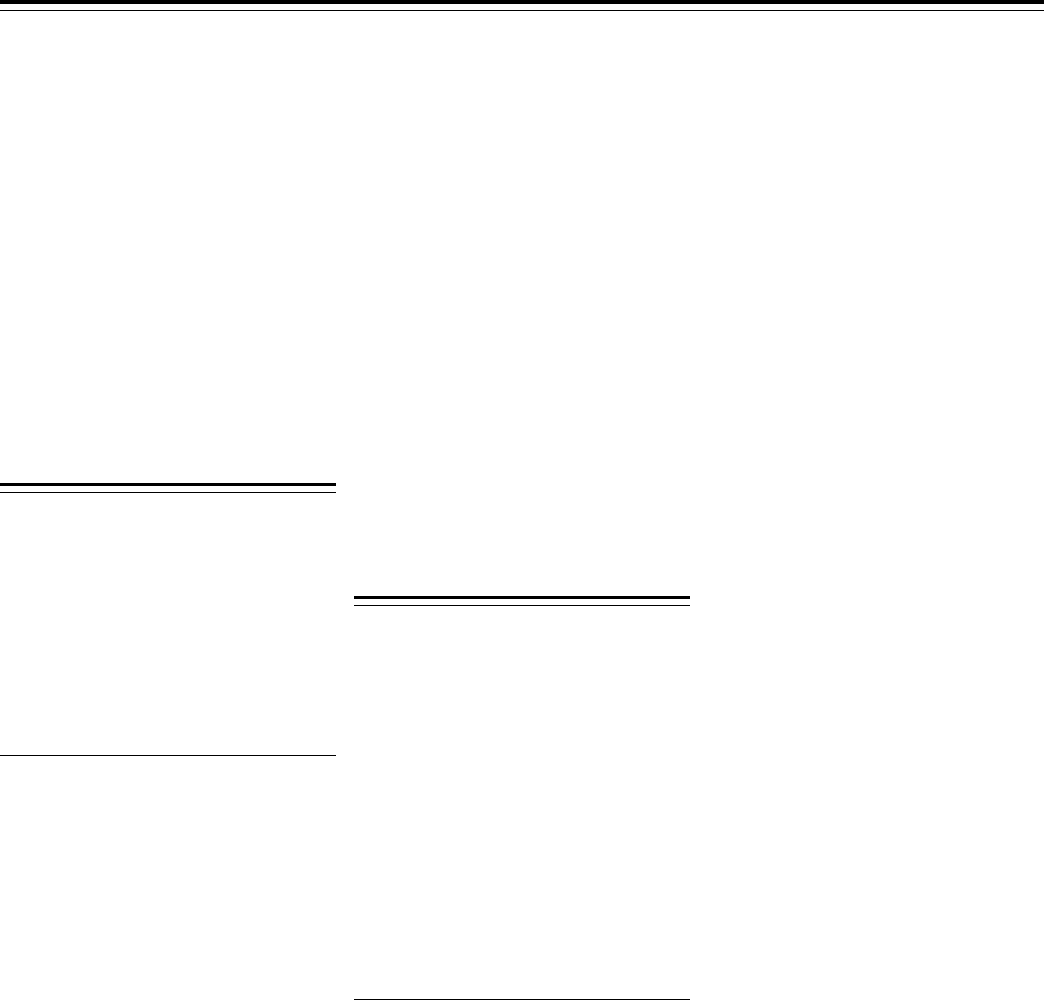
78642
Federal Register / Vol. 81, No. 216 / Tuesday, November 8, 2016 / Notices
wish to consider in conducting this
study.
Submission of Empirical Research To
Aid the Study
Many commenters expressed a desire
for more comprehensive empirical data
regarding the functioning and effects of
the DMCA safe harbor system. The
Copyright Office is providing an
extended deadline for submissions of
empirical research on any of the topics
discussed in this Notice, or other topics
that are likely to provide useful data to
assess and/or improve the operation of
section 512.
Dated: November 2, 2016.
Karyn Temple Claggett,
Acting Register of Copyrights and Director
of the U.S. Copyright Office.
[FR Doc. 2016–26904 Filed 11–7–16; 8:45 am]
BILLING CODE 1410–30–P
NATIONAL ARCHIVES AND RECORDS
ADMINISTRATION
[NARA–2017–005]
George W. Bush Presidential Library;
Disposal of Presidential Records
AGENCY
: National Archives and Records
Administration (NARA).
ACTION
: Notice of proposed disposal of
Presidential records; request for public
comment.
SUMMARY
: The National Archives and
Records Administration (NARA) has
identified certain Presidential records
from the George W. Bush Presidential
Library as appropriate for disposal
under the provisions of 44 U.S.C.
2203(f)(3). This notice describes our
reasons for determining that these
records do not warrant retaining any
longer.
This notice does not constitute a final
agency action, as described in 44 U.S.C.
2203(f)(3), and we will not dispose of
any Presidential records following this
notice. After reviewing any comments
we receive during this 45-day notice
and comment period, we will make a
decision on the records. If we decide to
dispose of them, we will issue a second,
60-day advance notice, which
constitutes a final agency action.
DATES
: Comments are due by December
23, 2016.
LOCATION
: Submit written comments by
mail to Director, Presidential Libraries;
National Archives and Records
Administration (LP), Suite 2200; 8601
Adelphi Road; College Park, MD 20740–
6001, or by fax to 301.837.3199.
FOR FURTHER INFORMATION CONTACT
:
Susan K. Donius at 301.837.3250.
SUPPLEMENTARY INFORMATION
: We
propose the following materials for
disposal because we have determined
that they lack continuing
administrative, historical, information,
or evidentiary value.
The items identified include (full list
below) ephemera located within the
Staff Member Office Files and White
House Office of Records Management
Subject/Alpha Files of the George W.
Bush Presidential Library:
NASA Pin
Connecting to Collections Black
Shoulder Bag
Metal Edge, Inc. Mini Hollinger
IMLS Level and Tape Measurer
White Cotton Gloves
Faith Bottle
Indian River Community College
Educational Program
Honor Cats Banners
Dated: October 25, 2016.
Susan K. Donius,
Director, Office of Presidential Libraries.
[FR Doc. 2016–26952 Filed 11–7–16; 8:45 am]
BILLING CODE 7515–01–P
THE NATIONAL FOUNDATION FOR
THE ARTS AND THE HUMANITIES
Institute of Museum and Library
Services
Notice of Proposed Information
Collection Request: Community
Catalyst: The Role of Libraries and
Museums in Community
Transformation (Community
Catalyst)—A National Leadership
Grants Special Initiative
AGENCY
: Institute of Museum and
Library Services, National Foundation
for the Arts and the Humanities.
ACTION
: Notice, request for comments,
collection of information.
SUMMARY
: The Institute of Museum and
Library Service (‘‘IMLS’’) as part of its
continuing effort to reduce paperwork
and respondent burden, conducts a pre-
clearance consultation program to
provide the general public and federal
agencies with an opportunity to
comment on proposed and/or
continuing collections of information in
accordance with the Paperwork
Reduction Act (44 U.S.C. 3501 et seq.).
This pre-clearance consultation program
helps to ensure that requested data can
be provided in the desired format,
reporting burden (time and financial
resources) is minimized, collection
instruments are clearly understood, and
the impact of collection requirements on
respondents can be properly assessed.
The purpose of this Notice is to solicit
comments concerning The Role of
Libraries and Museums in Community
Transformation (Community Catalyst)—
A National Leadership Grants Special
Initiative.
A copy of the proposed information
collection request can be obtained by
contacting the individual listed below
in the
ADDRESSES
section of this notice.
DATES
: Written comments must be
submitted to the office listed in the
ADDRESSES
section below on or before
January 5, 2017.
The IMLS is particularly interested in
comments which:
• Evaluate whether the proposed
collection of information is necessary
for the proper performance of the
functions of the agency, including
whether the information will have
practical utility;
• Evaluate the accuracy of the
agency’s estimate of the burden of the
proposed collection of information,
including the validity of the
methodology and assumptions used;
• Enhance the quality, utility, and
clarity of the information to be
collected; and
• Minimize the burden of the
collection of information on those who
are to respond, including through the
use of appropriate automated,
electronic, mechanical, or other
technological collection techniques or
other forms of information technology,
e.g., permitting electronic submission of
responses.
ADDRESSES
: For a copy of the documents
contact: Dr. Marvin Carr, Senior
Advisor, STEM and Community
Engagement, Institute of Museum and
Library Services, 955 L’Enfant Plaza
North SW., Suite 4000, Washington, DC
20024. Dr. Carr can be reached by
telephone: 202–653–4752; fax: 202–
653–4603; email: [email protected] or by
teletype (TTY/TDD) for persons with
hearing difficulty at 202–653–4614.
SUPPLEMENTARY INFORMATION
:
I. Background
The Institute of Museum and Library
Services is the primary source of federal
support for the Nation’s 123,000
libraries and 35,000 museums. The
Institute’s mission is to inspire libraries
and museums to advance innovation,
learning and civic engagement. We
provide leadership through research,
policy development, and grant making.
IMLS provides a variety of grant
programs to assist the Nation’s
museums and libraries in improving
their operations and enhancing their
services to the public. (20 U.S.C. 9101
et seq.).
VerDate Sep<11>2014 16:27 Nov 07, 2016 Jkt 241001 PO 00000 Frm 00078 Fmt 4703 Sfmt 4703 E:\FR\FM\08NON1.SGM 08NON1
mstockstill on DSK3G9T082PROD with NOTICES
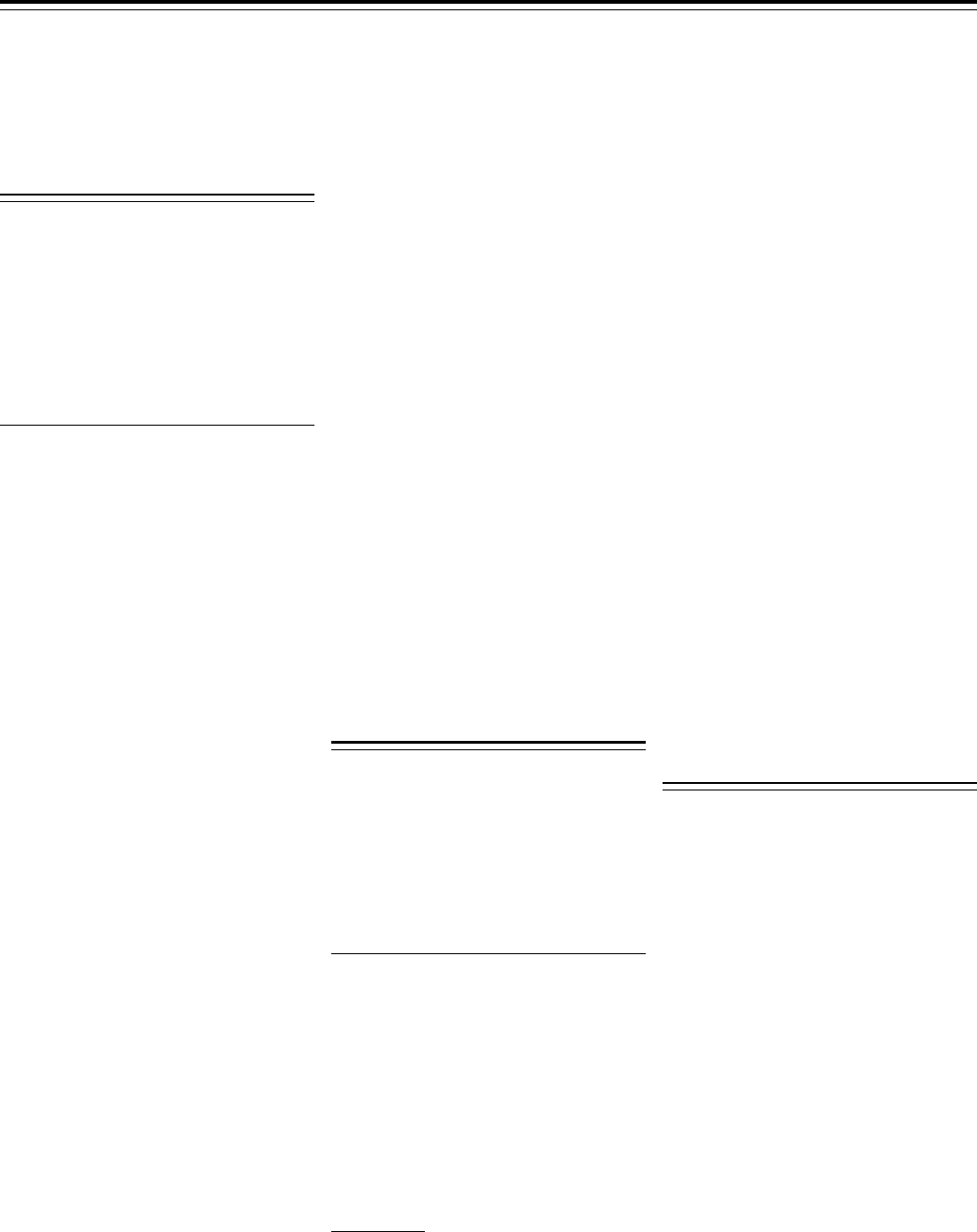
8629
Federal Register / Vol. 82, No. 17 / Friday, January 27, 2017 / Notices
1
See Section 512 Study: Notice and Request for
Public Comment, 80 FR 81682 (Dec. 31, 2015).
2
See Section 512 Study: Request for Additional
Comments, 81 FR 78636 (Nov. 8, 2016).
page reproduction cost) payable to the
United States Treasury.
Robert E. Maher Jr.,
Assistant Chief, Environmental Enforcement
Section, Environment and Natural Resources
Division.
[FR Doc. 2017–01848 Filed 1–26–17; 8:45 am]
BILLING CODE 4410–15–P
LIBRARY OF CONGRESS
U.S. Copyright Office
[Docket No. 2015–7]
Section 512 Study: Extension of
Comment Period
AGENCY
: U.S. Copyright Office, Library
of Congress.
ACTION
: Extension of comment period.
SUMMARY
: The United States Copyright
Office is extending the deadlines for the
submission of written comments and
empirical research studies in response
to its November 8, 2016 request for
additional comments (‘‘Second Notice’’)
regarding the Digital Millennium
Copyright Act (‘‘DMCA’’) safe harbor
provisions contained in 17 U.S.C. 512.
DATES
: Written responses to the
questions outlined in the Second Notice
are now due no later than 11:59 p.m.
Eastern Time on February 21, 2017.
Empirical research studies are due no
later than 11:59 p.m. Eastern Time on
March 22, 2017.
ADDRESSES
: For reasons of government
efficiency, the Copyright Office is using
the regulations.gov system for the
submission and posting of public
comments in this proceeding. All
comments are therefore to be submitted
electronically through regulations.gov.
Specific instructions for submitting
comments are available on the
Copyright Office Web site at http://
copyright.gov/policy/section512/
comment-submission/. If electronic
submission of comments is not feasible
due to lack of access to a computer and/
or the Internet, please contact the Office,
using the contact information below, for
special instructions.
FOR FURTHER INFORMATION CONTACT
:
Cindy Abramson, Assistant General
Counsel, by email at [email protected] or by
telephone at 202–707–8350; Kevin
Amer, Senior Counsel for Policy and
International Affairs, by email at
[email protected] or by telephone at 202–
707–8350; or Kimberley Isbell, Senior
Counsel for Policy and International
Affairs, by email at [email protected] or by
telephone at 202–707–8350.
SUPPLEMENTARY INFORMATION
: The
United States Copyright Office is
conducting a study to evaluate the
impact and effectiveness of the DMCA
safe harbor provisions contained in 17
U.S.C. 512. The Office published an
initial Notice of Inquiry on December
31, 2015, seeking written comments to
thirty questions covering eight
categories of topics.
1
After receiving
more than 92,000 responses and holding
public roundtables, the Office published
a Second Notice on November 8, 2016.
2
The Second Notice sought responses to
sixteen additional questions and also
invited parties to submit empirical
research studies assessing issues related
to the operation of the safe harbor
provisions on a quantitative or
qualitative basis. To ensure that
commenters have sufficient time to
respond, the Office is extending the
deadline for submission of comments in
response to the questions provided in
the Second Notice to February 21, 2017,
at 11:59 p.m. Eastern Time, and the
deadline for submission of empirical
research studies to March 22, 2017, at
11:59 p.m. Eastern Time. Please note
that in light of the expected time frame
for this study, the Office is unlikely to
grant further extensions for these
submissions.
Dated: January 24, 2017.
Karyn Temple Claggett
Acting Register of Copyrights and Director
of the U.S. Copyright Office.
[FR Doc. 2017–01888 Filed 1–26–17; 8:45 am]
BILLING CODE 1410–30–P
NATIONAL FOUNDATION ON THE
ARTS AND THE HUMANITIES
Federal Council on the Arts and the
Humanities; Arts and Artifacts
Indemnity Panel Advisory Committee
AGENCY
: National Foundation on the
Arts and the Humanities.
ACTION
: Notice of meeting.
SUMMARY
: Pursuant to the Federal
Advisory Committee Act, notice is
hereby given that the Federal Council
on the Arts and the Humanities will
hold a meeting of the Arts and Artifacts
Domestic Indemnity Panel.
DATES
: The meeting will be held on
Tuesday, February 21, 2017, from 2:00
p.m. to 5:00 p.m.
ADDRESSES
: The meeting will be held by
teleconference originating at the
National Endowment for the Arts,
Washington, DC 20506.
FOR FURTHER INFORMATION CONTACT
:
Elizabeth Voyatzis, Committee
Management Officer, 400 7th Street
SW., Room 4060, Washington, DC
20506, (202) 606 8322; evoyatzis@
neh.gov.
SUPPLEMENTARY INFORMATION
: The
purpose of the meeting is for panel
review, discussion, evaluation, and
recommendation on applications for
Certificates of Indemnity submitted to
the Federal Council on the Arts and the
Humanities, for exhibitions beginning
on or after April 1, 2017. Because the
meeting will consider proprietary
financial and commercial data provided
in confidence by indemnity applicants,
and material that is likely to disclose
trade secrets or other privileged or
confidential information, and because it
is important to keep the values of
objects to be indemnified, and the
methods of transportation and security
measures confidential, I have
determined that that the meeting will be
closed to the public pursuant to
subsection (c)(4) of section 552b of Title
5, United States Code. I have made this
determination under the authority
granted me by the Chairman’s
Delegation of Authority to Close
Advisory Committee Meetings, dated
April 15, 2016.
Dated: January 23, 2017.
Elizabeth Voyatzis,
Committee Management Officer.
[FR Doc. 2017–01849 Filed 1–26–17; 8:45 am]
BILLING CODE 7536–01–P
NATIONAL SCIENCE FOUNDATION
Proposal Review Panel for
Environmental Biology; Notice of
Meeting
In accordance with the Federal
Advisory Committee Act (Pub. L. 92–
463, as amended), the National Science
Foundation (NSF) announces the
following meeting:
Name and Committee Code: Proposal
Review Panel for Environmental Biology—
Mid-term Site Review of Luquillo LTER
(#10744)—Site Visit.
Dates and Times: March 29–31, 2017; 8
a.m.–5 p.m.
Place: Luquillo LTER, University of Puerto
Rico, Km 19.5, Hwy PR–186, 00745, Puerto
Rico.
Type of Meeting: Closed.
Contact Person: Louis Kaplan, Division of
Environmental Biology, National Science
Foundation, 4201 Wilson Blvd., Arlington,
VA 22230. Phone 703–292–7187.
Purpose of Meeting: Formal mid-term
review of the Luquillo LTER research
program.
VerDate Sep<11>2014 13:58 Jan 26, 2017 Jkt 241001 PO 00000 Frm 00031 Fmt 4703 Sfmt 4703 E:\FR\FM\27JAN1.SGM 27JAN1
jstallworth on DSK7TPTVN1PROD with NOTICES

1233
Federal Register / Vol. 84, No. 22 / Friday, February 1, 2019 / Notices
1
See Section 512 Study: Notice and Request for
Public Comment, 80 FR 81862 (Dec. 31, 2015).
obtained by contacting the office listed
below in the
ADDRESSES
section of this
Notice.
DATES
: Written comments must be
submitted to the office listed in the
ADDRESSES
section below on or before
April 2, 2019.
ADDRESSES
: You may submit comments
by mail, delivery service, or by hand to
Ms. Yoon Ferguson, U.S. Department of
Labor, 200 Constitution Ave. NW, Room
S–3323, Washington, DC 20210; by fax
(202) 354–9647; or email to
[email protected]. Please use only
one method of transmission for
comments (mail/delivery, fax or email).
Please note that comments submitted
after the comment period will not be
considered.
SUPPLEMENTARY INFORMATION
:
I. Background: The Office of Workers’
Compensation Programs (OWCP) is the
agency responsible for administration of
the Federal Employees’ Compensation
Act (FECA), 5 U.S.C. 8101 et seq., the
Black Lung Benefits Act (BLBA), 30
U.S.C. 901 et seq., and the Energy
Employees Occupational Illness
Compensation Program Act of 2000
(EEOICPA), 42 U.S.C. 7384 et seq. This
information collection is used by OWCP
examiners to ascertain the financial
condition of the beneficiary to
determine if the overpayment or any
part can be recovered; to identify the
possible concealment or improper
transfer of assets; and to identify and
consider present and potential income
and current assets for enforced
collection proceedings. The
questionnaire provides a means for the
beneficiary to explain why he/she is
without fault in an overpayment matter.
If this information were not collected
BLBA, EEOICPA and FECA would have
little basis to determine appropriate
collection proceedings. This
information collection is currently
approved for use through April 30,
2019.
II. Review Focus: The Department of
Labor is particularly interested in
comments which:
* Evaluate whether the proposed
collection of information is necessary
for the proper performance of the
functions of the agency, including
whether the information will have
practical utility;
* evaluate the accuracy of the
agency’s estimate of the burden of the
proposed collection of information,
including the validity of the
methodology and assumptions used;
* enhance the quality, utility and
clarity of the information to be
collected; and
* minimize the burden of the
collection of information on those who
are to respond, including through the
use of appropriate automated,
electronic, mechanical, or other
technological collection techniques or
other forms of information technology,
e.g., permitting electronic submissions
of responses.
III. Current Actions: The Department
of Labor seeks the approval of the
extension of this currently approved
information collection in order to
determine whether or not the recovery
of any BLBA, EEOICPA or FECA
overpayments may be waived,
compromised, terminated, or collected
in full.
Type of Review: Extension.
Agency: Office of Workers’
Compensation Programs.
Title: Overpayment Recovery
Questionnaire.
OMB Number: 1240–0051.
Agency Number: OWCP–20.
Affected Public: Individuals and
households.
Total Respondents: 1,894.
Total Responses: 1,894.
Time per Response: 1 hour.
Estimated Total Burden Hours: 1,894.
Total Burden Cost (capital/startup):
$0.
Total Burden Cost (operating/
maintenance): $1,003.
Comments submitted in response to
this notice will be summarized and/or
included in the request for Office of
Management and Budget approval of the
information collection request; they will
also become a matter of public record.
Dated: January 28, 2019.
Yoon Ferguson,
Agency Clearance Officer, Office of Workers’
Compensation Programs, U.S. Department of
Labor.
[FR Doc. 2019–00614 Filed 1–31–19; 8:45 am]
BILLING CODE 4510–CR–P
LIBRARY OF CONGRESS
Copyright Office
[Docket No. 2015–7]
Section 512 Study: Announcement of
Public Roundtable
AGENCY
: U.S. Copyright Office, Library
of Congress.
ACTION
: Notice of public roundtable.
SUMMARY
: The U.S. Copyright Office is
conducting a study to evaluate the
impact and effectiveness of the
Copyright Act’s safe harbor provisions
for online service providers. At this
time, the Office is announcing that it
will hold a one-day public roundtable to
allow interested members of the public
to address relevant domestic and
international developments that have
occurred since the close of the written
comment period on February 6, 2017.
The roundtable is not intended to allow
participants to supplement the record
with respect to events occurring before
that date, and discussion will be limited
to the specific topics set forth in this
notice.
DATES
: The public roundtable will be
held on April 8, 2019 from 9:00 a.m. to
approximately 5:00 p.m.
ADDRESSES
: Library of Congress
Madison Building, 101 Independence
Avenue SE, Washington, DC 20540.
FOR FURTHER INFORMATION CONTACT
:
Cindy Abramson, Assistant General
Counsel, at [email protected]; Kevin
Amer, Senior Counsel for Policy and
International Affairs, at kamer@
copyright.gov; or Kimberley Isbell,
Senior Counsel for Policy and
International Affairs, at kisb@
copyright.gov. Each may be reached by
telephone at 202–707–8350.
SUPPLEMENTARY INFORMATION
:
I. Background
Enacted in 1998 as part of the Digital
Millennium Copyright Act (‘‘DMCA’’),
section 512 of Title 17 provides a
system for copyright owners and
internet service providers to address
online infringement outside the context
of litigation. This system includes a
series of ‘‘safe harbors’’ through which
an eligible service provider can limit its
liability for copyright infringement by
complying with certain requirements,
generally consisting of implementing
measures to expeditiously address
online infringement.
At Congress’s request, the U.S.
Copyright Office is conducting a study
to assess the impact and effectiveness of
section 512. The Office published an
initial Notice of Inquiry on December
31, 2015, seeking written comments to
thirty questions covering eight
categories of topics.
1
The Office
received over 92,000 written
submissions in response. Subsequently,
in May 2016, the Office held two-day
public roundtables in New York and
San Francisco. The Office published a
second Notice of Inquiry on November
8, 2016, seeking written comments to
sixteen questions covering four topics,
in addition to inviting the submission of
empirical research studies assessing the
operation of the safe harbor provisions
VerDate Sep<11>2014 21:23 Jan 31, 2019 Jkt 247001 PO 00000 Frm 00187 Fmt 4703 Sfmt 4703 E:\FR\FM\01FEN1.SGM 01FEN1

1234
Federal Register / Vol. 84, No. 22 / Friday, February 1, 2019 / Notices
2
See Section 512 Study: Request for Additional
Comments, 81 FR 78636 (Nov. 8, 2016).
3
BMG Rights Mgmt. (US) LLC v. Cox Commc’ns,
Inc., 881 F.3d 293, 303–05 (4th Cir. 2018).
4
Mavrix Photographs LLC v. LiveJournal Inc., 873
F.3d 1045, 1054–57 (9th Cir. 2017).
5
Proposal for a Directive of the European
Parliament and of the Council on Copyright in the
Digital Single Market, COM(2016) 593 final (Sept.
14, 2016).
6
Amendments Adopted by the European
Parliament on 12 September 2018 on the Proposal
for a Directive of the European Parliament and of
the Council on Copyright in the Digital Single
Market, P8_TA–PROV(2018)0337, art. 2, ¶ 1, pt. 4b;
art. 13 (Sept. 12, 2018).
7
A trilogue meeting scheduled for January 21,
2019 was postponed as proposed compromise text
was rejected by several countries. See, e.g., Samuel
Stolton, Copyright directive faces further setback as
final trilogue postponed, EURACTIV (Jan. 21, 2019)
https://www.euractiv.com/section/digital/news/
copyright-directive-faces-further-setback-as-final-
trilogue-cancelled/.
8
Explanatory Memorandum, Copyright
Amendment (Online Infringement) Bill 2018.
(Austl.), https://parlinfo.aph.gov.au/parlInfo/
search/display/
display.w3p;query=Id:%22legislation/ems/r6209_
ems_b5e338b6-e85c-4cf7-8037-35f13166ebd4%22.
on a quantitative or qualitative basis.
2
The Office received seventy-nine
written comments and nine empirical
studies in response. Information about
the study, including the Notices of
Inquiry, public comments, and
transcripts of the public roundtables,
may be accessed on the Copyright Office
website at https://www.copyright.gov/
policy/section512/.
The Office is now announcing that it
will convene an additional roundtable
to enable interested members of the
public to address relevant domestic and
foreign developments that have
occurred since the close of the written
comment period on February 6, 2017.
Specifically, the roundtable will
consider the following topics: (1) Recent
domestic case law interpreting
provisions of the DMCA safe harbor
framework and (2) recent international
legal and policy developments related to
addressing liability for infringing
content online.
Recent domestic case law has
addressed various aspects of section
512. For example, in BMG Rights
Management (US) LLC v. Cox
Communications, Inc., the U.S. Court of
Appeals for the Fourth Circuit
considered whether Cox reasonably
implemented its repeat infringer policy
for purposes of section 512(a). The court
held that Cox failed to implement its
policy in ‘‘any consistent or meaningful
way—leaving it essentially with no
policy’’—and thus could not qualify for
the section 512(a) safe harbor.
3
Additionally, the U.S. Court of Appeals
for the Ninth Circuit in Mavrix
Photographs LLC v. LiveJournal Inc.
held that there were genuine issues of
material fact as to whether volunteer
moderators who reviewed user-
submitted content were agents of the
service provider—an issue relevant to
the provider’s eligibility for the safe
harbor protection under section 512(c).
4
Participants may discuss these cases as
well as other recent domestic case law
developments during the roundtable.
The Office previously identified case
law as a key issue in this study and is
interested in stakeholder views as to
whether recent cases indicate any
emerging trends.
Since 2017, several other countries
also have addressed issues of copyright
infringement and online service
provider liability. For example, in
Europe, work towards a possible new
Directive on Copyright in the Digital
Single Market has been underway since
2016.
5
In September 2018, the European
Parliament voted to approve a proposed
Directive on Copyright in the Digital
Single Market that, among other
changes, would establish new
obligations for online service providers
that store and give public access to
copyrighted works uploaded by users
and that optimize and promote such
works for profit-making purposes.
6
Further negotiations on the text via a
‘‘trilogue’’ process of negotiations
between the European Commission, the
European Parliament, and the Council
of the European Union, are underway.
7
In addition, the Australian Parliament
recently passed an amendment to its
copyright law that provides copyright
owners with additional tools to enforce
their rights regarding infringing content
online, including injunctions to block
domain names.
8
The Office is aware that
such proposals have generated
widespread debate, with stakeholders
expressing a variety of views concerning
the potential implications for copyright
owners, online service providers, and
members of the public. At the
roundtable, participants are invited to
identify and discuss recent law and
policy developments in other countries
that bear on issues related to the
effectiveness, ineffectiveness, and/or
other impacts on online service provider
liability.
II. Roundtable Subjects of Inquiry
The public roundtable will consist of
two sessions: (1) Domestic case law
developments since 2017 interpreting
the section 512 safe harbors and (2)
international legal and policy
developments since 2017 relating to
online service provider liability. The
roundtable is not intended as an
opportunity to supplement the written
record with respect to matters outside
these categories, and discussion will be
limited to developments that have
occurred after the close of the written
comment period on February 6, 2017.
The Copyright Office will not accept
any written materials prior to or on the
day of the roundtable. The sessions will
be video recorded and transcribed, and
copies of the recording and transcript
will be made available on the Copyright
Office website.
Members of the public who seek to
participate in the roundtable should
complete and submit the form available
on the Copyright Office website at
https://www.copyright.gov/policy/
section512/ no later than March 15,
2019. If you are unable to access a
computer or the internet, please contact
the Office using the contact information
above for special instructions.
Individuals selected for participation
will be notified directly by the Office
not later than March 29, 2019. In order
to accommodate the expected level of
interest, the Office expects to assign no
more than one representative per
organization to each session.
The roundtable hearing room will
have a limited number of seats for
participants and observers. For persons
who wish to observe one or more of the
roundtable sessions, the Office will
provide public seating on a first-come,
first-served basis on the day of the
roundtable.
Dated: January 28, 2019.
Regan A. Smith,
General Counsel and Associate Register of
Copyrights.
[FR Doc. 2019–00573 Filed 1–31–19; 8:45 am]
BILLING CODE 1410–30–P
LIBRARY OF CONGRESS
Copyright Royalty Board
[Docket No. 18–CRB–0015–AU (Educational
Media Foundation)]
Notice of Intent To Audit
AGENCY
: Copyright Royalty Board (CRB),
Library of Congress.
ACTION
: Public notice.
SUMMARY
: The Copyright Royalty Judges
announce receipt of a notice of intent to
audit the 2015, 2016, and 2017
statements of account submitted by
noncommercial webcaster Educational
Media Foundation concerning royalty
payments it made pursuant to a
statutory license.
ADDRESSES
: Docket: For access to the
docket to read background documents,
go to eCRB, the Copyright Royalty
Board’s electronic filing and case
VerDate Sep<11>2014 21:23 Jan 31, 2019 Jkt 247001 PO 00000 Frm 00188 Fmt 4703 Sfmt 4703 E:\FR\FM\01FEN1.SGM 01FEN1
Section 512 of title 17
u.S. copyright office
appendix B section 512 study
roundtable agendas:
new york, california,
and washington, dc
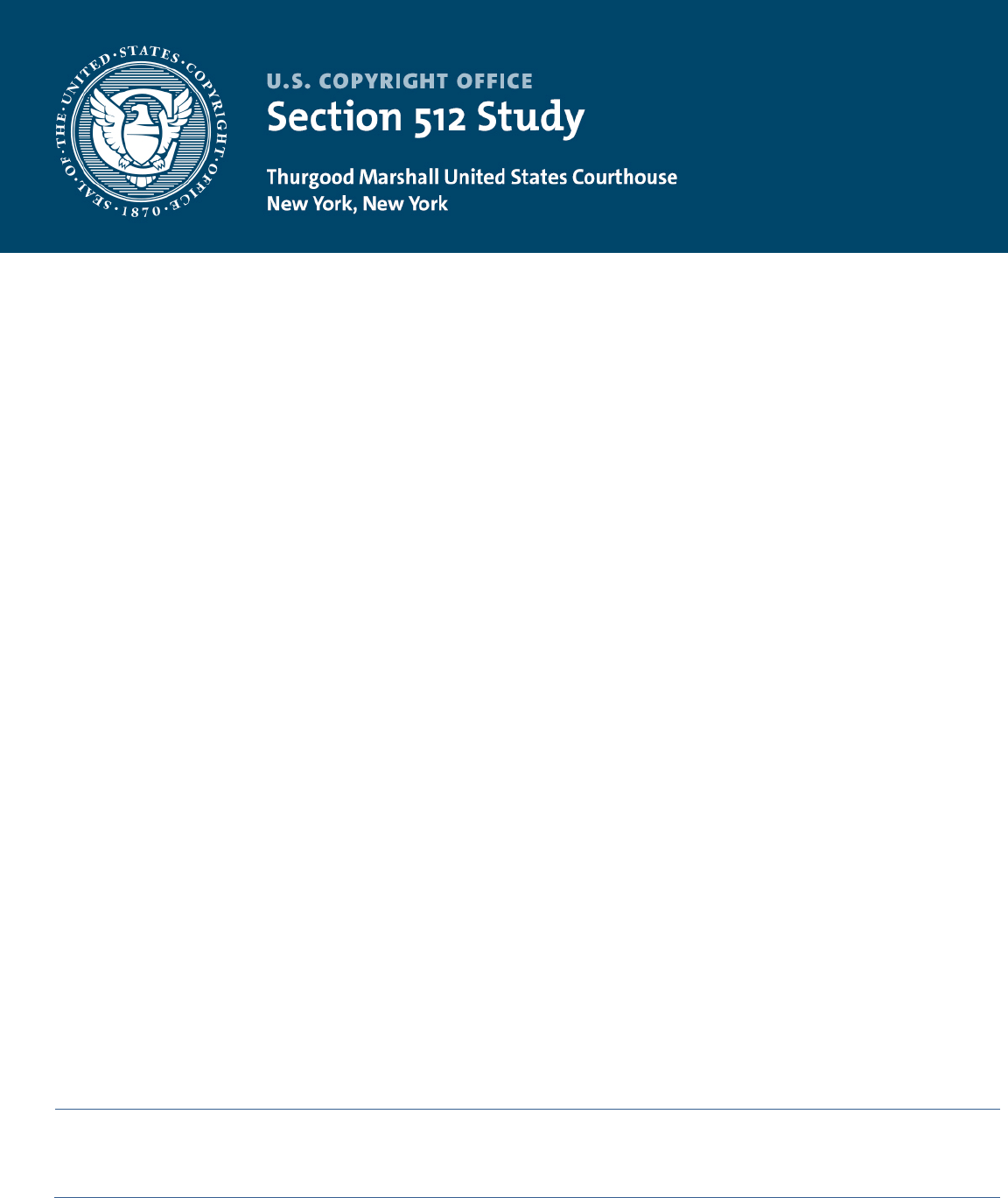
1
Monday, May 2, 2016
9:00 – 10:30 AM
SESSION 1
Notice-and-Takedown Process—
Identification of Infringing Material
and Notice Submission
Overall effectiveness of process, including issues
relating to timing and linked content; volume of
notices; burdens on large- and small-scale creators
and copyright owners; considerations and strategies
in sending notices, including automated notices
versus human review; fair use considerations;
moral rights issues; “whack-a-mole” issue; relevant
empirical data; and other pertinent issues.
Sandra Aistars Arts and Entertainment Advocacy Clinic,
George Mason University School of Law
Jonathan Band Amazon
Richard Burgess American Association of Independent Music
Stephen Carlisle Nova Southeastern University
Alisa Coleman ABKCO Music & Records, Inc.
Patrick Flaherty Verizon
Kathy Garmezy Directors Guild of America
Melvin Gibbs Content Creators Coalition
Lisa Hammer Independent Film Director
George Johnson Geo Music Group
David Kaplan Warner Brothers Entertainment Inc.
Natalie Madaj National Music Publishers’ Association
Michael Michaud Channel Awesome, Inc.
Eugene Mopsik American Photographic Artists
Janice Pilch Rutgers University Libraries
Deborah Robinson Viacom
Steven Rosenthal McGraw-Hill Education
Maria Schneider Musician
Samantha Schonfeld Amplify Education Holding
Ellen Schrantz Internet Association
Lisa Shaftel Graphic Artists Guild
Victoria Sheckler Recording Industry Association of America
Kate Viar* Amazon
* Not present for panel
10:30 – 10:45 AM BREAK

2
10:45 AM – 12:15 PM
SESSION 2
Notice-and-Takedown Process—
Service Provider Response and
Counter-Notifications
Handling of and response to notices, including timing
and notices from high-volume senders; sending and
handling of counter-notifications; volume of notices
and counter-notifications; costs and burdens on
large- and small-scale service providers; role of
automation, including filtering technologies;
noncompliant notices and misuse of notice process;
rejection of notices; impact of takedowns on users
and public; protections for fair use; relevant
empirical data; and other pertinent issues.
Perry Bashkoff WEA Digital & Revenue Development
Rhonda Blakey* BMG Rights Management
Andrew Bridges Fenwick & West LLP
Kate Dean* U.S. Internet Service Provider Association
Damon DiMarco Author
Adrienne Fields Artists Rights Society
Elizabeth
Townsend Gard* Tulane University Law School
Michael Housley Viacom
Hillary Johnson Author
Marcie Kaufman Ithaka/Artstor
Thomas Kennedy American Society of Media Photographers
Mickey Osterreicher National Press Photographers Association
Marc Ostrow Law Offices of Marc D. Ostrow
Jennifer Pariser Motion Picture Association of America
Rebecca Prince Becky Boop
Jay Rosenthal ESL Music/ESL Music Publishing
Kevin Rupy USTelecom
Brianna Schofield University of California-Berkeley School of Law
Kerry Sheehan Public Knowledge
Rebecca Tushnet Organization for Transformative Works
Michael Weinberg Shapeways
Charlyn Zlotnik Photographer
*Not present for panel
12:15 – 1:30 PM LUNCH (ON YOUR OWN)
1:30 – 3:00 PM
SESSION 3
Applicable Legal Standards
Actual and “red flag” knowledge requirements;
financial benefit/right to control test; willful
blindness; repeat infringers; good-faith
requirements; misrepresentation; fair use; use
of representative lists; availability of injunctive
relief; use of subpoenas; role of “standard technical
measures”; and other pertinent issues.
Allan Adler Association of American Publishers
Todd Anten Quinn Emanuel Urquhart & Sullivan LLP
Jonathan Band Library Copyright Alliance
June Besek Kernochan Center for Law, Media and the Arts,
Columbia Law School
Sarah Deutsch Mayer Brown
Joseph DiMona Broadcast Music, Inc.
Troy Dow Disney
Jim Halpert DLA Piper
Terry Hart Copyright Alliance
David Jacoby Sony Music Entertainment
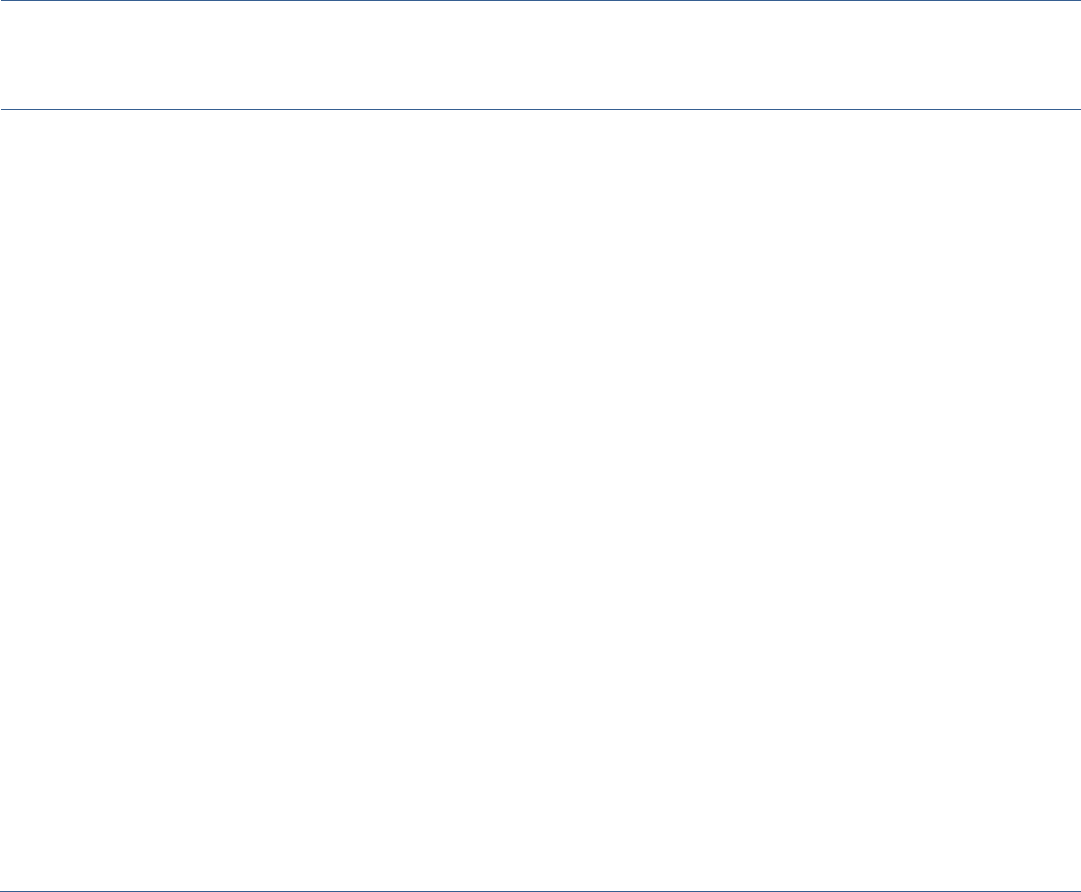
3
George Johnson Geo Music Group
Bruce Joseph Wiley Rein LLP
Marcie Kaufman Ithaka/Artstor
Christopher Mohr Software & Information Industry Association
Marc Ostrow Law Offices of Marc D. Ostrow
Michael Petricone Consumer Technology Association
Rebecca Prince Becky Boop
Mary Rasenberger Authors Guild
Samantha Schonfeld Amplify Education Holding
Kerry Sheehan Public Knowledge
3:00 – 3:15 PM BREAK
3:15 – 4: 45 PM
SESSION 4
Scope and Impact of Safe Harbors
Scope of entities and activities covered by safe
harbors; incentives (and disincentives) for
creators, copyright owners, online providers,
investors, and users; impact on licensing
activities; effectiveness of remedies, including
ability to proceed in federal court in case of
disputed notice or misrepresentation; economic
impact on creators, copyright owners, service
providers and copyrighted works; relevant
empirical data; and other pertinent issues.
Allan Adler Association of American Publishers
Sandra Aistars Arts and Entertainment Advocacy Clinic,
George Mason University School of Law
Matthew Barblan Center for the Protection of Intellectual Property
Rhonda Blakey* BMG Rights Management
Sarah Deutsch Mayer Brown
Joseph DiMona Broadcast Music, Inc.
Troy Dow Disney
Sarah Feingold Etsy, Inc.
Adrienne Fields Artists Rights Society
Patrick Flaherty Verizon
David Korzenik* Miller Korzenik Sommers Rayman LLP
Natalie Madaj National Music Publishers’ Association
Michael Petricone Consumer Technology Association
Maria Schneider Musician
Ellen Schrantz Internet Association
Matthew Schruers Computer & Communications Industry
Association
Rebecca Tushnet Organization for Transformative Works
Jeff Walker Sony Music Entertainment
Michael Weinberg Shapeways
Lisa Willmer Getty Images
*Not present for panel

4
Tuesday, May 3, 2016
9:00 – 10:30 AM
SESSION 5
Technological Strategies
and Solutions
Infringement monitoring tools and services;
automated sending of notices, including notice
parameters; automated processing of notices; role
of human review; identification of works through
fingerprinting, hash identifiers, and other
technologies; filtering, including “staydown”
capabilities; fair use considerations; identification
and tracking of repeat infringers; and other
pertinent issues.
Jonathan Band Library Copyright Alliance
Sofia Castillo Association of American Publishers
Elizabeth
Townsend Gard* Tulane University Law School
Jim Halpert DLA Piper
Michael Housley Viacom
Sarah Howes Copyright Alliance
David Kaplan Warner Brothers Entertainment Inc.
Eugene Mopsik American Photographic Artists
Michael Petricone Consumer Technology Association
Casey Rae Future of Music Coalition
Steven Rosenthal McGraw-Hill Education
Maria Schneider Musician
Brianna Schofield University of California-Berkeley School of Law
Matthew Schruers Computer & Communications Industry
Association
Lisa Shaftel Graphic Artists Guild
Victoria Sheckler Recording Industry Association of America
Howie Singer Warner Music Group
Kate Viar* Amazon
Lisa Willmer Getty Images
Nancy Wolff Digital Media Licensing Association
* Not present for panel
10:30 – 10:45 AM BREAK

5
10:45 AM – 12:15 PM
SESSION 6
Voluntary Measures and Industry
Agreements
Voluntary alternatives to and modifications of
statutory notice-and-takedown process; best
practices; collaborative efforts of content owners,
service providers and others to address online
infringement, including availability of programs to
smaller service providers and creators; cooperation
in identifying infringers; graduated response
programs to address infringement; efforts to delist
or downgrade infringing materials within online
search results; participation of third-party providers,
such as advertisers and payment processors, in
voluntary arrangements; overall effectiveness of
voluntary arrangements; educational outreach;
government role in encouraging private solutions;
and other pertinent issues.
Jonathan Band Library Copyright Alliance
Gregory Barnes Digital Media Association
Kate Dean* U.S. Internet Service Provider Association
Troy Dow Disney
John Garry Pearson Education
Melvin Gibbs Content Creators Coalition
Terry Hart Copyright Alliance
Wayne Josel American Society of Composers, Authors
and Publishers
Thomas Kennedy American Society of Media Photographers
Lee Knife* Digital Media Association
Jennifer Pariser Motion Picture Association of America
Michael Petricone Consumer Technology Association
Janice Pilch Rutgers University Libraries
Casey Rae Future of Music Coalition
Mary Rasenberger Authors Guild
Maria Schneider Musician
Victoria Sheckler Recording Industry Association of America
Kerry Sheehan Public Knowledge
Lui Simpson Association of American Publishers
Rebecca Tushnet Organization for Transformative Works
Nancy Wolff Digital Media Licensing Association
* Not present for panel
12:15 – 1:30 PM LUNCH (ON YOUR OWN)
1:30 – 3:00 PM
SESSION 7
Future of Section 512
General trends, including notice volume and other
relevant empirical data; scalability and future
viability of section 512 notice-and-takedown system;
relevant technological developments; impact of
international models and norms; overall balance (or
imbalance) of system with respect to copyright
owners, service providers, and consumers; whether
system is fulfilling Congress’ intended objectives;
suggested improvements, including “notice-and-
staydown” and enhanced protections against misuse
of takedown process; interests of users and the
general public; and other pertinent issues.
Matthew Barblan Center for the Protection of Intellectual Property
Jonathan Band Amazon
June Besek Kernochan Center for Law, Media and the Arts,
Columbia Law School
William Buckley FarePlay, Inc.
Stephen Carlisle Nova Southeastern University
Alisa Coleman ABKCO Music & Records, Inc.
Sarah Feingold Etsy, Inc.
Kathy Garmezy Directors Guild of America
John Garry Pearson Education
Jim Halpert DLA Piper
Bruce Joseph Wiley Rein LLP
Thomas Kennedy American Society of Media Photographers

6
David Korzenik Miller Korzenik Sommers Rayman LLP
Dina LaPolt LaPolt Law, PC
Michael Michaud Channel Awesome, Inc.
Christopher Mohr Software & Information Industry Association
Mickey Osterreicher National Press Photographers Association
Janice Pilch Rutgers University Libraries
Kevin Rupy USTelecom
Darius Van Arman American Association of Independent Music
Kate Viar* Amazon
* Not present for panel
3:00 – 3:15 PM BREAK
3:15 – 4: 45 PM
Wrap-Up/Open Mic
Panelists from previous sessions and observers may
sign up at the roundtable to comment on topics
discussed during earlier panels or raise and discuss
other pertinent issues.
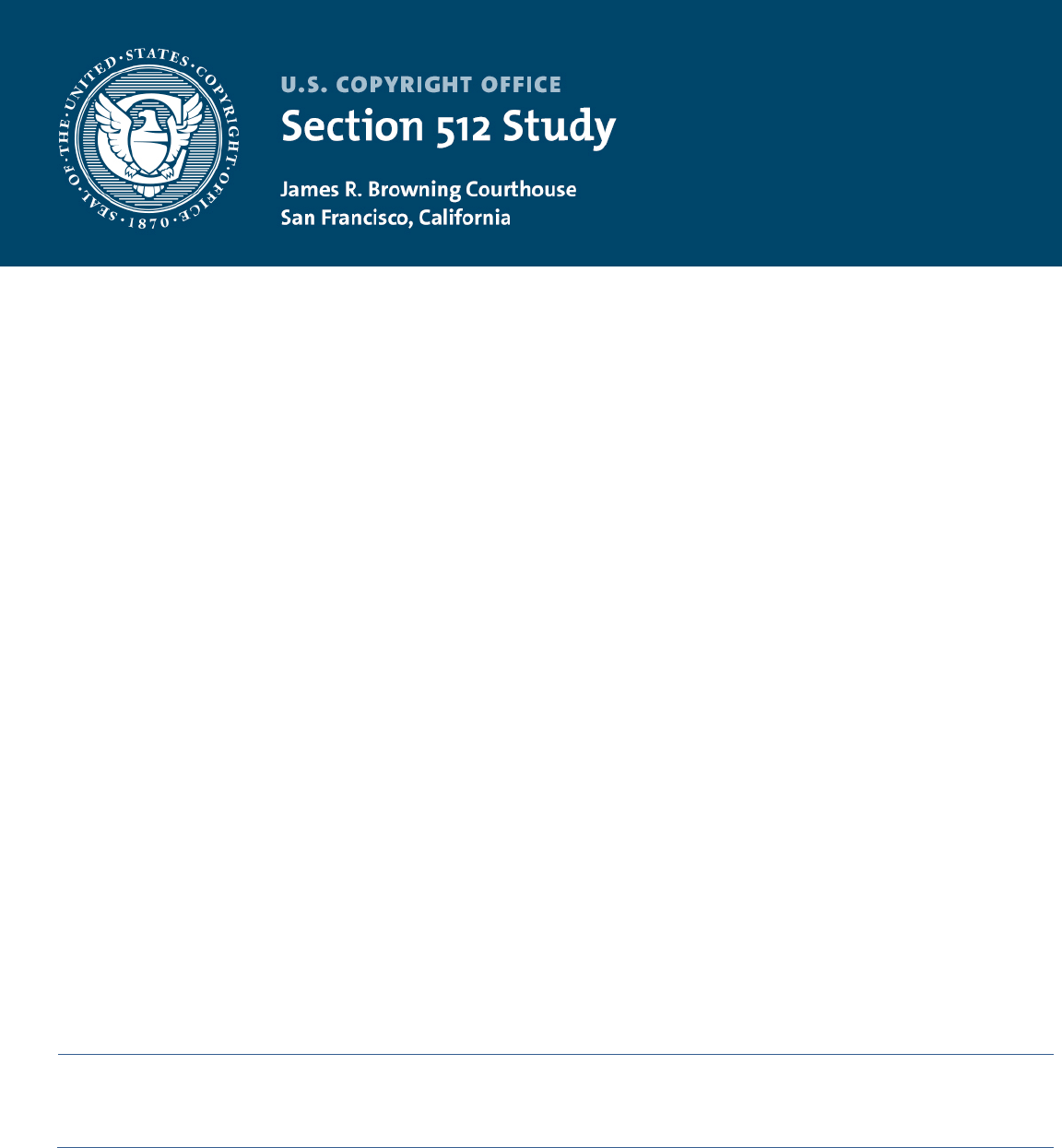
1
Thursday, May 12, 2016
9:00 – 10:30 AM
SESSION 1
Notice-and-Takedown Process—
Identification of Infringing Material
and Notice Submission
Overall effectiveness of process, including issues
relating to timing and linked content; volume of
notices; burdens on large- and small-scale creators
and copyright owners; considerations and strategies
in sending notices, including automated notices
versus human review; fair use considerations;
moral rights issues; “whack-a-mole” issue; relevant
empirical data; and other pertinent issues.
Jordan Berliant Revelation Management Group
George Borkowski Recording Industry Association of America
Rebecca Cusey Arts and Entertainment Advocacy Clinic at
George Mason University School of Law
Ron Gard* Tulane University Law School
Dave Green Microsoft
Alex Feerst Medium
Wayne Kramer Movie Prose
Keith Kupferschmid Copyright Alliance
Jeff Lyon Fight for the Future
Brian McNelis Lakeshore Records
Corynne McSherry Electronic Frontier Foundation
Braxton Perkins NBC Universal
Jay Rosenthal ESL Music/ ESL Music Publishing
Charles Roslof Wikimedia Foundation
T.J. Stiles Author
Jennifer Urban University of California-Berkeley School of Law
Ruth Vitale Creative Future
Devon Weston Digimarc
Stephen Worth Amazon
Betsy Viola Zedek Disney
* Not present for panel
10:30 – 10:45 AM BREAK

2
10:45 AM – 12:15 PM
SESSION 2
Notice-and-Takedown Process—
Service Provider Response and
Counter-Notifications
Handling of and response to notices, including timing
and notices from high-volume senders; sending and
handling of counter-notifications; volume of notices
and counter-notifications; costs and burdens on
large- and small-scale service providers; role of
automation, including filtering technologies;
noncompliant notices and misuse of notice process;
rejection of notices; impact of takedowns on users
and public; protections for fair use; relevant
empirical data; and other pertinent issues.
.
Lila Bailey Internet Archive
Eric Cady Independent Film & Television Alliance
Dan Coleman Modern Works Music Publishing
Carl Crowell Crowell Law
Deron Delgado American Association of Independent Music
East Bay Ray Dead Kennedys (Musician)
Steven Ellerd Graduate Student
Evan Engstrom Engine
Cathy Gellis Digital Age Defense
Joseph Gratz Durie Tangri LLP
Daphne Keller Stanford Law School Center for Internet
and Society
Peter Midgley Brigham Young University
Gabriel Miller Paramount Pictures Corporation
Chris Riley Mozilla
Ellen Seidler Fast Girl Films
Ira Siegel Copyright Enforcement Group Inc.
Jonathan Taplin USC Annenberg Innovation Lab
Elizabeth Valentina Fox Entertainment Group
Fred von Lohmann Google
Devon Weston Digimarc
12:15 – 1:30 PM LUNCH (ON YOUR OWN)
1:30 – 3:00 PM
SESSION 3
Applicable Legal Standards
Actual and “red flag” knowledge requirements;
financial benefit/right to control test; willful
blindness; repeat infringers; good-faith
requirements; misrepresentation; fair use; use
of representative lists; availability of injunctive
relief; use of subpoenas; role of “standard technical
measures”; and other pertinent issues.
Ian Ballon Stanford Law School Center for E-Commerce
George Borkowski Recording Industry Association of America
Andrew Bridges Fenwick & West LLP
Dan Coleman Modern Works Music Publishing
Carl Crowell Crowell Law
Paul Doda Elsevier
Evan Engstrom Engine
Alex Feerst Medium
Cathy Gellis Digital Age Defense
Devlin Hartline Center for the Protection of Intellectual Property
Corynne McSherry Electronic Frontier Foundation
Peter Midgley Brigham Young University
Tom Murphy Content Creators Coalition
Ryan Noormohamed Tulane University Law School
Sean O'Connor University of Washington (Seattle)
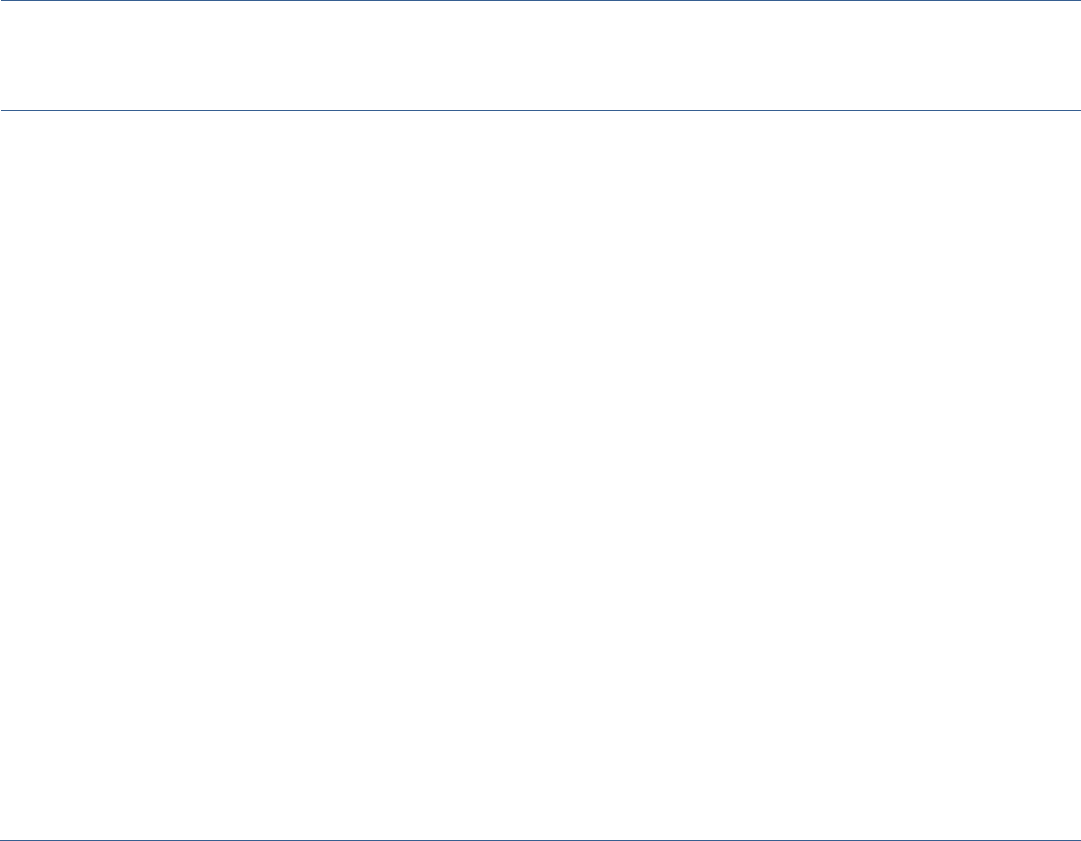
3
Jeffrey Sedlik PLUS Coalition
Ellen Schrantz Internet Association
Ben Sheffner Motion Picture Association of America
Brian Willen Wilson Sonsini Goodrich
Stephen Worth Amazon
3:00 – 3:15 PM BREAK
3:15 – 4: 45 PM
SESSION 4
Scope and Impact of Safe Harbors
Scope of entities and activities covered by safe
harbors; incentives (and disincentives) for
creators, copyright owners, online providers,
investors, and users; impact on licensing
activities; effectiveness of remedies, including
ability to proceed in federal court in case of
disputed notice or misrepresentation; economic
impact on creators, copyright owners, service
providers and copyrighted works; relevant
empirical data; and other pertinent issues.
Lila Bailey Internet Archive
Jordan Berliant Revelation Management Group
Andrew Bridges Fenwick & West LLP
Eric Cady Independent Film & Television Alliance
Rebecca Cusey Arts and Entertainment Advocacy Clinic at
George Mason University School of Law
Paul Doda Elsevier
East Bay Ray Dead Kennedys (Musician)
Steven Ellerd Graduate Student
Dave Green Microsoft
Devlin Hartline Center for the Protection of Intellectual Property
Daphne Keller Stanford Law School Center for Internet
and Society
Joshua Lamel Re:Create
Steve Marks Recording Industry Association of America
Michael Masnick Copia Institute
Donald Passman Gang Tyre Ramer & Brown, Inc.
Jeffrey Sedlik PLUS Coalition
Ellen Schrantz Internet Association
Jonathan Taplin USC Annenberg Innovation Lab
Elizabeth Valentina Fox Entertainment Group
Brian Willen Wilson Sonsini Goodrich

4
Friday, May 13, 2016
9:00 – 10:30 AM
SESSION 5
Technological Strategies
and Solutions
Infringement monitoring tools and services;
automated sending of notices, including notice
parameters; automated processing of notices; role
of human review; identification of works through
fingerprinting, hash identifiers, and other
technologies; filtering, including “staydown”
capabilities; fair use considerations; identification
and tracking of repeat infringers; and other
pertinent issues.
Scott Andrews eBay, Inc.
Ron Gard* Tulane University Law School
Joseph Gratz Durie Tangri LLP
Daphne Keller Stanford Law School Center for Internet
and Society
Keith Kupferschmid Copyright Alliance
Jeff Lyon Fight for the Future
Dean Marks Motion Picture Association of America
Brian McNelis Lakeshore Records
Gabriel Miller Paramount Pictures Corporation
Tom Murphy Content Creators Coalition
Braxton Perkins NBC Universal
Chris Riley Mozilla
Tony Rodriguez Digimarc
Charles Roslof Wikimedia Foundation
Jeffrey Sedlik PLUS Coalition
Ellen Seidler Fast Girl Films
Jonathan Taplin USC Annenberg Innovation Lab
Jennifer Urban University of California-Berkeley School of Law
Fred von Lohmann Google
Betsy Viola Zedek Disney
* Not present for panel
10:30 – 10:45 AM BREAK

5
10:45 AM – 12:15 PM
SESSION 6
Voluntary Measures and Industry
Agreements
Voluntary alternatives to and modifications of
statutory notice-and-takedown process; best
practices; collaborative efforts of content owners,
service providers and others to address online
infringement, including availability of programs to
smaller service providers and creators; cooperation
in identifying infringers; graduated response
programs to address infringement; efforts to delist
or downgrade infringing materials within online
search results; participation of third-party providers,
such as advertisers and payment processors, in
voluntary arrangements; overall effectiveness of
voluntary arrangements; educational outreach;
government role in encouraging private solutions;
and other pertinent issues.
Scott Andrews eBay, Inc.
Alex Feerst Medium
Dave Green Microsoft
Devlin Hartline Center for the Protection of Intellectual Property
Keith Kupferschmid Copyright Alliance
Jeff Lyon Fight for the Future
Dean Marks Motion Picture Association of America
Michael Masnick Copia Institute
Brian McNelis Lakeshore Records
Michael Michaud Channel Awesome, Inc.
Gabriel Miller Paramount Pictures Corporation
Tom Murphy Content Creators Coalition
Sean O'Connor University of Washington (Seattle)
Tony Rodriguez Digimarc
Jeffrey Sedlik PLUS Coalition
Ira Siegel Copyright Enforcement Group Inc.
T.J. Stiles Author
Jennifer Urban University of California-Berkeley School of Law
Ruth Vitale Creative Future
Fred von Lohmann Google
12:15 – 1:30 PM LUNCH (ON YOUR OWN)
1:30 – 3:00 PM
SESSION 7
Future of Section 512
General trends, including notice volume and other
relevant empirical data; scalability and future
viability of section 512 notice-and-takedown system;
relevant technological developments; impact of
international models and norms; overall balance (or
imbalance) of system with respect to copyright
owners, service providers, and consumers; whether
system is fulfilling Congress’ intended objectives;
suggested improvements, including “notice-and-
staydown” and enhanced protections against misuse
of takedown process; interests of users and the
general public; and other pertinent issues.
Ian Ballon* Stanford Law School Center for E-Commerce
Eric Cady Independent Film & Television Alliance
Deron Delgado American Association of Independent Music
Paul Doda Elsevier
Alex Feerst Medium
Cathy Gellis Digital Age Defense
Joseph Gratz Durie Tangri LLP
Joshua Lamel Re:Create
Corynne McSherry Electronic Frontier Foundation
Michael Michaud Channel Awesome, Inc.
Michael Nash Universal Music Group
Sean O'Connor University of Washington (Seattle)
Chris Riley Mozilla
Jay Rosenthal ESL Music/ ESL Music Publishing

6
Charles Roslof Wikimedia Foundation
Ben Sheffner Motion Picture Association of America
T.J. Stiles Author
Bob Tourtellotte FilmMcQueen LLC
Fred von Lohmann Google
Stephen Worth Amazon
* Not present for panel
3:00 – 3:15 PM BREAK
3:15 – 4: 45 PM
Wrap-Up/Open Mic
Panelists from previous sessions and observers may
sign up at the roundtable to comment on topics
discussed during earlier panels or raise and discuss
other pertinent issues.
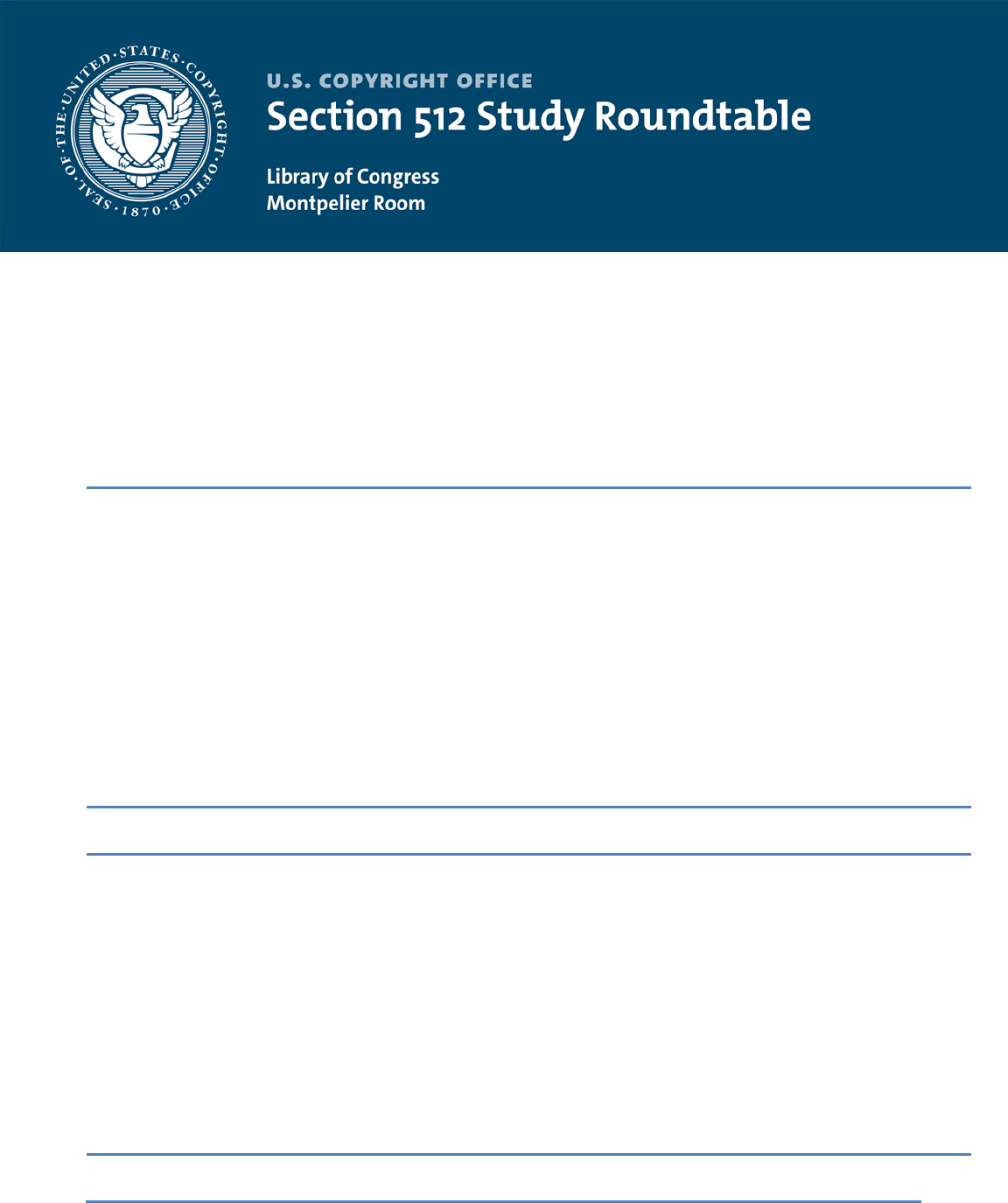
Monday, April 8, 2019
8:50 – 9:00 AM
OPENING REMARKS
Karyn A. Temple,
Register of Copyrights and Director, U.S. Copyright Office
9:00 – 10:30 AM
SESSION 1
Domestic Developments
Erich C. Carey
Ken Hatfield
Mike Lemon
Mickey Osterreicher
Jennifer Pariser
Meredith Rose
Aws Shemmeri
Robert Winterton
Rasty Turek
Rebecca L. Tushnet
Brian Willen
National Music Publishers' Association
Artist Rights Caucus of Local 802
of the American Federation of Musicians
Internet Association
National Press Photographers Association
Motion Picture Association of America
Public Knowledge
ImageRights International, Inc.
NetChoice
Pex
Organization for Transformative Works
Wilson Sonsini Goodrich & Rosati
10:30 – 10:45 AM BREAK
10:45 AM – 12:15 PM
SESSION 2
Domestic Developments
Jonathan Band
Sofia Castillo
Caleb Donaldson/Brian Carver
Stephen Carlisle
Kenneth L. Doroshow
Douglas T. Hudson
Keith Kupferschmid
Arthur Levy
Peter Midgley
Sasha Moss
Mary Rasenberger
Library Copyright Alliance
Association of American Publishers
Google
Nova Southeastern University
Recording Industry Association of America
Etsy
Copyright Alliance
Association of Independent Music Publishers
Brigham Young University
R Street Institute
Authors Guild
12:15 – 1:00 PM LUNCH
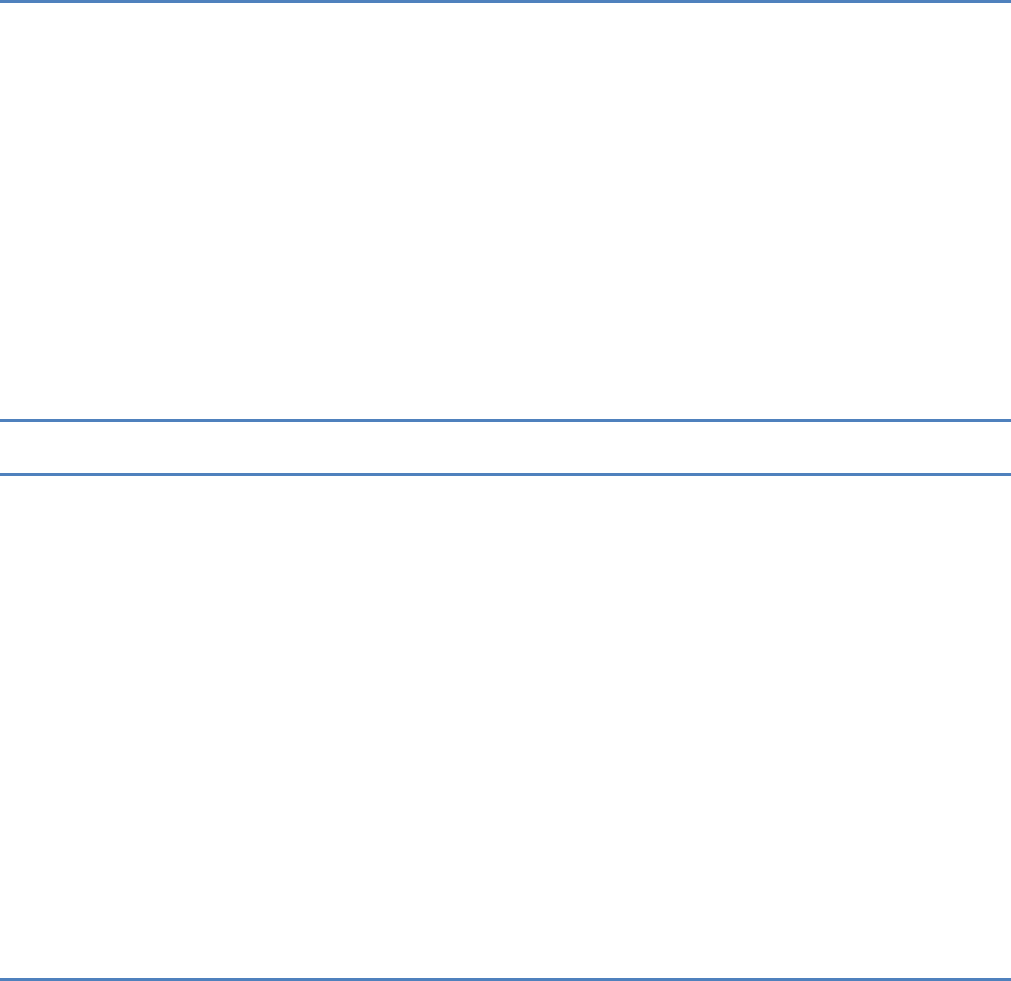
1:00 – 2:30 PM
SESSION 3
Domestic Developments
Richard James Burgess
Alex Feerst
Devlin Hartline
Catherine Gellis
Eric Goldman
Joseph Gratz
Jared Polin
Tamber Ray
Robert Schwartz
Christian Troncoso
Kate Tummarello
Ping Wang
Nancy Wolff
American Association of Independent Music
Medium
Center for the Protection of Intellectual Property,
Antonin Scalia Law School, George Mason University
The Copia Institute
Santa Clara University School of Law
Durie Tangri LLP
FroKnowsPhoto
NTCA ― The Rural Broadband Association
Consumer Technology Association
Business Software Alliance
Engine
Freelancer/writer
Digital Media Licensing Association
2:30 – 2:45 PM BREAK
2:45 – 4:30 PM
SESSION 4
International
Developments
Stan Adams
Eric Cady
Danielle Coffey
Alec French
Ashley Friedman
Joshua Lamel
Carlo Scollo Lavizzari
Stan McCoy
Corynne McSherry
Katherine Oyama
Christopher Randle
Steven Rosenthal
Matthew Schruers
Lui Simpson
Sherwin Siy
Abby Vollmer
Rachel Wolbers
Center for Democracy & Technology
Independent Film & Television Alliance
News Media Alliance
Thorsen French Advocacy
Information Technology Industry Council
Re:Create
International STM Association
Motion Picture Association EMEA
Electronic Frontier Foundation
Google
Facebook
McGraw-Hill Education
Computer and Communications Industry Association
Association of American Publishers
Wikimedia Foundation
GitHub
Engine
4:30 – 6:00 PM
OPEN MIC
Section 512 of title 17
u.S. copyright office
appendix c glossary of terms and acronyms

Acronym or Term
Full Name
512(a)
An online service provider that serves as a conduit for the automatic
transmission of material at the direction of third parties; also known as
“mere conduit” service providers or ISPs
512(b)
An online service provider that temporarily stores material that is
being transmitted automatically over the internet from one third party
to another; also known as “caching” service providers
512(c)
An online service provider that stores material at the direction of a
user on the service provider’s system or network; also known as
“hosting” service providers
512(d)
An online service provider that refers or links users to online sites
using information location tools; also known as “linking” or “search”
service providers
A2IM
American Association of Independent Music
AAP
Association of American Publishers
ACA
American Cable Association
ACR
Automatic Content Recognition
AFM
American Federation of Musicians
AGCOM
Autorità per la Garanzie nelle Comunicazioni;
Italian regulatory authority
AIMP
Association of Independent Music Publishers
AIPLA
American Intellectual Property Law Association
ANA
Association of National Advertisers
APA
American Photographic Artists
ARS
Artists Rights Society
ASMP
American Society of Media Photographers
BMI
Broadcast Music, Inc.
BSA
BSA | The Software Alliance
c3
Content Creators Coalition
CAS
Copyright Alert System
CCI
Center for Copyright Information
CCIA
Computer & Communications Industry Association
CDT
Center for Democracy & Technology
CEG
Copyright Enforcement Group Inc.
CJEU
Court of Justice of the European Union
Content ID
A rights-management system for YouTube
Counter-notice
A notice sent by a user whose material has been removed to the OSP
under section 512(g), seeking return of access to the material
CTA
Consumer Technology Association
Cyberlockers
OSPs that provide secure file storage and sharing services for different
types of media and data
DGA
Directors Guild of America
DiMA
Digital Media Association
DMCA
Digital Millennium Copyright Act

Acronym or Term
Full Name
DMCA+
DMCA Plus; refers to systems offered by OSPs that go beyond their
obligations under the notice-and-takedown system, such as rights-
management systems
DMCA Classic
OSPs that operate under traditional notice-and-takedown policies,
often ones that receive relatively few takedown notices
DMLA
Digital Media Licensing Association
DNS
Domain Name System; protocol for resolving domain names to their
corresponding IP addresses
DSM Copyright Directive
Directive EU 2019/790 of the European Parliament and of the Council
of 17 April 2019 on Copyright and Related Rights in the Digital Single
Market and Amending Directives 96/9/EC and 2001/29/EC
EFF
Electronic Frontier Foundation
Fair Use Principles
Fair Use Principles for User Generated Video Content; a set of guidelines
developed by user advocacy groups to address the free speech impact
of content removal and filtering
FMC
Future of Music Coalition
FTA
Free Trade Agreement
GAG
Graphic Artists Guild
Green Paper
Internet Policy Task Force, Copyright Policy, Creativity, and Innovation in
the Digital Economy (2013)
Hadopi
High Authority for the Diffusion of Works and the Protection of
Rights on the Internet; French agency tasked with overseeing the
graduated response system
IAB
Interactive Advertising Bureau
IACC
International AntiCounterfeiting Coalition
ICC
Internet Commerce Coalition
IFPI
International Federation of the Phonographic Industry
IFTA
Independent Film & Television Alliance
IITF
Information Infrastructure Task Force
InfoSoc Directive
Directive 2001/29/EC of the European Parliament and of the Council of
22 May 2001 on the Harmonisation of Certain Aspects of Copyright
and Related Rights in the Information Society
IP Address
Internet Protocol address; a numerical “address” that identifies each
device or server that is connected to a computer network
IPEC
Intellectual Property Enforcement Coordinator
IPO
Intellectual Property Owners Association
IPTF
Department of Commerce’s Internet Policy Task Force
ISP
Internet Service Provider: includes mere conduit service providers
categorized under section 512(a)
ITIF
Information Technology and Innovation Foundation
JSP
Joint Strategic Plan; written by the Office of the Intellectual Property
Coordinator who is charged with developing, with certain federal
departments and agencies, the Administration’s Joint Strategic Plan on
Intellectual Property Enforcement for submission to Congress every
three years
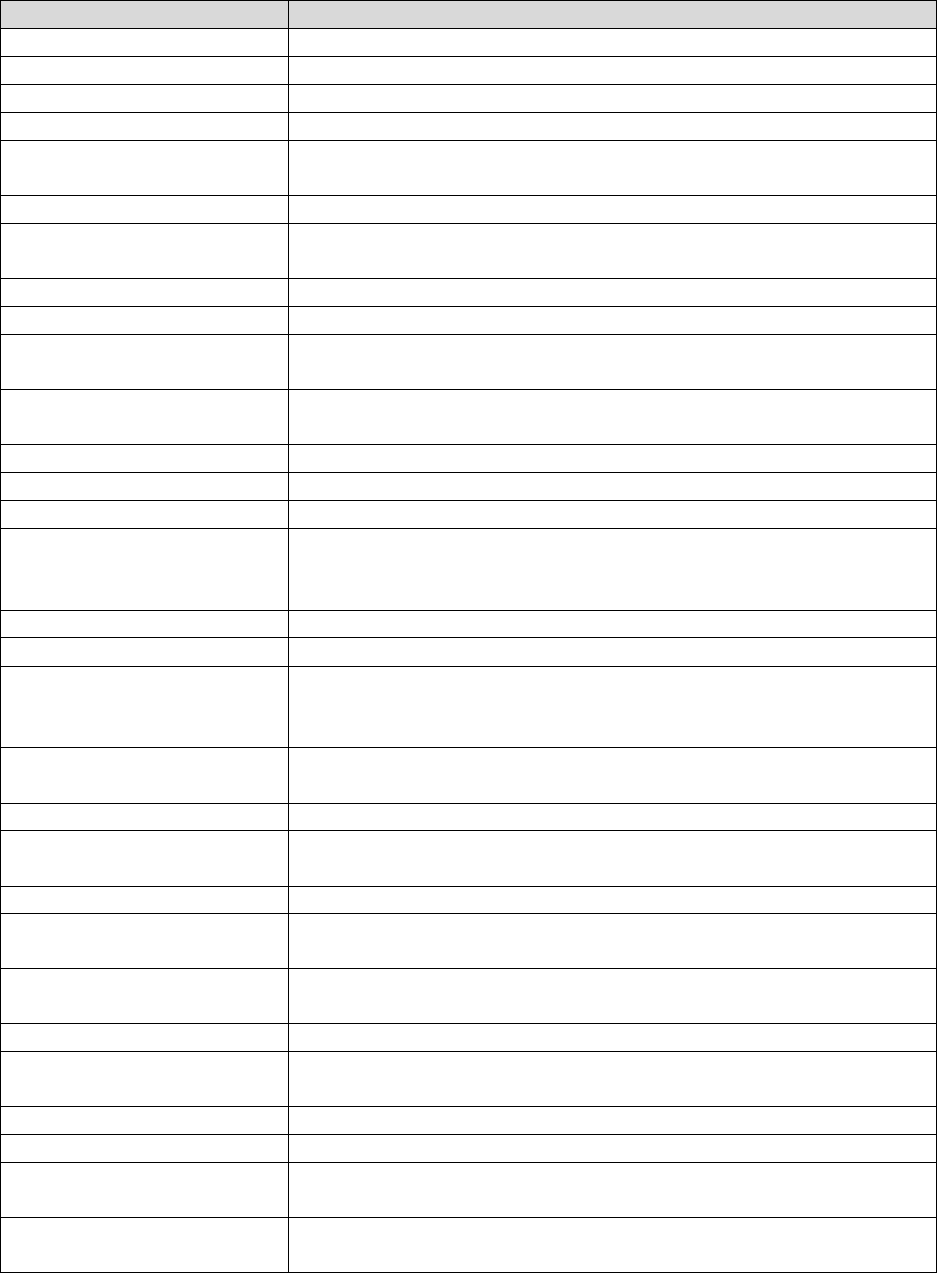
Acronym or Term
Full Name
LCA
Library Copyright Alliance
MPAA
Motion Picture Association of America
NIST
National Institute of Standards and Technologies
NMPA
National Music Publishers Association
OSP
Online Service Provider: includes service providers categorized under
sections 512(a)–(d)
OTW
Organization for Transformative Works
P2P
Peer-to-Peer: describes a type of file distribution network that allows
users to obtain files directly, without using a central server
PK
Public Knowledge
PPA
Professional Photographers of America
QAG
Quality Assurance Guidelines; a set of guidelines developed by the
Interactive Advertising Bureau for certification of advertisers
Red Flag Knowledge
Term for when an OSP is “aware of facts or circumstances from which
infringing activity is apparent”
RIAA
Recording Industry Association of America
Rights Manager
A rights-management system for Facebook
RIPG
Ringtone Intellectual Property Group
RVO
Reliability Verification Organization; groups approved under Japan’s
Provider Liability Limitation Act to verify the contents of takedown
notices
SIIA
Software & Information Industry Association
SONA
Songwriters of North America
STM
Standard Technical Measures; technical measures used by
rightsholders to identify or protect copyrighted content that have been
developed pursuant to a multi-industry standards process
Störerhaftung
Translated generally as “breach of duty of care”; German legal
doctrine regarding liability of certain OSPs for infringing material
TAG
Trustworthy Accountability Group
Takedown Notice
A notice sent by a rightsholder to an OSP identifying infringing
material for removal
TPP
Trans-Pacific Partnership
UGC
User Generated Content; material that is uploaded to an OSP for
storage by its users
UGC Principles
Principles for User Generated Content Services; a set of guidelines
developed by rightsowners and OSPs to address online infringement
UMG
Universal Music Group
URL
Uniform Resource Locator; identifies the location (or address) of a
specific resource (such as a webpage or file) on a computer network
USTelecom
United States Telecom Association
WCT
WIPO Copyright Treaty
White Paper
Intellectual Property And The National Information Infrastructure: The
Report Of The Working Group On Intellectual Property Rights (1995)
Willful Blindness
Term for when an OSP acts deliberately to avoid obtaining actual or
red flag knowledge of infringing conduct or material

Acronym or Term
Full Name
WIPO
World Intellectual Property Organization
WMG
Warner Music Group
WPPT
WIPO Performances and Phonograms Treaty
u.s. copyright office · library of congress · 101 independence avenue se · washington, dc 20559 · www.copyright.gov
